kashmir blogs-Truth about Kashmir-" kashmir blog""
Kashmir-The crown and pride of India
The Gool Massacre of Kashmiri Pandits
October 16, 2019 – 8:17 am
My Father Mr. Ashok Kumar Raina S/o Shivji Raina, native from
Sopore(Baramulla Distt) was a great educationist, superb human being and
a very loving father. As a person, he was very simple, down to earth,
honest, tolerant, brave and very caring, He was M.Sc Physics
(Electronics Hons.) from Agra Unversity. At a very young age of 23yrs,
he was appointed as a Physics lecturer in Jr.College. He was very happy,
the way his career was shaping. Routine transfers and new academic
approaches were keeping his life busy. He was a responsible family man
and created a nice balance between his personal and professional life.
In 1988, militancy had sneaked in our beautiful Kashap Land “Kashir”. There was Islamic terror spreading at a very fast pace and their motive was to spread hate, horror and scare in minorities particularly Kashmiri Pandits. Militants wanted to establish Nizama Mustafa. They started harassing and killing Kashmiri Pandits and also targetting Army and Airforce officials. Our Pro India sentiment was always mocked and crushed. In 1989 -90 under the sinister plan of ethnic cleansing, lakhs of Kashmiri Pandits were driven out from there homeland Kashmir. I remember me and my sister was sleeping and my father came and told us to get ready as we are leaving Kashmir. We got few suitcases ready and with the help of some local friends my father arranged Minibus for our family (me, my sister, my grandparents, my mother and father) left for Udhampur. I was 11 yrs old and my sister was 14 yrs. On the way, we saw thousands of KPs in trucks, cars, buses heading towards Jammu. My father told us that we are moving out of Kashmir because it is not the safe place for our community now, once things normalise we will come back, right now it is better to stay away from Kashmir.
It was a mass exodus and it was very painful. This was the story of every Kashmiri Pandit. We became migrants in our own country. We took refuge in Udhampur. The life of hardship and struggle started but in my heart, I was sure that we will see a better life as I considered my parents as heroes and knew that they will make it better for us. Every day I used to see the pain and agony in my grandparents and my parent’s eyes. Our usual schools started and we started adapting to different culture and climate.
Finally a good news after a long time, in Aug 1991 my father got promoted to the post of principal Hr. Sec School. It was a great achievement and a sense of pride for all of us that at 42yrs, he was given such a huge responsibility. At this age, he already had 21yrs of lecturership experience and that itself was a big achievement. Being a young officer he was posted to Kargil(Ladakh), one of the toughest location in India. He served in Kargil from 1991 – 1994. We always used to wait for winters when my father used to come back home, those days used to be the best days. He used to bring a variety of dry fruits and the famous and best one was kubani ( apricot). We used to eat lot of them
Meanwhile, during this time we shifted from Udhampur to Jammu. In 1994 my father completed his serving tenure of 3 yrs in Kargil and he was transferred to Jammu.
Along with my father, 14 other people were transferred back to Jammu. Almost all of them were adjusted in Jammu ; except my father .
He was given the new appointment, he was transferred to Gool (Ramban). There is a norm in J&K Govt who so ever serves in Ladakh for 3 yrs is given an easy and posting of his choice option. My father has already served in Ladakh for 3 yrs and he was transferred to Gool which was also a very tough posting. My father personally met with then education minister and highlighted this issue, but he told my father you are a very young and dynamic officer and you have to go.
My father was denied the fundamental right of posting of choice by the Minister. By rules, he was not entitled to have back to back tough postings. The only fault of his was that he was young. A criminality happened there by flaunting the said norms. My Grandfather told him not to go but my father was very dedicated to his work and finally, he joined at Gool.
Gool was basically a hilly terrain and there were traces of militancy in and around that area. Gool as an area was influenced by Hizbul Mujaheedin Group. My father started his work and started spreading education in that area. There were young Kashmiri Pandit lectures working with him. I remember in some seasons ,all of them had to walk more than 30 km to reach Gool. I have seen bruises and burns on my father’s feet, he was a tough and strong man, he never bothered and moved on.
The darkest day of our lives was just around the corner. My father had come for summer holidays, it was 14th June 1997, the next day my father was leaving for Gool.
In the evening, I and he took my grandmother to an optician and then we went to Shiv Mandir in Jammu. I had chat with my father on loads of topics and we came back home. Ravinderji and Sushilji came to our place to discuss with my father, the travel schedule for tomorrow, as all 3 of them were going back to Gool.
Next Day morning on 15 June 1997 my father left for Gool, it was very early in the morning I was fast asleep. I told my mother why didn’t you wake me up as I wanted to say Goodbye to him. I never knew that I will never be able to say Goodbye to my father. Next day morning me, my mother and my grandmother were sleeping .At around 4 am , bell rang and my mom opened the door .There were few police officers who told us that the bus my father was travelling in was attacked by militants and several people are injured. Me and my mother rushed to my uncle and my uncle went with them. At around 7 am it was across all the newspapers that 3 Kps were killed by militants in Gool. I lost my senses and the day was a long walk of sorrow and grief. Our family was devasted and shattered. In the evening the dead body came, thousands of people were outside our house. we saw him for the last time, I kissed his forehead and finally said goodbye. My sister was holding me and crying. Everyone was crying and my mind had stopped working. I remember even after taking 11 bullets his face looked calm, his body felt soft. At around 10:30 pm all the 3 martyrs were laid to rest in the flames of celestial bliss, OM Shanti. It was the death of humanity.
According to some eyewitness
The bus in which they were travelling was stopped by men in army uniform, 7 Kms from Gool. All Hindus were asked to step down. By then it was clear that they were not security forces but Islamic terrorists. There was some resistance from Muslim passengers, seeing this, terrorist said they are not going to harm them, their commander only wants to talk to them, they even swear by their Prophet and Holy book. 6 Hindus ( 4 KP’s and 2 Jammuites) were taken out of which 2 people escaped one by jumping off the cliff and other by running up a hill. The remaining 4 were made to walk 30 metres near the nullah and 3 Kashmiri Pandits were fired upon by terrorists and martyred and the 4th ( Jammunite ) was allowed to go. The Message was clear. KP’s are the target.
– Shri. Ashok Kumar Raina – Principal
– Shri. Ravindra Kabu – Lecturer
– Shri. Sushil Pandita – Sr.Teacher
So it was a planned targeted killing. He was killed because he was a Kashmiri Pandit. He was killed because he was doing his duty with utmost sincerity and honesty. He was killed because he was the symbol of Kashmir Pandit growth. This heinous crime was executed by Billu Gujjar of Hizbul Mujahideen and Amanullah Gujjar Group. A couple of months later he was killed by Security Forces.
It took me longtime time to understand that my mentor, my hero, my inspiration, my father, was not there with me anymore. I am sure he is watching me from the skies and keeps on blessing us ..Luv you and miss you always ..
By- Vikas Raina
In 1988, militancy had sneaked in our beautiful Kashap Land “Kashir”. There was Islamic terror spreading at a very fast pace and their motive was to spread hate, horror and scare in minorities particularly Kashmiri Pandits. Militants wanted to establish Nizama Mustafa. They started harassing and killing Kashmiri Pandits and also targetting Army and Airforce officials. Our Pro India sentiment was always mocked and crushed. In 1989 -90 under the sinister plan of ethnic cleansing, lakhs of Kashmiri Pandits were driven out from there homeland Kashmir. I remember me and my sister was sleeping and my father came and told us to get ready as we are leaving Kashmir. We got few suitcases ready and with the help of some local friends my father arranged Minibus for our family (me, my sister, my grandparents, my mother and father) left for Udhampur. I was 11 yrs old and my sister was 14 yrs. On the way, we saw thousands of KPs in trucks, cars, buses heading towards Jammu. My father told us that we are moving out of Kashmir because it is not the safe place for our community now, once things normalise we will come back, right now it is better to stay away from Kashmir.
It was a mass exodus and it was very painful. This was the story of every Kashmiri Pandit. We became migrants in our own country. We took refuge in Udhampur. The life of hardship and struggle started but in my heart, I was sure that we will see a better life as I considered my parents as heroes and knew that they will make it better for us. Every day I used to see the pain and agony in my grandparents and my parent’s eyes. Our usual schools started and we started adapting to different culture and climate.
Finally a good news after a long time, in Aug 1991 my father got promoted to the post of principal Hr. Sec School. It was a great achievement and a sense of pride for all of us that at 42yrs, he was given such a huge responsibility. At this age, he already had 21yrs of lecturership experience and that itself was a big achievement. Being a young officer he was posted to Kargil(Ladakh), one of the toughest location in India. He served in Kargil from 1991 – 1994. We always used to wait for winters when my father used to come back home, those days used to be the best days. He used to bring a variety of dry fruits and the famous and best one was kubani ( apricot). We used to eat lot of them
Meanwhile, during this time we shifted from Udhampur to Jammu. In 1994 my father completed his serving tenure of 3 yrs in Kargil and he was transferred to Jammu.
Along with my father, 14 other people were transferred back to Jammu. Almost all of them were adjusted in Jammu ; except my father .
He was given the new appointment, he was transferred to Gool (Ramban). There is a norm in J&K Govt who so ever serves in Ladakh for 3 yrs is given an easy and posting of his choice option. My father has already served in Ladakh for 3 yrs and he was transferred to Gool which was also a very tough posting. My father personally met with then education minister and highlighted this issue, but he told my father you are a very young and dynamic officer and you have to go.
My father was denied the fundamental right of posting of choice by the Minister. By rules, he was not entitled to have back to back tough postings. The only fault of his was that he was young. A criminality happened there by flaunting the said norms. My Grandfather told him not to go but my father was very dedicated to his work and finally, he joined at Gool.
Gool was basically a hilly terrain and there were traces of militancy in and around that area. Gool as an area was influenced by Hizbul Mujaheedin Group. My father started his work and started spreading education in that area. There were young Kashmiri Pandit lectures working with him. I remember in some seasons ,all of them had to walk more than 30 km to reach Gool. I have seen bruises and burns on my father’s feet, he was a tough and strong man, he never bothered and moved on.
The darkest day of our lives was just around the corner. My father had come for summer holidays, it was 14th June 1997, the next day my father was leaving for Gool.
In the evening, I and he took my grandmother to an optician and then we went to Shiv Mandir in Jammu. I had chat with my father on loads of topics and we came back home. Ravinderji and Sushilji came to our place to discuss with my father, the travel schedule for tomorrow, as all 3 of them were going back to Gool.
Next Day morning on 15 June 1997 my father left for Gool, it was very early in the morning I was fast asleep. I told my mother why didn’t you wake me up as I wanted to say Goodbye to him. I never knew that I will never be able to say Goodbye to my father. Next day morning me, my mother and my grandmother were sleeping .At around 4 am , bell rang and my mom opened the door .There were few police officers who told us that the bus my father was travelling in was attacked by militants and several people are injured. Me and my mother rushed to my uncle and my uncle went with them. At around 7 am it was across all the newspapers that 3 Kps were killed by militants in Gool. I lost my senses and the day was a long walk of sorrow and grief. Our family was devasted and shattered. In the evening the dead body came, thousands of people were outside our house. we saw him for the last time, I kissed his forehead and finally said goodbye. My sister was holding me and crying. Everyone was crying and my mind had stopped working. I remember even after taking 11 bullets his face looked calm, his body felt soft. At around 10:30 pm all the 3 martyrs were laid to rest in the flames of celestial bliss, OM Shanti. It was the death of humanity.
According to some eyewitness
The bus in which they were travelling was stopped by men in army uniform, 7 Kms from Gool. All Hindus were asked to step down. By then it was clear that they were not security forces but Islamic terrorists. There was some resistance from Muslim passengers, seeing this, terrorist said they are not going to harm them, their commander only wants to talk to them, they even swear by their Prophet and Holy book. 6 Hindus ( 4 KP’s and 2 Jammuites) were taken out of which 2 people escaped one by jumping off the cliff and other by running up a hill. The remaining 4 were made to walk 30 metres near the nullah and 3 Kashmiri Pandits were fired upon by terrorists and martyred and the 4th ( Jammunite ) was allowed to go. The Message was clear. KP’s are the target.
– Shri. Ashok Kumar Raina – Principal
– Shri. Ravindra Kabu – Lecturer
– Shri. Sushil Pandita – Sr.Teacher
So it was a planned targeted killing. He was killed because he was a Kashmiri Pandit. He was killed because he was doing his duty with utmost sincerity and honesty. He was killed because he was the symbol of Kashmir Pandit growth. This heinous crime was executed by Billu Gujjar of Hizbul Mujahideen and Amanullah Gujjar Group. A couple of months later he was killed by Security Forces.
It took me longtime time to understand that my mentor, my hero, my inspiration, my father, was not there with me anymore. I am sure he is watching me from the skies and keeps on blessing us ..Luv you and miss you always ..
By- Vikas Raina
By Sandeep
|
Posted in genocide, hindus, india, JAMMU & KASHMIR, kashmir
|
Tagged genocide of Kashmiri Pandits, Gool massacre, KASHMIR BLOG, kashmir blogs, kashmiri pandits, pakistan sponsored terrorism, Raina
|
Comments (0)
Facts on Article 370 and accession of Kashmir
August 18, 2019 – 4:34 pm
Article 370 / autonomy was not in exchange of Accession.
In certain situations as a student of history, it is important to understand the sequence of events and decisions. If the sequence is lost, the essence of history is lost.Some people do it unknowingly others do it deliberately to further their agenda.
The history of Jammu Kashmir & Ladakh goes back to more than 5000 years of Sanatan Dharam, Kashmir Shaivism, Bhuddism and Islam. The aboriginal Kashmiri Hindus and Buddhists have been going through simmering #Genocide, induced displacement and migration since the religious fundamentalists have adopted violent ways of killing and converting people from other faiths. The language used in Kashmir till 1300’s was Sanskrit with Devnagri and Shaarda Script. It was changed to Persian because of the invading rulers. After the beginning of Dogra rule the official language was changed to Urdu.
Before Anglo Sikh war Raja Gulab Singh was heading Jammu region for Lahore Government. In this war, the Lahore government was defeated by britishers and was supposed to pay an indemnity of one and half crore to britishers. Since Lahore government was not in a position to pay full amount and britishers were not in a position to go for another war with Dogra ruler, an amount of 750000 Nanakshahis was paid by Raja Gulab Singh, where after britishers ceded the region of Jammu and Kashmir to Gulab Singh. Some people are hell bent to suggest Kashmir was sold to Maharaja where as fact of the matter is – The State of Jammu and Kashmir was ceded to Maharaja Gulab Singh by virtue of Treaty of Lahore in 1846.
Maharaja Hari Singh did not wish to join either pakistan or India, although he ultimately acceded with India; it was to protect his subjects and the state from invasion led by pakistan in violation of the Standstill Agreement signed between state of J&K and pakistan before 15thAugust 1947. As a consequence of his wish he probably wanted to have some kind of autonomy to govern his state Jammu and Kashmir. Article 370 in some ways could have been a consequence of Maharaja’s wishes, but the governance after accession was rapidly moving out of his hands to National Conference. In 1932 Muslim Conference was established which was later renamed as National Conference and was led by Sheikh Abdullah. In 1953 Jawahar Lal Nehru realised his mistake of supporting and promoting Sheikh Abdullah and ultimately he detained Sheikh Abdullah for 11years.
Partition of British India happened on the basis of religion – two nation theory. As an extension of this concept, founders of pakistan desired to have as many pakistans within the geographical boundary of Indian Dominion, which for obvious reasons was not allowed by Sardar Patel / India. Every thing that pakistan has been trying since 15thAugust 1947, has been in pursuance of their desire to illegally annex Kashmir. As a consequence pakistan has always considered India / J&K as its enemy no.1.
Pakistan in violation of standstill agreement with J&K -a land locked state- stopped its trade routes, which were till then historically used for movement of essential commodities like fuel, wheat, cloth ammunition etc. to the state, it also blocked posts and telegraph links to J&K.
Over and above, pakistan attacked and killed thousands of kashmiri hindus, muslims, sikhs and christians to annex J&K .
Article 370 was a mechanism of allowing a separatist state by not allowing many fundamental rights to millions of people – Kashmiri Hindus, Dalits, Refugees from pakistan,Valmikis, Gorkhas, women who married outside the state of J&K and was also damaging India from within.
In a Secular Democratic Republic of India the constitution of India is very liberal towards minorities and hence there was no need to actually have a separate constitution for a state adjoining pakistan. But J&K was allowed to have a separate constitution which did not allow unconditional free flow of laws for the subjects of J&K, even though they were applicable for the remaining states of India. Over and above, the article 35A was inducted via presidential order without approval of Indian Parliament, which allowed government of J&K to define citizens of the state – effectively we had citizens of India who were not citizens of J&K and the constitution of J&K was biased against citizens of India.
In the mean time punjabes from west pakistan which dominated the military establishment of pakistan started discriminatory tactics with the people of east pakistan mostly bengali, who were culturally different. East pakistan revolted against west pakistan which culminated in formation of Bangladesh as a separate country after 1971 IndoPak war even though both parts of pakistan had been established on the policy of same religion.
After defeat in the war of 1971, former military head of pakistan Zia ul haq in 80s devised a strategy known as operation TOPAC.Basic objective of this strategy was to annex Kashmir with pakistan and to destabilise India. Even today this is the foundational strategy used in one or the other form. Due to lack of political will the parties heading J&K and Indian government till now were knowingly or unknowingly allowing pakistan to make deeper inroads in Kashmiri and Indian civil society. The effects of this prolonged self imposed servitude shown by then governments of J&K and India has now necessitated an unprecedented Government lock down in Jammu and Kashmir, even though unofficial continuous lock downs have lasted at least 13 days in past which were called as hartal or Civil Curfew; effectively making the paradise of Kashmir a living hell for common masses living across the province.
The fact that whole J&K including PoJ&K, Ladakh and Gilgit Baltistan acceded with India. The territory which is in control of countries other than India is the disputed territory not the area within the current geographical boundaries of India.
The misconception created by vested interests to suggest a freedom movement by the some people gets defeated by the fact that genocide and massacre of Hindus and Sikhs was being perpetrated in the name of religious fundamentalism as driven by pakistan agenda to annex J&K.
By:Ravin
Reference:My frozen turbulences in Kashmir- Sh.Jagmohan
A History of Kashmir-Sh.PNK Bamzai
In certain situations as a student of history, it is important to understand the sequence of events and decisions. If the sequence is lost, the essence of history is lost.Some people do it unknowingly others do it deliberately to further their agenda.
The history of Jammu Kashmir & Ladakh goes back to more than 5000 years of Sanatan Dharam, Kashmir Shaivism, Bhuddism and Islam. The aboriginal Kashmiri Hindus and Buddhists have been going through simmering #Genocide, induced displacement and migration since the religious fundamentalists have adopted violent ways of killing and converting people from other faiths. The language used in Kashmir till 1300’s was Sanskrit with Devnagri and Shaarda Script. It was changed to Persian because of the invading rulers. After the beginning of Dogra rule the official language was changed to Urdu.
Before Anglo Sikh war Raja Gulab Singh was heading Jammu region for Lahore Government. In this war, the Lahore government was defeated by britishers and was supposed to pay an indemnity of one and half crore to britishers. Since Lahore government was not in a position to pay full amount and britishers were not in a position to go for another war with Dogra ruler, an amount of 750000 Nanakshahis was paid by Raja Gulab Singh, where after britishers ceded the region of Jammu and Kashmir to Gulab Singh. Some people are hell bent to suggest Kashmir was sold to Maharaja where as fact of the matter is – The State of Jammu and Kashmir was ceded to Maharaja Gulab Singh by virtue of Treaty of Lahore in 1846.
Maharaja Hari Singh did not wish to join either pakistan or India, although he ultimately acceded with India; it was to protect his subjects and the state from invasion led by pakistan in violation of the Standstill Agreement signed between state of J&K and pakistan before 15thAugust 1947. As a consequence of his wish he probably wanted to have some kind of autonomy to govern his state Jammu and Kashmir. Article 370 in some ways could have been a consequence of Maharaja’s wishes, but the governance after accession was rapidly moving out of his hands to National Conference. In 1932 Muslim Conference was established which was later renamed as National Conference and was led by Sheikh Abdullah. In 1953 Jawahar Lal Nehru realised his mistake of supporting and promoting Sheikh Abdullah and ultimately he detained Sheikh Abdullah for 11years.
Partition of British India happened on the basis of religion – two nation theory. As an extension of this concept, founders of pakistan desired to have as many pakistans within the geographical boundary of Indian Dominion, which for obvious reasons was not allowed by Sardar Patel / India. Every thing that pakistan has been trying since 15thAugust 1947, has been in pursuance of their desire to illegally annex Kashmir. As a consequence pakistan has always considered India / J&K as its enemy no.1.
Pakistan in violation of standstill agreement with J&K -a land locked state- stopped its trade routes, which were till then historically used for movement of essential commodities like fuel, wheat, cloth ammunition etc. to the state, it also blocked posts and telegraph links to J&K.
Over and above, pakistan attacked and killed thousands of kashmiri hindus, muslims, sikhs and christians to annex J&K .
Article 370 was a mechanism of allowing a separatist state by not allowing many fundamental rights to millions of people – Kashmiri Hindus, Dalits, Refugees from pakistan,Valmikis, Gorkhas, women who married outside the state of J&K and was also damaging India from within.
In a Secular Democratic Republic of India the constitution of India is very liberal towards minorities and hence there was no need to actually have a separate constitution for a state adjoining pakistan. But J&K was allowed to have a separate constitution which did not allow unconditional free flow of laws for the subjects of J&K, even though they were applicable for the remaining states of India. Over and above, the article 35A was inducted via presidential order without approval of Indian Parliament, which allowed government of J&K to define citizens of the state – effectively we had citizens of India who were not citizens of J&K and the constitution of J&K was biased against citizens of India.
In the mean time punjabes from west pakistan which dominated the military establishment of pakistan started discriminatory tactics with the people of east pakistan mostly bengali, who were culturally different. East pakistan revolted against west pakistan which culminated in formation of Bangladesh as a separate country after 1971 IndoPak war even though both parts of pakistan had been established on the policy of same religion.
After defeat in the war of 1971, former military head of pakistan Zia ul haq in 80s devised a strategy known as operation TOPAC.Basic objective of this strategy was to annex Kashmir with pakistan and to destabilise India. Even today this is the foundational strategy used in one or the other form. Due to lack of political will the parties heading J&K and Indian government till now were knowingly or unknowingly allowing pakistan to make deeper inroads in Kashmiri and Indian civil society. The effects of this prolonged self imposed servitude shown by then governments of J&K and India has now necessitated an unprecedented Government lock down in Jammu and Kashmir, even though unofficial continuous lock downs have lasted at least 13 days in past which were called as hartal or Civil Curfew; effectively making the paradise of Kashmir a living hell for common masses living across the province.
The fact that whole J&K including PoJ&K, Ladakh and Gilgit Baltistan acceded with India. The territory which is in control of countries other than India is the disputed territory not the area within the current geographical boundaries of India.
The misconception created by vested interests to suggest a freedom movement by the some people gets defeated by the fact that genocide and massacre of Hindus and Sikhs was being perpetrated in the name of religious fundamentalism as driven by pakistan agenda to annex J&K.
By:Ravin
Reference:My frozen turbulences in Kashmir- Sh.Jagmohan
A History of Kashmir-Sh.PNK Bamzai
By Sandeep
|
Posted in JAMMU & KASHMIR, kashmir
|
Tagged Article 370, ARTICLES ON Kashmir, kashmir, KASHMIR BLOG, kashmiri pandits, maharaja hari singh
|
Comments (0)
Scenes from the 3 Decades of Kashmiri Pandits
February 25, 2019 – 11:20 am
(3 Decades of Kps)
Year1989-90
Dulari-The Seventy year old Matriarch , was standing in the middle of her Garden. Not a leaf of Grass was left in her frost-bitten-lawn. It was the peak of winter. She gave a cursory look around and strolled slowly , occasionally touching some of the dried up plants . She stopped near the Rose shrub and began to inspect the marigold plant, she has sown last summer just adjacent to it.
‘The marigold plant has dried up completely , so has this The Rose Bush’, She thought gloomily.
‘These winters eat up everything. I really wish the summers come soon.’ She looked upwards to the Post –Noon- Sun . Even though it was a bright shimmering sunny day, Nevertheless, The Sun too seemed to shiver.
After inspecting her Garden, she goes inside. It is around 1 Pm and time for Lunch. She washes her hands and sits in her Extended Kitchen- That basically serves as a Dining area for her family. She calls her daughter-in-law Phoolaji.
‘Hayayi Phoolaji, Battae sharei’ (Phoolaji serve the lunch)
It was the end of the year 1989.The Terrorists had become Blatantly Brazen after the kidnapping of Rubaiyya Syed. The Muslim neighbors too in hushed tones could be heard talking about, soon-to-get ‘Azadi’ . The Blanket curfew in the valley had forced all the family members of Dulari to stay indoors. Her family as well as Kashmiri Pandits neighbors too talked about the prevailing political circumstances that was filled with uncertainty. Yet, No one had imagined that a majority of Kashmiri Pandits will have to flee Kashmir within a month!
The Macabre dance of Death unleashed by the AK-47 laden Terrorists on KP’s had started and were targeting minority Hindus with impunity,
And then came the night of 19 Jan 1990-That changed forever the history of Kashmiri Pandits! The Kp’s were fleeing Kashmir in hordes. Dulari was no exception. She too left Kashmir as did her neighbors and relatives.
Future looks uncertain in Kashmir.
Year-2000-01
Dulari is now surrounded by new neighbors of Pan-India ethnicity in Faridabad . All these years, she has managed to speak her own version of Hindi. She uses a lot of Gesticulations in her conversations with neighbours as Kashmiri words pops up now and then unintentionally from her Mouth.
Dulari along with her Family had shifted to Faridabad in late 1995. Her elder Son has bought a House in Faridabad. It is built on a 100 sq yard plot. The front as well as the back yard is cemented . She is Old but still hard working and has lost no love for Gardening. She has secured and fenced a small patch of land may be 100 sq feet bordering the front side of her house. She religiously looks after that small garden. She has also sown with love the famous ‘Haak’ (collard greens) of Kashmiris in that lawn.
It is the month of March. She is inspecting her kitchen garden. Not much is there. Just one gaze is enough to tell about the health of her green friends. She opens the make-Shift gate of her garden. She squats near the marigold Plant and touches the flower.
‘Dear, If we would have been in Kashmir, I would have surrounded you with many more flowers and attended you better’. She was silently conveying her feelings to the flower.
‘Soon the marigold will be gone and so will be Haakh’ . These Harsh summers don’t spare anything’. She whispered .
‘Alas ! Kashmir was so beautiful!’ she sighed.
She does not have the same vigor, She once had in Kashmir. She feels the heat of the March Sun and slowly walks inside .
‘Hayyeyi Phoolaji Batta shaer’ (serve the lunch) – She orders her.
It has been 10 years now since KPs were forced into exile. Future in Kashmir still holds uncertain for them. She and her family are amongst the Lucky ones, who didn’t had to live in the dirty, unhygienic tattered tents of the refugee Camps-where still many of the community members were languishing .
Year-2018-19
Phoolaji-Her Daughter-in-law has become the new Matriarch since Dularis Death 12 years back.They now live in an apartment in Mumbai. After the death of her Mother-in-law; Phoolaji too has developed some love for Gardening.
In the balcony of her Flat, she has sown some saplings of Marigold as well as ‘Tulasi’ (Basil). Whenever, she waters or de-weeds the plants, The face of Dulari flashes in front of her mind. By planting and looking after the potted-Plants, she gets a strange sense of satisfaction. It is as if the soul of Dulari is watching her and is bestowing her with blessings.
She is standing in her Balcony. The Black clouds are moving fast as if they are on a mission! Needless to say, The infamous monsoons of the Mumbai have already arrived . Now and then the sky is roaring and it seems , it is going to pour too. To save the plants from being flooded by the downpours; Phoolaji shifts the pots to that area of the balcony, where they will be safe and Dry.
As soon as she had shifted the pots to a safer Dry place, The rains start.
‘Madamji, please come inside. The lunch is ready.’ Her maid shouts from the Kitchen.
She walks slowly towards the Dining area of her Flat and sits on the dining chair. She is served food by her maid. Today her maid has made ‘Haakh’. She is about to eat, when the familiar thought crosses her mind, yet once again.
‘The taste of Haakh was divine at Kashmir ! It would have been much more fun and happiness, had we been living at Kashmir !
But, Alas! Mahadev(God) had different plans. The medley of thoughts and emotions was disturbing somewhere in her Heart and Mind.
Soon after, the aroma of the food diverted her mind and brought her to her present at Mumbai. She takes the morsel of rice mixed with Haakh .
She can not forget that It has been 29 years and The situation for KPs in the valley has not changed a bit yet. To forget about the past, she switches on the TV , browses the channels to watch her favourite serial. While browsing, her eye catches the fleeting headline in one of the News channels. She stops at that Channel. The focus of the news is Kashmir again. The newsreader announces about the clashes between the protestors and the security forces. She again changes the channel and finally stops at a “Bhakti” (Devotional) channel.
Phoolaji is carrying forward the legacy,Customs and rituals left behind by her Late Mother-in-law.She has immortalised ‘Dulari’ by keeping her Photograph at the same pedestal as that of Devis and Devtaas in their small in-house temple.In the mornings and sometimes in the evenings too , incense sticks or Dhoop is gyrated reverentially around her photo too; along with the idols and photos of all major Devis and Devtaas to invoke their blessings!
The Show of life Continues …..
Year1989-90
Dulari-The Seventy year old Matriarch , was standing in the middle of her Garden. Not a leaf of Grass was left in her frost-bitten-lawn. It was the peak of winter. She gave a cursory look around and strolled slowly , occasionally touching some of the dried up plants . She stopped near the Rose shrub and began to inspect the marigold plant, she has sown last summer just adjacent to it.
‘The marigold plant has dried up completely , so has this The Rose Bush’, She thought gloomily.
‘These winters eat up everything. I really wish the summers come soon.’ She looked upwards to the Post –Noon- Sun . Even though it was a bright shimmering sunny day, Nevertheless, The Sun too seemed to shiver.
After inspecting her Garden, she goes inside. It is around 1 Pm and time for Lunch. She washes her hands and sits in her Extended Kitchen- That basically serves as a Dining area for her family. She calls her daughter-in-law Phoolaji.
‘Hayayi Phoolaji, Battae sharei’ (Phoolaji serve the lunch)
It was the end of the year 1989.The Terrorists had become Blatantly Brazen after the kidnapping of Rubaiyya Syed. The Muslim neighbors too in hushed tones could be heard talking about, soon-to-get ‘Azadi’ . The Blanket curfew in the valley had forced all the family members of Dulari to stay indoors. Her family as well as Kashmiri Pandits neighbors too talked about the prevailing political circumstances that was filled with uncertainty. Yet, No one had imagined that a majority of Kashmiri Pandits will have to flee Kashmir within a month!
The Macabre dance of Death unleashed by the AK-47 laden Terrorists on KP’s had started and were targeting minority Hindus with impunity,
And then came the night of 19 Jan 1990-That changed forever the history of Kashmiri Pandits! The Kp’s were fleeing Kashmir in hordes. Dulari was no exception. She too left Kashmir as did her neighbors and relatives.
Future looks uncertain in Kashmir.
Year-2000-01
Dulari is now surrounded by new neighbors of Pan-India ethnicity in Faridabad . All these years, she has managed to speak her own version of Hindi. She uses a lot of Gesticulations in her conversations with neighbours as Kashmiri words pops up now and then unintentionally from her Mouth.
Dulari along with her Family had shifted to Faridabad in late 1995. Her elder Son has bought a House in Faridabad. It is built on a 100 sq yard plot. The front as well as the back yard is cemented . She is Old but still hard working and has lost no love for Gardening. She has secured and fenced a small patch of land may be 100 sq feet bordering the front side of her house. She religiously looks after that small garden. She has also sown with love the famous ‘Haak’ (collard greens) of Kashmiris in that lawn.
It is the month of March. She is inspecting her kitchen garden. Not much is there. Just one gaze is enough to tell about the health of her green friends. She opens the make-Shift gate of her garden. She squats near the marigold Plant and touches the flower.
‘Dear, If we would have been in Kashmir, I would have surrounded you with many more flowers and attended you better’. She was silently conveying her feelings to the flower.
‘Soon the marigold will be gone and so will be Haakh’ . These Harsh summers don’t spare anything’. She whispered .
‘Alas ! Kashmir was so beautiful!’ she sighed.
She does not have the same vigor, She once had in Kashmir. She feels the heat of the March Sun and slowly walks inside .
‘Hayyeyi Phoolaji Batta shaer’ (serve the lunch) – She orders her.
It has been 10 years now since KPs were forced into exile. Future in Kashmir still holds uncertain for them. She and her family are amongst the Lucky ones, who didn’t had to live in the dirty, unhygienic tattered tents of the refugee Camps-where still many of the community members were languishing .
Year-2018-19
Phoolaji-Her Daughter-in-law has become the new Matriarch since Dularis Death 12 years back.They now live in an apartment in Mumbai. After the death of her Mother-in-law; Phoolaji too has developed some love for Gardening.
In the balcony of her Flat, she has sown some saplings of Marigold as well as ‘Tulasi’ (Basil). Whenever, she waters or de-weeds the plants, The face of Dulari flashes in front of her mind. By planting and looking after the potted-Plants, she gets a strange sense of satisfaction. It is as if the soul of Dulari is watching her and is bestowing her with blessings.
She is standing in her Balcony. The Black clouds are moving fast as if they are on a mission! Needless to say, The infamous monsoons of the Mumbai have already arrived . Now and then the sky is roaring and it seems , it is going to pour too. To save the plants from being flooded by the downpours; Phoolaji shifts the pots to that area of the balcony, where they will be safe and Dry.
As soon as she had shifted the pots to a safer Dry place, The rains start.
‘Madamji, please come inside. The lunch is ready.’ Her maid shouts from the Kitchen.
She walks slowly towards the Dining area of her Flat and sits on the dining chair. She is served food by her maid. Today her maid has made ‘Haakh’. She is about to eat, when the familiar thought crosses her mind, yet once again.
‘The taste of Haakh was divine at Kashmir ! It would have been much more fun and happiness, had we been living at Kashmir !
But, Alas! Mahadev(God) had different plans. The medley of thoughts and emotions was disturbing somewhere in her Heart and Mind.
Soon after, the aroma of the food diverted her mind and brought her to her present at Mumbai. She takes the morsel of rice mixed with Haakh .
She can not forget that It has been 29 years and The situation for KPs in the valley has not changed a bit yet. To forget about the past, she switches on the TV , browses the channels to watch her favourite serial. While browsing, her eye catches the fleeting headline in one of the News channels. She stops at that Channel. The focus of the news is Kashmir again. The newsreader announces about the clashes between the protestors and the security forces. She again changes the channel and finally stops at a “Bhakti” (Devotional) channel.
Phoolaji is carrying forward the legacy,Customs and rituals left behind by her Late Mother-in-law.She has immortalised ‘Dulari’ by keeping her Photograph at the same pedestal as that of Devis and Devtaas in their small in-house temple.In the mornings and sometimes in the evenings too , incense sticks or Dhoop is gyrated reverentially around her photo too; along with the idols and photos of all major Devis and Devtaas to invoke their blessings!
The Show of life Continues …..
By Sandeep
|
Posted in genocide, hinduism, hindus, kashmir
|
Tagged ARTICLES ON Kashmir, exodus of kashmiri pandita, genocide of Kashmiri Pandits, hindus, india, kashmir, KASHMIR BLOG, kashmiri pandits, stories on kashmir
|
Comments (0)
Open letter to Mr. Rahul Gandhi -from a Dattatreya-koul
November 27, 2018 – 3:43 pm
Dear Rahul Gandhi Ji,
Greetings!
My name is Sandeep Koul and my Gotra is Dattatreya. It was heartening to see that you openly confessed your Gotra at Pushkar as Koul-Dattatreya .I saw the byte of the Priest on T.V, wherein he declared emphatically that you and your ancestors are ‘Kashmiri Brahmins’.
It is widely speculated or rather believed that you had to publically announce your caste and Gotra in order to look correct politically. However, your confession also portrays the polity of today’s India. Being just ‘secular’ is not enough today. Being Indian-without being framed as a Hindu or Muslim is just impossible today. And being Hindu, without divulging your caste is equally impossible.
Being a seasoned politician, I don’t need to tell you why?
B. T. W, Every time I fill a form, I am being asked my Religion as well as the caste.
Religion as well as caste based politics is the norm of today. We have plethora of politicians who exist today because of Religion, caste, region or all of them.
Sh.Mulayam singh Yadav , Sh.Lalu Yadav, Chautala’s, Khushwaha’s , Mayawati, Abdullah’s, Mufti’s etc are the names who have thrived on caste or Religion -based-politics.
However
They have done a lot to mitigate the problems of that section-whom they represent. Also, a section of the followers, who identify with them because of the same caste and religion- have this impression that they belong to them and have faith in them.
When Pt. Jawahar Lal Nehru died, I was told by my Late Grandmother that Kashmiri Pandit men and women lamented on his bereavement and in an impromptu procession , Kashmiri Pandit women were beating their chest in grief. Kashmiri Pandits also grieved the Death of Lt. Indira Gandhi. It was as if someone from their own family had departed. The tragic Death of late Rajiv Gandhi too was condoled by your own community of Kashmiri Pandits.
But , everything changed after that.
The Kashmiri Pandit community felt cheated by the congress leadership after 1990. If you will go through the social media sites, you will come across scores of posts by Kashmiri Pandits denouncing and castigating you, because Kashmiri Pandits feel that Your party left them, when they needed you the most!
Sometimes looking ‘politically correct ‘ backfires too. Your party’s tacit policy of neglecting KP’s is so obvious.Just because, your Own-community of Kashmiri Pandit did not form a substantial vote bank; does not mean that justice should not be given to them!
Since, you have publically proclaimed of being a ‘Kashmiri Brahmin’, (either because of compulsion or to look politically correct in today’s political scenario; ) I want to share just 3 facts with you and ask some questions being a fellow Kashmiri Pandit of ‘Dattatreya’ Gotra.
1.Majority of the Kashmiri Pandits were forced to flee Kashmir because of being ‘Hindu’ as well as for loving their country-India by the Jihadi-Islamists. They were assassinated brutally and till today, their Murderers are roaming free .
Question:-why are the murderers of the community-whom you belong to-roaming free? Why didn’t your Government formed an S.I.T to probe the killings and give justice to your own community!
2.The properties and temples of your own community-The Kashmiri Pandits-has been illegally encroached upon by a section of people, who are not from our community. The sad and the cumbersome part is that the onus goes on to the Kashmiri pundits to prove their claim on the encroached properties; which is very difficult in a hostile environment.Thanks again to the burgeoning of unchecked jihadi-Islamists coitere influence, that has made its way into the Government institutions too.
Question:-though, an attempt was made in NC-Congress regime to redress this grievance, However, why was the hostile environment against Kashmiri Pandits ignored? Why didn’t your Government made the process more easy and more friendly , so that justice without delay should have been delivered to your own beleaguered community!
3.A section of Kashmiri Pandits still live in penury and in unhygienic circumstances at places such as Jagati in Jammu.
Question:-why are your fellow community men living in such hostile conditions? What has your Government done for them?
Why didn’t you even once, visited your own community, when they were living in tattered tents with bruised hearts?
If your fellow contemporaries such as the Yadavs can deliver justice to their own communities, why cant you do the same?
Don’t you think, you too owe to that community-who has given you an identity of being a Kashmiri Brahman and has given you a Gotra- *Dattatreya*.
Think about it!
Regards
Sandeep Koul-Dattatreya.
(P. S:-It was not Sh.Jagmohan Malhotra who was responsible for our exodus. It may be a politically correct statement for you. But it is not true. )
Greetings!
My name is Sandeep Koul and my Gotra is Dattatreya. It was heartening to see that you openly confessed your Gotra at Pushkar as Koul-Dattatreya .I saw the byte of the Priest on T.V, wherein he declared emphatically that you and your ancestors are ‘Kashmiri Brahmins’.
It is widely speculated or rather believed that you had to publically announce your caste and Gotra in order to look correct politically. However, your confession also portrays the polity of today’s India. Being just ‘secular’ is not enough today. Being Indian-without being framed as a Hindu or Muslim is just impossible today. And being Hindu, without divulging your caste is equally impossible.
Being a seasoned politician, I don’t need to tell you why?
B. T. W, Every time I fill a form, I am being asked my Religion as well as the caste.
Religion as well as caste based politics is the norm of today. We have plethora of politicians who exist today because of Religion, caste, region or all of them.
Sh.Mulayam singh Yadav , Sh.Lalu Yadav, Chautala’s, Khushwaha’s , Mayawati, Abdullah’s, Mufti’s etc are the names who have thrived on caste or Religion -based-politics.
However
They have done a lot to mitigate the problems of that section-whom they represent. Also, a section of the followers, who identify with them because of the same caste and religion- have this impression that they belong to them and have faith in them.
When Pt. Jawahar Lal Nehru died, I was told by my Late Grandmother that Kashmiri Pandit men and women lamented on his bereavement and in an impromptu procession , Kashmiri Pandit women were beating their chest in grief. Kashmiri Pandits also grieved the Death of Lt. Indira Gandhi. It was as if someone from their own family had departed. The tragic Death of late Rajiv Gandhi too was condoled by your own community of Kashmiri Pandits.
But , everything changed after that.
The Kashmiri Pandit community felt cheated by the congress leadership after 1990. If you will go through the social media sites, you will come across scores of posts by Kashmiri Pandits denouncing and castigating you, because Kashmiri Pandits feel that Your party left them, when they needed you the most!
Sometimes looking ‘politically correct ‘ backfires too. Your party’s tacit policy of neglecting KP’s is so obvious.Just because, your Own-community of Kashmiri Pandit did not form a substantial vote bank; does not mean that justice should not be given to them!
Since, you have publically proclaimed of being a ‘Kashmiri Brahmin’, (either because of compulsion or to look politically correct in today’s political scenario; ) I want to share just 3 facts with you and ask some questions being a fellow Kashmiri Pandit of ‘Dattatreya’ Gotra.
1.Majority of the Kashmiri Pandits were forced to flee Kashmir because of being ‘Hindu’ as well as for loving their country-India by the Jihadi-Islamists. They were assassinated brutally and till today, their Murderers are roaming free .
Question:-why are the murderers of the community-whom you belong to-roaming free? Why didn’t your Government formed an S.I.T to probe the killings and give justice to your own community!
2.The properties and temples of your own community-The Kashmiri Pandits-has been illegally encroached upon by a section of people, who are not from our community. The sad and the cumbersome part is that the onus goes on to the Kashmiri pundits to prove their claim on the encroached properties; which is very difficult in a hostile environment.Thanks again to the burgeoning of unchecked jihadi-Islamists coitere influence, that has made its way into the Government institutions too.
Question:-though, an attempt was made in NC-Congress regime to redress this grievance, However, why was the hostile environment against Kashmiri Pandits ignored? Why didn’t your Government made the process more easy and more friendly , so that justice without delay should have been delivered to your own beleaguered community!
3.A section of Kashmiri Pandits still live in penury and in unhygienic circumstances at places such as Jagati in Jammu.
Question:-why are your fellow community men living in such hostile conditions? What has your Government done for them?
Why didn’t you even once, visited your own community, when they were living in tattered tents with bruised hearts?
If your fellow contemporaries such as the Yadavs can deliver justice to their own communities, why cant you do the same?
Don’t you think, you too owe to that community-who has given you an identity of being a Kashmiri Brahman and has given you a Gotra- *Dattatreya*.
Think about it!
Regards
Sandeep Koul-Dattatreya.
(P. S:-It was not Sh.Jagmohan Malhotra who was responsible for our exodus. It may be a politically correct statement for you. But it is not true. )
By Sandeep
|
Posted in brahmins, genocide, india
|
Tagged Dattatreya, dattatreya gotta, INDIRA GANDHI, KASHMIR BLOG, kashmiri pandit, Koul, Rahul Gandhi
|
Comments (2)
Temple converted into Dustbin!
July 1, 2018 – 12:03 pm
A Shiva temple converted into a Mass Dustbin at Sathu barbar Shah, Srinagar, Kashmir.
Isn’t it Genocide of Religion and identity of Kashmiri Hindus!

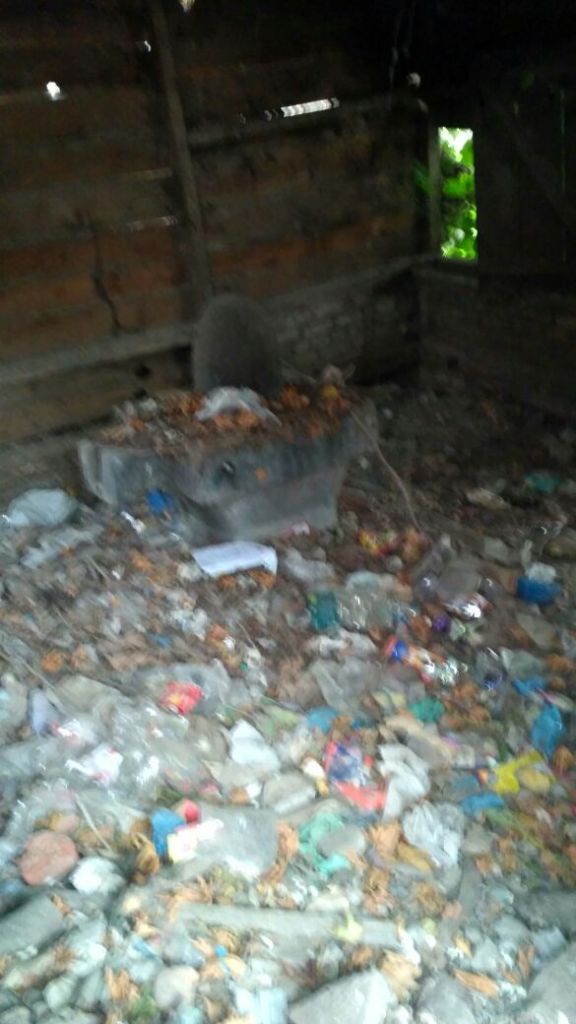
Isn’t it Genocide of Religion and identity of Kashmiri Hindus!


By Sandeep
|
Posted in human rights, india, JAMMU & KASHMIR, kashmir
|
Tagged genocide of Kashmiri Pandits, kashmiri pandits, temples of kashmir, UNHRC
|
Comments (0)
Kashmiri pandits-the forgotten people
June 30, 2018 – 8:24 pm
This picture sums up the present condition and existence of Kashmiri Pandits in Kashmir.
One can find many abondoned houses of Kashmiri pandit’s (KP) in Kashmir. The rusted lock is a proof that the KP had never thought that it would take him so long to return.
28 years has already passed.
God knows, how many more years, the lock will have to wait….

Photo by subrot saraf
One can find many abondoned houses of Kashmiri pandit’s (KP) in Kashmir. The rusted lock is a proof that the KP had never thought that it would take him so long to return.
28 years has already passed.
God knows, how many more years, the lock will have to wait….

Photo by subrot saraf
Asifa Murder-the war of narratives
April 19, 2018 – 12:22 pm
A young eight year innocent Girl-Asifa is raped and murdered brutally
in Jan 2018 in predominantly-Hindu region of J&k. The incident is
condemnable and the culprits should be hanged to Death- irrespective of
their ethnicity or religion.
What seems to be a case of crime has turned out to be a case of palpable political as well as religious division.A division that has its base on decades of mistrust, political subjugation and dichotomous chauvinism . The truth -it seems is gasping for justice in between the chasms of the asperasions of the people of Jammu region and its political and religious opposite-the Kashmir region.
The notion that the people of other region is here to eat my share of resources, jobs, business as well as identity is so deeply dipped in mistrust and suspicion ,that even a normal innocuous action ,raises many eyebrows and infers meaning according to the mass perspective of the region one belongs to.
And these perspective and opposite narratives are the result of decades old political hegemony that one region wields over the other.
Hence, the general masses of Hindu-Jammu are not wrong in their demand to submit the Asiya-case over to CBI.
This war of narratives has inferred different steps of Govt. with different meanings by the people of two regions, according to their political understanding; which may or may not be true.
But that hardly matters.
What is more important is the belief and the perspectives of the people of jammu-who feel that the accused Sanji Ram and his accomplices have been framed because of being a Hindu. And that is why they want an CBI enquiry into the whole incident.
On the other hand, the general belief of the Muslims of India is that the Girl was raped and murdered because she was a Muslim.
The communists especially from Kerala-who have been pushed to the brink of extinction after Tripura fallout, have left no stone unturned to further fan the sentiments of Muslim for their own political gains. The communists in their propaganda have deprecated the symbols of Hinduism blatantly .To get some more time to -what looks like a definite existential threat-they have moved a step further and have portrayed the incident as casteist and a case of classical Brahminism.
By the way, the main accused of Kathua is a Brahman.
The Hindus of J&K also see a political conspiracy in giving this case to Advocate Deepika Thusso Singh-who is fighting on behalf of the deceased Girl, as well as SSP Romesh Kumar Jalla -who headed the S. I. T and apprehended the accused. They feel that this step has been taken to break the bonhomie between the Kashmir Hindus and Dogras.
With so many conspiracy angles involved in this case; no doubt, it is not going to be easy for the Govt. to bring this case to its logical end. Whatever step they are taking, is being keenly watched by the people of two regions. And since, there is a deep mistrust between the two Regions,
I fear
Even the justice might want to delay itself.
What seems to be a case of crime has turned out to be a case of palpable political as well as religious division.A division that has its base on decades of mistrust, political subjugation and dichotomous chauvinism . The truth -it seems is gasping for justice in between the chasms of the asperasions of the people of Jammu region and its political and religious opposite-the Kashmir region.
The notion that the people of other region is here to eat my share of resources, jobs, business as well as identity is so deeply dipped in mistrust and suspicion ,that even a normal innocuous action ,raises many eyebrows and infers meaning according to the mass perspective of the region one belongs to.
And these perspective and opposite narratives are the result of decades old political hegemony that one region wields over the other.
Hence, the general masses of Hindu-Jammu are not wrong in their demand to submit the Asiya-case over to CBI.
This war of narratives has inferred different steps of Govt. with different meanings by the people of two regions, according to their political understanding; which may or may not be true.
But that hardly matters.
What is more important is the belief and the perspectives of the people of jammu-who feel that the accused Sanji Ram and his accomplices have been framed because of being a Hindu. And that is why they want an CBI enquiry into the whole incident.
On the other hand, the general belief of the Muslims of India is that the Girl was raped and murdered because she was a Muslim.
The communists especially from Kerala-who have been pushed to the brink of extinction after Tripura fallout, have left no stone unturned to further fan the sentiments of Muslim for their own political gains. The communists in their propaganda have deprecated the symbols of Hinduism blatantly .To get some more time to -what looks like a definite existential threat-they have moved a step further and have portrayed the incident as casteist and a case of classical Brahminism.
By the way, the main accused of Kathua is a Brahman.
The Hindus of J&K also see a political conspiracy in giving this case to Advocate Deepika Thusso Singh-who is fighting on behalf of the deceased Girl, as well as SSP Romesh Kumar Jalla -who headed the S. I. T and apprehended the accused. They feel that this step has been taken to break the bonhomie between the Kashmir Hindus and Dogras.
With so many conspiracy angles involved in this case; no doubt, it is not going to be easy for the Govt. to bring this case to its logical end. Whatever step they are taking, is being keenly watched by the people of two regions. And since, there is a deep mistrust between the two Regions,
I fear
Even the justice might want to delay itself.
By Sandeep
|
Posted in JAMMU & KASHMIR, kashmir, kashmiri pandits, politics
|
Tagged Asifa murder case, Asifa rape case, dogras, jammu, kashmir, KASHMIR BLOG, kashmir blogs, kashmir pandits, Kathua rape and murder case, Sanji ram
|
Comments (0)
Dhyaneshwar yatra as I remember
February 27, 2018 – 4:34 pm
Dhyaneshwar Mahadev as I remember..
I have been to Dhyaneshwar Mahadev once in 1987-88.I had gone there with my Father, Brother, Grandmother and a very close friend-Sunil.We took a bus from Srinagar to Bandipura, from there, we traveled to the base of the Mountain, where the Holy shrine is situated.
I don,t remember all the names of the places that came enroute. But, Whatever I remember had an indelible imprint on my mind.
As I ascended from the base, I could see beautiful vistas all around me. The narrow trek that lead us towards the cave passed through the tall trees as well as through thick forest of Deodars .It was already dark, when we had started our Hike. The ascending trek pleteaued near a Hutment of Gurjars. It was a sight to behold. The full Moon, it seemed had covered everything around us in the golden Hue. There was a pleasant nip in the air.
I had with me a camera by the name ‘Hot Shot’. It was a compact camera and was in vogue 3 decades back. Enroute, I shot many pictures with it including that of the Full Moon.
That year some Muslim volunteers too had come to assist and support the Hindu Devotees.
All the devotees had gathered at a house(or Ashram/Dharamsala) which was very close to the cave. Devotees were waiting for their turn to have a Darshan of lord Shiva. Some group/s of Devotees were singing Bhajans. I was too tired to join them, I sat down at the corner of the room and pretended to listen to them. Slowly but steadily, from the sitting position, I stretched my legs straight, and after a while, I further recumbented myself as I could no longer resist sleep.
After few hours, my Grandmother, shook me by my shoulder and woked me up. It was time to enter the cave.
The Muslim volunteers were carrying a torch(lesh in Kashmiri/Mashal in hindi), and lighting the path for their Hindu contemporaries. The Hindu-Muslim bonhomie looked real at that time.
Finally, our turn too came.
I remember, the entrance of the cave was around 6 and a half feet in height;and maybe 5 feet in width. My bare feet had become wet from the frigid brook that comes from inside the cave. The brook starts from-what was known as Shraan kuth of parvati(the palace, from where mother Parvati takes a bath).There is a tunnel that starts from the mouth of the cave that is also the sanctom sanctorum and ends at the entrance of Dhyaneshwar. The shape of the tunnel is tapered(shape of hollow cone), with the wider section at the entrance of the cave. The roof of the cave is rough, with rock icicles hanging at places. I was up-right when I entered the cave; but as I moved further inside the tunnel, it became dark- pitch black dark. A volunteer with a torch was somehow managing to show us the path inside the tunnel. Since, the shape of the tunnel is tapered, first I had to bend my shoulders, then I had to bend my back and eventually I was crawling. The ice-cold water of the brook was getting hard to bear. At the ingress of the cave, It was like an adventure for me; but as I proceeded further, the hanging icicle-type-ceiling and the ice-cold brook, on which I was crawling forced me to chant the name of “Shiva”.I was Chanting aloud,”om namah shivaya”.
It is a very long dark tunnel, may be 100 or 200 mts long; and opens inside another natural cave known as Dhyaneswar. The area is modest inside the cave. It must be 8-9 feet in height,6 feet wide and may be 6 feet in length. . At a time,not more than 10 people can stand inside the cave. There is a natural partition inside the cave.The front part belongs to lord shiva and the rear natural raised part is the place of Parvati. The brook starts from the raised rear part.There is Ganesha and Kartik(not sure) also inside the cave.
One thing is guaranteed-an Atheist will become a believer after visiting this Holy cave. It is a Place, that should be visited at least once.
The only regret pertaining to the Dhyaneshwar pilgrimage is that I could not develop the reel of the camera. When we left for Jammu in Jan 1990, because of terrorism, The camera was left behind with so many other things.
I have been to Dhyaneshwar Mahadev once in 1987-88.I had gone there with my Father, Brother, Grandmother and a very close friend-Sunil.We took a bus from Srinagar to Bandipura, from there, we traveled to the base of the Mountain, where the Holy shrine is situated.
I don,t remember all the names of the places that came enroute. But, Whatever I remember had an indelible imprint on my mind.
As I ascended from the base, I could see beautiful vistas all around me. The narrow trek that lead us towards the cave passed through the tall trees as well as through thick forest of Deodars .It was already dark, when we had started our Hike. The ascending trek pleteaued near a Hutment of Gurjars. It was a sight to behold. The full Moon, it seemed had covered everything around us in the golden Hue. There was a pleasant nip in the air.
I had with me a camera by the name ‘Hot Shot’. It was a compact camera and was in vogue 3 decades back. Enroute, I shot many pictures with it including that of the Full Moon.
That year some Muslim volunteers too had come to assist and support the Hindu Devotees.
All the devotees had gathered at a house(or Ashram/Dharamsala) which was very close to the cave. Devotees were waiting for their turn to have a Darshan of lord Shiva. Some group/s of Devotees were singing Bhajans. I was too tired to join them, I sat down at the corner of the room and pretended to listen to them. Slowly but steadily, from the sitting position, I stretched my legs straight, and after a while, I further recumbented myself as I could no longer resist sleep.
After few hours, my Grandmother, shook me by my shoulder and woked me up. It was time to enter the cave.
The Muslim volunteers were carrying a torch(lesh in Kashmiri/Mashal in hindi), and lighting the path for their Hindu contemporaries. The Hindu-Muslim bonhomie looked real at that time.
Finally, our turn too came.
I remember, the entrance of the cave was around 6 and a half feet in height;and maybe 5 feet in width. My bare feet had become wet from the frigid brook that comes from inside the cave. The brook starts from-what was known as Shraan kuth of parvati(the palace, from where mother Parvati takes a bath).There is a tunnel that starts from the mouth of the cave that is also the sanctom sanctorum and ends at the entrance of Dhyaneshwar. The shape of the tunnel is tapered(shape of hollow cone), with the wider section at the entrance of the cave. The roof of the cave is rough, with rock icicles hanging at places. I was up-right when I entered the cave; but as I moved further inside the tunnel, it became dark- pitch black dark. A volunteer with a torch was somehow managing to show us the path inside the tunnel. Since, the shape of the tunnel is tapered, first I had to bend my shoulders, then I had to bend my back and eventually I was crawling. The ice-cold water of the brook was getting hard to bear. At the ingress of the cave, It was like an adventure for me; but as I proceeded further, the hanging icicle-type-ceiling and the ice-cold brook, on which I was crawling forced me to chant the name of “Shiva”.I was Chanting aloud,”om namah shivaya”.
It is a very long dark tunnel, may be 100 or 200 mts long; and opens inside another natural cave known as Dhyaneswar. The area is modest inside the cave. It must be 8-9 feet in height,6 feet wide and may be 6 feet in length. . At a time,not more than 10 people can stand inside the cave. There is a natural partition inside the cave.The front part belongs to lord shiva and the rear natural raised part is the place of Parvati. The brook starts from the raised rear part.There is Ganesha and Kartik(not sure) also inside the cave.
One thing is guaranteed-an Atheist will become a believer after visiting this Holy cave. It is a Place, that should be visited at least once.
The only regret pertaining to the Dhyaneshwar pilgrimage is that I could not develop the reel of the camera. When we left for Jammu in Jan 1990, because of terrorism, The camera was left behind with so many other things.
By Sandeep
|
Posted in hinduism, hindus, history, india, JAMMU & KASHMIR, kashmir, religion
|
Tagged Article on kashmir, Bandipora, Dhyaneshwar yatra, hinduism, hindus, kashmir, KASHMIR BLOG, kashmir blogs, kashmiri pandits, shiva, Shiva cave
|
Comments (1)
Matrikachakra – Kashmir Shaivism.
September 23, 2017 – 6:00 pm

In kashmir Shaivism, the sanskrit/Hindi Vowels represent Shiv, and the consonants represent the Shakti. Shiv is allegorically termed as light and Shakti as its luminosity. Shiv is static, Shakti is dynamic.
Param shiv, like the Brahman (of Advaith) can not be defined, though the creativity, both non dual and dual of paramshiv can be expressed by the 36 elements or tattvas.
The first tattva or element according to Kashmir Shaivism is Shiv – an synonym for Chaitanya or Consciousness. All the activity goes on in this first element.
The sixteen vowels of KS are represented by the first Tattva-shiv.
Everything is Shiv-shakti. Even our language. When shiv(vowels) and Shakti(consonants) meet, a word is formed and when many words combine, a language is formed. The language is the expression of thoughts. The mind is nothing without these thoughts and they act as a support for mind. At the same time, it makes the mind to forget its non-dual nature and engages it in the world of duality. Thus, This language binds a pashu (empirical being) or liberates him/her. Every word is thus a manta for the Yogi.
The first alphabet अ represents Chaitanya. आ represents Anand or Bliss. A desire arises in Shiva to experience its nature-Ananda in duality as well. For that Shiva has to create Duality, as to begin with there is nothing except shiv. This desire is represented by the next two alphabets इ ई. The first one represents Iecha and the second one Ishan. As soon as the desire arises, the knowledge of duality too arises instantly in the heart(consciousness) of Shiva. They are represented by the next two Vowels उ ऊ. They are known as unmesha and unnata.
At this point, an apprehension arises in Shiva, that what if Shiva forgets its real nature, once he manifests as duality(universe). Fearing that it might forget its real nature I. e Consciousness – bliss, he rests back in its nature that is अ आ( Consciousness-bliss). Retracting from knowledge to first stage(consciousness bliss) gives rise to the next 4 vowels
ऋ(r) ॠ(r) लृ(lr) lrii(could not find the sanskrit alphabet on my phone). These are the four stages of void.
After retracting to the initial stage of अ आ, it strikes Shiva that it can not forget it’s real nature and Shiva comes out from the apprehension and carries forward from where it has stopped.
अ आ mixes with the Iecha इ ई thus giving rise to the next two vowels ए ऐ. Again अ आ now mixes with Gyan उ ऊ, and gives rise to the next two vowels ओ औ. These four vowels ए ऐ ओ औ represent the four stages of kriya or action of Shiva. ए ऐ ओ औ represent the least vivid, somewhat vivid, vivid and the most vivid action of Shiva.
The next vowel अं represent that though desire, knowledge and knowhow has risen in the heart(consciousness) of Shiva, yet it is still at the level of non-duality (represented by point). The next vowel is represented by two dots : The upper dot represents shiv and the lower dot represents shakti. In fact, it also signifies that at this level, it is the shiva that becomes the shakti.
From this point on, everything becomes shakti. It has been termed that the projection of shiv on shakti happens inversely, that is, the first element appears as the last and the last tattva which is prithvi(Earth) appears as first. In other words, it implies that the subtler elements appear last and the grossest first. Thus the projection appears first as the
Panch Mahabhutas(five gross elements) represented by कvarg, then
Panch tanmatras represented by चvarg.
Panch karmindreyas(organs of action) represented by टvarg.
Panch gyanindreyas by तvarg
Antahkarn(5 internal organs) by पvarg
5 kanchukas+maya(sheaths) by य र ल व
And
5 shuddh tattvas(pure elements) by श ष स ह.
The first vowel- which is Shiv is अ, and the last consonant is ह. When they combine with each other, they become अंह or Aham-that means ‘I’ or ‘I am’. Whenever we say anything that has ‘I’, or wherever we refer to the first person, it is Shiv(and shakti) , to whom we are referring. Shiv is always the first person and thus we all are ‘Shiv’. Thus ‘Aham’ is also a mantra which is meant for the contemplation for the sadhakas of Kashmir Shaivism as not only all the 36 elements are present in this mantra, but its philosophy as well.
The first vowel अ (Siva tattva) when joins with the last consonant ह(shakti tattva) , Aham अंह is formed. The expression of shiv-shakti tattva is This Aham or I (I am).
The third tattva Sadashiva denoted by स in Matrikachakra has an expression asअहं ईदम or I am this or thisness. The classification of first person with respect to thisness(universe or objectivity) is clear.
The fourth tattva is Isvara represented by ष in Matrikachakra. This stage is represented by ईदम अहं or Idam Aham meaning I am this or thisness. Idam or thisness has become the first person here and Aham has been relegated to inferior stage. The stage of objectivity is clearer to another degree.
The fifth tattva is Shuddh vidya represented by श in Matrikachakra and its expression is अहं ईदम ईदम अहं. Meaning I am this/thisness and this I am. The sense of duality is much more clearer than the previous stages.
From Aham at Shiv-shakti to Aham Idam Idam Aham at Shuddh vidya in the decreasing order of the subtleness or the process of subjectivity to objectivity has been displayed lucidly in the philosophy as well as epistemology of Kashmir Shaivism.
The attributes of Shiva which is
Chaitanya (Consciousness)
Anand(bliss)
Iecha(will)
Gyan(knowledge) and
Kriya(action)
apply in this order in the 36 elements(but inversely)
The 36 elements in their order and as denoted by Alphabets according to Matrikachakra is given below.
1.Panch Maahaabutaas-five Gross elements
1.Prithvi(Earth) क (Kriya)
2.Jaala(water) ख (Gyan)
3.Tejas/agni(fire) ग (Iecha)
4.Vaayu(air) घ (Anand)
5.Akasha(ether) ङ (Chaitanya)
2.Panch Tanmatras-Five Subtle elements
1.Gandha(smell)च (Kriya)
2.Rasa(taste)छ (Gyan)
3.Roop(form)ज (Iecha)
4.sparsha(touch)झ (Anand)
5.Shabda(sound)ञ (Chaitanya)
3.Panch Karmendriyas-(five organs of action)
1.upastha(creation/reproduction)ट (Kriya)
2.paayu(excretion)ठ (Gyan)
3.paada(foot)ड (Iecha)
4.pani(hand)ढ (Anand)
5.vaak(speech)ण (Chaitanya)
4.Panch jnanendriyas-(five organs of cognition)
1.Ghraana-(nose, organ of smelling)च (Kriya)
2.Rasaana-(Tongue, organ of taste)छ, (Gyan)
3.Chakshu-(eye, organ of seeing)ज (Iecha)
4.Tvak-(Skin, Organ of touching)झ (Anand)
5.Srotra-(ear, organ of hearing)न (Chaitanya)
5.Antahkarnas-(3+2 internal organs)
1.Manas-(mind)प Kriya
2.Buddhi-(intellect)फ Gyan
3.Ahamkara-(ego connected with objectivity )ब Iecha
4.Prakriti-(nature/three Gunas i.e satvic,rajsic and tamsic)भ Anand
5.Purusha-(ego connected with subjectivity-reacts to prakriti)म Chaitanya
6.Sat Kancukas-(six coverings)
1.niyati-(limitation of place)य (Kriya)
2.Kaala-(limitation of time)र (Gyan)
3.raga-(limitation of attachment)ल (Iecha)
4.vidya-(limitation of knowledge)र (Anand)
5.Kala-(creativity)ल (Chaitanya)
6.maya-(illusion of individuality)व (Consciousness gets contracted in case when subject becomes object and vice versa I. E object dissolves in subject)
7.Suddha tatvas-(pure elements)
1.Suddha vidya-(iness in iness—–thisness in thisness)श Kriya
2.isvara-(thisness in iness)ष Gyan
3.sadasiva-(iness in thisness)स Iecha
4.shakti-(iness)ह Anand
5.Shiva-(iness-being)-(अ आ इ ई उ ऊ ऋ ऋृ लृ lii ए ऐ ओ औ अं अः)
To continue..
Reference – Kashmir Shaivism books(mostly translated by Swami lakshmanjoo)
By Sandeep
|
Posted in hinduism, JAMMU & KASHMIR, kashmir, philosophy, religion, sprituality, Uncategorized
|
Tagged 36 elements of kashmir shaivism, ARTICLES ON Kashmir, Hindu Philosophy, KASHMIR BLOG, Kashmir bloh, kashmir shaivism, Matrikachakra, Shaiva philosophy, Swami lakshmanjoo, Tantra
|
Comments (0)
srinagar pictures
August 31, 2017 – 10:09 am
By Sandeep
|
Posted in hindus, india, JAMMU & KASHMIR, kashmir
|
Tagged hari parbhat, kashmir, kashmir photos, rainawari, srinagar
|
Comments (0)
Kashmir Police Radicalized!
May 24, 2017 – 11:31 am
It was 9.00 p. m.
The phone was ringing, yet Yasir was not picking up the phone.
Well, he was my neighbour and we had spent our childhood together , like many Kashmiri children of our genre did. As part of our tacit understanding, we talked to each other occasionally, and in our discussions, we covered almost all the subjects pertaining to us and to Kashmir.
He is working in the Police department in J&K Government.
I tried again after 10 minutes, just after two rings, he picked up the phone. “Jenab Aadab! How are you doing Brother?” said he warmly. “I am fine. How is your family?”, I asked him routinely. We inquired about the general well being of our family and friends for some time-like we always do-and then our conversation veered towards the more sensitive and somewhat uncomfortable issues.
Yes . it was Kashmir.
“Hurriyat won’t let the peace prevail in Kashmir”, I ingeminated .” They get huge kickbacks from Pakistan”, I further stated. “You are right” said he without inflection. “ In fact, they are funding the stone-pelters too”, I emphasized. “The militants too get paid for the attacks they carry out on the Indian soldiers”. I further elaborated. He was listening very patiently, without interrupting me. “what do you think?”, I wanted to get his reaction-which always starts with a neutral judgement about India and ends with an inexplicit yet pro-pakistan stance.
“These militants are doing, what they are paid for. They are not bothered about kashmiris or Kashmir. They are like us-policemen. They too are doing their duty. So is Hurriyat. And in this whole process, we- common kashmiris- are getting crushed physically, mentally and emotionally”, said he in a rather angry intonation.
“we are living in a Big Jail. An open-big-jail” His tone was Sullen. “Though, I am a policeman, yet, I try my best to come home by 7 p.m. We have to go through so many security checks. And sometimes the questions asked by the security personnel is rather annoying and filled with implicit chagrin towards us”. He said in a dreary voice.
I had heard this earlier too. Phrase like “Open Jail” have been often used by Pak-Backed-Hurriyar as a part of their usual propaganda against the Administration. I could have protested, But, I choose not to chime in while he was talking to me.
He was saying something, but I was not listening. His statements had put me in a reverie . I was thinking about our previous interactions on Social Media.
Based on my previous conversations with him, I knew, when we talked about our families and friends, he would be sincere. so was I. But, when we talked about Kashmir, our perspectives would not match at all. Somehow, till date we have managed to put a balance between sincerity and our mutually unctuous narration of our feelings for Kashmir or rather Kashmir imbroglio. We know for sure that there is a divide between our perspective and the way, we look at Kashmir.
All these facts were flashing in my mind.
There is a Hindu version of Kashmiri Pandits and there is a Kashmiri Muslim version. And they never match.
I was thinking that often, Yasir sends me Face book messenger messages and Whatsup messages. Most of the messages sent to me are forwards pertaining to Kashmir-imbroglio. Much of the content of the forwarded messages consist of the greatness of Islam or in other words the Hegemony of Muslims and their great personalities. The messages also included Zakir Naik’s disparaging videos about Hindus or how ridiculous Hindus and Hinduism is. He had also sent me a link on Godara, or what Arundati Roy said, or Osho’s message on Beef Eating( can you believe it!). On Dalits, Maoists and what not. I could not condone the fact that, till date, he has never once sent me a message which shows the glory of India or the tolerance of Hindus or Hinduism.
I was also thinking that If anyone reads the messages, he sends me, it would definitely look like as if the messages are being sent from the Hurriyat headquarters and not from a JK policeman.
I also wondered if my friend knew or he deliberately ignored the fact that After all, India is the 2nd most Muslim populous country. They have the right to follow Shariah. Being minorities, they have reservations and even a Hajj-Subsidy. On Fridays, they convert highways, busy market places, offices, Government buildings etc. into the praying Ground-that too without impunity.
I was tempted to think that just a day before yesterday, as I was going through the whatsup messages, I had seen a couple of message from Yasir.He had sent a message that showcased-how great Islam is.The other message read-Hindu terrorists did the blast.
It came to my mind that during all these years, I never reacted to his posts. I would like or comment on only those videos, that were more balanced or funny and that were apolitical. I had never emphasized on my being a proud Indian – which I am, or sent any message or video that belittled his faith. But, he on the other hand had made his desires and intentions clear, by sending anti-India and anti-Hindu messages. His innate desires and his tilting towards Pakistan and Hurriyat was too conspicuous. Just because, I tolerated his messages, didn’t mean that I didn’t understood the purpose and his intentions.
I was forced to think, if JK Police personnel, are indoctrinated so radically as his messages suggest. What will be the condition of othe Govt. employees-who don’t have the responsibility to impose law and order. No wonder, there is a rise in the number of incidents wherein not only the quisling-policemen of JK have snatched the rifles of their own elected Government, but they have become active terrorists.
” Isn’t it the responsibility of the JK Government to check such personnel and make it sure that at least the mindset of the policemen is Nationalistic and pro-India. With such policemen, how can the administration deal with the Pakistan sponsored terrorism? “, I was thinking loud.
I was also forced to think, if 70000 more police men are recruited from Kashmir, whom will it benefit? How can I forget that in 1947, the role of the renegade armed forces of poonch/Rajauri played a very important role in snatching POK from Maharaja Hari Singh!
“Are you listening, Sandeep!, hello! Hello!, are you there”, Yasir’s voice woke me from dwam. “Yes”, I cleared my throat, and feigned to be attentive. Our discussion lasted for some more minutes and we bade good bye and Good night to each other.
I was trying to sleep, but I could not stop thinking that Whenever, I had a long discussion with Yasir over phone, I many a times wondered whether GOI, has any plans to tackle this issue?
Because
if they don’t have or if they still are in a deep slumber, Time has come to wake up and tackle this unpleasant reality.
And act fast.
I was reminded of what once John. F. Kennedy said
“We must use time as a tool, not as a crutch.”
And then, Sleep came from somewhere and put a haitus to the medley of thoughts and feelings, I was encountering…..
(Sandeep Raj koul)
The phone was ringing, yet Yasir was not picking up the phone.
Well, he was my neighbour and we had spent our childhood together , like many Kashmiri children of our genre did. As part of our tacit understanding, we talked to each other occasionally, and in our discussions, we covered almost all the subjects pertaining to us and to Kashmir.
He is working in the Police department in J&K Government.
I tried again after 10 minutes, just after two rings, he picked up the phone. “Jenab Aadab! How are you doing Brother?” said he warmly. “I am fine. How is your family?”, I asked him routinely. We inquired about the general well being of our family and friends for some time-like we always do-and then our conversation veered towards the more sensitive and somewhat uncomfortable issues.
Yes . it was Kashmir.
“Hurriyat won’t let the peace prevail in Kashmir”, I ingeminated .” They get huge kickbacks from Pakistan”, I further stated. “You are right” said he without inflection. “ In fact, they are funding the stone-pelters too”, I emphasized. “The militants too get paid for the attacks they carry out on the Indian soldiers”. I further elaborated. He was listening very patiently, without interrupting me. “what do you think?”, I wanted to get his reaction-which always starts with a neutral judgement about India and ends with an inexplicit yet pro-pakistan stance.
“These militants are doing, what they are paid for. They are not bothered about kashmiris or Kashmir. They are like us-policemen. They too are doing their duty. So is Hurriyat. And in this whole process, we- common kashmiris- are getting crushed physically, mentally and emotionally”, said he in a rather angry intonation.
“we are living in a Big Jail. An open-big-jail” His tone was Sullen. “Though, I am a policeman, yet, I try my best to come home by 7 p.m. We have to go through so many security checks. And sometimes the questions asked by the security personnel is rather annoying and filled with implicit chagrin towards us”. He said in a dreary voice.
I had heard this earlier too. Phrase like “Open Jail” have been often used by Pak-Backed-Hurriyar as a part of their usual propaganda against the Administration. I could have protested, But, I choose not to chime in while he was talking to me.
He was saying something, but I was not listening. His statements had put me in a reverie . I was thinking about our previous interactions on Social Media.
Based on my previous conversations with him, I knew, when we talked about our families and friends, he would be sincere. so was I. But, when we talked about Kashmir, our perspectives would not match at all. Somehow, till date we have managed to put a balance between sincerity and our mutually unctuous narration of our feelings for Kashmir or rather Kashmir imbroglio. We know for sure that there is a divide between our perspective and the way, we look at Kashmir.
All these facts were flashing in my mind.
There is a Hindu version of Kashmiri Pandits and there is a Kashmiri Muslim version. And they never match.
I was thinking that often, Yasir sends me Face book messenger messages and Whatsup messages. Most of the messages sent to me are forwards pertaining to Kashmir-imbroglio. Much of the content of the forwarded messages consist of the greatness of Islam or in other words the Hegemony of Muslims and their great personalities. The messages also included Zakir Naik’s disparaging videos about Hindus or how ridiculous Hindus and Hinduism is. He had also sent me a link on Godara, or what Arundati Roy said, or Osho’s message on Beef Eating( can you believe it!). On Dalits, Maoists and what not. I could not condone the fact that, till date, he has never once sent me a message which shows the glory of India or the tolerance of Hindus or Hinduism.
I was also thinking that If anyone reads the messages, he sends me, it would definitely look like as if the messages are being sent from the Hurriyat headquarters and not from a JK policeman.
I also wondered if my friend knew or he deliberately ignored the fact that After all, India is the 2nd most Muslim populous country. They have the right to follow Shariah. Being minorities, they have reservations and even a Hajj-Subsidy. On Fridays, they convert highways, busy market places, offices, Government buildings etc. into the praying Ground-that too without impunity.
I was tempted to think that just a day before yesterday, as I was going through the whatsup messages, I had seen a couple of message from Yasir.He had sent a message that showcased-how great Islam is.The other message read-Hindu terrorists did the blast.
It came to my mind that during all these years, I never reacted to his posts. I would like or comment on only those videos, that were more balanced or funny and that were apolitical. I had never emphasized on my being a proud Indian – which I am, or sent any message or video that belittled his faith. But, he on the other hand had made his desires and intentions clear, by sending anti-India and anti-Hindu messages. His innate desires and his tilting towards Pakistan and Hurriyat was too conspicuous. Just because, I tolerated his messages, didn’t mean that I didn’t understood the purpose and his intentions.
I was forced to think, if JK Police personnel, are indoctrinated so radically as his messages suggest. What will be the condition of othe Govt. employees-who don’t have the responsibility to impose law and order. No wonder, there is a rise in the number of incidents wherein not only the quisling-policemen of JK have snatched the rifles of their own elected Government, but they have become active terrorists.
” Isn’t it the responsibility of the JK Government to check such personnel and make it sure that at least the mindset of the policemen is Nationalistic and pro-India. With such policemen, how can the administration deal with the Pakistan sponsored terrorism? “, I was thinking loud.
I was also forced to think, if 70000 more police men are recruited from Kashmir, whom will it benefit? How can I forget that in 1947, the role of the renegade armed forces of poonch/Rajauri played a very important role in snatching POK from Maharaja Hari Singh!
“Are you listening, Sandeep!, hello! Hello!, are you there”, Yasir’s voice woke me from dwam. “Yes”, I cleared my throat, and feigned to be attentive. Our discussion lasted for some more minutes and we bade good bye and Good night to each other.
I was trying to sleep, but I could not stop thinking that Whenever, I had a long discussion with Yasir over phone, I many a times wondered whether GOI, has any plans to tackle this issue?
Because
if they don’t have or if they still are in a deep slumber, Time has come to wake up and tackle this unpleasant reality.
And act fast.
I was reminded of what once John. F. Kennedy said
“We must use time as a tool, not as a crutch.”
And then, Sleep came from somewhere and put a haitus to the medley of thoughts and feelings, I was encountering…..
(Sandeep Raj koul)
By Sandeep
|
Posted in india, islam, JAMMU & KASHMIR, kashmir, kashmiri pandits, pakistan, politics
|
Tagged ARTICLES ON Kashmir, india, kashmir, kashmir articles, kashmir blogs, kashmiri muslims, kashmiri pandits, pakistan
|
Comments (0)
Kashmir…some photos.
March 30, 2017 – 3:18 pm
By Sandeep
|
Posted in kashmir
|
Tagged Avantipura, Baisaran, Habba kadal, kashmir, pehalgam
|
Comments (0)
Sun temple of Mattan
December 31, 2016 – 11:23 am
By Sandeep
|
Posted in hindus, india, JAMMU & KASHMIR, kashmir
|
Tagged kashmir, Mattan, Sun temple kashmir, Sun temple mattan
|
Comments (0)
Genealogical Tables of Kasmir Dynasties according to Kalhan
November 28, 2016 – 11:22 am
By Sandeep
|
Posted in history, india, JAMMU & KASHMIR, kashmir, kashmiri pandits
|
Tagged Kalhan, kashmir, KASHMIR BLOG, kashmir history, Kings of kashmir, M.A.Stein, Rajatarangini
|
Comments (0)
Maps of srinagar and parihaspura by A.Stien
November 28, 2016 – 10:11 am
By Sandeep
|
Posted in india, kashmir
|
Tagged Confluence of sindu and jhelum, kashmir, KASHMIR BLOG, M.A.Stein, Parihaspura, Srinagar map
|
Comments (0)
Yaarbal..
September 25, 2016 – 12:48 pm
As a teenager and -that too in Kashmir- The Mountains,
valleys, lakes , streams and rivers just looked so familiar,natural,
perennial and Ubiquitous .Even in my imagination and dreams, I would see
myself somewhere surrounded by these elements.
Swimming was my all time favorite activity. Being a
Rainawarian, I used to swim in Dal Lake very often . And whenever I used
to stay put for night/s at my ‘Matamaal’ in HabbaKadal during summers, I
used to make it sure to go for a swin along with my friend Sanjay to
River Jhelum near the bridge of Habba-Kadal .
We had chosen the ‘Yarbal’ (Bathing Ghat with steps)of
‘Purushyar Temple’ as a base for our swims.We used to swim across the
River and reach The opposite bank of Yarbal , then swim back. Because of
the drift of river, we were flown down and while coming back towards
the purushyar, we were further drifted away downwards. We used to run
barefoot in the bylanes and reach back to The Yaarbal. The River was
deep and many a times , we would hear about the incidents of drowning.
But we were expert swimmers and that hardly bothered us.
Sometimes, we along with other teenagers and children would
jump from the Bridge of HabbaKadal straight into the Vitasta.The
exhilarating feeling of jumping and hanging in the air for some seconds
was awesome.So was the feel of the adrenaline rush , when our feet
touched the Sandy bed of the Jhelum.
I re-visited Kashmir last year in the month of August.I had
hired a taxi and directed the Driver-Ajaz to take me to Habba
Kadal.Once we reached the Bridge, I told him to stop.I looked around but
could not identify most of the New Habba Kadal locality.I alighted the
door and stepped down.
The KP’s once formed the majority population of this
area.Their conspicuous absence added to the feeling of being at an
unknown, yet familiar place.
A new Bridge has been constructed just adjacent to the Old
bridge. When I looked down from the bridge to River Vitasta, she looked
emaciated. I tried to compare her with the images of Jhelum,that were
imprinted in my memories. She looked as if someone had drained out all
her water and her vigour.The shallowed-Vitasta, looked as if she was
ashamed of her present condition.
I ambled further the bridge and turned right towards a
by-lane.I was told that it will lead me towards the famous ‘Purushyar
Temple’.I walked ahead in the claustrophobic , stinking , narrow bylane
and within a couple of minutes ; I had another glimpse of the temple. It
was already late evening.I stood for some time at the mouth of the
wider staired lane ,that lead to the temple . Few steps further
downwards , I could see the barren Yarbal.
I could recall vividly , how the ‘Yaarbal’ abuzzed with
activity.In the mornings, KPs from the adjoining locality visited the
Purushyar temple, some even used to take a dip in the waters of Vitasta
before entering the temple.Other’s used to come in the Late morning and
take a bath with the River-water.They rubbed and covered their bodies
with the thick froth of the Soap. The bubbles of the froth would many a
times float in the air for a short distance and then blow off silently.
Some people would be seen washing their clothes. A few people would
just sit on the stairs and watch the River passing by.
I turned my sight towards the Temple.It looked as if
somebody had turned on a Bulb.I peered through the late evening light ,
but could not see any figure. Nonetheless, it was evident that , some
KPs are coming to the temple and are offering their prayers.However, I
could not see a single soul around the temple.The so familiar waft of
the incense sticks and ‘Dhoop’ too was absent.So was the resounding peal
of the temple bell.
Few Passerby’s looked astonished at my behaviour. After all
,how many people would stand at that junction and look at the Yaarbal
and Temple in that late evening ! For them , my behavior was
suspicious.A group of men gathered at some distance from where I was
standing and started murmuring something.
Finally a man from that group came forwad and asked me in
Kashmiri, “Are you looking for someone?”. I smiled and in a friendly
way, I answered, “Oh Nothing”. I gestulated. “Well, I have spent some of
my early days in this area.I just wanted to see the places where I had
lived”. “Are you a Kashmiri Pandit?” he asked exitedly. “Yes, I am.” I
replied. “I am looking for a KP friend’s house, who too lived in this
locality, but can’t locate it”. I added.
“Most of the people who live here now, have come from other
localities. But, there is this fruit-vendor at the start of
HabbaKadal.He knows about all the Pandits of this area.I will lead you
to him”. He said warmly. “Yes, I saw that Vendor.I will speak to him
just now.” I feigned.”I think I should go now.” I informed him. He shook
my hand firmly and went away in the lane and disappeared from my
sight.It was dark now.I decided to go back and in no time, I reached the
bridge, where the driver of the cab was waiting for me.
Ajaz-the cab driver was waiting for me anxiously. As soon
as I approached him, he said impatiently, “Should we go now Jenab?”
Without looking at him, I answered , “Just give me two more minutes.”
I walked a few steps further on the HabbaKadal bridge.I
again looked down at the Vitasta.I could just see the reflection of the
shimmering lights on it. I looked at the Purushyar temple once again for
the last time. It was dimly lit.The Windows were still closed.
And the Yaarbal still barren……
By Sandeep
|
Posted in JAMMU & KASHMIR, kashmir, kashmiri pandits
|
Tagged Habbakadal, KASHMIR BLOG, kashmiri pandits, purushyaar temple, purushyar, temples of kashmir, yaarbal
|
Comments (0)
Indian Dogs go back-The story of Hall Transit camp
August 10, 2016 – 3:33 pm
One can see a Graffiti that writes- Indian Dogs go back-widely in Kashmir.
The recent incidents in Kashmir, put a stamp of approval on this graffiti. The incidents of attacking of KP’s in transit camps at Hall, Kupwara and vessu further strengthen this belief of the Jihadi –separatist nexus and their supporters. And turning a blind eye on these incidents puts a question mark on the intentions of PDP-BJP Govt.
Why am I writing this? Well, Please read:
I was told briefly by some of my Kashmiri Pandit(KP) friends, about the incidents that transpired with them, after the killing of Terrorist Burhan Wani, at Kashmir. These employees are working under Prime minister’s package for kashmiri migrants, at Kashmir. They are protesting at jammu and Delhi from last 27 days under the banner of All migrant employee association.
An acquaintance, who resided in the ‘Hall Transit camp’ , and was present in the camp from 8th july 2016-15th july shared his poignant ordeal with me in detail. He requested to keep his name Anonymous. I will address him as Ajay in this write up.
“So, Ajay, what happened with all of you, during the nights of 8-10th july”, I asked him over Phone. There was a pin drop silence from the other side. “May be, he is trying to recollect”, I thought. “Are you there, Ajayji?”, I enquired once again.
He cleared his throat, and thus began his story.
“ The news of Burhan Wani’s death came to us at around 8-8.30 p.m. on 8th july. We were apprehensive that, we may get attacked once again.”, Before he could complete his sentence, I interrupted him and asked curiously, “ Have you been attacked previously too?”
“O Yes. Officially, we have been attacked 11 times, and unofficially, it is 17 times. We were attacked in the past , when Afzal Guru was hanged. Every year, on Deewali, the miscreants hurl stones on our Houses. We do not burst crackers on Deewali, not that we don’t want to, but we get attacked if we do so. Instead we only light up the Diyas.” He informed.
Please continue, I requested him.
“Because of our apprehensions, and our past experience, we locked the main entry door of our colony/camp. At around 9.00 p.m, the loud speaker of the local Mosque urged the Kashmiri Muslims(KM’s) to gather at the Mosque. Within no time, a crowd of 5000 people gathered outside the Mosque. A stringent voice from the Loud speaker of the Mosque directed the crowd to surround our colony.” Said Ajay and he paused for some time.
“At least 4000 so-called-miscreants encircled us and started raising derogatory slogans against us and against India. But the most used slogan was-Indian dogs go back. We were the dogs, as we were the Indians. ” He explained. “ Then, they resorted to indiscriminate stone-pelting .They hurled at least 40-50000 Stones on our quarters. The shrilled tones of their slogans was frightening. We felt like trapped pigeons. Children in the camp were crying out of fright. Some of the children clung to their mothers for comfort and hid their eyes in the bosom of their mothers out of fear. Many women fainted repeatedly out of fear”. His voice was brittle. I could feel uneasy emotions welling up in me as well.
“A rivulet passes near by our transit camp. The Jihadi-Mob diverted the route, and the direction of the stream to our compound, They wanted to flood our camp, so that we would be forced to come out of our colony. And kill us. But they could not succeed in their devilish plans.” He said emotionally.
“The hostile mob tried to break the main Door. Some goons or so-called-jihadis, tried to scale the main wall of the compound. It was at that time, the Police(4-5 numbers) meant for our protection, came forward to our rescue. They opened fire into air in order to scare away the mob. 65 rounds of bullets were fired to scatter the crowd. And it did helped. But briefly”. His voice modulation was sketching out pictures of the incidents in my mind.
“Did the mob run away after the fire into air incident”? I asked curiously. “No. It was a temporary respite. The Mob, re-gathered and started hurling stones at us again, once they realized that the police was out of ammunition. They also hurled glass bottles at us. It was so scary. We thought, they would kill us and rape the ladies of our camp”. He said in chocked voice. “The hostile crowd damaged 8-10 cars too, that were parked inside the premises of the camp.”He complained. “The respite came at around 12.30 a.m in the form of rains. It rained heavily and the belligerent crowd dispersed. At least, for the time being” .He informed.
“Didn’t you tried to contact the administration over phone”?, I asked him. “We called up everyone in our contact list. We contacted the police as well as the administration. But whole administration had collapsed. Or if any Administration, existed, it did so to aggravate our woes. The administration was playing wait and watch policy and had kept the lives of the Kp’s of our camp as a bait. They were missing, when we needed them the most.” He complained.
“To be honest with you, we thought, we would be dead soon. We were like the frightened pigeons. We were concerned about the welfare of the two and a half year child, who was hit by the stone. We were nervous about the condition of a pregnant lady of our camp. We needed a doctor. We needed protection. We needed administration. But we were wronged by all those, who are in power.” Said he in a distressed tone.
“What happened after that”. I inquired.
“Next day i.e 9th july 2016, some policemen came to our compound for our protection, but they left the camp by evening. We were again left with the usual 4-5 policemen. And now they were unarmed.” He informed.
“The local Mosque at around 3.30 p.m once again urged all the KM’s to throw away all the Indians. It was a direct threat to us. But nobody cared for us. Again the Mob swelled by the late evening and encircled our camp. Again they pelted stones on our houses. Again they raised the belligerent slogans. Again they gagged us to leave the valley.” He was getting angry. And I could feel a sense of helplessness in his voice.
“It was after 48 hrs, on 10th july 2016, The Army came to our rescue. The Mob refrained to some extend, but still some stones were hurled on us. We asked about the security situation outside the camp from some people. It was decided that the employees would leave the camp for Jammu in the night. An arrangement was made to send away some 250 odd KP residents of the camp in the dead of night, during the next few days. By 16th july whole of the camp was deserted and the entrance was locked by us.” He informed. “The other camps too in the valley had to face the wrath of the Jihadi-Mob. The camps were stoned at Kupwara and Vessu too. An attempt was made by the miscreants at Sheikhpura too. And at all these places, The administration was caught napping.” He said. “There are around 2000 KP employees stationed at Kashmir. Out of these, 1665 employees were recruited under the PM Package. All the employees under PM Package are protesting against the injustice meted to them.” Ajay Informed.
“What do you want now from Govt”? I sked him.
“we all should be deployed/re-posted at jammu until all the KP’s are rehabilitated at Kashmir. We risked our lives in 2010, we were assured of security, we were assured that a conducive environment will prevail, But during all these years of service at Kashmir, we have noted that the jihadi-fundamentalists are gaining their ground and all their activities are directed towards us. We are the sitting ducks for them. Enough is Enough. At least, we did never raise our voices for Pakistan. We are proud Indians and we would like to remain as Indians.” He asserted.
“we also request the center to release our salaries unconditionally. Our KM counterparts in Kashmir, have got their dues from the state, in spite of being absent from the duty. We, on the other hand, have been told that we won’t get our salaries as we were absent from our duty. Why double standards for us”?, he lamented.
The communication was snapped because of some network issue. But, I guess, he told me, What I ought to know.
I was forced to think , Does it matter that KP’s are the indigenous race of Kashmir, with a known history of 5000 years! Does it matter to Hindus and India that Kp’s have been ousted from Kashmir purely on the basis of Religion! Does India care for the Hindus of Kashmir?
If yes,
Where is India? Sleeping? Or, has the eyes of justice been blinded by the shenanigans of the politicians and their polity and their version of Truth!
Kashmiri Hindus are proud Indians. And in Kashmir, when a Graffiti is painted that says, “Indian Dogs go back”. The Dogs that are referred to are Kashmiri Hindus as well….
The point is, will the grievances of KP employees of Kashmir redressed. Or will they be forced to go back, where they will again hear or see a graffiti, that says:
Indian dogs go back……
By Sandeep
|
Posted in hindus, india, kashmir
|
Tagged ALL MIGRANT EMPLOYEE ASSOCIATION, BADGAM, BJP, BURHAN WANI, HALL TRANSIT CAMP, kashmir, kashmiri hindus, KASHMIRI MIGRANT EMPLOYEES, kashmiri pandits, KUPWARA, PDP, PMO, rajnath singh, SHEIKPURA, VESSU
|
Comments (1)
Dilapidated temples of kashmir
August 8, 2016 – 11:31 am
By Sandeep
|
Posted in JAMMU & KASHMIR, kashmir
|
Tagged broken temples of kashmir, chander mohan bhat, KASHMIR BLOG, kashmir blogs, kashmir photos, kashmir temples, KPSS, rescue ngo, temples of kashmir, vijay sas
|
Comments (0)
Selective targetting of KPs?
July 18, 2016 – 5:39 pm
What is wrong in showing concern for our brethren in Kashmir?
Just a few days back, when Burhan wani was shot dead in an encounter with the Armed forces, whole of Kashmir valley shut down.They have right to protest but so does the KPs.
Isn’t it true that some transit camps of KPs were stoned by the angry protesters-most of whom happened to be Muslims-and it took hours before they were rescued by the Indian armed forces.May I ask , why were they stoned? May I ask why are they holed up in transit camp?
They are living in transit camps for the same reason due to which 4 lakh(approximately) KPs had to fled in the dead of the night.Should we forget that in 1989-90, KPs were killed in the most gruesome manner, for absolutely no fault of theirs except one.
We were Hindus and represented India…
The KPs in the transit camps were targeted by the so-called-miscreants for exactly the same reason.while, they were targeted by the frenzied mobsters, few KP had sent an S.O.S to their friends and relatives outside the camps.There was complete chaos all around.
The memories of 1990 haunted back to KPs once again.
Many rumours were also spread by the rumour-mongers; and it was very difficult to sieve out the truth from falsehood.Most of the KPs were concerned about the welfare of their friends and relatives back in Kashmir.Different platforms as well as social media was used to apprise the community about the latest situations in Kashmir.And many KPs were doing their bit to spread the information pertaining to KPs in Kashmir.
One such KP was SH.Ashok Koul-a journalist and a senior citizen.He was informed by one of his acquaintance in Kashmir that 2 KPs are reported to be killed.He posted the information on his FB.Later on the news proved to be false.Ashokji apologised publicly as soon as he came to know that the news was a canard.
However, as it proved to be, Ashokji was booked by the Cyber cell for creating rumours and creating ill-will between the two communities of Kashmir.
C’mon, you must be joking! A KP booked for showing concern for his Brethren ! But unfortunately yes! This is what has happened.
Is false-reporting the parameter for booking someone.If yes, why is this exercise implemented only on a KP? Isn’t it true that BJP’s unsucessful contestant from AmiraKadal constituency-Ms.Henna Bhat just a few days claimed on a National News channel that 1 lakh Kashmiri youths have lost their lives during the 27 year long insurgency.Where did she get those figures?
Officially approximately 55 thousands people have lost their lives. The figure includes all civilians, Militants, and Armed forces.Doesn’t that exaggerated figure fuel the communal tension and malign the image of India!
Hurriyat conference and its coitere puts the figure to somewhat 5 lakhs. Has the Cyber cell booked them too? If we look at the Pakistani supporters and their puppets, many of whom are very active on the social media; and the inflated figures provided by them about the so-called atrocities committed on Kashmiris; One will be bewildered. They in fact should be booked on the charges of sedition.But have they?
No.
For such elements, the govt has the policy of healing touch.
What about the wrong-reporting of the Kashmir newspaper ‘Greaterkashmir’. Isn’t it true that in 2014, they had mislead the entire valley, when they claimed 4000 KPs are undertaking the ‘Kaunsarnag-Yatra’. However the fact was that only 28 KPs were going for the Yatra.
I challenge the Cyber cell to book them first.If one goes through the content they have been publishing over the years; it might look as if ‘ISI’ is directly owing it.
If no step has been taking against all these people and organisations; then why only a KP? At least he immediately apologised when he realised the news was fake, unlike Hurriyat and its coitere.
Kashmiri Pandits demand the harassment of SH.Ashok Koul should be stopped immediately or else book all those people who are / have been indulging in the same acts.
If not, take back the case against SH.Ashokji.Concerning about the welfare of our brethren is not a crime.Don’t choke the voice of a KP.
Let there be equilaty of justice for all….
Just a few days back, when Burhan wani was shot dead in an encounter with the Armed forces, whole of Kashmir valley shut down.They have right to protest but so does the KPs.
Isn’t it true that some transit camps of KPs were stoned by the angry protesters-most of whom happened to be Muslims-and it took hours before they were rescued by the Indian armed forces.May I ask , why were they stoned? May I ask why are they holed up in transit camp?
They are living in transit camps for the same reason due to which 4 lakh(approximately) KPs had to fled in the dead of the night.Should we forget that in 1989-90, KPs were killed in the most gruesome manner, for absolutely no fault of theirs except one.
We were Hindus and represented India…
The KPs in the transit camps were targeted by the so-called-miscreants for exactly the same reason.while, they were targeted by the frenzied mobsters, few KP had sent an S.O.S to their friends and relatives outside the camps.There was complete chaos all around.
The memories of 1990 haunted back to KPs once again.
Many rumours were also spread by the rumour-mongers; and it was very difficult to sieve out the truth from falsehood.Most of the KPs were concerned about the welfare of their friends and relatives back in Kashmir.Different platforms as well as social media was used to apprise the community about the latest situations in Kashmir.And many KPs were doing their bit to spread the information pertaining to KPs in Kashmir.
One such KP was SH.Ashok Koul-a journalist and a senior citizen.He was informed by one of his acquaintance in Kashmir that 2 KPs are reported to be killed.He posted the information on his FB.Later on the news proved to be false.Ashokji apologised publicly as soon as he came to know that the news was a canard.
However, as it proved to be, Ashokji was booked by the Cyber cell for creating rumours and creating ill-will between the two communities of Kashmir.
C’mon, you must be joking! A KP booked for showing concern for his Brethren ! But unfortunately yes! This is what has happened.
Is false-reporting the parameter for booking someone.If yes, why is this exercise implemented only on a KP? Isn’t it true that BJP’s unsucessful contestant from AmiraKadal constituency-Ms.Henna Bhat just a few days claimed on a National News channel that 1 lakh Kashmiri youths have lost their lives during the 27 year long insurgency.Where did she get those figures?
Officially approximately 55 thousands people have lost their lives. The figure includes all civilians, Militants, and Armed forces.Doesn’t that exaggerated figure fuel the communal tension and malign the image of India!
Hurriyat conference and its coitere puts the figure to somewhat 5 lakhs. Has the Cyber cell booked them too? If we look at the Pakistani supporters and their puppets, many of whom are very active on the social media; and the inflated figures provided by them about the so-called atrocities committed on Kashmiris; One will be bewildered. They in fact should be booked on the charges of sedition.But have they?
No.
For such elements, the govt has the policy of healing touch.
What about the wrong-reporting of the Kashmir newspaper ‘Greaterkashmir’. Isn’t it true that in 2014, they had mislead the entire valley, when they claimed 4000 KPs are undertaking the ‘Kaunsarnag-Yatra’. However the fact was that only 28 KPs were going for the Yatra.
I challenge the Cyber cell to book them first.If one goes through the content they have been publishing over the years; it might look as if ‘ISI’ is directly owing it.
If no step has been taking against all these people and organisations; then why only a KP? At least he immediately apologised when he realised the news was fake, unlike Hurriyat and its coitere.
Kashmiri Pandits demand the harassment of SH.Ashok Koul should be stopped immediately or else book all those people who are / have been indulging in the same acts.
If not, take back the case against SH.Ashokji.Concerning about the welfare of our brethren is not a crime.Don’t choke the voice of a KP.
Let there be equilaty of justice for all….
By Sandeep
|
Posted in india, JAMMU & KASHMIR, kashmir
|
Tagged Ashok Koul, Attack on kashmiri pandits, Henna Bhat, kashmir, kashmir pandits, PMO, syed ali shah geelani, Targetting kashmiri pandits
|
Comments (0)
Queen Didda of Kashmir
June 28, 2016 – 11:12 am
The Kashmir of the yore ; is draped in the tales of Kings and queens.
Though many rulers came , ruled over Kashmir and then were erases by
the Time, yet some of these rulers had an indelible imprints on the
History of Kashmir. Traditionally it has been the fiefdom of the Kings,
Yet, there had been brief instances, when the Queens of Kashmir ruled
over the land of Kashmir.
IT was not easy for these Queens to rule with an Iron grip; But they somehow managed and found their own place in the History of Kashmir. One Such Lady, who rose against all the odds and decimated her enemies by following the proverb, ‘everything is fair in love and war’ is Queen Didda. She is an epitome of mystery, lust and an intense desire to Rule.
And till date she retains her position of numero uno as the Queen whose rule spanned for almost half a decade.
Diddaksema( Didda and Ksemagupta)
Queen Didda was married to King Ksemagupta(950-958 A.D) of Kashmir. She was the daughter of King Simharaja-The lord of Lohara and Grand Daughter of King Bhima-Sahi of Kabul. She had transfixed the King Ksemagupta, and had wholly engrossed his mind. The King had engraved the image of Didda on the coins and was thus also known as DIDDAKSEMA.It was a derogatory appellation used for Ksemagupta. The King was also married to ‘Candralekha’-The daughter of his Minister(Dvarapati) Phalguna. Didda had developed an animosity towards the minister. Didda had a son named ‘Abhimanyu’ with Ksemagupta.
In 958 A.D, King Ksemagupta died of the disease-‘luta’, that accompanied high fever. The king was known to have lived an epicurean life and Kalhana in his epic, ‘Rajatarangani’ had deprecated his Sybarite life.
Kshemagupta’s Child Son-Abhimanyu became King under the Guardianship of Queen Didda. And thus began the love-hate relationship of the infamous Queen with anyone, who came in between her and the urge to Rule.
Kalhana has portrayed her as an merciless and suspicious character, with many paramours, incapable of making her own decisions and who used to get influenced by others, Particularly those, who would feign to be her ally or confidants, and provoke her to sideline a rising benefactor , for their own personal gains. And almost always, she fell into the trap of the conspirators and removed the persons in question.
But in spite of everything, she survived, and ruled Kashmir directly or indirectly for almost 45 long years.
Rise and Fall of Phalguna
After the Death of her Husband, Phalguna had become the Prime Minister( Sarvadhikara) and thus exerted great influence. ‘Rakka’-The commander-in-chief (Kampanesa) had become resentful of the might of Phalguna and embittered Queen Didda about the apprehensions that the Prime Minister might usurp the Kingdom.
Phalguna’s son Kardamaraja had gone to take the bones of ‘Ksemagupta’ to the Ganges, The prime minister, who distrusted the palace and apprehended (evil) from his enemies, resolved to stop at ‘Parnotsa’(poonch) until his Son’s return. He left the city followed by numerous troops, and had arrived near ‘Kasthsvata’, and then to ‘Varahakshetra’ (Varamullah/Baramullah).
Didda at the instigation of ‘Rakka’ and others, took a quick resolve, and instead of polite requests sent staff bearers after Him. Phalguna was grieved by this dishonor and turned back and marched to Baramullah, attended by a large armed force.Didda and her ministers feared that he might attack them.But instead of attacking them, Phalguna laid his sword at the feet of ‘Varaha’ (Lord Vishnu).Kalhana writes that by this act of Phalguna, The ministers rejoiced as the boys when left by their teacher.
But Didda could not rejoice for a long time as new problem had come up.
Mahiman, Patala and rise of Yashodhra
When Kshemgupta’s Father, Parvargupta(Father-in-law of didda) was aiming at the crown, he had married two daughters to the ministers ‘Choja’ and ‘Bhubata’, who had taken (with him) the oath of sacred Libation (Kosapitin). The two sons, who were born from these, the renowed ‘Mahiman’ and ‘Patala’, grew up in the King’s palace as if they were his own sons, and had remained there up to that time. These two eager for the throne, entered a conspiracy with Himmaka( a Turk) and others who knew no restraint.
Mahim and Patala were turned out by the Queen Didda from the Royal Palace and thus they developed hatred for her and yearned to retaliate and oust the queen. She had sent office bearers in open hostility behind Mahiman, in order to have him banished. They followed him to his Father-in-law Saktisena’s house too. In spite of Saktisena’s request, they did not leave. Hence, Saktisema gave open shelter to Mahiman. Thus having found a refugee, he was joined by Himmanka, Mukula, Eramantaka, Udayagupta and Yashodra.
They formed a confederacy, sided with Mahiman and raised a rebellion. At that time of great danger, the faithful minister ‘Naravahana’ was the only one who, together with his relatives, did not abandon the side of Didda.The battalion of enemy with glittering weapons came into the vicinity of temple of Padmasvamin(in pampore), eager for battle.
Didda sent her Son to Suramatha( in Srinagar), and in distress sought various means for averting the disaster. She gave away plenty of Gold to Brahmins of Lalityadidtapuram(litpur) , and thus broke up the league of her enemies.The Brahmins took an oath of Libation (Pitakosa), declaring that if one were attacked, they would all resent it, and then brought about a reconciliation between Mahiman and the Queen.
To further weaken the power of her Enemy camp, she bestowed upon Yashodra and the rest the command of the Army(Kampana) and other( offices).After a few days she put Mahiman, out of the way by Witchcraft, and her Rule became undisputed in the land.
Yashodra’s rebellion and the rise of Naravahana
The new commander-in-chief Yashodra, out of spite, along with his relatives undertook an expedition against the ‘Sahi’ ruler ‘Thakkana’ and humbled him.Yashodra took a tribute from the King, who did homage, and watered afresh the creeper of fame with the water(sprinkled) at the inauguration ceremony (Abhisheka).
Rakka and some others, who had become resentful of the rise of Yashodra, who had access to the Queen, stirred up enemity in her against the commander-in-chief. They incited Didda by falsely reporting her that Yashodra was betraying her, and that he had taken money for keeping ‘Thakkana’ on his throne.She took their Slander for the very truth.
Swelled with pride over his victory, when Yashodra reached back to his residence, the Queen dispatched staff-bearers with the evident intention of banishing him.When ‘Himmaka’, ‘Eramantaka’ and others heard of this insult, they remembered what they had agreed upon under their oath by the sacred libation( Kosa) and raised a rebellion as before.
Didda’s troops became disaffected, but ‘Naravahana’ and those with him did not desert her side. And when ‘Subhadara’ and other enemies of her entered the city with fury, She sent her Son away to ‘Bhattarakamatha’( Bradmaer, Srinagar).Thereupon, fighting commenced between the troops of the two hostile groups, that had held positions extending near ‘Jayabhattarika’( a possible temple in precincts of Srinagar) to the vicinity of ‘Suramatha’( a building in Srinagar).
The Royal force panicked and started fleeing. At that time the Ekangas( probably the palace guards or a marital race) displayed their array at the main gate of the palace. They rallied the routed force, attacked the enemy’s troops, and turned to flight some of their opponents. ‘Rajakulabhatta’ too joined the fight and with his valor scattered the ememy’s army and humbled Himmaka-who was slain in the fight, and the rebellious Yasodhara was captured by the soldiers. Eramantaka was caught alive and ‘Udayagupta’ escaped somewhere.
As soon as Didda secured victory, she in wrath, punished Yashodra, Subhadhara and Mukula along with their relatives. Eramantaka was thrown in the waters of ‘Vitasta’(Jhelum) , with a large stone bound to his neck.
The Queen placed ‘Rakka’, and others, once again, in charge of the chief command of the army, and of the other state offices.
Naravahana, the best and the loyal of the ministers was coroneted with the title of ‘Rajanaka’. Their mutual respect for each other grew as the days passed by, and he became the most trusted aide of the Queen. Kalhana writes about their relationship in these words , “When he kept within his house, she was not happy without inquiring about his health, without requesting his advice, and without sending him things of her own.
Suicide of Naravahana
‘Sindhu’, the son of a litter-carrier, had become a favorite of Didda’s father-in-law Parvagupta, and in due course became the treasurer. He had obtained charge of the treasury from the Queen. Kalhana has depicted him as a wicked person, who poisoned the mind of Didda against his trusted-aide Naravahana. He told her that He took from her most of her royal power. At the time, when the conversation between the Queen and Sindhu was going on, the minister, by chance, out of fond devotion, requested her to his house for a meal.
Sindhu warned Queen that if she goes to his house, he would imprison her and her attendants. The queen turned down his invitation and sent him a word that she had got her menses. The Minister too got the feelers that the Queen no longer trusts him, and thus suspicion grew between them and mutual respect ceased. She exasperated Naravahana on repeated occasions to such an extent, that tormented by his disgrace, he committed suicide.
Re-induction of Phalguna and death of Abhimanyu
After The Death of Rakka, She had apprehensions that the Sons of ‘Samgrama’-The Damara(feudal lord) might attack her . she needed a man with strong administrative capabilities and thus she recalled ‘Phalguna’ back. He had exhibited his prowess and martial capabilities in the past when he had conquered the ‘Rajapuru’(Rajauri).
Kalhana writes that her son-Abhimanyu, fell into consumption owing to the evil-deeds of Didda.He further writes that His(Abhimanyu) eyes resembled lotuses, was learned, cherished by the sons of the learned men and versed in the sastras; learning and youth rendered him brialliant.
His young son died on the third day of the bright half of karttika in the year 972. She was grieved at his Son’s untimely death. Out of contrition for her past actions and for the peace of her departed son, she constructed several religious monuments.
But, after one year, when her grief was allayed, she displayed her true character yet again.
Throning of her Grandsons Nandigupta,Tribhuvana, And Killing them by Witchcraft
When Didda’s Son Abhimanyu had died, she had installed her Grandson ‘Nandigupta’ at the throne in 972 A.D, while she retained the position of the Regent. In fact, it was she-who had the complete hold over the Kingdom. Kalhana writes that she killed him(Nandigupta) by a witchcraft in 973A.D.She then installed her other Grandson Tribhuvana at the Throne in 973AD.She killed him in the same fashion as Nandigupta in 975A.D.
Thereupon, she installed her last Grandson Bhimagupta at the throne in 975A.D.
Rise of Tunga and killing of her last Grandson Bhimagupta
‘Tunga’ was the son of ‘Bana’, whose native village was ‘Baddivasa’ in ‘Parnotsa’(Poonch). He had come as a herdsman of Buffaloes. After reaching Kashmir, together with his five brothers-‘Sungandhisiha’, ‘Prakata’, ‘Naga’, ‘Attayika’ ‘Sanmukha’, He had attained employment as a letter-carrier( Lekhaharaka).Once before the minister of foreign affairs he was seen by the Queen and won her heart.Kalhana writes that, she had the youth brought up secretly by a messenger, and took, as fate willed, an affection for him, though she had already many paramours.
Rakka’s Son-‘Devakalasa’ acted as a procurer and had access to the Queen.The other high ranking official such as ‘Kardamaraja’-Lord of the Gate and other officials too did the procuring.
The Child ‘Bhimagupta’, after living 4 or 5 years in the Palace, had become a little more developed in intellect, and recognized in his mind that the affairs of the Kingdom and his Grandmother’s ways of living were not right, and in need of reform, he became an object of suspicion to Didda.Kalhana attributes his (Bhimagupta) intellect to a noble family and further writes that ‘Abhimanyu’s’ wife had secretly substituted him as her own son.
On the advice of ‘Devakalasa’( son of Rakka), The Queen openly imprisoned him and was subjected to various tortures until he died in 980/81 AD. Thereupon , She ascended the throne and ruled Kashmir for another 23 years(980-1003).The Queen’s infatuation for ‘Tunga’ made him insolent and his impudence knew no bounds when he was appointed as the Prime Minister(Sarvadhikarin) and was raised above everybody.
Vigraharaja’s rebellion and Shieding Tunga
The former minister whom ‘Tunga’ and his brothers had ousted, were filled with dissatisfaction, and exerted themselves to raise a rebellion in the Kingdom. For this Endeavour, they approached Prince ‘Vigraharaja’-The Son of Didda’s Brother.He was strong and possessed formidable valour.He induced the Brahmans holding the chief Agraharas to enter upon a solemn fast( Prayopavesa), in order to cause disturbance in the Kingdom.
When the Brahmins had united, the whole of the people was in uproar too, and searched daily in different places for ‘Tunga’, wishing to kill him. Didda, fearing a revolt, hid Tunga for some days in an apartment with closed doors. By presents of Gold, she gained over ‘Sumanomantaka’ and other Brahmins, and then the fast ended. This weakened the grip of Vigraharaja , his power was broken and he went as he had come.
Tunga and his people having again secured the power, strengthened their position, put to death, in due course, ‘Kardamaraja’ and others who had raised the rebellion. When dissatisfied, they exiled ‘Sulakkana’-Rakka’s son, and other chief councilors, and brought them back again, when pleased. Vigraharaja, whose animosity was growing, again by secret emissaries caused the Brahmans to begin a solemn fast(Praya).
The Brahmins met again to hold a fast, but as they were willing to take bribes, ‘Tunga’, who had firmly established himself, got rid of them. ‘Sumanomantaka and the other Brahmins, who had taken the Gold of Didda, were all caught and put into prison by Tunga.
Tunga had exhibited his valour and skills, he had become the most trusted aide of the Queen.He showed his temerity and cleverness when he successfully subdued ‘Pritvipala’-The king of Rajapuri(Rajauri) and forced him to pay tributes.
Samgramaraja made the Prince
Didda without scruple raised the son of her Brother ‘Udayaraja’ called ‘Samgramaraja’ to the rank of Prince, after testing him as follows:
In order to test her Nephews, children all, who were assembled before her, she threw down before them a heap of apples (palevata). “How many of these fruits can each get hold of?” thus she spoke and caused thereby a scramble among the princess. She saw that the others had got but few fruits, but had received their knocks, while ‘Samgramaraja’ held plenty of fruits and was yet untouched.
When she asked him in surprise how he had secured that large number of fruits without getting a blow, he replied to her thus:
“I got the fruits by making those boys fight furiously with each other, while I kept apart, and thus I remained unhurt.” On hearing his reply, which showed his collected mind, she who was timid by a cautious course, and this could not be otherwise.
Queen Didda died in year 1003.The Hindu calendar of that day was Bhadrapada shukla Paksh Ashtami.Before her death, she made Samgramaraja and Tunga take an oath by sacred libation(Kosa) not to harm each other.
During the rule of Samgramaraja, Tunga was a force to reckon with and was seen as a threat by The king .He got him murdered by his own brother Naga.
Was Didda Lame?
There are three verses where Didda has been termed as lame.In Book 6 of Rajatarangini, she has been labeled as lame in the verses 226,276 and 308. Some scholars opine that the word ‘Lame’ here refers to her ‘ incapability’ and ‘lack of morality’.Some opine that may be the word ‘lame’ in reference to Didda is actually , ‘ physical’.
226. The lame (queen) whom no one had thought capable of stepping over a cow’s footprint got over the ocean-like host of ( her enemies), Just as Hanumat( got over ocean).
276.That foolish( queen) who was unable (to use) her feet (caranahina) became, through her want of moral principles ( srutibahyata), an object of reproach, being in character just like a stupid Brahmin {( Who, Being foolish and ignorant of the ritual (carana), becomes an object of reproach through his want of vedic knowledge(sruti)}
308.’Valja’, a porter women, who used to carry about on her back the lame queen at games which required running, caused the ‘Valgamatha’ to be erected.
Physical or allegorical aside, She was an intriguing forceful figure- who inspite of all ups and downs, praises and condemnations, overcame all and ruled Kashmir directly or indirectly for almost half an century.
And her indelible imprints on History of Kashmir shall remain forever..
REFERENCE:Kalhana’s Rajatarangini(A.stein)
IT was not easy for these Queens to rule with an Iron grip; But they somehow managed and found their own place in the History of Kashmir. One Such Lady, who rose against all the odds and decimated her enemies by following the proverb, ‘everything is fair in love and war’ is Queen Didda. She is an epitome of mystery, lust and an intense desire to Rule.
And till date she retains her position of numero uno as the Queen whose rule spanned for almost half a decade.
Diddaksema( Didda and Ksemagupta)
Queen Didda was married to King Ksemagupta(950-958 A.D) of Kashmir. She was the daughter of King Simharaja-The lord of Lohara and Grand Daughter of King Bhima-Sahi of Kabul. She had transfixed the King Ksemagupta, and had wholly engrossed his mind. The King had engraved the image of Didda on the coins and was thus also known as DIDDAKSEMA.It was a derogatory appellation used for Ksemagupta. The King was also married to ‘Candralekha’-The daughter of his Minister(Dvarapati) Phalguna. Didda had developed an animosity towards the minister. Didda had a son named ‘Abhimanyu’ with Ksemagupta.
In 958 A.D, King Ksemagupta died of the disease-‘luta’, that accompanied high fever. The king was known to have lived an epicurean life and Kalhana in his epic, ‘Rajatarangani’ had deprecated his Sybarite life.
Kshemagupta’s Child Son-Abhimanyu became King under the Guardianship of Queen Didda. And thus began the love-hate relationship of the infamous Queen with anyone, who came in between her and the urge to Rule.
Kalhana has portrayed her as an merciless and suspicious character, with many paramours, incapable of making her own decisions and who used to get influenced by others, Particularly those, who would feign to be her ally or confidants, and provoke her to sideline a rising benefactor , for their own personal gains. And almost always, she fell into the trap of the conspirators and removed the persons in question.
But in spite of everything, she survived, and ruled Kashmir directly or indirectly for almost 45 long years.
Rise and Fall of Phalguna
After the Death of her Husband, Phalguna had become the Prime Minister( Sarvadhikara) and thus exerted great influence. ‘Rakka’-The commander-in-chief (Kampanesa) had become resentful of the might of Phalguna and embittered Queen Didda about the apprehensions that the Prime Minister might usurp the Kingdom.
Phalguna’s son Kardamaraja had gone to take the bones of ‘Ksemagupta’ to the Ganges, The prime minister, who distrusted the palace and apprehended (evil) from his enemies, resolved to stop at ‘Parnotsa’(poonch) until his Son’s return. He left the city followed by numerous troops, and had arrived near ‘Kasthsvata’, and then to ‘Varahakshetra’ (Varamullah/Baramullah).
Didda at the instigation of ‘Rakka’ and others, took a quick resolve, and instead of polite requests sent staff bearers after Him. Phalguna was grieved by this dishonor and turned back and marched to Baramullah, attended by a large armed force.Didda and her ministers feared that he might attack them.But instead of attacking them, Phalguna laid his sword at the feet of ‘Varaha’ (Lord Vishnu).Kalhana writes that by this act of Phalguna, The ministers rejoiced as the boys when left by their teacher.
But Didda could not rejoice for a long time as new problem had come up.
Mahiman, Patala and rise of Yashodhra
When Kshemgupta’s Father, Parvargupta(Father-in-law of didda) was aiming at the crown, he had married two daughters to the ministers ‘Choja’ and ‘Bhubata’, who had taken (with him) the oath of sacred Libation (Kosapitin). The two sons, who were born from these, the renowed ‘Mahiman’ and ‘Patala’, grew up in the King’s palace as if they were his own sons, and had remained there up to that time. These two eager for the throne, entered a conspiracy with Himmaka( a Turk) and others who knew no restraint.
Mahim and Patala were turned out by the Queen Didda from the Royal Palace and thus they developed hatred for her and yearned to retaliate and oust the queen. She had sent office bearers in open hostility behind Mahiman, in order to have him banished. They followed him to his Father-in-law Saktisena’s house too. In spite of Saktisena’s request, they did not leave. Hence, Saktisema gave open shelter to Mahiman. Thus having found a refugee, he was joined by Himmanka, Mukula, Eramantaka, Udayagupta and Yashodra.
They formed a confederacy, sided with Mahiman and raised a rebellion. At that time of great danger, the faithful minister ‘Naravahana’ was the only one who, together with his relatives, did not abandon the side of Didda.The battalion of enemy with glittering weapons came into the vicinity of temple of Padmasvamin(in pampore), eager for battle.
Didda sent her Son to Suramatha( in Srinagar), and in distress sought various means for averting the disaster. She gave away plenty of Gold to Brahmins of Lalityadidtapuram(litpur) , and thus broke up the league of her enemies.The Brahmins took an oath of Libation (Pitakosa), declaring that if one were attacked, they would all resent it, and then brought about a reconciliation between Mahiman and the Queen.
To further weaken the power of her Enemy camp, she bestowed upon Yashodra and the rest the command of the Army(Kampana) and other( offices).After a few days she put Mahiman, out of the way by Witchcraft, and her Rule became undisputed in the land.
Yashodra’s rebellion and the rise of Naravahana
The new commander-in-chief Yashodra, out of spite, along with his relatives undertook an expedition against the ‘Sahi’ ruler ‘Thakkana’ and humbled him.Yashodra took a tribute from the King, who did homage, and watered afresh the creeper of fame with the water(sprinkled) at the inauguration ceremony (Abhisheka).
Rakka and some others, who had become resentful of the rise of Yashodra, who had access to the Queen, stirred up enemity in her against the commander-in-chief. They incited Didda by falsely reporting her that Yashodra was betraying her, and that he had taken money for keeping ‘Thakkana’ on his throne.She took their Slander for the very truth.
Swelled with pride over his victory, when Yashodra reached back to his residence, the Queen dispatched staff-bearers with the evident intention of banishing him.When ‘Himmaka’, ‘Eramantaka’ and others heard of this insult, they remembered what they had agreed upon under their oath by the sacred libation( Kosa) and raised a rebellion as before.
Didda’s troops became disaffected, but ‘Naravahana’ and those with him did not desert her side. And when ‘Subhadara’ and other enemies of her entered the city with fury, She sent her Son away to ‘Bhattarakamatha’( Bradmaer, Srinagar).Thereupon, fighting commenced between the troops of the two hostile groups, that had held positions extending near ‘Jayabhattarika’( a possible temple in precincts of Srinagar) to the vicinity of ‘Suramatha’( a building in Srinagar).
The Royal force panicked and started fleeing. At that time the Ekangas( probably the palace guards or a marital race) displayed their array at the main gate of the palace. They rallied the routed force, attacked the enemy’s troops, and turned to flight some of their opponents. ‘Rajakulabhatta’ too joined the fight and with his valor scattered the ememy’s army and humbled Himmaka-who was slain in the fight, and the rebellious Yasodhara was captured by the soldiers. Eramantaka was caught alive and ‘Udayagupta’ escaped somewhere.
As soon as Didda secured victory, she in wrath, punished Yashodra, Subhadhara and Mukula along with their relatives. Eramantaka was thrown in the waters of ‘Vitasta’(Jhelum) , with a large stone bound to his neck.
The Queen placed ‘Rakka’, and others, once again, in charge of the chief command of the army, and of the other state offices.
Naravahana, the best and the loyal of the ministers was coroneted with the title of ‘Rajanaka’. Their mutual respect for each other grew as the days passed by, and he became the most trusted aide of the Queen. Kalhana writes about their relationship in these words , “When he kept within his house, she was not happy without inquiring about his health, without requesting his advice, and without sending him things of her own.
Suicide of Naravahana
‘Sindhu’, the son of a litter-carrier, had become a favorite of Didda’s father-in-law Parvagupta, and in due course became the treasurer. He had obtained charge of the treasury from the Queen. Kalhana has depicted him as a wicked person, who poisoned the mind of Didda against his trusted-aide Naravahana. He told her that He took from her most of her royal power. At the time, when the conversation between the Queen and Sindhu was going on, the minister, by chance, out of fond devotion, requested her to his house for a meal.
Sindhu warned Queen that if she goes to his house, he would imprison her and her attendants. The queen turned down his invitation and sent him a word that she had got her menses. The Minister too got the feelers that the Queen no longer trusts him, and thus suspicion grew between them and mutual respect ceased. She exasperated Naravahana on repeated occasions to such an extent, that tormented by his disgrace, he committed suicide.
Re-induction of Phalguna and death of Abhimanyu
After The Death of Rakka, She had apprehensions that the Sons of ‘Samgrama’-The Damara(feudal lord) might attack her . she needed a man with strong administrative capabilities and thus she recalled ‘Phalguna’ back. He had exhibited his prowess and martial capabilities in the past when he had conquered the ‘Rajapuru’(Rajauri).
Kalhana writes that her son-Abhimanyu, fell into consumption owing to the evil-deeds of Didda.He further writes that His(Abhimanyu) eyes resembled lotuses, was learned, cherished by the sons of the learned men and versed in the sastras; learning and youth rendered him brialliant.
His young son died on the third day of the bright half of karttika in the year 972. She was grieved at his Son’s untimely death. Out of contrition for her past actions and for the peace of her departed son, she constructed several religious monuments.
But, after one year, when her grief was allayed, she displayed her true character yet again.
Throning of her Grandsons Nandigupta,Tribhuvana, And Killing them by Witchcraft
When Didda’s Son Abhimanyu had died, she had installed her Grandson ‘Nandigupta’ at the throne in 972 A.D, while she retained the position of the Regent. In fact, it was she-who had the complete hold over the Kingdom. Kalhana writes that she killed him(Nandigupta) by a witchcraft in 973A.D.She then installed her other Grandson Tribhuvana at the Throne in 973AD.She killed him in the same fashion as Nandigupta in 975A.D.
Thereupon, she installed her last Grandson Bhimagupta at the throne in 975A.D.
Rise of Tunga and killing of her last Grandson Bhimagupta
‘Tunga’ was the son of ‘Bana’, whose native village was ‘Baddivasa’ in ‘Parnotsa’(Poonch). He had come as a herdsman of Buffaloes. After reaching Kashmir, together with his five brothers-‘Sungandhisiha’, ‘Prakata’, ‘Naga’, ‘Attayika’ ‘Sanmukha’, He had attained employment as a letter-carrier( Lekhaharaka).Once before the minister of foreign affairs he was seen by the Queen and won her heart.Kalhana writes that, she had the youth brought up secretly by a messenger, and took, as fate willed, an affection for him, though she had already many paramours.
Rakka’s Son-‘Devakalasa’ acted as a procurer and had access to the Queen.The other high ranking official such as ‘Kardamaraja’-Lord of the Gate and other officials too did the procuring.
The Child ‘Bhimagupta’, after living 4 or 5 years in the Palace, had become a little more developed in intellect, and recognized in his mind that the affairs of the Kingdom and his Grandmother’s ways of living were not right, and in need of reform, he became an object of suspicion to Didda.Kalhana attributes his (Bhimagupta) intellect to a noble family and further writes that ‘Abhimanyu’s’ wife had secretly substituted him as her own son.
On the advice of ‘Devakalasa’( son of Rakka), The Queen openly imprisoned him and was subjected to various tortures until he died in 980/81 AD. Thereupon , She ascended the throne and ruled Kashmir for another 23 years(980-1003).The Queen’s infatuation for ‘Tunga’ made him insolent and his impudence knew no bounds when he was appointed as the Prime Minister(Sarvadhikarin) and was raised above everybody.
Vigraharaja’s rebellion and Shieding Tunga
The former minister whom ‘Tunga’ and his brothers had ousted, were filled with dissatisfaction, and exerted themselves to raise a rebellion in the Kingdom. For this Endeavour, they approached Prince ‘Vigraharaja’-The Son of Didda’s Brother.He was strong and possessed formidable valour.He induced the Brahmans holding the chief Agraharas to enter upon a solemn fast( Prayopavesa), in order to cause disturbance in the Kingdom.
When the Brahmins had united, the whole of the people was in uproar too, and searched daily in different places for ‘Tunga’, wishing to kill him. Didda, fearing a revolt, hid Tunga for some days in an apartment with closed doors. By presents of Gold, she gained over ‘Sumanomantaka’ and other Brahmins, and then the fast ended. This weakened the grip of Vigraharaja , his power was broken and he went as he had come.
Tunga and his people having again secured the power, strengthened their position, put to death, in due course, ‘Kardamaraja’ and others who had raised the rebellion. When dissatisfied, they exiled ‘Sulakkana’-Rakka’s son, and other chief councilors, and brought them back again, when pleased. Vigraharaja, whose animosity was growing, again by secret emissaries caused the Brahmans to begin a solemn fast(Praya).
The Brahmins met again to hold a fast, but as they were willing to take bribes, ‘Tunga’, who had firmly established himself, got rid of them. ‘Sumanomantaka and the other Brahmins, who had taken the Gold of Didda, were all caught and put into prison by Tunga.
Tunga had exhibited his valour and skills, he had become the most trusted aide of the Queen.He showed his temerity and cleverness when he successfully subdued ‘Pritvipala’-The king of Rajapuri(Rajauri) and forced him to pay tributes.
Samgramaraja made the Prince
Didda without scruple raised the son of her Brother ‘Udayaraja’ called ‘Samgramaraja’ to the rank of Prince, after testing him as follows:
In order to test her Nephews, children all, who were assembled before her, she threw down before them a heap of apples (palevata). “How many of these fruits can each get hold of?” thus she spoke and caused thereby a scramble among the princess. She saw that the others had got but few fruits, but had received their knocks, while ‘Samgramaraja’ held plenty of fruits and was yet untouched.
When she asked him in surprise how he had secured that large number of fruits without getting a blow, he replied to her thus:
“I got the fruits by making those boys fight furiously with each other, while I kept apart, and thus I remained unhurt.” On hearing his reply, which showed his collected mind, she who was timid by a cautious course, and this could not be otherwise.
Queen Didda died in year 1003.The Hindu calendar of that day was Bhadrapada shukla Paksh Ashtami.Before her death, she made Samgramaraja and Tunga take an oath by sacred libation(Kosa) not to harm each other.
During the rule of Samgramaraja, Tunga was a force to reckon with and was seen as a threat by The king .He got him murdered by his own brother Naga.
Was Didda Lame?
There are three verses where Didda has been termed as lame.In Book 6 of Rajatarangini, she has been labeled as lame in the verses 226,276 and 308. Some scholars opine that the word ‘Lame’ here refers to her ‘ incapability’ and ‘lack of morality’.Some opine that may be the word ‘lame’ in reference to Didda is actually , ‘ physical’.
226. The lame (queen) whom no one had thought capable of stepping over a cow’s footprint got over the ocean-like host of ( her enemies), Just as Hanumat( got over ocean).
276.That foolish( queen) who was unable (to use) her feet (caranahina) became, through her want of moral principles ( srutibahyata), an object of reproach, being in character just like a stupid Brahmin {( Who, Being foolish and ignorant of the ritual (carana), becomes an object of reproach through his want of vedic knowledge(sruti)}
308.’Valja’, a porter women, who used to carry about on her back the lame queen at games which required running, caused the ‘Valgamatha’ to be erected.
Physical or allegorical aside, She was an intriguing forceful figure- who inspite of all ups and downs, praises and condemnations, overcame all and ruled Kashmir directly or indirectly for almost half an century.
And her indelible imprints on History of Kashmir shall remain forever..
REFERENCE:Kalhana’s Rajatarangini(A.stein)
By Sandeep
|
Posted in hindus, history, india, JAMMU & KASHMIR, kashmir
|
Tagged BHIMAGUPTA, DIDDA, Diddakshema, KALHANA, kashmir articles, KASHMIR BLOG, kashmir blogs, King KSHEMAGUPTA, LAME DIDDA, MAHIMAN, NANDIGUPTA, NARAVAHANA, PATALA, PHALGUNA, PRINCE ABHIMANYU, queen didda, rajatarangni, RAKKA, SAMGRAMARAJA, SIMHARAJA, TRIBHUVANA, TUNGA, VIGRAHARAJA, YASHODHRA
|
Comments (3)
some photos of Rainawari, Srinagar, Kashmir
May 30, 2016 – 3:15 pm
By Sandeep
|
Posted in JAMMU & KASHMIR, kashmir
|
Tagged bagh jogi lankar, kashmir, KASHMIR BLOG, kashmir blogs, kashmir landscape, kraylar, rainawari, rainawari photos
|
Comments (0)
Lord Spontaneous (Shivratri-Herath)
March 7, 2016 – 5:11 pm
The esoteric form of Shiva as Swacchand Bhairava with his consort Agoreshwari is central to Kashmir Shaivism, writes Sunil Raina
Shivaratri, celebrated on the 13th day of the dark fortnight of the month of Phalgun, is also called Har-ratri or Herath in Kashmiri. The festival has great religious and spiritual significance as it coincides with the emergence of Shiva tattvas on the physical plane. Shiva, at the early dawn of human creation, thought of Shakti, and in her search, donned the form of 18-armed Swacchandnath Bhairava.
Shakti, frightened by this form of Shiva, cast a glance on a pitcher full of water, wherefrom emerged Vatuk Bhairava and Rama Bhairava to defend her. Shiva at that time changed his form to Jawalalinga. Amazed by Shiva’s new form, Shakti along with her defending bhairavas merged with the Jawalalinga. Since this event is believed to have taken place on triyodashi, Kashmiris celebrate Shivaratri on this day, whereas the rest of the country, celebrated the festival on chaturdashi when the linga was pacified.
The esoteric form of Shiva as Swacchand Bhairava with his consort Agoreshwari is central to Kashmir Shaivism, and has been in existence since medieval times. Swacchand Bhairava signifies the prakasha, or the light consciousness, and Agoreshwari signifies vimarsha or Self-awareness. Swacchanda — as the term is understood — means free, independent and spontaneous and is synonymous with Swatantra. Kashmir Shaivism says that nondual conscious freedom is the only freedom that exists where the union with the Absolute is singular, amounting to you being Shiva, and is not dual.
This esoteric form of Shiva is imagined and deified as:
lWhite, five-faced and wide-eyed lord.
lHe is adorned with serpents and wears a necklace of scorpions which is called gunas. The word gunas in Kashmiri means serpent; Kashmiri women wear gunas bracelets that have at their ends, two serpents or red scorpions gazing at each other. This is symbolic of his instantaneous play with the bonds of soul.
lHe wraps a lion skin around his hip and an elephant hide over his shoulders.
lHe wears a garland of skulls, has a black throat and 18 arms.
His consort, who sits on his right thigh, has the same characteristics. By the power of his autonomy, the lord manifests this form with the highest level of Shakti. The lord has done so to facilitate and allow aspirants to enter the light of impartible that is indivisible or nondual as there is nothing like this in appearance anywhere else.
He is wide-eyed. He is in Bhairava Mudra intent on liberation of souls. He is focused within. He neither opens nor closes his eyes. He is overflowing with consciousness and bliss and has three power tools: icchha or will; jnana or knowledge and kriya or action. It is with these tools that Swacchandnath Bhairava manifests this universe with his fivefold acts of shristi or creation, stithi or sustenance, samhara or dissolution, triodanha or concealing and anugraha or revealing.
lBy his act of shristi, he holds and nourishes the universe in a way that he manifests the universe on the panoramic canvas of his identity.
lStithi is the persistence, the moment in which the consciousness is immersed in its projected content.
lSamhara is retraction; consciousness reabsorbs the content it has projected, essentially turning it towards nondual essence.
lTriodanha is enfolding or concealing of creation with respect to time and space.
l Anugraha is unfolding or revealing projections in the manifest world.
With these fivefold acts, Swacchandnath Bhairava, along with Agoreshwari, create an animate and inanimate world, thus unleashing the divine play of reality. The world is nothing but the mirror image of Swacchandnath Bhairava, and to recognise this unity between the individual soul, is the purpose of a well-meaning life. Shiva spreads the nectar of creativeness; shields the jivatman from torturous transmigration; brings forth the inner consciousness by tearing apart the individual ego, which essentially is ignorance; terminates maya; binds the universe and brings forth bliss, which is unlimited.
The night of Shivaratri is essentially considered to bring supreme awareness of Shivahood on the physical plane among aspirants. It removes nonduality among the souls and pushes the seeker to the higher orbit of Self-realisation. The festival of Shivaratri is celebrated with grandeur and reverence in every Kashmiri Hindu household, where each family member observes a fast and contributes towards making this festival a great success.
Written by:-Sunil Raina
Shivaratri, celebrated on the 13th day of the dark fortnight of the month of Phalgun, is also called Har-ratri or Herath in Kashmiri. The festival has great religious and spiritual significance as it coincides with the emergence of Shiva tattvas on the physical plane. Shiva, at the early dawn of human creation, thought of Shakti, and in her search, donned the form of 18-armed Swacchandnath Bhairava.
Shakti, frightened by this form of Shiva, cast a glance on a pitcher full of water, wherefrom emerged Vatuk Bhairava and Rama Bhairava to defend her. Shiva at that time changed his form to Jawalalinga. Amazed by Shiva’s new form, Shakti along with her defending bhairavas merged with the Jawalalinga. Since this event is believed to have taken place on triyodashi, Kashmiris celebrate Shivaratri on this day, whereas the rest of the country, celebrated the festival on chaturdashi when the linga was pacified.
The esoteric form of Shiva as Swacchand Bhairava with his consort Agoreshwari is central to Kashmir Shaivism, and has been in existence since medieval times. Swacchand Bhairava signifies the prakasha, or the light consciousness, and Agoreshwari signifies vimarsha or Self-awareness. Swacchanda — as the term is understood — means free, independent and spontaneous and is synonymous with Swatantra. Kashmir Shaivism says that nondual conscious freedom is the only freedom that exists where the union with the Absolute is singular, amounting to you being Shiva, and is not dual.
This esoteric form of Shiva is imagined and deified as:
lWhite, five-faced and wide-eyed lord.
lHe is adorned with serpents and wears a necklace of scorpions which is called gunas. The word gunas in Kashmiri means serpent; Kashmiri women wear gunas bracelets that have at their ends, two serpents or red scorpions gazing at each other. This is symbolic of his instantaneous play with the bonds of soul.
lHe wraps a lion skin around his hip and an elephant hide over his shoulders.
lHe wears a garland of skulls, has a black throat and 18 arms.
His consort, who sits on his right thigh, has the same characteristics. By the power of his autonomy, the lord manifests this form with the highest level of Shakti. The lord has done so to facilitate and allow aspirants to enter the light of impartible that is indivisible or nondual as there is nothing like this in appearance anywhere else.
He is wide-eyed. He is in Bhairava Mudra intent on liberation of souls. He is focused within. He neither opens nor closes his eyes. He is overflowing with consciousness and bliss and has three power tools: icchha or will; jnana or knowledge and kriya or action. It is with these tools that Swacchandnath Bhairava manifests this universe with his fivefold acts of shristi or creation, stithi or sustenance, samhara or dissolution, triodanha or concealing and anugraha or revealing.
lBy his act of shristi, he holds and nourishes the universe in a way that he manifests the universe on the panoramic canvas of his identity.
lStithi is the persistence, the moment in which the consciousness is immersed in its projected content.
lSamhara is retraction; consciousness reabsorbs the content it has projected, essentially turning it towards nondual essence.
lTriodanha is enfolding or concealing of creation with respect to time and space.
l Anugraha is unfolding or revealing projections in the manifest world.
With these fivefold acts, Swacchandnath Bhairava, along with Agoreshwari, create an animate and inanimate world, thus unleashing the divine play of reality. The world is nothing but the mirror image of Swacchandnath Bhairava, and to recognise this unity between the individual soul, is the purpose of a well-meaning life. Shiva spreads the nectar of creativeness; shields the jivatman from torturous transmigration; brings forth the inner consciousness by tearing apart the individual ego, which essentially is ignorance; terminates maya; binds the universe and brings forth bliss, which is unlimited.
The night of Shivaratri is essentially considered to bring supreme awareness of Shivahood on the physical plane among aspirants. It removes nonduality among the souls and pushes the seeker to the higher orbit of Self-realisation. The festival of Shivaratri is celebrated with grandeur and reverence in every Kashmiri Hindu household, where each family member observes a fast and contributes towards making this festival a great success.
Written by:-Sunil Raina
By Sandeep
|
Posted in hinduism, hindus, india, JAMMU & KASHMIR, kashmir, philosophy, religion
|
Tagged Herath, hindus, kashmir, kashmiri pandits, philosophy, SHIVRATRI, Sunil Raina, The legend of Herath
|
Comments (2)
Leftist-Jihadis; where is my free speech?
March 5, 2016 – 12:06 pm
On the name of ‘Free Speech’-The sloganeering at the JNU in early Feb, in Support of the Terrorist Afzal Guru was meticulously planned by the Jihadists and supported by the leftists. This combination of leftist-jihadi in India is very peculiar and rather Unusual. The Islamist are the religious zealots, and they propagate Islam and its ideology. The communists on the other hand are known to be Atheist. So, how come they have become the Blood-Brothers!
The slogan, “Bharat tere tookde Hoonge, InshaAllah InshaAllah” is no way an expression of Free speech, Rather it shows, how much tolerant Hindu-India is. Had the slogan, “Pakistan/China tere tookde ho” been raised in Pakistan/China by any minority, He would have been hanged to Death by now.
I wonder, “What is a free speech”?
“Free-Speech”-reminds me instantly of the sloganeering that was witnessed by me in Kashmir, when every Mosque in my vicinity gag-ordered my community to either mingle with them( and become a Muslim) or else be ready to die. I was a victim. I was the oppressed. But, I didn’t had the freedom of ‘free speech’. There is no way, any minority group in a Muslim Majority area can have the privilege of a ‘Free Speech’.
For Leftists, all the problems existing in India is merely because of the Brahmins. Being a Kashmiri Hindu, that too a Brahmin, I am by-default deemed to be fit to be called a Fascist, communal and any attempt to raise my voice against the atrocities meted out to me in a Muslim Majority state will be turned down by the leftists and term it as a Threat to Indian Muslims and the secular fabric of India. The terminology of the “Victim” changes when it comes to the Kashmiri Hindus.
My lands have been encroached illegally by the Muslim Majority, My temples desecrated or burnt Down by the Jihadis, My Brethren murdered in the most inhuman way. But for the people of Leftist-Jihadi mindset, I remain as an oppressor.
The leftists claim to be the messiahs of the oppressed; and they often term their opponents as fascists. USA is a Fascist. Japan is a fascist, so are all the powerful nations where communism failed miserably. They often quote, “The violence of the oppressor is unjustified, but the violence of the oppressed is Justified.”
The oppressed is always who adheres to their ideology. Otherwise how can we justify the stoic silence of the leftists on some of the issues where the Oppressor was a Communist Country and the Oppressed was someone, who did not adhere to their ideology. They condone the atrocities by any communist Nation or Group.
It will be foolish of me to expect that the so-called-liberal-leftist can ever propagate and live in any Muslim Nation; That is why the ideology of communism could not make any inroads in these nations; except for Turkey, where it showed some strength, some resistance, before it got swallowed by the totalitarian-religious-ideology.
In fact both the ideologies are expansionist, totalitarian and there is no room for the dissent.
Tibetans are still languishing in India. They like the Kashmiri Pandits were forced into the Exile by their oppressors. But for the leftists, Tibetan Buddhists and their supreme leader, Nobel prize for peace winner-Dalai Lama is a Fascist.
Kashmiri Pandits, who were ousted by their leftist cohorts-the jihadis, are not allowed to return to their Homes. In fact there are no Homes left now as 50% of the properties were sold in Duress and the other 50% are illegally occupied by those people whom the leftists term as the “Oppressors”. The reason for being them as Oppressor is merely because of the Prefix ‘Pandits’ to Kashmiri Hindus.
The leftist and the Jihadis dream of balkanization of India. They do not recognize India as a Nation and are often heard opining that with so many linguistic differences between so many ethnic and regional groups, The Title or the Nation, ‘India’ is a misnomer; citing examples from the past when there were more than 600 small Princely states under the Britsh.
The Leftist-Jihadi combination are also supporters of all those groups who are advocating for separate Nations to be carved out from India. In short, they are the enemies of the Nation, who are merely propagating the Chinese and the Islamist Propaganda. And get paid for their Endeavour by their masters.
It is a war waged by the Islamists and the Chinese, through their surrogates, Otherwise, how can the incidents of Muslim-Suppression in China be explained. Islamist are under attack in the province of Xinjiang. Imams from its eastern Muslim majority Xinjiang region were forced to dance in the street and swear to an oath that they would not teach religion to children. The imams were also forced to tell children that prayer was harmful for the soul.The Muslim imams were further forced to brandish the slogan that “our income comes from the CKP [Chinese Communist Party] not from Allah”.
Similarly the Communists were slaughtered by the Islamist forces in Indonesia in 1965-66.It is estimated that in that slaughter nearly 1 million people were murdered. The majority of the people were those, who were active communists or their supporters.
The Jihadis ideology and the leftist ideology though totalitarian and Expansionist, are totally opposite to each other. The leftists who are showing their dissent against India are the puppets of China, and the Islamists represent an ideology, where the world population recognizes Islam as their religion. It is just because India happens to be their common enemy, they have embraced each other. This combination will remain till the Time India remains as a Nation. Otherwise there are ample examples, some of them cited above, that indicate that are these two ideologies can not stand each other.
And for the ‘Free Speech’-As long as it is termed as an expression against Hindus and against the Nation of India ; and as long as India remains a Hindus majority state, they will be tolerated.
Unfortunately…..
By-Manish Zijoo
By Sandeep
|
Posted in brahmins, china, dalai lama, free tibet, hindus, india, JAMMU & KASHMIR, kashmir, kashmiri pandits, politics, terrorism, tibet
|
Tagged afzal guru, ARTICLES ON Kashmir, china, hindus, indonesia, jihadis, jnu, KASHMIR BLOG, kashmiri pandits, leftist
|
Comments (0)
The Night-A story of a Kashmiri Hindu.(stories of exodus)
January 15, 2016 – 12:15 pm
It was jan 1998. Veenaji was in the Kitchen. Her Husband Rosshanlal
was reading the newspaper in the living/Drawing room of their cramped
two-room Govt. Quarters at Tope Sherkhanian. She could hear the flipping
sound, when her Husband turned the leaf of the Newspaper. She was
thinking about her children, who were perusing ‘B.E’ in Pune. A knock
at the Door was heard clearly in the backdrop of the silence of the
Quarter. Roshanlal stood up and opened the Door.
A man was standing outside.
‘Namaskar Roshanlalji. I am Irfaan. Your neighbor from Banamohallah’. Veenaji too had heard the knock, she came out from the Kitchen out of curiosity. Her Husband, greeted Irfaan with a Handshake. ‘Come inside. Why are you standing there!’. Pointing towards Veenaji, Roshanlal asked Veenaji, ‘Did you recognize him’?
The face looked familiar, But She could not recognize him. Irfaan, it seemed understood the confusion of Veenaji. ‘I am the Son of Khatijah. Remember my Mother!’, he exclaimed with joy. Veenaji’s face lit with happiness.
’Oh Yes! I remember her. How is she?’ asked Veenaji.
‘She died last year because of Heart Failure.’ Said Irfaan with a visible regret.
She was saddened to hear what he said.
‘I am so sorry. Please have a seat. I will make tea for both of you.’
She went back to the Kitchen.
Irfaan had come to Roshanlal to persuade him to sell his share of ancestral house. Veenaji was listening to them, while she started making tea . The memories of her last visit to Kashmir were still vivid. She recalled how she along with her Husband Roshan Lal and their two Children , a Son-Sachin and Daughter- Meenakshi had moved to Jammu .
Her Husband was working in the Govt.Secretariat. They now lived in the Govt. Quarters Tope Sherkhanian. They had moved to jammu in Dec-1989.
J&K has two capitals, i.e, summer capital-Srinagar and winter capital-Jammu. Every year,In winters, the employees of the Govt. Secretariat move to Jammu for 6 months ; and move back to Srinagar in summers for rest of the 6 months. This custom was/is in vogue since the times of Dogra Rulers . This was/is termed as “Durbaar Move”.
veenaji lit the Gas Stove. She put some milk, sugar and water in an utensil and placed it on the stove. She looked through the Kitchen Window, her eyes fixed to the horizon.
The clouds of her past started floating in front of her mind.
Veenaji and her family loved the winters of Jammu. It would be sunny and warm in Jammu, compared to the cold and gloomy weather of the Srinagar winters. But that year, in 1989-90, It was different. In spite of the warm and sunny weather, she would occasionally feel the shivers. Not because of the weather, but because , on T.V and Radio; the gory news had announced an unusual wave of violence and lawlessness has dawned.
And then came the horrendous macabre night of 19 jan 1990.And everything changed after that.
In the last week of Jan 1990, Her elder Brother Makhan lal along with his family landed at their residence in Jammu, late at night. He had come by a taxi. His old mother –Amaji, wife-Lalitaji and two sons Rakesh and Sunil too had come.
As soon as they arrived at their residence, Lalitaji hugged tightly Veenaji and started crying.
‘It is only by God’s grace that we have reached here safely.’ She complained amidst sobs . Amaji tried to console her as she said,
‘Lalitaji, don’t be a weakling. Be bold. You have yet to face the hardships of life. Be always grateful to God.’
They stayed with Veenaji for some days with this hope that the violence unleashed by the terrorists will be abated soon. But the destiny of Kashmir had its own plans. After a month, They realized that it might take a long time before they would return back to Kashmir. It was decided by the two families that, they would enroll their children in Jammu for studies , as it was safe.
Veenaji and her Family didn’t knew that the situation would deteriorate so much in Kashmir. They were in Jammu because of the ‘Darbaad Move’. They had not taken any documents such as the Mark sheets and other educational documents related to the education of their children. Without these papers, it would have been very difficult to get the admissions in the Schools and Colleges. Also, She wanted to get the documents related to banks such as FD, Saving a/c etc.
Hence,Somewhere in March 1990, She decided to go back to her residence at “Bana Mohallah” , Habbakadal, Kashmir.It was decided that Her sister-in-law lalitaji too would accompany her. In fact Lalitaji had volunteered herself to accompany her. The Males of the House were barred to go to Kashmir as they were more prone to be Shot at by the Militants.
They flew to Srinagar and landed at the Airport by 3-4 P.m. It took them almost 4 hrs. to reach their house at Bana Mohallah. The lanes and by-lanes were slushy as it had rained the previous night. Some Muslim neighbors , who saw them entering their Mohallah, murmured something.
By their Gaze , it looked as if they didn’t wanted them to be there. As they were about to enter their House, Khatijah-the neighbor and friend of Veenaji , came from nowhere and greeted her with a Broad smile.
‘How are you veenaji. I missed you. Now since Durbaar move will be over shortly, will you be staying in Kashmir till November!’ she exclaimed! Veenaji warmly asserted ‘No, I will stay here for a few days and rejoin my family. We will come back in Mid-April.’ She half-lied.
Veenaji knew that she will leave Kashmir tomorrow for Jammu and may not come back next month.
‘Then stay put for the night at my house. The curfew will be imposed very soon and you will not get Rice and any other food-item after 15 mintes’ Pleaded Khatijah.
‘ I have brought some rice and Dried-vegetables with me. Thanks for your concern .’
Veenaji kindly declined. But her friend, the verbose-Khatijah kept her conversation going on and it took another 20-25 minutes before Veenaji and her Sister-in-law entered their house.
Veenaji’s Husband Roshanlal lived in their ancestral house along with his three Brothers and 3 cousins. Their house was Big and hoary with a courtyard. The house had 25 rooms and it housed 7 nuclear families. Though, Roshanlal, his 3 Brothers and 3 Cousins(Brothers) were living in one house, But they all had separate kitchens for their Families(consisting of Husband and Children).All the 7 Brothers had partitioned the 25 rooms in almost equal proportion. Apart from a Kitchen, Veenaji and her Husband had inherited 2 big rooms.
On a normal day, prior to 1990, their house was abuzz with activity. In the morning and in the evenings, many a times, one would hear the synchronous hissing sound from the steaming pressure-cooker, coming from 2 or more Kitchens of the House at the same time. The floating aroma of Knol Khol(Hak) or lamb-meat would titillate the Olfactory of the whole neighborhood. In the afternoon, the shrilled voices of the Children playing in the courtyard was common .In spite of 7 separate kitchens, Veenaji and her 6 co- sister-in-law would often share their delicacies with each other.
But the House was different this time.
As soon as Veenaji entered her House, she was welcomed by the eerie silence. It was frightening. All her 6 co-sister-in-law and their families too had moved to Jammu. The last family that had moved from this house to jammu was almost 15 days back.As she climbed-up the stairs of her house, a strange fear crept into her heart. It was almost 8.00 P.M by now and the darkness had covered almost everything.
She and Lalitajee were feeling the Hunger pangs. Veenaji took a handful of rice from the polythene bag and poured into the utensil, that she had brought with her from Jammu. Soon, she realized that she has forgotten to get a matchbox or lighter to light up the cooking gas stove.
‘I will go downstairs to Ashaji’s kitchen and get the lighter ‘. she informed Lalitaji.
‘Do you have the keys of that Kitchen?’ asked Lalitaji.
‘No, she never locks her Kitchen.’ Replied Veenaji.
‘It is so scary here, I too will accompany you.’ Said Lalitajee.
The Kitchen-door was indeed open. As soon as Veenajee, switched-on the light, her face became pale out of fear. Shockingly, she exclaimed ‘Oh! My God. Someone is already cooking here!’.
‘Hey Bhagwan ! what will we do now?’ asked Lalitajee nervously. She was Gaping and beating her chest. Veenaji knew that her sister-in-law is weak-hearted and might behave strangely or may even faint.
She assessed the situation quickly. There was a matchbox lying on the ground. Many burnt match sticks were scattered over the floor of the Kitchen. From The cooked rice in the utensils, it looked as if a few hours back, someone had cooked it.
She did not waste much time in investigating. She opened the cupboard that was at the right corner of the Kitchen. She swept her fingers over the things in the cupboard and soon took a lighter , a torch and a candle from the cupboard. And switched off the main light of the Kitchen and closed the door.
‘Follow me quickly’, she whispered . Lalitajee did not protest and followed the instructions.
‘Someone is using the Kitchen of Ashajee, It might be a militant or a group of Militants. We cannot afford to switch-on the lights and invite any unwanted trouble.’ she looked at her sister-in-law.
Lalitaji was very scared, She tried to be a Bravado, but the fear was palpable in her eyes. But, she still mustered courage and said , ‘Yes, I do. You are right. But can we make the dinner for us?’she asked.
‘No. We cannot, since, the aroma of the Rice might give them a clue, that someone is inside the house.’ she explained to Lalitaji.
‘Anyways, I don’t feel hungry now’, lied Lalitaji.
They ran up towards the room.
Veenaji pulled an iron-Chest, that was placed at the corner of the room . She opened the lid and switched-on the Torch. suddenly, Lalitaji could see A bundle of papers, some folders containing some documents, a photo album, and some books. Veenaji took only a couple of Folders from the Box, closed the lid and placed it to the original position. Lifting the two folders in her hands, she said to Lalitaji, ‘This is for what we have came here’. She kept the two folders in the bag, that she had brought with her from Jammu.
They were sitting besides a window, so that they could have a direct and unobstructed view of the main Door, leading towards the courtyard. As it was still quite cold, they had draped themselves in the blankets.
The main wooden Door of their House was Huge. A big rectangular latch, may be one feet long and 5 inches wide was connected to a wooden Knob .The latch moved up or down angularly on the rotation of the Knob. The latch faced towards the courtyard and the Knob towards the by-lane. It would make a lot of noise, if someone would open or close the Latch of the Door.
Lalitaji was constantly praying to Mother Goddess for their protection. They had even made a plan, in case a militant or a group of Militants enter their house.
‘In case any intruder comes here, we will slip beneath the Bed. Understand!’ explained Veenaji to her Sister-In-Law. Lalitaji had nodded her head in approval.
Just past the midnight, It began to pour heavily. The staccato of the rain hitting the tin-roofs of the Houses was rather unwanted and irritating. The odd street lamp positioned on the pole went off too. It was pitch dark outside. Because of the darkness and noise, they thought, they have lost the chance of detecting any intruder. Lalitaji was chanting the Hymns of Goddess Indrakshi rather loudly to invoke the blessings. But the sound of heavy rains subsided the frequency of her voice modulation .It stopped raining after a couple of Hours.
Both of them were feeling very sleepy. Pretending to be vigilant at this odd hour of the night, they were looking at the main Wooden Door. They were drowsing. Their heads would inadvertently hit the wooden window pane and then they would concentrate briefly their attention on the wooden door again. And, they would drowse yet again. They did not talk to each other for couple of Hours.
And then Dogs began to Bark. They woke up.
A pack of Dogs were barking on a Shadowy figure. The figure, it seemed was waving something to keep away the Dogs. Soon, another figure appeared, it was smaller in the size than the one who was waving something. The smaller figure grabbed the Loose clothing, most probably the ’ pheran’ of the larger figure . It looked as if, the smaller figure was trying to stop the larger figure. And then, their conversation became louder.
‘Leave me Aapa, I have to follow the orders’, fulminated the belligerent larger figure . The other voice, that of a female in a protesting tone said, ‘No. I will not let you do it. I will talk to them tomorrow. I will tell them to leave’.
Veenaji’s heart sank. She recognized the voice of the female. It was unmistakably that of Khatijah. Her neighbor. An array of thoughts crossed her mind.
‘Is somebody coming here to kill me? Am I going to live for another day or not? Will I be able to see my Children and Husband again!’ She was weighed down by the weltschmerz. Tears began to roll down from the corner of her eyes.
Fortunately for her, Lalitaji’s attention was focused towards the two shadowy figures and was unaware of the upheaval of emotions going on in her sister-in-laws’s mind.
The lone street light began to glow suddenly. They could clearly see the two figures. It was indeed Khatijah. Veenaji recognized the other figure too. It was Ajaz-The youngest Son of Khatijah. And, he was carrying a Gun. Khatijah had held the collar of her Son’s Pheran. Ajaz was approaching towards the main wooden door of Veenaji’s House. Khatijah was getting literally dragged, but she didn’t let loose her Grip on the collar.
Khatijah’s tone was changing constantly. From dominant to Pleading, she was trying her best to stop her son from opening the Door. But Ajaz was equally adamant. He dragged her to the Gate and rotated the Knob of the wooden Door. There was a creepy , unpleasant loud sound of opening of the wooden latch.
Ajaz Kicked the door open.
‘Oh my God! He is coming to Kill us.’Screamed lalitaji.
She threw the Blanket and ran Hysterically from one end of the room to other end.
‘ Control yourself lalitaji. Instead of getting nervous, think of a plan.’. she admonished lalitaji . She too came out from the warmth of the Blanket and held lalitaji’s Shoulders with both of her Hands to calm her down.
‘Let us see and listen to what they are arguing about’. Said Veenaji.
Lalitaji followed her without protest.
Ajaz opened the wooden door. Khatijah’s Grip loosened from the collar. But she grabbed the left leg of her Son. Ajaz kept her dragging. Her pheran was smeared in Mud.
‘ I will kill myself, if you do not listen to me’ moaned Khatijah. Ajaz stopped. He lifted up his Mother and began to clean the dirt from the pheran of his mother. She was still crying Helplessly.
Then Something happened.
Ajaz hugged her mother and said, ‘OK, As you wish. Let us go back’, in a comforting tone. Khatijah kissed the forehead of his Son. They both went back and closed the big wooden door.
The dogs started barking again.
Veenaji and Lalitaji had a sigh of relief. They kept on looking at the wooden door until the Dawn. With the first azaan of the mosque, they left the house. Veenaji opened the wooden latch of the Door. She looked back at her House. Little did she realized that she was looking at her hose for the last time.
Within no time, they were at Habba Kadal. The security guards stopped them and asked, ‘Where are you going?’. Lalitaji’s face lit up at the sight of Indian Armed forced. ‘We are Kashmiri Pandits. We are going to RTC. From there, we will board a Bus for Jammu’. The security Guards let them go. They were intersected and stopped by the Security guards at many places. Upon hearing that they are KP’s, they were let off immediately. It took them more than an Hour and a half to reach RTC by foot.
There were Buses and Taxis waiting for the passengers to take them to Jammu. A sardarji approached them. ‘Where will you go sister? Jammu! Come sister, in my taxi. Let me take you’. Both Veenaji and Lalitaji were exhausted both physically and mentally. They decided to go by Sardarji’s taxi.
They reached Tope Sherkhanian, Jammu by 4.00 p.m. Lalitaji narrated the whole incident to everyone present there melodramatically. Veenaji had not interfered lalitaji. She wanted her to vent off her feelings.
Veenaji’s Brother’s family had stayed with them for more than four months, before they moved to a rented accommodation at Subash Nagar.
The tea was boiling in the utensil. Some portion of the boiling tea fell on the Flame of the cooking gas stove. The burning smell of the tea, drew back Veenaji from her Past. She closed the knob of the gas and cleaned the Stove with a cloth and washed her hands with a soap. After pouring the tea in the cups, she put the cups in the tray and came out of the small kitchen to the living room.She placed the Tray on the top of the Central table.Irfaan and Roshanlal took one cup each from the tray.
Irfaan and Roshanlal were engrossed in a conversation and were oblivious to veenaji’s presence. She was wringing her hands impatiently.
‘How is your Brother Ajaz?’, She interrupted Irfaan, with a tone of anger.
Irfaan looked at her, Put the cup down, and with a deep sigh, he said with regret,
‘He died in an encounter with the security Guards 4 years back .He had become a militant. My mother pleaded with him to give up arms .But he did not listen’.
And then he looked the other side.
‘I am so sorry.’ Said Roshanlal apologetically. Veenaji did not tried to comfort him.
‘You carry on. I have some work in the Kitchen. Excuse me.’ She said casually as she did not wanted to be a part of the conversation. She stood up and went again to the Kitchen.
She pretended to dish-wash. But for some reasons, once again, the Flashes of the Horrendous night kept coming to her mind…
A man was standing outside.
‘Namaskar Roshanlalji. I am Irfaan. Your neighbor from Banamohallah’. Veenaji too had heard the knock, she came out from the Kitchen out of curiosity. Her Husband, greeted Irfaan with a Handshake. ‘Come inside. Why are you standing there!’. Pointing towards Veenaji, Roshanlal asked Veenaji, ‘Did you recognize him’?
The face looked familiar, But She could not recognize him. Irfaan, it seemed understood the confusion of Veenaji. ‘I am the Son of Khatijah. Remember my Mother!’, he exclaimed with joy. Veenaji’s face lit with happiness.
’Oh Yes! I remember her. How is she?’ asked Veenaji.
‘She died last year because of Heart Failure.’ Said Irfaan with a visible regret.
She was saddened to hear what he said.
‘I am so sorry. Please have a seat. I will make tea for both of you.’
She went back to the Kitchen.
Irfaan had come to Roshanlal to persuade him to sell his share of ancestral house. Veenaji was listening to them, while she started making tea . The memories of her last visit to Kashmir were still vivid. She recalled how she along with her Husband Roshan Lal and their two Children , a Son-Sachin and Daughter- Meenakshi had moved to Jammu .
Her Husband was working in the Govt.Secretariat. They now lived in the Govt. Quarters Tope Sherkhanian. They had moved to jammu in Dec-1989.
J&K has two capitals, i.e, summer capital-Srinagar and winter capital-Jammu. Every year,In winters, the employees of the Govt. Secretariat move to Jammu for 6 months ; and move back to Srinagar in summers for rest of the 6 months. This custom was/is in vogue since the times of Dogra Rulers . This was/is termed as “Durbaar Move”.
veenaji lit the Gas Stove. She put some milk, sugar and water in an utensil and placed it on the stove. She looked through the Kitchen Window, her eyes fixed to the horizon.
The clouds of her past started floating in front of her mind.
Veenaji and her family loved the winters of Jammu. It would be sunny and warm in Jammu, compared to the cold and gloomy weather of the Srinagar winters. But that year, in 1989-90, It was different. In spite of the warm and sunny weather, she would occasionally feel the shivers. Not because of the weather, but because , on T.V and Radio; the gory news had announced an unusual wave of violence and lawlessness has dawned.
And then came the horrendous macabre night of 19 jan 1990.And everything changed after that.
In the last week of Jan 1990, Her elder Brother Makhan lal along with his family landed at their residence in Jammu, late at night. He had come by a taxi. His old mother –Amaji, wife-Lalitaji and two sons Rakesh and Sunil too had come.
As soon as they arrived at their residence, Lalitaji hugged tightly Veenaji and started crying.
‘It is only by God’s grace that we have reached here safely.’ She complained amidst sobs . Amaji tried to console her as she said,
‘Lalitaji, don’t be a weakling. Be bold. You have yet to face the hardships of life. Be always grateful to God.’
They stayed with Veenaji for some days with this hope that the violence unleashed by the terrorists will be abated soon. But the destiny of Kashmir had its own plans. After a month, They realized that it might take a long time before they would return back to Kashmir. It was decided by the two families that, they would enroll their children in Jammu for studies , as it was safe.
Veenaji and her Family didn’t knew that the situation would deteriorate so much in Kashmir. They were in Jammu because of the ‘Darbaad Move’. They had not taken any documents such as the Mark sheets and other educational documents related to the education of their children. Without these papers, it would have been very difficult to get the admissions in the Schools and Colleges. Also, She wanted to get the documents related to banks such as FD, Saving a/c etc.
Hence,Somewhere in March 1990, She decided to go back to her residence at “Bana Mohallah” , Habbakadal, Kashmir.It was decided that Her sister-in-law lalitaji too would accompany her. In fact Lalitaji had volunteered herself to accompany her. The Males of the House were barred to go to Kashmir as they were more prone to be Shot at by the Militants.
They flew to Srinagar and landed at the Airport by 3-4 P.m. It took them almost 4 hrs. to reach their house at Bana Mohallah. The lanes and by-lanes were slushy as it had rained the previous night. Some Muslim neighbors , who saw them entering their Mohallah, murmured something.
By their Gaze , it looked as if they didn’t wanted them to be there. As they were about to enter their House, Khatijah-the neighbor and friend of Veenaji , came from nowhere and greeted her with a Broad smile.
‘How are you veenaji. I missed you. Now since Durbaar move will be over shortly, will you be staying in Kashmir till November!’ she exclaimed! Veenaji warmly asserted ‘No, I will stay here for a few days and rejoin my family. We will come back in Mid-April.’ She half-lied.
Veenaji knew that she will leave Kashmir tomorrow for Jammu and may not come back next month.
‘Then stay put for the night at my house. The curfew will be imposed very soon and you will not get Rice and any other food-item after 15 mintes’ Pleaded Khatijah.
‘ I have brought some rice and Dried-vegetables with me. Thanks for your concern .’
Veenaji kindly declined. But her friend, the verbose-Khatijah kept her conversation going on and it took another 20-25 minutes before Veenaji and her Sister-in-law entered their house.
Veenaji’s Husband Roshanlal lived in their ancestral house along with his three Brothers and 3 cousins. Their house was Big and hoary with a courtyard. The house had 25 rooms and it housed 7 nuclear families. Though, Roshanlal, his 3 Brothers and 3 Cousins(Brothers) were living in one house, But they all had separate kitchens for their Families(consisting of Husband and Children).All the 7 Brothers had partitioned the 25 rooms in almost equal proportion. Apart from a Kitchen, Veenaji and her Husband had inherited 2 big rooms.
On a normal day, prior to 1990, their house was abuzz with activity. In the morning and in the evenings, many a times, one would hear the synchronous hissing sound from the steaming pressure-cooker, coming from 2 or more Kitchens of the House at the same time. The floating aroma of Knol Khol(Hak) or lamb-meat would titillate the Olfactory of the whole neighborhood. In the afternoon, the shrilled voices of the Children playing in the courtyard was common .In spite of 7 separate kitchens, Veenaji and her 6 co- sister-in-law would often share their delicacies with each other.
But the House was different this time.
As soon as Veenaji entered her House, she was welcomed by the eerie silence. It was frightening. All her 6 co-sister-in-law and their families too had moved to Jammu. The last family that had moved from this house to jammu was almost 15 days back.As she climbed-up the stairs of her house, a strange fear crept into her heart. It was almost 8.00 P.M by now and the darkness had covered almost everything.
She and Lalitajee were feeling the Hunger pangs. Veenaji took a handful of rice from the polythene bag and poured into the utensil, that she had brought with her from Jammu. Soon, she realized that she has forgotten to get a matchbox or lighter to light up the cooking gas stove.
‘I will go downstairs to Ashaji’s kitchen and get the lighter ‘. she informed Lalitaji.
‘Do you have the keys of that Kitchen?’ asked Lalitaji.
‘No, she never locks her Kitchen.’ Replied Veenaji.
‘It is so scary here, I too will accompany you.’ Said Lalitajee.
The Kitchen-door was indeed open. As soon as Veenajee, switched-on the light, her face became pale out of fear. Shockingly, she exclaimed ‘Oh! My God. Someone is already cooking here!’.
‘Hey Bhagwan ! what will we do now?’ asked Lalitajee nervously. She was Gaping and beating her chest. Veenaji knew that her sister-in-law is weak-hearted and might behave strangely or may even faint.
She assessed the situation quickly. There was a matchbox lying on the ground. Many burnt match sticks were scattered over the floor of the Kitchen. From The cooked rice in the utensils, it looked as if a few hours back, someone had cooked it.
She did not waste much time in investigating. She opened the cupboard that was at the right corner of the Kitchen. She swept her fingers over the things in the cupboard and soon took a lighter , a torch and a candle from the cupboard. And switched off the main light of the Kitchen and closed the door.
‘Follow me quickly’, she whispered . Lalitajee did not protest and followed the instructions.
‘Someone is using the Kitchen of Ashajee, It might be a militant or a group of Militants. We cannot afford to switch-on the lights and invite any unwanted trouble.’ she looked at her sister-in-law.
Lalitaji was very scared, She tried to be a Bravado, but the fear was palpable in her eyes. But, she still mustered courage and said , ‘Yes, I do. You are right. But can we make the dinner for us?’she asked.
‘No. We cannot, since, the aroma of the Rice might give them a clue, that someone is inside the house.’ she explained to Lalitaji.
‘Anyways, I don’t feel hungry now’, lied Lalitaji.
They ran up towards the room.
Veenaji pulled an iron-Chest, that was placed at the corner of the room . She opened the lid and switched-on the Torch. suddenly, Lalitaji could see A bundle of papers, some folders containing some documents, a photo album, and some books. Veenaji took only a couple of Folders from the Box, closed the lid and placed it to the original position. Lifting the two folders in her hands, she said to Lalitaji, ‘This is for what we have came here’. She kept the two folders in the bag, that she had brought with her from Jammu.
They were sitting besides a window, so that they could have a direct and unobstructed view of the main Door, leading towards the courtyard. As it was still quite cold, they had draped themselves in the blankets.
The main wooden Door of their House was Huge. A big rectangular latch, may be one feet long and 5 inches wide was connected to a wooden Knob .The latch moved up or down angularly on the rotation of the Knob. The latch faced towards the courtyard and the Knob towards the by-lane. It would make a lot of noise, if someone would open or close the Latch of the Door.
Lalitaji was constantly praying to Mother Goddess for their protection. They had even made a plan, in case a militant or a group of Militants enter their house.
‘In case any intruder comes here, we will slip beneath the Bed. Understand!’ explained Veenaji to her Sister-In-Law. Lalitaji had nodded her head in approval.
Just past the midnight, It began to pour heavily. The staccato of the rain hitting the tin-roofs of the Houses was rather unwanted and irritating. The odd street lamp positioned on the pole went off too. It was pitch dark outside. Because of the darkness and noise, they thought, they have lost the chance of detecting any intruder. Lalitaji was chanting the Hymns of Goddess Indrakshi rather loudly to invoke the blessings. But the sound of heavy rains subsided the frequency of her voice modulation .It stopped raining after a couple of Hours.
Both of them were feeling very sleepy. Pretending to be vigilant at this odd hour of the night, they were looking at the main Wooden Door. They were drowsing. Their heads would inadvertently hit the wooden window pane and then they would concentrate briefly their attention on the wooden door again. And, they would drowse yet again. They did not talk to each other for couple of Hours.
And then Dogs began to Bark. They woke up.
A pack of Dogs were barking on a Shadowy figure. The figure, it seemed was waving something to keep away the Dogs. Soon, another figure appeared, it was smaller in the size than the one who was waving something. The smaller figure grabbed the Loose clothing, most probably the ’ pheran’ of the larger figure . It looked as if, the smaller figure was trying to stop the larger figure. And then, their conversation became louder.
‘Leave me Aapa, I have to follow the orders’, fulminated the belligerent larger figure . The other voice, that of a female in a protesting tone said, ‘No. I will not let you do it. I will talk to them tomorrow. I will tell them to leave’.
Veenaji’s heart sank. She recognized the voice of the female. It was unmistakably that of Khatijah. Her neighbor. An array of thoughts crossed her mind.
‘Is somebody coming here to kill me? Am I going to live for another day or not? Will I be able to see my Children and Husband again!’ She was weighed down by the weltschmerz. Tears began to roll down from the corner of her eyes.
Fortunately for her, Lalitaji’s attention was focused towards the two shadowy figures and was unaware of the upheaval of emotions going on in her sister-in-laws’s mind.
The lone street light began to glow suddenly. They could clearly see the two figures. It was indeed Khatijah. Veenaji recognized the other figure too. It was Ajaz-The youngest Son of Khatijah. And, he was carrying a Gun. Khatijah had held the collar of her Son’s Pheran. Ajaz was approaching towards the main wooden door of Veenaji’s House. Khatijah was getting literally dragged, but she didn’t let loose her Grip on the collar.
Khatijah’s tone was changing constantly. From dominant to Pleading, she was trying her best to stop her son from opening the Door. But Ajaz was equally adamant. He dragged her to the Gate and rotated the Knob of the wooden Door. There was a creepy , unpleasant loud sound of opening of the wooden latch.
Ajaz Kicked the door open.
‘Oh my God! He is coming to Kill us.’Screamed lalitaji.
She threw the Blanket and ran Hysterically from one end of the room to other end.
‘ Control yourself lalitaji. Instead of getting nervous, think of a plan.’. she admonished lalitaji . She too came out from the warmth of the Blanket and held lalitaji’s Shoulders with both of her Hands to calm her down.
‘Let us see and listen to what they are arguing about’. Said Veenaji.
Lalitaji followed her without protest.
Ajaz opened the wooden door. Khatijah’s Grip loosened from the collar. But she grabbed the left leg of her Son. Ajaz kept her dragging. Her pheran was smeared in Mud.
‘ I will kill myself, if you do not listen to me’ moaned Khatijah. Ajaz stopped. He lifted up his Mother and began to clean the dirt from the pheran of his mother. She was still crying Helplessly.
Then Something happened.
Ajaz hugged her mother and said, ‘OK, As you wish. Let us go back’, in a comforting tone. Khatijah kissed the forehead of his Son. They both went back and closed the big wooden door.
The dogs started barking again.
Veenaji and Lalitaji had a sigh of relief. They kept on looking at the wooden door until the Dawn. With the first azaan of the mosque, they left the house. Veenaji opened the wooden latch of the Door. She looked back at her House. Little did she realized that she was looking at her hose for the last time.
Within no time, they were at Habba Kadal. The security guards stopped them and asked, ‘Where are you going?’. Lalitaji’s face lit up at the sight of Indian Armed forced. ‘We are Kashmiri Pandits. We are going to RTC. From there, we will board a Bus for Jammu’. The security Guards let them go. They were intersected and stopped by the Security guards at many places. Upon hearing that they are KP’s, they were let off immediately. It took them more than an Hour and a half to reach RTC by foot.
There were Buses and Taxis waiting for the passengers to take them to Jammu. A sardarji approached them. ‘Where will you go sister? Jammu! Come sister, in my taxi. Let me take you’. Both Veenaji and Lalitaji were exhausted both physically and mentally. They decided to go by Sardarji’s taxi.
They reached Tope Sherkhanian, Jammu by 4.00 p.m. Lalitaji narrated the whole incident to everyone present there melodramatically. Veenaji had not interfered lalitaji. She wanted her to vent off her feelings.
Veenaji’s Brother’s family had stayed with them for more than four months, before they moved to a rented accommodation at Subash Nagar.
The tea was boiling in the utensil. Some portion of the boiling tea fell on the Flame of the cooking gas stove. The burning smell of the tea, drew back Veenaji from her Past. She closed the knob of the gas and cleaned the Stove with a cloth and washed her hands with a soap. After pouring the tea in the cups, she put the cups in the tray and came out of the small kitchen to the living room.She placed the Tray on the top of the Central table.Irfaan and Roshanlal took one cup each from the tray.
Irfaan and Roshanlal were engrossed in a conversation and were oblivious to veenaji’s presence. She was wringing her hands impatiently.
‘How is your Brother Ajaz?’, She interrupted Irfaan, with a tone of anger.
Irfaan looked at her, Put the cup down, and with a deep sigh, he said with regret,
‘He died in an encounter with the security Guards 4 years back .He had become a militant. My mother pleaded with him to give up arms .But he did not listen’.
And then he looked the other side.
‘I am so sorry.’ Said Roshanlal apologetically. Veenaji did not tried to comfort him.
‘You carry on. I have some work in the Kitchen. Excuse me.’ She said casually as she did not wanted to be a part of the conversation. She stood up and went again to the Kitchen.
She pretended to dish-wash. But for some reasons, once again, the Flashes of the Horrendous night kept coming to her mind…
By Sandeep
|
Posted in genocide, hinduism, hindus, human rights, JAMMU & KASHMIR, kashmir
|
Tagged 1990, ARTICLES ON Kashmir, exodus of kashmiri pandita, kashmir, KASHMIR 1990, KASHMIR BLOG, KASHMIRI HINDU REFGEES, kashmiri pandits, KP, KP's, Mass exodus of Kashmiri pandits, REFUGEES, stories on kashmir
|
Comments (0)
36 elements and the Basics of Kashmir Shaivism….
December 9, 2015 – 1:02 pm
Chaitanya (shiv ) (supreme consciousness )is the first element (of 36) according to Kashmir Shaivism(KS). Everything (whole universe) is held in Chaitanya and is non-different from it in reality. the next 35 elements of KS comes out of this first element. Just like the fire has no effect on space that holds it; or water can not wash away the space; earth can not weigh down space or air can not blow space…….similarly the gross world (universe) or subtle world though owe their existence to Chaitanya, yet it is unaffected by it.
Chaitanya has also be referred as ‘Hridyam'(Heart) in the lingo of Ks and Advaith vedant.
The word “Hridyam” comes twice in ‘Shiv sutras’, and means ‘consciousness ‘ at both places.
The first slok of Shiv-sutras is ‘chaitanyam Atma’ meaning supreme consciousness is the reality of everything. chaitanyam is a synonym of ‘Atma'(that which holds everything ).
Chaitanyam due to its own will, when reflects in the mirror of Maya, diversifies, because of the self- imposed limitations namely anavamala(contraction of real nature), mayayimala (contracted knowledge) and karmmala(contraction of action ) and five kanchukas of maya(kala, kala, raga.niyati and vidya ).
Owing to this contraction , the unlimited supreme consciousness becomes chit(mind).
This whole world has been termed as the solidification of the limited mind…this mind though owes its existence to Chaitanya, yet because of the forgetfulness of its real nature(that is supreme consciousness), it keeps on taking births after births..
It is the subtle body(Manas, buddhi, Ahamkar and 5 tanmatras), also known as ‘Puryashtak’, that sheds the old body and takes the new as an expression to fulfill a desire(that is endless).
Brahman and Atman has been too often used in the philosophy of Advaith Vedanta . Whereas in KS the emphasis is on Chaitanya.
Chaitanya has been referred as an Ocean, and the waves as the different worlds/ jivas.
Because of the desire in Shiva(consciousness); time and space comes into effect. A wave (limited being) exists in time as well as space. It rises up(due to spanda in consciousness) in space and lives in a time frame(rising and falling of wave).Though it looks as if a wave is an independent entity ; but in reality waves are but Ocean. So in reality, nothing is happening.
This concept has been used by Advaith Vedanta as well as KS.
Another example to illustrate consciousness is Space and jar. Space is inside the jar. When the jar is broken ; nothing happen to the space inside it(as it is inside as well as outside).
Another example is of a newspaper, we read all the words ; while as we ignore the paper on which all the words and pictures are printed.
In Yoga Vashista, It has been said that ,From the supreme Brahman(consciousness), the mind first arose with its faculty of thinking and imagination. And this mind remains as such in that Brahman(consciousness), even as fragrance in a flower, as waves in Ocean and rays of light in the Sun. Brahman(supreme consciousness) which is extremely subtle and invisible, was forgotten, as it were, and thus arose the wrong notion of the real existence of the world appearance.
If one thinks that the light rays are different and distinct from the Sun, to him the light rays have a distinct reality. If one thinks that the bracelet made of Gold is a Bracelet, to him it is indeed a bracelet and not Gold.
But if one realizes that light rays are non different from the Sun, his understanding is said to be unmodified(nirvikalpa). If one realizes that the waves are non different from the ocean, his understanding is said to be unmodified(nirvikalpa). If one realizes that the bracelet is non-different from Gold, his understanding is said to be unmodified(nirvikalpa).
‘O’ Rama, whatever you do that is nothing but pure consciousness. Brahman(consciousness ) alone is manifest here as all this, for nothing else exists. there is no scope for ‘this’ an the ‘other’. Therefore , abound on even the concepts of liberation and bondage. Remain in the pure, egoless state, engaging yourself in natural activity.’
Said Sage Vasishta to Rama( from the book yog vashishta)
The 2nd element according to KS is the Shakti-tattva. She is also referred as Anand(bliss). Shiv and Shakti are intertwined and inseparable. Without Shakti, Shiv become lifeless corpse(shav).. It is because of Shakti , Shiv has been been referred as Shaktiman.
The nature of consciousness (shiv) is Bliss (Shakti). Shiva is the light and Shakti is the luminosity .Shiva is Prakash and Shakti is the Vimarsha. though for Many, they may sound two; but actually they are one .
Shiv and Shakti together are also referred as Aham. A ‘-represents Shiva and Ma’ represents Shakt. the letter ‘m’ indicates the whole ”pratyahara’, which are contained in the letters from ‘a’ to ‘h’ and which has created according to KS one hundred and eighteen worlds, the thirty six elements, and five circles(kalas), has in reality created nothing. It is just one point.
All the vowels represent Shiv and all the consonants represent Shakti. When they meet together, a word is formed and then sentences are formed. It is by these words and sentences an impression is formed on the mind and one gets entangled in samsara; and when due to the Anugraha (Shakti) of Shiva, all the words and sentences unfold themselves as nothing but Shiva.
‘Aham’ in this stage is the ‘I’ of the universal ‘I'(Parmshiv). It also means as ‘I am’. this stage has been referred as Shiv pramtri(experiencer), as it is none but Shiva who is the real experiencer of everything through our senses.
All the actions (verbs) are but Shakti. All the actions carried out by mind and the sense organs are but Shakti. whatever one can think of, or whatever one sees or feels is but Shakti. She is the Maya Shakti , she is Maya, she is khechri, Buchari. She is ‘AMA’, ‘Kama’, ‘Parvati’. She is Sharika. She is Tripura, who dwells in the three stages of Waking state, Dreams and Deep sleep. She is also the Turiya.
The third element according to KS is Sadasiva tattva. This is also known as iecha(desire/will).Here Shiv-Shakti(Aham)(I am) expresses itself as ‘Aham-idam’ (I -ness or I am in this ness).I am this whole universe .This is a subjective Tattva as is Shiv-Shakti, Iswara and Shuddh Vidya.
The pramatri (experiencer) of this stage is also termed as ‘Mantra-Mantreshwar’. this tattva further expresses itself as the five vital breaths, namely Pran(centered at Heart and moves upward. This is also known as Sun as the outgoing breath is hot/warm. It’s movement is from Heart to Throat.) Apana(centered near the organs of sex and Excretion. and it’s movement is always downward ), samana( centered near naabi. aids in digestion), Udan vayu( moves from neck to the crown ) and Vyan( holds all the breaths in itself like the Akash.)
‘SadaSiva’ tattva is denoted by the letter ‘gha’ of Sanskrit.
The fourth element is ‘Ishwara tattva’. This is also known as Gyan(knowledge ). Here ‘Aham’ expresses itself as ‘Idam Aham'( this ness in I-ness).From Sadasiva tattva where the expression was ‘I am this whole universe ‘, it becomes ‘This universe is my own expression ‘.It further expresses itself in the five ‘Gyanindreyas'(organs of knowledge ). Here the Pramatri( experiencer) is known as ‘Mantreshwar’.
It is represented by the letter ‘na’ of Sanskrit.
The fifth element is ‘suddha vidya tattva’. This is also known as ‘Kriya'(action ). Here ‘Aham’ expresses itself as ‘Aham Idam-Idam Aham'( I-ness in thisness ; thisness in I-ness).The experiencer experiences at this level that this universe is not an illusion and this universe is my own expansion.The pramatri(experiencer) at this level is known as ‘mantra-Pramatri’. It expresses further as the five organs of action(Karmindreyas).
The letter ‘I’ of Sanskrit represents this tattva.
These first five elements come under the category of ‘Shuddh tattvas'(pure elements). Here there is no duality as yet.
After the first five tattvas(pure elements), the subjective non dual aspect of Shiva descends in Maya(6th element ).the subjective experiencer after entering / reflecting in Maya becomes the Knowlege(pramana) and objects(prameya). Subjectivity ends and the world of Objectivity begins .One becomes many. The supreme consciousness tends to forget its own nature(in the mirror of Maya) yet it is aware of its own nature( because the Maya itself gets it’s power from it and that it is always aware of itself in the subjective plane of Sudda tattva). The diversified tri-Guni Maya is represented by the alphabet ‘ca’ of Sanskrit.The five unlimited powers of Parmshiv ( Chaitanya, Anand, Iecha, Gyan and Kriya) gets contracted after entering in the field of Maya and become the five coverings/sheaths namely Kala, Vidya,raga, Kala and Niyati owing to the triple ignorance namely Anavamala(contraction of Iecha),Mayaimala(contraction of knowledge ) and Karmmala(contraction of Kriya).
The first kanchukas namely ‘Kala'(7th element) creates an impression that it has limited creativity and not unlimited .It is denoted by the letter ‘cha’ of Sanskrit.The second kanchukas namely ‘vidya'(8th element) creates an impression of limited knowledge .It is denoted by the letter ‘ja’ of Sanskrit.The third kanchukas is ‘Raga’ (9th element) meaning ‘attachment’. This is that attachment which results from not being full and that he must have this or that to make him full. It is denoted by the letter ‘jha’ of Sanskrit.The fourth kanchukas I.e the 10 th element is the ‘kala’. Here it means ‘Time’.The action of this tattva is to keep ‘purusa’ in a particular time or make him believe that he is 30 years old or 40 years old and and that he is not timeless or eternal. This tattva is represented by the alphabet, ‘Dha’ of Sanskrit .The fifth kanchukas ie the 11th element is ‘niyati tattva’. this element makes an impression in the experiencer in the Purush that he is residing in such and such place and not at all places.this is represented by the letter ‘ va’ of Sanskrit .
The next element(12) is the ‘purusa’ and 13 the is ‘prakriti’. these two tattvas are interdependent .
Prakriti is the element which is referred to as nature(three gunas, namely Sattvic, Rajsic and Tamsic ). ‘Purush’ is that which reacts to ‘Prakriti’ .purush is represented by the letter ‘ na’ and Prakriti as ‘ta’ of Sanskrit.
The experiencer(pramatri) form ‘Purush’ to ‘Maya’ tattva is known as Vijnankala pramatri’. This is Akin to the stage of ‘Deep sleep’.The ‘pralayakala pramatri stage’ lacks the mala(ignorance) of ‘Mayayimala’ and ‘karmmala. It has only one mala I.e ‘Anavamala’. This is our stage when we are in deep sleep.
The 14th element is ‘Ahamkar’(ego connected with Objectivity ).The 15th element is ‘Buddhi'(intellect ).The 16th element is ‘Manas’. Together these three elements is typically , what is termed as ‘Mind’. This is also referred as ‘Chitta’. The contraction of Chit-Anand shakti(Shiv-Shakti) due to ignorance(duality) is the ‘Chitta’.
At this level, the limitation of Knowledge has set in. Before this level, the knowledge is in a dormant stage.
The expression of Chaitanya is the Manas; the expression of Anand Shakti is Buddhi and Ahankar.
The Prakriti tattva(13 the element) has three attributes ie Sattvic, Rajsic and Tamsic. As already discussed , the further expression of Ishwar tattva(knowledge) and Shuddh vidya(Kriya ) is the Gyanindreyas (organs of Knowledge) and Karmindreyas (organs of action).
The three gunas of Prakriti makes the Gyanindreyas , Karmindreyas and Panch Mahabhoot(5 gross elements viz Earth water air fire and Ether) as Sattvic, Rajsic and Tamsic respectively………
Buddhi, Ahamkar and Manas are represented by the letters ‘tha’ , ‘da’ and ‘dha’ of Sanskrit respectively…
After Antahkarnas,(3+2).. (Internal organs), comes the ‘Pancha Gyanindreyas ‘ (five organs of cognition)..
These are
(17th)Srotra-ear…organ of Hearing
(18th)Tvak-Skin, organ of touching
(19th)Cakshu-eye, organ of seeing
(20th)Rasana-tongue, organ of tasting.
(21st)Ghrana-nose, organ of smelling
They are represented by the alphabets ‘na’, ‘ta’, ‘tha’, ‘da’ and ‘dha’ of Sanskrit respectively…
Pancha Karmindreyas (five organs of action ) consist of
(22nd)Vak(speech ), (23rd)pani(hand),(24th) pada(foot), (25th)payu(excretion) and(26th)Upastha(creative/reproductive).
They are represented by the letters ‘na’ , ‘ba’, ‘bha’, ‘Pha’ and ‘pa’ of the Sanskrit alphabets respectively
Panch tanmatra(five subtle elements) consist of:
(27th)Sabda(sound)
This tanmatra is found in Akasa tattva(32th element)
(28th)Sparsha tanmatra (touch); representing the gross element of (29th)vayu(air-the 33th element)
(30th)Rupa tanmatra(form), 29th element ; this is found in the gross element of agni(fire)(34th element)
(31st)Rasa tanmatra(taste)-the 30th element is found in the gross element of jal(water)(34th element) and Gandha tanmatra(smell) is chiefly found in the 36th element of Prithvi(earth)
The gross elements of Earth(36th), water(35th) , fire(34th), air(33rd) and Ether(32nd) are related to the tanmatras in this way
Earth-this has all the five tanmatras namely Gandha , rasa,rupa, sparsha, and Sabda.but the chief tanmatra connected with Earth element is Gandha(smell).
The water element has only four(rasa, rupa,sparsha and sabda ).the chief tanmatra connected with this element is rasa (taste).
The tejas(fire) element has only three tanmatras connected with it(rupa, sparsha, sabda)…the main tanmatra however is rupa(form) attached to fire element.
The vayu(air) Element has only two tanmatras connected to it(sparsha and sabda).the chief however is Sparsha.
The Akasa(ether ) has only one tanmatra attached to it and that is ‘sabda'(sound)
The Sanskrit alphabets representing these elements are
Earth(‘ksa’), water (‘ha’), fire(‘sa’), air(‘sa’), akasha(‘sa’)
Gandha(‘va’), rasa(‘la’), rupa(‘ra’), sparsha(ya) and sabda(‘ma’)
From Prikriti tattva to the jala(water) tattva, the experiencer (pramatr) is termed as Pralayakala pramatri. In this stage apart from anavamala; Mayaimala ( limitation of Knowledge ) too has set in.
This has also been referred as Dream state.
Sakala pramatr is the stage of the experiencer at Gross level. This has its effect on only one element and that is Earth.This level has all the three limitations namely Anavamala, Mayayimala and Karmmala(limitation of action).This is what is also known as the Waking state.
Pramatr, pramana and pramey meaning Experiencer, Knowledge(of object) and Object is an important concept of both Vedanta and KS.In the level of Shuddh tattvas(pure elements); there is only the Experiencer. It is a stage of non-duality.It is only after Shiva wants to experience his own state of duality; Maya (duality) comes into effect and thus the Knowledge and the Objects appear.
First the knowledge of Duality appears and the Mind is formed and then the Mind solidifies itself and the world materializes.
To realise that the Object(Prameya), knowledge of object (pramana) and the experient(pramatra) are not different from each other and that our real ‘self’is none other than Shiva-the universal experient is the essence of Kashmir Shaivism.
By Sandeep
|
Posted in india, JAMMU & KASHMIR, kashmir, philosophy, religion
|
Tagged 36 elements of kashmir shaivism, advaith vedant, antahkarn, chaitanya, ishwar tattva, kashmir shaivism, non dual philosophy, shakti, shudhvidya, supreme consciousness
|
Comments (0)
The Legend of Sarda, Shankaracharya and mysterious Sandalwood idol…
November 19, 2015 – 12:10 pm
I had heard of the Mysterious Sharda Temple at Village Sardi(P.O.K) many a times in the past. The word ‘Sarda’ itself is as mystical as is the Goddess Sarda. Kashmir in the past was a synonym to the Goddess. The ancient script of ‘Sarda’ that was once the vernacular of the Kashmiris ; or was widely spoken and written by the learned Scholars of Kashmir, clearly indicates that ‘ Sarda’ had a very deep impact on the lives of the Kashmiris and thus Kashmir.
‘Namaste Sarada Devi, Kashmira Mandala Vasini (Salutations to Goddess Sarada who resides in Kashmir’. This hymn unambiguously states that the Mystical Goddess was widely believed to live in Kashmir.
The Sarda temple was just like any other venerated temple of KP’s for me and did not arose special attention, until I read the account of the pilgrimage of King Zain-ul-Abidin(AD 1420-70) to Sharda possibly in the year 1422 A.D. I found the mention of the pilgrimage in Rajatarangini of Kalhan by M.A.Stein, ” in the Chapter “The Shrine of Sharda”.
It was rather interesting to note that Sarda temple at one stage in the long History of Kashmir attracted many devotees and Scholars. The area where the temple is situated, was not under the sovereignty of the Rulers of Kashmir in continuity, and intermittently, the area of Sardi was out of bound for rather long stretches of time. This political constraint dissuaded the Kashmiri Hindus to visit this place as frequently as they used to, when it was a part of the Kingdom of Kashmir. The rough terrain and the inclement weather too ensured that the Temple maintained its Aura of mystery , solitude and Spirituality.
For some reasons, I was intrigued to know that there was a wooden(sandalwood) image of Goddess Sarda at Shardapeeth(Kashmir) and that the original idol was taken away by the Shankarachraya.It crossed my mind that If the original idol was taken away by Shankaracharya,; was the wooden idol of Sarda at the time of Zain-ul-Abidin, a different one then!
Traditionally, and may be historically, if we look into the past, we can easily conclude that the KP’s worshipped the God/Goddess mostly in their natural state/form. For example, KP’s worship Goddess Sharika as a ‘Srichakra’, believed to be inscribed naturally on a Boulder, smeared in vermilion. Again at Raithan temple, Goddess Ragya is venerated in the form of a natural Boulder. A Stone slab is revered as Goddess Bala Devi in Balhoma. Mata Jwalaji in the form of an uninterrupted, continuous flame is worshipped at Khrew. There is also a stone slab, that too is venerated by the devotees. At other places, the object of worship is either a natural spring or a lake. The exception is for the Stone Shiva-Linga, which is widely worshipped throughout the state.
But a Wooden Idol, and that too of Sandalwood ! seemed incongruous. Before coming to any conclusion, some historical facts documented in the form of Books of History and legends can not be ignored.
The legend of Sharda
According to Mahatmaya, The sage Sandilya, son of sage Matanga, was practicing great austerities, in order to obtain the sight of the Goddess Sarda, who is a shakti embodying three separate manifestations. Divine advice prompts him to proceed to the place-Syamala. There at GHOSA, i.e ‘Gus’, appears to him ‘Mahadevi’, and promises to show herself in her true form( Shakti) in the Sarda’ forest. The Goddess vanishes from his sight at Hayasirsasasrama, (Hayhom), situated about 4 miles to the N.N.E of Gus.
The Sage next proceeds to the Krisnganga, a spring now usually known as Krishnganga, in which he bathes. Thereupon, half his body becomes golden, emblematic of his approach to complete liberation from darkness. The Naga is situated above the village of Drang also known as Son-Drang. It is this appellation which the Mahatmaya wishes to reproduce by calling the place of Sage’s miraculous transformation ‘Suvarnardhangaka’.
From thence, Sandilya ascends the mountain range to the north, on which he sees a dance of Goddesses in a forest called Rangavati (Rangvor), immediately below the pass by which the route leading from Drang towards the Kisanganga crosses the watershed. He then passes the Gostambhana forest, i.e, the Marg Gthamman and arrives at TEJAVANA, the residence of Gautama, on the bank of the Krisnganga. The Mahatmaya describes at some length, the sacred character of the latter place which is identical with Tehjan(Thagain), a small hamlet on the left bank of the Kisanganga. It then relates how the sage after crossing on the way a hill, on the east side of which he sees the God Ganesha, arrives in the Sardavana i.e, at the present Sardi. After a Hymn in praise of Sarda in her triple form of Sarda, Narada(sarswati) and vagdevi, an account is given how the goddess at that sacred spot revealed herself to the Sage and rewarded his long austerities by inviting him to her residence on Srisaila.
Pitrs also approach there to Sandilya and ask him to perform their Sraddhas. On his taking water from the Mahasindu for the purpose of the Tarpana rite, half of its water turns into honey and forms the stream hence known as Madhumati. Ever since baths and Shraddhas at the Samgama of the Sindhu and Madhumati assure to the pious complete remission of sins, etc.
The mention of this confluence leaves no doubt as to where the Mahatmaya places the site sacred to Sarada. By SINDHU can be meant only the Kisanganga which, as in Kalhana’s days, is still locally known merely as ‘Sind’ , the river. Madhumati is the name which local tradition gives to this day to the stream that joins the Kisanganga at Sardi from the south.
The temple is believed to be one of the Shakti-peethas(out of 51).It is believed that the right hand of Shiva’s consort-SATI-had fallen here.
The Mystical wooden(Sandalwood) idol of Sharda
A.Stein has mentioned that the Sharda temple is found in “Jonararaja’ Chronicle. The passage containing it belongs to those additions of the text with which Professor Peterson edition(1896) had first acquainted them. It is mentioned that the tolerant King Zain-l-Abidin(Bada Shah), whose attitude towards his Brahman Subjects was well Known, is believed to have accompanied the regular pilgrimage, apparently in the year 1422 A.D, in order to witness the miraculous manifestations of the Goddess. From the description in the verse 1057, it seems that these were ordinarily the appearance of Sweat on the face of the image of the Goddess, the shaking of the arm, and a sensation of the Heat on touching the feet.
After bathing and drinking at the Madhumati Stream, the King seated himself at the Sacred spot which was thronged by pilgrims and Temple priests. Owing to the baseness, he witnessed in these people, the King is said to have displayed anger and to have lost faith in the goddess. Having failed to see her manifest herself in a visible and material way, which Jonaraja plausibly explains by a reference to the Kaliyuga and the want of faith in the worshippers, he then endeavored to obtain her sight in a Dream. For this purpose, the King went to sleep on the night of the 7th day of waxing moon in the month of Bhadrapada in the court of the temple. Sarada, however refused to vouchsafe any sign of her presence to the King in his sleep either. From due regard for the prince’s high personal qualities, the author is forced to ascribe this disappointment to the Wickedness of his servants and the conflux of Mlecchas. Having thus disappointed, the virtuous Zain-ul-abidin, the goddess is said to have, herself, crushed her image to pieces.
It is mentioned unambiguously, that the idol self-destructed itself. However much later, Alberuni , too has written that a miracle-working image of Sarada, was yet in existence in the early part of the fifteen century, and that its destruction, rightly or wrongly, was connected with a pilgrimage which Zain-ul-abidin made to this site.
In the Sixteenth century, the temple of Sarda must have enjoyed yet considerable reputation in Kashmir itself. This is proved by “ABU-L-FAZL’s” notice of the site(Ain-Akb.,ii.p 365): “At two days distance from Hachamun is the river named padmati(Madhumati), which flows from the Dard(Dard) country. Gold is also found in this river. On its Banks, is a stone-temple called “Sarda”, dedicated to Durga and regarded with great veneration. On every eight tithi of the bright half of the month, it begins to shake and produce the most extraordinary effect.”
Here Haehamn stands plainly for Hayhom: Padmati is an evident clerical error for Madmati, i.e, Madhumati. From the statement which makes this River come from the Dard country, it appears that there is here some confusion between the Madhumati and the Kisanganga, which latter alone can be described as flowing from that region. It must, however, be noticed that a not very clear passage of the Sardamahatmaya,120, seems to ascribe to the Kisanganga also the second name Madhumati.
The notice of Gold being found in the river clearly applies to the Kisanganga, which drains a Mountain region known as auriferous to the present Day. The story told of the Sarada temple Shaking on the eight sudi of each month, is evidently a lingering reflex of the miracle ascribed to Sarda’s image in Jonaraja’s account.
The date indicated is that still observed for pilgrim’s visits to the Shrine, but when A.Stien visited the site in Sep 1892, The legend of the Shaking of limbs or sweat from the forehead of the idol of Sarda was unheard of. In fact, there was no idol of Sarada at all. Instead, a large rough slab on the ground which measures about 6 by 7 feet, with a thickness of about half a foot is worshipped as Goddess Sharda.This stone is believed to cover a KUNDA(spring-cavity), in which Sarada appeared to Sage Sandilya, and is the object of the Pilgrims’ special veneration. At the time of “Stein’s” visit to the temple, a red cloth canopy with plenty of tinsel surmounted the sacred spot. Conches, bells, and other implements of worship filled the remainder of the interior space.
Adi Shankaracharya’s visit to Sarda temple and Kashmir
Most of the Scholars believe that Adi Shankaracharya (A.D-788-820) visited Kashmir in the first quarter of ninth century A.D.
Adi Shankaracharya, a great philosopher is believed to have visited Kashmir in the first quarter of 9th Century (788-820 A.D) .According to writer of ‘Sankara Digvijaya’ — ‘Sankara visited Kashmir after giving a final blow to Buddhism in the rest of India”. PN Magzine, a research scholar of repute, writes in ‘Shankaracharya Temple and Hill’ that Shankaracharya visited Kashmir with the intention of advancing Vedantic knowledge. That time Kashmiris were culturally and spiritually much advanced and believed strongly in the greatness of both Shiva and Shakti. Shankara did not, at that time, when he visited Kashmir, believe in Shakti cult . PN Magzine mentions that Shankaracharya with his party camped outside the city of Srinagar, without any boarding and lodging arrangements. Seeing the plight of visitors a virgin was sent to meet Shankara. She found the party uneasy and frustrated because of not being able to cook as no fire was made available to them. The first glimpse of Shakti was exhibited to Shankara by this girl, when Shankara expressed his inability to make a fire, in reply to girl’s question that you are so great, can not you make fire. The girl picked up two thin wooden sticks (samidhas) into her hand, recited some mantras and rubbed the sticks and fire was produced to the surprise of Shankara. PN Magzine further adds that later a Shastrarth (religious discourse) was arranged between Shankara and a Kashmiri woman. This discourse continued for 17 days. Shankaracharya yielded before the lady in discussion and accepted the predominance of Shakti cult (greatness of Devi).
According to PN Magzine, after accepting predominance of Shakti cult, Shankara wrote Saundarya Lahari, in praise of Shakti, at the top of the hill, known till then as Gopadari Hill. Pandit Gopi Krishan writer that Panchastavi–gamut of Shakti Shastra–a priceless gem — a peerless hymn of praise addressed to Kundalini. The work has been cited as source book by several eminent scholars, but the name of the author has remained undisclosed”. According to him the only other work in whole gamut of Shakti Shastra in the country, comparable to Panchastavi is Saundarya Lahari. PN Magzine says that Saundarya Lahari is acclaimed as master-piece in Sanskrit literature. After the visit of Adi Shankaracharya to Kashmir, he became staunch believer of Shakti-Shri Chakra – the symbol of Devi (Goddess) as mentioned in ‘Shankara Digvijay’ – Life history of Shankaracharya. Thus we know that even, a very knowledge philosopher, a Saint of greater order- Adi Shankaracharya – gained further depth in spiritualism and mysticism in Kashmir.Kashmiri Pandit – great ‘Mehman Nawaz’ – highly appreciative of knowledge (which has at time proved undoing for them), awarded a degree of the Sharda Peetha, the highest honour conferred on any dignitary of knowledge when Shankaracharya visited Sharda, a famous temple, Shrine of Goddess Saraswati and a famous university of learning.
It is believed that was Adi shankaracharya entered the Sarda temple from its Sothern gate and had a debate with the Scholars of that Area/Temple. He emerged as a winner and was conferred to sit on Sarvanjnanapeetham or Sarvajna peetha(Throne of Wisdom).In his Honor, the southern gate of Sarda temple was closed for ever. The Śāradā image at Shringeri Shardamba temple was once said to have been made of sandalwood, which is supposed to have been taken by the Shankaracharya from Sarda temple Kashmir.
Adi-Shankaracharya according to Sringeri Sharda peetham
Jagadguru Sri Adi Shankara Bhagavatpada established the first of the four Amnaya Peethams at Sringeri more than twelve centuries ago to foster the sacred tradition of Sanatana Dharma.
Hallowed for all times by Sage Rishyashringa who stayed and performed Tapas here, Sringeri attracted the great Acharya with a remarkable sight.
Tradition has it that after the Acharya had dispersed all the non-Vedic creeds prevailing in the country, He was on the look-out for a convenient and holy place where he could establish an institution to spread the truths of Advaita Vedanta. When the Acharya came to Sringeri, he saw an unusual sight on the banks of the Tunga. A cobra was seen spreading out its hood over a frog in labour pains, to give it shadow from the scorching mid-day sun. Struck with the sanctity of the place, which could infuse love between natural adversaries, the Acharya chose this very location to establish His first Math.
The Madhaviya Shankara Digvijayam describes that the Acharya came across many virtuous people at Sringeri and taught them the doctrine of Advaita. He then invoked the Divinity of Knowledge, Goddess Sharada and consecrated an icon of the Goddess. Thus the Peetham He founded at Sringeri in South India for fostering the Vedas and the sacred tradition of Sanatana Dharma came to be known as the Dakshinamnaya Sri Sharada Peetham.
The Acharya appointed his prime disciple, Sri Sureshwaracharya as the first Acharya of the Peetham. Since then, the Peetham has been blessed with an unbroken Guru Parampara, a garland of spiritual masters and Jivanmuktas representing Sri Adi Shankaracharya. The succeeding Acharyas have led a life of such austere penance that it has led disciples to adore in them the radiance of Sri Adi Shankara Himself.
Sandalwood Idol of Sarda Mata at Sringeri
The ancient temple of Sri Sharada, the presiding deity of Sringeri has a glorious history that begins with the setting up of the Dakshinamnaya Peetham by Sri Shankara Bhagavatpada. Originally it was an unpretentious shrine with the Murti of Sharada made of sandalwood, installed over the Sri Chakra that Sri Adi Shankara carved on a rock. Subsequently Sri Bharati Krishna Tirtha and Sri Vidyaranya had a temple built in the Kerala style, with timber and tiled roof. Sri Bharati Krishna Tirtha substituted the sandalwood idol with the present golden idol.
However, it is not clear whether, the installed idol was the same Idol, that Adi Sankara had allegedly brought with him from Kashmir.
Geographical Availability of Sandalwood in Kashmir and Karnataka
The availability of Sandalwood is abundantly found in and around the district of Chikmaglur (Sringeri comes in this district) in Karnataka. While as, it is hardly found in and around Kashmir valley. But, before coming to any conclusion; it will be pertinent to discuss again, here, the Temple and Legend of Kapteshwar Temple of Kashmir Valley; where, a mysterious Sandalwood idol of Siva used to emerge from a pond.
The legend of Kapatesvara(From Rajatarangini)
The valley of the Arpath or Harsapatha, which opens to the east of Anantnag, is also known as Kuthar. The name is in all probability connected with that of the ancient Tirtha of KAPATESVARA, situated on the Southern side of the valley close to the village of Kother. The name of the latter is undoubtedly a derivative of Kapateshwara as the analogy of Jyether<Jyeshthesvara, Triphar<Tripuresvara, etc. clearly shows.
The place of pilgrimage is the sacred spring of PAPASUNDA(Sin removing), situated a short distance above Kother near Acchabal. In it Lord Shiva is believed to have shown himself in the disguise(Kapata) of pieces of wood floating on the water. The legend is related at length in the Nilmata, and the author of the Haracaritacintamani devotes to it a separate canto which has now become the Official Mahatmaya of the Tirtha.
According to Nilmata; Once many sages stood in great penance on the sacred bank of Drsadvati in Kurukshetra to have a sight of Rudra-the lord of the Gods. Impressed by their Devotion, Shiva told them in a Dream to go soon to Kasmira where there is a spacious and immaculate abode of the Naga. He told them that there he would be visible in Disguise. Having heard him in a dream they all reached the abode of the Naga. They could not see even a little water, for the water was all covered with pieces of wood. Moving the wooden logs with their hands, the best sages obtained Rudrahood with their bodies by merely taking bath.
However, one vasistha Brahman, named Graparasar neither took the bath nor touched the wooden logs. He went on prolonged fasting and made his body decay. Rudra then spoke to him in a dream and advised him to obtain Rudrahood quickly by taking bath and touching the wooden logs. Gauraparasara persisted, ‘that you can be visible after the attainment of Rudrahood is a fact, ‘O father of the world! But my mind is not satisfied without the sight of the lord of the Gods. You have said that you would be visible in disguise in the abode( of the Naga).
The Brahman refuses to leave and continues fasting, Sankara replies: I have already provided them, my manifestation in the form of the wooden log. Merely by seeing me, they attained Rudrahood, O twice-Born! Now, due to your penance which is greater, I give you the desired boon. Ask for what you desire and Obtain Rudrahood.
The Brahman demands that Mahesvara should manifest in the form of a wooden log, to all the human beings, as it did to the sages. Mahesvara agrees and remarks, ‘O best among the twice-born, all those people who will see(the god) standing in the form of wood, (will see the gods) not always but only occasionally. With a desire to do favor to them, my gana-the Nandi in the form of wooden log shall always be visible to the human beings. And having seen (him) they would attain Rudrahood with their bodies. As I shall appear before men, so I shall obtain the name, Kapatesvara.
Alberuni too had heard of the Kapateshvara tirtha and its legend. He writes ‘ a pond called Kudaishashr(Kapatesvar) to the left of the source of the vitasta, in the middle of the month of Vaisakha, Mahadeva appears annually.’
AB-L-FAZL, Ain-I Akb, ii, p.358, mentions “in the village of Kotihar, a deep spring surrounded by stone temples. When its water decreases, an image of Mahadeva in Sandalwood appears.”
The sacred spring rises in a large circular tank which is enclosed by an ancient stone-wall and steps leading into the water. According to Kalhana’s account this enclosure was constructed, about a century before his own time, at the expense of the well-known king Bhoja of Malava.The latter is said to have taken a vow always to wash his face in the water of the Papasundana spring.
Connection between Sarda temple and Kapteshwar temple
Though, the architecture of Sharda temple (POK) resembles to that of the Kashmiri architecture , which can still be found in the ruins of Naranaag or the the Sun temple of Martand, But for some reasons, Sir A.Stein thought that the ruins of Sarda resemble most to that of Kapateshwara temple.
Also, it is intriguing, to note that the famous travelers and Historians of the past, like Alberuni and Ab-L-Fazl, both have written that there was the legend of the mysterious and venerated Idol of Sharda at the Temple (POK). Pertinently, both have mentioned that the wooden idol of Mahadeva would emerge from a pond at Kapatesvara, when its water receded.
This clearly indicates, that in Kashmir, there was use of Sandalwood for making Idols of Gods/Godesses; although it is not clear, how it came into existence for religious purposes and how it ended .But, as of today, The Redoubtable temples of Kashmirian architecture, be it Sarda, Martand, or Naranaag are at the brink of extinction and need immediate attention from the concerned authorities. The hoary legends, that once reverberated in the cradle of Kashmir valley, are reduced to dying echoes .
However, some of the sacred Hymns like- ‘Kashmir Purvasini, Vidhya Dieyinam Shawetambuj Viharinam, Chaturbuj Dharini… Shattantriveena Vadini… Mokshadayini, Papanashneemam … Vitasta Rupenam … Himachidit Girishshobinam … Kalashamrit Dharayae. Translated this means;Residing in Kashmir from ancient times..giver of knowledge.. seated on a white bird {Swan}..having four arms, carries hundred stringed veena.. giver of moksha and forgiver of sins.. just like with grace of Vitasta {Jhelum River}.. gracing a snow clad mountain..carrying a pot with holy nectar- will remain immortal. And with it, will live- ‘the legend of Sarda ‘ forever.
And so will the mystery…
( by:Sandeep Raj koul)
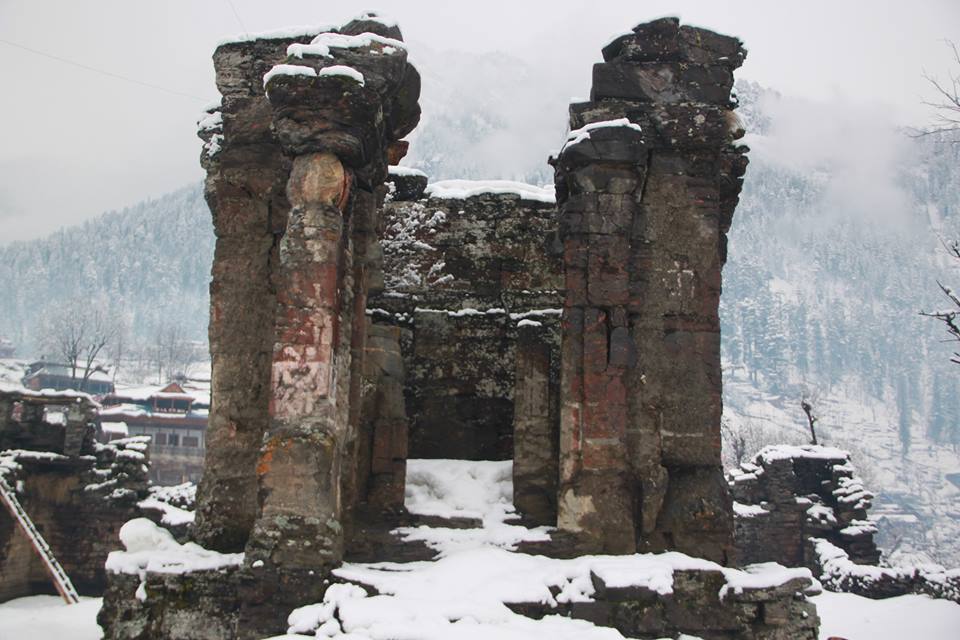
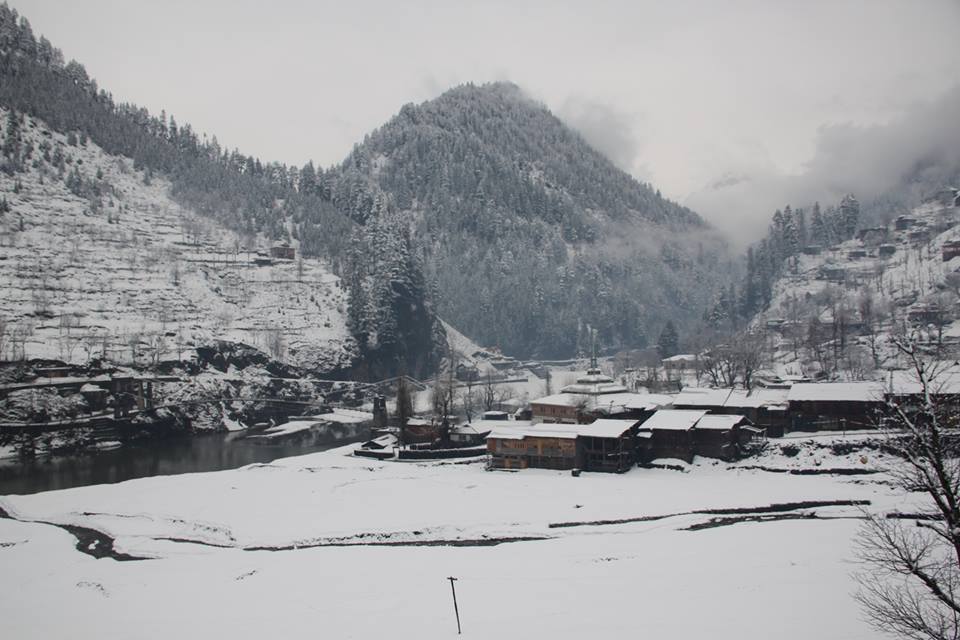
(Photo courtesy: Rukhsana Khan)
References:
the shrine of Sharda-note B-I 37-Kalhana’s Rajatarangini(M.A.Stein)
tirtha of Kapatesvara,p-467,Kalhana’s Rajtarangini-ii volme(M.A.Stein)
http://www.ikashmir.net/saints/shankracharyavisittokashmir.html
https://en.wikipedia.org/wiki/Sharada_Peeth
https://en.wikipedia.org/wiki/Sandalwood
http://www.sringeri.net/history
http://www.sringeri.net/history/sri-adi-shankaracharya/biography/abridged-madhaviya-shankara-digvijayam/part-5
http://panunkashmir.org/kashmirsentinel/maya1999/4.5.html
http://koausa.org/temples/sharda3.html
By Sandeep
|
Posted in hinduism, hindus, history, india, JAMMU & KASHMIR, kashmir, kashmiri pandits, P.O.K, pakistan, philosophy, religion, sprituality
|
Tagged Adi Shankaracharaya, Adi Shankaracharaya in kashmir, jonaraja, Kapetshwar temple, kapteshwar temple, KASHMIR BLOG, kashmir blogs, kashmir pandits, sandalwood idol of Sarda, sandalwood idol of shiva, sharda math, sharda temple, shardapeeth, sir A.E.Stein, sringeri peetham
|
Comments (2)
3 reasons for the Radicalization of Kashmir(1947-90)..
October 29, 2015 – 11:36 am
3 reasons about the Radicalization of Kashmir(1947-90)..
In 1990,Tej Krishan Razdan, came back from Punjab to his native village in Budgam District, as he had heard in the TV, and read in the Newspapers about the deteriorating situation in the Kashmir valley. The Target-Killing of Kashmiri Pandits had started. He wanted to make sure that his family is safe and was thinking of shifting his family to a safer place. Little did he knew , What was in store for Him.
On 12th Feb. 1990,in Budgam, He was accosted by one of his Muslim friends. He persuaded Tej Krishan, to accompany him to Srinagar and both boarded the Matador from Budgam to Srinagar. When the Matador reached Gaw-Kadal, Suddenly, his Friend, pulled out a Revolver and Shot him several Times in the chest. He was dragged to the Local Masjid and his Dead Body was put on display there. It was only in the evening, with Police intervention, his body could be secured.
He was killed mercilessly. So were hundreds of KP’s. Before Killing a KP , the militant in many cases would subject the Body to dismemberment, and incidents , like gouging out of eyes, Multiple Fractures, Skinning of KP Victims took place. The inhuman way of Killing was a part of their Planned Strategy, That was carried out by the Militants backed by Pakistan. The message was clear to the KP’s that, “Don’t you dare to stay here “.
Apart from the target individual killings of the Pandits; to keep away KP’s from coming back into the valley, the Pakistani Backed Militants also carried out Massacres’ of Kashmiri Pandits from Time to Time. On 21 Mar. 1997, in Sangrampra, 7 KP’s were led away in the dark and shot dead. On 25 jan. 1998, in Wandhama, 23 KP’s were massacred and the local Temple damaged. On 23 March 2003, at Nadimarg, 24 KP’s were massacred.
Not only that, to dissuade the KP’s and instill a fear psychosis, the Militants confronted KP’s in Jammu region too.3 KP’s were Killed in Garhat Gool village, Ramban by the Militants impersonated as Army men. They identified and separated 5 KP’s amongst the passengers that were travelling in the Bus. There were Muslims as well as Hindu Dogras too travelling in the same Bus, but they were not touched by the Militants. The 5 KP-men were ordered to alight from the Bus. Sensing danger, 2 KP’s escaped from the clutches of their captors as one jumped down into the ravine and the other one ran up towards the Hill. The rest of the3 KP’s were Shot Dead. There was a 6th KP in the Bus, who escaped Death , as he did not revealed his real identity. Instead, he had introduced himself as a Muslim and was thus saved.
The message was again Loud and Clear to KP’s-“Don’t you dare to return, back to the valley”.
All these actions were not abrupt. In fact, if we look from 1947 onwards, the complete-Radicalization of the valley took many years and was carried out in at least 3 stages, before its culmination in 1990.
Plebscite Front(1955)
Sheikh Abdullah’s Bonhomie with Jawahar Lal Nehru was well Known. He formed “All Jammu Kashmir Muslim Conference” in Oct.1932.The name itself suggested that the party ,he formed,was Muslim-centric. In 1939, He changed the name of “Muslim conference” to “All Jammu & Kashmir National Conference” and affiliated it to “All India state people’s conference”. At that time Pt.Jawahar Lal Nehru was the president of that conference. It is evident that Sheikh Abdullah was persuaded by Pt Nehru in one way or other to shun the Muslim conference, make a new party that looks secular, and affiliate the party to his conference.
After Maharaja Hari Singh signed the “Treaty of accession” with India, with the support of PT.Nehru, Sheikh was elected as the 2nd Prime Minister of J&K in March 1948. He remained as the Prime Minister of J&K till 1953, when he failed to prove his majority in the House. In fact all his Cabinet pledged their support to Bakshi Ghulam Mohammed-who went on to become the third Prime minister of J&K.PT. Nehru too was instrumental in abdicating the Shiekh. By, this time, the cracks had appeared in the Friendship of Pt.Nehru and Sheikh.
Pt. Nehru was informed by the Indian intelligence agencies about the ploy hatched by the Pakistani Intelligence agencies, CIA and Sheikh Abdullah and their information was substantiated by the Proof and Documents. From the Proof, It became clear that Sheikh was working against the Nation. For this Sedition, He was incarcerated by Bakshi Gh. Mohd.
The Plebiscite front was formed by Mohammed Afzal Beg -a trusted aide of Sheikh Abdllah- on 9th Aug 1955.He became its titular Head and Sheikh Abdullah was made the Patron of the Front. .From 1955 till 1974, The Plebiscite front acted as the main opposition. To Garner support, the members of this group exploited the religious sentiments of the Muslim Majority of the valley. Plebiscite front issued its own version of decree; and urged the people of Kashmir not to vote for the Congress or NC. Pertinently, National Conference was merged into the congress from 1965 till 1975.
At various gatherings, they would invoke the verses from the Holy “Quran” and incite the religious sentiments amongst the people. They intertwined politics and Islam for as long as “Plebiscite front” existed. They sowed the seeds of Hatred between the Hindus and Muslims of Kashmir.
The objective of the Plebiscite front was to carry out a referendum and through the referendum come to the conclusion whether:
1.Kashmir should accede into Pakistan
2.Remain with India
3.Become Independent Nation.
But after the “Indira-Sheikh” accord in 1974, Strangely , or rather comically, the Titular Head of the Front, Mohammed Afzal Beg, proclaimed that the purpose of the Plebiscite front was to cement Kashmir into India forever. Following the agreement with the Union government, Sheikh Abdullah merged the Plebiscite Front into a renewed National Conference in 1975, which won the democratic elections and affirmed Abdullah as the new Chief Minister of J&K.
However, During their existence of almost 20 years, the seeds of communalism had sprouted in the Hearts of the Kashmiri Muslim and remained so even today.
Unsuccesful Operation Gibraltor(1965):
Ever since, J&K acceded into the Dominion of India, Pakistan had tried its best to snatch away Kashmir by any Means. They had kept a close watch on India .When in 1962, the war broke out between India and China; the vulnerability of India got exposed in front of the World. It became evident that the Militarily equipments are Out Dated and their Air-Force is below standard. At least, this is what Pakistan thought. They were confident that the weapons that India possessed at that time are no match to their’s.
The episode of 1963, when the Holy relic of Prophet Mohamed was stolen, had flared up the religious emotions of the Kashmiri Muslims, and the episode had developed an intense feeling of Islam in KM’s. Pakistan was of the view that because of this incident, KM’s will side with them, if they happen to attack India and enter into Kashmir.
In 1965, They got another shot in the arm, when in an armed confrontation with India at Rann of Kutch, they had some gain .All these factors, made them believe that they not only ready to take India Heads on, But defeat India and annex Kashmir. However, they did not wanted to indulge into a full-fledged war with India.
Under the Operation Gibraltar; Pakistan had planned to capture all the high passes of Jammu Kashmir, and send their troops in Disguise into J&K, incite the Public against India and give the whole episode the color of Local uprising against the state. Their initial Plans succeeded to some extent. But their Theory, that the locals with side with them, was far away from the reality.
Pakistan pushed 40,000 Army personal of Azad Kashmir Battalion impersonated as Locals(Pakistan claims less than 1000) into J&K, But they were identified by the locals of Kashmir as intruders and non-locals. It was the Locals-who gave information to the Indian Army about the intrusion-and the Army took the corrective actions immediately. The fiasco of “Operation Gibralter” resulted in the war of 1965 between India and Pakistan.
Operation Topac(1988):
In April 1988, the President of Pakistan Gen. Zia-Ul-Hak, called a meeting in the President’s residential office. The meeting was attended by selected corps commanders, Top ISI Officials, an Afgan Mujahid Leader, and two Kashmir Liberation Front Leaders.The main contents from Presidents address were leaked through a mole from a third world country, and became available to India’s Research and Analysis wing (RAW) agents somewhere in sept-Oct 1988.The contents were as follows:
“Gentlemen, I have spoken on this subject at length before, therefore, I will leave out the details. As you know due to our pre-occupation in Afghanistan, in the service of Islam, I have not been able to put these plans before you earlier. Let there be no mistake, however, that our aim remains quite clear and firm-the liberation of the Kashmir Valley-our Muslim Kashmiri brothers cannot be allowed to stay with India for any length of time, now. In the past we had opted for hamhanded military options and therefore, failed. So, as I have mentioned before, we will now keep our military option for the last moment as a coup de grace, if and when necessary. Our Kashmiri brethren in the valley, though with us in their hearts and minds, are simple-minded folk and do not easily take to the type of warfare to which, say, a Punjabi or an Afghan takes to naturally, against foreign domination. The Kashmiris however have a few qualities which we can exploit. First, his shrewdness and intelligence; second, his power to persevere under pressure; and the third, if I may so say, he is a master of political intrigue. If we provide him means through which he can best utilize these qualities – he will deliver the goods. Sheer brute force is in any case not needed in every type of warfare, especially so in the situation obtaining in the Kashmir Valley, as I have explained earlier.
Here we must adopt those methods of combat which the Kashmiri mind can grasp and cope with-in other words, a coordinated use of moral and physical means, other than military operations, which will destroy the will of the enemy, damage his political capacity and expose him to the world as an oppressor. This aim, Gentlemen, shall be achieved in the initial phases.
In the first phase, which may, if necessary, last a couple of years we will assist our Kashmiri brethren in getting hold of the power apparatus of the State by political subversion and intrigue. I would like to mention here that as no Government can survive in Occupied Kashmir unless it has the tacit approval of Delhi, it would be unrealistic to believe that the MUF or any such organization can seize power through democratic or other means. In view of this,’ power must “apparently” remain with those whom New Delhi favours. We must therefore ensure that certain “favoured politicians” from the ruling elite be selected who would corporate with us in subverting all effective organs of the State. In brief, our plan for Kashmir, which will be codenamed as “Op Topac” will be as follows:
PHASE-1(TOPAC)
A low-level insurgency against the regime, so that it is under siege, but does not collapse as we would not yet want central rule imposed by Delhi.
We plant our chosen men in all the key positions; they will subvert the police forces, financial institutions, the communication network and other important organizations.
We whip up anti-Indian feelings amongst ” the students and peasants, preferably on some religious issues, so that we can enlist their active support for rioting and anti-Government demonstrations.
Organize and train subversive elements’ and armed groups with capabilities, initially, to deal with paramilitary forces located in the valley.
Adopt and develop means to cut off lines of communication between Jammu & Kashmir and within Kashmir and Ladakh by stealth, without recourse to force. The road over Zojila upto Kargil and the road over Khardungla should receive our special attention.
In collaboration with Sikh extremists, create chaos and terror in Jammu to divert attention from the valley at a critical juncture and discredit the regime even in the Hindu mind.
Establish virtual control in those parts of the Kashmir Valley where the Indian Army is not located or deployed. The Southern Kashmir Valley may be one such region.
PHASE-2(TOPAC)
Exert maximum pressure on the Siachen. Kargil and Rajauri-Punch sectors to force the Indian Army to deploy reserve formations outside the main Kashmir Valley.
Attack and destroy base depots and HQ located at Srinagar, Pattan, Kupwara. Baramulla. Bandipur and Chowkiwala by covert action at a given time.
Some Afghan Mujahideen, by then settled in Azad Kashmir, will then infiltrate in selected pockets with a view to extending areas of our influence. This aspect will require detailed and ingenious planning. The fiasco of Op Gibraltar (1965) holds many lessons for us here.
Finally a Special Force under selected retired officers belonging to Azad Kashmir, with the hard core consisting of Afghans, will be ready to attack and destroy airfields, radio stations, block Banihal Tunnel and Kargil-Leh Highway.
At a certain stage of the operations Punjab and adjacent areas of Jammu & Kashmir will be put under maximum pressure internally by our offensive posture.
PHASE-3(TOPAC)
Detailed plans for the liberation of Kashmir Valley and establishment of an independent Islamic State in the third phase will follow.
We do not have much time. Maximum pressure must be exerted before the general elections in India and before Indian Army reserves which are still bogged down in Sri Lanka become available. By the Grace of God, we have managed to accumulate large stocks of modern arms and ammunition from US consignments intended for Afghan Mujahideen. This will help our Kashmiri brethren achieve their goals. Even if we create a kind of “Azad Kashmir” in some remote parts of Occupied Kashmir as a beginning, the next step may not be as difficult as it appears today. On the other hand, it should also be noted that a part of the Indian Army, particularly the Infantry, will be well trained by now for such a situation due to their experience in the North-Eastern Region and more recently in Sri Lanka. But the situation in Kashmir will be somewhat different; more like the “Infetada” of Palestinians in towns, and on the pattern of the Mujahideen in the countryside to attack hard targets. A. period of chaos in the State is essential in the circumstances.
And what of our Chinese friends? They can do no more than ensure that Indian forces deployed against them are not moved. out; but this may be required only at the last or the third stage of our operations. Of course, if we are in serious trouble, the Chinese and our other powerful friends shall come to our rescue one way or the other. They will ensure if we do not
win-at least we don’t lose.
.”Finally, I wish to caution you once more that it will be disastrous to believe that we can take on India in a straight contest. We must, therefore, be careful and maintain a low military profile so that the Indians do not find an excuse to pre-empt us, by attacking at a time and at a point of their own choosing, at least before Phase 1 and 2 of the Operation are over. We must pause and assess the course of operations after each phase, as our strategy and plans may require drastic changes in certain circumstances. I need not emphasize any further that a deliberate and objective assessment of the situation must be ensured at each stage, otherwise a stalemate will follow with no good for Pakistan.
Conclusion
The seeds sown by the “Plebiscite Front”, and watered by its communal politics, and manure by Pakistan with “Operation Topac” gradually began bearing fruits for Pakistan. 1990 Jan is a testimony to the fact, that how the whole administration collapsed , and how the Mobocracy was rampant .The Fiasco of Operation Gibraltar prompted Pakistan to think differently.Rather than attacking India directly, they started a psychological war based on Islam and pushed forward their own version of islamization, that obliterated the Rishi-Sufi culture and burgeoned the salafi-wahabi culture in Kashmir. All the above factors made Kashmir the Hot-bed of Radicalization……
Refrences;
1. https://en.wikipedia.org/wiki/Operation_Gibraltar
2. http://www.indiandefencereview.com/spotlights/op-topac-the-kashmir-imbroglio-i/3/
3. https://en.wikipedia.org/wiki/Plebiscite_Front
4. https://en.wikipedia.org/wiki/Jammu_%26_Kashmir_National_Conference
5. https://en.wikipedia.org/wiki/1998_Wandhama_massacre
6. https://en.wikipedia.org/wiki/2003_Nadimarg_massacre
7. https://en.wikipedia.org/wiki/1997_Sangrampora_massacre
8. http://www.rediff.com/news/jun/16kash.htm
In 1990,Tej Krishan Razdan, came back from Punjab to his native village in Budgam District, as he had heard in the TV, and read in the Newspapers about the deteriorating situation in the Kashmir valley. The Target-Killing of Kashmiri Pandits had started. He wanted to make sure that his family is safe and was thinking of shifting his family to a safer place. Little did he knew , What was in store for Him.
On 12th Feb. 1990,in Budgam, He was accosted by one of his Muslim friends. He persuaded Tej Krishan, to accompany him to Srinagar and both boarded the Matador from Budgam to Srinagar. When the Matador reached Gaw-Kadal, Suddenly, his Friend, pulled out a Revolver and Shot him several Times in the chest. He was dragged to the Local Masjid and his Dead Body was put on display there. It was only in the evening, with Police intervention, his body could be secured.
He was killed mercilessly. So were hundreds of KP’s. Before Killing a KP , the militant in many cases would subject the Body to dismemberment, and incidents , like gouging out of eyes, Multiple Fractures, Skinning of KP Victims took place. The inhuman way of Killing was a part of their Planned Strategy, That was carried out by the Militants backed by Pakistan. The message was clear to the KP’s that, “Don’t you dare to stay here “.
Apart from the target individual killings of the Pandits; to keep away KP’s from coming back into the valley, the Pakistani Backed Militants also carried out Massacres’ of Kashmiri Pandits from Time to Time. On 21 Mar. 1997, in Sangrampra, 7 KP’s were led away in the dark and shot dead. On 25 jan. 1998, in Wandhama, 23 KP’s were massacred and the local Temple damaged. On 23 March 2003, at Nadimarg, 24 KP’s were massacred.
Not only that, to dissuade the KP’s and instill a fear psychosis, the Militants confronted KP’s in Jammu region too.3 KP’s were Killed in Garhat Gool village, Ramban by the Militants impersonated as Army men. They identified and separated 5 KP’s amongst the passengers that were travelling in the Bus. There were Muslims as well as Hindu Dogras too travelling in the same Bus, but they were not touched by the Militants. The 5 KP-men were ordered to alight from the Bus. Sensing danger, 2 KP’s escaped from the clutches of their captors as one jumped down into the ravine and the other one ran up towards the Hill. The rest of the3 KP’s were Shot Dead. There was a 6th KP in the Bus, who escaped Death , as he did not revealed his real identity. Instead, he had introduced himself as a Muslim and was thus saved.
The message was again Loud and Clear to KP’s-“Don’t you dare to return, back to the valley”.
All these actions were not abrupt. In fact, if we look from 1947 onwards, the complete-Radicalization of the valley took many years and was carried out in at least 3 stages, before its culmination in 1990.
Plebscite Front(1955)
Sheikh Abdullah’s Bonhomie with Jawahar Lal Nehru was well Known. He formed “All Jammu Kashmir Muslim Conference” in Oct.1932.The name itself suggested that the party ,he formed,was Muslim-centric. In 1939, He changed the name of “Muslim conference” to “All Jammu & Kashmir National Conference” and affiliated it to “All India state people’s conference”. At that time Pt.Jawahar Lal Nehru was the president of that conference. It is evident that Sheikh Abdullah was persuaded by Pt Nehru in one way or other to shun the Muslim conference, make a new party that looks secular, and affiliate the party to his conference.
After Maharaja Hari Singh signed the “Treaty of accession” with India, with the support of PT.Nehru, Sheikh was elected as the 2nd Prime Minister of J&K in March 1948. He remained as the Prime Minister of J&K till 1953, when he failed to prove his majority in the House. In fact all his Cabinet pledged their support to Bakshi Ghulam Mohammed-who went on to become the third Prime minister of J&K.PT. Nehru too was instrumental in abdicating the Shiekh. By, this time, the cracks had appeared in the Friendship of Pt.Nehru and Sheikh.
Pt. Nehru was informed by the Indian intelligence agencies about the ploy hatched by the Pakistani Intelligence agencies, CIA and Sheikh Abdullah and their information was substantiated by the Proof and Documents. From the Proof, It became clear that Sheikh was working against the Nation. For this Sedition, He was incarcerated by Bakshi Gh. Mohd.
The Plebiscite front was formed by Mohammed Afzal Beg -a trusted aide of Sheikh Abdllah- on 9th Aug 1955.He became its titular Head and Sheikh Abdullah was made the Patron of the Front. .From 1955 till 1974, The Plebiscite front acted as the main opposition. To Garner support, the members of this group exploited the religious sentiments of the Muslim Majority of the valley. Plebiscite front issued its own version of decree; and urged the people of Kashmir not to vote for the Congress or NC. Pertinently, National Conference was merged into the congress from 1965 till 1975.
At various gatherings, they would invoke the verses from the Holy “Quran” and incite the religious sentiments amongst the people. They intertwined politics and Islam for as long as “Plebiscite front” existed. They sowed the seeds of Hatred between the Hindus and Muslims of Kashmir.
The objective of the Plebiscite front was to carry out a referendum and through the referendum come to the conclusion whether:
1.Kashmir should accede into Pakistan
2.Remain with India
3.Become Independent Nation.
But after the “Indira-Sheikh” accord in 1974, Strangely , or rather comically, the Titular Head of the Front, Mohammed Afzal Beg, proclaimed that the purpose of the Plebiscite front was to cement Kashmir into India forever. Following the agreement with the Union government, Sheikh Abdullah merged the Plebiscite Front into a renewed National Conference in 1975, which won the democratic elections and affirmed Abdullah as the new Chief Minister of J&K.
However, During their existence of almost 20 years, the seeds of communalism had sprouted in the Hearts of the Kashmiri Muslim and remained so even today.
Unsuccesful Operation Gibraltor(1965):
Ever since, J&K acceded into the Dominion of India, Pakistan had tried its best to snatch away Kashmir by any Means. They had kept a close watch on India .When in 1962, the war broke out between India and China; the vulnerability of India got exposed in front of the World. It became evident that the Militarily equipments are Out Dated and their Air-Force is below standard. At least, this is what Pakistan thought. They were confident that the weapons that India possessed at that time are no match to their’s.
The episode of 1963, when the Holy relic of Prophet Mohamed was stolen, had flared up the religious emotions of the Kashmiri Muslims, and the episode had developed an intense feeling of Islam in KM’s. Pakistan was of the view that because of this incident, KM’s will side with them, if they happen to attack India and enter into Kashmir.
In 1965, They got another shot in the arm, when in an armed confrontation with India at Rann of Kutch, they had some gain .All these factors, made them believe that they not only ready to take India Heads on, But defeat India and annex Kashmir. However, they did not wanted to indulge into a full-fledged war with India.
Under the Operation Gibraltar; Pakistan had planned to capture all the high passes of Jammu Kashmir, and send their troops in Disguise into J&K, incite the Public against India and give the whole episode the color of Local uprising against the state. Their initial Plans succeeded to some extent. But their Theory, that the locals with side with them, was far away from the reality.
Pakistan pushed 40,000 Army personal of Azad Kashmir Battalion impersonated as Locals(Pakistan claims less than 1000) into J&K, But they were identified by the locals of Kashmir as intruders and non-locals. It was the Locals-who gave information to the Indian Army about the intrusion-and the Army took the corrective actions immediately. The fiasco of “Operation Gibralter” resulted in the war of 1965 between India and Pakistan.
Operation Topac(1988):
In April 1988, the President of Pakistan Gen. Zia-Ul-Hak, called a meeting in the President’s residential office. The meeting was attended by selected corps commanders, Top ISI Officials, an Afgan Mujahid Leader, and two Kashmir Liberation Front Leaders.The main contents from Presidents address were leaked through a mole from a third world country, and became available to India’s Research and Analysis wing (RAW) agents somewhere in sept-Oct 1988.The contents were as follows:
“Gentlemen, I have spoken on this subject at length before, therefore, I will leave out the details. As you know due to our pre-occupation in Afghanistan, in the service of Islam, I have not been able to put these plans before you earlier. Let there be no mistake, however, that our aim remains quite clear and firm-the liberation of the Kashmir Valley-our Muslim Kashmiri brothers cannot be allowed to stay with India for any length of time, now. In the past we had opted for hamhanded military options and therefore, failed. So, as I have mentioned before, we will now keep our military option for the last moment as a coup de grace, if and when necessary. Our Kashmiri brethren in the valley, though with us in their hearts and minds, are simple-minded folk and do not easily take to the type of warfare to which, say, a Punjabi or an Afghan takes to naturally, against foreign domination. The Kashmiris however have a few qualities which we can exploit. First, his shrewdness and intelligence; second, his power to persevere under pressure; and the third, if I may so say, he is a master of political intrigue. If we provide him means through which he can best utilize these qualities – he will deliver the goods. Sheer brute force is in any case not needed in every type of warfare, especially so in the situation obtaining in the Kashmir Valley, as I have explained earlier.
Here we must adopt those methods of combat which the Kashmiri mind can grasp and cope with-in other words, a coordinated use of moral and physical means, other than military operations, which will destroy the will of the enemy, damage his political capacity and expose him to the world as an oppressor. This aim, Gentlemen, shall be achieved in the initial phases.
In the first phase, which may, if necessary, last a couple of years we will assist our Kashmiri brethren in getting hold of the power apparatus of the State by political subversion and intrigue. I would like to mention here that as no Government can survive in Occupied Kashmir unless it has the tacit approval of Delhi, it would be unrealistic to believe that the MUF or any such organization can seize power through democratic or other means. In view of this,’ power must “apparently” remain with those whom New Delhi favours. We must therefore ensure that certain “favoured politicians” from the ruling elite be selected who would corporate with us in subverting all effective organs of the State. In brief, our plan for Kashmir, which will be codenamed as “Op Topac” will be as follows:
PHASE-1(TOPAC)
A low-level insurgency against the regime, so that it is under siege, but does not collapse as we would not yet want central rule imposed by Delhi.
We plant our chosen men in all the key positions; they will subvert the police forces, financial institutions, the communication network and other important organizations.
We whip up anti-Indian feelings amongst ” the students and peasants, preferably on some religious issues, so that we can enlist their active support for rioting and anti-Government demonstrations.
Organize and train subversive elements’ and armed groups with capabilities, initially, to deal with paramilitary forces located in the valley.
Adopt and develop means to cut off lines of communication between Jammu & Kashmir and within Kashmir and Ladakh by stealth, without recourse to force. The road over Zojila upto Kargil and the road over Khardungla should receive our special attention.
In collaboration with Sikh extremists, create chaos and terror in Jammu to divert attention from the valley at a critical juncture and discredit the regime even in the Hindu mind.
Establish virtual control in those parts of the Kashmir Valley where the Indian Army is not located or deployed. The Southern Kashmir Valley may be one such region.
PHASE-2(TOPAC)
Exert maximum pressure on the Siachen. Kargil and Rajauri-Punch sectors to force the Indian Army to deploy reserve formations outside the main Kashmir Valley.
Attack and destroy base depots and HQ located at Srinagar, Pattan, Kupwara. Baramulla. Bandipur and Chowkiwala by covert action at a given time.
Some Afghan Mujahideen, by then settled in Azad Kashmir, will then infiltrate in selected pockets with a view to extending areas of our influence. This aspect will require detailed and ingenious planning. The fiasco of Op Gibraltar (1965) holds many lessons for us here.
Finally a Special Force under selected retired officers belonging to Azad Kashmir, with the hard core consisting of Afghans, will be ready to attack and destroy airfields, radio stations, block Banihal Tunnel and Kargil-Leh Highway.
At a certain stage of the operations Punjab and adjacent areas of Jammu & Kashmir will be put under maximum pressure internally by our offensive posture.
PHASE-3(TOPAC)
Detailed plans for the liberation of Kashmir Valley and establishment of an independent Islamic State in the third phase will follow.
We do not have much time. Maximum pressure must be exerted before the general elections in India and before Indian Army reserves which are still bogged down in Sri Lanka become available. By the Grace of God, we have managed to accumulate large stocks of modern arms and ammunition from US consignments intended for Afghan Mujahideen. This will help our Kashmiri brethren achieve their goals. Even if we create a kind of “Azad Kashmir” in some remote parts of Occupied Kashmir as a beginning, the next step may not be as difficult as it appears today. On the other hand, it should also be noted that a part of the Indian Army, particularly the Infantry, will be well trained by now for such a situation due to their experience in the North-Eastern Region and more recently in Sri Lanka. But the situation in Kashmir will be somewhat different; more like the “Infetada” of Palestinians in towns, and on the pattern of the Mujahideen in the countryside to attack hard targets. A. period of chaos in the State is essential in the circumstances.
And what of our Chinese friends? They can do no more than ensure that Indian forces deployed against them are not moved. out; but this may be required only at the last or the third stage of our operations. Of course, if we are in serious trouble, the Chinese and our other powerful friends shall come to our rescue one way or the other. They will ensure if we do not
win-at least we don’t lose.
.”Finally, I wish to caution you once more that it will be disastrous to believe that we can take on India in a straight contest. We must, therefore, be careful and maintain a low military profile so that the Indians do not find an excuse to pre-empt us, by attacking at a time and at a point of their own choosing, at least before Phase 1 and 2 of the Operation are over. We must pause and assess the course of operations after each phase, as our strategy and plans may require drastic changes in certain circumstances. I need not emphasize any further that a deliberate and objective assessment of the situation must be ensured at each stage, otherwise a stalemate will follow with no good for Pakistan.
Conclusion
The seeds sown by the “Plebiscite Front”, and watered by its communal politics, and manure by Pakistan with “Operation Topac” gradually began bearing fruits for Pakistan. 1990 Jan is a testimony to the fact, that how the whole administration collapsed , and how the Mobocracy was rampant .The Fiasco of Operation Gibraltar prompted Pakistan to think differently.Rather than attacking India directly, they started a psychological war based on Islam and pushed forward their own version of islamization, that obliterated the Rishi-Sufi culture and burgeoned the salafi-wahabi culture in Kashmir. All the above factors made Kashmir the Hot-bed of Radicalization……
Refrences;
1. https://en.wikipedia.org/wiki/Operation_Gibraltar
2. http://www.indiandefencereview.com/spotlights/op-topac-the-kashmir-imbroglio-i/3/
3. https://en.wikipedia.org/wiki/Plebiscite_Front
4. https://en.wikipedia.org/wiki/Jammu_%26_Kashmir_National_Conference
5. https://en.wikipedia.org/wiki/1998_Wandhama_massacre
6. https://en.wikipedia.org/wiki/2003_Nadimarg_massacre
7. https://en.wikipedia.org/wiki/1997_Sangrampora_massacre
8. http://www.rediff.com/news/jun/16kash.htm
By Sandeep
|
Posted in kashmir
|
Tagged BJP, CONGRESS-I, kashmir, kashmiri pandits, KP, MASSACRE OF KASHMIRI PANDITS, NANDIMARG, NATIONAL CONFERENCE, OPERATION GIBRALTER, OPERATION TOPAC, PLEBISCITE FRONT, SANGRAMPURA, WANDHAMA
|
Comments (0)
My recent conversations in Kashmir…..
September 30, 2015 – 12:36 pm
The jinx of going back to Kashmir after a gap of 25 years was broken
last year by me; when I opted to go to the “Gangabal Yatra”. This year
again, in Jul-Aug, I re-visited Kashmir with my Family. A month later, I
was once-again in the lap of “Maej-Kashir”(Mother Kashmir) as I went
for the “Gangabal Yatra” from 19-24 sep 2015.
One of my KP Friend-a travel buff-had recommended a guest house in Brain, Nishat. I was in touch with the Manager of the Guest house from last 15 days .I had informed him that I along with my friends will be checking-in on 22nd sep. We had expected to reach the Guest house by evening. We started from Naranaag at around 4 or 4.30 p.m and reached Nishat at around 6 p.m. I and my group of 4 friends alighted from the Bus at Nishat Garden amidst rains. It was already 6.00p.m.Because of the Rains, most of the Autos and Taxis were off the road. Immediately, we called up the Guest house and requested them to arrange a Taxi for us. In the meanwhile, we took shelter at a Shop opposite Nishat Garden. After waiting for another Hour and a Half, The Manager of the Guest House sent a Taxi to us.
The Driver of the Taxi greeted us with a “Namaskar”. His warm welcome was a pleasant surprise to us all. As soon as he took control of the steering, he started talking about “Good old days”, when KP’s and KM’s lived together. In a way, he was bold enough, as he admitted the atrocities committed by the majority on the minority KP’s in the early nineties. “We wronged you. But then, it was a different Phase.” Justifying the violence that marred the valley in nineties. I was looking at him, while his eyes were fixed on the road ahead. I could also smell Alcohol, while he spoke to me. “But then, Jagmohan too was responsible for your Exodus. He planned your exodus and you all fell into his trap.” He continued. Driving in the dark, through the alien lanes and By-lanes of Brian, Soon, we reached the Guest House.
We were received by the Manager of the Guest House-Bilal. He showed us the rooms. The rooms were Big and Tidy. In a traditional Kashmiri Hospitability, he served us the hot piping “Kehwa”. Sipping the Hot Kehwa, we unpacked our Bags, changed our Clothes, and tucked ourselves under the smooth, warm quilts. We were tired and We had planned an early Dinner, as we wanted to go to the bed as early as possible.
But then, the owner of the Guest-House Mr. Mir came in.
“The room is your property for the next 2 days.” He gesticulated. Out of courtesy, I respectfully said, “Please have a seat sir”. He immediately ordered a chair. Bilal hurriedly brought a Plastic Chair. After sitting on the Chair, He immediately enquired about our names and the localities where we lived in. When Manish and I told him that we used to live in Rainawari, He pressed his forehead with his right Thumb, as if recollecting something.
“Many years back, I was working as a contractor. I had been given a contract to build a Road near “Puej Mohalla” in Rainawari. One day, I heard the distinct Gun-Shots. From the sounds, it seemed as if many rounds of bullets were fired.” He said with intermittent pauses. We were all glued to his narrative. I could see the tense lines building on his forehead. “I also ran for Shelter. Suddenly a Door opened in a lane, and a lady told me to come inside.” Said he ,in emotive voice. “I hid myself under the stair case. The whole area was cordoned off by the CRPF. Suddenly few CRPF men barged in.” He again paused. His voice had become softer and feeble. “Those men, raped the ladies of the House, and I could do nothing.” He sobbed. Tears rolled down from the corner of his eyes. “How can they do this. They are not Humans.” There was a pin drop silence in the Room.
His emotional -narration was so much believable. In our Hearts, we empathized and sympathized with the victims.
Then he veered towards Jagmohan, “He told you to go out of Kashmir, so that he could kill one lack Muslims.” He said with a certainty. We all protested that this is not true. But, he was not in a mood to listen. Manish got irritated. He threw the quilt to his right, and stood up to confront our old Host. “The loudspeakers of the Masjids were ordering the Pandits to leave the valley. Our men were being selectively killed. The masses had risen against India. And for them, we KP’s were India.” He was fuming.
Our Host looked unconcerned. Suddenly, he stood up. Pulled his shirt up and said, “see this long scar on my chest; I had had an open heart Surgery. I have Diabetes also.” The tension was diffused by his Statement as we felt pity on his condition. It was evident that nor our Host, nor we wanted any sort of acrimony. But in spite of everything; the political discussion continued. It seemed as if our Host had deep interest in the political affairs of the Valley.
Mr Mir’s sincerity became dubious, when he touched the subject of KP’s and the reason , why KP’s are not returning back into the valley. While narrating an incident about a KP girl; whom our Host claimed to have loved as his own Daughter, He told us that the KP girl is working in a foreign embassy in Delhi, and that she is drawing a salary of 1.75lakh/month. He also claimed that she is getting a relief( RS 5K/month) from the GOI in lieu of being a KP migrant. He claimed that She is not returning back to the valley, because, she told him that she might loose the Relief amount if she opt to come back to the valley.
During our discussion, The topic of our current Prime Minister also popped up. Our Host, Mr. Mir, while speaking with dismay about Mr. Modi told us that He (Mr. Modi) is communal. To substantiate his statement, he said with a whiff of anger, “When our Babri-Masjid was broken, It was Mr. Modi who was responsible for the demolition of the Mosque.” I asked him surprisingly, “How is it sir?”. He answered with confidence, “ Because, he was the Home-Minister of India at that time.”
We all grinned. We told him that he was not our Home-Minister or for that matter any “Minister” at that time, But it seemed that he had already made up an image of Mr. Modi. May be to defend his argument, he started narrating about the environment that prevailed in the early Nineties. The love for the militants. The making of the revolution.
When our Host had entered into our room, and narrated his first anecdote, we had believed him. Then when he presented his views on the reason , as to why KP’s are not returning back to the valley, His sincerity posed a big question mark for us! And then when he claimed with absolute confidence that Mr. Modi was the Home Minister of India, when Babri Masjid was demolished; it became evident that He had a biased-typical-Muslim- outlook. And that he was cooking up the stories.
We had started to reason with him, by giving him the exact details. When it became clear to him, that he no longer can win against us, in the discussions, he retracted. As he was about to leave, He came closer to my Bed, looked straight in my eyes and said with a whiff pride and frustration, “My elder son is settled in England, My younger Son too is settled. But if Both of my sons would have got killed in the early Nineties for being Militants, I wouldn’t have been saddened. In fact, I would have felt proud.” And he left.
I looked at my friends. They were smiling and nodding their Head in Disbelief. Soon, we too followed him and had our Dinner Downstairs.
Mr. Mir , His family and Manager served us very well. Their Hospitality was superb. They made us feel very comfortable. We did not discuss politics after that episode. It was sort of an tacit agreement between us and them.
Mr. Mir represents the section of the Muslim society of Kashmir. His views about KP’s are the view of the Majority of Muslims of Kashmir. However, It is amusingly- intriguing to see how, to induce a feel-good factor to the collective conscience of the KM’s; the ethnic cleansing of the KP’s is being justified.
And that too, Without remorse…….
One of my KP Friend-a travel buff-had recommended a guest house in Brain, Nishat. I was in touch with the Manager of the Guest house from last 15 days .I had informed him that I along with my friends will be checking-in on 22nd sep. We had expected to reach the Guest house by evening. We started from Naranaag at around 4 or 4.30 p.m and reached Nishat at around 6 p.m. I and my group of 4 friends alighted from the Bus at Nishat Garden amidst rains. It was already 6.00p.m.Because of the Rains, most of the Autos and Taxis were off the road. Immediately, we called up the Guest house and requested them to arrange a Taxi for us. In the meanwhile, we took shelter at a Shop opposite Nishat Garden. After waiting for another Hour and a Half, The Manager of the Guest House sent a Taxi to us.
The Driver of the Taxi greeted us with a “Namaskar”. His warm welcome was a pleasant surprise to us all. As soon as he took control of the steering, he started talking about “Good old days”, when KP’s and KM’s lived together. In a way, he was bold enough, as he admitted the atrocities committed by the majority on the minority KP’s in the early nineties. “We wronged you. But then, it was a different Phase.” Justifying the violence that marred the valley in nineties. I was looking at him, while his eyes were fixed on the road ahead. I could also smell Alcohol, while he spoke to me. “But then, Jagmohan too was responsible for your Exodus. He planned your exodus and you all fell into his trap.” He continued. Driving in the dark, through the alien lanes and By-lanes of Brian, Soon, we reached the Guest House.
We were received by the Manager of the Guest House-Bilal. He showed us the rooms. The rooms were Big and Tidy. In a traditional Kashmiri Hospitability, he served us the hot piping “Kehwa”. Sipping the Hot Kehwa, we unpacked our Bags, changed our Clothes, and tucked ourselves under the smooth, warm quilts. We were tired and We had planned an early Dinner, as we wanted to go to the bed as early as possible.
But then, the owner of the Guest-House Mr. Mir came in.
“The room is your property for the next 2 days.” He gesticulated. Out of courtesy, I respectfully said, “Please have a seat sir”. He immediately ordered a chair. Bilal hurriedly brought a Plastic Chair. After sitting on the Chair, He immediately enquired about our names and the localities where we lived in. When Manish and I told him that we used to live in Rainawari, He pressed his forehead with his right Thumb, as if recollecting something.
“Many years back, I was working as a contractor. I had been given a contract to build a Road near “Puej Mohalla” in Rainawari. One day, I heard the distinct Gun-Shots. From the sounds, it seemed as if many rounds of bullets were fired.” He said with intermittent pauses. We were all glued to his narrative. I could see the tense lines building on his forehead. “I also ran for Shelter. Suddenly a Door opened in a lane, and a lady told me to come inside.” Said he ,in emotive voice. “I hid myself under the stair case. The whole area was cordoned off by the CRPF. Suddenly few CRPF men barged in.” He again paused. His voice had become softer and feeble. “Those men, raped the ladies of the House, and I could do nothing.” He sobbed. Tears rolled down from the corner of his eyes. “How can they do this. They are not Humans.” There was a pin drop silence in the Room.
His emotional -narration was so much believable. In our Hearts, we empathized and sympathized with the victims.
Then he veered towards Jagmohan, “He told you to go out of Kashmir, so that he could kill one lack Muslims.” He said with a certainty. We all protested that this is not true. But, he was not in a mood to listen. Manish got irritated. He threw the quilt to his right, and stood up to confront our old Host. “The loudspeakers of the Masjids were ordering the Pandits to leave the valley. Our men were being selectively killed. The masses had risen against India. And for them, we KP’s were India.” He was fuming.
Our Host looked unconcerned. Suddenly, he stood up. Pulled his shirt up and said, “see this long scar on my chest; I had had an open heart Surgery. I have Diabetes also.” The tension was diffused by his Statement as we felt pity on his condition. It was evident that nor our Host, nor we wanted any sort of acrimony. But in spite of everything; the political discussion continued. It seemed as if our Host had deep interest in the political affairs of the Valley.
Mr Mir’s sincerity became dubious, when he touched the subject of KP’s and the reason , why KP’s are not returning back into the valley. While narrating an incident about a KP girl; whom our Host claimed to have loved as his own Daughter, He told us that the KP girl is working in a foreign embassy in Delhi, and that she is drawing a salary of 1.75lakh/month. He also claimed that she is getting a relief( RS 5K/month) from the GOI in lieu of being a KP migrant. He claimed that She is not returning back to the valley, because, she told him that she might loose the Relief amount if she opt to come back to the valley.
During our discussion, The topic of our current Prime Minister also popped up. Our Host, Mr. Mir, while speaking with dismay about Mr. Modi told us that He (Mr. Modi) is communal. To substantiate his statement, he said with a whiff of anger, “When our Babri-Masjid was broken, It was Mr. Modi who was responsible for the demolition of the Mosque.” I asked him surprisingly, “How is it sir?”. He answered with confidence, “ Because, he was the Home-Minister of India at that time.”
We all grinned. We told him that he was not our Home-Minister or for that matter any “Minister” at that time, But it seemed that he had already made up an image of Mr. Modi. May be to defend his argument, he started narrating about the environment that prevailed in the early Nineties. The love for the militants. The making of the revolution.
When our Host had entered into our room, and narrated his first anecdote, we had believed him. Then when he presented his views on the reason , as to why KP’s are not returning back to the valley, His sincerity posed a big question mark for us! And then when he claimed with absolute confidence that Mr. Modi was the Home Minister of India, when Babri Masjid was demolished; it became evident that He had a biased-typical-Muslim- outlook. And that he was cooking up the stories.
We had started to reason with him, by giving him the exact details. When it became clear to him, that he no longer can win against us, in the discussions, he retracted. As he was about to leave, He came closer to my Bed, looked straight in my eyes and said with a whiff pride and frustration, “My elder son is settled in England, My younger Son too is settled. But if Both of my sons would have got killed in the early Nineties for being Militants, I wouldn’t have been saddened. In fact, I would have felt proud.” And he left.
I looked at my friends. They were smiling and nodding their Head in Disbelief. Soon, we too followed him and had our Dinner Downstairs.
Mr. Mir , His family and Manager served us very well. Their Hospitality was superb. They made us feel very comfortable. We did not discuss politics after that episode. It was sort of an tacit agreement between us and them.
Mr. Mir represents the section of the Muslim society of Kashmir. His views about KP’s are the view of the Majority of Muslims of Kashmir. However, It is amusingly- intriguing to see how, to induce a feel-good factor to the collective conscience of the KM’s; the ethnic cleansing of the KP’s is being justified.
And that too, Without remorse…….
By Sandeep
|
Posted in india, JAMMU & KASHMIR, kashmir
|
Tagged kashmir, KASHMIR BLOG, kashmir visit, kashmiri muslims, kashmiri pandits, my conversations
|
Comments (0)
Gangabal Yatra-2015 in pictures….
September 26, 2015 – 2:05 pm
By Sandeep
|
Posted in india, JAMMU & KASHMIR
|
Tagged APMCC, AZAD KASHMIR, Gangabal Yatra 2015, kashmir, KASHMIR BLOG, kashmiri pandits, NUNDKUL LAKE
|
Comments (2)
The Mystic Chakra of Sharika Mata (Tripuasundari) at Hari Parbhat
August 26, 2015 – 12:50 pm

“Hari Parbhat” also known as “Sharika peeth” is one of the most holiest sacred Place for the Hindus of Kashmir. Legend says that at this Place, Goddess Sharika killed the demon “Jalodbhava”. The Goddess in the form of “Haer”(Myna) at the behest of her devotees dropped a Pebble from above on Jalodbhava. The pebble became larger and larger. When it Hit the Demon, the pebble had grown to the size of a Hill.The Demon was crushed under the Hill. The Hill that dropped on the Demon came to be known as “Hari Parbaht”. The Mother Goddess resides there by the name of “Sharika” or “Tripursundari”. The eighteen-armed Goddess is considered as the presiding deity of the Srinagar city. She resides here in the form of syambu “Sri-Chakra”, also known as “Maha yantra”.This mystic Chakra is self-engraved on the Holy Shila( a vertical rock smeared in sindoor).Since the Divine Mother resides in the form of a “Chakra”, hence, she is also locally known as “Chakeshwari” and the place/temple as “Chakrieshwar”.
The significance of Sri-Chakra , is written on a Board in the premises of the temple. I am merely reproducing it verbatim.
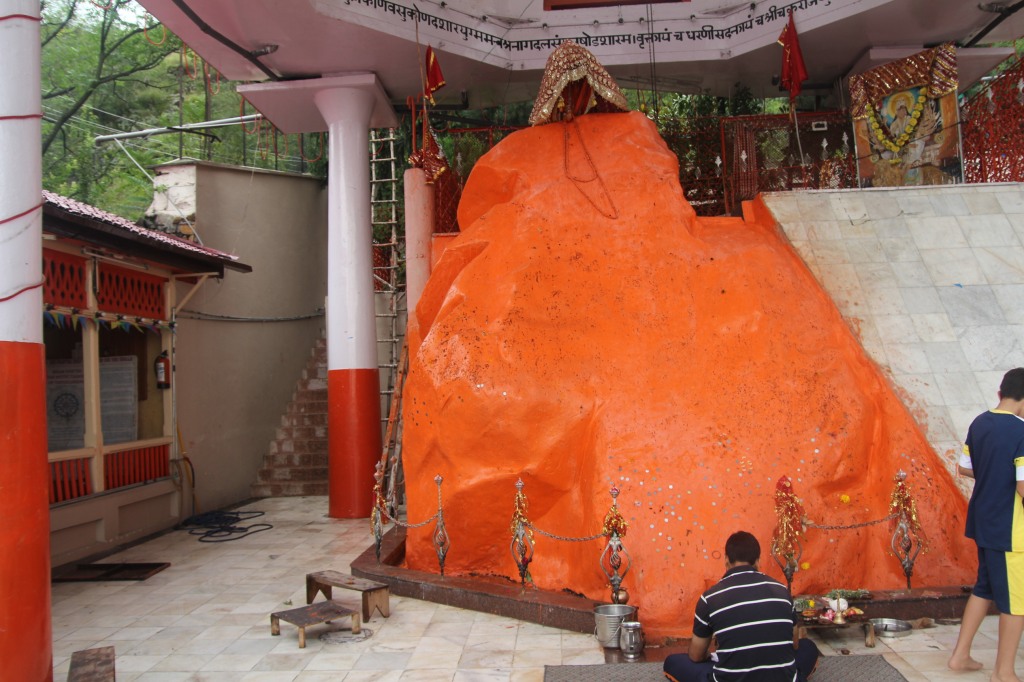
The sacred “Sri Chakra”, commonly known by the Hindus as “Sri Yantra” is composed of circles and the lotus petals, contains nine independent trikonas(Triangles), mystically drawn within the other. The four Triangles that point upwards represent “Shiva” and the other five pointing downwards represent “Shakti”.The Shiva Triangles are called “Sri Kanthas” or Shiva element, and the Shakti triangles are known as “Shiva-yuvatis” or Shakti element. All these are quite independent of the central Bindu and are formed by the Mulaprakrati of Shiva Bindu.
The intersecting triangles represent the play of creation, protection and absorption of the whole universe by the pure divine force known as “Sudha Shakti”.The central point in the Chakra is Bindu which symbolizes the union of “Shiva with Shakti” or “Kameshwar with Kameshwari”.
“Sri Yantra” is, in fact, the most magnificent composition of nine independent trikonas, charged with the supreme occult significance. The Trikonas in their upward and downward positions intersect one another and form themselves into forty three big and small triangles. All these triangles are enclosed in the first inner circle on which is drawn one Lotus with eight petals called “Ashta Dal”, which represents the mystical lotus of creation. The another circle following this with sixteen petalled lotus, drawn on it is called “Shada-shadal”. This Lotus is significant of sixteen kalas or phases of the moon. The whole set of triangles and the Lotus petals are further enclosed in triple concentric circles or three-fold girdles called “Trimekhla”, The whole diagram, forming the mystical chakra, fixed in a square, with triple parallel lines, having four openings or gates on its four cardinal points make up the Devi’s mansion. In the center of the whole composition lies the Bindu(point) which, in fact is the mysterious matrix of the Maha-Yantra. The description of this “Yantra” is given in sloka 11 of “Sundaryalahri”, reproduced just below the Yantra itself.
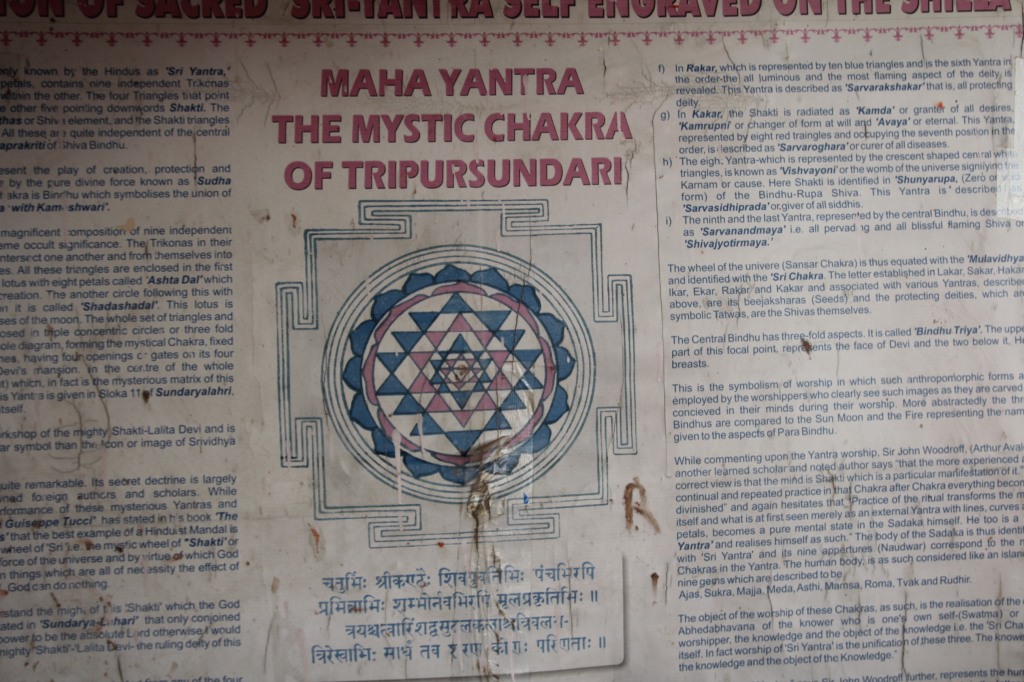
The “Yantra” is adopted for the worship of the mighty “Shakti-Lalita Devi” and is considered to be the most popular symbol that the Icon or image of “Srividhya” i.e “Tripursundari” herself.
The mystery of “Sri Yantra” is quite remarkable. Its secret doctrine is largely acknowledged even by the renowned foreign authors and scholars. While acknowledging the mystical performance of these mysterious Yantras and Mandals, a foreign Scholar “Shree Guiseppe Tuccti” has stated In his book, “The theory and practice of Mandals” that the best example of Hinduist Mandal is the one called “Sri Chakra” or the wheel of “Sri” i.e the mystic wheel of “Shakti” or divine power, which is the motive force of the universe and by virtue of which God manifests and displays himself in things which are all of necessity the effect of Shakti itself. Since without “Shakti”, God can do nothing. One can well imagine and understand the might of this “Shakti”, which the God himself has acknowledged as stated in “Sundarya-Lahiri” that only conjoined with thee Oh! “Shakti” have I the power to be the absolute lord otherwise I would not be able to move. Such is the mighty “Shakti-Lalita-Devi”, the ruling Deity of this celebrated “Maha Yantra”.
The “Yantra” can be described in two ways.It may be started from any of the four gates of outer Chakra and worked inwards towards the central Bindu or in the reverse order, It may be started from the Bindu and worked outwards towards the gates. The former process is called “Layakrama”(involution) and the latter “Srashtikrama”(Evolution). Here it is described in the latter way.
Starting from the central point (Bindhu) and ending with the for gates the whole complex is divided into nine Chakras or wheels called Yantras which according to “Tantraja Tantra” are:-
1.Central Red Bindu, described as ……………………………………………………………………………………………Sarvanandmaya.
2. Central White Triangle, described as…………………………………………………………………………………….Sarvasidhipradha.
3.Eight red Triangles, described as ……………………………………………………………………………………………Sarvaroghara.
4.Ten Blue Triangles, described as…………………………………………………………………………………………….Sarvarakshakar.
5.Ten Red Triangles, described as……………………………………………………………………………………………..Sarvarthasadhak.
6.Fourteen blue triangles, described as ……………………………………………………………………………………Sarvasaubnagyadayak.
7.Eight Red Lotus petals, described as……………………………………………………………………………………….Sarvasamksobhan.
8.Sixteen blue lotus petals, described as …………………………………………………………………………………..Sarvaparipuraka.
9.Surrounding Yellow ground between the outer most circle and four gates……………………………Trilokyamohan.
Explaining the complex of these yantras the sacred, “Tripuramahimstrotam” says that the same “Mulavaidyaksars” as having contributed towards the unfolding of this “Sri Yantra” are responsible for the evolution of this universe as well, when it says that:-
(a) From the “Lakar”, which, according to “Laya-Krama” represents the first outer chakra i.e the yellow surrounded ground, This “Pararupa” earth on which we live has been born and on which there are Mountains, Forests, Grooves, fifty peetas(Seats), all places of pilgrimages, all Ganges, all “Khetrasthanas”, this chakra is known as “Trilokyamohan”, that is the Enchanter of the Universe.
(b) From “Sakar”, representing the second chakra of sixteen blue petalled lotus, it took the form of the Moon, Stars, Planets, Zodiac(Rashi Chakra).This Yantra is described as “Sarvasanksobhan”.
(c) In “Ikar”, which is represented by the fourteen blue triangles, It is “Turyamaya” or the creator of the universe. This yantra being fourth in the order is described as “Sarvasaulhagvadayak” i.e all auspicious.
(d) In “Ekar”, which obtains the fifth place in the order and it is represented by Ten Red Triangles the “Vishavi Shakti” manifests herself as one engaged in “Vaishvaplan” (preservation of the universe). This Yantra is described as “Sarvarthasadak” or fulfiller of all desires.
(e) In “Rakar”, which is represented by ten blue triangles and is the sixth yantra in the order, the all luminous and the most flaming aspect of the deity is revealed.This Yantra is described as “Sarvarakshakar”-That is all protecting deity.
(f) In “Kakar”, the shakti is radiated as “Kamda” or granter of all desires, “Kamrupni” or changer of form at will and “Avaya” or eternal. This Yantra, represented by eight red Triangles and occupying the seventh position in the order, is described as “Sarvaroghara” or curer of all diseases.
(g) The eighth Yantra which is represented by the crescent shaped central white triangles is known as “Vishvayoni” or the Womb of the Universe signifying the Karnam or the cause.Here Shakti is identified in “Shunyarpa” (Zero or void form) of the Bindhu Rupa Shiva. This Yantra is described as “ Sarvasidhiprada” or giver of all Siddhis.
(h) The ninth and the last Yantra, represented by the central Bindu, is described as “Sarvanandmaya” i.e all pervading and all blissful flaming Shiva or “Shivajyotimaya”.
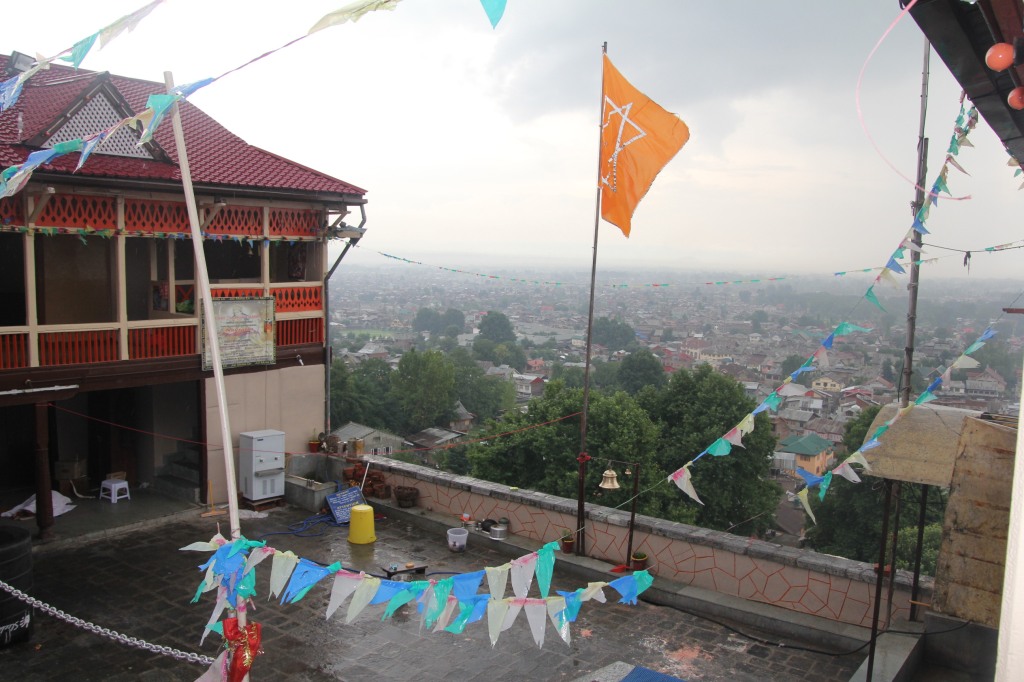
The wheel of the universe( Sansar Chakra) is thus equated with the “Mulavidya” and identified with the “Sri Chakra”.The letter established in Lakar,Sakar, Hakar, Ikar, Ekar, Rakar, and Kakar and associated with various Yantras described above, are its “Beejaksharas”(seeds) and the protecting deities, which are symbolic tattwas, are the Shivas themselves.
The central Bindu has three fold aspects. It is called “Bindu Triya”.The upper part of this focal point, represents the face of Devi and the two below it, her breasts. This is the symbolism of worship in which such anthropomorphic forms are employed by the worshippers who clearly see such images as they are carved or conceived in their minds during their worship. More abstractedly the three Bindus are compared to the Sun, Moon and the fire representing the names given to the aspects of “Para Bindu”.
While commenting upon the Yantra worship, Sir John Woodroff, (Arthur Avalon) another learned Scholar and noted Author says, “that the more experienced and correct view is that the mind is shakti, which is a particular manifestation of it. By continual and repeated practice in that Chakra after Chakra everything becomes divinized” and again hesitates that “Practice of the ritual transforms the mind itself and what is at first seen merely as an external Yantra with lines, curves and petals, becomes a pure mental state in the Sadhka himself. He too is a “Sri Yantra” and realizes himself as such.. The body of the Sadhaka is thus identified with “Sri Yantra” and its nine apertures (Naudwar) correspond to the nine chakras in the Yantra. The Human body, is as such considered like an Island of nine gems which are described to be:- Ajas, Sukra, Majja, Meda, Asti, Mamsa, Roma, Tvak and Rudhir. “The object of the worship of these chakras, as such is the realization of the one Abedabhavana of the Knower who is the one’s own self-(Swatma) or the worshipper, the knowledge and the object of the Knowledge i.e the “Sri Chakra” itself. In fact worship of sri yantra is the unification of these three-The knower of the Knowledge and the object of the knowledge.”
“This celebrated yantra”, says Sir John woodruff further, represents the human body, the whole universe and the man for what is in the former is in the latter and vice-versa as also the Shiva Shakti Swarupa or Atma. It is thus the symbol of Devi as she is in her own form (Swarupa) and as she is in the form of the universe (Vishwatma).
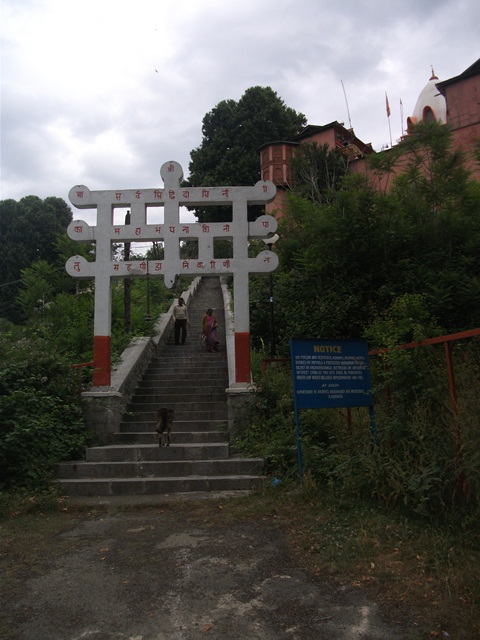
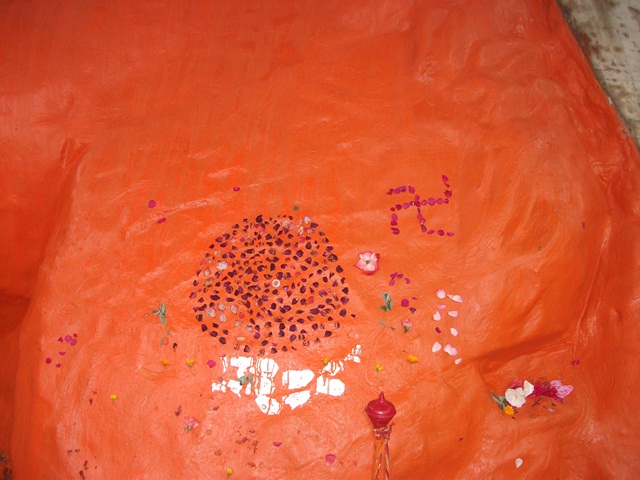
According to the TANTRAJA TANTRA, there are 960 yantras which are assigned to ADYA, NITYA AND LALITA, the three Goddesses, who are known as “Tripurasundari”. Conjoined in one.
Different fruits are gained by worshipping different Yantras. Of the 960 Yantras the principal one’s are:- Sri yantra, Puja Kamal Chakra, Amritghat, Siddhavajra, Kesthavajra, Wajralinga, Merulinga, Yoni, Vajravajrak, Maha Vajra and Vajra.
Yantras are purely linear diagrams. They are drawn provisionally or permanently. When it is desired to be drawn permanently, It is inscribed on a stone or on copper or Bronze Plates that are often seen in Hindu temples, Shrines and other places of worship. Righteously, the Yantra deserves a place in every Hindu Home if one desires to be happy, prosperous and free from ailments.
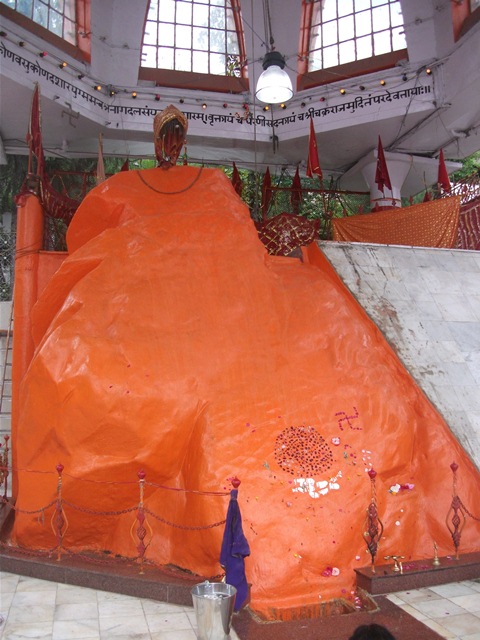
By Sandeep
|
Posted in hinduism, hindus, india, JAMMU & KASHMIR, kashmir, kashmiri pandits, philosophy, religions, sprituality
|
Tagged hari parbhat, hinduism, kashmir, KASHMIR BLOG, kashmir blogs, kashmiri pandits, mata sharika, sri yantra, tripursubdari, tripursundari
|
Comments (2)
The legend of Ksheer Bhawani-Tulumulla
August 25, 2015 – 11:49 am
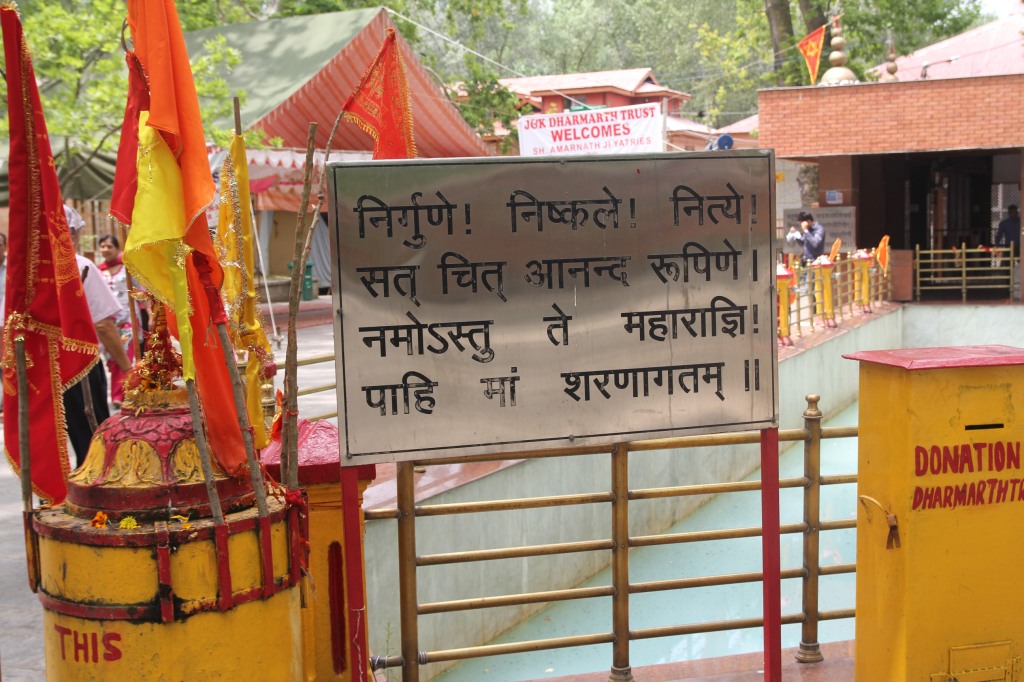
Ksheer Bhawani temple situated at Tullamulla,in the Ganderbal District, is an important shrine.The temple is associated with the Hindu Goddess ,Ragyna Devi.An Annual festival is held here on Jest-Ashtami(May-Jun) when Hindus visit this place in large numbers.Pilgrims also throng on every Shukla-Paksh Ashtami(eight day of waxing moon) round the year and perform havans to please the Mother.
The historic temple of Ksheer Bhawani was built by Maharaja Pratap Singh in 1912 and later renovated by Maharaja Hari singh. Surrounded by streams, the place abounds in Chinar Trees in-and-around the compound complex, within which is a Hexagonal spring, wherein the Diety of Goddess Ragyna is decorated and housed in a small White marble temple.
The legend goes that Ravana worshiped Mother Ragyna, who showered her blessings on his Kingdom. The goddess thus resided in Srilanka. Later on due to Ravanas misdeeds, the Goddess cursed him and ordered Hanumanji to take her to “Satisar”(Kashmir).A place cut off from the outside world by snow-clad Mountains.The Mother on her vehicle along with 360 Nagas, was installed at Tulumullah. Exclusively preferring Milk, sugar and all vegetarian form of offering,The Mother is worshiped by the name of “Maha Ragyna”.
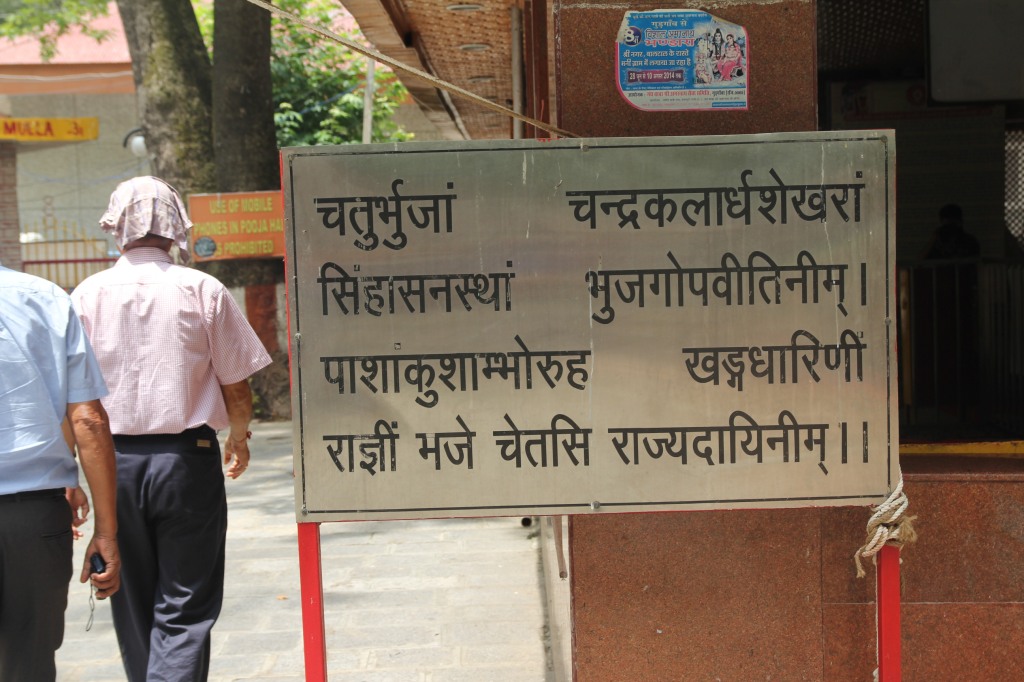
The abode of the Mata Maha Ragyna is mystic spring.This mystic is only one, and one in four of the world, where numerous Nagraj and their Ashtakul-Nag Devas reside. Sh.Ganapati, Bhimraj and Kumar reside at the door of Amrit-Kund.In the middle of Amrit-Kund, towards East resides Astanag Devas namely Vasukinag, Neel Nagraj, Takshak Nagraj,Padbnagraj, Maha Padam Nagraj etc. In the center of the Amritkund, Anant Nagraj resides which is surrounded by one thousand crore Nagas having two thousand eyes and two thousand tongues.Mata Maha Ragyna is seated on this Anant Nagraj on the one thousand petalled Rose.The temple in Amrit Kund is a divine invitation to all the devotees to see how Para-Prakrati Functions.It is vivid(intriguing) that the colour of the spring changes, serving as an oblique Omen, about what is going to happen in near future.The pink, Milky, light Green colour of the spring suggests the Auspicious Omen, and the Black, dark Red indicates the wrong and inauspicious Signals.
Tulmulla Nag, where the Mata Maha Ragyna resides, in the form of Jal-Rupi(water-form), having the form of water or Serpent has allegorical meanings.The surrounding water of Island is the Ocean of infinite life energy full of dormant potentialities Which spread unfold, expand and transport into tangible reality,The Goddess under the Canopy is the precious stone that grants all desire.
As late as 1844, People used to cross the marshes by walking over Reeds growing in the Sump.The legend has it, that the curiosity about the spring spread further, when the learned Brahmin, Sh. Govindjoo Gadoo had a vision of the Goddess, who manifested herself as a serpent.The devotee Brahmin carried a vessel of Milk, arranged a Boat, rowed through the marshes of Tulumulla and upon reaching the sacred spot to which the Serpent/Spring Goddess had led him, slowly poured out the Milk.
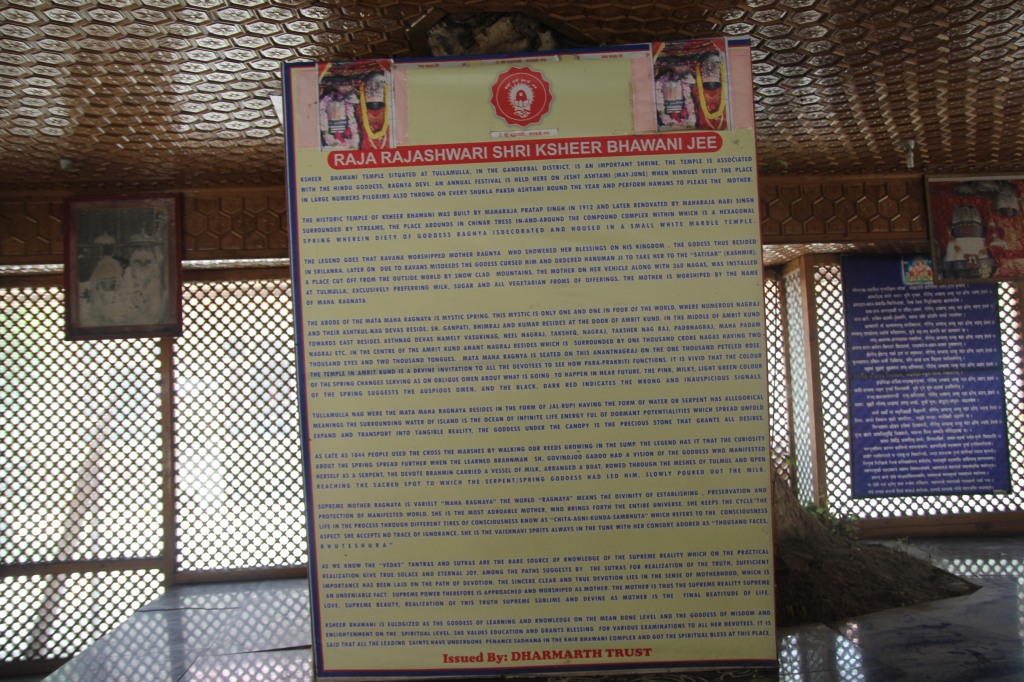
Supreme Mother Ragyna is variably “Maha Ragyna”. The word “Ragyna” means the divinity of establishing, preservation and protection of manifested world. She is the most adorable Mother, who brings forth the entire Universe. She keeps the cycle of life in the process through different tires of consciousness, known as “citta-agni-kunda-sambhuta”, which refers to the consciousness aspect. She accepts no trace of ignorance. She is the vaishnavi sprit, always in the tune with her consort adored as “thousand faced-Bhuteshwara”.
As we know the Vedas, tantras and Sutras are the rare source of knowledge of the supreme reality, which on the practical realization give true solace and eternal joy.Among the paths, suggested by the sutras for realization of the truth, sufficient importance has been laid on the path of Devotion.The sincere, clear and true devotion lies in the sense of Motherhood, which is an undeniable fact.Supreme power therefore is approached and worshiped as mother.The mother is thus the supreme reality, supreme love,supreme beauty. Realization of this truth supreme sublime and divine as Mother is the final beautitute of life.
Ksheer Bhawani is eulogised as the Goddess of learning and Knowledge on the mundane level and Goddess of wisdom and enlightment on the spritual level.She values education and grants blessing for various examinations to all her Devotees.It is said that all the leading saints have undergone penance “Sadhna”, in the Ksheer Bhawani complex, and got the spiritual Bliss at this Place.
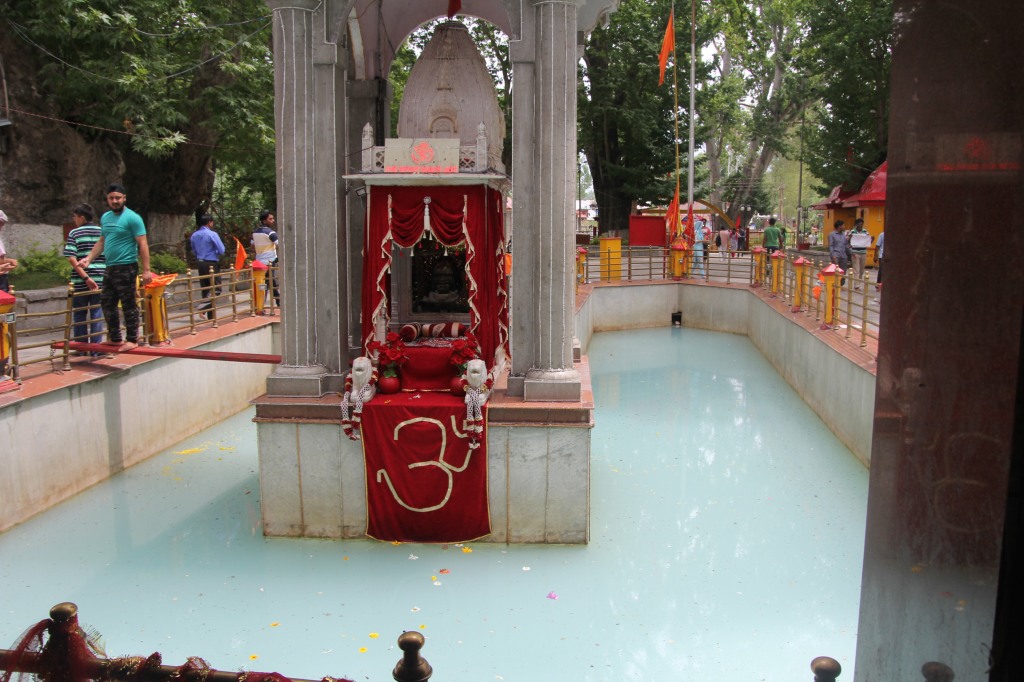
By Sandeep
|
Posted in hinduism, hindus, history, india, JAMMU & KASHMIR, kashmir
|
Tagged Ganderbal, kashmir, KASHMIR BLOG, kashmiri pandits, KSHEER BHAWANI, MAHA RAGYNA, TULLAMULA
|
Comments (2)
My Gangabal Travelogue-2014
June 6, 2015 – 11:29 am
It was probably August or September 1989..I along with my friend had
gone to Gulab bagh, to meet his relatives. Their house was situated just
below the Mountain. My friends cousin-who at that time was working with
JK Police-was a raconteur. He narrated his experiences of the journeys
up in the mountains and I was glued to his narration and eloquence of
story-telling. It was at that time, from him, when I first heard of
Gangabal.
He told us about the mythical-creature-Krim, that lives in the Lake called Gangabal. “Krim pulls down any man who attempts to swim in the lake and then eats them alive”, he gesticulated and his tone reflecting sincerity. When he was speaking about the “Krim”, a picture of a water creature such as an Octopus or a squid came in front of my eyes. “Where is Gangabal?”, I asked him out of curiosity. He pointed his finger towards the Mountain situated just above his house and replied, “Beyond these Mountains”. At that very moment, I had made up my mind to visit Gangabal next year in 1990.
But 1990 had its own plan. It took me another 24 years before I could realize my dream. Thanks to team APMCC for doing a yeoman’s job by organizing the Yatra after a gap of more than 100 years.
I landed in Srinagar Airport on 31st August along with my friend Manish Zijoo. It was a bright sunny day. My friend Ravinder Koul was already there waiting for us. He drove us to Zeethyear Shrine. Vinod Pandit of APMCC had organized the stay of yatris for the night at the Dharamsala in Zeathyaer.
Next day, on sep.1, amidst heavy rains, 95 pilgrims, including I and my 3 friends started our journey from the shrine. We were supposed to leave by 7.00 a.m, but rains played a spoilsport, and we got delayed by 2 hours. APMCC/HGT had arranged two buses for transporting the pilgrims from Srinagar to Naranag-the base camp. The weather had cleared up by the time we reached Naranaag. The Indian Army Battalion, Rashtriya Rifles, had organized the breakfast for all the pilgrims. After having the breakfast, and the ceremonial pooja, our ascend towards Gangabal Started. The option of ascending by a horse/ pony-ride was also available. All the Horsemen and Ponywallas are the indigenous Muslim-Gurjars. They were charging 900 rupees/person.
Vinod Pandit had in fact advised us to hire a horse/pony up to the Lake as the climb was very steep. We hired two horses for the journey for two of my friends . The starting climb-known as Buthsher- was indeed very steep. After a few hundred meters of climb, I looked down towards the valley below. A lone cloud was running through the valley below as if in a hurry to meet its beloved, A stream ran through the cleavage of the lush green valley below, Its zig-zag course getting lost out of sight somewhere in between the tortuous valley below. The ruins of the Narannag temple was no longer visible. The imprint of the hooves of the horses on the soil kept on changing, so did the staccato made by the hooves striking the rocks.
I had decided to ascend the journey by foot. My friends who had started the journey with me were left behind somewhere. For most of the time during the ascend, Manish and Ashok kumar koulji remained with me as my companions. While Manish and I were going for the first time, It was second consecutive trip for Ashokji. “Mahra, when will this steep climb end? When will we reach the pinnacle?”, we pestered Ashokji, many a times. “We are almost there”, he would assure us each time.
The steep climb-Buthsher-is an strenuous 4 hour jouney. The path is dotted by the tall Deodar tress. The winding rocky path occasionally threw open the beautiful vistas, worth to be captured by the memory. En-route, a vast stretch of Burnt Deodar was intriguing. The nip in the air had increased and many pilgrims opted to wear extra woolens.
The climb ended at the only refreshment-point cum Dhaba- “Hotel Khedmat”. At this point, we ate the yellow-rice known as “Tehar”. This Tehar was provided to us by the organizers of the journey at the Zeethyaer shrine. After that, most of the pilgrims sipped the hot tea at the Dhaba. After a few hundred meters ahead of the Dhaba, the mist engulfed us, and the chill factor intensified.
The journey from the Dhaba to Gangbal Lake is rather gentle as compared to Buthsher . After an hour or so, a lush meadow revealed itself to us. This meadow also serves as a camp to Rashtriya Rifles. In their traditional hospitable style, they offered the pilgrim snacks and tea. After an hour or so, as we were reaching close to our destination Gangabal, another lake-Nundkul passed by us.
I reached the camp at around 7.30 p.m. I checked-in a camp along with Manish. I was shivering with cold. By 8.30 PM, most of the yatris had reached the camp except two groups-Who reached the camp by 11.30 p.m. At 9 p.m or so we had our dinner and immediately, we nestled under the thick Quilt to keep us warm .In our tent, There were total six quilts and six mattresses for six persons. The tent where I stayed put for two nights was shared by my three KP friends and two Non-KP’s from Ghaziabad. we all bonded well during our stay at Gangbal.
In the late evening, I could hear the sound of Rain. The cold was so intense, that we all opted to combine two mattresses and two quilts per two persons. One mattress was layered above the other and one quilt layered above another quilt. We snuggled under the thick quilts, thus getting some respite from the Cold and all slept like a baby.
Next day , 2nd September,I woke up at 6 a.m, I opened the zip of my tent and peeped outside. The mighty redoubtable Harmukh was standing in front of me.I decided to have a clear look and came out of my tent, hanging a DSLR in my neck. The Harmukh mountain was besieged by a thick blanket of perennial Glacier . A sight to behold.
As I was watching the Mountain, I could not forget that, It was probably, during the reign of Mir Shamas-ud-din iraqi, when, in 1519 AD,10,000 KP’s were killed during pilgrimage to Harmukh Ganga as they had gone there to immerse the ashes of 800 Kashmiri Pandits, who were massacred during Ashura, a year ago.
I ambled towards the lake. The sun had not yet risen. The first looks of the turquoise waters mesmerized me. Nestled in between Mountains, Its aura was reflecting beauty par excellence. Once I reached close, I could see the limpid waters. The pebbles at the base of the lake were quite visible. And the waters quite-Icy!
Before coming to Gangabal, I had read a bit about the lake. It was written in an article, that KP’s used to come here and do the Obligatory “Shraddh”(prayers offered to ancestors) and immerse the ashes of those who had died. Before, immersing the ashes into the lake, they used to stock the water for drinking and cooking, as immediately after immersing the ashes, the colour of the waters would change to Red, (because of some micro-organisms), thus making the waters unfit to drink or cook food in.
At around 9.00 a.m, in the freezing cold, I along with my friends Vishal, Ravi, Manish and Ashokji had a dip in the icy-cold waters of the Gangabal. A group of pilgrims later on performed the “Sharadh” of their ancestors by the bank of the Holy Lake. I meandered around the camp site and climbed down a bit to have a close look of the lake “Nand-kul”. A rivulet joins the Lake Gangabal,-which is some feet higher- to Lake Nand-kul. Both the lakes are situated at the base of the Harmukh-Mountain.
The lake is situated at around 13000 feet above sea level, thus making even an easy activity like walking somewhat difficult. It was raining intermittently from morning till afternoon. After our lunch, the rains felt incessantly till we left the Kashmir valley. Mind you, It was at that time when Kashmir valley faced its worst floods in recent times.
With the advent of the incessant rains, the activity of all the pilgrims was limited to their tents. I and my tent-mates spent most of our time discussing a wide spectrum of topics from religion to politics to caste system, Kashmir, History etc. Occasionally, one among my companions would narrate a joke and the rest would Guffaw, thus making us forget about the Rains outside.
.
The intensity of the rains ebbed somewhere in the evening-when we got some time to click Group photos-The short respite was soon overtaken by the heavy downpour all night. It was raining cats and dogs. The tents where we stayed-in, were erected on the least slanting surface available of the Small-meadow ,near the banks of the small stream, that connected Gangabal lake to Nandkul Lake.
The Rain-proof tents proved to be of no match to the heavy incessant downpour, the water was trickling into our tent throughout the night. The water had also seeped in into our tent through the ground. The mattresses on which we were sleeping was soaked in rain-water at many places. It was rather a difficult night for all of us. We were all waiting for the Dawn.
Next morning 3rd Sep., It was still raining. A group of pilgrims decided to descend as they thought, it to be useless to stay put at the Gangbal. After some deliberations with other pilgrims, It was unanimously decided to climb down the Mountain ASAP. The descend of the group started somewhere around 9-10 a.m. The rain had made the journey precarious, The paths had become slippery. Tracing each other’s footsteps, all pilgrims queued towards the destination.
When I reached back at the only Dhaba-Hotel Khedmat- it was already over crowded. I sipped a couple of hot tea with some biscuits. The Dhaba-Owner had also prepared lentil-rice. I saw Some policemen relishing the same. The descend of the “Buthsher” started from this point. Because of the very heavy rains, The soil was being washed down the track, that lead towards Naranaag.
The Muddy track made the descend on this track very difficult. I lost my balance, and fell down, a couple of times, on this track, but I did not stop. I was drenched in rain, though I had worn a Raincoat. As we neared our destination, the puddles of muddy-water had transformed into an ankle-deep rivulet. The volume, roar and speed of stream below our feet increased with each turn.
Finally, I reached back to Naranaag at around 2.30 p.m. I had driven from “Zeethyaer” shrine to “Naranaag” by a car and I had kept some pressed- clothes in the trunk of the car. The dry-clothes gave me a lot of respite from the cold. There is a Hotel-cum-restaurant at Naranaag, just at the starting point of the journey. I and RavI ordered a cake, which we gulped along with a couple of piping hot Kehwa.
By 4.30 p.m, most of the pilgrims had reached safely back to the base camp at Naranaag. The restaurant was thronged by the pilgrims and each one satiated their thirst and Hunger. It was still raining. Our journey towards the “Zeethyar” shrine started at around dusk.
I left Kashmir Valley on 5th sep. It was still raining incessantly.
The journey of Gangabal remains one of the most adventurous pilgrimage to me till date. The trek is mesmerizing. The Harmukh mountain is transfixing. And the Harmukh ganga also known as Gangabal is surreal, beautiful, mystifying and its waters ooze out spirituality.
The mythical creature “Krim” was not seen by me in the lake, but, when I had heard about it for the first time, it had bewildered me and stirred my imagination. I still wonder whether it ever lived in the lake or not.
I missed many things last time because of the inclement weather. Therefore, I am looking forward, yet again, one more time, to undertake this yatra……
for pics..check the link:
https://kashmirblogs.wordpress.com/2014/09/08/gangabal-yatra-2014kashmir-some-photos/
He told us about the mythical-creature-Krim, that lives in the Lake called Gangabal. “Krim pulls down any man who attempts to swim in the lake and then eats them alive”, he gesticulated and his tone reflecting sincerity. When he was speaking about the “Krim”, a picture of a water creature such as an Octopus or a squid came in front of my eyes. “Where is Gangabal?”, I asked him out of curiosity. He pointed his finger towards the Mountain situated just above his house and replied, “Beyond these Mountains”. At that very moment, I had made up my mind to visit Gangabal next year in 1990.
But 1990 had its own plan. It took me another 24 years before I could realize my dream. Thanks to team APMCC for doing a yeoman’s job by organizing the Yatra after a gap of more than 100 years.
I landed in Srinagar Airport on 31st August along with my friend Manish Zijoo. It was a bright sunny day. My friend Ravinder Koul was already there waiting for us. He drove us to Zeethyear Shrine. Vinod Pandit of APMCC had organized the stay of yatris for the night at the Dharamsala in Zeathyaer.
Next day, on sep.1, amidst heavy rains, 95 pilgrims, including I and my 3 friends started our journey from the shrine. We were supposed to leave by 7.00 a.m, but rains played a spoilsport, and we got delayed by 2 hours. APMCC/HGT had arranged two buses for transporting the pilgrims from Srinagar to Naranag-the base camp. The weather had cleared up by the time we reached Naranaag. The Indian Army Battalion, Rashtriya Rifles, had organized the breakfast for all the pilgrims. After having the breakfast, and the ceremonial pooja, our ascend towards Gangabal Started. The option of ascending by a horse/ pony-ride was also available. All the Horsemen and Ponywallas are the indigenous Muslim-Gurjars. They were charging 900 rupees/person.
Vinod Pandit had in fact advised us to hire a horse/pony up to the Lake as the climb was very steep. We hired two horses for the journey for two of my friends . The starting climb-known as Buthsher- was indeed very steep. After a few hundred meters of climb, I looked down towards the valley below. A lone cloud was running through the valley below as if in a hurry to meet its beloved, A stream ran through the cleavage of the lush green valley below, Its zig-zag course getting lost out of sight somewhere in between the tortuous valley below. The ruins of the Narannag temple was no longer visible. The imprint of the hooves of the horses on the soil kept on changing, so did the staccato made by the hooves striking the rocks.
I had decided to ascend the journey by foot. My friends who had started the journey with me were left behind somewhere. For most of the time during the ascend, Manish and Ashok kumar koulji remained with me as my companions. While Manish and I were going for the first time, It was second consecutive trip for Ashokji. “Mahra, when will this steep climb end? When will we reach the pinnacle?”, we pestered Ashokji, many a times. “We are almost there”, he would assure us each time.
The steep climb-Buthsher-is an strenuous 4 hour jouney. The path is dotted by the tall Deodar tress. The winding rocky path occasionally threw open the beautiful vistas, worth to be captured by the memory. En-route, a vast stretch of Burnt Deodar was intriguing. The nip in the air had increased and many pilgrims opted to wear extra woolens.
The climb ended at the only refreshment-point cum Dhaba- “Hotel Khedmat”. At this point, we ate the yellow-rice known as “Tehar”. This Tehar was provided to us by the organizers of the journey at the Zeethyaer shrine. After that, most of the pilgrims sipped the hot tea at the Dhaba. After a few hundred meters ahead of the Dhaba, the mist engulfed us, and the chill factor intensified.
The journey from the Dhaba to Gangbal Lake is rather gentle as compared to Buthsher . After an hour or so, a lush meadow revealed itself to us. This meadow also serves as a camp to Rashtriya Rifles. In their traditional hospitable style, they offered the pilgrim snacks and tea. After an hour or so, as we were reaching close to our destination Gangabal, another lake-Nundkul passed by us.
I reached the camp at around 7.30 p.m. I checked-in a camp along with Manish. I was shivering with cold. By 8.30 PM, most of the yatris had reached the camp except two groups-Who reached the camp by 11.30 p.m. At 9 p.m or so we had our dinner and immediately, we nestled under the thick Quilt to keep us warm .In our tent, There were total six quilts and six mattresses for six persons. The tent where I stayed put for two nights was shared by my three KP friends and two Non-KP’s from Ghaziabad. we all bonded well during our stay at Gangbal.
In the late evening, I could hear the sound of Rain. The cold was so intense, that we all opted to combine two mattresses and two quilts per two persons. One mattress was layered above the other and one quilt layered above another quilt. We snuggled under the thick quilts, thus getting some respite from the Cold and all slept like a baby.
Next day , 2nd September,I woke up at 6 a.m, I opened the zip of my tent and peeped outside. The mighty redoubtable Harmukh was standing in front of me.I decided to have a clear look and came out of my tent, hanging a DSLR in my neck. The Harmukh mountain was besieged by a thick blanket of perennial Glacier . A sight to behold.
As I was watching the Mountain, I could not forget that, It was probably, during the reign of Mir Shamas-ud-din iraqi, when, in 1519 AD,10,000 KP’s were killed during pilgrimage to Harmukh Ganga as they had gone there to immerse the ashes of 800 Kashmiri Pandits, who were massacred during Ashura, a year ago.
I ambled towards the lake. The sun had not yet risen. The first looks of the turquoise waters mesmerized me. Nestled in between Mountains, Its aura was reflecting beauty par excellence. Once I reached close, I could see the limpid waters. The pebbles at the base of the lake were quite visible. And the waters quite-Icy!
Before coming to Gangabal, I had read a bit about the lake. It was written in an article, that KP’s used to come here and do the Obligatory “Shraddh”(prayers offered to ancestors) and immerse the ashes of those who had died. Before, immersing the ashes into the lake, they used to stock the water for drinking and cooking, as immediately after immersing the ashes, the colour of the waters would change to Red, (because of some micro-organisms), thus making the waters unfit to drink or cook food in.
At around 9.00 a.m, in the freezing cold, I along with my friends Vishal, Ravi, Manish and Ashokji had a dip in the icy-cold waters of the Gangabal. A group of pilgrims later on performed the “Sharadh” of their ancestors by the bank of the Holy Lake. I meandered around the camp site and climbed down a bit to have a close look of the lake “Nand-kul”. A rivulet joins the Lake Gangabal,-which is some feet higher- to Lake Nand-kul. Both the lakes are situated at the base of the Harmukh-Mountain.
The lake is situated at around 13000 feet above sea level, thus making even an easy activity like walking somewhat difficult. It was raining intermittently from morning till afternoon. After our lunch, the rains felt incessantly till we left the Kashmir valley. Mind you, It was at that time when Kashmir valley faced its worst floods in recent times.
With the advent of the incessant rains, the activity of all the pilgrims was limited to their tents. I and my tent-mates spent most of our time discussing a wide spectrum of topics from religion to politics to caste system, Kashmir, History etc. Occasionally, one among my companions would narrate a joke and the rest would Guffaw, thus making us forget about the Rains outside.
.
The intensity of the rains ebbed somewhere in the evening-when we got some time to click Group photos-The short respite was soon overtaken by the heavy downpour all night. It was raining cats and dogs. The tents where we stayed-in, were erected on the least slanting surface available of the Small-meadow ,near the banks of the small stream, that connected Gangabal lake to Nandkul Lake.
The Rain-proof tents proved to be of no match to the heavy incessant downpour, the water was trickling into our tent throughout the night. The water had also seeped in into our tent through the ground. The mattresses on which we were sleeping was soaked in rain-water at many places. It was rather a difficult night for all of us. We were all waiting for the Dawn.
Next morning 3rd Sep., It was still raining. A group of pilgrims decided to descend as they thought, it to be useless to stay put at the Gangbal. After some deliberations with other pilgrims, It was unanimously decided to climb down the Mountain ASAP. The descend of the group started somewhere around 9-10 a.m. The rain had made the journey precarious, The paths had become slippery. Tracing each other’s footsteps, all pilgrims queued towards the destination.
When I reached back at the only Dhaba-Hotel Khedmat- it was already over crowded. I sipped a couple of hot tea with some biscuits. The Dhaba-Owner had also prepared lentil-rice. I saw Some policemen relishing the same. The descend of the “Buthsher” started from this point. Because of the very heavy rains, The soil was being washed down the track, that lead towards Naranaag.
The Muddy track made the descend on this track very difficult. I lost my balance, and fell down, a couple of times, on this track, but I did not stop. I was drenched in rain, though I had worn a Raincoat. As we neared our destination, the puddles of muddy-water had transformed into an ankle-deep rivulet. The volume, roar and speed of stream below our feet increased with each turn.
Finally, I reached back to Naranaag at around 2.30 p.m. I had driven from “Zeethyaer” shrine to “Naranaag” by a car and I had kept some pressed- clothes in the trunk of the car. The dry-clothes gave me a lot of respite from the cold. There is a Hotel-cum-restaurant at Naranaag, just at the starting point of the journey. I and RavI ordered a cake, which we gulped along with a couple of piping hot Kehwa.
By 4.30 p.m, most of the pilgrims had reached safely back to the base camp at Naranaag. The restaurant was thronged by the pilgrims and each one satiated their thirst and Hunger. It was still raining. Our journey towards the “Zeethyar” shrine started at around dusk.
I left Kashmir Valley on 5th sep. It was still raining incessantly.
The journey of Gangabal remains one of the most adventurous pilgrimage to me till date. The trek is mesmerizing. The Harmukh mountain is transfixing. And the Harmukh ganga also known as Gangabal is surreal, beautiful, mystifying and its waters ooze out spirituality.
The mythical creature “Krim” was not seen by me in the lake, but, when I had heard about it for the first time, it had bewildered me and stirred my imagination. I still wonder whether it ever lived in the lake or not.
I missed many things last time because of the inclement weather. Therefore, I am looking forward, yet again, one more time, to undertake this yatra……
for pics..check the link:
https://kashmirblogs.wordpress.com/2014/09/08/gangabal-yatra-2014kashmir-some-photos/
By Sandeep
|
Posted in kashmir
|
Tagged APMCC, gangabal lake, gangabal yatra, harmkh ganga, HGT, kashmir, KASHMIR BLOG, kashmir pilgrimage, Mount Harmukh, Nandkul lake, Naranaag, srinagar
|
Comments (0)
Protests by Kashmiri Hindus
April 13, 2015 – 12:06 pm
Kashmiri pandits protested at different parts of India including
Jammu,Delhi,Pune,Bangalore and Jallandhar ,against the ,Resistance shown
by Pak-Backed-Separatists , govt plans of resettling KP’s back in
Kashmir.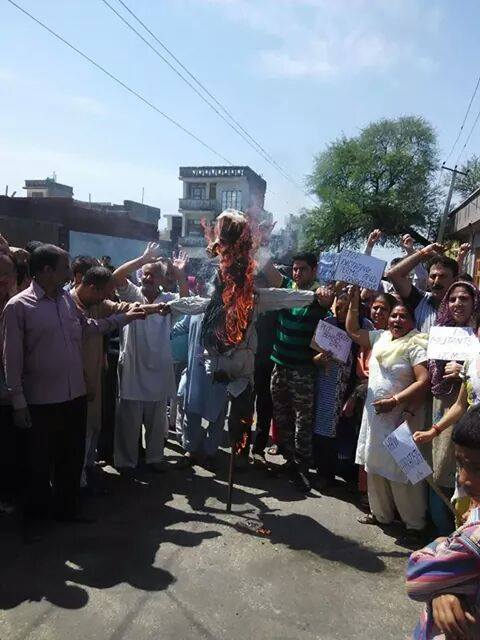
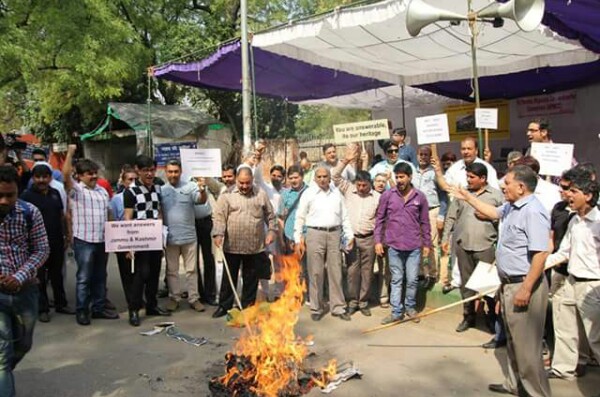
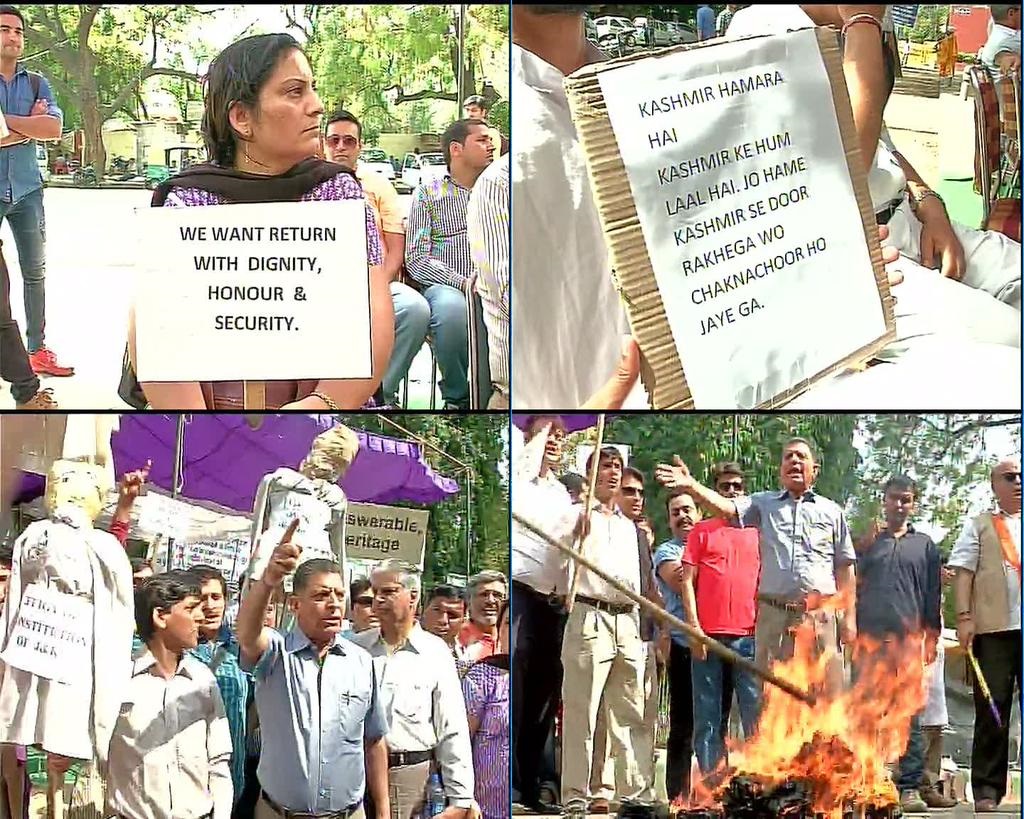
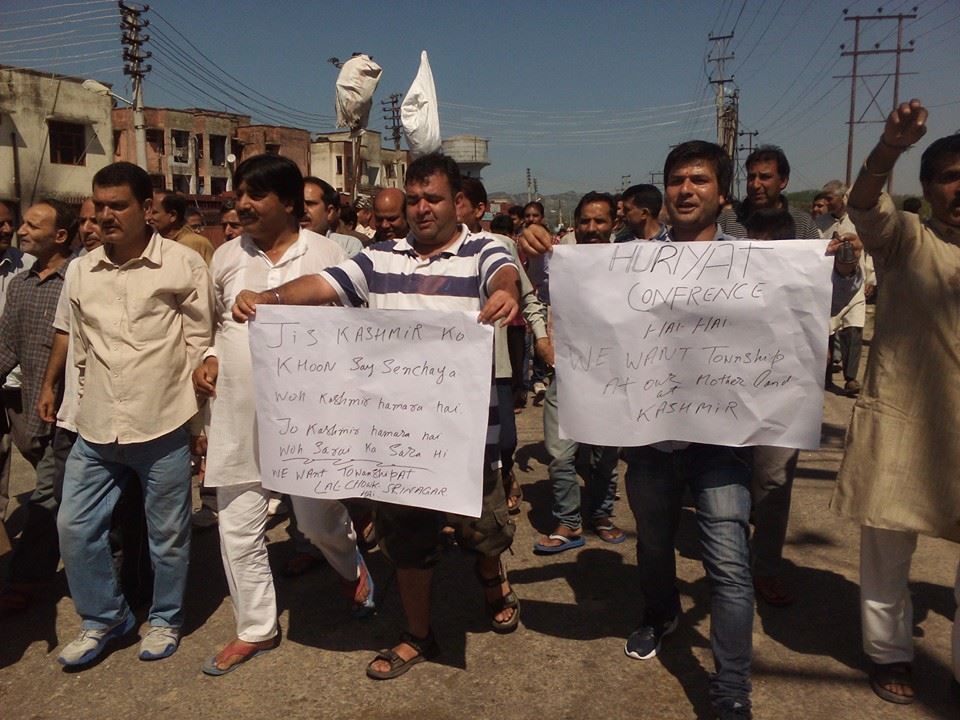




By Sandeep
|
Posted in kashmir
|
Tagged kashmir, KASHMIR BLOG, protest by kashmiri pandits
|
Comments (0)
Propaganda against Re-settlement of KP’s
April 10, 2015 – 11:14 am
Since last 25 years, it has been projected by almost all political
parties, whether J&k-based or National level, like INC and BJP, that
they want to re-settle KP’s back in the land of their ancestors .But
never ever, has any political party acted as audaciously, as did the
Modi-led NDA govt .The Home Minister of India Sh. Rajnath singh had
asked Omar Abdullah in the first week of Sep 2014 to identify the land
for the re-settlement of Kashmiri Pandits in Kashmir. But the
unfortunate floods procrastinated the Plans of GOI.
Now again, just a couple of days back, The home minister of India-Mr. Rajnath singh asked the Chief Minister-Mufti mohammed syed to identify the land for the “composite re-settlement of Kashmiri Pandits”. And it looked as if the C.M nodded his head in agreement. But as expected, he U-turned on the issue of giving land for the settlement of KP’s thus showing his true colour of being a true Islamic-sikluar.
And thus started the Grand- Drama of the Pak-backed-separatists.
Yasin Malik-the leader of the JKLF faction objected to the GOI’s plan of re-settling the KP’s into the valley. He and his coterie are of this view that KP’s should be settled in their original homes with their original Muslim Neighbors. They want KP’s to live as they lived prior to 1989-90.
But, Is it possible for pundits to settle at those places,that they left out of fear in 1990!
An real life anecdote when I visited Kashmir after 24 shows totally different picture of the locality and the people that lived with us pre-1990.
I went to Rainawari, in Srinagar, Kashmir last year .I landed in Kashmir valley on 31st Aug 2014. Immediately, I opted to go to my abandoned-Home in Rainawari. The place looked so different. “Kraylar” looked so different. The lanes and sub-lanes looked Chocked because of illegal encroachment.
When, I reached Bagh jogilankar, I was surprised to find out that even the police-station, that was once situated at the entrance of the Bridge has been shifted to “Silai-center”, opposite Hari singh school.
I tried very hard to identify my old acquaintances. Though I could identify the shops, but the shopkeepers were different. I tried to look into the eyes of the shopkeepers hoping to revive something of the past. But I got blank looks from them. The strange looks made me uncomfortable and unwanted. The appalling condition of the by-lanes was beyond words. The people of the locality have illegally captured the already-narrow-bylanes.
At last, I could identify someone. It was “Magga”. He was the barber. He had trimmed my hair N times , right from the time when I was a Kid, till I grew up to an adolescent. I accosted him and introduced myself. He too looked blankly at me. He could not identify me, as he had seen me when I was a Kid. I told him about my family, my father, Grandfather, My Uncles. With each name, his eyes sparkled in joy. And then he gave me a tight Hug. A few men gathered around us. They started asking me questions about the welfare of my family, my relatives and my Hindu-neighbors. I tried to answer them to the best of my information.
I chatted with them for about 10 minutes. Then I told them that for strange reasons, all the people in Rainawari look different to me. I told them that they looked strangers to me. They listened to me patiently. An acquaintance of “Magga-Barber”, informed me that only 40 indigenous Households/ families are living in that area and rest of the families have shifted to other places in Kashmir. As, I was departing, I could hear his shout, “Even we-the leftover families sometimes feels living among aliens. KP’s did the right thing by migrating to other places.”
The same story has been repeated in many of the localities that were once dominated by the pundits. The original Muslim residents have shifted to other places. Most of the Muslims from the downtown have shifted to posh localities like Rajbagh, Barzullah, etc.
The trite rant of the separatists like Yasin Malik and Syed ali shah Geelani, on the return of Kashmiri Pandits does not hold any water. They too are aware of the fact that during last 25 years, many KM’s have shifted to the posh localities and many amongst them have bought the houses of KP’s- who had to sell their properties in distress.
If they want to re-settle KP’s into their original localities, they will have to re-settle back all the Muslims too- who were the neighbors of KP’s. But that is not possible and that will not be of any help to KP’s .As a matter of fact, The Muslim neighbors of KP’s were totally helpless in protecting their Hindu neighbors in 1990’s. Instead of protecting them, many KM neighbors corroborated with the terrorists and gave vital information about those KP’s, who were on the hit list of Terrorists, thus resulting in Death of many KP’s.
Over the years the mainstream political parties have practiced soft-secessionism. They have over the years poisoned the minds of the majority-Muslims. Separatists as well as the valley-based mainstream political parties have tacitly projected the forced-exodus of KP’s as their victory. Victory of Islam and Hegemony of Muslims. They might be saying hundreds of lies to the Government of India, but the reality is that they are constantly conveying to their vote-bank that KP’s will never be allowed to come back.
The resistance shown by Yasin Malik against the proposed “composite-resettlement” has been portrayed as “inclusive-townships” for KP’s. It has been alleged that GOI is planning to make colonies like Israel did in Palestine. The resistance towards the return of KP’s have been portrayed akin to the resistance of Palestine’s towards the Israel-settlements.
And top of that, the mainstream political parties too have shown the same resistance as did Yasin Malik and company. It is an astutely-planned-propaganda against the return of Kashmiri Pandits. All the valley based-political-parties have excluded deliberately the word “Composite” and are instead using the word “Inclusive”.
The deliberate blatant trampling of the fundamental right of KP’s will once again go unnoticed. Once again the possible return of KP’s will be thwarted. Once again the false propaganda of the Anti-Nationals will echo in the valley. Once again justice will be denied to the KP’s.
And once again,
the goddess of Justice will remain Blindfolded…
Now again, just a couple of days back, The home minister of India-Mr. Rajnath singh asked the Chief Minister-Mufti mohammed syed to identify the land for the “composite re-settlement of Kashmiri Pandits”. And it looked as if the C.M nodded his head in agreement. But as expected, he U-turned on the issue of giving land for the settlement of KP’s thus showing his true colour of being a true Islamic-sikluar.
And thus started the Grand- Drama of the Pak-backed-separatists.
Yasin Malik-the leader of the JKLF faction objected to the GOI’s plan of re-settling the KP’s into the valley. He and his coterie are of this view that KP’s should be settled in their original homes with their original Muslim Neighbors. They want KP’s to live as they lived prior to 1989-90.
But, Is it possible for pundits to settle at those places,that they left out of fear in 1990!
An real life anecdote when I visited Kashmir after 24 shows totally different picture of the locality and the people that lived with us pre-1990.
I went to Rainawari, in Srinagar, Kashmir last year .I landed in Kashmir valley on 31st Aug 2014. Immediately, I opted to go to my abandoned-Home in Rainawari. The place looked so different. “Kraylar” looked so different. The lanes and sub-lanes looked Chocked because of illegal encroachment.
When, I reached Bagh jogilankar, I was surprised to find out that even the police-station, that was once situated at the entrance of the Bridge has been shifted to “Silai-center”, opposite Hari singh school.
I tried very hard to identify my old acquaintances. Though I could identify the shops, but the shopkeepers were different. I tried to look into the eyes of the shopkeepers hoping to revive something of the past. But I got blank looks from them. The strange looks made me uncomfortable and unwanted. The appalling condition of the by-lanes was beyond words. The people of the locality have illegally captured the already-narrow-bylanes.
At last, I could identify someone. It was “Magga”. He was the barber. He had trimmed my hair N times , right from the time when I was a Kid, till I grew up to an adolescent. I accosted him and introduced myself. He too looked blankly at me. He could not identify me, as he had seen me when I was a Kid. I told him about my family, my father, Grandfather, My Uncles. With each name, his eyes sparkled in joy. And then he gave me a tight Hug. A few men gathered around us. They started asking me questions about the welfare of my family, my relatives and my Hindu-neighbors. I tried to answer them to the best of my information.
I chatted with them for about 10 minutes. Then I told them that for strange reasons, all the people in Rainawari look different to me. I told them that they looked strangers to me. They listened to me patiently. An acquaintance of “Magga-Barber”, informed me that only 40 indigenous Households/ families are living in that area and rest of the families have shifted to other places in Kashmir. As, I was departing, I could hear his shout, “Even we-the leftover families sometimes feels living among aliens. KP’s did the right thing by migrating to other places.”
The same story has been repeated in many of the localities that were once dominated by the pundits. The original Muslim residents have shifted to other places. Most of the Muslims from the downtown have shifted to posh localities like Rajbagh, Barzullah, etc.
The trite rant of the separatists like Yasin Malik and Syed ali shah Geelani, on the return of Kashmiri Pandits does not hold any water. They too are aware of the fact that during last 25 years, many KM’s have shifted to the posh localities and many amongst them have bought the houses of KP’s- who had to sell their properties in distress.
If they want to re-settle KP’s into their original localities, they will have to re-settle back all the Muslims too- who were the neighbors of KP’s. But that is not possible and that will not be of any help to KP’s .As a matter of fact, The Muslim neighbors of KP’s were totally helpless in protecting their Hindu neighbors in 1990’s. Instead of protecting them, many KM neighbors corroborated with the terrorists and gave vital information about those KP’s, who were on the hit list of Terrorists, thus resulting in Death of many KP’s.
Over the years the mainstream political parties have practiced soft-secessionism. They have over the years poisoned the minds of the majority-Muslims. Separatists as well as the valley-based mainstream political parties have tacitly projected the forced-exodus of KP’s as their victory. Victory of Islam and Hegemony of Muslims. They might be saying hundreds of lies to the Government of India, but the reality is that they are constantly conveying to their vote-bank that KP’s will never be allowed to come back.
The resistance shown by Yasin Malik against the proposed “composite-resettlement” has been portrayed as “inclusive-townships” for KP’s. It has been alleged that GOI is planning to make colonies like Israel did in Palestine. The resistance towards the return of KP’s have been portrayed akin to the resistance of Palestine’s towards the Israel-settlements.
And top of that, the mainstream political parties too have shown the same resistance as did Yasin Malik and company. It is an astutely-planned-propaganda against the return of Kashmiri Pandits. All the valley based-political-parties have excluded deliberately the word “Composite” and are instead using the word “Inclusive”.
The deliberate blatant trampling of the fundamental right of KP’s will once again go unnoticed. Once again the possible return of KP’s will be thwarted. Once again the false propaganda of the Anti-Nationals will echo in the valley. Once again justice will be denied to the KP’s.
And once again,
the goddess of Justice will remain Blindfolded…
By Sandeep
|
Posted in genocide, hinduism, hindus, india, JAMMU & KASHMIR, kashmir
|
Tagged genocide of Kashmiri Pandits, jklf, kashmir, KASHMIR BLOG, kashmir blogs, kashmiri pandits, KP, Mufti mohammed syed, NATIONAL CONFERENCE, PDP, rajnath singh, resettlement of kashmiri pandits, yasin malik
|
Comments (1)
Kashmir flood 2015…some images
March 31, 2015 – 5:43 pm
By Sandeep
|
Posted in JAMMU & KASHMIR, kashmir
|
Tagged kashmir, kashmir blogs, kashmir flood 2015 march
|
Comments (3)
HINDUS and BJP IN J&K
March 30, 2015 – 2:26 pm
Politics has always been a game of opportunists and manipulators. It will remain so in the future too. Jammu and Kashmir too has seen its share of so-called-leaders. Mainstream leaders, who are in fact softer version of Demagogues. These leaders have always thrived on the hate-they incite on the name of Religion. The exodus of Kashmiri pundits from the valley is a classical example of the divisive politics that is rife in Kashmir.
Congress(I)-that once dominated the Indian Politics had always projected themselves as the messiah’s of Kashmiri Hindus prior to 1990.They projected themselves as the core-seculars, but remained as mere spectators when Kashmiri Hindus were forced to flee their homes. They never raised their voice in support of the KP’s, though they owe their existenance to a KP-Jawahar lal Nehru. They never remained true to their ideologies and practiced opportunist-politics instead of the Secular politics.
A core congress(i)-man, and a freedom-fighter, some years back ,when confronted by a group of non-political KP’s-who blamed congress for the Kashmir imbroglio, received a shock of their lives, when instead of answering them with logical answer, he retorted back and said, “ I can kill the whole KP community for the sake of India”. His answer not only reflected his rotten-thinking, but exposed the congress(i) attitude towards KP community. In fact it reflected the congress’s attitude towards anyone who dare to raise their opinion against them.
Then came BJP.
BJP, along with Shiv-sena and RSS supported KP’s initially in 1990.The contribution of Shiv sens was/is immense. They along with BJP gave reservations to the KP students in Maharashtra. The reservation quota was expanded to other states too in the course of time. BJP-RSS were instrumental in establishing some of the prominent KP organizations that raised the concerns of the KP community as a whole. BJP-RSS were instrumental in raising the demand of Homeland for KP’s through its affiliate organizations.
Surprisingly, today both RSS-BJP seems averse to the concept of Homeland-they once supported. They in fact have made a complete U-turn to some of their demands. It is surprising to see how they backtracked from the abrogation of article 370.Their promise of a Hindu-CM for J&K was also surreptitiously put under the carpet. Not one demand features in their CMP; that can be termed as a step of Core-Nationalists.
Instead, They have acted as an anti-Nationalist party.
Giving a ministerial-Berth to Sajjad lone is beyond the belief of any Nationalist. Just a few months back, sajjad ganie lone-The son of separatist leader Abdul ganie lone and son-in-law of former chief of terrorist organization ,JKLF Amanullah Khan- was spitting venom against India. His father-in-law is accredited with the murders of at least 70% of all the Kashmiri Hindus killed in Kashmir during late eighties and earlier nineties. His elder brother is still a senior separatist leader. How Nationalist of BJP to make him a minister!!!
Releasing a pro-pak-separatist, Masrat alam was another blunder. In 2010, 120 innocent children and youths were killed because of him. He incited the mob against the police and armed forces. The mob was incited on the name of religion and on the name of Amarnath Yatra. It was alleged that India is making a colony in Baltal(at the base of Amarnath). What did BJP do? Except projecting their helplessness! How nationalist of BJP!
Forming a govt. with PDP is a compulsion for BJP. It is a known fact that because of the lust for power, 7 BJP MLA’s of the previous govt(2008-2013) had connived with the ruling party NC. To keep the flock of 25 BJP MLA’s together, this time,they had to form a government. The dilemma is that their partner in coalition is PDP. Though it is a mainstream political party; but it is known to be more communal than NC. Although both of these valley-centric-political parties follow the policy of soft-separatism and pro-Pakistan polity.
I remember vividly, How BJP would raise the slogans like, “Jaha huwe baldan Mukherjee, wo Kashmir Humara hai”(The place where Mukherjee was martyred is ours) and “Jis mitti ko khoon se seencha, wo Kashmir hamara hai” (Kashmir-that was irrigated by our Blood, is our’s).And then I think of the present stance of BJP Govt. in J&K and nod my head in disbelief.
That is why, they could not fulfill even their two basic points, that was in their election manifesto, when BJP was known as Jan-sangh. These two points are always in their election manifesto even after 30 years. The points are:
1.Construction of Ram Temple at Ayodhya.
2.Uniform civil code.
It will be only naïve to think that they will abrogate article 370 or rehabilitate Kashmiri Pandits in Kashmir. They too are just another political party who can do anything to divide and rule. Another opportunist. Another Manipulator…..
By Sandeep
|
Posted in india, JAMMU & KASHMIR, kashmir
|
Tagged amarnath yatra, BJP, CONGRESS(I), JAN SANGH, kashmir, KASHMIR BLOG, kashmir blogs, masrat alam, PDP, SAJJAD GANIE LONE
|
Comments (2)
Hairath(Shivratri)
February 16, 2015 – 3:46 pm
Once Jabbar Khan, the Afgan Governor , continuing the
Islamic-proselytism and hegemony, banned the Kashmiri-Pandits from
celebrating “Shiv-ratri” on the usual day(normally feb-March). KP’s
believed that Rain and Snow will definitely accompany “Hearath” .To
break their faith in the myth accompanying “Hearath”, He ordered that
Shivratri should be celebrated instead in June-july. Distressly, KP’s
were forced to abide the tyrannical-dictum. To the surprise of everyone,
though, that year, the Shivratri was observed in June-july, It snowed
in the valley of Kashmir that day, and the belief of KP’s in their
religion strengthened and increased manifold.
During the last 25 years-in exile, My memories of celebrating the “Hearath” or “Shivratri”(in Kashmir) have faded to an extent. But the feeling of the “Heart” in Kashmir is still fresh. The smell of the burning “Kantgun”, the havan, cold water-soaked-walnuts. The happy faces of my family. “Hearath Kharach”. “Haare”(shells).The shrilled voices of the exciting-children of our neighborhood. The weather. Rain and snow. The fervor. ….
Shivratri normally begins from the lunar calendar of Falgun Krishan paksh-Dwadishi/Triodishi(12 or 13th day of descending moon) and culminate on falgun-paksh-Amavasya(new-moon).
In Kashmir, My Grandfather would be pre-occupied whole day on Haerath. First with the preparations of the pooja, and then with the actual pooja. It would take him anything between 4-7 hours to go through the intricacies and religious-hymns of the festival .During the pooja, of and on, he would look down towards his right and read the shlokas from the Pooja-Book. And if anybody , accidentally, interrupted him , while he was amidst chanting the sacred mantras, He would get agitated and would shout loudly, “ Keep quiet, Don’t you see I am chanting the Mantras.” After the pooja was over, his face would reflect a sense of accomplishment.
Mother and Grandmother would be busy whole day, mostly in the kitchen, during the festival of “Hearath”, that would last for 3 consecutive days. On religious occasions such as “Hairath”, I recall them smearing the floors with the mixture of special-clay(gurut maicz) and cow-dung.( This is still a regular-practice in the rural-India.).There used to be a unit of 2-3 earthen-Chulhas(Stoves) in our old house. These dry-wood-fuelled Stoves would only be used on special occasions and festivals. And Shivratri definitely topped the chart of religious festivals of Kashmiri-Pandits. In new house, However, there was no “Chula”, but the floor of the room where the “stahpana” and ritual had to be performed was smeared.
Children would wait impatiently for Salaam(13th or 14th day of Falgun-Krishan Paksh). “Hearath-Kharach”-Money to be spent away-was given by the elders to the young.(This is still widely practiced).The celebrations would culminate on the Amavasya(New-moon).
Over the years, I have seen 24 “hearath’s” outside the valley. Since, I didn’t had my own house after being forced-exiled in my own country, I have changed as many as 5 houses and as many different locations. But, my elders always made it sure, as is in our traditional ritual, to leave Shiva and his consort alone in the room, where we do staphana(invoke and arrange the Shiv-parivar in a particular manner), even when my whole family of eight was living in a small quarter of 2 rooms.
I am a link between the past and the future. I feel blessed to have seen and lived with my elders, not only in Kashmir but elsewhere also. The elders have mystically carried on the Kashmir, in their own-self. The aura of “Kashmir-ness” is visibly written over them. So are their stories of Kashmir and the unique tradition of “Hearath”.
In Kashmir, our compound comprised of two independent houses with at least 40 members. It used to abuzz with the activity and energy of not only my whole family, but our neighbors too. The “Prasaad”-in the form of walnuts was distributed amongst the in-laws of my Aunts as well as neighbors. The Muslim shopkeepers and Children would often pester us to give them our days old water-soaked-walnuts.
However, Today, most of us are scattered all over the Globe. The prasaad of walnuts are still handed over to the in-laws of our Daughters and Aunts, in case they live in the same city.Otherwise, Walnuts are couriered to the family members in various parts of India and Globe. Almost all Pandit-neighbors of Kashmir are forgotten and seldom are walnuts sent over to them. Nonetheless, they form a part of sweet memory of the “Shiv-ratri” that was once celebrated with zeal in the valley.
Today, I am celebrating 25th “Hairath” outside Kashmir, like most of KP’s. Preparations have already started since yesterday .Kalash, Kand, flowers, wood for havan etc is ready and the pooja will start today at around 6.00 p.m and will last till 10 or 10.30 p.m.
But for strange reasons; I am thinking about how it might have looked in Kashmir today. If I would have been in Kashmir; though still cold, the windows would have been opened today and the fresh cold-air would rush-in and titillate the chocked walls of the first floor. Sometimes the occasional sunshine would tease the freshly-drenched soil and its sparkle on the quagmire would look like the shining-jewels. The passing clouds over my house would block the sunshine for a while and the wind would then merrily swing it away over the mountains…..
I do not know, how many more “Haeraths” will a KP have to spend outside Kashmir. History is a witness to the seven exoduses of Kashmiri Pandits. It is also a witness that the “KP’s” did come back although their numbers dwindled with each exodus. I pray to Shiva, today, on “Hairath”, and ask for his “Anugrah”(Blessings) to the entire KP community..
A Muslim friend just whatsapped me that it is raining today in the plains of Kashmir and snowing in upper reaches of Kashmir. The legend of Hairath lives on.
Happy Hairath to all…
During the last 25 years-in exile, My memories of celebrating the “Hearath” or “Shivratri”(in Kashmir) have faded to an extent. But the feeling of the “Heart” in Kashmir is still fresh. The smell of the burning “Kantgun”, the havan, cold water-soaked-walnuts. The happy faces of my family. “Hearath Kharach”. “Haare”(shells).The shrilled voices of the exciting-children of our neighborhood. The weather. Rain and snow. The fervor. ….
Shivratri normally begins from the lunar calendar of Falgun Krishan paksh-Dwadishi/Triodishi(12 or 13th day of descending moon) and culminate on falgun-paksh-Amavasya(new-moon).
In Kashmir, My Grandfather would be pre-occupied whole day on Haerath. First with the preparations of the pooja, and then with the actual pooja. It would take him anything between 4-7 hours to go through the intricacies and religious-hymns of the festival .During the pooja, of and on, he would look down towards his right and read the shlokas from the Pooja-Book. And if anybody , accidentally, interrupted him , while he was amidst chanting the sacred mantras, He would get agitated and would shout loudly, “ Keep quiet, Don’t you see I am chanting the Mantras.” After the pooja was over, his face would reflect a sense of accomplishment.
Mother and Grandmother would be busy whole day, mostly in the kitchen, during the festival of “Hearath”, that would last for 3 consecutive days. On religious occasions such as “Hairath”, I recall them smearing the floors with the mixture of special-clay(gurut maicz) and cow-dung.( This is still a regular-practice in the rural-India.).There used to be a unit of 2-3 earthen-Chulhas(Stoves) in our old house. These dry-wood-fuelled Stoves would only be used on special occasions and festivals. And Shivratri definitely topped the chart of religious festivals of Kashmiri-Pandits. In new house, However, there was no “Chula”, but the floor of the room where the “stahpana” and ritual had to be performed was smeared.
Children would wait impatiently for Salaam(13th or 14th day of Falgun-Krishan Paksh). “Hearath-Kharach”-Money to be spent away-was given by the elders to the young.(This is still widely practiced).The celebrations would culminate on the Amavasya(New-moon).
Over the years, I have seen 24 “hearath’s” outside the valley. Since, I didn’t had my own house after being forced-exiled in my own country, I have changed as many as 5 houses and as many different locations. But, my elders always made it sure, as is in our traditional ritual, to leave Shiva and his consort alone in the room, where we do staphana(invoke and arrange the Shiv-parivar in a particular manner), even when my whole family of eight was living in a small quarter of 2 rooms.
I am a link between the past and the future. I feel blessed to have seen and lived with my elders, not only in Kashmir but elsewhere also. The elders have mystically carried on the Kashmir, in their own-self. The aura of “Kashmir-ness” is visibly written over them. So are their stories of Kashmir and the unique tradition of “Hearath”.
In Kashmir, our compound comprised of two independent houses with at least 40 members. It used to abuzz with the activity and energy of not only my whole family, but our neighbors too. The “Prasaad”-in the form of walnuts was distributed amongst the in-laws of my Aunts as well as neighbors. The Muslim shopkeepers and Children would often pester us to give them our days old water-soaked-walnuts.
However, Today, most of us are scattered all over the Globe. The prasaad of walnuts are still handed over to the in-laws of our Daughters and Aunts, in case they live in the same city.Otherwise, Walnuts are couriered to the family members in various parts of India and Globe. Almost all Pandit-neighbors of Kashmir are forgotten and seldom are walnuts sent over to them. Nonetheless, they form a part of sweet memory of the “Shiv-ratri” that was once celebrated with zeal in the valley.
Today, I am celebrating 25th “Hairath” outside Kashmir, like most of KP’s. Preparations have already started since yesterday .Kalash, Kand, flowers, wood for havan etc is ready and the pooja will start today at around 6.00 p.m and will last till 10 or 10.30 p.m.
But for strange reasons; I am thinking about how it might have looked in Kashmir today. If I would have been in Kashmir; though still cold, the windows would have been opened today and the fresh cold-air would rush-in and titillate the chocked walls of the first floor. Sometimes the occasional sunshine would tease the freshly-drenched soil and its sparkle on the quagmire would look like the shining-jewels. The passing clouds over my house would block the sunshine for a while and the wind would then merrily swing it away over the mountains…..
I do not know, how many more “Haeraths” will a KP have to spend outside Kashmir. History is a witness to the seven exoduses of Kashmiri Pandits. It is also a witness that the “KP’s” did come back although their numbers dwindled with each exodus. I pray to Shiva, today, on “Hairath”, and ask for his “Anugrah”(Blessings) to the entire KP community..
A Muslim friend just whatsapped me that it is raining today in the plains of Kashmir and snowing in upper reaches of Kashmir. The legend of Hairath lives on.
Happy Hairath to all…
By Sandeep
|
Posted in JAMMU & KASHMIR, kashmir
|
Tagged HAERATH, Hairath, hinduism, JABBAR KHAN, kashmir, KASHMIR BLOG, kashmir blogs, kashmiri pandits, KP, religion, SALAAM, SHIV RATRI, SHIVRATRI
|
Comments (3)
Protest by Kashmiri Pandits(19/01/2015)-Holocaust day
January 20, 2015 – 5:04 pm
Jammu Kashmir elections 2014, winning candidate names..
December 24, 2014 – 11:14 am
| Contituency Name | Leading/Winner | Trailing/Runnerup |
|---|---|---|
| Karnah | Raja Manzoor Ahmad (PDP )Winner | Kifil Ur Rehman Khan (JKNC )Runner-up |
| Kupwara | Adv. Bashir Ahmad Dar (JPC )Winner | Mir Mohd Fayaz (PDP )Runner-up |
| Lolab | Abdul Haq Khan (PDP )Winner | Qaiser Jamsheed Lone (JKNC )Runner-up |
| Handwara | Sajad Gani Lone (JPC)Winner | N.A |
| Langate | Abdul Rashid Sheikh (IND)Winner | N.A |
| Uri | Mohammad Shafi (JKNC )Winner | Aijaz Ali Khan (PDP )Runner-up |
| Rafiabad | Yawar Ahmad Mir (PDP )Winner | Abdul Gani Vakil (INC )Runner-up |
| Sopore | Abdul Rashid Dar (INC )Winner | Nazir Ahmad Naikoo (PDP )Runner-up |
| Gurez | Nazir Ahmad Khan (JKNC )Winner | Faqir Mohammad Khan (INC )Runner-up |
| Bandipora | Usman Abdul Majid (INC )Winner | Nizamuddin Bhat (PDP )Runner-up |
| Sonawari | Mohammad Akbar Lone (JKNC )Winner | Yasir Reshi (PDP )Runner-up |
| Sangrama | Syed Basharat Ahmed Bukhari (PDP )Winner | Shuib Nabi Lone (INC )Runner-up |
| Baramulla | Javid Hassan Baig (PDP)Winner | N.A |
| Gulmarg | Mohd. Abass Wani (PDP )Winner | Ghulam Hassan Mir (JKDPN )Runner-up |
| Pattan | Imran Raza Ansari (PDP )Winner | Aga Syed Mehmood Al Mosavi (JKNC )Runner-up |
| Kangan | Altaf Ahmad (JKNC )Winner | Bashir Ahmad Mir (PDP )Runner-up |
| Ganderbal | Ishfaq Ahmad Sheikh (JKNC )Winner | Qazi Mohammad Afzal (PDP )Runner-up |
| Hazratbal | Asiea (PDP )Winner | Mohammad Syed Akhoon (JKNC )Runner-up |
| Zadibal | Abid Hussain Ansari (PDP )Winner | Peer Afaq Ahmad (JKNC )Runner-up |
| Idgah | Mubarik Ahmad Gul (JKNC )Winner | Ali Mohammad Wani (PDP )Runner-up |
| Khanyar | Ali Mohd Sagar (JKNC )Winner | Muhammad Khurshid Alam (PDP )Runner-up |
| Habbakadal | Shamim Firdous (JKNC )Winner | Moti Koul (BJP )Runner-up |
| Amirakadal | Syed Mohammad Altaf Bukhari (PDP)Winner | N.A |
| Sonawar | Mohammad Ashraf Mir (PDP )Winner | Omar Abdullah (JKNC )Runner-up |
| Batamaloo | Noor Mohd Sheikh (PDP )Winner | Mohd Irfan Shah (JKNC )Runner-up |
| Chadoora | Javaid Mustafa Mir (PDP )Winner | Ali Mohammad Dar (JKNC )Runner-up |
| Badgam | Aga Syed Ruhullah Mehdi (JKNC )Winner | Gh Mohi-Ud-Din Bhat (Muntazir) (PDP )Runner-up |
| Beerwah | Omar Abdullah (JKNC)Winner | N.A |
| Khansahib | Hakeem Mohammad Yaseen Shah (JKPDF (S) )Winner | Saif-U-Din Bhat (PDP )Runner-up |
| Charari Sharief | Ghulam Nabi Lone (PDP )Winner | Abdul Rahim Rather (JKNC )Runner-up |
| Tral | Mr. Mushtaq Ahmad Shah (PDP )Winner | Mr. Mohd Ashraf Bhat (JKNC )Runner-up |
| Pampore | Zahoor Ahmad Mir (PDP )Winner | Yawar Ali Abass Masoodi (JKNC )Runner-up |
| Pulwama | Mohd. Khalil Band (PDP )Winner | Ghulam Nabi Wani (JKNC )Runner-up |
| Rajpora | Haseeb A Drabu (PDP )Winner | Ghulam Mohi-Ud-Din Mir (JKNC )Runner-up |
| Wachi | Aijaz Ahmad Mir (PDP )Winner | Showkat Hussain Ganie (JKNC )Runner-up |
| Shopian | Mohd Yousuf Bhat (PDP )Winner | Shabir Ahmad Kullay (IND )Runner-up |
| Noorabad | Abdul Majid Padder (PDP )Winner | Sakina Itoo (JKNC )Runner-up |
| Kulgam | Mohamad Yousuf Tarigami (CPM )Winner | Nazir Ahmad Laway (PDP )Runner-up |
| Homeshalibugh | Ab. Majeed (JKNC )Winner | Abdul Gaffar Sofi (PDP )Runner-up |
| Anantnag | Mufti Mohd Sayeed (PDP)Winner | N.A |
| Devsar | Mohammad Amin Bhat (INC )Winner | Mohammad Sartaj Madni (PDP )Runner-up |
| Dooru | Syed Farooq Ahmad Andrabi (PDP )Winner | Ghulam Ahmad Mir (INC )Runner-up |
| Kokernag | Abdul Rahim Rather (PDP )Winner | Peerzada Mohammad Syed (INC )Runner-up |
| Shangus | Gulzar Ahmad Wani (INC)Winner | N.A |
| Bijbehara | Abdul Rehman Bhat (PDP )Winner | Bashir Ahmad Shah (JKNC )Runner-up |
| Pahalgam | Altaf Ahmad Wani (JKNC )Winner | Rafi Ahmad Mir (PDP )Runner-up |
| Nobra | Deldan Namgail (INC )Winner | Tsetan Namgyal (JKNC )Runner-up |
| Leh | Nawang Rigzin (INC )Winner | Chering Dorjay (BJP )Runner-up |
| Kargil | Asgar Ali Karbalaie (INC )Winner | Anayat Ali (PDP )Runner-up |
| Zanskar | Syed Mohammad Baqir Rizvi (IND )Winner | Ghulam Raza (INC )Runner-up |
| Kishtwar | Sunil Kumar Sharma S/O Lt Bansi Lal Sharma (BJP )Winner | Sajjad Ahmed Kitchloo S/O Bashir Ahmed Kichloo (JKNC )Runner-up |
| Inderwal | Ghulam Mohd Saroori S/O Late Saidullah Saroori (INC )Winner | Tariq Hussain Keen S/O Ghulam Hussain Keen (BJP )Runner-up |
| Doda | Shakti Raj (BJP )Winner | Abdul Majid Wani (INC )Runner-up |
| Bhaderwah | Daleep Singh (BJP )Winner | Mohd Sharief Niaz (INC )Runner-up |
| Ramban | Neelam Kumar Langeh (BJP )Winner | Dr. Chaman Lal (JKNC )Runner-up |
| Banihal | Vikar Rasool Wani (INC )Winner | Bashir Ahmed Runyal (PDP )Runner-up |
| Gulabgarh | Mumtaz Ahmed (INC )Winner | Abdul Gani Malik (JKNC )Runner-up |
| Reasi | Ajay Nanda (BJP )Winner | Saraf Singh (IND )Runner-up |
| Gool Arnas | Ajaz Ahmed Khan (INC )Winner | Kuldeep Raj Dubey (BJP )Runner-up |
| Udhampur | Pawan Kumar Gupta (IND )Winner | Balwant Singh Mankotia (JKNPP )Runner-up |
| Chanani | Dina Nath (BJP )Winner | Krishan Chander (INC )Runner-up |
| Ramnagar | Ranbir Singh Pathania (BJP )Winner | Harsh Dev Singh (JKNPP )Runner-up |
| Bani | Jewan Lal (BJP )Winner | Ghulam Hyder Malik (JKNC )Runner-up |
| Basohli | Lal Singh (BJP )Winner | Davinder Singh (JKNC )Runner-up |
| Kathua | Rajiv Jasrotia (BJP )Winner | Som Raj Majotra (BSP )Runner-up |
| Billawar | Dr. Nirmal Kumar Singh (BJP )Winner | Dr. Manohar Lal Sharma (INC )Runner-up |
| Hiranagar | Kuldeep Raj (BJP )Winner | Girdhari Lal Chalotra (INC )Runner-up |
| Samba | Devinder Kumar Manyal (BJP )Winner | Yash Paul Kundal (JKNPP )Runner-up |
| Vijaypur | Chander Parkash (BJP )Winner | Surjit Singh Slathia (JKNC )Runner-up |
| Nagrota | Devender Singh Rana (JKNC )Winner | Nand Kishore (BJP )Runner-up |
| Gandhinagar | Kavinder Gupta (BJP )Winner | Raman Bhalla (INC )Runner-up |
| Jammu East | Rajesh Gupta (BJP )Winner | Vikram Malhotra (INC )Runner-up |
| Jammu West | Sat Paul Sharma (BJP )Winner | Surinder Singh Shingari (INC )Runner-up |
| Bishnah | Kamal Verma (JKNC )Winner | Ashwani Kumar Sharma (BJP )Runner-up |
| R.S. Pura | Dr. Gagan Bhagat (BJP )Winner | Bushan Lal (PDP )Runner-up |
| Suchetgarh | Sham Lal Choudhary (BJP )Winner | Taranjit Singh Tony (JKNC )Runner-up |
| Marh | Sukhnandan Kumar (BJP )Winner | Ajay Kumar Sadhotra (JKNC )Runner-up |
| Raipur Domana | Bali Bhagat (BJP )Winner | Mula Ram (INC )Runner-up |
| Akhnoor | Rajeev Sharma (BJP )Winner | Sham Lal Sharma (INC )Runner-up |
| Chhamb | Dr. Kirshan Lal (BJP )Winner | Tara Chand (INC )Runner-up |
| Nowshera | Ravinder Kumar (BJP )Winner | Surinder Choudhary (PDP )Runner-up |
| Darhal | Choudhary Zulfkar Ali (PDP )Winner | Choudhary Liaqat Ali (JKNC )Runner-up |
| Rajouri | Qamar Hussain (PDP )Winner | Chowdhary Talib Husain (BJP )Runner-up |
| Kalakote | Abdul Ghani Kohli (BJP )Winner | Rachhpal Singh (JKNC )Runner-up |
| Surankote | Ch Mohd Akram (INC )Winner | Mushtaq Ahmed Shah (JKNC )Runner-up |
| Mendhar | Javed Ahmed Rana (JKNC )Winner | Mohd Mahroof Khan (PDP )Runner-up |
| Poonch Haveli | Shah Mohd Tantray (PDP )Winner | Ajaz Ahmed Jan (JKNC )Runner-up |
J&K ELECTION RESULTS
December 24, 2014 – 10:53 am
| View vote share | ||||||||||||||||||||||||||||||||||||||||||||||||||||||||||||||||||||||||||||||||||||||||||||||||||||||||||||||||||||||||||||||||
|
||||||||||||||||||||||||||||||||||||||||||||||||||||||||||||||||||||||||||||||||||||||||||||||||||||||||||||||||||||||||||||||||
Random Pictures(Kashmir)
October 17, 2014 – 2:03 pm
By Sandeep
|
Posted in JAMMU & KASHMIR, kashmir
|
Tagged Dal lake, hari parbhat, kashmir, KASHMIR BLOG, kashmir photos, lal chowk, srinagar
|
Comments (0)
The Ordeal-Tale of a Kashmir flood Survivor
October 13, 2014 – 4:46 pm
Last evening, I called on my friend Charanjeet. After a few rings, I
heard his voice on the other side as he said, “Hello!” I quickly asked
him , “Where are you Friend?”, He answered loudly, “ I am at the stream
by my village .I have come here along with my family members, with the 8
bales of clothes, that I managed to get from my rubbled- house at
Jawahar Nagar, a couple of days back. I will talk to you in the
evening.” and he cut the Mobile.
He is one of the victims of the Floods, that submerged almost whole of Srinagar. Charanjeet singh hails from village Tral in Kashmir valley and was putting up at Jawahar Nagar on rent along with his wife and two Kids.
Before retiring for the bed; I could not forget what he had told me just a few days back. His experience of going through the worst floods of Kashmir is/was still engraved on his psyche. He was narrating his poignant ordeal. And I was all ears.
He bagan like this:
6th sep 2014(Sat), time 10.00a.m, Mehjoor Nagar.I had come to meet a relative of mine, as well as pay my obeisance at the Gurdwara. To my surprise, Half of the Gurdwara was under the flooded waters of river Doodhganga-that flows nearby. When I enquired about the reasons for such a large volume of water, a local shopkeeper told me, that the waters are coming from Kandgam.
Mehjoor Nagar was slowly and gradually sinking under the waters. I ran away towards my house in Jawahar Nagar for the safety. While I was rushing towards my house, a friend called me on my Mobile and informed that Padshahi bagh too is under the flood-waters.
Whole day, I was anxious and phoned several friends and relatives about their welfare as well as ,to know ,the latest status of the floods. By 7.00p.m, My relative from Mehjoor nagar, whom I had visited in the morning, came to my house for shelter as his house had come under the waters.
I was apprehensive that may be Jawahar Nagar will too get submerged.I discussed with my wife about the possibilities of leaving for “Zeethyar” as that place was at a higher level.My wife rejected my suggestion out rightly as she said, “How much water will come! May a foot or two! If we have to leave, we will leave tomorrow morning.”The logic behind the decision was acceptable as we had never heard that Jawahar Nagar has been flooded ever. Also, I have two young children, and it would have been cruel on our part to drag them with us in the late evening.
By 10.00 p.m, we all retired to our beds. I was awakened by shrilled voices in the middle of the night.I checked on my mobile. It was 12.30 a.m.I rushed towards the street. Many young men were running haphazardly in the night and were knocking at the doors of the houses in the neighborhood. I confronted one of the youngster and asked him, “what is the matter?”. In a gushed tone, he answered stentorianly, “We have been told that the flood-waters may come from the Hotel Hatrick. Be alert.” And he ran away, Screaming aloud, “jaggo, Hoshiyar(be alert)”.
I was worried. I awakened my family-members from the slumber and told them what transpired .At 1.30 a.m, I strolled towards the main road. A couple was running towards me .As they approached nearer,The man held my hand and said shockingly, “The waters have come in the town-square. There is a breach in the embankments of Jhelum. Run for your life. Alert others too.” Without wasting a second, I ran towards my double- storied-house. I knew the inevitable is going to happen now. I didn’t want to take any risk. Once upon reaching my house, I took some of our essential belongings with me and shifted along my family to the first floor.
By sunday, 6.00 a.m, waters had started entering the front yard of my house. The level remained the same till 8.00a.m. After that, the waters started to rise sharply. I shifted my family and some of the belongings to the top storey of the house.
At around 9.00a.m, one storey was completely submerged under water. The waters were coming from Rajbagh and Kursu Rajbagh. The waters were gushing and swallowing everything that came in its way. The rising waters forced me to shift to my neighbor-Abid’s house. He helped me to shift my family to his house. We entered his house through the windows .His house was a 3-storied one and mine was only 2 storied.
We were 13 people in all(4 ladies,5 gents and 4 children).Between 11.00 a.m and 12.00 noon,5 houses fell down in front of my eyes. In one of the crumbling houses, I could see at least 10 people falling down and getting Buried under the Debris. I could hear their screams but I could do nothing. Their voices were silenced forever by the might of nature. My wife and children screamed each time, they saw or heard, the houses collapsing all around us. Dr. Sushil Razdan’s house too crumbled down and at least 3 people went down with that house..
Some civil boats came and rescued their relatives. We cried and screamed for help. We were assured by them ,that they will come back for our rescue. But nobody came the whole day. As the day passed by, we could hear the sounds of the crumbling houses all around us. All the children and women were visibly terrified. The men, though were equally terrified, but they acted like bravados.
The noises, screams and sounds of falling houses finally stopped by Sunday night. We did not eat anything that Sunday. My children were hungry and thirsty. By Sunday night, the family of Dr.Tickoo-who live 20 feet away from the house where I was marooned along with my family-threw 4 chapptis towards us. I fed those rotis to my Children. The adults did not eat anything at all.
I could not sleep that night out of anxiety and fear.
On Monday morning, when others woke up, they were all visibly happy. Happy, because we had survived the night. As the day progressed, we could see some Army,NDRF and civil boats. Each time we saw a boat, we cried for Help. But It seemed as if we are nobody and nobody’s responsibility.
In the meanwhile, the family members of Dr. Tickoo sent 30-40 chapptis to us both in the morning and the evening. A rope was thrown from their house to ours. A polythene bag, filled with “rotis” , was slided across the rope, directed towards us.
Monday night too passed, though I did not wink even for a second that night, But I do remember looking up to the skies and saying these words, “God, I know Death is inevitable. But don’t kill us this way.” I was praying to God for our safety.
Tuesday morning, I was thinking that the house, where we are putting up, might also collapse. The fear of death was keeping us on our toes both physically and mentally. The frequency of boats had increased that day. I knew the boats are giving preference to the sick, old and children. I hit upon an idea .I started crying aloud as I screamed, “Help me, my daughter is sick. kindly help me.” . I had lied(God forgive me) that my elder daughter, aged 9 years is sick. But the trick worked .A civil boat came to my rescue. It was around 11.00a.m. I wanted to go with my daughter, arrange a boat and come back to the rescue of others. By my Neighbor Abid opined that he should go, as he has more connections than me, since he has lived in srinager throughout his life and I was sort of an outsider as I am from village tral.
Finally, I gave in to his pestering and logic and he went away in the Boat along with my elder daughter. He promised that he will come back by 3-4p.m. We waited and waited for his return till 10.00p.m. But he did not come.
I and my wife were apprehensive that something bad might have happened. It came to my mind that, may be, the boat has capsized. My wife was inconsolable and she fainted. It was a very tough situation for me. After lots of efforts, I revived the consciousness of my wife.
How could I sleep that night! I was aghast with fear and my helplessness. At around 12.30 a.m, the wife of Abid started screaming . She was yelling loudly , “This house is going to fall. Help me Allah!” It took some time for all of us to control and console her.
By 1.00 a.m, Finally Abid came with a Boat. And we all had a sigh of relief. I enquired about my Daughter. He told us that she is safe at her Maternal uncles’s place, who stays near the embankments of the River at Mehjoor nagar. The news was relieving for us too. The boat that Abid had brought along with him could house nearly 20 people. The boat was arranged from Rainawari. The Boatman told us that the Gurudwara at Chatti-Padshahi is safe and that we should go there for our safety. The Boat dropped us at lal-Mandi near the banks of Jhelum river.
We were told by a passerby to go to the Hotel of the politician Altaf Bukhari(PDP) across the river. we crossed over the foot-bridge(near SPS muesuem)and reached his hotel. It was jam-packed as 1500 people had already taken shelter there. Many of the people were visibly sick and needed medical attention. Childen were crying.Anyways, We slept there for some hours.
Next morning (Wed)8.00 a.m, we left that place and decided to take shelter at Zeethyar. We walked through the Bundh(embankment) and reached Jaan Bakery via Zero Bridge. We took the hilly path to reach Durganaag Mandir. Enroute, I met few acquaintances. They told me that many sikh families had taken shelter at Woodland House school and that Zeethyar is jam-packed with 3000 people. We decided to take shelter at Woodland House school as I knew some local families there.
While, we were walking towards the School, The scenes reminded me of the 1947 partition as I saw many people walking or wading with their belongings on their heads. Finally, I reached Woodland School. It too was overcrowded. Later that day, the traditional Kashmiri- “Tehar”. Was served to all. We stayed there for the Night.
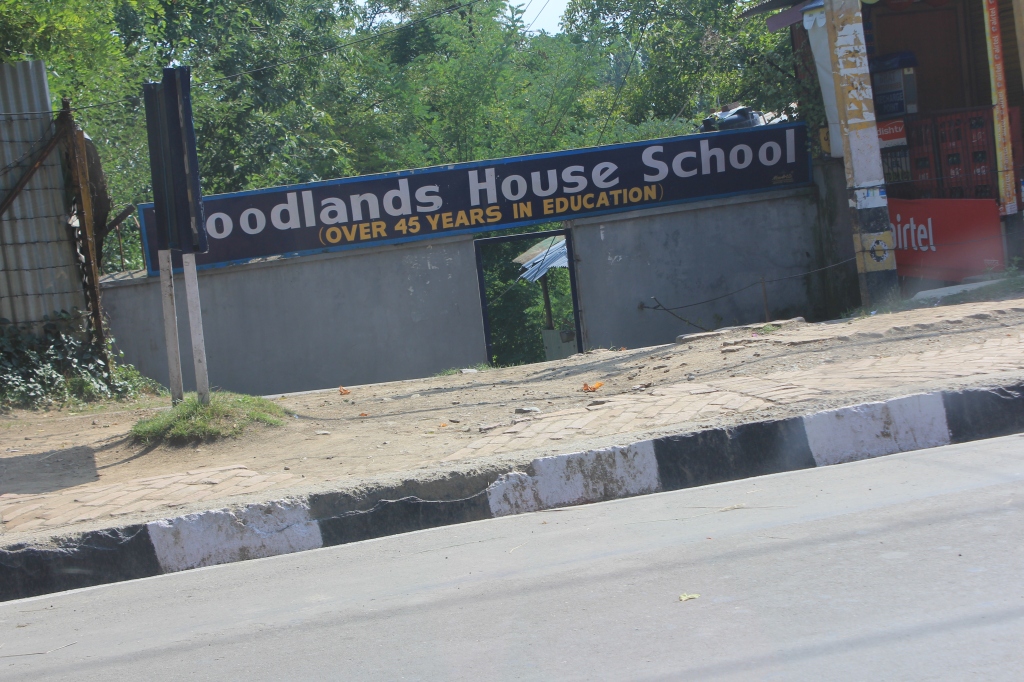
Next Morning(thrusday), I set on foot for Mehjoor Nagar, to get my daughter Back. The gory scenes all around the route was horrifying and heart-wrenching. Somehow, I reached Kursu Rambagh. At least 3-4 thousand people were still stranded in that area. The river waters had cut the road connection between Kursu Rajbagh and Mehjoor Nagar. Some of the local volunteers had cut the poplar tress and made a temporary bridge between the two areas. I too crossed the newly-made poplar bridge to reach Mehjoor Nagar and soon I was at my relatives House. My relative told me that my Daughter was with her Aunt(Massi) at chanapura, and that she was healthy and safe. I was relieved. I decided to get my daughter Back once the water level recedes and returned back to the Woodland School.
I stayed that night and Friday night with a friend of mine, who has a house near Woodland School.
On Saturday morning, I and my family were given a lift by an army truck. We had to reach our village in Tral. The truck dropped us at Habbakhatun. From there we walked 3 kms and reached Panthachowk. 5-6 thousand people were waiting there or were stranded. We walked further until we got a lift from a Truck Driver from Jammu. We alighted from the Truck at Awantipura . I managed to get a taxi from Awantipura and reached my Home at Tral.
It was only after 4-5 days stay at Tral, I could manage to get back my Daughter from her Massi’s(Aunt’s) house.
I had gone to my House at Jawahar Nagar, day before yesterday. It is still filled with a lot of Mud and silt. Everything has been destroyed by the waters. Somehow, I could bundle some of the clothes for washing . The place is still far for any immediate inhabitation. But I will go back, clean up the mess and try to return to a normal life, as I used to live there, before the Deluge.
During those tough 6 days, I witnessed the fury of Nature. The “thud” and “splash” of the crumbling houses. Thrist. Hunger .Anger. The fear of losing near and dear ones, and above all, the power of Humanity. I am thankful to all those, who helped me and my family to Survive. And I thank God, who gave me the courage to start afresh with optimism and Empathy. I have learnt, Nothings matters except being Humane and Kind.
He is one of the victims of the Floods, that submerged almost whole of Srinagar. Charanjeet singh hails from village Tral in Kashmir valley and was putting up at Jawahar Nagar on rent along with his wife and two Kids.
Before retiring for the bed; I could not forget what he had told me just a few days back. His experience of going through the worst floods of Kashmir is/was still engraved on his psyche. He was narrating his poignant ordeal. And I was all ears.
He bagan like this:
6th sep 2014(Sat), time 10.00a.m, Mehjoor Nagar.I had come to meet a relative of mine, as well as pay my obeisance at the Gurdwara. To my surprise, Half of the Gurdwara was under the flooded waters of river Doodhganga-that flows nearby. When I enquired about the reasons for such a large volume of water, a local shopkeeper told me, that the waters are coming from Kandgam.
Mehjoor Nagar was slowly and gradually sinking under the waters. I ran away towards my house in Jawahar Nagar for the safety. While I was rushing towards my house, a friend called me on my Mobile and informed that Padshahi bagh too is under the flood-waters.
Whole day, I was anxious and phoned several friends and relatives about their welfare as well as ,to know ,the latest status of the floods. By 7.00p.m, My relative from Mehjoor nagar, whom I had visited in the morning, came to my house for shelter as his house had come under the waters.
I was apprehensive that may be Jawahar Nagar will too get submerged.I discussed with my wife about the possibilities of leaving for “Zeethyar” as that place was at a higher level.My wife rejected my suggestion out rightly as she said, “How much water will come! May a foot or two! If we have to leave, we will leave tomorrow morning.”The logic behind the decision was acceptable as we had never heard that Jawahar Nagar has been flooded ever. Also, I have two young children, and it would have been cruel on our part to drag them with us in the late evening.
By 10.00 p.m, we all retired to our beds. I was awakened by shrilled voices in the middle of the night.I checked on my mobile. It was 12.30 a.m.I rushed towards the street. Many young men were running haphazardly in the night and were knocking at the doors of the houses in the neighborhood. I confronted one of the youngster and asked him, “what is the matter?”. In a gushed tone, he answered stentorianly, “We have been told that the flood-waters may come from the Hotel Hatrick. Be alert.” And he ran away, Screaming aloud, “jaggo, Hoshiyar(be alert)”.
I was worried. I awakened my family-members from the slumber and told them what transpired .At 1.30 a.m, I strolled towards the main road. A couple was running towards me .As they approached nearer,The man held my hand and said shockingly, “The waters have come in the town-square. There is a breach in the embankments of Jhelum. Run for your life. Alert others too.” Without wasting a second, I ran towards my double- storied-house. I knew the inevitable is going to happen now. I didn’t want to take any risk. Once upon reaching my house, I took some of our essential belongings with me and shifted along my family to the first floor.
By sunday, 6.00 a.m, waters had started entering the front yard of my house. The level remained the same till 8.00a.m. After that, the waters started to rise sharply. I shifted my family and some of the belongings to the top storey of the house.
At around 9.00a.m, one storey was completely submerged under water. The waters were coming from Rajbagh and Kursu Rajbagh. The waters were gushing and swallowing everything that came in its way. The rising waters forced me to shift to my neighbor-Abid’s house. He helped me to shift my family to his house. We entered his house through the windows .His house was a 3-storied one and mine was only 2 storied.
We were 13 people in all(4 ladies,5 gents and 4 children).Between 11.00 a.m and 12.00 noon,5 houses fell down in front of my eyes. In one of the crumbling houses, I could see at least 10 people falling down and getting Buried under the Debris. I could hear their screams but I could do nothing. Their voices were silenced forever by the might of nature. My wife and children screamed each time, they saw or heard, the houses collapsing all around us. Dr. Sushil Razdan’s house too crumbled down and at least 3 people went down with that house..
Some civil boats came and rescued their relatives. We cried and screamed for help. We were assured by them ,that they will come back for our rescue. But nobody came the whole day. As the day passed by, we could hear the sounds of the crumbling houses all around us. All the children and women were visibly terrified. The men, though were equally terrified, but they acted like bravados.
The noises, screams and sounds of falling houses finally stopped by Sunday night. We did not eat anything that Sunday. My children were hungry and thirsty. By Sunday night, the family of Dr.Tickoo-who live 20 feet away from the house where I was marooned along with my family-threw 4 chapptis towards us. I fed those rotis to my Children. The adults did not eat anything at all.
I could not sleep that night out of anxiety and fear.
On Monday morning, when others woke up, they were all visibly happy. Happy, because we had survived the night. As the day progressed, we could see some Army,NDRF and civil boats. Each time we saw a boat, we cried for Help. But It seemed as if we are nobody and nobody’s responsibility.
In the meanwhile, the family members of Dr. Tickoo sent 30-40 chapptis to us both in the morning and the evening. A rope was thrown from their house to ours. A polythene bag, filled with “rotis” , was slided across the rope, directed towards us.
Monday night too passed, though I did not wink even for a second that night, But I do remember looking up to the skies and saying these words, “God, I know Death is inevitable. But don’t kill us this way.” I was praying to God for our safety.
Tuesday morning, I was thinking that the house, where we are putting up, might also collapse. The fear of death was keeping us on our toes both physically and mentally. The frequency of boats had increased that day. I knew the boats are giving preference to the sick, old and children. I hit upon an idea .I started crying aloud as I screamed, “Help me, my daughter is sick. kindly help me.” . I had lied(God forgive me) that my elder daughter, aged 9 years is sick. But the trick worked .A civil boat came to my rescue. It was around 11.00a.m. I wanted to go with my daughter, arrange a boat and come back to the rescue of others. By my Neighbor Abid opined that he should go, as he has more connections than me, since he has lived in srinager throughout his life and I was sort of an outsider as I am from village tral.
Finally, I gave in to his pestering and logic and he went away in the Boat along with my elder daughter. He promised that he will come back by 3-4p.m. We waited and waited for his return till 10.00p.m. But he did not come.
I and my wife were apprehensive that something bad might have happened. It came to my mind that, may be, the boat has capsized. My wife was inconsolable and she fainted. It was a very tough situation for me. After lots of efforts, I revived the consciousness of my wife.
How could I sleep that night! I was aghast with fear and my helplessness. At around 12.30 a.m, the wife of Abid started screaming . She was yelling loudly , “This house is going to fall. Help me Allah!” It took some time for all of us to control and console her.
By 1.00 a.m, Finally Abid came with a Boat. And we all had a sigh of relief. I enquired about my Daughter. He told us that she is safe at her Maternal uncles’s place, who stays near the embankments of the River at Mehjoor nagar. The news was relieving for us too. The boat that Abid had brought along with him could house nearly 20 people. The boat was arranged from Rainawari. The Boatman told us that the Gurudwara at Chatti-Padshahi is safe and that we should go there for our safety. The Boat dropped us at lal-Mandi near the banks of Jhelum river.
We were told by a passerby to go to the Hotel of the politician Altaf Bukhari(PDP) across the river. we crossed over the foot-bridge(near SPS muesuem)and reached his hotel. It was jam-packed as 1500 people had already taken shelter there. Many of the people were visibly sick and needed medical attention. Childen were crying.Anyways, We slept there for some hours.
Next morning (Wed)8.00 a.m, we left that place and decided to take shelter at Zeethyar. We walked through the Bundh(embankment) and reached Jaan Bakery via Zero Bridge. We took the hilly path to reach Durganaag Mandir. Enroute, I met few acquaintances. They told me that many sikh families had taken shelter at Woodland House school and that Zeethyar is jam-packed with 3000 people. We decided to take shelter at Woodland House school as I knew some local families there.
While, we were walking towards the School, The scenes reminded me of the 1947 partition as I saw many people walking or wading with their belongings on their heads. Finally, I reached Woodland School. It too was overcrowded. Later that day, the traditional Kashmiri- “Tehar”. Was served to all. We stayed there for the Night.

Next Morning(thrusday), I set on foot for Mehjoor Nagar, to get my daughter Back. The gory scenes all around the route was horrifying and heart-wrenching. Somehow, I reached Kursu Rambagh. At least 3-4 thousand people were still stranded in that area. The river waters had cut the road connection between Kursu Rajbagh and Mehjoor Nagar. Some of the local volunteers had cut the poplar tress and made a temporary bridge between the two areas. I too crossed the newly-made poplar bridge to reach Mehjoor Nagar and soon I was at my relatives House. My relative told me that my Daughter was with her Aunt(Massi) at chanapura, and that she was healthy and safe. I was relieved. I decided to get my daughter Back once the water level recedes and returned back to the Woodland School.
I stayed that night and Friday night with a friend of mine, who has a house near Woodland School.
On Saturday morning, I and my family were given a lift by an army truck. We had to reach our village in Tral. The truck dropped us at Habbakhatun. From there we walked 3 kms and reached Panthachowk. 5-6 thousand people were waiting there or were stranded. We walked further until we got a lift from a Truck Driver from Jammu. We alighted from the Truck at Awantipura . I managed to get a taxi from Awantipura and reached my Home at Tral.
It was only after 4-5 days stay at Tral, I could manage to get back my Daughter from her Massi’s(Aunt’s) house.
I had gone to my House at Jawahar Nagar, day before yesterday. It is still filled with a lot of Mud and silt. Everything has been destroyed by the waters. Somehow, I could bundle some of the clothes for washing . The place is still far for any immediate inhabitation. But I will go back, clean up the mess and try to return to a normal life, as I used to live there, before the Deluge.
During those tough 6 days, I witnessed the fury of Nature. The “thud” and “splash” of the crumbling houses. Thrist. Hunger .Anger. The fear of losing near and dear ones, and above all, the power of Humanity. I am thankful to all those, who helped me and my family to Survive. And I thank God, who gave me the courage to start afresh with optimism and Empathy. I have learnt, Nothings matters except being Humane and Kind.
By Sandeep
|
Posted in JAMMU & KASHMIR, kashmir
|
Tagged KASHMIR BLOG, kashmir blogs, kashmir flood, kashmiri muslim, kashmiri pandit, kashmiri sikh, rajbagh, srinagar, tales from kashmir, woodland school, zeethyar
|
Comments (4)
Kashmir Flood sep 2014-some images
September 15, 2014 – 1:19 pm
Few Pictures were taken on 4-5th sep 2014(mentioned in those pics).Rest of the photos were taken on 13sep 2104.
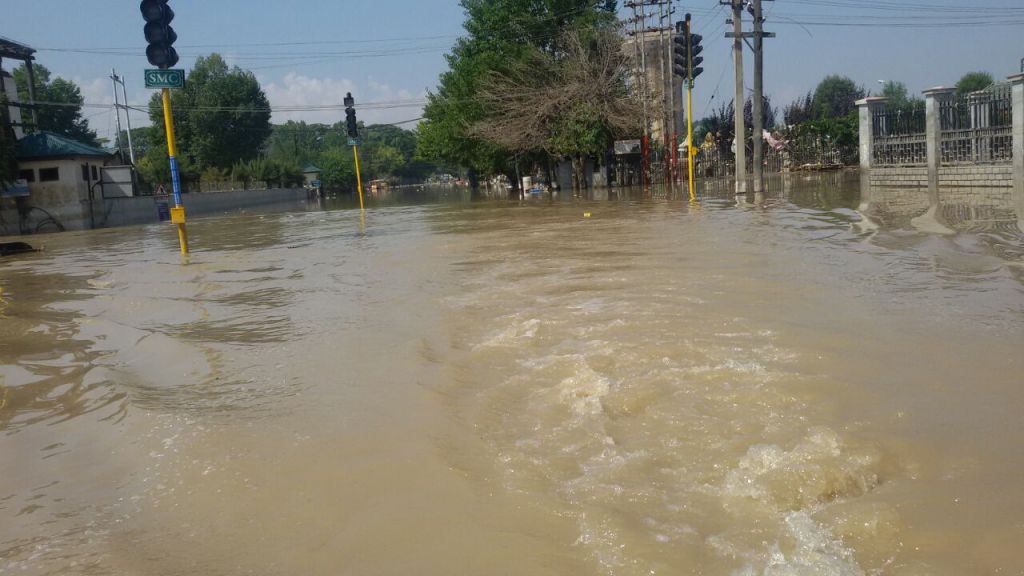
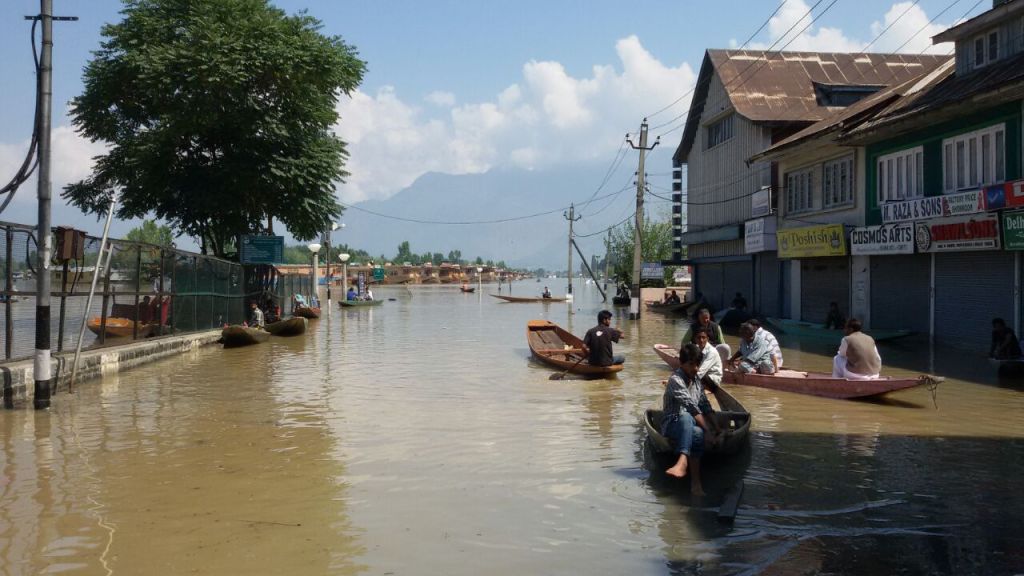
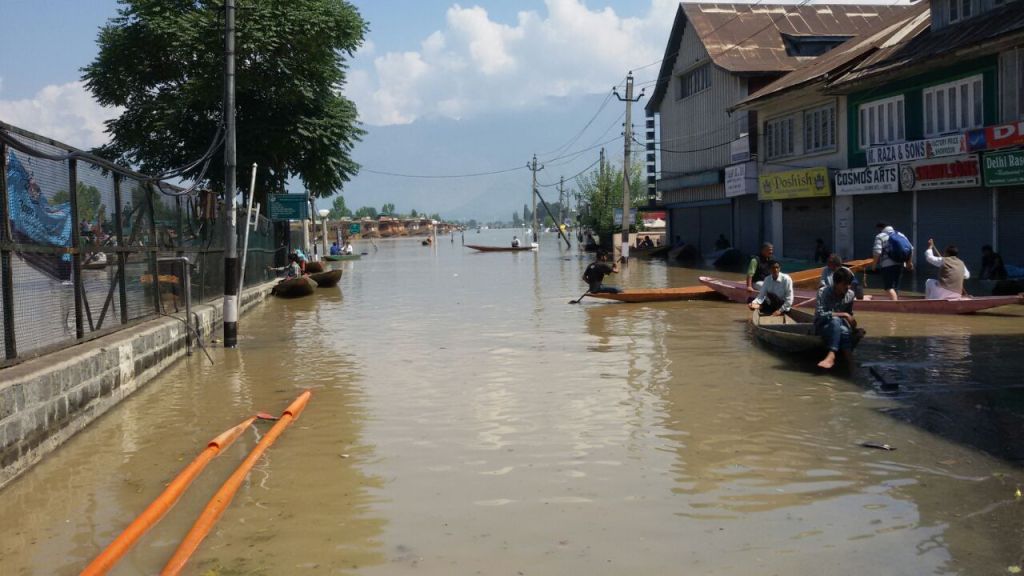
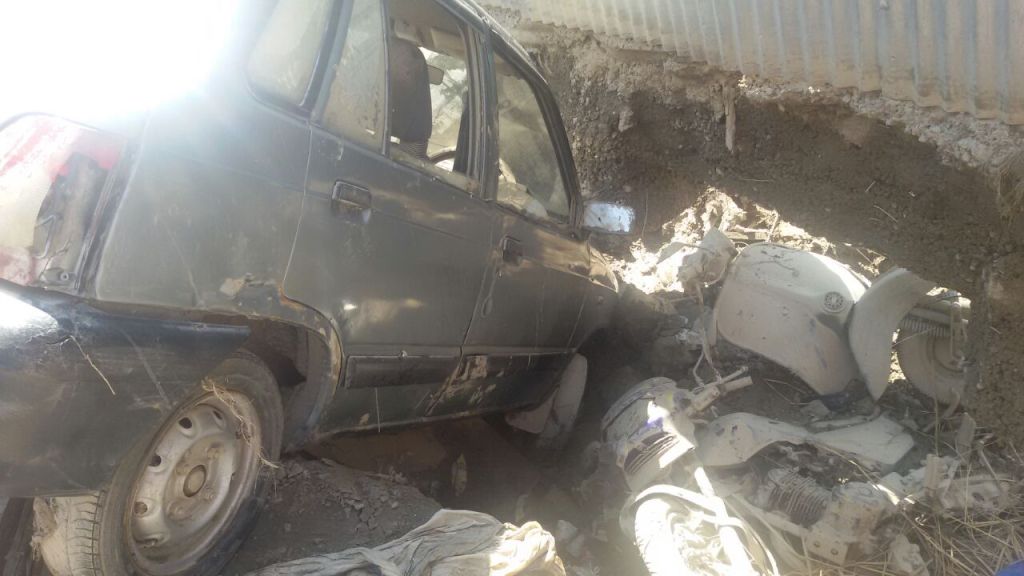
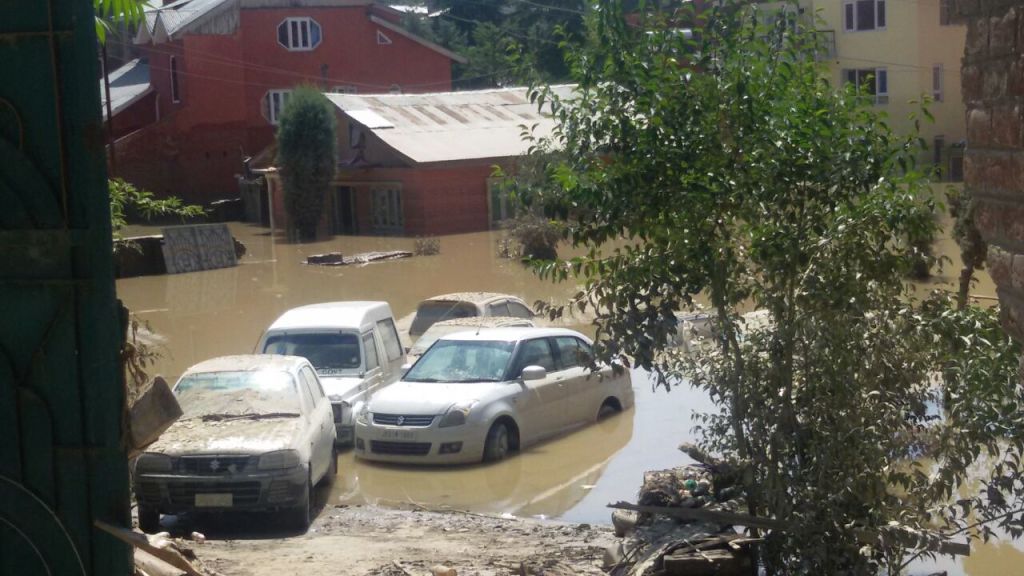
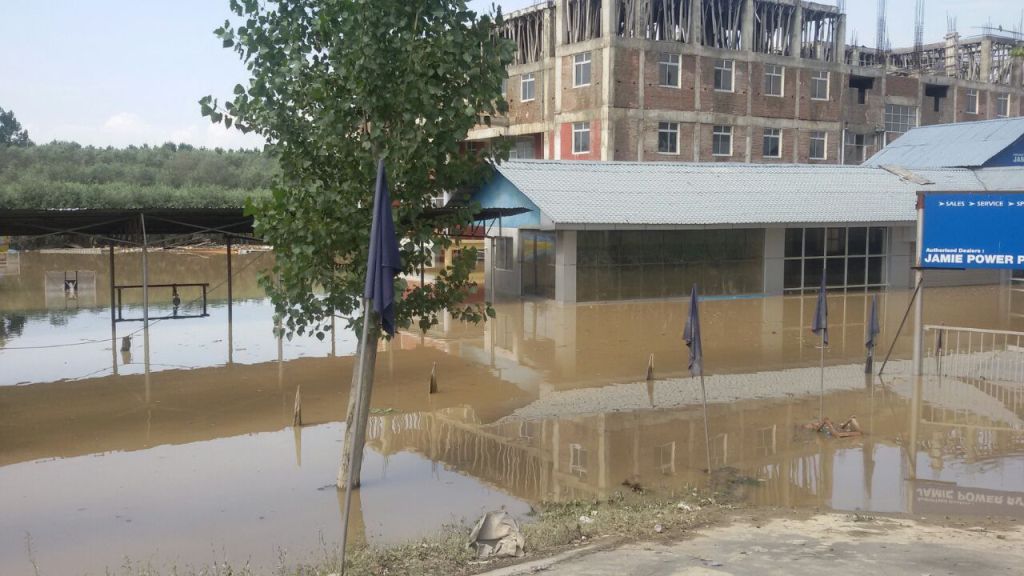
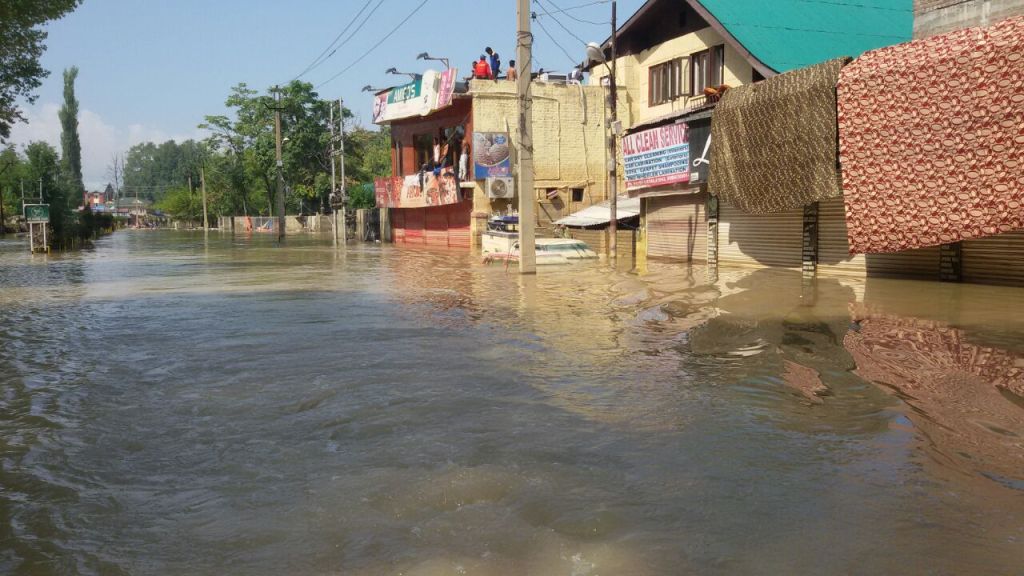
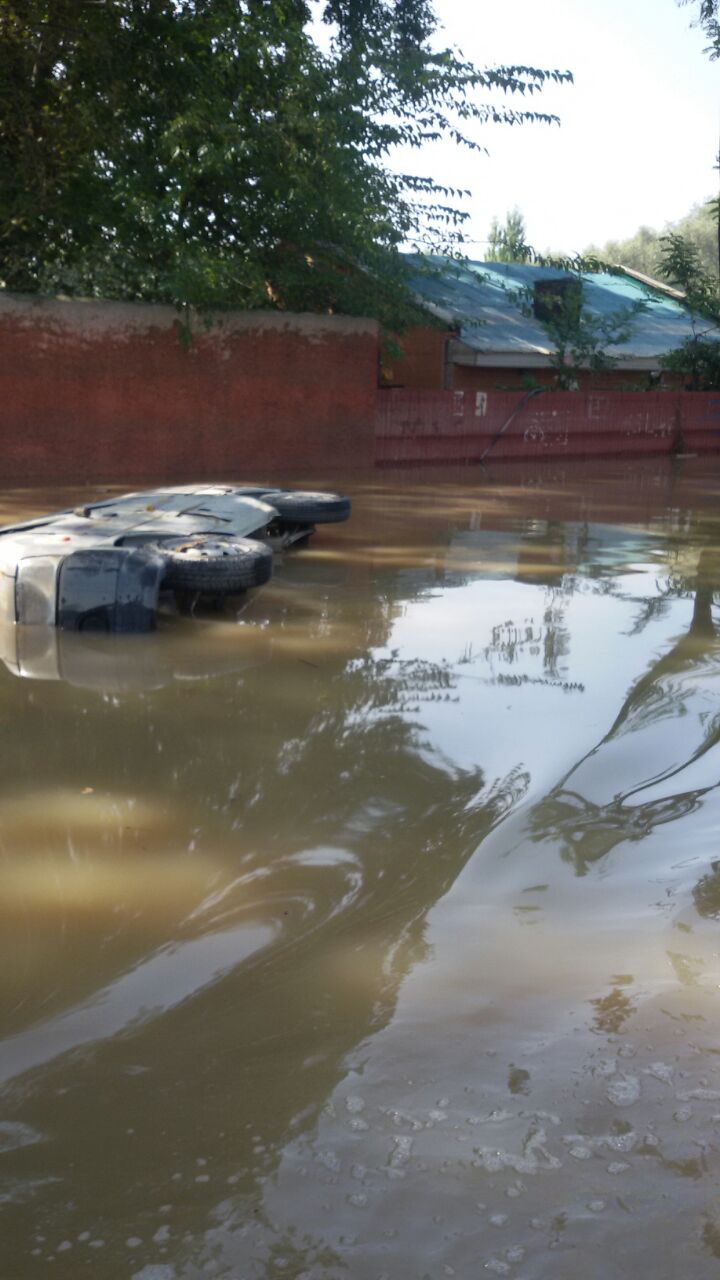
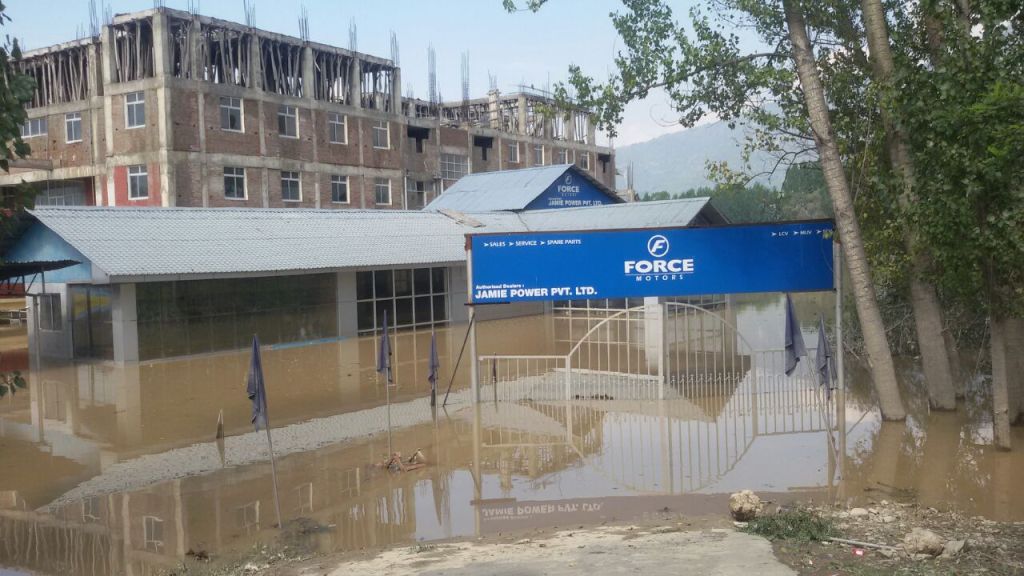
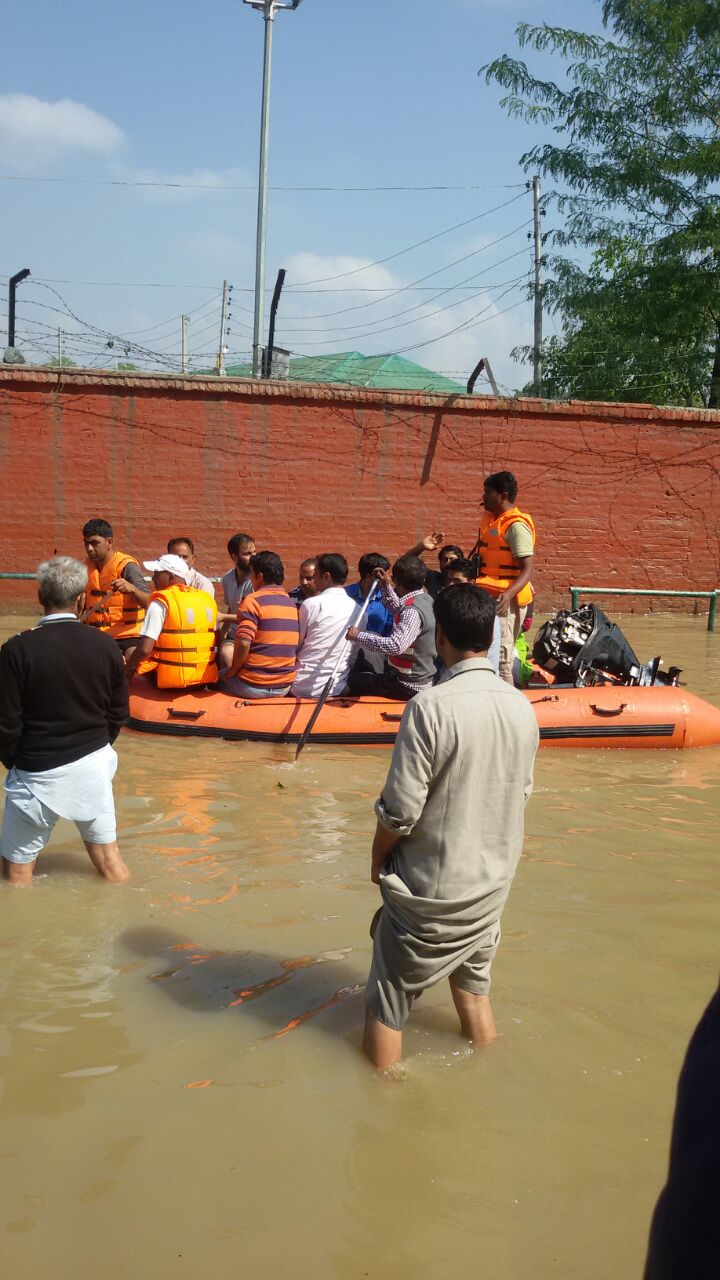
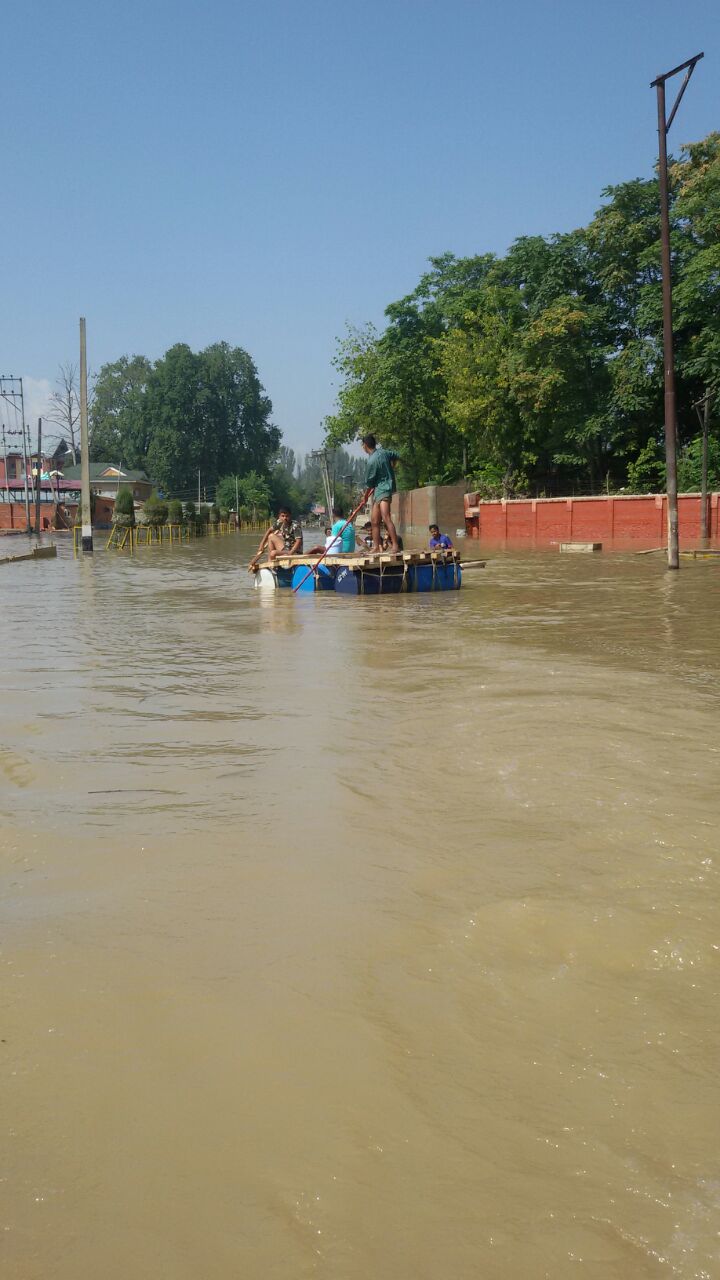
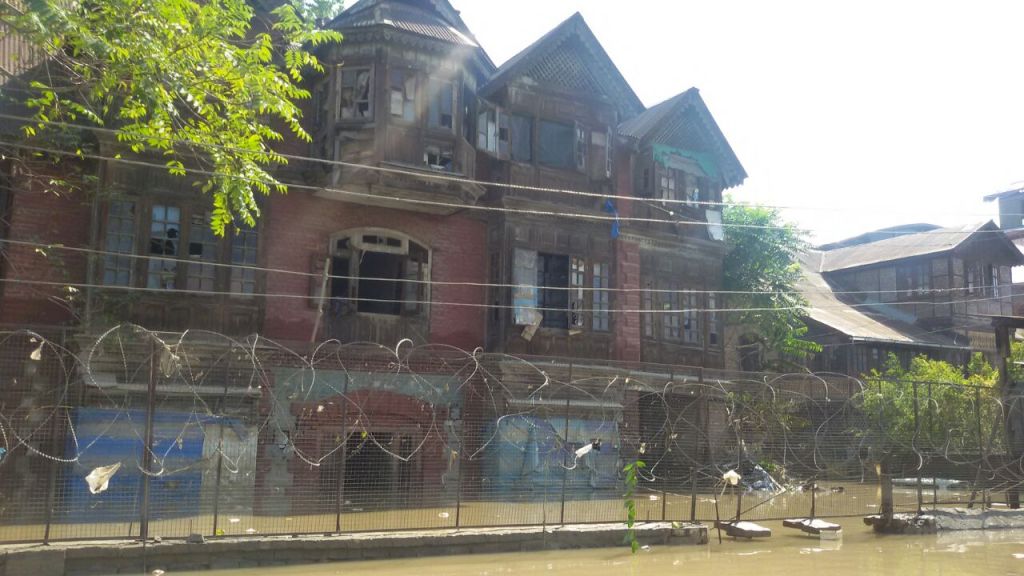
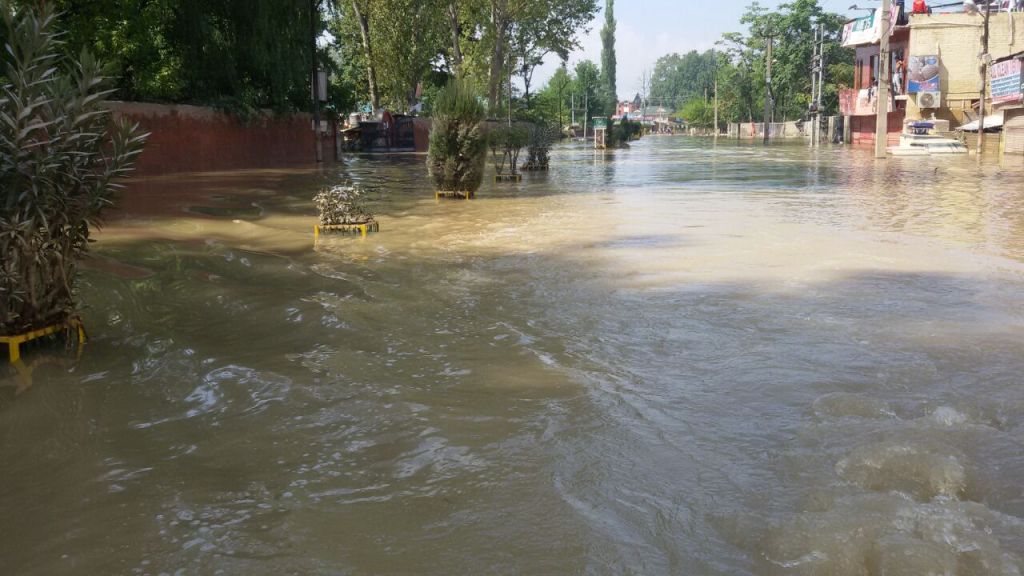
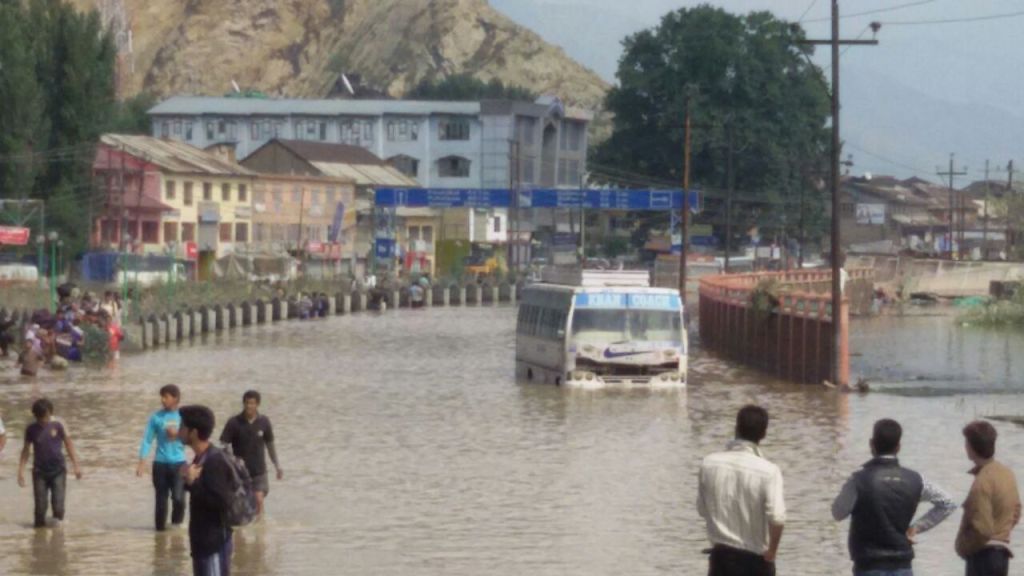
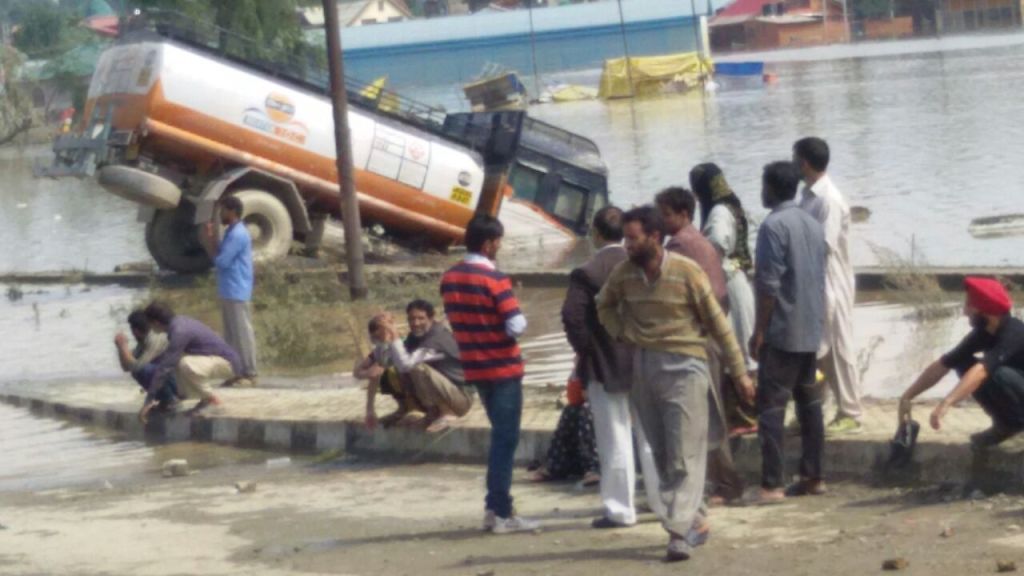















By Sandeep
|
Posted in india, JAMMU & KASHMIR, kashmir
|
Tagged india, kashmir, KASHMIR BLOG, kashmir flood 2014, kashmir floods, kashmir floods sep 2104, kashmiri muslims, kashmiri pandits
|
Comments (1)
gangabal yatra 2014(kashmir)-some photos
September 8, 2014 – 1:49 pm
By Sandeep
|
Posted in JAMMU & KASHMIR, kashmir
|
Tagged APMCC, gangabal yatra, kashmir, KASHMIR BLOG, kashmir photos, kashmiri pandits, KP
|
Comments (0)
Kausar Nag History and the controversy
August 2, 2014 – 1:21 pm
The Protest headed by the separatists of Kashmir against Kausar nag
yatra was not an impromptu agitation. It was rather deliberated upon
astutely by the Separatists.And a leading
Kashmir-based-English-newspaper was roped in . For example, This leading
newspaper of Kashmir, few weeks back had published deliberately that
instead of some 40 odd KP’s, 4000 Kashmiri hindus(more than 99% of
hindus in Kashmir are Pandits) are going for the yatra. This was enough
for the separatists to convey the majority population, that this yatra
is a precursor for the return of KP’s into the valley.And thus an era of
Hindu-Hegemony has started .( 4000 Hindus are/were going for the yatra,
that too from the Reasi side of Jammu according to newspaper reports.)
30-40 odd Kashmiri Pandits(KP’s) wanted to undertake the Kausarnag yatra from Kulgam, as did their predecessors till 1989.But to their dismay, they were stopped by the local administration, even though they had taken the permission to undertake this yatra many days back. It is an irony that the DC of Kulgam backtracked from his original stand and feigned that he had not given any such order.
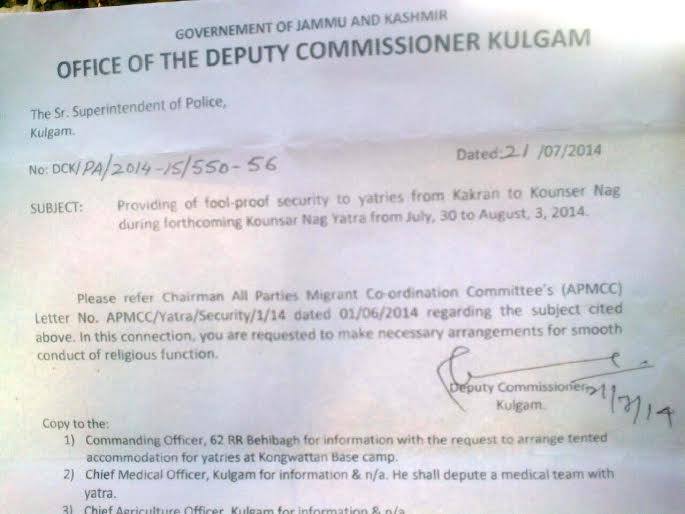
The main and only reason for the cancellation of the yatra, was the appeasement policy of pak-sponsored-separatists and their cahoots. They alleged that KP’s never undertook this yatra and opined that the yatra will disturb the fragile ecology of the Mountain lake-Kausrnag. But strangely, they have turned a blind eye on other equally important ecological aspects of Kashmir.
The fact however has a different story to tell:
Fact is that 10,000 trees were cut and 30,000 wild lives destroyed to construct Mughal Road. Is that not destruction of ecology! Why didn’t the separatists raised their voice against that road! Or was it that, the road was connecting them to another Muslim dominated area, hence they remained silent! Why haven’t The so called Islamic zealots- turned- environmentalists ever raised their voice against the molestation of water bodies of Kashmir viz Dal Lake, Nagin Lake, Wullar Lake, Manasbal Lake and now extinct Anchaar lake.
What about the environmental hazards which other tourist places like Gulmarg, tangmarg and many other such tourist destinations have to face due to the influx of tourists both Indian and foreign. Has these bigot leaders guts to raise their voices against the influx of tourists to these places? The answer is a big No!!! Fact remains that tourism is the single largest segment which gives livelihood to lakhs of Kashmiris. Every year lakhs of Kashmiris pray to Almighty that more and more tourists should come to Kashmir. Tourists who come to Kashmir spend money like wastrels and don’t mind to loosen their wallets.
The tourists unlike the KP’s don’t call Kashmir their Homeland. But KP’s do. Since, many Kashmiri Muslims have illegally occupied the houses and properties of Kashmir, They fear that if KP’s will come back, they may have to handover those properties back to the Hindus. They are the ones who protest stridently against the coming of KP’s back into the valley. And they are the biggest supporters of the separatists.
B.T.W, Kausarnag is also known as Vishnupad or Kramasaras or kramasara.
The Separatists who are ignorant about the legend and History of Kashmir, particularly Kausarnag should read the write-up, by DR. R.K.Tamiri, that shows the significance of “Vishnupad”..
please check the video for details of Kausarnag/vishnupad
From Kalhans Rajatarangini, The Translator M.A.Stein, in the chapter-Ancient Geography of Kashmir-section-2(the pir panjal range) has written as follows about Kausarnag:
30-40 odd Kashmiri Pandits(KP’s) wanted to undertake the Kausarnag yatra from Kulgam, as did their predecessors till 1989.But to their dismay, they were stopped by the local administration, even though they had taken the permission to undertake this yatra many days back. It is an irony that the DC of Kulgam backtracked from his original stand and feigned that he had not given any such order.

The main and only reason for the cancellation of the yatra, was the appeasement policy of pak-sponsored-separatists and their cahoots. They alleged that KP’s never undertook this yatra and opined that the yatra will disturb the fragile ecology of the Mountain lake-Kausrnag. But strangely, they have turned a blind eye on other equally important ecological aspects of Kashmir.
The fact however has a different story to tell:
Fact is that 10,000 trees were cut and 30,000 wild lives destroyed to construct Mughal Road. Is that not destruction of ecology! Why didn’t the separatists raised their voice against that road! Or was it that, the road was connecting them to another Muslim dominated area, hence they remained silent! Why haven’t The so called Islamic zealots- turned- environmentalists ever raised their voice against the molestation of water bodies of Kashmir viz Dal Lake, Nagin Lake, Wullar Lake, Manasbal Lake and now extinct Anchaar lake.
What about the environmental hazards which other tourist places like Gulmarg, tangmarg and many other such tourist destinations have to face due to the influx of tourists both Indian and foreign. Has these bigot leaders guts to raise their voices against the influx of tourists to these places? The answer is a big No!!! Fact remains that tourism is the single largest segment which gives livelihood to lakhs of Kashmiris. Every year lakhs of Kashmiris pray to Almighty that more and more tourists should come to Kashmir. Tourists who come to Kashmir spend money like wastrels and don’t mind to loosen their wallets.
The tourists unlike the KP’s don’t call Kashmir their Homeland. But KP’s do. Since, many Kashmiri Muslims have illegally occupied the houses and properties of Kashmir, They fear that if KP’s will come back, they may have to handover those properties back to the Hindus. They are the ones who protest stridently against the coming of KP’s back into the valley. And they are the biggest supporters of the separatists.
B.T.W, Kausarnag is also known as Vishnupad or Kramasaras or kramasara.
The Separatists who are ignorant about the legend and History of Kashmir, particularly Kausarnag should read the write-up, by DR. R.K.Tamiri, that shows the significance of “Vishnupad”..
Visnu Pad Legend:By Dr. R.K. Tamiri
It was in summer (July) of 1982 that I visited the enchanting high altitude lake of Konsarnag. A decade and a half later when I drifted into the field of folkloristics and history I ‘discovered’ that in my trek to this beautiful lake I had accomplished the pilgrimage to the historic Naubandhana Tirtha. Konsarnag, over 2 miles long and located at an altitude of 12,000 ft, has been worshipped since times immemorial as Visnupad (foot of Visnu). In Nilmat Times it was called by its Sanskrit name Kramasaras or Kramsara (Kramafootstep, Saras lake). Since it is supposed to mark the footstep of Visnu, it is the main objective of the Naubandhana pilgrimage.
VisnuPad Legend: Konsarnag lake is one of the two places in Kashmir Valley that is associated with worship of ‘Visnupad’. The other shrine of ‘Visupad’ is located in the foothills of Pir Panjal at Fatehpur, in Dooru-Shahbad tehsil, not much away from Verinag (Nilkunda) Spring. Fatehpur shrine houses as per local folklore, footprints of Visnu on a stone. In the Vedic literature (Rigvedic verse I22.17) mentions three steps of Visnu. According to Sakapuni, Visnu placed his steps in a 3-fold manner, on the earth (as fire) in the atmosphere (as the lightening) and in the sky as the sun. Visnu is chiefly extolled for his three strides with which he traversed the world. The Mahabharata speaks of him as the presiding deity of motion. The Natyashastra of Bharata applies to him the epithet amitagata, one with unrestrained movement and the earth is often described as having been trodden by Visnu in the past. In the epic-purana period a few holy spots were supposed to bear the markings of the feet of Visnu, whose main attribute is his power of striding. Scholar BM Baru explains Visnupada as an astronomical term, when the sun is on the rising point (Samarohana) and setting (Gayasiras). Stories about a hill bearing the footprints of Visnu were current in the days of Yaska. Visnusmriti mentions Visnupada alongwith Godavari, Gomati, Vipasa etc. besides Gaya. An important aspect of Gaya pilgrimage (where a person can perform his own sraddha), is visit to Visnupada temple (bearing foot-prints of Visnu). This temple existed in 4th Century AD, but the temple in its present condition belongs to Gupta period. However, Buchanan draws our attention to an inscription that says the temple was constructed by King Jayasimha (1128-49 AD) of Kashmir in honour of the footprints of deity Dattatreya (a form of Visnu). The epics refer to a Visnupada situated in the north. Mahabharat a carries as many as six references to it, three of which speak of it as a spot on the top of a northern hill. Historian Suvira Jaiswal says, “At present we cannot determine its exact location, it appears to have been in the north”. Popularity of worship of Visnupada in Kashmir is certainly due to sway of Buddhism in the region. Jaiswal argues,” the practice of dedicating the footprints of Visnu and of erecting shrines over them became popular certainly due to the Buddhist influence. It was later adopted by Vaisnavism in which Visnu’s foot was already much exalted. But it was not popular among Vaisnavas, as dearth of available evidence indicates”.
Dessication of Satisar Legend: Kashmir’s religious tradition locates on the peaks in the vicinity of Konsarnag lake the seat from which Visnu, Siva and Brahma fought the water demon Jalodbhave and dessicated Satisaras. The western most and the highest peak (15523 ft) is said to have been the site of Naubandhana tirtha. In the Kashmir version of the deluge Visnu in his Matsya (fish) avtara had bound to this peak the Nau (ship into which Parvati/Sati had converted herself) to save the seeds of beings from destruction. Konsarnag lake lies at the foot of this peak and to the northwest of it.
Nilmat Story: As per the legend narrated by Nilmat Mahatmya, at the end of Manvantra (one of the 71 Caturyugas) all the movable/immovable creations of the earth were destroyed completely, sparing of course the mountains. The whole of Jambudvipa was effaced, the earth turned into a sea. After the destruction Lord Mahadeva stayed all around the world in the form of water. At that time, the Goddess Sati assumed the form of a boat. The future Manu, through magical power, placed all the seeds in that boat. Visnu in Matsya form dragged off that boat by means of his horn, fastened it to the top of a mountain and left for an unknown place. This mountain peak came to be called Naubandhana peak-holy and destroyer of all sins and fears. The goddess Sati in boat form becomes the earth and on that earth comes into being a lake of clear water, Satidesa, 6 Yojanas long and half of that in breadth, enjoyable, heart-enrapturing and the sporting place of the gods. Indra was sporting once on the bank of Konsarnag, accompanied and his wife Saci. Daitya Chief Sangrha, who was exceedingly difficult of being conquered came there while Indra was sporting. He was aroused by Saci and wanted to carry her away. This angered Indra. In the fight between Indra and Sangraha that lasted a year, the Daitya Chief was killed and Indra ascended to heaven. However, just before his death, Sangraha discharged his semen into the lake. A child was born in the waters out of the semen of the evil-minded Daitya Chief.As he was born in the water, the child came to be called Jalodbhava (demon-child). Due to compassion, the Nagas led by their chief Nila brought up that child in the waters. Having propitiated the God Pitamaha with penance, Jalodbhava obtained from him a triple boon, viz. immortality in the water, magical power and unparalled prowess. The Daitya chief devoured all the human beings who lived in various regions near the lake. The people fled away from Kashmir due to fear. At that time Kashyapa was on a pilgrimage of Kashmir to visit the holy spots. Nila went to meet Kashypa at a place called Kanakhala. On his visit to holy Visnupada, Nila pleaded before Kashypa,” Now that imprudent fellow (Jalodbhava) who obtained boons from Brahma of imperceptible birth, ignores me like anything and I am incapable of keeping him under control due to the boon of the lord of three worlds.” Kashypa accompanied by Nila, the Lord of Nagas reached the abode of Brahma and complain to Vasudeva, Isvara, Ananta about the activities of Jalodbhava. The God Pitamaha tells Nila, the sage of unparalleled valour, “we shall go to Naubandhan a to subdue him. Then the God Kesava (Visnu) will undoubtedly kill him”. Gods mounted their respective Vahans (vehicles), Hari on Tarksya, Hara along with his wife on bull, Brahma on Swan and the two Nagas on the cloud. They went after Jalodbhava. Kashypa went by his supernatural power. Indra heard that and, in the company of the hosts of gods, went to that place where Kesava had gone. Other smaller gods also came on their respective mounts to witness the fight. Having reached Nauban-dhana, Visnu adopted a firm position. As Jalodbhava heard the sound of the retinue of the gods, knowing himself to be imperishable in the water he did not come out. The pleased Madhusudana, having learnt that the water-demon would not come out, entered Naubhandna in the company of Gods. Rudra took position on Naubhandna peak, Hari on the southern peak, Brahma on the northern peak and the gods and the asuras following them. With gods having taken up the positions, God Janardana implored Ananta to kill the demon,” Breaking forth Himalaya today with the plough,make soon this lake devoid of water”. Ananta broke forth Himalaya with the plough.When the water of the lake was disappearnig, Jalodbhava practised magic to create darkness all around. Then the God Siva, holding the sun and the moon in his hands, brought the world to light.With the vanishing of darkness, Hari through yogic powers assumed another body and fought with the demon. There was a terrible fight between Visnu and the demon with trees and peaks of mountains.Hari cut of forcibly the head of the demon and Brahma felt pleased. Brahma, Visnu and Sambhu gave their own names to the peaks of which they had taken their positions. So the peaks came to be called Brahma, Visnu and Mahesvara. That which is Naubandhana peak is Sankara. The one on its right side is celebrated as Hari and the left one as Brahma. The Gods declared, “whoever shall see you after taking bath in the lake Kramasara shall see three of us on the mountain and will go to heaven.” As per tradition even the evil-doers are freed by seeing these peaks. Different places on the peaks are worshipped as hermitages erected by Brahma, Kashypa, Mahadeva, Ananta, the sun and the moon and Hari. Mahadeva’s hermitage is located on the spot where Visnu stood and obtained victory at that time. Hari’s hermitage is celebrated as Narsimha. After the slaying of the demon, the Sudarsana wheel, intoxicated with the blood of Jalodbhava, wandered in the deserted land and was caught by Sankara. The latter handed over the discuss to Jnarndana. The latter made his abode on the head of Jalodbhava. He erected a divine image, on which both Kesava and Siva-the destroyer of all sins-are represented. Kashyapa then declared land as habitable, holy and charming. He asked Nagas to live in the company of Pisachas. When Nila, the Naga Lord reminded sage Kasypa about war-like nature and evil-doings of Pisachas, Sage Kasypa explained to him the role of Nkumbha, the noble lord of Pischas appointed by Kubera to keep Pisachas in check. The Sage Kasyapa discussed with Nila the compromise, whereby Pischas would live for six months in the Valley. Nilmat assigns two explanations for the Valley being named as Kashmir. Kasyapa played an instrumental role in reclaiming Valley land, while Balarama took out the water through the plough-wielder. Kasypa is also called Prajapati. Both Prajapati as well as water are called Ka. Source of Vyeth (Vitasta, Jehlum, Hydspes): Veshau, the ancient Visoka, which later on turns into Vitasta, receives streams coming from the northern slope of the Pir Panjal range between Sedau and Banihal passes. Its traditional source is placed in the Kramasaras or Konsarnag. This is the third aspect of veneration for this lake. Visoka, means griefless (free from pain). Traveller GT Vigne crudely describes it as meaning as river of Visnu. Nilmat describes Visoka as Uma. Later, after worshipping Lakshmi to purify Kashmir Veshan was glorified as Visoka. The fine waterfall which is formed by the stream of Konsarnag, not far from the village of Sedau, is known as Ahrbal. In Nilmat times it was called Akhor bila, ‘the mouse-hole’. Aharbal is its present name. Abul Fazl, a minister at Emperor Akbar’s court,in his ‘The AINI Akbari’ describes Veshau as “the name of a stream which issues picturesquely from an orifice in a mountain and at the same place is a declivity down which the waters tumble from a height of 20 yards with a thundering roar”. Abul Fazl (16th century) and GT vigne (1834) have documented sanctity of Aharbal. Abul Fazl writes,” Hindu devotees throw themselves down from its summit and with utmost fortitude sacrifice their lives, in the belief that it is a means of securing their spiritual welfare”. GT Vigne says, “Arabul (Aharbal) is a place of peculiar sanctity with the Hindus and as such, is frequently visited by them, though perhaps less now than formerly, before the prosperity of the Valley was on the wane, and the precipice overhanging its flood has been upon several occasions the last resting place for the feet of the Hindu suicide.” Little is known about how Kramasaras lake came to be called Konsarnag. Since this lake is also the abode of the Naga Kaundinya, the place became famous by the name Kaundinyasara. There is strong probability that Kaun(dinya)sara over a period of time came to be called as Kons’rNag. GT vigne, however, attributes the change of nomenclature to Islamic influence. He says,” As…it is pronounced Kauser Nag it may be inferred that the Musalmans have, on account of its extent and height, given it the name of Kaunser, or Kautser, one of the rivers of paradise, whose waters, whiter than milk or more odoriferous than musk, roll into the fish-pool, a month’s journey in circumference, and by which the righteous are refreshed after passing the bridge of Al Sirat”. Interestingly, Vigne describes the lake as Kosah Nag. There is also a village named Konsarbal below Nandimarg. The spring in this village is also called Konsarbal. Kashmiri Pandits and Gujar/Bakarwals hold the lake in great veneration. As per folklore of Kashmiris Pandits of village Avil, which forms one of the base camps for trek to Konsarnag, the lake Visnupad has its four toes (signifying 4 rivers) towards Punjab and heel towards Kashmir (one river). How such an important pilgrimage was abandoned by Kashmiri Pandits over the past few centuries remains unclear. Gujar/Bakarwals of Rajouri usually come with their flock of cattle in the last week of May, when the entire region is covered with a thick blanket of snow. They camp on the banks of the lake in stone shelters and usually slaughter a sheep. Its head is thrown into the lake and the roasted meats on stone plates is served to people. If the head sinks, only then they move ahead. There are three versions of Naubandhana Mahatmya (43, 85, 86, Stein Collection). As per Naubandhana Mahatmya, the pilgrimage used to take place on Bhadon Shuklapaksha Ekadashi. It asks the pilgrims to do Tarpan in the lake to get rid of sins. On the day of Dadshi one has to take bath at Sangam and conduct tarpan for Saints/Pityrs and offer gifts. Then pilgrims have darsana of peaks, which as per belief assure a place in heaven. Performing sraddha is considered quite good because as per mahatmya, God is present here. Journey: Naubhandana Tirtha is located in Kulgam tehsil. One can reach Konsarnag lake by either of the two routes-Avil or via Aharbal. Avil (old name, Awal) was in olden times ruled by a Kotraj (local chief), who controlled the territory from Damhal Hanjipora to Aharbal. Discovery of ancient pottery, pitchers, pestels etc in the area indicates that the region had human settlement from very early times. As per local lore, the flourishing town of Awal vanished following a devastating earthquake. An old Persian inscription on a grave reveals that Shah Behram ruled Awal during late medieval period. Prior to migration, the village had 25 Pandit families. Except for one family all are Rainas. The grandfather of Mansa Ram Raina, who hailed from Rainawari, had come to Avil during later half of Afghan rule. Sahaz Ram Raina, who lived in 19th century was a an ascetic of great merit. There is a small spring named Thaal Nagin in Avil’s Pandit mohalla. During old times, as per a legendary account, plates (Thalis) would come out of spring whenever any request was made. The water of Thalnagin is ice-cold in summer and warm in winter. Avil to Konsarnag: A gradual ascent through a forest for over an hour leads to Naribal, the last inhabited village, where Gujjars live. The village is also called Naribal Nagin due to the presence of a small spring. Water collected here is then resupplied to Avil village by PHE department. After climbing some distance one reaches AalascharMar. Pilgrims/Trekkers do not take rest here. It is said if a person stops here he won’t be able to go ahead then. People while passing through this place usually deposit a stick or a wooden piece for safe journey onwards. While descending down from Alachmar to the other side there are two tracks. The track on the right side leads to Chirun Bul. The elevated plain is called Astan Marg. The encounter between Sikhs and Pathans took place here in 1819. The Chirunbul meadow is one km. long. Kashmiri shepherds are seen here. After walking some distance, Chirunbul nullah (Vigne’s Shurji-Murg river) is crossed on a seasonal log bridge. Gradual ascent for 3 kms through forests leads to Manzipal (Henna stone). There used to be a seasonal watermill and a shop, run by a Pandit family. There are two big memorial stones here-Danyagon (Paddy heap) and Makaigon (Maize heap). Locals as usual attribute these stones to Pandavs. There is also a small spring here named Pari Nagin, the fairy spring. Locals do not venture to visit this area in late evenings and claim that fairies descend to sing in late hours. It is an uphill journey for another two hours through the forest to reach an alpine sloppy meadow called Lahanpathri. Lot of Kashmiri shepherds are seen here in summer months. One can stay for the night at Lahanpathri and avail the hospitality of shepherds or return to Manzipal base camp. Indersar : Indersar lake is 2 kms from Lahanpathri. God Indra who figures in Konsarnag mythology is associated with this lake. Unlike Ksirsar and Brahmsar, this lake finds no mention in Nilmat or Naubandhana mahatmya. Lake is circular in shape, about 1 km in circumference. Since the mountain peaks are little away, pilgrims can easily do circumambulation of the lake. Lake water is warm as sunlight falls regularly on this lake. How the water from Indersar escapes is not known. Apparently there is no outlet. From Indersar one has to come back to Lahanpathri and then gradually descend through a tree-less area. Chittinadi, coming from Ksirsar lake is crossed over a logbridge and at times one can simply wade through the gushing stream. After crossing Chittinadi, there is gradual ascent along the base of the peaks to Ksirsar. The distance is over 4 kms.
Ksirsar: Ksirsar is spread over thirty kanals. Though circular in shape, it has numerous podia-like elongations. The lake has a clear outlet for water. Its water is milky-white. Since the peaks are too close, no circumambulation of the lake is possible. It is said that there is a big memorial stone of cow. Water oozing out from the glaciers on the peaks falls on the cow and then comes out through teats into the lake. The lake has a clear outlet for its waters. Ksirsar finds mention in Nilmat and Naubhandana mahatmya. The latter describes Ksirsar as resembling a full-moon of Purnima, with its water looking like Ksir. It refers to Upmanu’s asrama here. As per Naubhandna Mahatmya, the lake was created by Sankara himself and one reaches Shivlok by taking bath in it. Nilmat says,” one attains heaven and saves one’s family by seeing the sacrificial place of Brahma there. By seeing there the beautiful Ksirsara, one is released from sins. By bathing on the dark 14th after reaching the source of the Samara (? Chittinadi), one is freed from all the sins and is honoured in the world of Rudra”. Naubhandana Mahtmaya says Upmanu’s asrama is situated in the forest around Ksirsar. Bath in Brahmsar lake, as per Naubhandna mahatmya, has the merit of getting access to Brahmlok. For Brahmsar lake base camp is Hakwas. It can be approached from Lahanpather, Manzipal or Chiryun Bal. The route to Hakwas from Lahanpather and Manzipal is through a dense forest called Hapatnar. It is 4 hours easy journey from Lahanpathri to Hakwas.Frmo Avil to Hakwas it is 17 kms. Hakwas is a big meadow, almost equalling lovely meadow of Kongwattan. Above Hakwas is another meadow, known to the people of the area as Gokul Marg, the meadow of Lord Krishna. A nullah hakwas nullah’ flows around Hakwas.
Brahmsar: While going from Chiryunbal to Hakwas, a bridge is crossed near Hera (upper) Chiryun bal. Then one has to climb gradually a distance of 8 kms (3 hrs), at places over old snow, to reach Brahmsar Lake. Kashmiri shepherds have their camps here in summer. Peaks are quite close to the lake. with little sunshine falling on it. Lake is covered on three sides and its water looks black due to the shadow of the peaks falling on it. Ice-flakes are also seen floating on the lake. The lake has a fearful look. Since the peaks are too close, there is strong echo. People get a feel of hearing ‘heavenly’ sounds. These sounds are attributed to aboriginal prehistoric people-Nagas, Pisachas and Kinnaras. The water of the lake comes out through a regular outlet. Pilgrims desirous of taking bath do not venture to go into the lake. They take out water for bath from the lake at its outlet. Brahmsar lake is spread over 15 kanals. The path from Brahmsar to Konsarnag is via Ksirsar and Indersar and is quite tough. It takes two hours. Only shepherds and Bakarwals take this route. Brahmsar stream is the first to join Hakwas nullah. At this spot is a bridge. Then the latter is joined first by Ksirsar nullah and later Indersar stream near Hera Chiryunbal. Subsequently, the Kaundinya stream (Konsarnag stream) joins it at Sangam. After this, a small stream coming from Ramkansan (opposite to Kongwattan, joins it and it becomes Veshav (ancient Visoka). Near Ramkansan is a sandy meadow, Sekijan , where Galwans are seen camping. The place where Kaundinya stream is joined by other streams is called Dhaumysrama. As per Nilmat taking bath here is equal to performing Rajasuya, and Vajpeya, the merit of giving one thousand cows. Just below the sangam, as per Naubhandna mahatmya is a fearful spring called Gambhir spring, right in the middle of the stream. To propaliate it, ‘Prasad’ of stream water is prepared. Kaundinya stream is formed by the confluence of two streams, one coming from the lake (though no visible outlet is seen) and the second as per Naubhandana Mahtmaya, Kumaradara Mool Waters. It is a sacred stream and the merit of taking bath here is equal to performing Pundarika. Bath in Chittinadi of Ksirsar gives the merit (gift of) a hundred cows. Mandakini stream mentioned in Nilmat in the vicinity of Konsarnag Lake has not been identified. Veshav means devoid of pain or griefless. Nilmat (versa 1329) says, “A man becomes devoid of grief and possessed of wealth, by taking bath in the Visoka and obtains the holy mefit of (performing) Devasattra”. Aharbal to Konsarnag: It is 48 kms by road from Srinagar to Shopian and then another 13 kms to Aharbal. The latter is 28 kms from Kulgam. Avil, Damhal Hanjipora, and Manzgam are better-known villages on Shopian-Aharbal route. As already described Avil forms base camp for trek to Brahmsar, Indersar and Ksirsar lakes. There is a well-known Ganesh asthapan, named Mahabal on right bank where Danavkandi Marg nullah joins Veshau. Kashmiri Pandits of the neighbouring villages used to take turmeric-laced rice on Navreh the new year day of Kashmiri Pandits. Archeological remains seen here point towards the antiquity of the place. At Ahrabal, the river Veshau falls some 25 ft over a precipice. Vigne who visited the place in December 1834 while on way to Konsarnag writes, “In spring the rush of the water is tremendous; but the beauty of the place is not owing to its volume or the height of its fall, which does not exceed 25 feet, but to its dark, deep and precipitous sides, the thick pine forest that surrounds it and the relief that is afforded by the snows of the Pir Panjal, that rise majestically behind it.” CMs school teacher Nand Lal Bakaya, who became a legend in his lifetime for extraordinary skills in adventourous trekking, writes about Aharbal fall: “(it) is a wonderful sight, especially in the morning or at noon when the rays of the sun breaking on the spray form rainbows. The fall is best seen from the right bank”. Ahrabal to Kongawatan: The path to Kongwatan passes through forests on the right bank of river Veshau. Guruatan is 1 km away from Aharbal Galwans are seen roaming around. A bridge has to be crossed at Guruwatan for onward journey. A track here leads to Hurapur, Sedau. On the right bank of Veshau is seen a huge stone, named Pandav dul. It looks as if a big pestel has been turned upside down. Its inner side is polished. After another 4 kms we reach Sangam, where Hakwas nullah alongwith streams from other lakes joins Kaundinya stream. At Sangam the left track leads to Kongwatan, while the right road goes to Ramakansan/Sekijan. A minihydroelectric station is coming up near Sangam at a place called Chori Kholu. A wooden bridge has to be crossed at Sangam on way to Kongwatan. A leisurely walk for another 4 kms (1« hr) takes one to Kongwatan.
Kongwatan to Konsarnag :Kongwatan is one of the finest meadows surrounded by pines and firs. Mr Ghulam Nabi Gohar has immortalized this meadow, in his Kashmiri novel. There is a small Forest Rest House here. From Kongwatan we come to a place called Adangi while walking along the right bank of Veshau. A 4-km leisurely walk takes to Mahinag. There is a small spring here. It is believed that water of Konsarnag oozes out at Mahinag. Mahinag spring, spread over half a kanal, is circular in outline and has no old masonary. There used to be an old forest hut here. It was damaged by heavy snowfall and does not exist any longer. A dangerous glacier bridge has to be crossed some distance away. After crossing the bouldered bed of a river one reaches Satpukhrin. Seven small nullahas are seen here. Then there is ascent of 1000 ft to reach the pass overlooking the Konsarnag lake. Similar height is to be descended down to reach the lake. The journey takes 5 to 6 hours. Across the lake is a beautiful pass, called by Bakarwals as Konsargali. In Vigne’s time it was known by the name of Futi Panjal or the Ridge of victory. On the left the pass leads to Rajouri and Budhal via Ropri pass, while the right track goes to Gool and Riasi via Nalla Shergadi. It is just 4 hurs trek to Gool from Konsarnag. This pass remains snow bound even as late as early August.
Vigne’s account:
Vigue visited Konsarnag in the beginning of December.Snow which had fallen a month before the usual time had disappeared under the rays of sun. About the exit of lake waters Vigne writes,”…on its left bank…its full strong torrent is suddenly seen gushing out from the foot of the last and lofty eminence that forms the dam on the western end of the lake, whose waters thus find an exit, not over but through the rocky barrier with which it is surrounded”. Locals believe Konsarnag to be the origin of Thanna and Rajawur river also. Height of the lake is 12,000 ft. When the water in lake is low (as in December) it does not exceed 3/4ths of a mile, while its breadth is 500 to 600 yards. The position of the lake is same as that of the Valley, north-west and south-east. The peaks which are on the eastern side care called the Koserin Kutur and are the highest in the Pir Panjal. The peaks are remarkably pointed, sides are bare and scarped. About the formation of the lake Valley, Vigne says,”…to all appearance the Valley of the lake has been formed by the forcible separation of the mountain-top. Judging from the angle at which they enter the lake, the bottom must originally have been about 200 feet in depth below the present level of water”. As per Vigne Bernier’s description of the great lake ejecting fine sands possibly refers to Konsarnag. Bernier says that icebergs are driven by the wind in the spring. When vigne visited it a thin sheet of ice had covered the lake in particular places. He says that the mountain-gusts may sometimes be rushing through the gully at the southern end of the lake, and sweep across its surface with terrific violence. Vigne also recounts the local lore about this mountain tarn. At the western end the trap-rock descends to the water in a succession of steps or benches. The three steps are claimed to be those of Raja, Vizier and his Sardars. About the veneration of local Hindus for this lake, vigne says that they occasionally pay a visit for the purpose of ablution. A local Pandit who accompanied him used to visit the lake annually for performing his ablutions. Vigne refers to an incident in which a young man was confronted by a demon/deyu while he was standing on a rock, a short distance from the rock. The demon was not allowing the young man to move. As the latter was encouraged to move, the demon “seized” and drowned him.
Sultan Zain-ul-Abdin’s visit: Sultan Zain-ul-Abdin, the benevolent monarch of Kashmir visited Konsarnag lake in 1463 AD. He was so fascinated by the lake that he constructed its replica ‘Zainasara’ within Pampore, so that every Kashmiri could have a feel of what great wonder was Konsarnag lake. Budshah (the Great King), as Sultan Zain-ul-Abdin was called by Kashmiris, visited the lake in the company of Srivara, the chronicler and Sinha bhatta and was accompanied by his two sons, Haji and Behram. In Budshah’s time Naubandhana pilgrimage was quite popular. Srivara has given graphic description of King’s visit. It took them three days to reach the lake. First he went to Vijayeswara (Bijbehara) and watched enthralling dramatic performance, to which neigthbouring chieftains too had been invited. From Vijayeswara the Sultan went on foot. Srivara recorded the visit of Budshah for posterity in these words: The Sultan possessing charming devotion on seeing the Konsarnag stamped with the image of the foot of Lord Visnu derived untold bliss by making an obeisance at the foot of Naubandhana mountain (verse 96). Having observed non-stop and plentiful streams coming down the mountain with a darkish hue of musk coloured flowers afforded immense pleasure to the tallest Sultan (likening it) to the body of Hari (Visnu) dressed as a Yogi (verse 98). The Sultan boarded a boat, lined by five boatmen and taking me (Srivara) and Sinha Bhatta, roamed in the deeps of the lake. I (Srivara) recited songs from Gita-Govinda to him and Sultan derived great aesthetic pleasure from it. While roaming in the lake, it began to snow. The Sultan made three rounds around the lake. Sultan after strolls in the lake tied his boat there true to old tradition. King kept remembering the ‘ever-young’ Konsarnag lake upto Kumara. (The author is well known researcher on Kashmir Culture and history. He has authorred painting and theatre in Kashmir Suraj Tickoo’s Journey)
It was in summer (July) of 1982 that I visited the enchanting high altitude lake of Konsarnag. A decade and a half later when I drifted into the field of folkloristics and history I ‘discovered’ that in my trek to this beautiful lake I had accomplished the pilgrimage to the historic Naubandhana Tirtha. Konsarnag, over 2 miles long and located at an altitude of 12,000 ft, has been worshipped since times immemorial as Visnupad (foot of Visnu). In Nilmat Times it was called by its Sanskrit name Kramasaras or Kramsara (Kramafootstep, Saras lake). Since it is supposed to mark the footstep of Visnu, it is the main objective of the Naubandhana pilgrimage.
VisnuPad Legend: Konsarnag lake is one of the two places in Kashmir Valley that is associated with worship of ‘Visnupad’. The other shrine of ‘Visupad’ is located in the foothills of Pir Panjal at Fatehpur, in Dooru-Shahbad tehsil, not much away from Verinag (Nilkunda) Spring. Fatehpur shrine houses as per local folklore, footprints of Visnu on a stone. In the Vedic literature (Rigvedic verse I22.17) mentions three steps of Visnu. According to Sakapuni, Visnu placed his steps in a 3-fold manner, on the earth (as fire) in the atmosphere (as the lightening) and in the sky as the sun. Visnu is chiefly extolled for his three strides with which he traversed the world. The Mahabharata speaks of him as the presiding deity of motion. The Natyashastra of Bharata applies to him the epithet amitagata, one with unrestrained movement and the earth is often described as having been trodden by Visnu in the past. In the epic-purana period a few holy spots were supposed to bear the markings of the feet of Visnu, whose main attribute is his power of striding. Scholar BM Baru explains Visnupada as an astronomical term, when the sun is on the rising point (Samarohana) and setting (Gayasiras). Stories about a hill bearing the footprints of Visnu were current in the days of Yaska. Visnusmriti mentions Visnupada alongwith Godavari, Gomati, Vipasa etc. besides Gaya. An important aspect of Gaya pilgrimage (where a person can perform his own sraddha), is visit to Visnupada temple (bearing foot-prints of Visnu). This temple existed in 4th Century AD, but the temple in its present condition belongs to Gupta period. However, Buchanan draws our attention to an inscription that says the temple was constructed by King Jayasimha (1128-49 AD) of Kashmir in honour of the footprints of deity Dattatreya (a form of Visnu). The epics refer to a Visnupada situated in the north. Mahabharat a carries as many as six references to it, three of which speak of it as a spot on the top of a northern hill. Historian Suvira Jaiswal says, “At present we cannot determine its exact location, it appears to have been in the north”. Popularity of worship of Visnupada in Kashmir is certainly due to sway of Buddhism in the region. Jaiswal argues,” the practice of dedicating the footprints of Visnu and of erecting shrines over them became popular certainly due to the Buddhist influence. It was later adopted by Vaisnavism in which Visnu’s foot was already much exalted. But it was not popular among Vaisnavas, as dearth of available evidence indicates”.
Dessication of Satisar Legend: Kashmir’s religious tradition locates on the peaks in the vicinity of Konsarnag lake the seat from which Visnu, Siva and Brahma fought the water demon Jalodbhave and dessicated Satisaras. The western most and the highest peak (15523 ft) is said to have been the site of Naubandhana tirtha. In the Kashmir version of the deluge Visnu in his Matsya (fish) avtara had bound to this peak the Nau (ship into which Parvati/Sati had converted herself) to save the seeds of beings from destruction. Konsarnag lake lies at the foot of this peak and to the northwest of it.
Nilmat Story: As per the legend narrated by Nilmat Mahatmya, at the end of Manvantra (one of the 71 Caturyugas) all the movable/immovable creations of the earth were destroyed completely, sparing of course the mountains. The whole of Jambudvipa was effaced, the earth turned into a sea. After the destruction Lord Mahadeva stayed all around the world in the form of water. At that time, the Goddess Sati assumed the form of a boat. The future Manu, through magical power, placed all the seeds in that boat. Visnu in Matsya form dragged off that boat by means of his horn, fastened it to the top of a mountain and left for an unknown place. This mountain peak came to be called Naubandhana peak-holy and destroyer of all sins and fears. The goddess Sati in boat form becomes the earth and on that earth comes into being a lake of clear water, Satidesa, 6 Yojanas long and half of that in breadth, enjoyable, heart-enrapturing and the sporting place of the gods. Indra was sporting once on the bank of Konsarnag, accompanied and his wife Saci. Daitya Chief Sangrha, who was exceedingly difficult of being conquered came there while Indra was sporting. He was aroused by Saci and wanted to carry her away. This angered Indra. In the fight between Indra and Sangraha that lasted a year, the Daitya Chief was killed and Indra ascended to heaven. However, just before his death, Sangraha discharged his semen into the lake. A child was born in the waters out of the semen of the evil-minded Daitya Chief.As he was born in the water, the child came to be called Jalodbhava (demon-child). Due to compassion, the Nagas led by their chief Nila brought up that child in the waters. Having propitiated the God Pitamaha with penance, Jalodbhava obtained from him a triple boon, viz. immortality in the water, magical power and unparalled prowess. The Daitya chief devoured all the human beings who lived in various regions near the lake. The people fled away from Kashmir due to fear. At that time Kashyapa was on a pilgrimage of Kashmir to visit the holy spots. Nila went to meet Kashypa at a place called Kanakhala. On his visit to holy Visnupada, Nila pleaded before Kashypa,” Now that imprudent fellow (Jalodbhava) who obtained boons from Brahma of imperceptible birth, ignores me like anything and I am incapable of keeping him under control due to the boon of the lord of three worlds.” Kashypa accompanied by Nila, the Lord of Nagas reached the abode of Brahma and complain to Vasudeva, Isvara, Ananta about the activities of Jalodbhava. The God Pitamaha tells Nila, the sage of unparalleled valour, “we shall go to Naubandhan a to subdue him. Then the God Kesava (Visnu) will undoubtedly kill him”. Gods mounted their respective Vahans (vehicles), Hari on Tarksya, Hara along with his wife on bull, Brahma on Swan and the two Nagas on the cloud. They went after Jalodbhava. Kashypa went by his supernatural power. Indra heard that and, in the company of the hosts of gods, went to that place where Kesava had gone. Other smaller gods also came on their respective mounts to witness the fight. Having reached Nauban-dhana, Visnu adopted a firm position. As Jalodbhava heard the sound of the retinue of the gods, knowing himself to be imperishable in the water he did not come out. The pleased Madhusudana, having learnt that the water-demon would not come out, entered Naubhandna in the company of Gods. Rudra took position on Naubhandna peak, Hari on the southern peak, Brahma on the northern peak and the gods and the asuras following them. With gods having taken up the positions, God Janardana implored Ananta to kill the demon,” Breaking forth Himalaya today with the plough,make soon this lake devoid of water”. Ananta broke forth Himalaya with the plough.When the water of the lake was disappearnig, Jalodbhava practised magic to create darkness all around. Then the God Siva, holding the sun and the moon in his hands, brought the world to light.With the vanishing of darkness, Hari through yogic powers assumed another body and fought with the demon. There was a terrible fight between Visnu and the demon with trees and peaks of mountains.Hari cut of forcibly the head of the demon and Brahma felt pleased. Brahma, Visnu and Sambhu gave their own names to the peaks of which they had taken their positions. So the peaks came to be called Brahma, Visnu and Mahesvara. That which is Naubandhana peak is Sankara. The one on its right side is celebrated as Hari and the left one as Brahma. The Gods declared, “whoever shall see you after taking bath in the lake Kramasara shall see three of us on the mountain and will go to heaven.” As per tradition even the evil-doers are freed by seeing these peaks. Different places on the peaks are worshipped as hermitages erected by Brahma, Kashypa, Mahadeva, Ananta, the sun and the moon and Hari. Mahadeva’s hermitage is located on the spot where Visnu stood and obtained victory at that time. Hari’s hermitage is celebrated as Narsimha. After the slaying of the demon, the Sudarsana wheel, intoxicated with the blood of Jalodbhava, wandered in the deserted land and was caught by Sankara. The latter handed over the discuss to Jnarndana. The latter made his abode on the head of Jalodbhava. He erected a divine image, on which both Kesava and Siva-the destroyer of all sins-are represented. Kashyapa then declared land as habitable, holy and charming. He asked Nagas to live in the company of Pisachas. When Nila, the Naga Lord reminded sage Kasypa about war-like nature and evil-doings of Pisachas, Sage Kasypa explained to him the role of Nkumbha, the noble lord of Pischas appointed by Kubera to keep Pisachas in check. The Sage Kasyapa discussed with Nila the compromise, whereby Pischas would live for six months in the Valley. Nilmat assigns two explanations for the Valley being named as Kashmir. Kasyapa played an instrumental role in reclaiming Valley land, while Balarama took out the water through the plough-wielder. Kasypa is also called Prajapati. Both Prajapati as well as water are called Ka. Source of Vyeth (Vitasta, Jehlum, Hydspes): Veshau, the ancient Visoka, which later on turns into Vitasta, receives streams coming from the northern slope of the Pir Panjal range between Sedau and Banihal passes. Its traditional source is placed in the Kramasaras or Konsarnag. This is the third aspect of veneration for this lake. Visoka, means griefless (free from pain). Traveller GT Vigne crudely describes it as meaning as river of Visnu. Nilmat describes Visoka as Uma. Later, after worshipping Lakshmi to purify Kashmir Veshan was glorified as Visoka. The fine waterfall which is formed by the stream of Konsarnag, not far from the village of Sedau, is known as Ahrbal. In Nilmat times it was called Akhor bila, ‘the mouse-hole’. Aharbal is its present name. Abul Fazl, a minister at Emperor Akbar’s court,in his ‘The AINI Akbari’ describes Veshau as “the name of a stream which issues picturesquely from an orifice in a mountain and at the same place is a declivity down which the waters tumble from a height of 20 yards with a thundering roar”. Abul Fazl (16th century) and GT vigne (1834) have documented sanctity of Aharbal. Abul Fazl writes,” Hindu devotees throw themselves down from its summit and with utmost fortitude sacrifice their lives, in the belief that it is a means of securing their spiritual welfare”. GT Vigne says, “Arabul (Aharbal) is a place of peculiar sanctity with the Hindus and as such, is frequently visited by them, though perhaps less now than formerly, before the prosperity of the Valley was on the wane, and the precipice overhanging its flood has been upon several occasions the last resting place for the feet of the Hindu suicide.” Little is known about how Kramasaras lake came to be called Konsarnag. Since this lake is also the abode of the Naga Kaundinya, the place became famous by the name Kaundinyasara. There is strong probability that Kaun(dinya)sara over a period of time came to be called as Kons’rNag. GT vigne, however, attributes the change of nomenclature to Islamic influence. He says,” As…it is pronounced Kauser Nag it may be inferred that the Musalmans have, on account of its extent and height, given it the name of Kaunser, or Kautser, one of the rivers of paradise, whose waters, whiter than milk or more odoriferous than musk, roll into the fish-pool, a month’s journey in circumference, and by which the righteous are refreshed after passing the bridge of Al Sirat”. Interestingly, Vigne describes the lake as Kosah Nag. There is also a village named Konsarbal below Nandimarg. The spring in this village is also called Konsarbal. Kashmiri Pandits and Gujar/Bakarwals hold the lake in great veneration. As per folklore of Kashmiris Pandits of village Avil, which forms one of the base camps for trek to Konsarnag, the lake Visnupad has its four toes (signifying 4 rivers) towards Punjab and heel towards Kashmir (one river). How such an important pilgrimage was abandoned by Kashmiri Pandits over the past few centuries remains unclear. Gujar/Bakarwals of Rajouri usually come with their flock of cattle in the last week of May, when the entire region is covered with a thick blanket of snow. They camp on the banks of the lake in stone shelters and usually slaughter a sheep. Its head is thrown into the lake and the roasted meats on stone plates is served to people. If the head sinks, only then they move ahead. There are three versions of Naubandhana Mahatmya (43, 85, 86, Stein Collection). As per Naubandhana Mahatmya, the pilgrimage used to take place on Bhadon Shuklapaksha Ekadashi. It asks the pilgrims to do Tarpan in the lake to get rid of sins. On the day of Dadshi one has to take bath at Sangam and conduct tarpan for Saints/Pityrs and offer gifts. Then pilgrims have darsana of peaks, which as per belief assure a place in heaven. Performing sraddha is considered quite good because as per mahatmya, God is present here. Journey: Naubhandana Tirtha is located in Kulgam tehsil. One can reach Konsarnag lake by either of the two routes-Avil or via Aharbal. Avil (old name, Awal) was in olden times ruled by a Kotraj (local chief), who controlled the territory from Damhal Hanjipora to Aharbal. Discovery of ancient pottery, pitchers, pestels etc in the area indicates that the region had human settlement from very early times. As per local lore, the flourishing town of Awal vanished following a devastating earthquake. An old Persian inscription on a grave reveals that Shah Behram ruled Awal during late medieval period. Prior to migration, the village had 25 Pandit families. Except for one family all are Rainas. The grandfather of Mansa Ram Raina, who hailed from Rainawari, had come to Avil during later half of Afghan rule. Sahaz Ram Raina, who lived in 19th century was a an ascetic of great merit. There is a small spring named Thaal Nagin in Avil’s Pandit mohalla. During old times, as per a legendary account, plates (Thalis) would come out of spring whenever any request was made. The water of Thalnagin is ice-cold in summer and warm in winter. Avil to Konsarnag: A gradual ascent through a forest for over an hour leads to Naribal, the last inhabited village, where Gujjars live. The village is also called Naribal Nagin due to the presence of a small spring. Water collected here is then resupplied to Avil village by PHE department. After climbing some distance one reaches AalascharMar. Pilgrims/Trekkers do not take rest here. It is said if a person stops here he won’t be able to go ahead then. People while passing through this place usually deposit a stick or a wooden piece for safe journey onwards. While descending down from Alachmar to the other side there are two tracks. The track on the right side leads to Chirun Bul. The elevated plain is called Astan Marg. The encounter between Sikhs and Pathans took place here in 1819. The Chirunbul meadow is one km. long. Kashmiri shepherds are seen here. After walking some distance, Chirunbul nullah (Vigne’s Shurji-Murg river) is crossed on a seasonal log bridge. Gradual ascent for 3 kms through forests leads to Manzipal (Henna stone). There used to be a seasonal watermill and a shop, run by a Pandit family. There are two big memorial stones here-Danyagon (Paddy heap) and Makaigon (Maize heap). Locals as usual attribute these stones to Pandavs. There is also a small spring here named Pari Nagin, the fairy spring. Locals do not venture to visit this area in late evenings and claim that fairies descend to sing in late hours. It is an uphill journey for another two hours through the forest to reach an alpine sloppy meadow called Lahanpathri. Lot of Kashmiri shepherds are seen here in summer months. One can stay for the night at Lahanpathri and avail the hospitality of shepherds or return to Manzipal base camp. Indersar : Indersar lake is 2 kms from Lahanpathri. God Indra who figures in Konsarnag mythology is associated with this lake. Unlike Ksirsar and Brahmsar, this lake finds no mention in Nilmat or Naubandhana mahatmya. Lake is circular in shape, about 1 km in circumference. Since the mountain peaks are little away, pilgrims can easily do circumambulation of the lake. Lake water is warm as sunlight falls regularly on this lake. How the water from Indersar escapes is not known. Apparently there is no outlet. From Indersar one has to come back to Lahanpathri and then gradually descend through a tree-less area. Chittinadi, coming from Ksirsar lake is crossed over a logbridge and at times one can simply wade through the gushing stream. After crossing Chittinadi, there is gradual ascent along the base of the peaks to Ksirsar. The distance is over 4 kms.
Ksirsar: Ksirsar is spread over thirty kanals. Though circular in shape, it has numerous podia-like elongations. The lake has a clear outlet for water. Its water is milky-white. Since the peaks are too close, no circumambulation of the lake is possible. It is said that there is a big memorial stone of cow. Water oozing out from the glaciers on the peaks falls on the cow and then comes out through teats into the lake. The lake has a clear outlet for its waters. Ksirsar finds mention in Nilmat and Naubhandana mahatmya. The latter describes Ksirsar as resembling a full-moon of Purnima, with its water looking like Ksir. It refers to Upmanu’s asrama here. As per Naubhandna Mahatmya, the lake was created by Sankara himself and one reaches Shivlok by taking bath in it. Nilmat says,” one attains heaven and saves one’s family by seeing the sacrificial place of Brahma there. By seeing there the beautiful Ksirsara, one is released from sins. By bathing on the dark 14th after reaching the source of the Samara (? Chittinadi), one is freed from all the sins and is honoured in the world of Rudra”. Naubhandana Mahtmaya says Upmanu’s asrama is situated in the forest around Ksirsar. Bath in Brahmsar lake, as per Naubhandna mahatmya, has the merit of getting access to Brahmlok. For Brahmsar lake base camp is Hakwas. It can be approached from Lahanpather, Manzipal or Chiryun Bal. The route to Hakwas from Lahanpather and Manzipal is through a dense forest called Hapatnar. It is 4 hours easy journey from Lahanpathri to Hakwas.Frmo Avil to Hakwas it is 17 kms. Hakwas is a big meadow, almost equalling lovely meadow of Kongwattan. Above Hakwas is another meadow, known to the people of the area as Gokul Marg, the meadow of Lord Krishna. A nullah hakwas nullah’ flows around Hakwas.
Brahmsar: While going from Chiryunbal to Hakwas, a bridge is crossed near Hera (upper) Chiryun bal. Then one has to climb gradually a distance of 8 kms (3 hrs), at places over old snow, to reach Brahmsar Lake. Kashmiri shepherds have their camps here in summer. Peaks are quite close to the lake. with little sunshine falling on it. Lake is covered on three sides and its water looks black due to the shadow of the peaks falling on it. Ice-flakes are also seen floating on the lake. The lake has a fearful look. Since the peaks are too close, there is strong echo. People get a feel of hearing ‘heavenly’ sounds. These sounds are attributed to aboriginal prehistoric people-Nagas, Pisachas and Kinnaras. The water of the lake comes out through a regular outlet. Pilgrims desirous of taking bath do not venture to go into the lake. They take out water for bath from the lake at its outlet. Brahmsar lake is spread over 15 kanals. The path from Brahmsar to Konsarnag is via Ksirsar and Indersar and is quite tough. It takes two hours. Only shepherds and Bakarwals take this route. Brahmsar stream is the first to join Hakwas nullah. At this spot is a bridge. Then the latter is joined first by Ksirsar nullah and later Indersar stream near Hera Chiryunbal. Subsequently, the Kaundinya stream (Konsarnag stream) joins it at Sangam. After this, a small stream coming from Ramkansan (opposite to Kongwattan, joins it and it becomes Veshav (ancient Visoka). Near Ramkansan is a sandy meadow, Sekijan , where Galwans are seen camping. The place where Kaundinya stream is joined by other streams is called Dhaumysrama. As per Nilmat taking bath here is equal to performing Rajasuya, and Vajpeya, the merit of giving one thousand cows. Just below the sangam, as per Naubhandna mahatmya is a fearful spring called Gambhir spring, right in the middle of the stream. To propaliate it, ‘Prasad’ of stream water is prepared. Kaundinya stream is formed by the confluence of two streams, one coming from the lake (though no visible outlet is seen) and the second as per Naubhandana Mahtmaya, Kumaradara Mool Waters. It is a sacred stream and the merit of taking bath here is equal to performing Pundarika. Bath in Chittinadi of Ksirsar gives the merit (gift of) a hundred cows. Mandakini stream mentioned in Nilmat in the vicinity of Konsarnag Lake has not been identified. Veshav means devoid of pain or griefless. Nilmat (versa 1329) says, “A man becomes devoid of grief and possessed of wealth, by taking bath in the Visoka and obtains the holy mefit of (performing) Devasattra”. Aharbal to Konsarnag: It is 48 kms by road from Srinagar to Shopian and then another 13 kms to Aharbal. The latter is 28 kms from Kulgam. Avil, Damhal Hanjipora, and Manzgam are better-known villages on Shopian-Aharbal route. As already described Avil forms base camp for trek to Brahmsar, Indersar and Ksirsar lakes. There is a well-known Ganesh asthapan, named Mahabal on right bank where Danavkandi Marg nullah joins Veshau. Kashmiri Pandits of the neighbouring villages used to take turmeric-laced rice on Navreh the new year day of Kashmiri Pandits. Archeological remains seen here point towards the antiquity of the place. At Ahrabal, the river Veshau falls some 25 ft over a precipice. Vigne who visited the place in December 1834 while on way to Konsarnag writes, “In spring the rush of the water is tremendous; but the beauty of the place is not owing to its volume or the height of its fall, which does not exceed 25 feet, but to its dark, deep and precipitous sides, the thick pine forest that surrounds it and the relief that is afforded by the snows of the Pir Panjal, that rise majestically behind it.” CMs school teacher Nand Lal Bakaya, who became a legend in his lifetime for extraordinary skills in adventourous trekking, writes about Aharbal fall: “(it) is a wonderful sight, especially in the morning or at noon when the rays of the sun breaking on the spray form rainbows. The fall is best seen from the right bank”. Ahrabal to Kongawatan: The path to Kongwatan passes through forests on the right bank of river Veshau. Guruatan is 1 km away from Aharbal Galwans are seen roaming around. A bridge has to be crossed at Guruwatan for onward journey. A track here leads to Hurapur, Sedau. On the right bank of Veshau is seen a huge stone, named Pandav dul. It looks as if a big pestel has been turned upside down. Its inner side is polished. After another 4 kms we reach Sangam, where Hakwas nullah alongwith streams from other lakes joins Kaundinya stream. At Sangam the left track leads to Kongwatan, while the right road goes to Ramakansan/Sekijan. A minihydroelectric station is coming up near Sangam at a place called Chori Kholu. A wooden bridge has to be crossed at Sangam on way to Kongwatan. A leisurely walk for another 4 kms (1« hr) takes one to Kongwatan.
Kongwatan to Konsarnag :Kongwatan is one of the finest meadows surrounded by pines and firs. Mr Ghulam Nabi Gohar has immortalized this meadow, in his Kashmiri novel. There is a small Forest Rest House here. From Kongwatan we come to a place called Adangi while walking along the right bank of Veshau. A 4-km leisurely walk takes to Mahinag. There is a small spring here. It is believed that water of Konsarnag oozes out at Mahinag. Mahinag spring, spread over half a kanal, is circular in outline and has no old masonary. There used to be an old forest hut here. It was damaged by heavy snowfall and does not exist any longer. A dangerous glacier bridge has to be crossed some distance away. After crossing the bouldered bed of a river one reaches Satpukhrin. Seven small nullahas are seen here. Then there is ascent of 1000 ft to reach the pass overlooking the Konsarnag lake. Similar height is to be descended down to reach the lake. The journey takes 5 to 6 hours. Across the lake is a beautiful pass, called by Bakarwals as Konsargali. In Vigne’s time it was known by the name of Futi Panjal or the Ridge of victory. On the left the pass leads to Rajouri and Budhal via Ropri pass, while the right track goes to Gool and Riasi via Nalla Shergadi. It is just 4 hurs trek to Gool from Konsarnag. This pass remains snow bound even as late as early August.
Vigne’s account:
Vigue visited Konsarnag in the beginning of December.Snow which had fallen a month before the usual time had disappeared under the rays of sun. About the exit of lake waters Vigne writes,”…on its left bank…its full strong torrent is suddenly seen gushing out from the foot of the last and lofty eminence that forms the dam on the western end of the lake, whose waters thus find an exit, not over but through the rocky barrier with which it is surrounded”. Locals believe Konsarnag to be the origin of Thanna and Rajawur river also. Height of the lake is 12,000 ft. When the water in lake is low (as in December) it does not exceed 3/4ths of a mile, while its breadth is 500 to 600 yards. The position of the lake is same as that of the Valley, north-west and south-east. The peaks which are on the eastern side care called the Koserin Kutur and are the highest in the Pir Panjal. The peaks are remarkably pointed, sides are bare and scarped. About the formation of the lake Valley, Vigne says,”…to all appearance the Valley of the lake has been formed by the forcible separation of the mountain-top. Judging from the angle at which they enter the lake, the bottom must originally have been about 200 feet in depth below the present level of water”. As per Vigne Bernier’s description of the great lake ejecting fine sands possibly refers to Konsarnag. Bernier says that icebergs are driven by the wind in the spring. When vigne visited it a thin sheet of ice had covered the lake in particular places. He says that the mountain-gusts may sometimes be rushing through the gully at the southern end of the lake, and sweep across its surface with terrific violence. Vigne also recounts the local lore about this mountain tarn. At the western end the trap-rock descends to the water in a succession of steps or benches. The three steps are claimed to be those of Raja, Vizier and his Sardars. About the veneration of local Hindus for this lake, vigne says that they occasionally pay a visit for the purpose of ablution. A local Pandit who accompanied him used to visit the lake annually for performing his ablutions. Vigne refers to an incident in which a young man was confronted by a demon/deyu while he was standing on a rock, a short distance from the rock. The demon was not allowing the young man to move. As the latter was encouraged to move, the demon “seized” and drowned him.
Sultan Zain-ul-Abdin’s visit: Sultan Zain-ul-Abdin, the benevolent monarch of Kashmir visited Konsarnag lake in 1463 AD. He was so fascinated by the lake that he constructed its replica ‘Zainasara’ within Pampore, so that every Kashmiri could have a feel of what great wonder was Konsarnag lake. Budshah (the Great King), as Sultan Zain-ul-Abdin was called by Kashmiris, visited the lake in the company of Srivara, the chronicler and Sinha bhatta and was accompanied by his two sons, Haji and Behram. In Budshah’s time Naubandhana pilgrimage was quite popular. Srivara has given graphic description of King’s visit. It took them three days to reach the lake. First he went to Vijayeswara (Bijbehara) and watched enthralling dramatic performance, to which neigthbouring chieftains too had been invited. From Vijayeswara the Sultan went on foot. Srivara recorded the visit of Budshah for posterity in these words: The Sultan possessing charming devotion on seeing the Konsarnag stamped with the image of the foot of Lord Visnu derived untold bliss by making an obeisance at the foot of Naubandhana mountain (verse 96). Having observed non-stop and plentiful streams coming down the mountain with a darkish hue of musk coloured flowers afforded immense pleasure to the tallest Sultan (likening it) to the body of Hari (Visnu) dressed as a Yogi (verse 98). The Sultan boarded a boat, lined by five boatmen and taking me (Srivara) and Sinha Bhatta, roamed in the deeps of the lake. I (Srivara) recited songs from Gita-Govinda to him and Sultan derived great aesthetic pleasure from it. While roaming in the lake, it began to snow. The Sultan made three rounds around the lake. Sultan after strolls in the lake tied his boat there true to old tradition. King kept remembering the ‘ever-young’ Konsarnag lake upto Kumara. (The author is well known researcher on Kashmir Culture and history. He has authorred painting and theatre in Kashmir Suraj Tickoo’s Journey)
please check the video for details of Kausarnag/vishnupad
From Kalhans Rajatarangini, The Translator M.A.Stein, in the chapter-Ancient Geography of Kashmir-section-2(the pir panjal range) has written as follows about Kausarnag:
Proceeding westward from Banhal we come to a group of three snowy peaks reaching above 15000 feet.With their bold Pyramidal summits they form conspicuous objects in the panorama of the range as seen from the valley.Kashmir tradition locates on them the seats from which Vishnu, Siva and Brahman according to the legend already related, fought jalodbhava and desiccated the satisaras.The westernmost and the highest of these peaks(15523 feet) forms the famous NAUBANDHA Tirtha.According to the legend related in the Nilmata and other texts and connected with the Indian deluge story, Vishnu in his fish Avatara had bound to this peak the ship(nau) into which Durga had converted herself to save the seeds of the beings from destruction.At the foot of this peak and to the north-west of it, lies a mountain lake over two miles long, known now as kausarnag, the Kramasaras or Kramasara of the Nilmat and Mahatmayas.It is supposed to mark a footstep(krama) of Vishnu and is the proper object of Naubandhana pilgrimage..
By Sandeep
|
Posted in islamic jihad, JAMMU & KASHMIR, kashmir, pakistan, religion
|
Tagged APMCC, HURRIYAT, kashmir, KASHMIR BLOG, KAUSARNAG, KAUSARNAG YATRA, KRAMASAR, syed ali shah geelani, VISHNUPAD
|
Comments (6)
Amarnath And The Unctuous Muslim
July 21, 2014 – 11:58 am
Time and again, the religious fanatics-who oppose the presence of
Hindus in Kashmir-are ingeniously devising new ways to create ruckus and
stall Amarnath Yatra on one pretext or the other. It is these fanatics
and their supporters who give a religious colour to everything and
incite hatred among the majority of the population. The Amarnath
agitation of 2008 and 2010 were the results of such devious- conspiracy.
These fanatics and their supporters were responsible for the commotion at Baltal ,just a couple of days back, that resulted in communal conflagration literally and practically. Their sinister planning paid-off and the Yatra was suspended from Baltal-The hotspot where all this action took place-for a day or so.
The real reason, it seems is the control of Business both at Baltal as well as well as Domail. Many Langars(community kitchens, that serve free food to the yatris) are operated upon by the people, who live outside the valley. These volunteers come every year from different parts of the country to serve the devotees free of cost.
The locals (ponywalla, tentwallah etc.) earn at least 80% of their yearly income from this yatra, but still, Some local businessmen, with a certain anti-India ideology, envy them, as they think that can make ten times the money, that they usually earn during the yatra, if somehow the free-langars are not allowed to operate.
It has been a diabolical plan of Pakistani-backed-separatists since 1990 to stall the yatra . Often they give this yatra an anti-Islam colour and incite the majority to oppose this yatra both tacitly as well as blatantly, on the name of Islam. Every year the separatists claim that India is secretly building a township at Baltal and that they are following the policy of Israel. On the contrary, It is these very Pakistan-backed-separatists, who changed the demography of Kashmir by ousting the indigenous Kashmiri Hindus from Kashmir. Their bigotry and double standard is condemnable beyond words.
This dichotomous-sadistic-selective-self-portraying by the religious fanatics is both deplorable as well as sympathizing. Deplorable-because of their double standards and their role in selective projecting of Islam viz-a-viz different countries. Sympathizing-because on their part of acting like Philistines.
Did I say Philistine.( Or should I have said Palestine.)
These days ,Kashmiri Muslims are protesting against Israel too and are supporting Palestine, since majority of Palestine’s are Muslims. And thus they feel a sense of oneness with them. It is not that they always support their co-religionists. Their are few examples that has time and again exposed their moral- duplicity and selective portraying of being a Victim.
Here are few examples:
On Bangladesh
The Muslims of India, particularly Kashmiri Muslims never protested against Pakistan’s role in 1971 Bangladesh liberation war, when at least 2 million Bangladeshis were murdered by the Pakistani army and thousands of Bangla-women were raped(at least 80% of the victims were Muslims). They have maintained a conspicuous silence over the persecution and killings of Shia’s in Pakistan as well.
on Syria
The Muslim world has turned a blind eye towards Syria. Tens of thousands of Syrians are languishing in tents and are waiting to return to their roots with dignity. The jordanese and other Arab nationals are exploiting them to the hilt and have lecherous intentions towards their womenfolk. Why are the Muslims of India, Particularly Kashmiri Muslims(KM’s) silent over this issue!
On Darfur
What about Darfur? Shouldn’t the violence be condemned even though the atrocities are committed by the co-religionists. Isn’t it a shame that in Darfur(sudan), the apartheid has invoked the demons among the two different communities of the same religion. And that religion happens to be Islam.
http://en.wikipedia.org/wiki/War_in_Darfur
On Iraq
The deafening silence over the cold-blooded murder of Shia’s is deplorable. But since the perpetrators happen to be from the sunni-community, Hence the Indian Muslims particularly K.M’s have turned a blind eye towards the atrocities of ISIS , and look at Iraq-issue through their religious Bifocals. Not only the religious atrocities on shia’s hasn’t been criticized by the Muslims of India, They are in fact supporting the rise of Sunni-hegemony. The demonstrations in support of ISIS in Kashmir is a proof of such decadent mentality.
On china’s part
Though many a times, I have come across KM’s on facebook who openly support China(as it happens to be Pakistan’s biggest ally).Some of them(KM’s) prefer to accede to China over India, if given a chance. In India, Muslims have the full right to practice their religion and observe fasts(roza).But these self-styled-zealots have maintained a stoic silence , knowing well that Chinese government has ordered a ban on Roza(fasts).Any Uyghurs-the muslims of China-found observing Roza will be persecuted. Had it happened in India, the whole of Muslim community would have come on the streets to protest. But since China happens to be the biggest supporter of Pakistan, Hence they act as if Uyghurs don’t exist at all.
It is not surprising, the way , the Muslim-fundamentalists have been acting during the Amarnath Yatra since 1990. Though the demagogues backed by Pakistan have been showing a rosy picture of Caliphate(united Muslim world) to K.M’s, but they deliberately withhold the information from the Gullible public about the duplicity of the countries whom they adore like Pakistan or Saudi-Arabia. Pakistan has never ever condemned the atrocities of the uygur -Muslims by communist china. And should I have to remind the Muslims of India and Pakistan that they can only be the helots in Saudi Arabia, but never will they get the citizenship, however much, They may act or dress like the saudi’s.
What ever is happening between Palestine and Israel is sad and the acts of violence should be condemned. But it should not be selective as in the case of Palestine. The incidents in Iraq, Darfur, China, Afghanistan, Syria or Bangladesh should also be condemned. I have doubts that these unctuous- Pakistani-puppets will never shun Bigotry and double-standards. And they will find excuses to stall Amarnath yatra yet again, not only this year but, also, through the years to come….
When the trouble-makers of Kashmir remind the general public about the arbitrary-intentions of India to replicate the Israel model, They should have the guts to face their own conscience and tell the same public about reasons of the conspicuous-absence of Kashmiri pundits from the valley as well….
These fanatics and their supporters were responsible for the commotion at Baltal ,just a couple of days back, that resulted in communal conflagration literally and practically. Their sinister planning paid-off and the Yatra was suspended from Baltal-The hotspot where all this action took place-for a day or so.
The real reason, it seems is the control of Business both at Baltal as well as well as Domail. Many Langars(community kitchens, that serve free food to the yatris) are operated upon by the people, who live outside the valley. These volunteers come every year from different parts of the country to serve the devotees free of cost.
The locals (ponywalla, tentwallah etc.) earn at least 80% of their yearly income from this yatra, but still, Some local businessmen, with a certain anti-India ideology, envy them, as they think that can make ten times the money, that they usually earn during the yatra, if somehow the free-langars are not allowed to operate.
It has been a diabolical plan of Pakistani-backed-separatists since 1990 to stall the yatra . Often they give this yatra an anti-Islam colour and incite the majority to oppose this yatra both tacitly as well as blatantly, on the name of Islam. Every year the separatists claim that India is secretly building a township at Baltal and that they are following the policy of Israel. On the contrary, It is these very Pakistan-backed-separatists, who changed the demography of Kashmir by ousting the indigenous Kashmiri Hindus from Kashmir. Their bigotry and double standard is condemnable beyond words.
This dichotomous-sadistic-selective-self-portraying by the religious fanatics is both deplorable as well as sympathizing. Deplorable-because of their double standards and their role in selective projecting of Islam viz-a-viz different countries. Sympathizing-because on their part of acting like Philistines.
Did I say Philistine.( Or should I have said Palestine.)
These days ,Kashmiri Muslims are protesting against Israel too and are supporting Palestine, since majority of Palestine’s are Muslims. And thus they feel a sense of oneness with them. It is not that they always support their co-religionists. Their are few examples that has time and again exposed their moral- duplicity and selective portraying of being a Victim.
Here are few examples:
On Bangladesh
The Muslims of India, particularly Kashmiri Muslims never protested against Pakistan’s role in 1971 Bangladesh liberation war, when at least 2 million Bangladeshis were murdered by the Pakistani army and thousands of Bangla-women were raped(at least 80% of the victims were Muslims). They have maintained a conspicuous silence over the persecution and killings of Shia’s in Pakistan as well.
on Syria
The Muslim world has turned a blind eye towards Syria. Tens of thousands of Syrians are languishing in tents and are waiting to return to their roots with dignity. The jordanese and other Arab nationals are exploiting them to the hilt and have lecherous intentions towards their womenfolk. Why are the Muslims of India, Particularly Kashmiri Muslims(KM’s) silent over this issue!
On Darfur
What about Darfur? Shouldn’t the violence be condemned even though the atrocities are committed by the co-religionists. Isn’t it a shame that in Darfur(sudan), the apartheid has invoked the demons among the two different communities of the same religion. And that religion happens to be Islam.
http://en.wikipedia.org/wiki/War_in_Darfur
On Iraq
The deafening silence over the cold-blooded murder of Shia’s is deplorable. But since the perpetrators happen to be from the sunni-community, Hence the Indian Muslims particularly K.M’s have turned a blind eye towards the atrocities of ISIS , and look at Iraq-issue through their religious Bifocals. Not only the religious atrocities on shia’s hasn’t been criticized by the Muslims of India, They are in fact supporting the rise of Sunni-hegemony. The demonstrations in support of ISIS in Kashmir is a proof of such decadent mentality.
On china’s part
Though many a times, I have come across KM’s on facebook who openly support China(as it happens to be Pakistan’s biggest ally).Some of them(KM’s) prefer to accede to China over India, if given a chance. In India, Muslims have the full right to practice their religion and observe fasts(roza).But these self-styled-zealots have maintained a stoic silence , knowing well that Chinese government has ordered a ban on Roza(fasts).Any Uyghurs-the muslims of China-found observing Roza will be persecuted. Had it happened in India, the whole of Muslim community would have come on the streets to protest. But since China happens to be the biggest supporter of Pakistan, Hence they act as if Uyghurs don’t exist at all.
It is not surprising, the way , the Muslim-fundamentalists have been acting during the Amarnath Yatra since 1990. Though the demagogues backed by Pakistan have been showing a rosy picture of Caliphate(united Muslim world) to K.M’s, but they deliberately withhold the information from the Gullible public about the duplicity of the countries whom they adore like Pakistan or Saudi-Arabia. Pakistan has never ever condemned the atrocities of the uygur -Muslims by communist china. And should I have to remind the Muslims of India and Pakistan that they can only be the helots in Saudi Arabia, but never will they get the citizenship, however much, They may act or dress like the saudi’s.
What ever is happening between Palestine and Israel is sad and the acts of violence should be condemned. But it should not be selective as in the case of Palestine. The incidents in Iraq, Darfur, China, Afghanistan, Syria or Bangladesh should also be condemned. I have doubts that these unctuous- Pakistani-puppets will never shun Bigotry and double-standards. And they will find excuses to stall Amarnath yatra yet again, not only this year but, also, through the years to come….
When the trouble-makers of Kashmir remind the general public about the arbitrary-intentions of India to replicate the Israel model, They should have the guts to face their own conscience and tell the same public about reasons of the conspicuous-absence of Kashmiri pundits from the valley as well….
By Sandeep
|
Posted in bangladesh, china, hindus, india, islam, islamic jihad, JAMMU & KASHMIR, kashmir, pakistan
|
Tagged afganistan, amarnath yatra, baltal, banshglade, china, gaza, india, iraq, israel, kashmir, KASHMIR BLOG, pakistan
|
Comments (3)
Re-settlement of Kashmiri Pandits in Kashmir
June 20, 2014 – 11:41 am
With- Narendra bhai Modi-becoming the Prime Minister of India,
suddenly Kashmiri Pandit’s hopes to re-claim their Homeland has risen
sharply. The optimism shown by the BJP’s leadership to rehabilitate KP’s
in the valley with full honor and dignity, has opened a new chapter for
the exiled community. The possible return to their land looks realistic
for the first time. KP’s unanimously welcome this decision. After
almost 25 years, suddenly the smell of their land has intensified their
urge to go back to their roots. The tall Mountains of the valley, it
seems are beckoning the KP’s to come back. The echoes of their vibrant
past are still resonating in the womb of the valley. So are the memories
of the gory incidents that made way for their forced-exodus.
Kashmiri Pandits did not left the valley because of better future viz-a-viz professional career or better Business opportunities, but out of the fear of Death that came in the form of the bullets from the guns of Terrorists. They left the valley to safeguard the honor and dignity of their women-folk. They left because the then Chief-Minister of J&k- Mr.Farooq Abdullah abdicated his duties and gave a free hand to the Pakistani-backed Militants. And most of the KP’s who left in early 1990 had never thought that they won’t be able to come back even after 24 years!
It has been a total failure on the part of congress(i), National conference and PDP to rehabilitate KP’s back to the land of their ancestors. Because KP’s don’t form a substantial vote-bank does not mean that the Kashmir-centric political parties keep on exploiting KP’s just to keep their vote bank happy.
It is an irony that in spite of a population of more than 4 lakh(estimate population of KP’s is between 4-7lakh) their vote-power can not assure even a single Legislative assembly seat. Such is the deliberate design of the assembly and lok sabha constituencies in J&K. The population of the Ladakh region is less than the population of KP’s but still one M.P(Member of parliament) seat is assured from that area.
Few days back , a news appeared in some newspapers that the GOI is mulling of settling KP’s in three townships (in Anantnag, Srinagar and baramullah). The intended tri-colonies will only trifurcate the community. The infamous 7 exoduses of Kashmir should be taken into consideration before any decision on the return and rehabilitation is considered. The leaders of the community should be heard. The leaders who have any affiliation to the valley-centric political parties should be ignored as they will only push the agenda of their respective parties. Even the leaders affiliated to congress(i) should be given a cold-shoulder as none of the kashmiri pundits support them, and a majority of the KP’s feel cheated by this party.
If the news of the return is true, then May I ask with all the humility that Why should KP’s be settled in 3 townships instead of a single concentrated township. The strength and confidence of KP’s will increase tremendously if they are re-settled in a single township, instead of three. Only those who oppose covertly the return of KP’s into the valley are suggesting with the quixotic plans, and using flowery phrases like Kashmiriyat.
With the so-called-kashmiriyat becoming a cliché, a bedizen, KP no longer believe in this adjective/synonym for secularism. The demagogues of Kashmir know it too well that the actions of 1990 by terrorists and an eerie silence by the majority at that time, will not let KP’s return and live in the valley, as they once used to. Hence the trite Kashmiriyat is repeated by the politicians of Kashmir just to discourage the pundits to re-claim their lost lands and usurp their lands and properties. To counter this, Again, there is one solution. Rehabilitate all KP’s in one area.
Time has proved that the valley based political parties have used “Religion” as a tool to polarize the Kashmiri-Society. With Muslims forming the majority of the population, they will repeat the time-tested policy of marginalizing the pundits in every possible way. This invidious distinction between the two communities have been executed by the Political parties/Monarchs of Kashmir both tacitly as well as blatantly, depending upon the time since last 8-9 hundred years. The 7 exoduses of the kashmiri pundits are the result of such policies that were followed by the ruling class of Kashmir, as KP’s were bereft of any political power. Political empowerment of KP’s is the solution to arrest such happenings in future.
The last exodus(1990-till date) should hopefully be the last one for the KP’s. Just to be sure, that history of their exodus is not repeated, they need to be re-settled at one place and given political power as well. Let GOI too follow an old adage – “united we stand, divided we fall”. Let them make KP’s united forever in the land of their ancestors-Kashmir. Instead of dividing KP’s, Let GOI give our community a collective voice. And a secured future.
Kashmiri Pandits did not left the valley because of better future viz-a-viz professional career or better Business opportunities, but out of the fear of Death that came in the form of the bullets from the guns of Terrorists. They left the valley to safeguard the honor and dignity of their women-folk. They left because the then Chief-Minister of J&k- Mr.Farooq Abdullah abdicated his duties and gave a free hand to the Pakistani-backed Militants. And most of the KP’s who left in early 1990 had never thought that they won’t be able to come back even after 24 years!
It has been a total failure on the part of congress(i), National conference and PDP to rehabilitate KP’s back to the land of their ancestors. Because KP’s don’t form a substantial vote-bank does not mean that the Kashmir-centric political parties keep on exploiting KP’s just to keep their vote bank happy.
It is an irony that in spite of a population of more than 4 lakh(estimate population of KP’s is between 4-7lakh) their vote-power can not assure even a single Legislative assembly seat. Such is the deliberate design of the assembly and lok sabha constituencies in J&K. The population of the Ladakh region is less than the population of KP’s but still one M.P(Member of parliament) seat is assured from that area.
Few days back , a news appeared in some newspapers that the GOI is mulling of settling KP’s in three townships (in Anantnag, Srinagar and baramullah). The intended tri-colonies will only trifurcate the community. The infamous 7 exoduses of Kashmir should be taken into consideration before any decision on the return and rehabilitation is considered. The leaders of the community should be heard. The leaders who have any affiliation to the valley-centric political parties should be ignored as they will only push the agenda of their respective parties. Even the leaders affiliated to congress(i) should be given a cold-shoulder as none of the kashmiri pundits support them, and a majority of the KP’s feel cheated by this party.
If the news of the return is true, then May I ask with all the humility that Why should KP’s be settled in 3 townships instead of a single concentrated township. The strength and confidence of KP’s will increase tremendously if they are re-settled in a single township, instead of three. Only those who oppose covertly the return of KP’s into the valley are suggesting with the quixotic plans, and using flowery phrases like Kashmiriyat.
With the so-called-kashmiriyat becoming a cliché, a bedizen, KP no longer believe in this adjective/synonym for secularism. The demagogues of Kashmir know it too well that the actions of 1990 by terrorists and an eerie silence by the majority at that time, will not let KP’s return and live in the valley, as they once used to. Hence the trite Kashmiriyat is repeated by the politicians of Kashmir just to discourage the pundits to re-claim their lost lands and usurp their lands and properties. To counter this, Again, there is one solution. Rehabilitate all KP’s in one area.
Time has proved that the valley based political parties have used “Religion” as a tool to polarize the Kashmiri-Society. With Muslims forming the majority of the population, they will repeat the time-tested policy of marginalizing the pundits in every possible way. This invidious distinction between the two communities have been executed by the Political parties/Monarchs of Kashmir both tacitly as well as blatantly, depending upon the time since last 8-9 hundred years. The 7 exoduses of the kashmiri pundits are the result of such policies that were followed by the ruling class of Kashmir, as KP’s were bereft of any political power. Political empowerment of KP’s is the solution to arrest such happenings in future.
The last exodus(1990-till date) should hopefully be the last one for the KP’s. Just to be sure, that history of their exodus is not repeated, they need to be re-settled at one place and given political power as well. Let GOI too follow an old adage – “united we stand, divided we fall”. Let them make KP’s united forever in the land of their ancestors-Kashmir. Instead of dividing KP’s, Let GOI give our community a collective voice. And a secured future.
By Sandeep
|
Posted in india, JAMMU & KASHMIR, kashmir
|
Tagged ANANTNAG, BARAMULLAH, BJP, CONGRESS, homeland for kashmiri pandits, kashmir, kashmiri pandits, KP, MODI, NARENDRA BHAI MODI, NARENDRA MODI, NC, PDP, srinagar
|
Comments (2)
Kashmiri Pandits protest at Srinagar(04/06/2014)
June 5, 2014 – 10:38 am
Kashmiri Pandits protested at Srinagar after a gap of more than 24 years.The event was organised jointly by APMCC and KPSS.
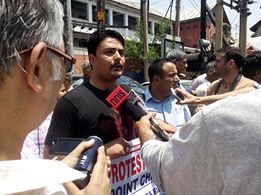
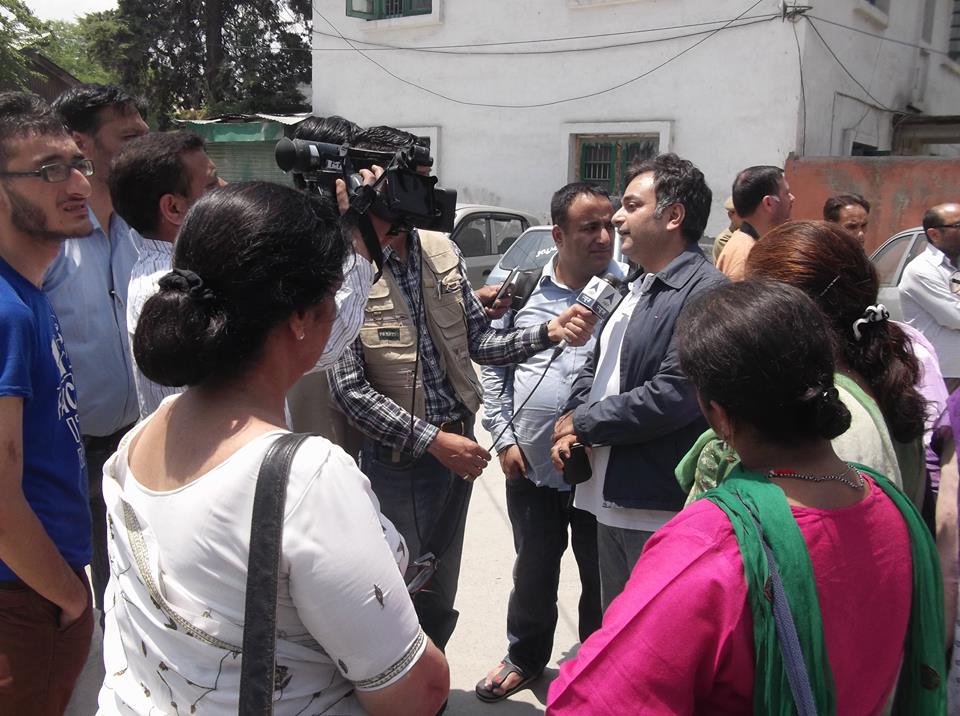
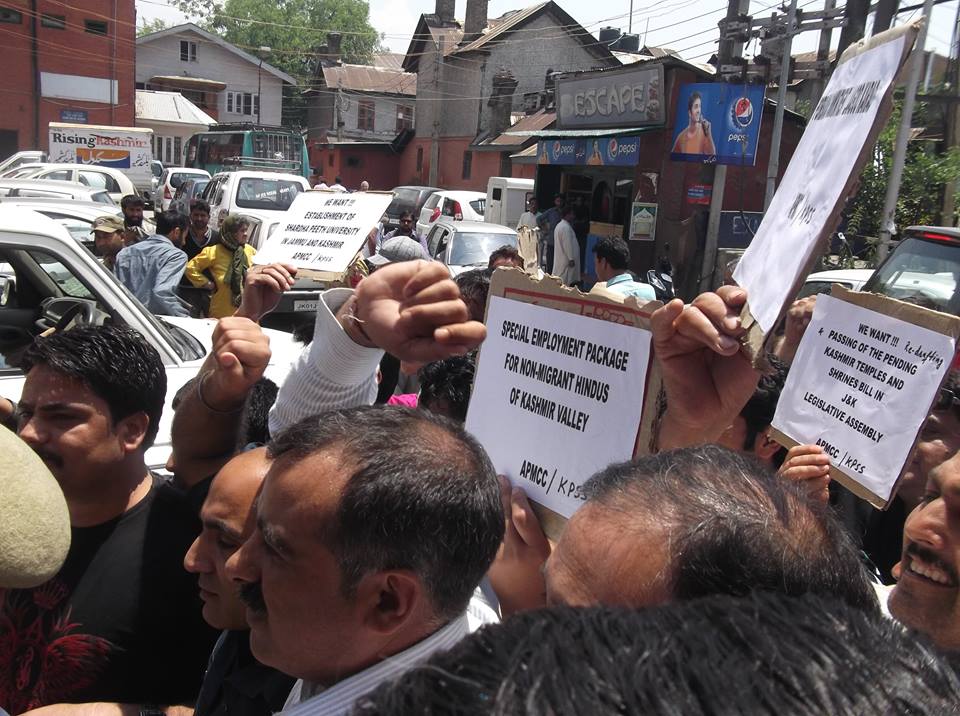
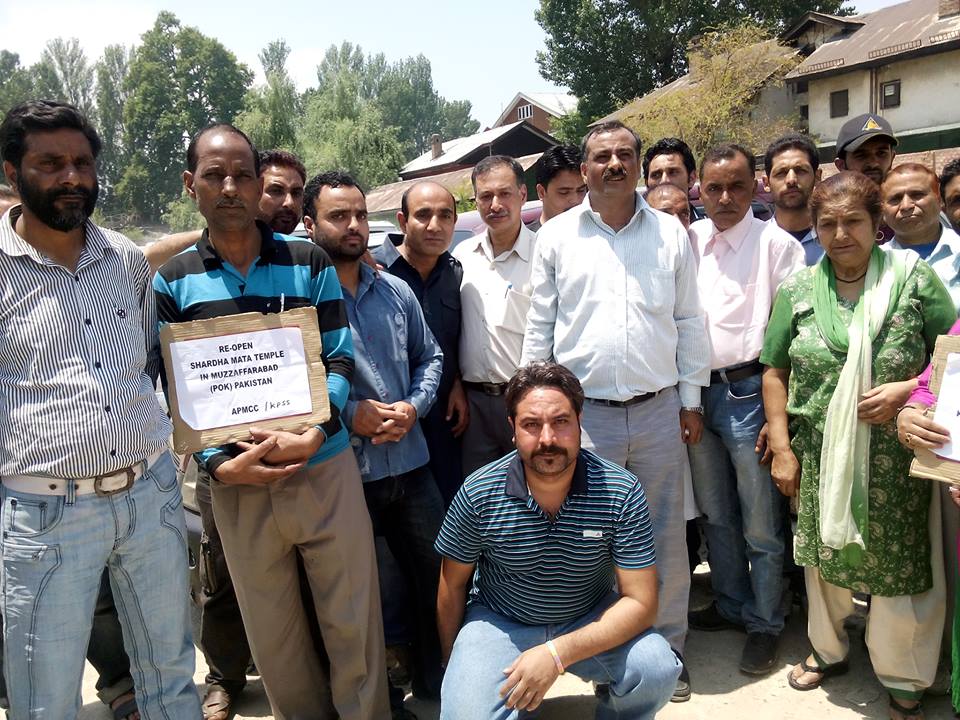
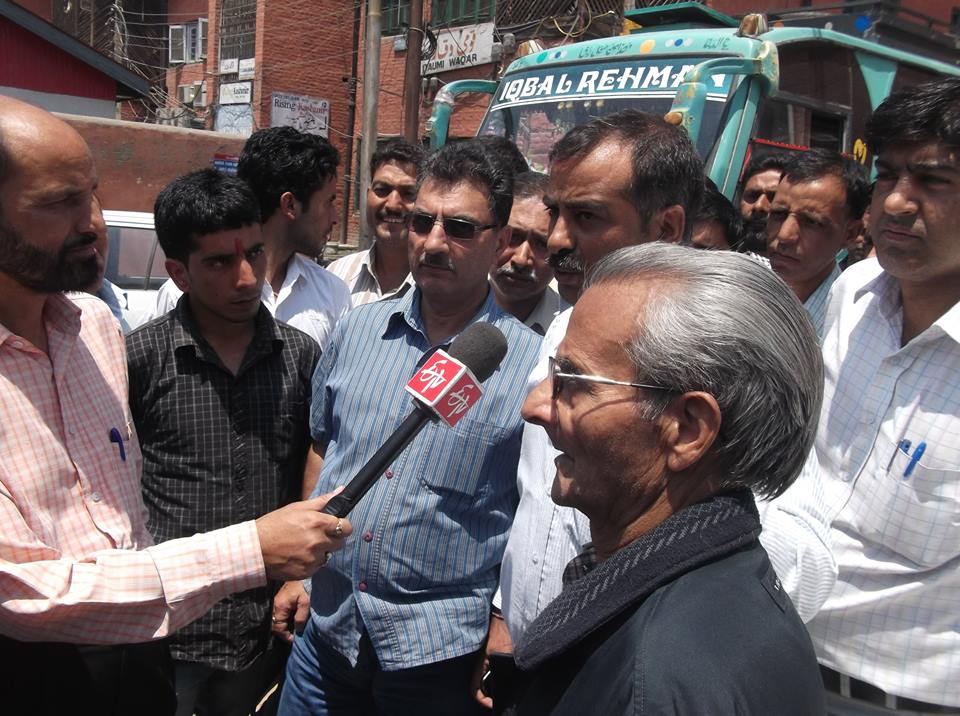
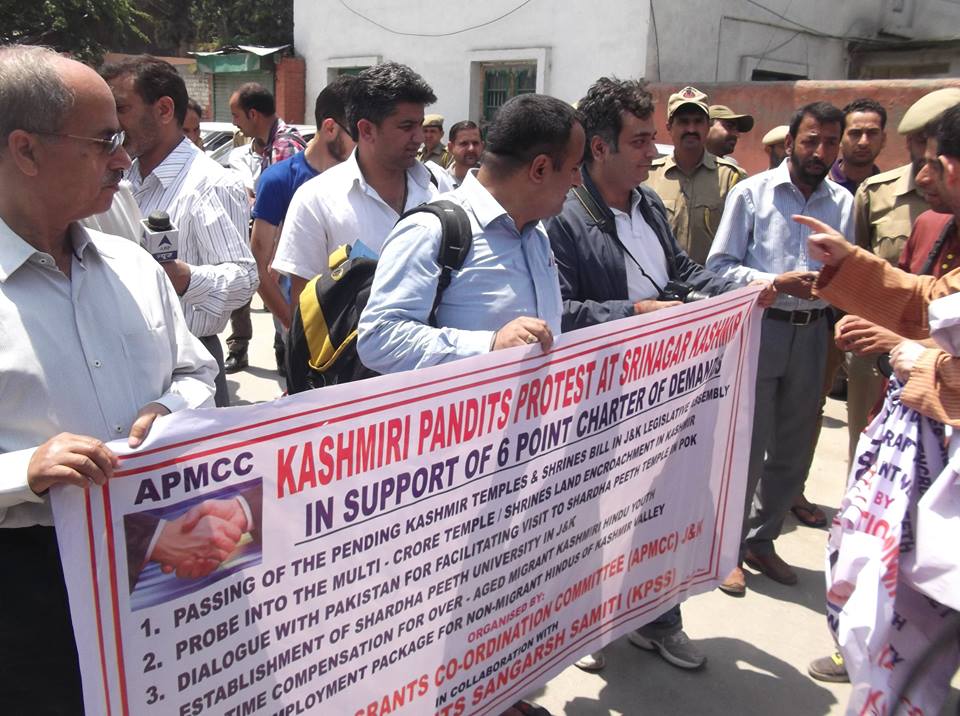
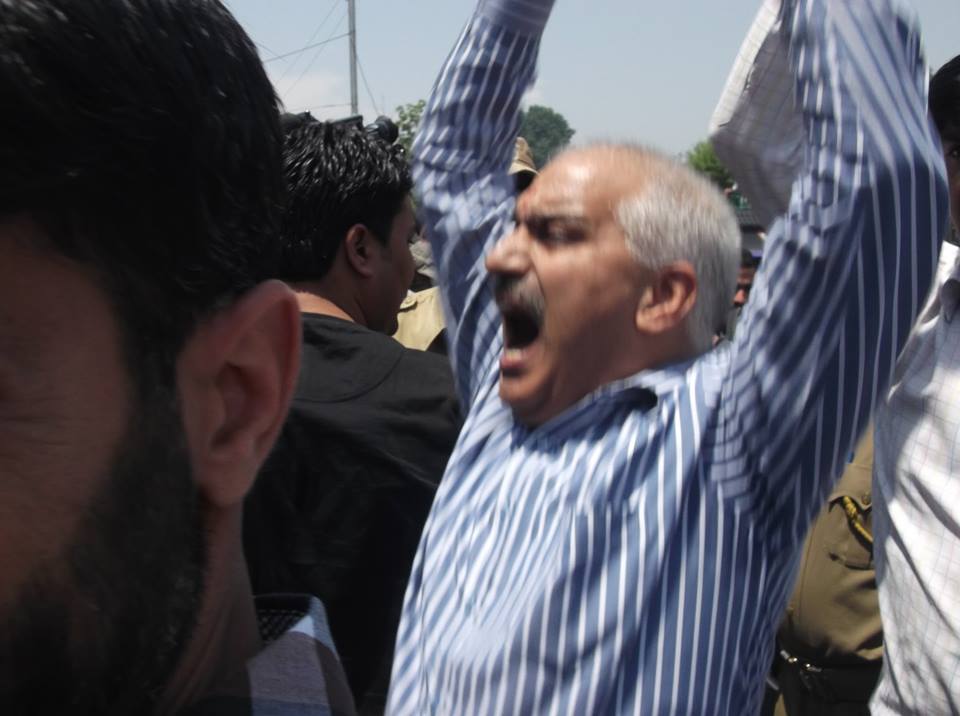
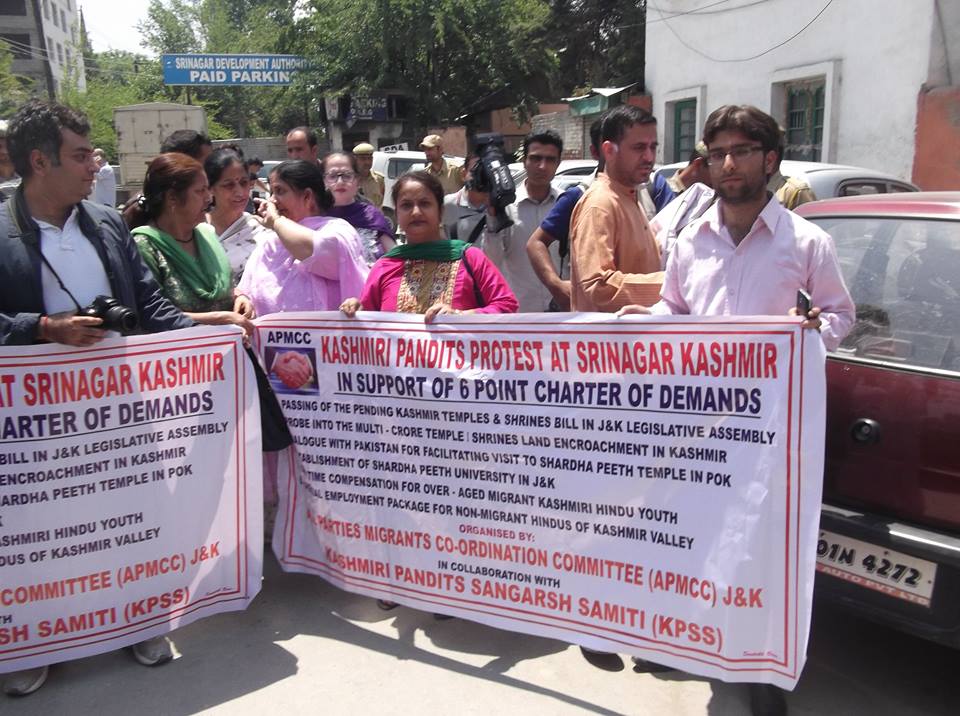


By Sandeep
|
Posted in JAMMU & KASHMIR, kashmir
|
Tagged APMCC, kashmir, KASHMIR BLOG, KPSS, panun kashmir, SANJAY TICKOO, VINOD PANDIT
|
Comments (0)
The Modi-fans…..
May 9, 2014 – 2:04 pm
Prakash-The chaiwala from jhunjhunu-delivers tea at my office at
sharp 10.30 a.m and 3.30 p.m. All the offices in our compound prefer to
drink the tea made by Praksh. He is an ardent “Modi”-fan. Since last 2
months or so, he has been ostentatiously wearing a T-shirst, that has a
photo of “Modi” and it reads “Ab ki Bar, Modi Sarkaar”. He has even
changed the name of his shop to “Namo Tea stall”. Some days back I asked
him, “doesn’t your open support to Modi, offend some of your customers,
who support some other political parties?” His replied back zealously,
“Hum to aise hi hain, jisko peena hoga wo peeyaga, jisko mera
Modi-samarthak hona aacha nahi lagta, wo kahi aur piye.Deena wala to
Bagwaan hai.(I am like this, if somebody is offended by my Modi-love,
let him drink somewhere else. It is the God who is the universal
giver.)”
Vikas-my friend from Varanasi told me over phone that Ajay rai-the congress candidate and Arvind Kejriwal-The AAP convener are actually fighting for the 2nd and 3rd position. He also emphasized that “Modi” will win by at least a margin of 2lakh votes. ”The crowds are absolutely loving Modiji, we(locals) have taken the Modi-elections very personally. The Benarasis are identifying themselves with Modiji. Modi’s win will be Varanasi’s win. It will be our win” said he in a confident tone.
His statement can be ascertained by the fact that colossal crowds, unheard before , followed “Modiji” everywhere in Varanasi. His opponents are left wonder-struck and they are gaping in surprise since “Modiji’s” first road-show on 24th April 14.His opponents have lost the elections mentally whilst the voting will be held after a few days on 12 May 14.
“The support given to Arvind Kejriwal by JD(U) and its ally CPI has once again exposed the communist support towards their co-ideologue AAP. The metamorphosis of Arvind Kejriwal from a known atheist to a Theist was just a tactics to garner Hindu-votes” said my friend vikas irritatingly. He further said, ”On Modi’s Yesterday(8/05/14) Road show, Kejriwal tweeted that , “No one needs any permission from the EC to perform rituals. Permission is required only for political activities. It seems Modi was aiming for electoral gains through aarti,”-what a joke!!! These words sound so funny, considering that Kejriwal is the official “Dramabaaz” of Indian politics. It is a well known fact that in the past, he even managed “self-attacks” and “self-slaps”, just to get Public sympathy. said infuriated vikas.
I do call up my friends and acquaintances, in Varanasi since the day I heard that Modiji is contesting from Varanasi. The mood there is ebullientally “Modi-fied”. It seems that he will get more votes in Varanasi than in Vadodra. In vadodra the main opposition is congress and the main contestant fighting against Modi there is/was “Madhusudan Mistry”. However the results in both Varanasi and Vadodra will go in favour of Modi-for sure, irrespective of the fact that congress tried every trick in their sleeve to halt the Modi-juggernaut .
In Varanasi,The support given by the known inveterate criminal-Mukhtar Ansari-to Congress candidate is perfidious. It is more than foible on the part of congress to actually accept the support. This treacherous liaising speaks volumes about the decadent politics, congress has indulged into, just to stop “Modi. But the wishes of billions of Indians will make it sure that “Modiji” wins against all odds.
Prakash-our chaiwala-has announced that on 16th May, he will be offering free tea to everyone, as he is sure, like most of us that BJP will achieve an over-whelming victory over its rivals. In our office-compound, everyone has voted for “Modi”. So confident are my colleagues of “Modi’s” win, that they have already stocked crackers worth ten thousand rupees for the celebrations to be held on 16th may 2014. “This time we will celebrate Diwali on 16 may , that too in a broad daylight. we will express our joy with bursting crackers, and exchanging sweets.” said Sachin, my friend , who has a office in the same compound.
Though 16 may is a working day, but I am sure that most of the Indians will be glued to T.V. Everyone is anxiously waiting for that red letter day when the aspirations of billion Indias will come true. The day when “Narendra bhai Modi” will be officially declared, the prime minister of India. I have my fingers crossed….
Vikas-my friend from Varanasi told me over phone that Ajay rai-the congress candidate and Arvind Kejriwal-The AAP convener are actually fighting for the 2nd and 3rd position. He also emphasized that “Modi” will win by at least a margin of 2lakh votes. ”The crowds are absolutely loving Modiji, we(locals) have taken the Modi-elections very personally. The Benarasis are identifying themselves with Modiji. Modi’s win will be Varanasi’s win. It will be our win” said he in a confident tone.
His statement can be ascertained by the fact that colossal crowds, unheard before , followed “Modiji” everywhere in Varanasi. His opponents are left wonder-struck and they are gaping in surprise since “Modiji’s” first road-show on 24th April 14.His opponents have lost the elections mentally whilst the voting will be held after a few days on 12 May 14.
“The support given to Arvind Kejriwal by JD(U) and its ally CPI has once again exposed the communist support towards their co-ideologue AAP. The metamorphosis of Arvind Kejriwal from a known atheist to a Theist was just a tactics to garner Hindu-votes” said my friend vikas irritatingly. He further said, ”On Modi’s Yesterday(8/05/14) Road show, Kejriwal tweeted that , “No one needs any permission from the EC to perform rituals. Permission is required only for political activities. It seems Modi was aiming for electoral gains through aarti,”-what a joke!!! These words sound so funny, considering that Kejriwal is the official “Dramabaaz” of Indian politics. It is a well known fact that in the past, he even managed “self-attacks” and “self-slaps”, just to get Public sympathy. said infuriated vikas.
I do call up my friends and acquaintances, in Varanasi since the day I heard that Modiji is contesting from Varanasi. The mood there is ebullientally “Modi-fied”. It seems that he will get more votes in Varanasi than in Vadodra. In vadodra the main opposition is congress and the main contestant fighting against Modi there is/was “Madhusudan Mistry”. However the results in both Varanasi and Vadodra will go in favour of Modi-for sure, irrespective of the fact that congress tried every trick in their sleeve to halt the Modi-juggernaut .
In Varanasi,The support given by the known inveterate criminal-Mukhtar Ansari-to Congress candidate is perfidious. It is more than foible on the part of congress to actually accept the support. This treacherous liaising speaks volumes about the decadent politics, congress has indulged into, just to stop “Modi. But the wishes of billions of Indians will make it sure that “Modiji” wins against all odds.
Prakash-our chaiwala-has announced that on 16th May, he will be offering free tea to everyone, as he is sure, like most of us that BJP will achieve an over-whelming victory over its rivals. In our office-compound, everyone has voted for “Modi”. So confident are my colleagues of “Modi’s” win, that they have already stocked crackers worth ten thousand rupees for the celebrations to be held on 16th may 2014. “This time we will celebrate Diwali on 16 may , that too in a broad daylight. we will express our joy with bursting crackers, and exchanging sweets.” said Sachin, my friend , who has a office in the same compound.
Though 16 may is a working day, but I am sure that most of the Indians will be glued to T.V. Everyone is anxiously waiting for that red letter day when the aspirations of billion Indias will come true. The day when “Narendra bhai Modi” will be officially declared, the prime minister of India. I have my fingers crossed….
By Sandeep
|
Posted in hinduism, india
|
Tagged 16TH MAY, AAP, Arvind Kejriwal, BJP, CONGRESS(I), CPI, JD(U), kashmir, KASHMIR BLOG, MADHUSUDAN MISTRY, MODI, NARENDRA BHAI MODI, VADODRA, VARANASI, VARANASI MODI
|
Comments (5)
A kashmiri-Pandits view on BJP,Congress, AAP and MODI
April 25, 2014 – 12:05 pm
ON BJP AND CONGRESS
“Narendra Bhai Modi”, or simply “Modi”-as he is referred all over India- has captivated the attention of entire India, in a way that many of us had never seen before. And Kashmiri-Pandits are no exception. KP’s have been known to support “BJP”, since their forced exodus from the valley of Kashmir. KP’s unanimously (except some anomalous groups-who follow their own personal agenda) are of this view that it was “BJP” and its allies, that stood behind them, at that time when they were at the nadir of their existence as a community. Also most of the KP’s believe that the “Gandhi’s” ditched them. “AAP” does not even exist for the community of KP’s.
The KP community were the staunch supporters of the “Congress-I”. Prior to 1990, The “Jan-sangh” and other “Hindu-centric” political parties could not make much impact on the “KP” community as a whole, because KP’s considered “Nehru-Gandhi” family as their own, an extension of their families. When Sh. Jawahar lal Nehru” died, many KP men and women were seen mourning his death. En-Masse, many women came on the streets of Kashmir , many of them were seen beating their chests in grief and mourning loudly in Kashmiri, “Kothiy gav sone Jawahar-lal( where has our own jawahar lal gone!) amidst tears.
Indira Gandhi too was adored by the KP-Community. I know for sure that She was in touch with many Kashmiri pundits through letters, and was abreast with the actual-happenings of Kashmir. Her death too was condoled deeply by the community of Kashmiri-Pandits.
In 1990, Kashmiri Pandits soon realized after their exodus that the “congress party”, whom they had supported all along, was no-where to be seen. It was at that time , “BJP” and its allies came forward to the help of the beleaguered community. Reservations were given to the students of “KP” community in various professional collages across India. The voice , concern and views of the KP’s were put forward vociferously by the “BJP”.
Sh. Rajiv Gandhi’s death in May 1991 was too grieved upon by a large section of KP’s even though congress had remained merely a mute-spectator of their forced exodus. Even though it had been over a year, since they were uprooted from Kashmir and that a large section of KP’s were still living in Make-shift tents or they were given a temporary -refugee in deserted Govt. buildings. The congress party’s cold response to KP Community in early nineties accentuated the dirty vote-bank-politics of congress. But in spite of everything, they felt the loss of Sh. Rajiv Gandhi.
A large section of people of India perceive “Gandhis” as “Brahmins” or “Pandits”. Their lineage is traced to Moti lal Nehru and Jawahar lal Nehru-The known faces of Indian independence struggle and Kashmiri pundits by birth. All these years, the Nehru-Gandhi family have projected their KP connection but I am sorry to say that they have done little for the upliftment of the KP community- towards which they owe their allegiance.
The BJP, on the other hand did exactly the opposite. Even though, KP’s are not a vote-bank, still the services rendered to KP’s by BJP is commendable.
ON AAP
To begin with most of the KP’s (as was with most of the Indians), thought that Anna and his team are being supported by the BJP. To a large extent, it was true. The majority of the people(80%) present at their protests were from the RSS and the BJP.
The main bone of contention with AAP is that one of their ace leader- Prashant Bhushan, has in the past obnoxiously supported the redundant theory of Plebiscite of Kashmir. Knowing well, that the plebiscite is a gate-way for Pakistan to usurp Kashmir. Prashant Bhushan’s stand on Kashmir is more or less the same even today as no unequivocal statement on Kashmir and plebiscite has been presented by him, though he has given some feeble dilatory ambiguous remarks on plebiscite on Kashmir. AAP’s soft approach towards him has made it evident that they too tacitly support his theory.
AAP’s known support to Moaists is also questionable? In the recent elections they have given tickets to the known sympathizers of Moaists. It is a known fact that Moasists and Jihadis have been/are working hand in glove, and are getting all the funding from the enemies of India. And that their only aim is to de-stabilize India.The recent vitriolic remarks of Shazia Ilmi- wherein she is exhorting Muslims to be communal-is invidious as well as disgusting. The anti-corruption masquerade of the AAP has become too transparent for a common man not to see through their intentions . Their servile attitude towards the known jihadis and Moaists is awful. The Balkanization tactics of India by the AAP on the name of anti-corruption or secularism will not be allowed in India, come what May…
ON MODI
No doubt, Narendra Bhai Modi is the most beloved leader of the Kashmiri Pandits as of today. Kashmiri pandit community has pinned a lot of hopes on Modiji. KP’s were thrilled to see that not only the abrogation of article 370 was included in the BJP manifesto, but the return of KP’s into the valley with dignity and Honour was also mentioned. KP’s believe that the Narendra Bhai Modi’s coronation as the Prime Minister of India is inevitable and that he will prove to be a force to reckon with. KP’s believe that India as a Nation will emerge stronger under the prime Ministership of Modiji.
And, as is with the rest of Indians, for KP’s as well,” BJP is Modi” and “Modi is the BJP”…..”AB KI BAAR, MODI SARKAR”.
“Narendra Bhai Modi”, or simply “Modi”-as he is referred all over India- has captivated the attention of entire India, in a way that many of us had never seen before. And Kashmiri-Pandits are no exception. KP’s have been known to support “BJP”, since their forced exodus from the valley of Kashmir. KP’s unanimously (except some anomalous groups-who follow their own personal agenda) are of this view that it was “BJP” and its allies, that stood behind them, at that time when they were at the nadir of their existence as a community. Also most of the KP’s believe that the “Gandhi’s” ditched them. “AAP” does not even exist for the community of KP’s.
The KP community were the staunch supporters of the “Congress-I”. Prior to 1990, The “Jan-sangh” and other “Hindu-centric” political parties could not make much impact on the “KP” community as a whole, because KP’s considered “Nehru-Gandhi” family as their own, an extension of their families. When Sh. Jawahar lal Nehru” died, many KP men and women were seen mourning his death. En-Masse, many women came on the streets of Kashmir , many of them were seen beating their chests in grief and mourning loudly in Kashmiri, “Kothiy gav sone Jawahar-lal( where has our own jawahar lal gone!) amidst tears.
Indira Gandhi too was adored by the KP-Community. I know for sure that She was in touch with many Kashmiri pundits through letters, and was abreast with the actual-happenings of Kashmir. Her death too was condoled deeply by the community of Kashmiri-Pandits.
In 1990, Kashmiri Pandits soon realized after their exodus that the “congress party”, whom they had supported all along, was no-where to be seen. It was at that time , “BJP” and its allies came forward to the help of the beleaguered community. Reservations were given to the students of “KP” community in various professional collages across India. The voice , concern and views of the KP’s were put forward vociferously by the “BJP”.
Sh. Rajiv Gandhi’s death in May 1991 was too grieved upon by a large section of KP’s even though congress had remained merely a mute-spectator of their forced exodus. Even though it had been over a year, since they were uprooted from Kashmir and that a large section of KP’s were still living in Make-shift tents or they were given a temporary -refugee in deserted Govt. buildings. The congress party’s cold response to KP Community in early nineties accentuated the dirty vote-bank-politics of congress. But in spite of everything, they felt the loss of Sh. Rajiv Gandhi.
A large section of people of India perceive “Gandhis” as “Brahmins” or “Pandits”. Their lineage is traced to Moti lal Nehru and Jawahar lal Nehru-The known faces of Indian independence struggle and Kashmiri pundits by birth. All these years, the Nehru-Gandhi family have projected their KP connection but I am sorry to say that they have done little for the upliftment of the KP community- towards which they owe their allegiance.
The BJP, on the other hand did exactly the opposite. Even though, KP’s are not a vote-bank, still the services rendered to KP’s by BJP is commendable.
ON AAP
To begin with most of the KP’s (as was with most of the Indians), thought that Anna and his team are being supported by the BJP. To a large extent, it was true. The majority of the people(80%) present at their protests were from the RSS and the BJP.
The main bone of contention with AAP is that one of their ace leader- Prashant Bhushan, has in the past obnoxiously supported the redundant theory of Plebiscite of Kashmir. Knowing well, that the plebiscite is a gate-way for Pakistan to usurp Kashmir. Prashant Bhushan’s stand on Kashmir is more or less the same even today as no unequivocal statement on Kashmir and plebiscite has been presented by him, though he has given some feeble dilatory ambiguous remarks on plebiscite on Kashmir. AAP’s soft approach towards him has made it evident that they too tacitly support his theory.
AAP’s known support to Moaists is also questionable? In the recent elections they have given tickets to the known sympathizers of Moaists. It is a known fact that Moasists and Jihadis have been/are working hand in glove, and are getting all the funding from the enemies of India. And that their only aim is to de-stabilize India.The recent vitriolic remarks of Shazia Ilmi- wherein she is exhorting Muslims to be communal-is invidious as well as disgusting. The anti-corruption masquerade of the AAP has become too transparent for a common man not to see through their intentions . Their servile attitude towards the known jihadis and Moaists is awful. The Balkanization tactics of India by the AAP on the name of anti-corruption or secularism will not be allowed in India, come what May…
ON MODI
No doubt, Narendra Bhai Modi is the most beloved leader of the Kashmiri Pandits as of today. Kashmiri pandit community has pinned a lot of hopes on Modiji. KP’s were thrilled to see that not only the abrogation of article 370 was included in the BJP manifesto, but the return of KP’s into the valley with dignity and Honour was also mentioned. KP’s believe that the Narendra Bhai Modi’s coronation as the Prime Minister of India is inevitable and that he will prove to be a force to reckon with. KP’s believe that India as a Nation will emerge stronger under the prime Ministership of Modiji.
And, as is with the rest of Indians, for KP’s as well,” BJP is Modi” and “Modi is the BJP”…..”AB KI BAAR, MODI SARKAR”.
By Sandeep
|
Posted in india
|
Tagged AAP, AB KI BAAR MODI SARKAAR, BJP, CONGRESS-I, ELECTIONS 2014, india, INDIRA GANDHI, JAWAHAR LAL NEHRU, kashmir, KASHMIR BLOG, kashmiri pandits, MODIJI, NARENDRA BHAI MODI, NARENDRA MODI, politics, RAJIV GANDHI
|
Comments (2)
Indrahaar Pass Trek-A detailed travelogue
October 14, 2019 – 10:37 am























I have a strange, alluring fascination for the Mountains. Since, I was born in the Kashmir valley, being surrounded by the Mountains gives me a feeling of Nostalgia and the much cherished memories of good old times once again get refreshed. I find excuses to be near them.
When the topic of Trekking to Himalayas popped up between Sunil Raina and me, I was more than willing to organise the Trek. After much deliberation, we decided to undertake the Indrahaar Trek.
Since, we had planned this Trek much in advance, we took the services of An Adventure company-Adventure Nation for this 4 day 3 night Trek. Sunil Raina, Ajay Chauhan and Parvesh Ranga were my trek mates.
We were supposed to report at Shiv Shakti Guesthouse, Dharamkot, Macleondgang by 10 am on 8th Oct 2019.
Ajay and Parvesh-The experienced Trekkers, had reached the Guesthouse early morning. By the time, I and Sunil joined them by around 10 in the morning, They were almost ready.
Since this was an arduous and long Trek, Hence A guide was allotted to us. He was a young lad named Rohit and was supposed to accompany us till the Indrahaar pass. Packed meals were given to us before we left for our first halt- Mana.
There was another young – Students –group, aged 18-19 years, hailing from Kerala . They were six in number, 5 boys and one Girl. They had opted for the Laka Glacier trek. That meant, they too had to follow the same route as ours till Laka Got-The high altitude meadow. This meadow acts like a base camp for both the Laka Glacier as well as the Indrahaar pass.
We left the Guesthouse by around 11 am. All the four of us were carrying Haversacks on our backs as well as foldable walking/Trekking Sticks . Sunil’s Haversack was the lightest and might have weighed around 10 kg. The heaviest bags were those of Ajay and mine. Both weighed above 15kgs.
En route, At Dharamkot market , we had some snacks in a local restaurant . From this place onwards, the actual trek began. We soon reached the BhagsuNag falls. We clicked some pictures there. From this point onwards, the actual ascend started.
Rohit was leading us through the narrow footpath that would lead us to our next destination-Mana. Almost, all the route from Dharamkot till Indrahaar pass is stony. We rested briefly at some unnamed stretches. There was not much communication amongst us, as we were gasping because of the steep climb and the load we were carrying on our Backs.
Every half an hour, we would sip in some water to compensate the water loss due to excessive sweating.
After around 2 hours, we reached a small meadow, that housed few Gaddis-the local shepherds. The whole group , including the four of us and the 6 young students rested at this place for around half an hour. They too had a Guide with them and his name was Sansaar.
At this very small Meadow, we had our packed meals that consisted of some sandwiches , refreshment drinks and a Choclate.
After the small meal,Sunil accosted some of the students out of curiosity!
‘Hi ! how are you? Where do you hail from?’ asked Sunil to one guy from that group.
‘ I am Vishnu. We are all from IIT Dhanbad and our native place is Kerala’, the young boy politely replied. He introduced his group to us as Jefferson, Chandra and the Girl as livia.
Soon,We again resumed our trek.
Occasionally, I would ask Rohit, ‘How far we have to go?’, He would point out his finger to a distant cliff and with a smile, reply, ‘ we have to reach that point Sir.’
It used to be an ambiguous reply, but I would nod my head as if I have understood.
Finally, we reached a cliff after an hour or so. The views from that cliff were stupendous. We put down our heavy haversacks from our shoulders and took some photos with different poses. we had some biscuits too. After spending some 20 minutes at this point, we again resumed our journey.
However, it was a 10-15 minutes descend .
we finally reached Mana- A beautiful hamlet with few Gaddi houses.A small ground/meadow was going to be the place for our first night halt. We had to stay at this place in tents .
Sunil and I stayed in one tent while Ajay and parvesh in another tent. This place is very scenic and the mighty Dauladhars stand tall and gives an impression of an amphitheater.
I took many pictures at this place, whereas, Ajay and parvesh took some videos too.
Goddess Mana-The Shakti incarnate, is the deity of this small hamlet. The temple dedicated to this Goddess was hardly 200 mts from our camp. I and Sunil decided to pay our Obeisance to her.
The temple is situated at the edge of the cliff. From that point, we could see the abrupt twinkling lights somewhere down in the plains.
It was the Dusshera Night .
Those sparkling lights in the distant Horizon were the fireworks associated with The annual celebration of burning Ravana and his Bother.
Soon it was dark.
We switched on our Head-torches and quickly ambled towards our camp . There is no electricity access at this place and Hence ,The camp staff had made an early dinner for us. I , sunil and parvesh had Rice, Daal(lentils) and Mattar-paneer for our dinner while as Ajay had Chicken.
The camp Organisers gave a couple of Blankets to each of us . we soon retired to our tents for the night as nothing much could be done outside. We used our headlights inside the tent for light.
By 9 Pm, all of us must have slept.
The app showed that we had travelled 10.12 kms with 15,526 steps on 8th Oct. The altimeter showed an altitude of 2400 mts.
Next day, Early Morning , Ajay greeted me loudly from outside my tent.
Good morning sandeep ji ! Are you coming out of your tent or not!’
I zipped up the Tent zipper , peeped through the tent, and greeted back, ‘ Good morning Ajay ji! I am just coming out.’
A cool breeze greeted me outside . I could see some clouds too.
In the morning, we were served a Breakfast of puri-aalo.
Since,We had to leave by 8 in the morning hence, We packed our Haversacks quickly and were ready to go for our next destination-Laka Got.
Rohit was again leading us. After some 45 minutes, we halted at a shop en route and each of us had a cup of tea. For Another 1 hour, we gently ascended and finally reached Truind-A beautiful small meadow situated at an altitude of around 2900mts MSL. It offers a majestic view of both the plains as well as the Dauladhar.
We rested there for half an hour and had some light snacks at this point .We also took some photographs and videos .
Just after crossing Truind, the footpaths became more narrow, tortuous and rocky. The clouds had started to besiege the Mountains and soon it started to Drizzle. We stopped at a small temple known as Tiranga mata . we pulled up the rain coat from the Haversacks , wore it quickly, to prevent us from getting wet and resumed our journey.
The student group was not prepared for this sudden change of weather .
Soon, We left them far behind, as we were unaffected by the rains. The rain however, had put breaks on our speed as the path had become wet and slippery.
We passed through a small café by the name- ‘snowline’ . However, we did not stop there. A small pond just adjacent to this café served as a point of another photo -shoot for us. We clicked some more photos at this point. From snowline café, the elevation of the slope was more or less the same. However, the terrain had become more rocky and at some points more slushy.
Another 45 minutes or so, we reached our next destination –Laka Got. This meadow was going to be our halt station for next 2 nights. By the time, we reached Laka, the rain had stopped.
I looked at my watch. It was 5 P.M.
Some tea was served to us on our arrival. However, that did not help me much as I was feeling some side-effects of High altitude. I had a mild Headache and my nose was running. I have experienced these symptoms earlier too; whenever I am at places , that have an altitude of 10000 feet or more. Parvesh too was feeling the same symptoms. Sunil and Ajay too had some symptoms associated with High altitude.
Meanwhile, Rohit and his associates erected tents for us .
The surface at the campsite was uneven. Ajay-who is an Professor of Geography – explained the reason for the uneven surface. He told me that the places where there is a thermo frost, these small uneven patches are formed and it is a natural Phenomenon.
The camp site too looked like a high altitude pass. A deep valley-hardly 15 mts away from our camps-was resounding with chilling winds. Nevertheless, we did click some more pictures at that point too. Strangely, the place, where our tents were erected was bereft of the Chilling winds !
By 6.30 P.M, we were already in our respective tents. Sunil was my tent-mate at Laka too. Since, It was very cold outside, hence ,The Dinner was served to us in our tents .
The dinner consisted of Semi-Cooked rice and Daal. When I asked Rohit, why was the Rice semi-cooked, he replied that the Gas cylinder has been totally exhausted, and they didn’t have a spare one. Hence, they had to make the dinner by burning some twigs and wooden logs!
The Dinner was awful! But there was no alternative and hence we had to eat it.
After Dinner, we again came out of our tents. I asked Ajay casually, ‘what do you think! How will be the weather tomorrow?’
‘if the weather will be clear, then only we will go to Indrahaar, Otherwise, we will explore the places near to our campsite’ He opined.
By 7.30 Pm, I was again in my camp. I was tired because of the long hike. Sunil too was much exhausted and had muscle spasms. It didn’t look as if he was ready for the arduous trek, that we had to undertake the next day.
‘let us go back to Mcleondgang tomorrow’, He pleaded, supinely lying inside his sleeping Bag.
‘if the weather will be hostile, we won’t go to Indrahaar. And if it will be Sunny, and you don’t feel better till morning, you stay put at this camp, while we will go to the pass’, I tried to comfort him.
Soon , we both fell asleep. I woke up in the night as I was feeling nauseatic, However, I did not vomit . I had a sip of water and again pretended to be sleeping. The uneven surface was hurting my back; but still I was able to catch some intermittent sleep.
The app showed that we had walked 21,011 steps and covered a distance of 13.43 kms.The Altmeter was showing a height of 3200 mts aboveMSL.
Next day, 10th Oct,We woke up at 6 in the morning. A bright Sunshine greeted us all.
I asked Sunil, ‘How are you feeling today? Will you come with us?’
‘Oh yes! That is for what I have come here.’ He answered cheerfully.
At around 7.30 am, we had our awful Breakfast of puri-Aalu(again).
It was told to us that from Laka to Indrahaar pass, we would be given an extra Guide apart from Rohit. But that did not happen. Instead, Rohit was attached to the student group, while as their Guide-Sansaar -was given to us.
Anyways,We started at around 8.20 am towards the Indrahaar pass.
After around 45 minutes or so, we reached at Laka Glacier. A small stream flows downwards from beneath the Long Glacier. We filled our water bottles and clicked some photos.
From this Glacier, The ascend started.
‘where is the pass?’, I asked Sansaar. He pointed his finger at the top of the Mountain,
‘ There sir. We have to reach at that top’, he Replied.
It looked like a steep vertical ascend.
We plodded on the rough stony trek. Even at this point, we were feeling some effects of the rough terrain as well as the side effects of High Altitute . I was gasping ,so were my trek mates. From the glacier, it took some more time, before we reached a point known as ‘Lahesh caves’. It is a natural cave and definitely a place to visit. We all halted there briefly. The warmth of the Bright sun was soothing.
Two Gaddi Dogs had followed us throughout the trek from Laka. Whenever, we stopped for a light snacks break, we would give them something to eat too. These Gaddi dogs are extremely friendly and it seemed, they really like the company of men. The dog was Black in color and we named him ‘Kaalu’. The Bitch was named ‘Rani’. She was our constant companion up till the pass and back. It looked as if, they had come to the pass earlier too as they knew the way up to the pass and even led us at some blind curves.
From lahesh caves till the top of the Pass; at many stretches some stairs/steps have been made by the local Gaddis-The shepherds. Building Stairs/steps at this rough terrain and at such an altitude is nothing less than a wonder!
Some Trekkers and Hikers have done a yoeman’s job by placing cairn guidance all along the route; right from Laka Got/ Illaka up to the Indrahaar pass. At many points, They have painted a red arrow mark on the Boulders too, to clearly define the route. These cairn guidance and arrows are of a great help to the new trekkers. And a boon to solo Trekkers.
The path further up was becoming more steeper as well as stony. After 3600 mts above MSL, I again felt nauseated and the intensity of my Headache increased with the increased Altitude. At around 3800 mts above MSL, the snow patches seemed more prominent to the landscape with many white snowy patches. we were now walking on the fresh slippery snow.
At around 4000mts above MSL, Sunil revolted. He wanted to go back . Ajay too wanted to go Back . He was apprehensive and doubted whether we will be able to climb down safely, as we had no ropes and ice-Axes with us. Even though, I and parvesh too were suffering from the high altitude sickness, still we insisted that we should climb up to the summit, Because we had come so far and were so near to it.
Sunil and Ajay had to give in, even though Halfheartedly.
The snow from 4100mts and above was anywhere between 10 cm to one feet.
From 4200mts up to the pass, it is almost a vertical height. There was less trekking and more intermittent Rock climbing involved . We were slowly and cautiously climbing up.
All the drinking water was exhausted. However, We had filled fresh snow in our bottles and sipped it whenever we felt thirsty.
At around 1.45 Pm, we reached the top of the pass.
A sort-of-open-shrine dedicated to lord Indra is made at the top of the Pass by the Gaddis. Many tridents are installed at this small shrine. The local Shepherds-The Gaddis revere this place and this pass is used by them to cross over to Chamba. The height of this pass is around 4300 mts above MSL. Some most beautiful vistas can be seem from this pass.
We clicked some photos and made some quick videos. Sunil even recited the IndrakshiStrotam at the Holy site. We stayed there for hardly 20 minutes. It had started to snow again and we knew, it would be dangerous to stay there.
We started our descend.
It was not easy to Descend. The trial had become very slippery. Sansaar was clearing the path so that we had a safe descend. With some difficulty, we climbed down the initial dangerous descend of 200 mts. After that, even though, it was slippery, but not as dangerous.
The sleet followed us during our first hour of descend. All of us, except parvesh had a fall on this slippery path. The Health condition was getting better as we descended. During the descend, Parvesh was the most active and would run downwards, wait there for us ,and shoot videos.
It was anticipated by Sansaar, that we will reach Laka Got by 6 PM-When still there will be some sunlight. But that did not happen. After laka Glacier, It turned dark but that didn’t affect us in any ways. We were prepared and all of us were carrying Head torches with us. The stretch from the laka glacier onward was covered by us by switching on our Head torches. By 7 or 7.30 Pm, we reached our camp at laka Got. Warm water followed by warm tea was served to us immediately.
By 8.00 Pm, Dinner consisting of dal, aalu, Rice and chappati was served to us.
By 8.30 PM, We all were in our sleeping Bags.
The app showed that we had walked 20,876 steps and covered a distance of 13.35 kms.
Next day, 11th Oct, we woke up at around 6 a.m. After having our Breakfast of Aalu-Paranthas, we started our descend. It was again a bright sunny day and we were feeling refreshed and rejuvenated. The descend to the Truind was rather very fast. We stopped at this place for some time and took a different route to descend(not Bhagsu falls).
The Downward , well defined trek was broader and many Indian and international tourists were trekking up towards Truind.
We reached back to the Shiv-Shakti Guest House by 3 Pm. The bath with the warm water at the Guest house was so refreshing.
At around 4.15 pm, we had a proper tasty lunch after 3 days.
I along with sunil left that palce at 4.45 pm for our respective homes. Ajay and Parvesh had booked a ticket for the Bus to Chandigarh and were supposed to leave by 8 pm.
The app showed that we had walked 29,437 steps and covered a distance of 20.08 Kms.
We are very thankful to Sansaar-our guide. He behaved very politely as well as responsibly throughout the trek. Without him, we could not have made it to the pass as a team.
However, We feel cheated by Adventure Nation, as we did not get , what we were told. They did not even follow , what they had given us in writing.
Anyways,
This trek no doubt, challenges the physical and mental strength. It makes one realize the strength and weaknesses of both Body and mind. And how the willpower pervades both of them. It Highlights the hidden strength within and promotes team spirit and camaraderie.
This is not an easy Trek. I would rather rate it between moderate to difficult. The whole trek is no doubt beautiful, and if time and body permits, the seekers of adventure and trekking must undertake this journey.
I promise, They won’t regret it.
By Sandeep
|
Posted in travel
|
Tagged Bhagsu falls, Blogs on Indrahaar pass, Dharamkot, Dharamsala, Himachal Pradesh, ilaka, Indrahaar pass, Indrahaar Pass travelogue, Indrahaar Pass trek, Indrahaar Pass trek travelogue, Indrahaar Pass trekking, laka glacier, laka Got, Mcleodganj, travel, Trekking, Trekking to Indrahaar pass, Trekking to Indrahaar Pass blog, Truind
|
Comments (0)
Ethnic cleansing of Kashmiri pandits(newspaper clippings)
September 7, 2019 – 5:18 pm
By Sandeep
|
Posted in genocide, hinduism, hindus, human rights, india
|
Tagged Ethnic cleansing of Kashmiri pandits, genocide of Kashmiri Pandits, islamic jihad, KASHMIR BLOG, kashmiri pandits
|
Comments (0)
PARMESHWARI AGITATION –1967
July 22, 2019 – 7:06 am
The HIGH & LOW OF KP AGITATION 1967
Parmeshwari Agitation of 1967 is 52 years old. During these 52 years much water has flown down the Jehlum, Changes in all spheres have taken place beyond imaginations. The men and women who took part or have an appreciable impression of the month long agitation and are alive are over 70 years old ——- leading a well earned retired life , looking after their grand children or nursing their old age health problems. 50 years is a very long period to remember vividly all that happened during the agitation. So it is natural they may have nearly forgotten or at best might be having some faded impressions.This write up is to revive the memories of that agitation among the elders and for the youngsters of the community to draw their own conclusions.
This writer was a college student during the agitation. I was born in a family where Politics and Journalism had already taken birth since 1939. A large family consisting of more than 30 members would sit together after the Dinner to discuss every thing under the Sun.This was the order of the day. Most of the time our immediate neighbours would also join the discussions .Such discussions had helped us to be rational thinkers.This writer shared what ever observed or seen during the day and get corrected after interaction with the family members. The month of JULY brings me back the month long memory of the agitation , hence this write up.
Many intellectuals & authors have written about this agitation . Almost all of them have blamed the majority community for having engineered and helped the handing over of Parmeshwari to her Muslim paramour . But we have turned blind eye how our own people helped her to be handed over to her paramour. The main purpose of this write up is to put the record STRAIGHT. Sitting in the glass houses and throwing stones at others is not the solution. While we have the liberty of putting the blame at the door of others , we should first clean our own house. Let the future generations and research scholars have both the views in front of them and make their own conclusions. I would request the readers to go through the write up and express their opinions freely with out any reservations. This writer will welcome both the brickbats and bouquets.
I have deliberately avoided the names in the write up. Most of them are dead and by naming them this writer does not want that their descendants should be visited by the sins of their elders . I have kept the month long happenings to the briefest lest reader looses the plot while going through it.
PARMESHWARI AGITATION —-1967
The Spring of 1967 had given way to the Summer. The days become large , sky clear and the temperature rising with humidity. The people of the valley were enjoying the last month of Summer —- August , and every thing looked hunky dory.Little did the people know that a volcano was brewing in the centre of Lal Chowk. The epicentre of the volcano was the ground floor of LALLA RUKH HOTEL, which was the retail centre of groceries of the Govt. Co -operative department ( a very poor cousin of present day Mall) along side the old city bus stand very near to the Tyndale Biscoe School. The store had many sales people ( both girls & men ) .
Among the Sales Staff, one of the sales girl was PARMESHWARI ( the daughter of a widow residing in Bagh Jogi Lanker , Rainawari ) , and the other other was GHULAM RASOOL KANT( resident of Wazapora , Ali kadal ).Working in the same place and under one roof they started liking each other. Incidentally , the Manager of the Co operative outlet was a burly mustached Kashmiri Pandit , resident of Bagh Jogi Lanker ,Rainawari(the writer does not want to name him ) living just 500 meters from the residence of Parmeshwari . The romance between the two was happening before his eyes but ,kept silent for reasons best known to him. It is a mere presumption now that had he spoken to her widow mother the situation could have been saved. The romance having reached a point of no return , the two decided to go for marriage. Parmeshwari eloped and started living with Gh. Rasool Kanth.
The widow mother lodged a missing report about her daughter. The widow also approached some KP Leaders who became active and got in touch with the police. Their contention was that the girl is minor and has been abducted, the girl should be restored to her mother. But the Birth record and the Municipality record showed that she is “MAJOR”. The news was leaked to the muslim controlled vernacular press who lapped it up and prominently published it. At the same time the news spread like wild fire among the KP community. The murmurs started getting louder and louder. Sensing the grave situation the State authorities instructed the DIG Police, Kashmir to get hold of the girl and hand her over to the mother. The DIG Police Kashmir range happened to be a tall handsome Kashmiri Pandit IPS officer who thought that he was the only honest and efficient police officer who knew the rules and regulations at the tip of his tongue ( the writer does not want to name the officer). Going through the birth records , he declared that the girl is major and can decide about her future. In fact a meeting between Mother and daughter ——- who by now had changed her name to PARVEEN AKHTAR, in presence of KP activists in the police station was arranged. She tersely told her mother that she knew about the whole affair because Gh. Rasool would come to our home quite often. The mild tremors started assuming the shape of earth quake high on the Richter scale. Two types of “PROTESTS” started . One was the day protest held on the streets and the other was the evening protest where fiery speeches were delivered on the lawns of the SHEETAL NATH —— Head quarters of the All India Kashmiri Pandit sabha. This writer would deal separately lest it causes confusion.
DAY PROTESTS
The news spread like wild fire not only in J&k but in all the principal cities of India where ever there was a sizable population of the community. Since Electronic media had not come up of the age ,the print media both local and National lapped it and splashed the news on their front pages.In the meantime “ACTION COMMITTEE ” was constituted by the community. The members of the Action committee were the much known faces of the community. The Action Committee had its HQ in Sheetal Nath premises where from programmes and press releases were being issued. The community had become quite restive and was hell bent upon for a show down with the state government.The community took to the streets in unprecedented large numbers spearheaded by the women and girls.The Kashmir watchers who had witnessed protests on the streets at different times were shocked to see the huge numbers of the community women and girls taking to the streets. Known for being mostly the home makers and keeping inside their homes , It shocked everybody including the majority community. Wearing their traditional dress the SAREES , tightened around their waistline, they raised the slogans against the government by raising their arms in fists, they faced and stood rock like in facing the tear gas shells and lathis of the state police. They never ran for shelter and showering of shells and lathis added to their zeal by making their protests more and more vociferous. With lowered jaws and shocked expectations the majority community would throng the places in huge numbers where the protest was going to be held. By and large they conceded that they never had expected such strong and unprecedented resentment.
This writer was witness to one protest held at BAJAJ TOWERS in front of Broca Press .The tall handsome KP DIG came in a jeep thinking that he will himself manage the protesters. Hardly had he stepped down from his jeep than he was attacked by the women protesters who encircled him like attacking bees , pulling at his starch pressed uniform and tearing it. His security staff could not reach him while he was being pushed and pulled. It was the timely intervention of Late Sh. T N Dhar, the then President of Valley JAN SANGH who threw himself around the DIG and pushed him inside his jeep. But for his intervention the handsome tall DIG would have been stripped naked.
Watching another such protest in the Regal Chowk , Late Shamim Ahmed Shamim , the sarcastic and sadistic pleasure loving , M.P. & Journalist wrote in his newspaper “AINA” .” He has watched many protests held at different times , by male protesters , who would run for the nearest shelter after being lathi charged and being showered by the tear gas shells. My shocking surprise came when I watched the protest of Kashmiri Pandit women. They faced the tear gas shells standing rock like and occasionally throwing these back to the police. salute to their bravery and firm conviction”.
Jammu division was also affected by the protests . Jammu city which had a sizable population of Kashmiris also took to the streets in order to show their solidarity with the brethren and sisters of Kashmir. The local people though did not take active part but gave moral support . Says Sh. Bushan Parimoo, Journalist & environmentalist , who was one of those who spearheaded the protest, the young men and women had formed a group who would perform underground activities in which girls became the “INFORMATION CARRIERS” hood winking the police.
Same type of protests were being carried out in the principal cities of the country where the community had a sizable presence. Funds were being collected in addition to medicines and other things. They were contacting the local media and giving them the exact details .
Back in the valley the protests were getting more and more intensified — the whole credit should go to the women and girls. This writer was witness to the huge number of women and girls coming all the way from Rainawari footing the distance to reach the specific places of protests.
By now the state government realised that they had under estimated the situation and they had been caught with their pants down. The unnerved administration did not know how to control the situation . In order to break the agitation they resorted to the mass arrests of the community. Night knocking of the doors by the police became the order of the day. The central Jail got filled with hundreds of arrested people.The busy body Principal of the Women’s College — a close friend of Mr. Sadiq tried to help the Government by closing the gates of the college so that the girls don’t come out for the protest. To compound the difficulties of the government differences between Sadiq and Mir Qasim ( President State Congress) surfaced. Central Government was also a mute spectator. They were caught in a situation of between the deep sea and the devil. They did not want to antagonise the majority population while having sympathy with the minority. The vote bank policy plays a vital role in a democratic set up. According to well informed sources Sadiq had offered to resign but was persuaded not to.
EVENING PROTEST
After the day long protest the people would Que to Shital Nath, the head quarters of the “ACTION COMMITTEE” where from the “FARMANS” were issued for the next day. The people would come in large numbers and make themselves where ever they could find space in the uneven lawn. An improvised platform had been made where the honorable members of the action committee would sit. The people would jostle for the front rows where from they could see the faces of the speakers.Fiery and tsunami like speeches were delivered . The speakers while delivering the speeches violently shook their bodies —— infact one of the senior action committee member used to wear turban —— he had to make efforts to keep it on the head lest it falls down. The crowd would lustily cheer and greet them with the slogan “PANJA NARA PANDVAN DA CHATTA NARA JAI HIND”.Most of the senior members of the action committee had JAN SANGH/ RSS leanings.As the days wore on the stage was slowly “CAPTURED” by young men who were mostly unemployed or had some personal grudge for the authorities for not considering them for the professional institutions. Slowly the agenda of “RETURN OF PARMESHWARI” went down the priority list or was “PUT ON THE BACK BURNER”. They would attack the government for not providing them jobs.The speakers who would start with Kashmiri shifted to Hindi/urdu and finally to English. They would use such words which were not found in Oxford dictionary. Says , Bushan Parimoo who was a prominent member of the Jammu agitation, was invited by the Action committee to speak from the dias.But the “Young Brigade” did not give them time even after waiting for 3 days. This made Dr. Karan Singh , who was a central cabinet minister , to tell the Jammu people that ” THE KPS DO NOT WANT “KUDI” ( GIRL) they want NAUKRI The senior leaders were watching this with mute silence and helplessly. The speeches became more personal , with individuals having their own agendas.
At this stage the writer wants to bring to the notice of the readers a view from an “old Kashmiri hand”. The person was none other than Pt. PREM NATH BAZAZ—— an experienced Kashmiri Pandit , having been a top community leader , journalist, political analyst and a reputed author. He was in Srinagar during the agitation period. He would quietly sit in the office of his old disciple, the veteran Journalist Sh. N L WATTAL, who by now had become the Chief Editor of the prestigious newspaper ” The Daily KHIDMAT” , dipping himself in newspapers /books/magazines. Said Sh Wattal —— quote” As the agitation was gathering momentum day after day, I also got emotionally involved. Bazaz Sahab never commented on it. When the agitation was at peak , he broke his silence. ” Nand Lal I can see that you too have been overtaken by the agitation. I nodded “Yes”. To which Bazaz replied :- Quote
” THERE NEVER HAS BEEN A MASSIVE AGITATION FROM OUR COMMUNITY LIKE THIS , NOR THERE WILL BE IN FUTURE. BUT ALL THIS MASSIVE ENERGY WILL END IN A SMOKE. THE LEADERS LACK VISION , THEY ARE INCAPABLE, THEY HAVE THEIR OWN AGENDAS, VESTED INTERESTS. THE “DISCIPLE” PROTESTED BUT THE “GURU” STUCK TO HIS WORDS. Little did the disciple know that the “GURU” was an old hand and had known these leaders much earlier. What happened to the agitation is now history. The “GURU” proved to be MICHEL de NOSTREDAME of Kashmir.
While the agitation was at peak , Jan Sangh wanted to cash in on it. They dispatched their senior leader Balraj Madhok to add fuel to the fire.While delivering his characteristic fiery speech he told the Muslims to go to Pakistan.This was the opportunity for which the State Government was waiting. The State government instigated the majority community with the local urdu media controlled mostly by Muslims to express their strong protest against the speech of Balraj Madhok. After setting the valley on fire Madhok left for Delhi next day leaving the KP community at the mercy of the God. The situation changed totally over night. The next morning dawned with the majority community observing total Bandh, huge processions, killings, physical assaults on the minority community, looting of their shops and burning of their houses.Says, Sh. P N PANDITA, ( Retd , Chief Conservator of Forests) , their family lived in a house in Karan Nagar. When the family members returned after the day work , they found the house in flames and the goons cheering. All they could salvage was the clothes they were wearing and the “LIFE”. The police had been instructed to look “other Way” while all this was taking place. The State Government was bent upon “TEACHING A LESSON’ to the minority community.They planted some of our community men as “SPIES” in the central Jail who would report to the state authorities. This continued for several days. The entire city was put under curfew.As if this was not enough , the state Government released the criminals from their barracks and asked them to attack the KP arrested people and beat them black and blue. All this was being carried out to please the majority community.The death toll of KP Community during this period of arson and looting rose to nearly 12.
MEDIA — A DIVIDED HOUSE.
The print media became a divided house. The local urdu press controlled mostly by the majority community publishing news palatable to the majority community. The National Press whose correspondents were mostly from the minority community maintained a balance by blaming the state government for their ineffective role in controlling the goons who went on rampage. Says Sh. J N Dhar, the then Special Correspondent AIR ( Now the Chief Editor of “KOSHUR SAMACHAR”) the state government complained against his reporting to his superiors but his superiors stood by him saying “there is no doubt about the balanced and unbiased reporting of Sh. JN Dhar”.
BURIAL OF THE DAY & EVENING PROTESTS
With the imposition of the curfew the day long protests came to a grinding halt. In the same way the “the fire spitting young hot heads disappeared from the Sheetal Nath dais taking refuge in their homes. While all this was happening some of the senior leaders of the action committee were busy establishing links with the state authorities. During the day they would spit fire and during the night they would sit with the state authorities to discuss their own “personal agendas”.This “CHANNEL TWO ” ( a word coined after 1990) diplomacy between the Scoundrels and scalawags ( the so called Netas) , the community brokers , was confirmed by the then Home Secretary ( Speaker turned IAS bureaucrat ) , during his post retirement days which he would spend at the office of the Daily “KHIDMAT” ( he would write centre page articles for the paper occasionally).
AWAKENING OF CENTRAL GOVERNMENT
The agitation had become a National News. The so called Secular parties like Congress, Leftists, in order to settle scores with Jan Sangh party jumped into the fray by advising the minority community of Kashmiri Pandits to maintain the age old fabric of brotherhood and secular values , carefully avoiding any comment on the majority community , solely because of vote bank policy. When enough water had flown down the Jehlum , Delhi woke up. They despatched the then Home Minister of GOI , Sh. Y B Chavan, to the valley. The State Government was represented by their Home Minister.
CREMATION OF AGITATION
Mr Chavan held parleys with different groups. While appealing for the end of agitation , he asked the “Action Committee” to submit memorandum. Dissensions had already started in the “Action Committee”. Fierce differences appeared on what should be included in the memorandum. The Netas who had established links with the state authorities were eager to present the memorandum to end the agitation because of their own personal agendas. A sort of agreement was reached between the Netas and the young hot heads . Ultimately the young hot heads had their way . They prepared the list of demands keeping their own demands such as employment, more seats in the professional colleges etc and the last demand was for the return of Parmeshwari. The Netas though not satisfied with the draft were in a hurry to call off the agitation for their own interests. The agitation was formally called off. Mud slinging started between the leaders blaming each other for the termination of the agitation for their own interests. The scoundrels and scalawags of the community in a shameless way trying to wriggle out of the mess they had created placed the blame at the door of the State Home Minister. Though this writer has never been a fan of that Minister belonging to our community , he never used the platform of the community to rise to such position.
CREMATION OF THE AGITATION
The month long agitation was put on the pyre and lit by the shameless, graceless, disgusting “leaders” of the community.
The supreme sacrifice of our women and girls who left their homes and hearths without caring for their siblings, walking long distances from their homes in the hot weather of Summer to reach the places of protests ended in a smoke.They bore the maximum brunt of the police LATHIS, Tear Gas shells,water canons.This writer has no hesitation in saluting their guts, determination and bravery. I would call them “JHANSI RANIS OF SRINAGAR”. The people who got killed, the people whose houses were set on fire, who were physically assaulted, those who were attacked by the hardened criminals inside the premises of the central jail. All this went up in a smoke within minutes.
GAJENDARGADKAR COMMISSION
The Government of India constituted a Single man commission headed by the Retired Chief Justice of India , Sh. Gajendargadkar to look into the grievances of the community based on the memorandum submitted by the “Action Committee”. How much seriously the community took this commission that only 3 affidavits were submitted before the commission. Commendable is the performance of one Smt. VEENA Dhar , who argued the case before the commission extempore without any papers. Said Late Sh. R K DULLOO, Retd District and Sessions Judge , that the community did not present their case properly.The so called “NETAS” were busy distributing loaves and fishes among themselves, they had no time for this waste ful exercise.
THE LAST LAUGH FOR THE MONTH LONG AGITATION WAS THE GAJENDARGADKAR COMMISSION.
Before I conclude , writer would ask some questions and request the readers to reply these :-
Q No 1 DID ANY MEMBER OF THE COMMUNITY ASK THE TALL HANDSOME THE THEN KP DIG POLICE OFFICER WHY HE DID NOT HAND OVER PARMESHWARI TO HER MOTHER , DESPITE BEING TOLD BY THE AUTHORITIES. THIS GENTLEMAN LIVED IN DELHI , ATTENDED ALL THE MEETINGS/SEMINARS BY THE KP ORGANISATIONS. IN THE POST MIGRANT PERIOD?
Q. No :- 2. DID ANY MEMBER ASK THE BURLY MOUSTACHED KP MANAGER OF THE Govt. Co Opertive Store , WHY HE DID NOT INFORM THE MOTHER OF PARMESHWARI, WHO WAS LIVING JUST 500 Meters from his house?
Q. No :- 3. WHAT HAPPENED TO LAKHS OF RUPEES AND MEDICINES THAT WERE COLLECTED FROM VARIOUS PARTS BY KP ORGANISATIONS AND IN SOME CASES AIRLIFTED TO SRINAGAR. HAS ANY BODY ASKED THIS QUESTION ? NO, NONE. NOT A SINGLE PENNY WAS PAID TO THE DESCENDANTS WHO LAID DOWN THEIR LIVES?
By-Mr. V.K. Wattal
Parmeshwari Agitation of 1967 is 52 years old. During these 52 years much water has flown down the Jehlum, Changes in all spheres have taken place beyond imaginations. The men and women who took part or have an appreciable impression of the month long agitation and are alive are over 70 years old ——- leading a well earned retired life , looking after their grand children or nursing their old age health problems. 50 years is a very long period to remember vividly all that happened during the agitation. So it is natural they may have nearly forgotten or at best might be having some faded impressions.This write up is to revive the memories of that agitation among the elders and for the youngsters of the community to draw their own conclusions.
This writer was a college student during the agitation. I was born in a family where Politics and Journalism had already taken birth since 1939. A large family consisting of more than 30 members would sit together after the Dinner to discuss every thing under the Sun.This was the order of the day. Most of the time our immediate neighbours would also join the discussions .Such discussions had helped us to be rational thinkers.This writer shared what ever observed or seen during the day and get corrected after interaction with the family members. The month of JULY brings me back the month long memory of the agitation , hence this write up.
Many intellectuals & authors have written about this agitation . Almost all of them have blamed the majority community for having engineered and helped the handing over of Parmeshwari to her Muslim paramour . But we have turned blind eye how our own people helped her to be handed over to her paramour. The main purpose of this write up is to put the record STRAIGHT. Sitting in the glass houses and throwing stones at others is not the solution. While we have the liberty of putting the blame at the door of others , we should first clean our own house. Let the future generations and research scholars have both the views in front of them and make their own conclusions. I would request the readers to go through the write up and express their opinions freely with out any reservations. This writer will welcome both the brickbats and bouquets.
I have deliberately avoided the names in the write up. Most of them are dead and by naming them this writer does not want that their descendants should be visited by the sins of their elders . I have kept the month long happenings to the briefest lest reader looses the plot while going through it.
PARMESHWARI AGITATION —-1967
The Spring of 1967 had given way to the Summer. The days become large , sky clear and the temperature rising with humidity. The people of the valley were enjoying the last month of Summer —- August , and every thing looked hunky dory.Little did the people know that a volcano was brewing in the centre of Lal Chowk. The epicentre of the volcano was the ground floor of LALLA RUKH HOTEL, which was the retail centre of groceries of the Govt. Co -operative department ( a very poor cousin of present day Mall) along side the old city bus stand very near to the Tyndale Biscoe School. The store had many sales people ( both girls & men ) .
Among the Sales Staff, one of the sales girl was PARMESHWARI ( the daughter of a widow residing in Bagh Jogi Lanker , Rainawari ) , and the other other was GHULAM RASOOL KANT( resident of Wazapora , Ali kadal ).Working in the same place and under one roof they started liking each other. Incidentally , the Manager of the Co operative outlet was a burly mustached Kashmiri Pandit , resident of Bagh Jogi Lanker ,Rainawari(the writer does not want to name him ) living just 500 meters from the residence of Parmeshwari . The romance between the two was happening before his eyes but ,kept silent for reasons best known to him. It is a mere presumption now that had he spoken to her widow mother the situation could have been saved. The romance having reached a point of no return , the two decided to go for marriage. Parmeshwari eloped and started living with Gh. Rasool Kanth.
The widow mother lodged a missing report about her daughter. The widow also approached some KP Leaders who became active and got in touch with the police. Their contention was that the girl is minor and has been abducted, the girl should be restored to her mother. But the Birth record and the Municipality record showed that she is “MAJOR”. The news was leaked to the muslim controlled vernacular press who lapped it up and prominently published it. At the same time the news spread like wild fire among the KP community. The murmurs started getting louder and louder. Sensing the grave situation the State authorities instructed the DIG Police, Kashmir to get hold of the girl and hand her over to the mother. The DIG Police Kashmir range happened to be a tall handsome Kashmiri Pandit IPS officer who thought that he was the only honest and efficient police officer who knew the rules and regulations at the tip of his tongue ( the writer does not want to name the officer). Going through the birth records , he declared that the girl is major and can decide about her future. In fact a meeting between Mother and daughter ——- who by now had changed her name to PARVEEN AKHTAR, in presence of KP activists in the police station was arranged. She tersely told her mother that she knew about the whole affair because Gh. Rasool would come to our home quite often. The mild tremors started assuming the shape of earth quake high on the Richter scale. Two types of “PROTESTS” started . One was the day protest held on the streets and the other was the evening protest where fiery speeches were delivered on the lawns of the SHEETAL NATH —— Head quarters of the All India Kashmiri Pandit sabha. This writer would deal separately lest it causes confusion.
DAY PROTESTS
The news spread like wild fire not only in J&k but in all the principal cities of India where ever there was a sizable population of the community. Since Electronic media had not come up of the age ,the print media both local and National lapped it and splashed the news on their front pages.In the meantime “ACTION COMMITTEE ” was constituted by the community. The members of the Action committee were the much known faces of the community. The Action Committee had its HQ in Sheetal Nath premises where from programmes and press releases were being issued. The community had become quite restive and was hell bent upon for a show down with the state government.The community took to the streets in unprecedented large numbers spearheaded by the women and girls.The Kashmir watchers who had witnessed protests on the streets at different times were shocked to see the huge numbers of the community women and girls taking to the streets. Known for being mostly the home makers and keeping inside their homes , It shocked everybody including the majority community. Wearing their traditional dress the SAREES , tightened around their waistline, they raised the slogans against the government by raising their arms in fists, they faced and stood rock like in facing the tear gas shells and lathis of the state police. They never ran for shelter and showering of shells and lathis added to their zeal by making their protests more and more vociferous. With lowered jaws and shocked expectations the majority community would throng the places in huge numbers where the protest was going to be held. By and large they conceded that they never had expected such strong and unprecedented resentment.
This writer was witness to one protest held at BAJAJ TOWERS in front of Broca Press .The tall handsome KP DIG came in a jeep thinking that he will himself manage the protesters. Hardly had he stepped down from his jeep than he was attacked by the women protesters who encircled him like attacking bees , pulling at his starch pressed uniform and tearing it. His security staff could not reach him while he was being pushed and pulled. It was the timely intervention of Late Sh. T N Dhar, the then President of Valley JAN SANGH who threw himself around the DIG and pushed him inside his jeep. But for his intervention the handsome tall DIG would have been stripped naked.
Watching another such protest in the Regal Chowk , Late Shamim Ahmed Shamim , the sarcastic and sadistic pleasure loving , M.P. & Journalist wrote in his newspaper “AINA” .” He has watched many protests held at different times , by male protesters , who would run for the nearest shelter after being lathi charged and being showered by the tear gas shells. My shocking surprise came when I watched the protest of Kashmiri Pandit women. They faced the tear gas shells standing rock like and occasionally throwing these back to the police. salute to their bravery and firm conviction”.
Jammu division was also affected by the protests . Jammu city which had a sizable population of Kashmiris also took to the streets in order to show their solidarity with the brethren and sisters of Kashmir. The local people though did not take active part but gave moral support . Says Sh. Bushan Parimoo, Journalist & environmentalist , who was one of those who spearheaded the protest, the young men and women had formed a group who would perform underground activities in which girls became the “INFORMATION CARRIERS” hood winking the police.
Same type of protests were being carried out in the principal cities of the country where the community had a sizable presence. Funds were being collected in addition to medicines and other things. They were contacting the local media and giving them the exact details .
Back in the valley the protests were getting more and more intensified — the whole credit should go to the women and girls. This writer was witness to the huge number of women and girls coming all the way from Rainawari footing the distance to reach the specific places of protests.
By now the state government realised that they had under estimated the situation and they had been caught with their pants down. The unnerved administration did not know how to control the situation . In order to break the agitation they resorted to the mass arrests of the community. Night knocking of the doors by the police became the order of the day. The central Jail got filled with hundreds of arrested people.The busy body Principal of the Women’s College — a close friend of Mr. Sadiq tried to help the Government by closing the gates of the college so that the girls don’t come out for the protest. To compound the difficulties of the government differences between Sadiq and Mir Qasim ( President State Congress) surfaced. Central Government was also a mute spectator. They were caught in a situation of between the deep sea and the devil. They did not want to antagonise the majority population while having sympathy with the minority. The vote bank policy plays a vital role in a democratic set up. According to well informed sources Sadiq had offered to resign but was persuaded not to.
EVENING PROTEST
After the day long protest the people would Que to Shital Nath, the head quarters of the “ACTION COMMITTEE” where from the “FARMANS” were issued for the next day. The people would come in large numbers and make themselves where ever they could find space in the uneven lawn. An improvised platform had been made where the honorable members of the action committee would sit. The people would jostle for the front rows where from they could see the faces of the speakers.Fiery and tsunami like speeches were delivered . The speakers while delivering the speeches violently shook their bodies —— infact one of the senior action committee member used to wear turban —— he had to make efforts to keep it on the head lest it falls down. The crowd would lustily cheer and greet them with the slogan “PANJA NARA PANDVAN DA CHATTA NARA JAI HIND”.Most of the senior members of the action committee had JAN SANGH/ RSS leanings.As the days wore on the stage was slowly “CAPTURED” by young men who were mostly unemployed or had some personal grudge for the authorities for not considering them for the professional institutions. Slowly the agenda of “RETURN OF PARMESHWARI” went down the priority list or was “PUT ON THE BACK BURNER”. They would attack the government for not providing them jobs.The speakers who would start with Kashmiri shifted to Hindi/urdu and finally to English. They would use such words which were not found in Oxford dictionary. Says , Bushan Parimoo who was a prominent member of the Jammu agitation, was invited by the Action committee to speak from the dias.But the “Young Brigade” did not give them time even after waiting for 3 days. This made Dr. Karan Singh , who was a central cabinet minister , to tell the Jammu people that ” THE KPS DO NOT WANT “KUDI” ( GIRL) they want NAUKRI The senior leaders were watching this with mute silence and helplessly. The speeches became more personal , with individuals having their own agendas.
At this stage the writer wants to bring to the notice of the readers a view from an “old Kashmiri hand”. The person was none other than Pt. PREM NATH BAZAZ—— an experienced Kashmiri Pandit , having been a top community leader , journalist, political analyst and a reputed author. He was in Srinagar during the agitation period. He would quietly sit in the office of his old disciple, the veteran Journalist Sh. N L WATTAL, who by now had become the Chief Editor of the prestigious newspaper ” The Daily KHIDMAT” , dipping himself in newspapers /books/magazines. Said Sh Wattal —— quote” As the agitation was gathering momentum day after day, I also got emotionally involved. Bazaz Sahab never commented on it. When the agitation was at peak , he broke his silence. ” Nand Lal I can see that you too have been overtaken by the agitation. I nodded “Yes”. To which Bazaz replied :- Quote
” THERE NEVER HAS BEEN A MASSIVE AGITATION FROM OUR COMMUNITY LIKE THIS , NOR THERE WILL BE IN FUTURE. BUT ALL THIS MASSIVE ENERGY WILL END IN A SMOKE. THE LEADERS LACK VISION , THEY ARE INCAPABLE, THEY HAVE THEIR OWN AGENDAS, VESTED INTERESTS. THE “DISCIPLE” PROTESTED BUT THE “GURU” STUCK TO HIS WORDS. Little did the disciple know that the “GURU” was an old hand and had known these leaders much earlier. What happened to the agitation is now history. The “GURU” proved to be MICHEL de NOSTREDAME of Kashmir.
While the agitation was at peak , Jan Sangh wanted to cash in on it. They dispatched their senior leader Balraj Madhok to add fuel to the fire.While delivering his characteristic fiery speech he told the Muslims to go to Pakistan.This was the opportunity for which the State Government was waiting. The State government instigated the majority community with the local urdu media controlled mostly by Muslims to express their strong protest against the speech of Balraj Madhok. After setting the valley on fire Madhok left for Delhi next day leaving the KP community at the mercy of the God. The situation changed totally over night. The next morning dawned with the majority community observing total Bandh, huge processions, killings, physical assaults on the minority community, looting of their shops and burning of their houses.Says, Sh. P N PANDITA, ( Retd , Chief Conservator of Forests) , their family lived in a house in Karan Nagar. When the family members returned after the day work , they found the house in flames and the goons cheering. All they could salvage was the clothes they were wearing and the “LIFE”. The police had been instructed to look “other Way” while all this was taking place. The State Government was bent upon “TEACHING A LESSON’ to the minority community.They planted some of our community men as “SPIES” in the central Jail who would report to the state authorities. This continued for several days. The entire city was put under curfew.As if this was not enough , the state Government released the criminals from their barracks and asked them to attack the KP arrested people and beat them black and blue. All this was being carried out to please the majority community.The death toll of KP Community during this period of arson and looting rose to nearly 12.
MEDIA — A DIVIDED HOUSE.
The print media became a divided house. The local urdu press controlled mostly by the majority community publishing news palatable to the majority community. The National Press whose correspondents were mostly from the minority community maintained a balance by blaming the state government for their ineffective role in controlling the goons who went on rampage. Says Sh. J N Dhar, the then Special Correspondent AIR ( Now the Chief Editor of “KOSHUR SAMACHAR”) the state government complained against his reporting to his superiors but his superiors stood by him saying “there is no doubt about the balanced and unbiased reporting of Sh. JN Dhar”.
BURIAL OF THE DAY & EVENING PROTESTS
With the imposition of the curfew the day long protests came to a grinding halt. In the same way the “the fire spitting young hot heads disappeared from the Sheetal Nath dais taking refuge in their homes. While all this was happening some of the senior leaders of the action committee were busy establishing links with the state authorities. During the day they would spit fire and during the night they would sit with the state authorities to discuss their own “personal agendas”.This “CHANNEL TWO ” ( a word coined after 1990) diplomacy between the Scoundrels and scalawags ( the so called Netas) , the community brokers , was confirmed by the then Home Secretary ( Speaker turned IAS bureaucrat ) , during his post retirement days which he would spend at the office of the Daily “KHIDMAT” ( he would write centre page articles for the paper occasionally).
AWAKENING OF CENTRAL GOVERNMENT
The agitation had become a National News. The so called Secular parties like Congress, Leftists, in order to settle scores with Jan Sangh party jumped into the fray by advising the minority community of Kashmiri Pandits to maintain the age old fabric of brotherhood and secular values , carefully avoiding any comment on the majority community , solely because of vote bank policy. When enough water had flown down the Jehlum , Delhi woke up. They despatched the then Home Minister of GOI , Sh. Y B Chavan, to the valley. The State Government was represented by their Home Minister.
CREMATION OF AGITATION
Mr Chavan held parleys with different groups. While appealing for the end of agitation , he asked the “Action Committee” to submit memorandum. Dissensions had already started in the “Action Committee”. Fierce differences appeared on what should be included in the memorandum. The Netas who had established links with the state authorities were eager to present the memorandum to end the agitation because of their own personal agendas. A sort of agreement was reached between the Netas and the young hot heads . Ultimately the young hot heads had their way . They prepared the list of demands keeping their own demands such as employment, more seats in the professional colleges etc and the last demand was for the return of Parmeshwari. The Netas though not satisfied with the draft were in a hurry to call off the agitation for their own interests. The agitation was formally called off. Mud slinging started between the leaders blaming each other for the termination of the agitation for their own interests. The scoundrels and scalawags of the community in a shameless way trying to wriggle out of the mess they had created placed the blame at the door of the State Home Minister. Though this writer has never been a fan of that Minister belonging to our community , he never used the platform of the community to rise to such position.
CREMATION OF THE AGITATION
The month long agitation was put on the pyre and lit by the shameless, graceless, disgusting “leaders” of the community.
The supreme sacrifice of our women and girls who left their homes and hearths without caring for their siblings, walking long distances from their homes in the hot weather of Summer to reach the places of protests ended in a smoke.They bore the maximum brunt of the police LATHIS, Tear Gas shells,water canons.This writer has no hesitation in saluting their guts, determination and bravery. I would call them “JHANSI RANIS OF SRINAGAR”. The people who got killed, the people whose houses were set on fire, who were physically assaulted, those who were attacked by the hardened criminals inside the premises of the central jail. All this went up in a smoke within minutes.
GAJENDARGADKAR COMMISSION
The Government of India constituted a Single man commission headed by the Retired Chief Justice of India , Sh. Gajendargadkar to look into the grievances of the community based on the memorandum submitted by the “Action Committee”. How much seriously the community took this commission that only 3 affidavits were submitted before the commission. Commendable is the performance of one Smt. VEENA Dhar , who argued the case before the commission extempore without any papers. Said Late Sh. R K DULLOO, Retd District and Sessions Judge , that the community did not present their case properly.The so called “NETAS” were busy distributing loaves and fishes among themselves, they had no time for this waste ful exercise.
THE LAST LAUGH FOR THE MONTH LONG AGITATION WAS THE GAJENDARGADKAR COMMISSION.
Before I conclude , writer would ask some questions and request the readers to reply these :-
Q No 1 DID ANY MEMBER OF THE COMMUNITY ASK THE TALL HANDSOME THE THEN KP DIG POLICE OFFICER WHY HE DID NOT HAND OVER PARMESHWARI TO HER MOTHER , DESPITE BEING TOLD BY THE AUTHORITIES. THIS GENTLEMAN LIVED IN DELHI , ATTENDED ALL THE MEETINGS/SEMINARS BY THE KP ORGANISATIONS. IN THE POST MIGRANT PERIOD?
Q. No :- 2. DID ANY MEMBER ASK THE BURLY MOUSTACHED KP MANAGER OF THE Govt. Co Opertive Store , WHY HE DID NOT INFORM THE MOTHER OF PARMESHWARI, WHO WAS LIVING JUST 500 Meters from his house?
Q. No :- 3. WHAT HAPPENED TO LAKHS OF RUPEES AND MEDICINES THAT WERE COLLECTED FROM VARIOUS PARTS BY KP ORGANISATIONS AND IN SOME CASES AIRLIFTED TO SRINAGAR. HAS ANY BODY ASKED THIS QUESTION ? NO, NONE. NOT A SINGLE PENNY WAS PAID TO THE DESCENDANTS WHO LAID DOWN THEIR LIVES?
By-Mr. V.K. Wattal
By Sandeep
|
Posted in hindus, JAMMU & KASHMIR, kashmir
|
Tagged ARTICLES ON Kashmir, kashmir, KASHMIR BLOG, kashmir blogs, kashmiri pandits, Parmeshwari agitation
|
Comments (0)
The legend of Kapeteswara
June 30, 2019 – 10:40 am
The valley of the Arpath or Harsapatha, which opens to the east of
Anantnag, is also known as Kuthar. The name is in all probability
connected with that of the ancient Tirtha of KAPATESVARA, situated on
the Southern side of the valley close to the village of Kother. The name
of the latter is undoubtedly a derivative of Kapateshwara as the
analogy of Jyether<Jyeshthesvara, Triphar<Tripuresvara, etc.
clearly shows.
The place of pilgrimage is the sacred spring of PAPASUNDA(Sin removing), situated a short distance above Kother near Acchabal. In it Lord Shiva is believed to have shown himself in the disguise(Kapata) of pieces of wood floating on the water. The legend is related at length in the Nilmata, and the author of the Haracaritacintamani devotes to it a separate canto which has now become the Official Mahatmaya of the Tirtha.
According to Nilmata; Once many sages stood in great penance on the sacred bank of Drsadvati in Kurukshetra to have a sight of Rudra-the lord of the Gods. Impressed by their Devotion, Shiva told them in a Dream to go soon to Kasmira where there is a spacious and immaculate abode of the Naga. He told them that there he would be visible in Disguise. Having heard him in a dream they all reached the abode of the Naga. They could not see even a little water, for the water was all covered with pieces of wood. Moving the wooden logs with their hands, the best sages obtained Rudrahood with their bodies by merely taking bath.
However, one vasistha Brahman, named Graparasar neither took the bath nor touched the wooden logs. He went on prolonged fasting and made his body decay. Rudra then spoke to him in a dream and advised him to obtain Rudrahood quickly by taking bath and touching the wooden logs. Gauraparasara persisted, ‘that you can be visible after the attainment of Rudrahood is a fact, ‘O father of the world! But my mind is not satisfied without the sight of the lord of the Gods. You have said that you would be visible in disguise in the abode( of the Naga).
The Brahman refuses to leave and continues fasting, Sankara replies: I have already provided them, my manifestation in the form of the wooden log. Merely by seeing me, they attained Rudrahood, O twice-Born! Now, due to your penance which is greater, I give you the desired boon. Ask for what you desire and Obtain Rudrahood.
The Brahman demands that Mahesvara should manifest in the form of a wooden log, to all the human beings, as it did to the sages. Mahesvara agrees and remarks, ‘O best among the twice-born, all those people who will see(the god) standing in the form of wood, (will see the gods) not always but only occasionally. With a desire to do favor to them, my gana-the Nandi in the form of wooden log shall always be visible to the human beings. And having seen (him) they would attain Rudrahood with their bodies. As I shall appear before men, so I shall obtain the name, Kapatesvara.
Alberuni too had heard of the Kapateshvara tirtha and its legend. He writes ‘ a pond called Kudaishashr(Kapatesvar) to the left of the source of the vitasta, in the middle of the month of Vaisakha, Mahadeva appears annually.’
AB-L-FAZL, Ain-I Akb, ii, p.358, mentions “in the village of Kotihar, a deep spring surrounded by stone temples. When its water decreases, an image of Mahadeva in Sandalwood appears.”
The sacred spring rises in a large circular tank which is enclosed by an ancient stone-wall and steps leading into the water. According to Kalhana’s account this enclosure was constructed, about a century before his own time, at the expense of the well-known king Bhoja of Malava.The latter is said to have taken a vow always to wash his face in the water of the Papasundana spring.
(From Rajatarangini)
The place of pilgrimage is the sacred spring of PAPASUNDA(Sin removing), situated a short distance above Kother near Acchabal. In it Lord Shiva is believed to have shown himself in the disguise(Kapata) of pieces of wood floating on the water. The legend is related at length in the Nilmata, and the author of the Haracaritacintamani devotes to it a separate canto which has now become the Official Mahatmaya of the Tirtha.
According to Nilmata; Once many sages stood in great penance on the sacred bank of Drsadvati in Kurukshetra to have a sight of Rudra-the lord of the Gods. Impressed by their Devotion, Shiva told them in a Dream to go soon to Kasmira where there is a spacious and immaculate abode of the Naga. He told them that there he would be visible in Disguise. Having heard him in a dream they all reached the abode of the Naga. They could not see even a little water, for the water was all covered with pieces of wood. Moving the wooden logs with their hands, the best sages obtained Rudrahood with their bodies by merely taking bath.
However, one vasistha Brahman, named Graparasar neither took the bath nor touched the wooden logs. He went on prolonged fasting and made his body decay. Rudra then spoke to him in a dream and advised him to obtain Rudrahood quickly by taking bath and touching the wooden logs. Gauraparasara persisted, ‘that you can be visible after the attainment of Rudrahood is a fact, ‘O father of the world! But my mind is not satisfied without the sight of the lord of the Gods. You have said that you would be visible in disguise in the abode( of the Naga).
The Brahman refuses to leave and continues fasting, Sankara replies: I have already provided them, my manifestation in the form of the wooden log. Merely by seeing me, they attained Rudrahood, O twice-Born! Now, due to your penance which is greater, I give you the desired boon. Ask for what you desire and Obtain Rudrahood.
The Brahman demands that Mahesvara should manifest in the form of a wooden log, to all the human beings, as it did to the sages. Mahesvara agrees and remarks, ‘O best among the twice-born, all those people who will see(the god) standing in the form of wood, (will see the gods) not always but only occasionally. With a desire to do favor to them, my gana-the Nandi in the form of wooden log shall always be visible to the human beings. And having seen (him) they would attain Rudrahood with their bodies. As I shall appear before men, so I shall obtain the name, Kapatesvara.
Alberuni too had heard of the Kapateshvara tirtha and its legend. He writes ‘ a pond called Kudaishashr(Kapatesvar) to the left of the source of the vitasta, in the middle of the month of Vaisakha, Mahadeva appears annually.’
AB-L-FAZL, Ain-I Akb, ii, p.358, mentions “in the village of Kotihar, a deep spring surrounded by stone temples. When its water decreases, an image of Mahadeva in Sandalwood appears.”
The sacred spring rises in a large circular tank which is enclosed by an ancient stone-wall and steps leading into the water. According to Kalhana’s account this enclosure was constructed, about a century before his own time, at the expense of the well-known king Bhoja of Malava.The latter is said to have taken a vow always to wash his face in the water of the Papasundana spring.
(From Rajatarangini)
By Sandeep
|
Posted in hinduism, history, india, JAMMU & KASHMIR, kashmir
|
Tagged Kapatesvara temple, kashmir, KASHMIR BLOG, kashmiri pandits, temples of kashmir
|
Comments (0)
Lest we forget-the refugee camps
June 25, 2019 – 11:10 am
By Sandeep
|
Posted in india, JAMMU & KASHMIR, kashmir
|
Tagged camps of Kashmiri pandits, exodus of kashmiri pandita, Kashmiri pandit refugees, kashmiri pandits
|
Comments (0)
Regulation of Vitasta (Jhelum) by Suyya
April 30, 2019 – 11:21 am
Kalhana writes in ‘Rajatarangini’ about the illustrious visionary
Suyya- The Engineer .He lived during the King Avantivarman’s Rule
and was in fact whole heatedly supported by the king in his endeavor.
Kalhana has given in detail about this great Engineering Operation,
which was carried out in his reign(Avantivarman)for the drainage of the
valley as well as for irrigation.
The topographically interesting details of these operations which are connected with the name of Avantivarman’s skillful Engineer Suyya. The systematic regulation of the course of the vitasta , down to the rock-bound gorge where it leaves the valley, largely reduced the extent of the water-locked tracts along the banks of the river and the damage to the crops caused by floods. The construction of the new beds for the river at points threatened by the inundation-breaches was among the measures designed to effect the same object.The change thus made in the confluence of the vitasta and its most important tributary , the Sindhu, can still be clearly traced, thanks to Kalhana’s accurate topographical Data. It shows alike the large scale and the systematic technical basis of Suyya’s regulation. The result of the latter was a great increase of land available for cultivation , and increased protection against disastrous floods which in Kashmir have ever been the main cause of famine.
According to the account of the chronicler, Suyya supplemented these measures by equally important improvements in the system of irrigation which indispensable for the cultivation of Rice, the staple produce of Kashmir. The facilities thus secured for cultivation produced a remarkable reduction in the orice of rice, the cost of a Khari being alleged to have fallen from 200 Dinnaras to 36 Dinnaras in consequence.
It is only natural that the story of this great change in the material condition of the country which so closely affected the welfare of its inhabitants should have exercised popular imagination , already at the time and still more thereafter.We accordingly find the account of Suyya’s origin and his initial proceedings embellished with details which are manifestly legendary. But though the anecdotes to which we are treated, can have no foundation in historical fact, yet they are just such as would readily be accepted by contemporary popular tradition. Suyya’s memory is preserved to this day by the town of Suyyapura, the present Sopore-which was founded by him at the point where the vitasta since his regulation leaves the basin of the volur lake.
The topographically interesting details of these operations which are connected with the name of Avantivarman’s skillful Engineer Suyya. The systematic regulation of the course of the vitasta , down to the rock-bound gorge where it leaves the valley, largely reduced the extent of the water-locked tracts along the banks of the river and the damage to the crops caused by floods. The construction of the new beds for the river at points threatened by the inundation-breaches was among the measures designed to effect the same object.The change thus made in the confluence of the vitasta and its most important tributary , the Sindhu, can still be clearly traced, thanks to Kalhana’s accurate topographical Data. It shows alike the large scale and the systematic technical basis of Suyya’s regulation. The result of the latter was a great increase of land available for cultivation , and increased protection against disastrous floods which in Kashmir have ever been the main cause of famine.
According to the account of the chronicler, Suyya supplemented these measures by equally important improvements in the system of irrigation which indispensable for the cultivation of Rice, the staple produce of Kashmir. The facilities thus secured for cultivation produced a remarkable reduction in the orice of rice, the cost of a Khari being alleged to have fallen from 200 Dinnaras to 36 Dinnaras in consequence.
It is only natural that the story of this great change in the material condition of the country which so closely affected the welfare of its inhabitants should have exercised popular imagination , already at the time and still more thereafter.We accordingly find the account of Suyya’s origin and his initial proceedings embellished with details which are manifestly legendary. But though the anecdotes to which we are treated, can have no foundation in historical fact, yet they are just such as would readily be accepted by contemporary popular tradition. Suyya’s memory is preserved to this day by the town of Suyyapura, the present Sopore-which was founded by him at the point where the vitasta since his regulation leaves the basin of the volur lake.
By Sandeep
|
Posted in india
|
Tagged avantivarman, enginners of kashmir, jhelum, kashmir, kashmir articles, KASHMIR BLOG, kashmir blogs, kashmir flood, Kings of kashmir, sopore, suyya, suyyapur
|
Comments (0)
-
Pages
-
Twitter Updates
- RT @Sunilraina10: @LalitAmbardar in #ISupportCAA_NRC #IndiaSupportsCAA #WeSupportCAA @NeonKashmir @VishalS55897262 @1Srkl @bamzaia @KhushuR… 12 hours ago
- RT @rajtarangini2: True ... it will be a nationalist one Nation First Vs Religion First and like 2014 and 2019 we will win again ... Indi… 23 hours ago
- RT @ajitdatta: Slow down Barkha. I know of a woman accused of helping terrorists and fixing cabinet berths. She is still taken seriously by… 1 day ago
-
RT @rajtarangini2:
*VandeMataram*
*Come & Stand up for Nation* *Human Chain in Support of CAA* Day: Saturday,21 December, 2019 Time:… 1 day ago
- The irony is that most of the people who #opposecitizenshipamendmentbill claim to be champions of #Dalits. The fact… twitter.com/i/web/status/1… 1 day ago
- A whooping 80% of Hindus nd 40% of Hindus in #Pakistan nd #Bangladesh are #Dalits. Don't they deserve a better life… twitter.com/i/web/status/1… 1 day ago
- RT @zijoomanish: @1Srkl @rajtarangini2 @VishalS55897262 I am minority but not religious ,I am refugee but not one with minority status, I w… 2 days ago
- The majority of the Hindus left out in #Pakistan are #Dalits. They are derogatorily termed as Bhils there. Aren't T… twitter.com/i/web/status/1… 2 days ago
- RT @1Srkl: @rajtarangini2 Isn't The desecrated idol of a temple in Mulsim-Majority Kashmir enough to prove why #CAASupport is necessary! ht… 2 days ago
- @rajtarangini2 Isn't The desecrated idol of a temple in Mulsim-Majority Kashmir enough to prove why #CAASupport is… twitter.com/i/web/status/1… 2 days ago
December 2019 M T W T F S S « Nov 1 2 3 4 5 6 7 8 9 10 11 12 13 14 15 16 17 18 19 20 21 22 23 24 25 26 27 28 29 30 31 -
-
Recent Comments
-
Archives
- November 2019
- October 2019
- September 2019
- August 2019
- July 2019
- June 2019
- May 2019
- April 2019
- March 2019
- February 2019
- January 2019
- December 2018
- November 2018
- October 2018
- September 2018
- August 2018
- July 2018
- June 2018
- May 2018
- April 2018
- March 2018
- February 2018
- January 2018
- December 2017
- November 2017
- October 2017
- September 2017
- August 2017
- July 2017
- June 2017
- May 2017
- April 2017
- March 2017
- February 2017
- January 2017
- December 2016
- November 2016
- October 2016
- September 2016
- August 2016
- July 2016
- June 2016
- May 2016
- April 2016
- March 2016
- February 2016
- January 2016
- December 2015
- November 2015
- October 2015
- September 2015
- August 2015
- July 2015
- June 2015
- May 2015
- April 2015
- March 2015
- February 2015
- January 2015
- December 2014
- November 2014
- October 2014
- September 2014
- August 2014
- July 2014
- June 2014
- May 2014
- April 2014
- March 2014
- February 2014
- January 2014
- December 2013
- November 2013
- October 2013
- September 2013
- August 2013
- July 2013
- June 2013
- May 2013
- April 2013
- March 2013
- February 2013
- January 2013
- December 2012
- November 2012
- October 2012
- September 2012
- August 2012
- July 2012
- June 2012
- May 2012
- April 2012
- March 2012
- February 2012
- January 2012
- December 2011
- November 2011
- October 2011
- September 2011
- August 2011
- July 2011
- June 2011
- May 2011
- April 2011
- March 2011
- February 2011
- January 2011
- December 2010
- November 2010
- October 2010
- September 2010
- August 2010
- July 2010
- June 2010
- May 2010
- April 2010
- March 2010
- February 2010
- January 2010
- December 2009
- November 2009
- October 2009
- September 2009
- August 2009
- July 2009
- June 2009
- May 2009
- April 2009
- March 2009
- February 2009
- January 2009
- December 2008
- November 2008
- October 2008
- September 2008
- August 2008
- July 2008
- June 2008
- May 2008
- April 2008
- March 2008
- February 2008
- January 2008
- December 2007
- November 2007
- October 2007
- September 2007
-
Recent Posts
- The images of Saffron
- The Gool Massacre of Kashmiri Pandits
- Indrahaar Pass Trek-A detailed travelogue
- Ethnic cleansing of Kashmiri pandits(newspaper clippings)
- Facts on Article 370 and accession of Kashmir
- PARMESHWARI AGITATION –1967
- The legend of Kapeteswara
- Lest we forget-the refugee camps
- Kashmiri Pandits 4 Modi
- Regulation of Vitasta (Jhelum) by Suyya
- Small List of Kashmiri Pandits killed by Militants
- Scenes from the 3 Decades of Kashmiri Pandits
- Saints of kashmir
- Samavar-The Heritage Tea Brewer of Kashmir
- Open letter to Mr. Rahul Gandhi -from a Dattatreya-koul
-
Top Posts
-
Amarnath land row amarnath yatra APMCC ARTICLES ON Kashmir AZAD KASHMIR Barack obama BJP brahmins china CONGRESS-I Deccan Mujahideen delhi delhi bomb blast dogras Dr. Faroq Abdullah exodus of kashmiri pandita genocide genocide of Kashmiri Pandits hari parbhat hindu hinduism hindus human rights hurriyat conference i.s.i india indian mujahideen islam ISLAMIC TERRORISM israel j&k jammu JAMMU & KASHMIR jammu agitation Jammu and Kashmir jihad kashmir KASHMIR BLOG kashmir blogs kashmir elections kashmiri hindus kashmiri muslims kashmiri pandit kashmiri pandits kashmir pandits kashmir photos kashmir shaivism KP KPSS ladakh Mass exodus of Kashmiri pandits mumbai terror attacks mumbai terrorist attack mumbai terrorist firing muslims NATIONAL CONFERENCE NC omar abdullah pakistan panun kashmir PDP philosophy pictures of jammu agitation politics rainawari religion saraswat brahmins SASB srinagar syed ali shah geelani temples of kashmir terrorism terrorists U.S.A yasin malik
-
Categories
- 4454907
- bangladesh
- brahmins
- buddhism
- china
- christianity
- dalai lama
- economic recession
- free tibet
- genocide
- hinduism
- hindus
- history
- human rights
- india
- islam
- islamic jihad
- j&k elections
- JAMMU & KASHMIR
- jammu and kashmir elections
- kashmir
- kashmir travel
- kashmiri pandits
- malaysia
- P.O.K
- pakistan
- philosophy
- politics
- religion
- religions
- sprituality
- terrorism
- tibet
- travel
- Uncategorized
-
visitors
- 664,289 hits
-
Top Rated
Posts | Pages | Comments
All | Today | This Week | This Month
- There are no rated items for this period.
-
google
My title page contents -
Top Clicks
-
4454907 bangladesh brahmins china dalai lama free tibet genocide hinduism hindus history human rights india islam islamic jihad JAMMU & KASHMIR jammu and kashmir elections kashmir kashmiri pandits kashmir travel P.O.K pakistan philosophy politics religion religions sprituality terrorism tibet travel Uncategorized
- <a href=
- a href="http://www.linkreferral.com/adwel.pl?oldrefid=240290">

Blogroll
- advaith philosophy
- all india kashmiri samaj
- ASKPC
- hindus of Bangladesh
- indo american kashmir forum
- Jammu kashmir study center
- jammu region
- kashmir forum
- kashmir herald
- kashmir information network
- kashmir news network
- kashmir overseas association
- kashmir shaivism
- Kashmiri hindu
- kashmiri pandit
- koshur samachar
- pakistani hindu
- panun kashmir
- ramana maharishi
- roots in kashmir
- Search Kashmir
- sufism
- support amarnath
- The Kashmir
- the shadow
- WordPress.com
- WordPress.org
-
RSS Feeds
-
Meta
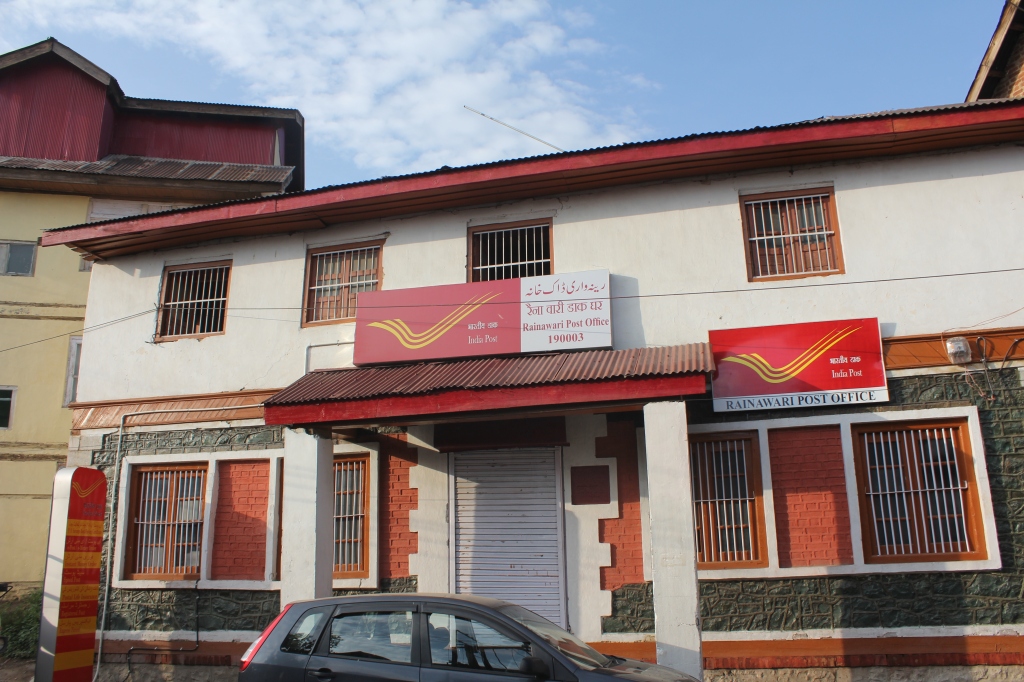

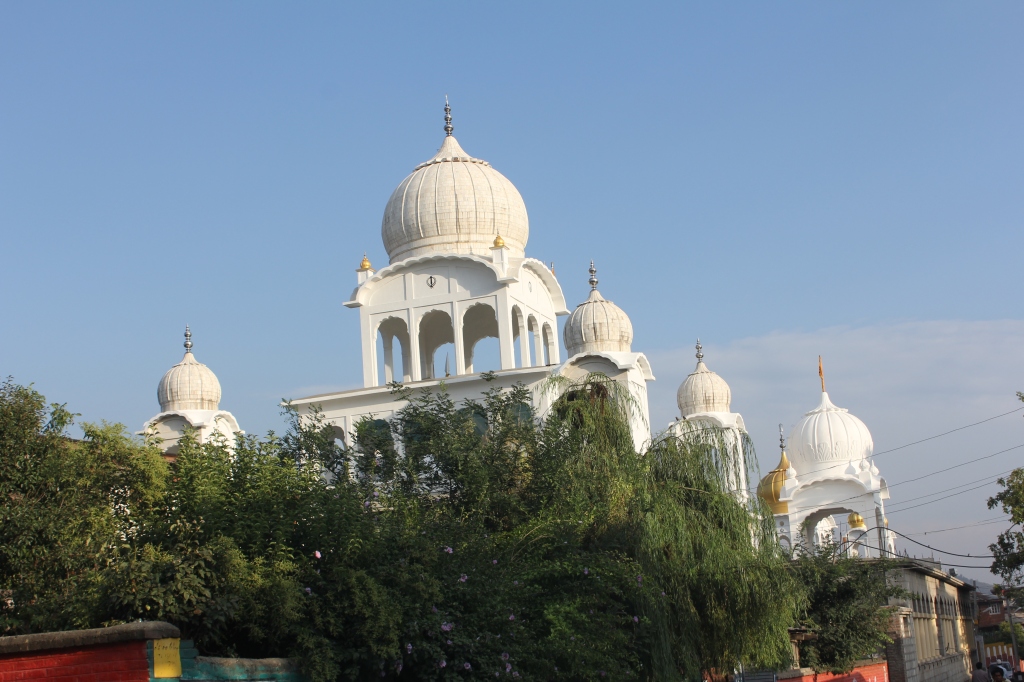
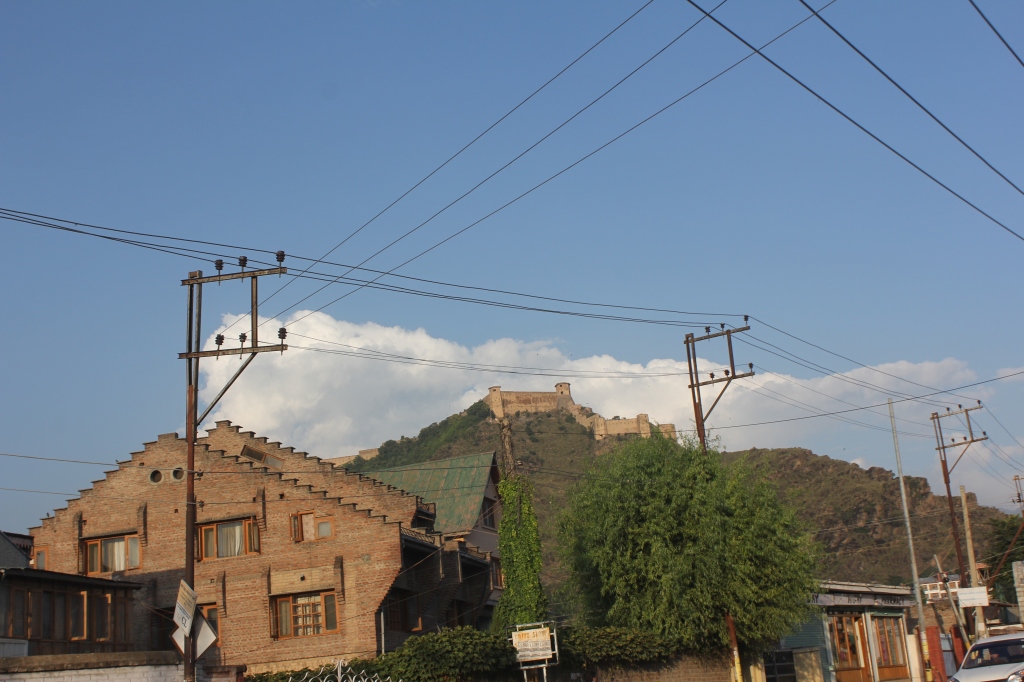



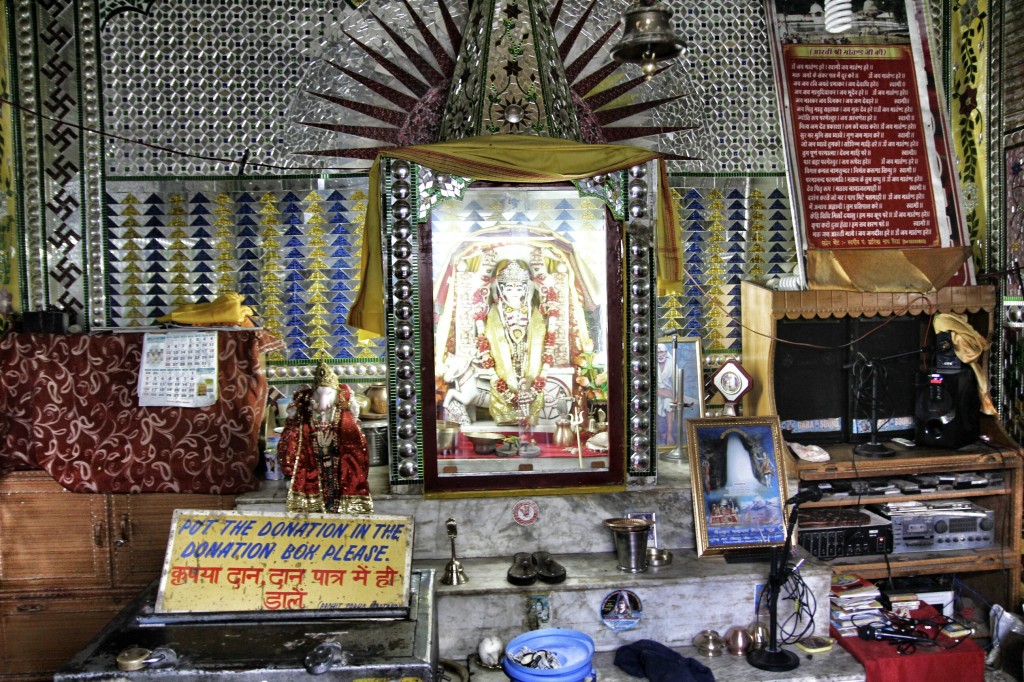

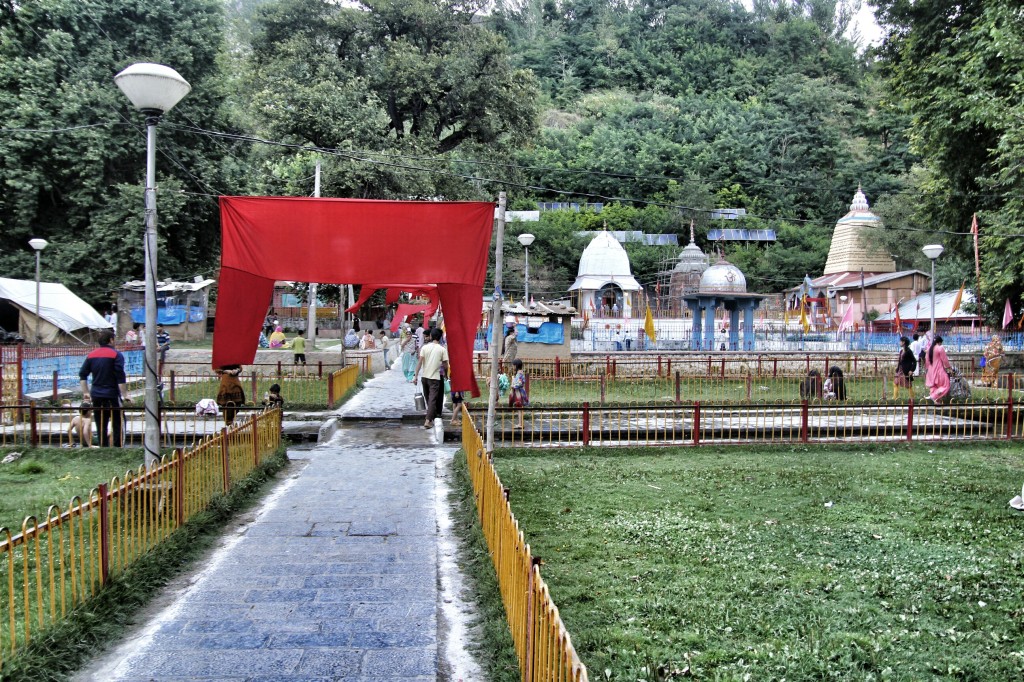
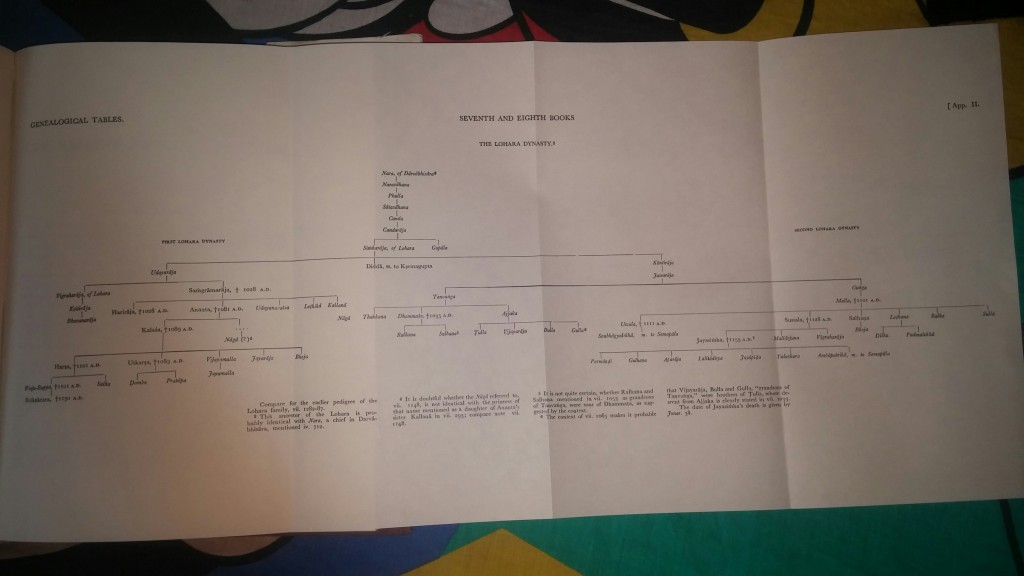
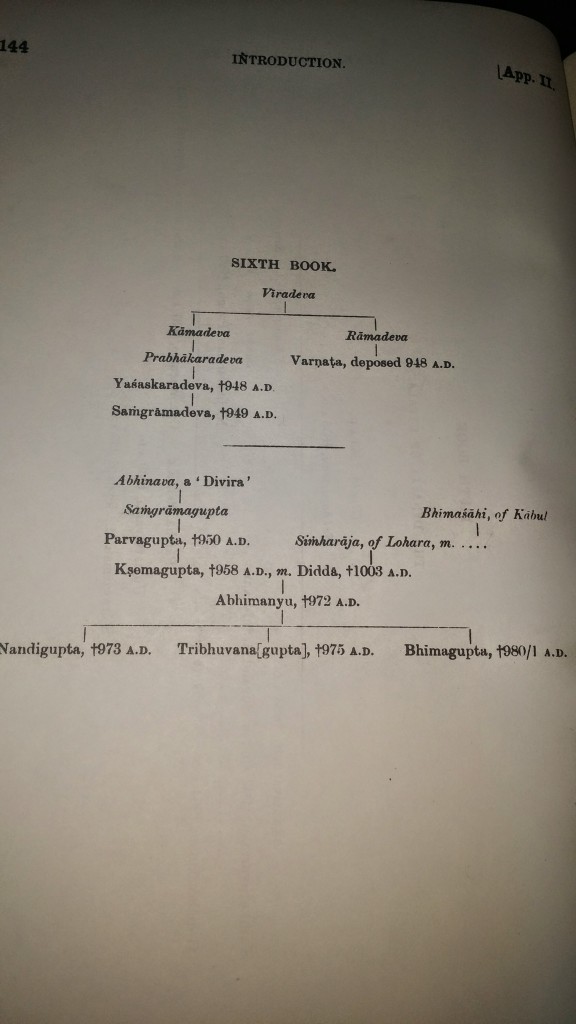
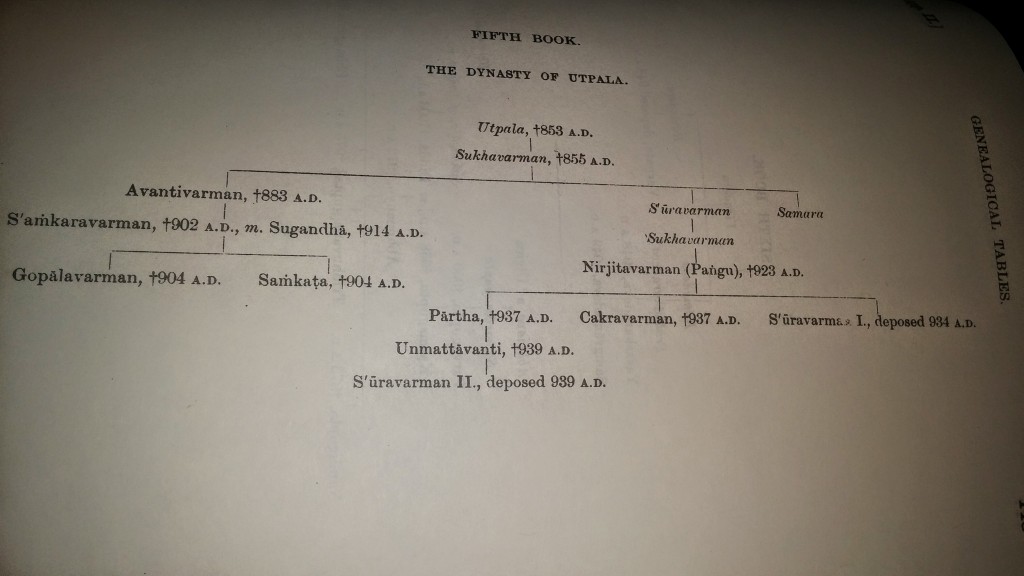
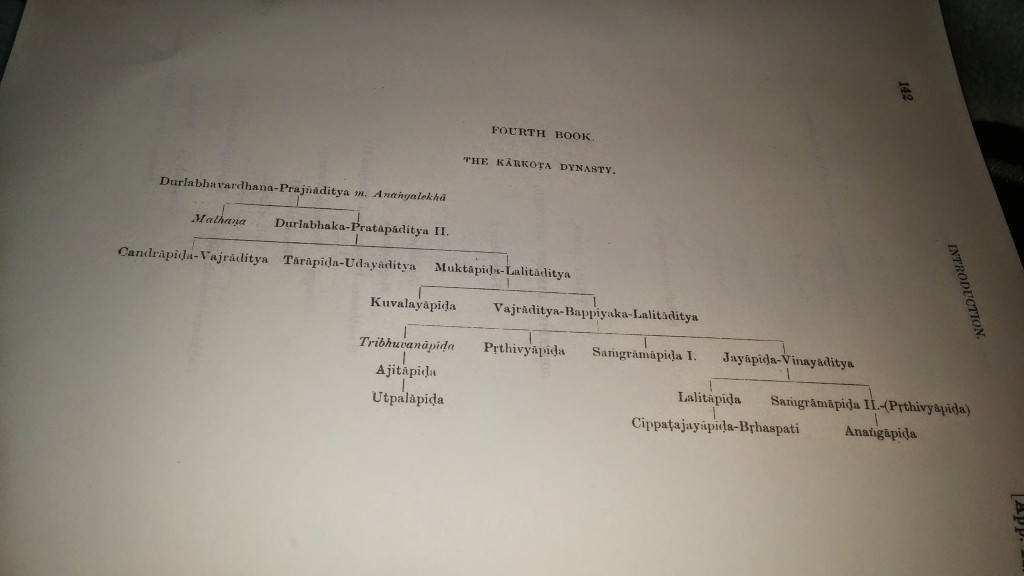
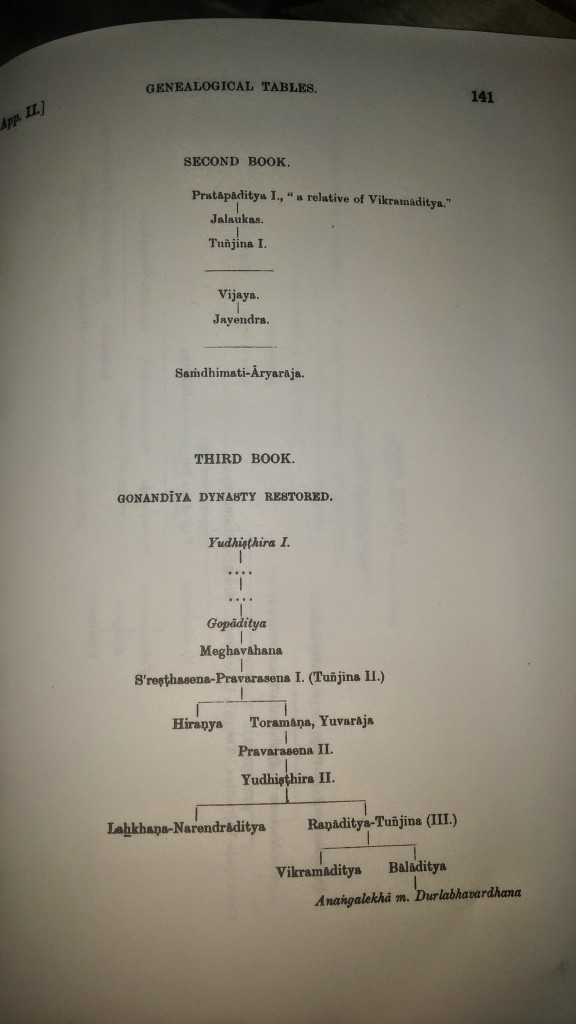
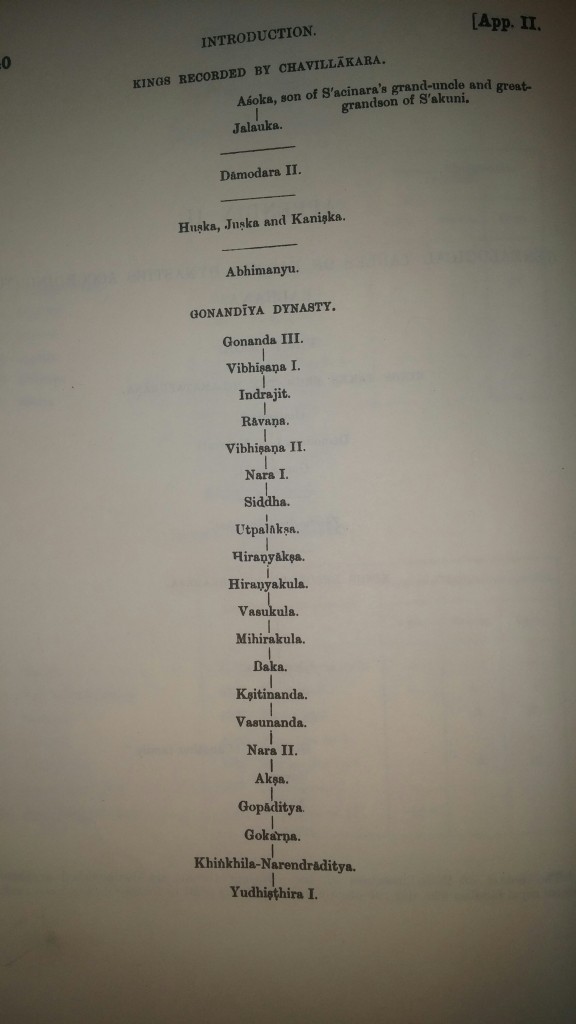

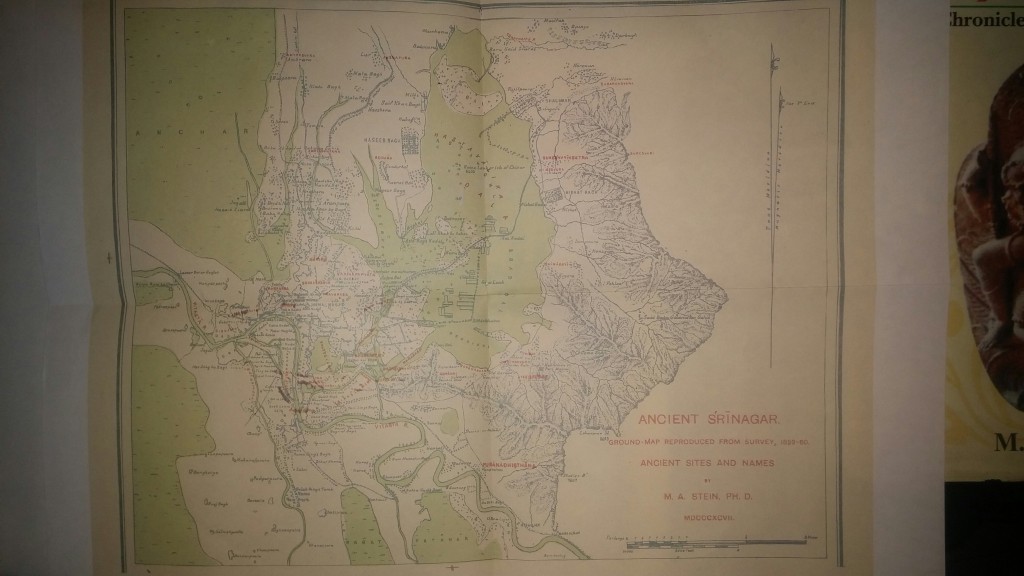
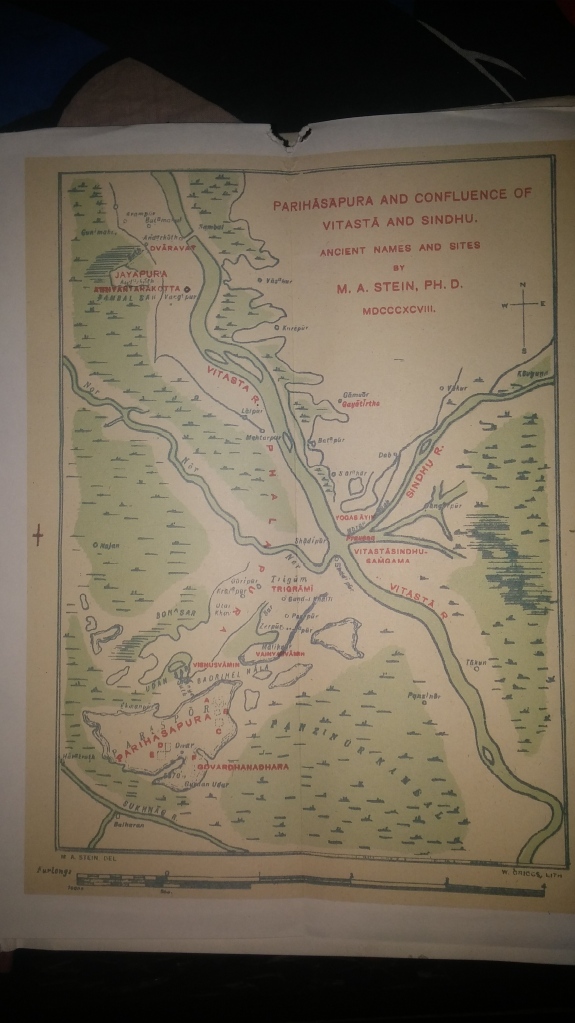
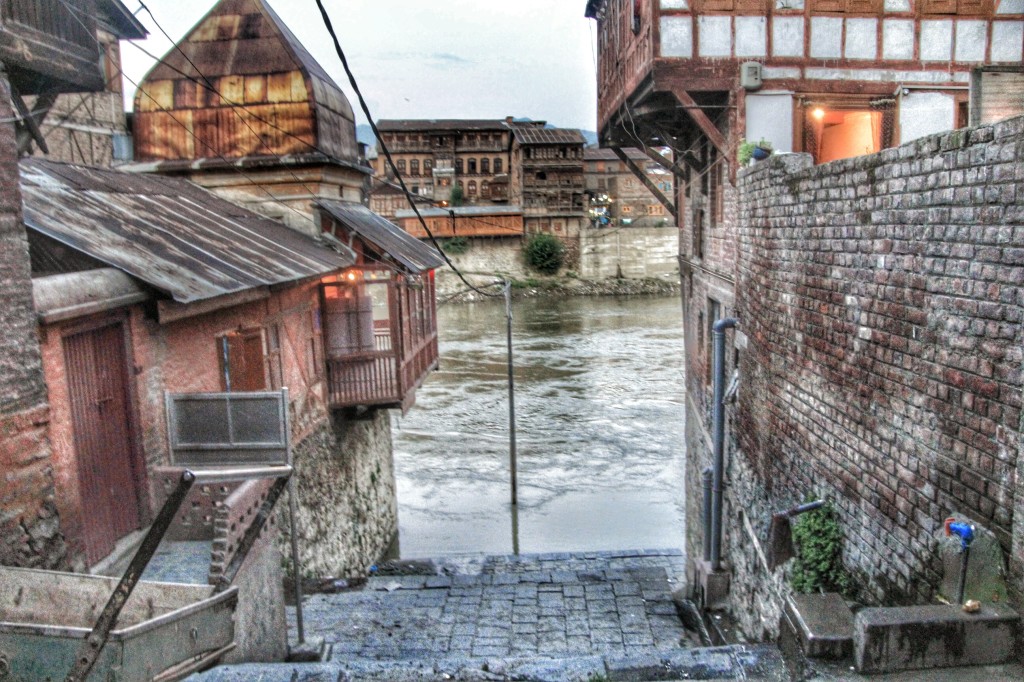
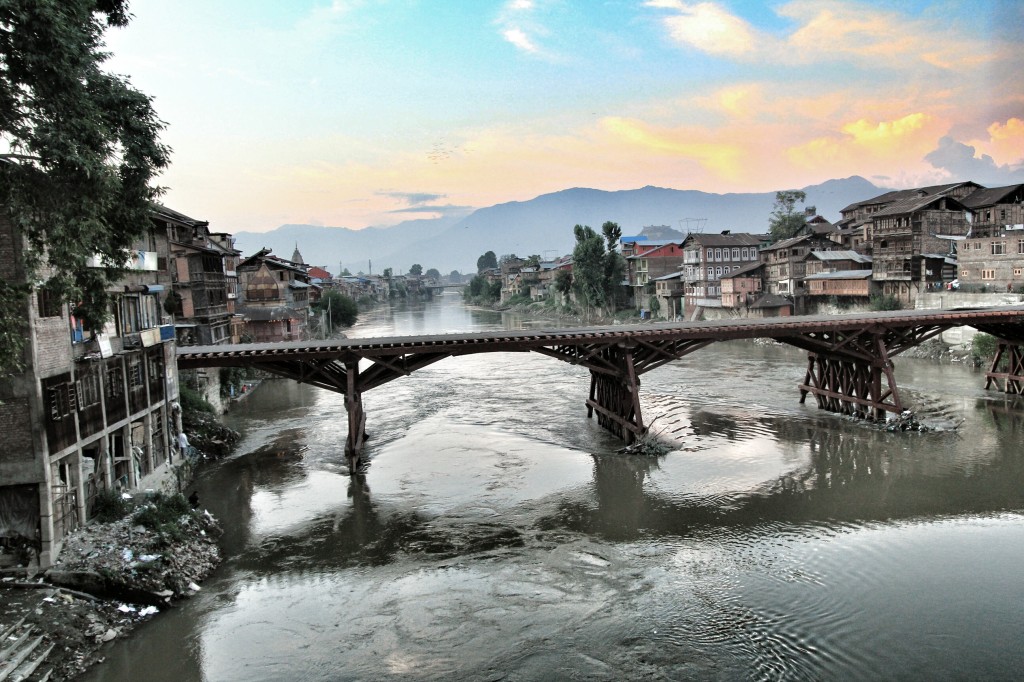
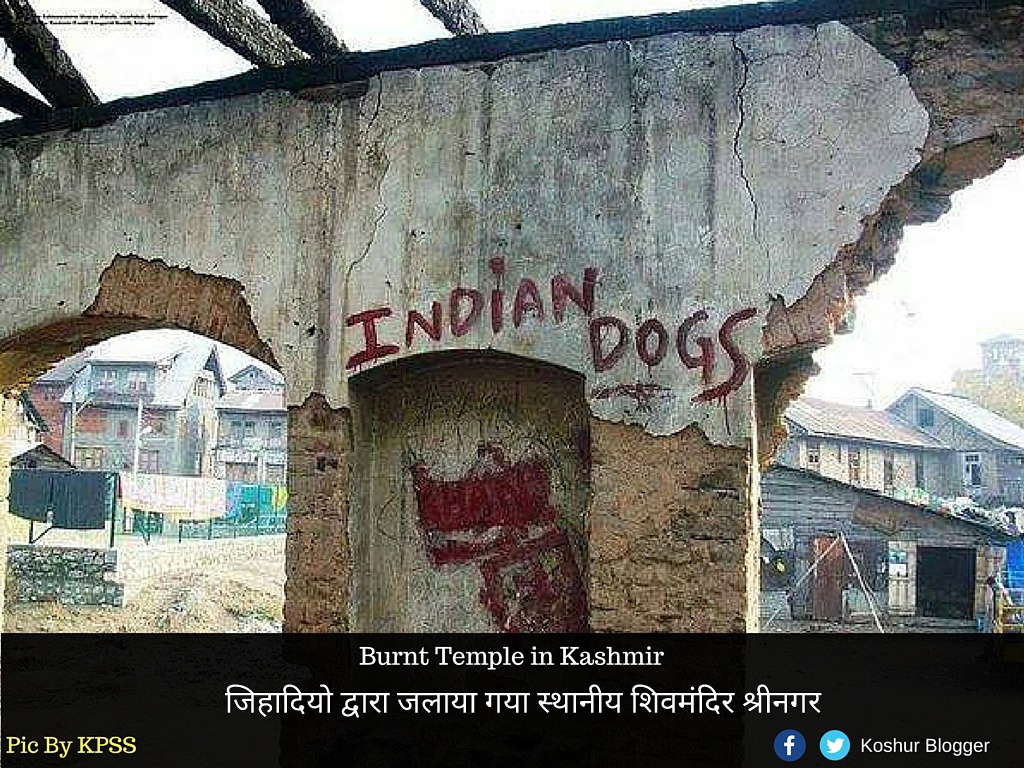
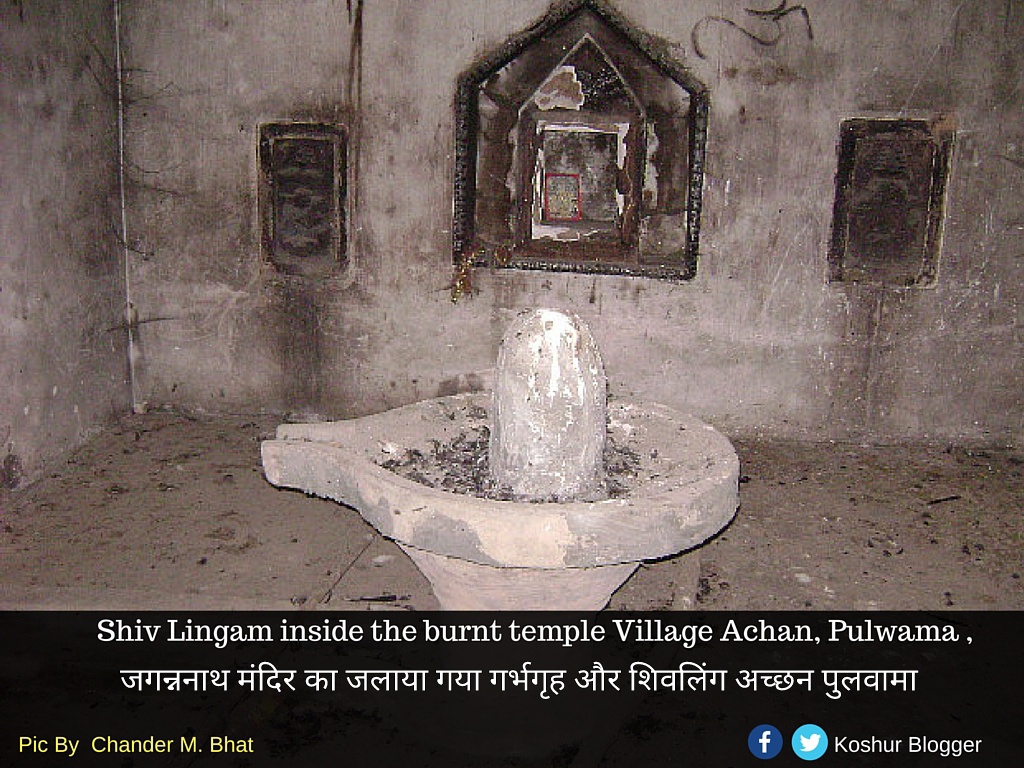
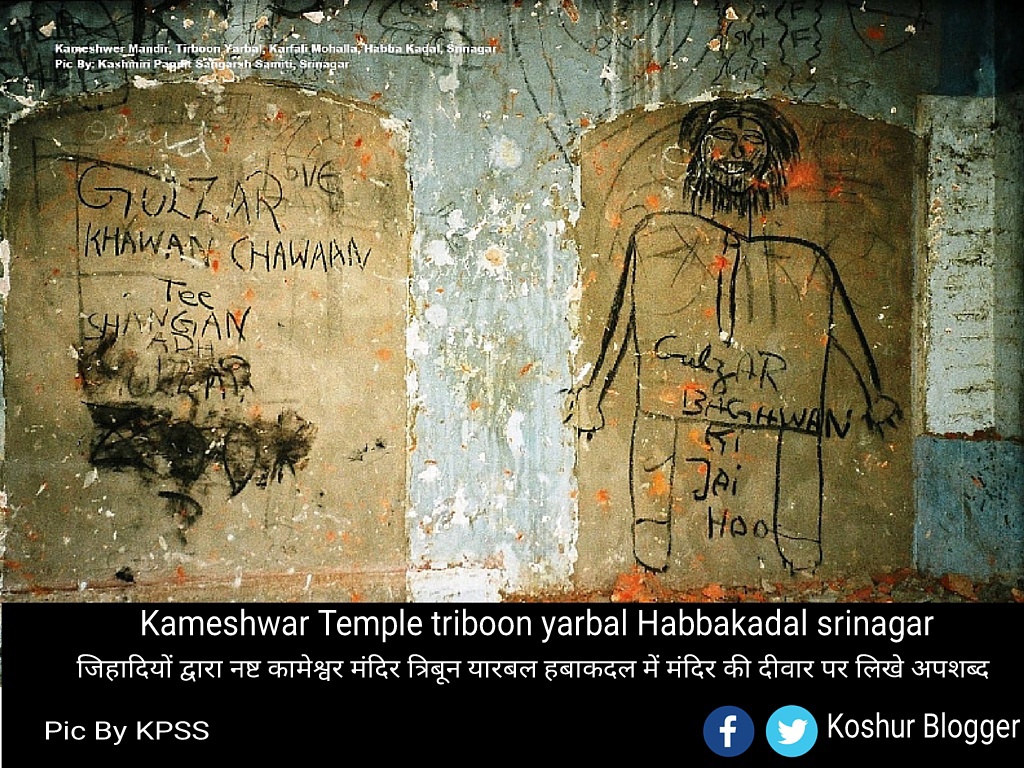
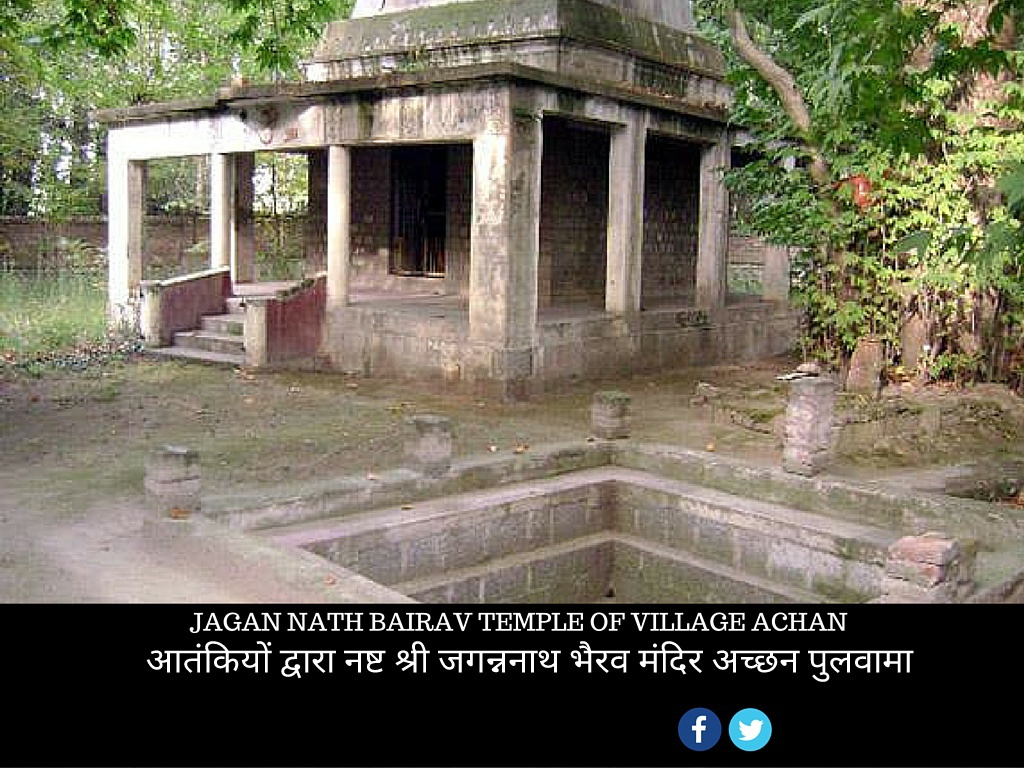

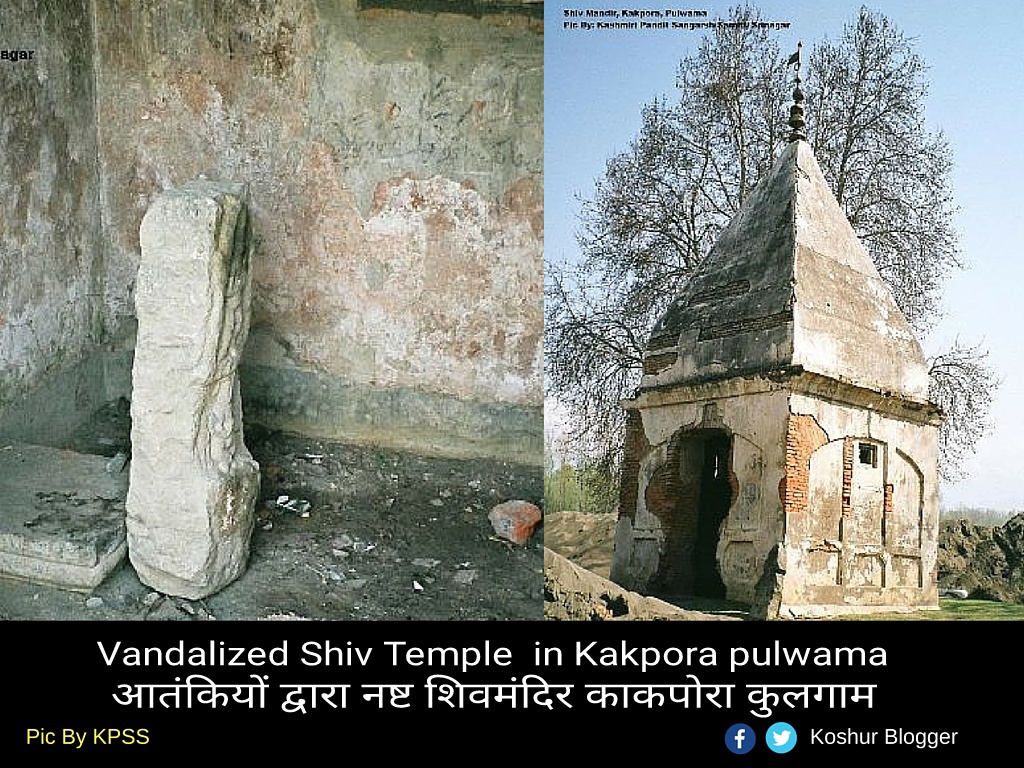
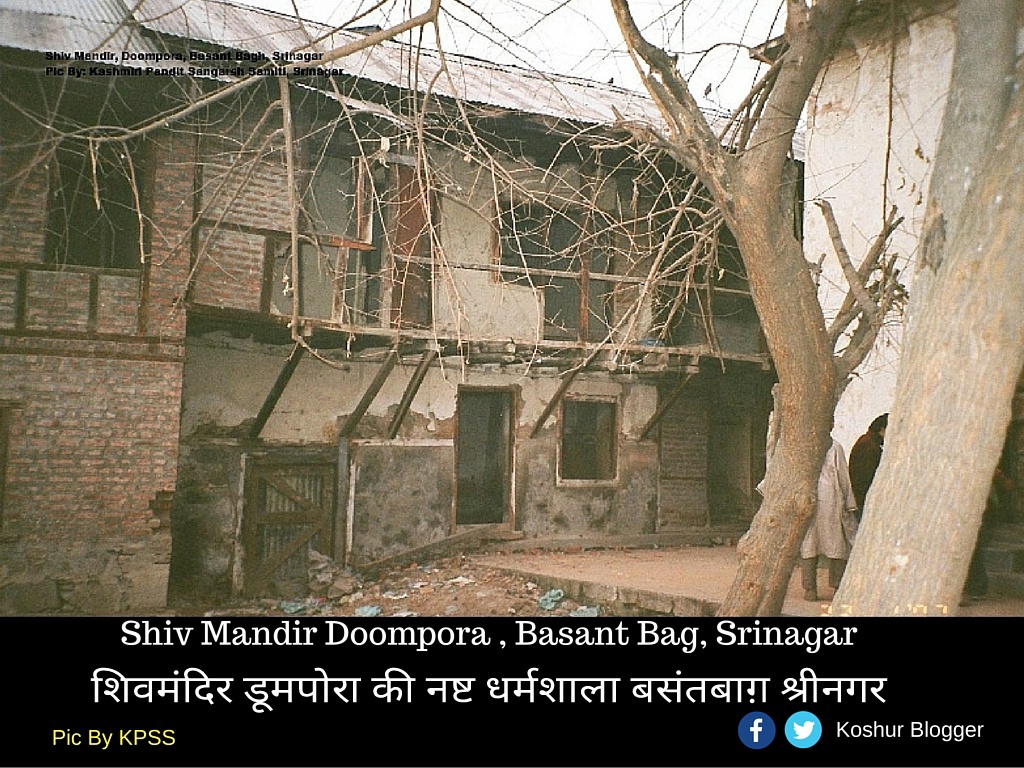
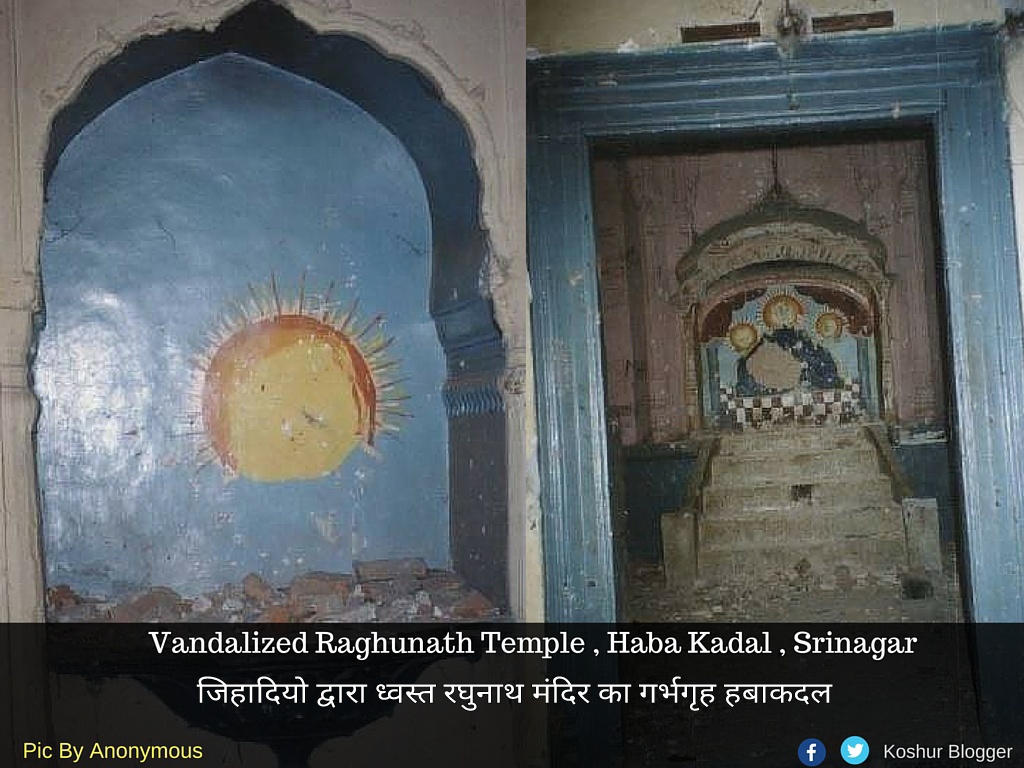
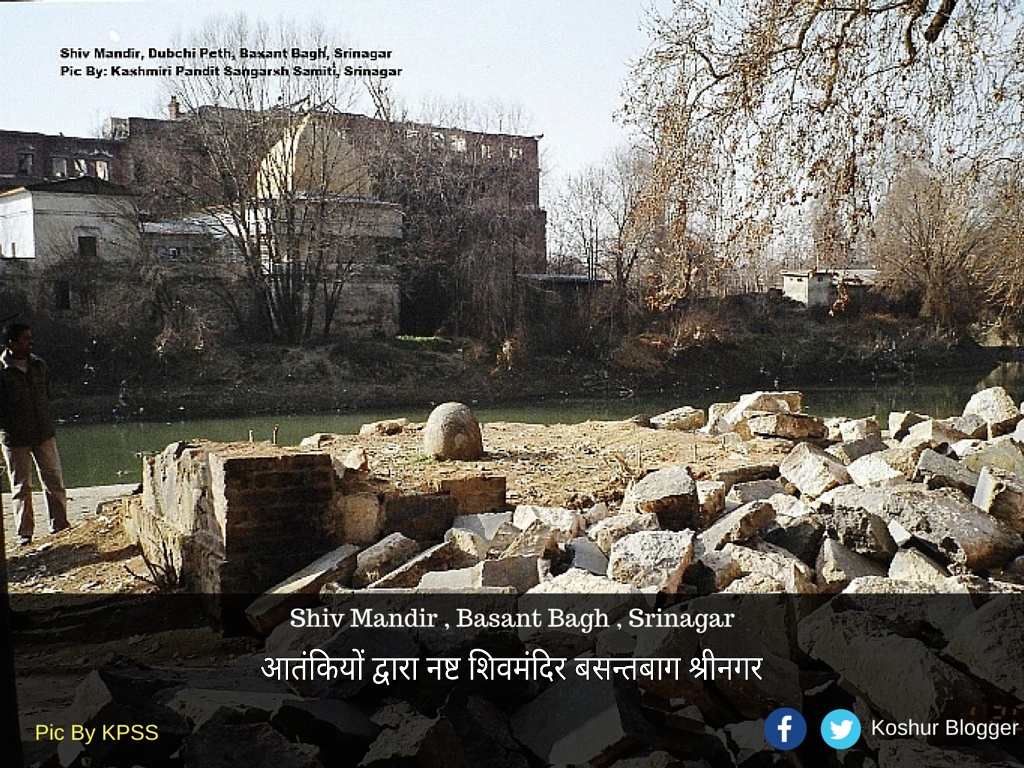
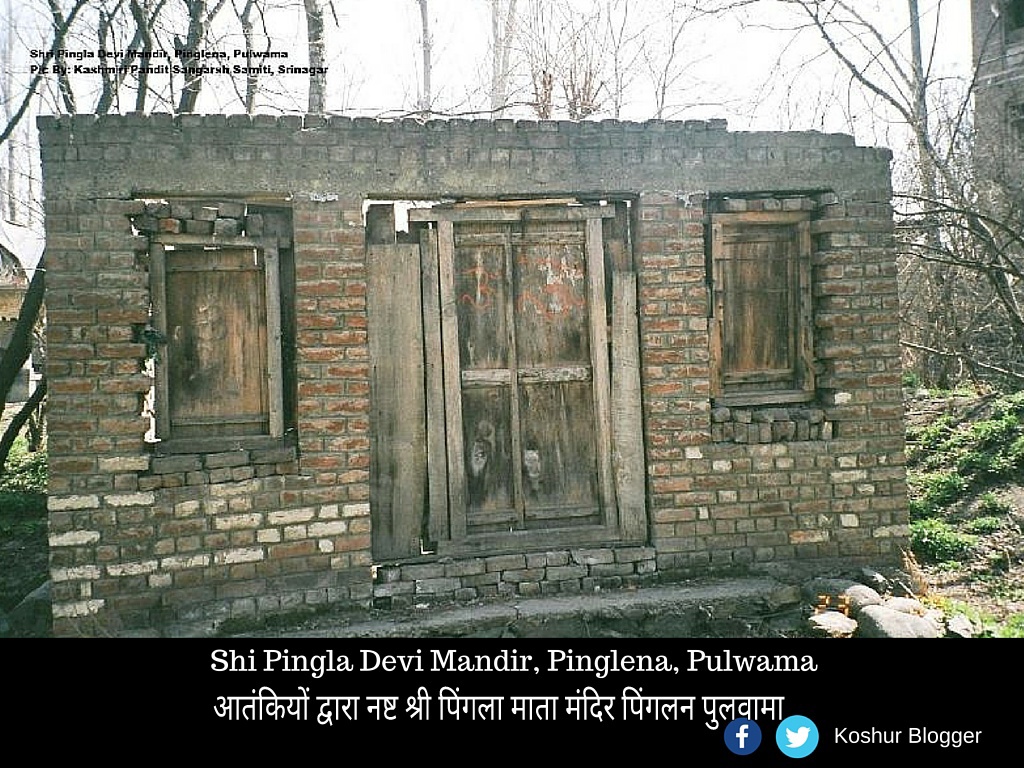
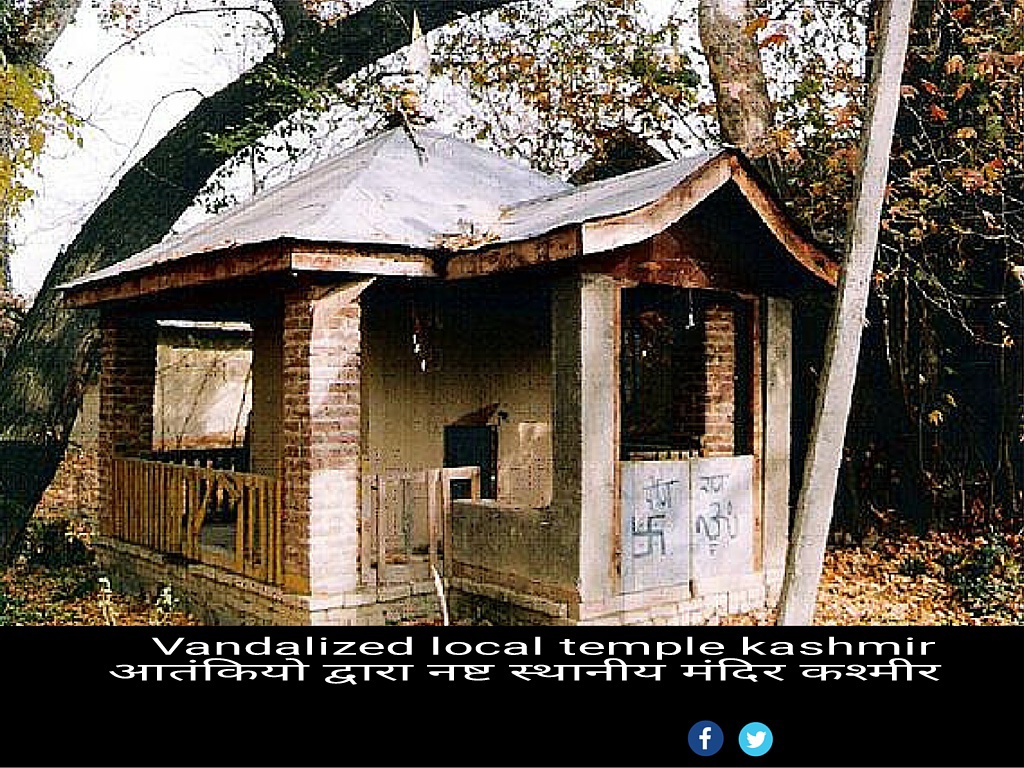
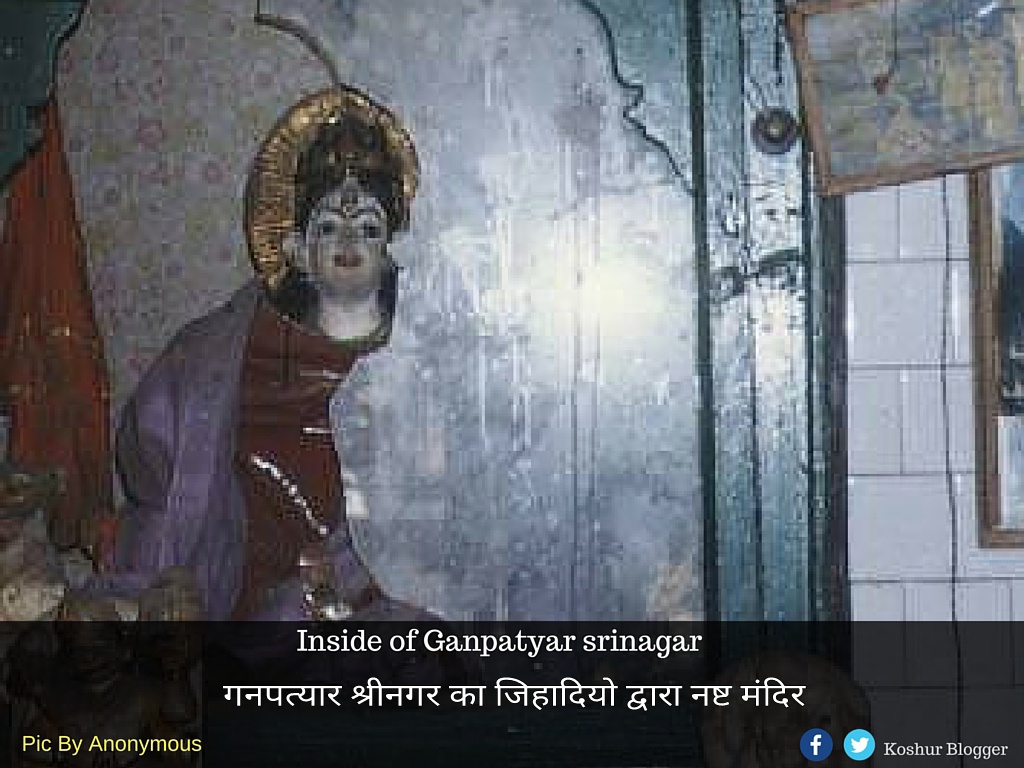

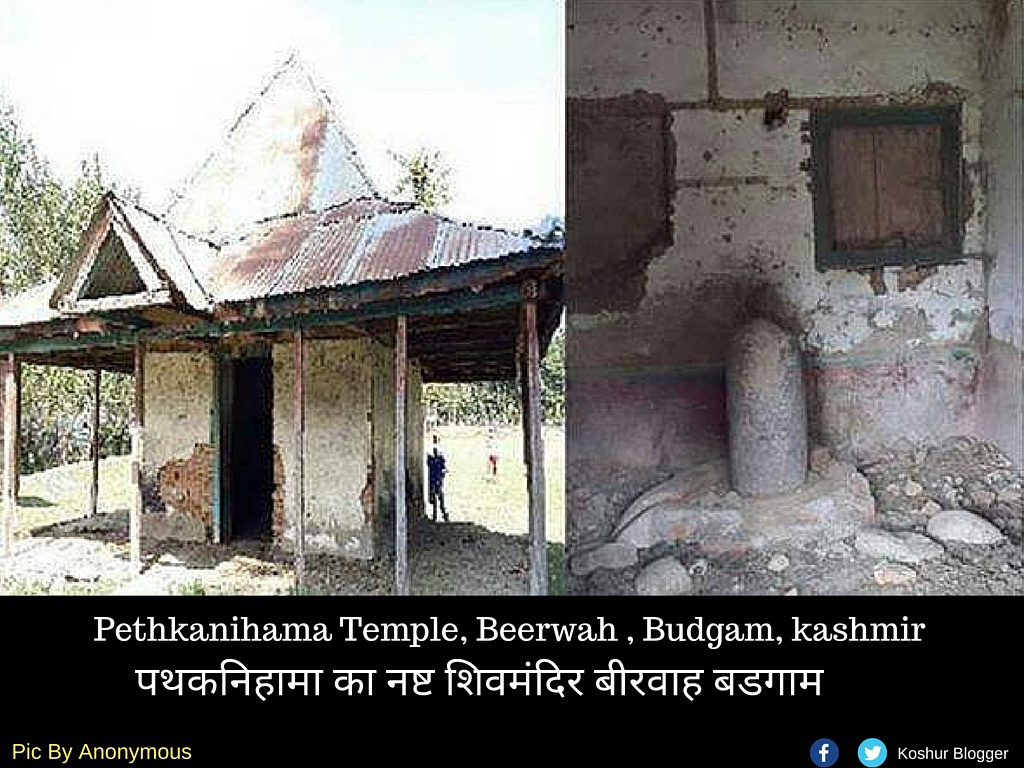
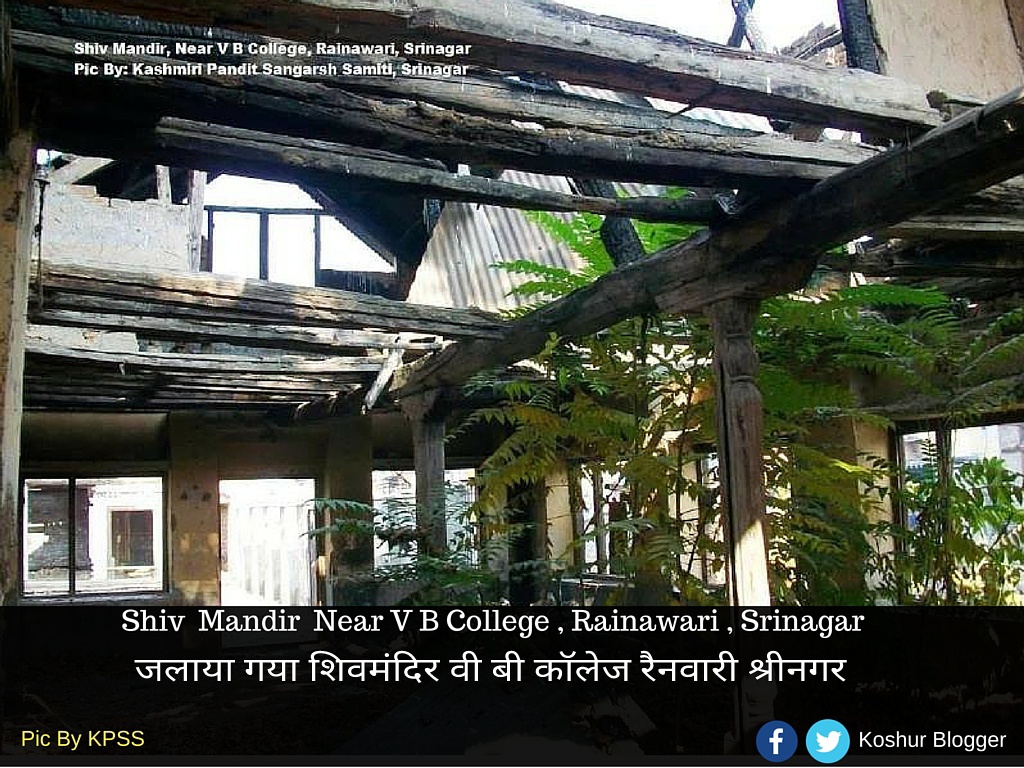
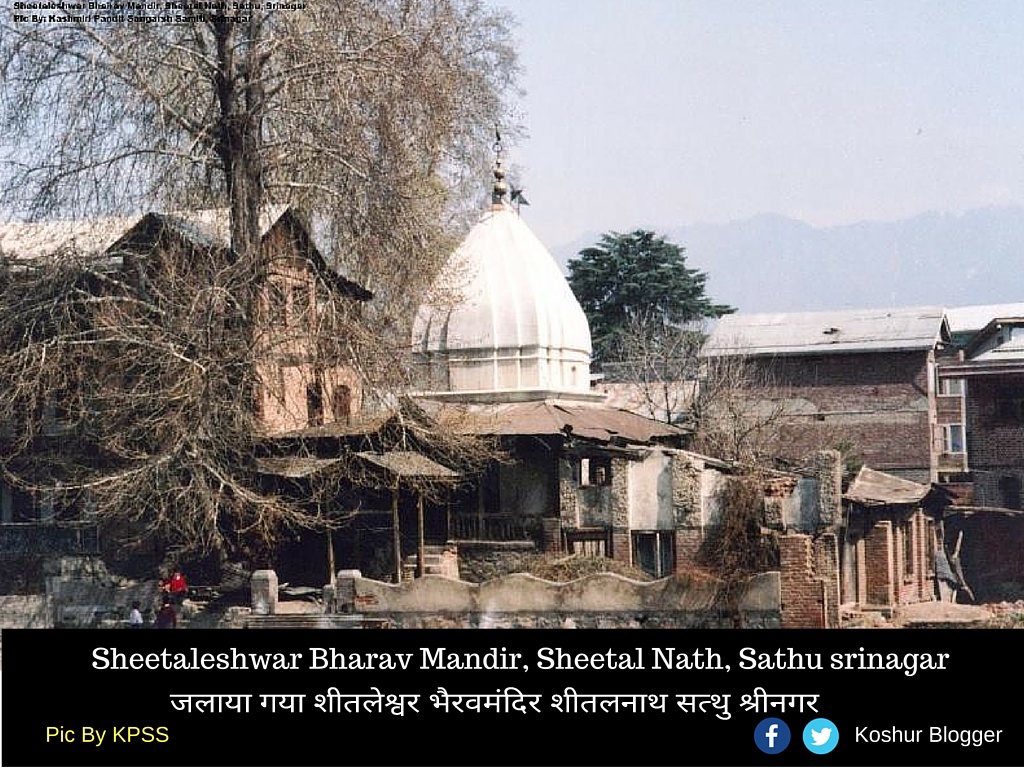
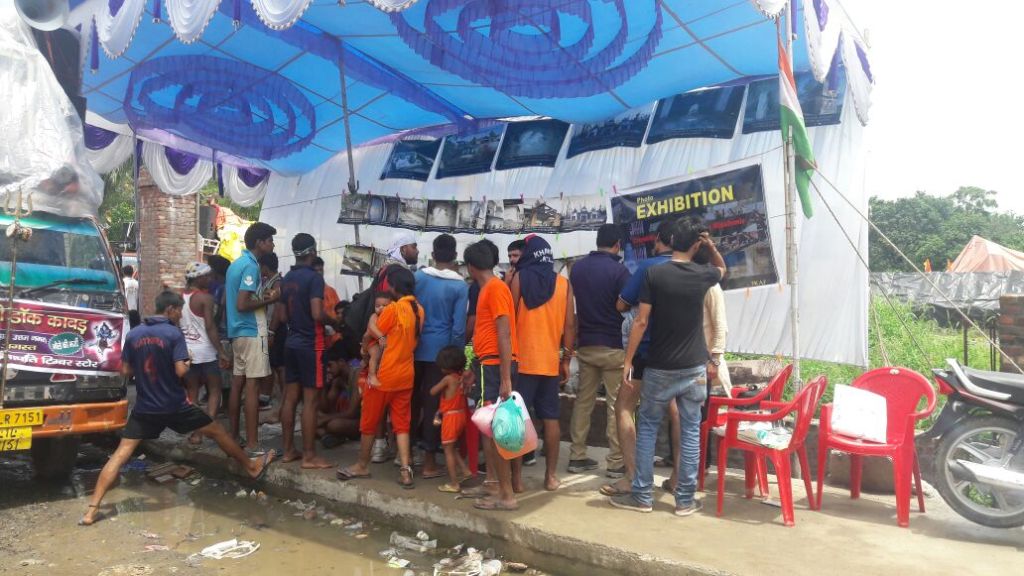
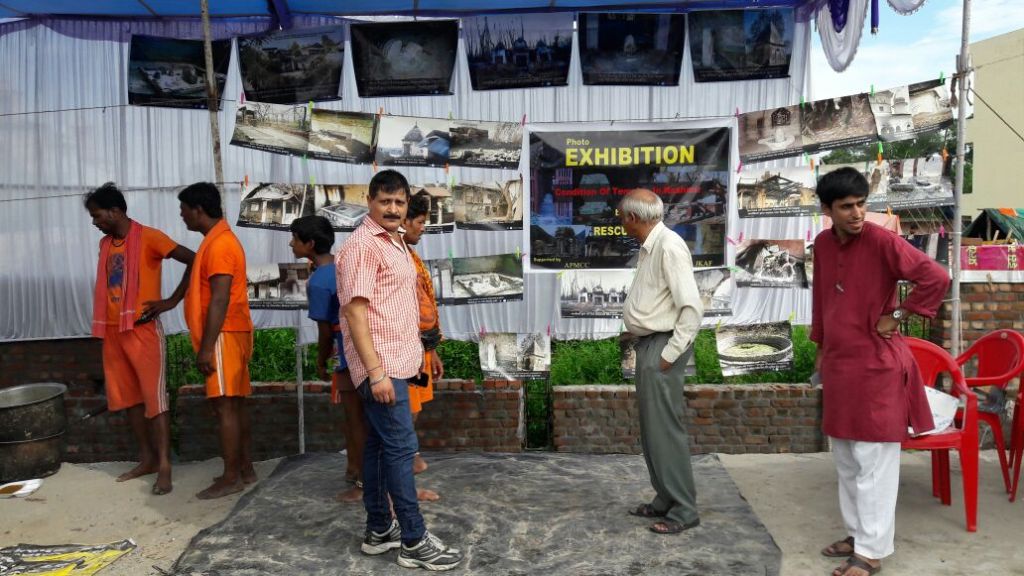
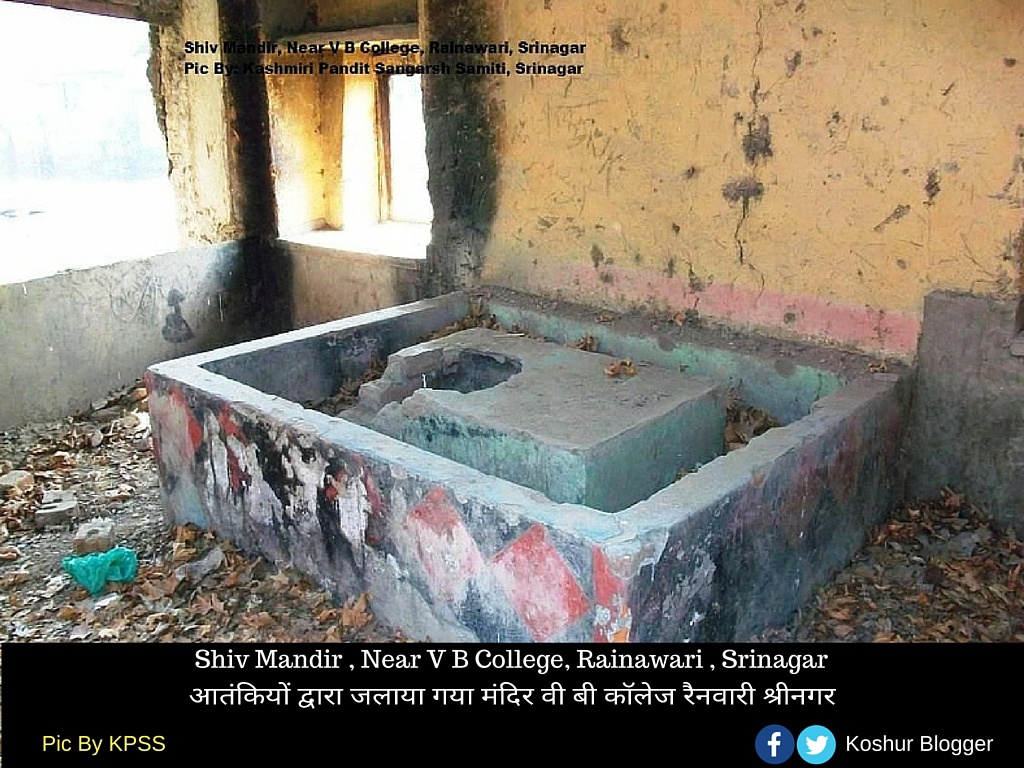
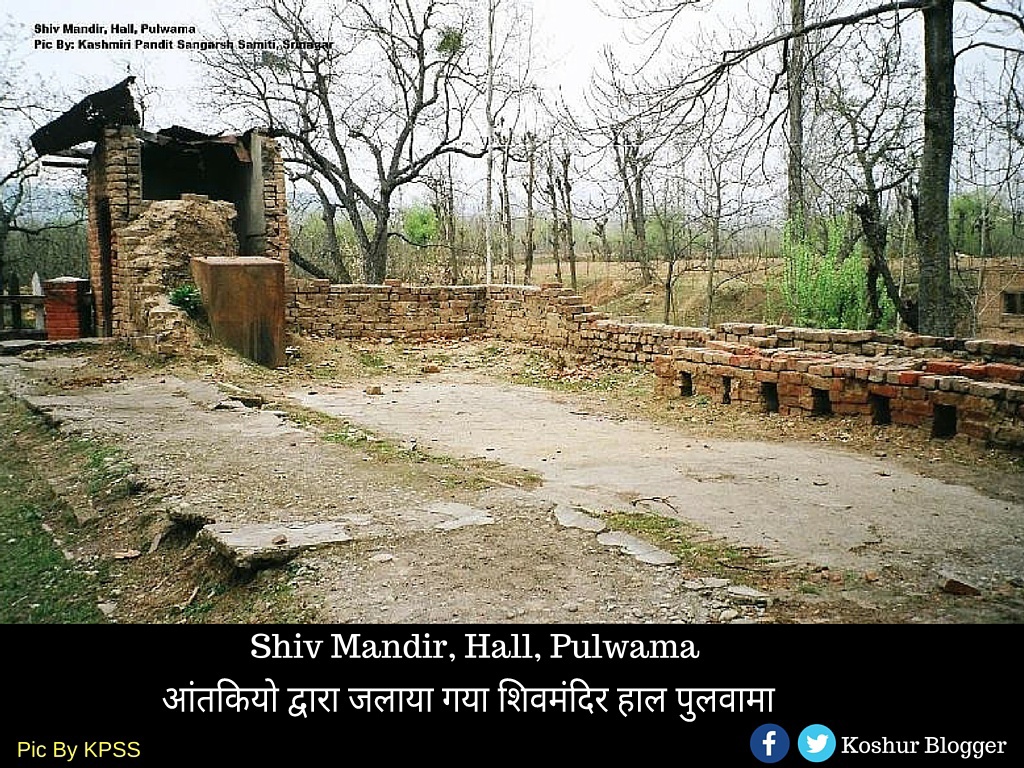
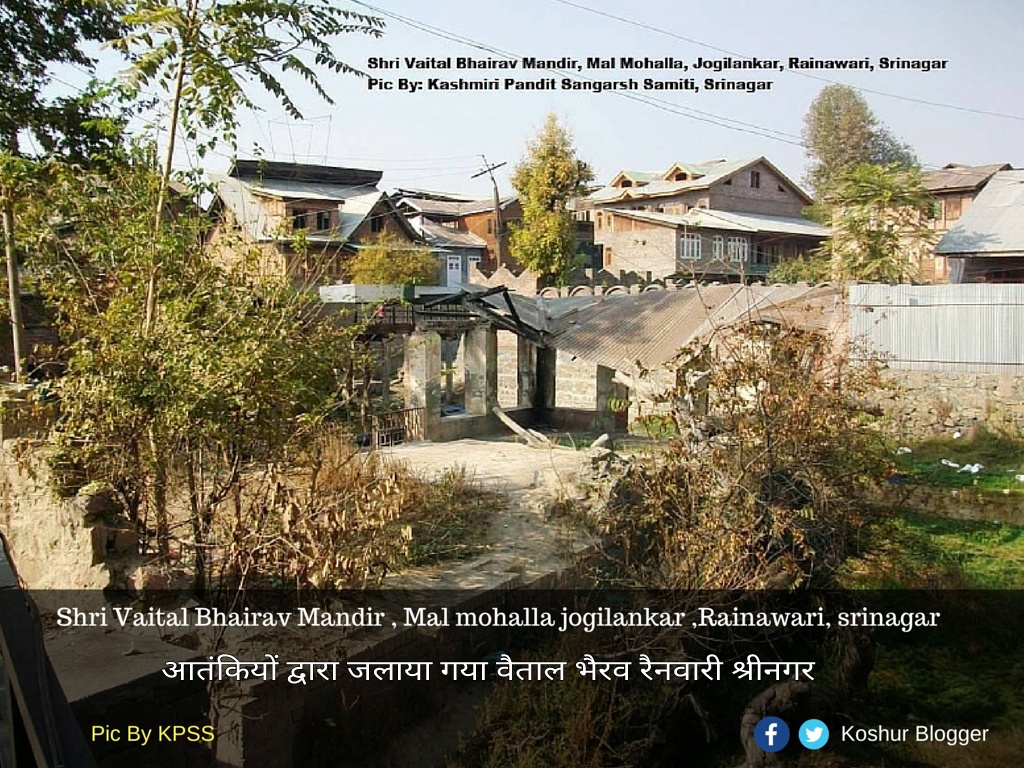
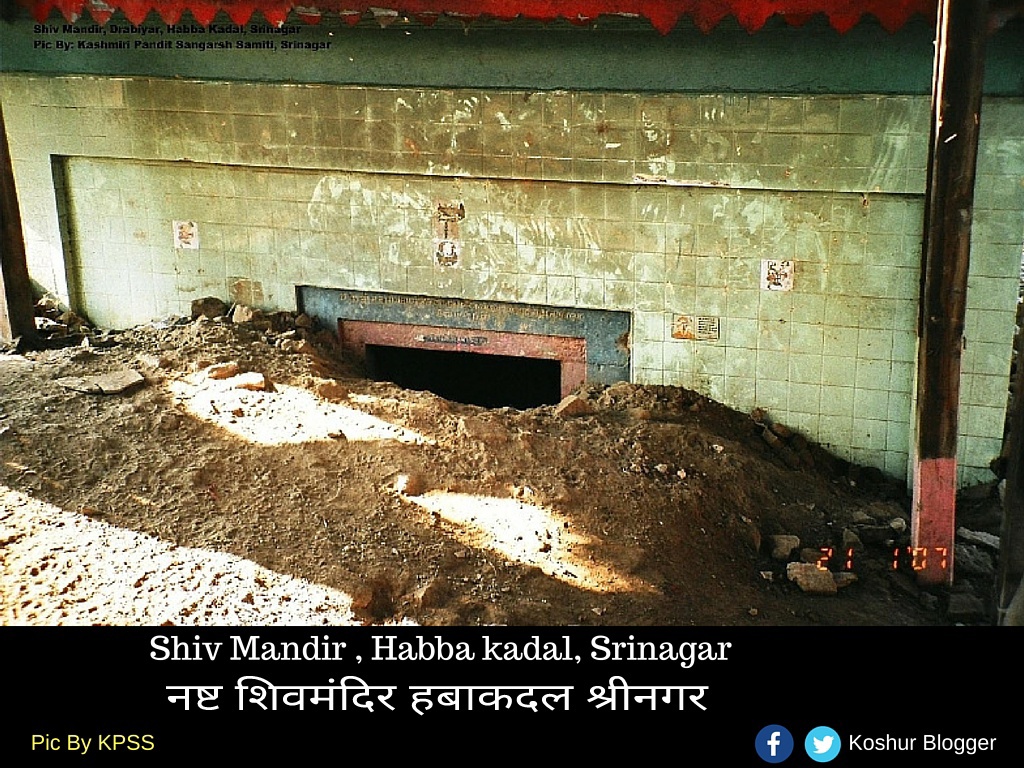
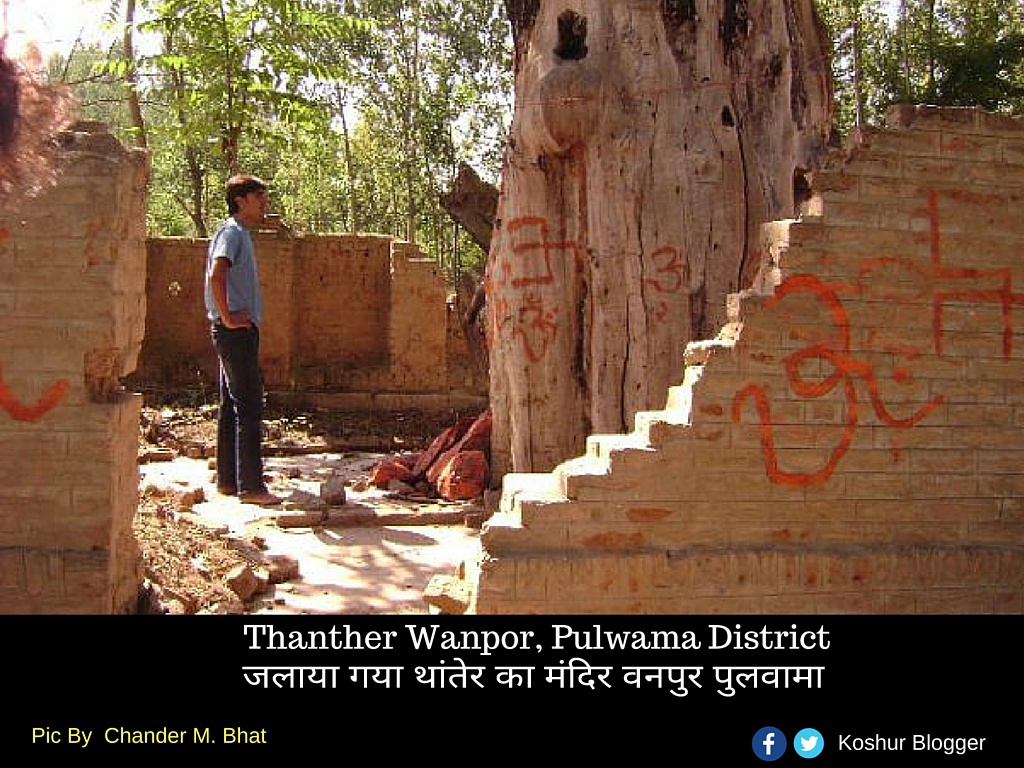
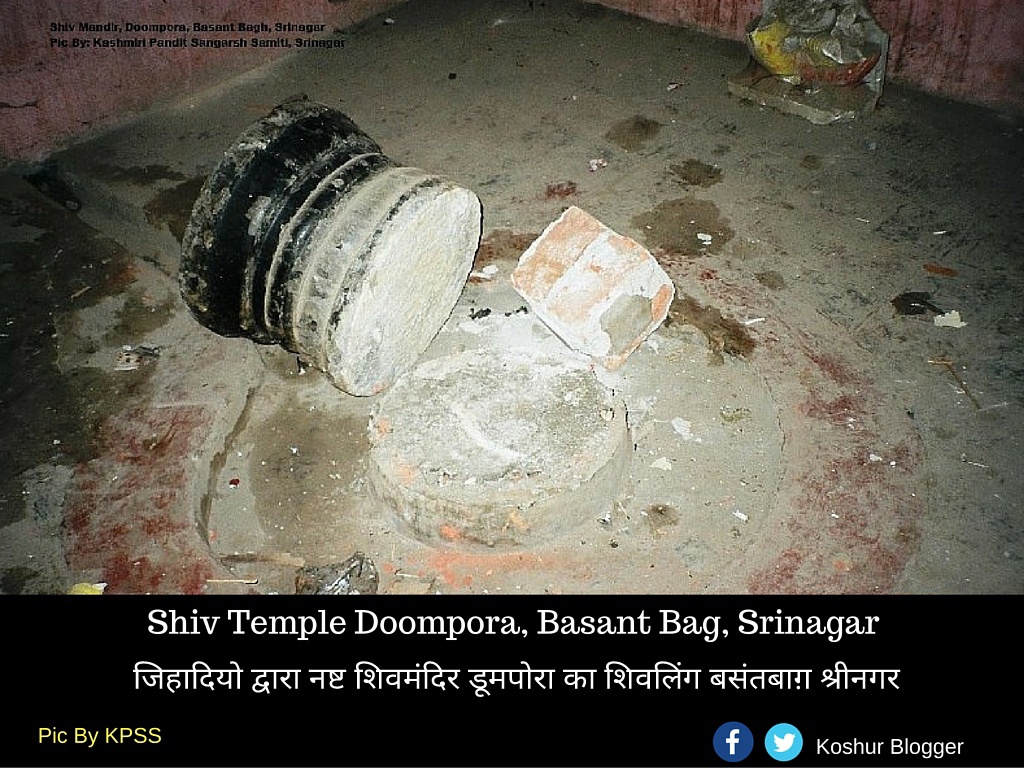

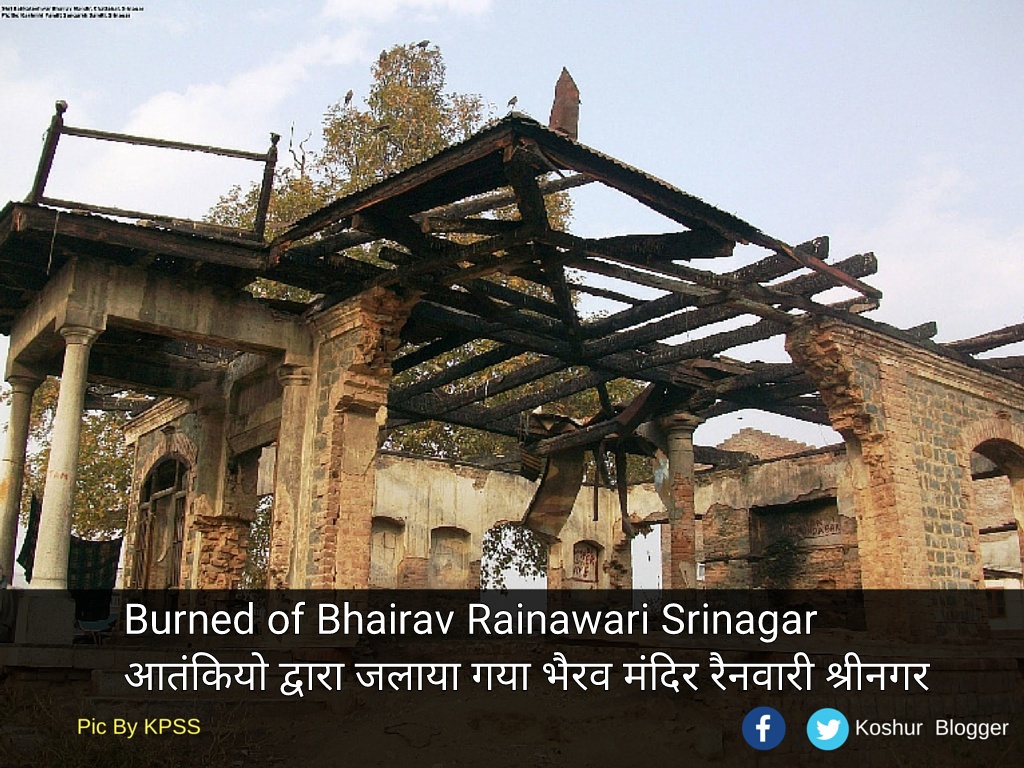
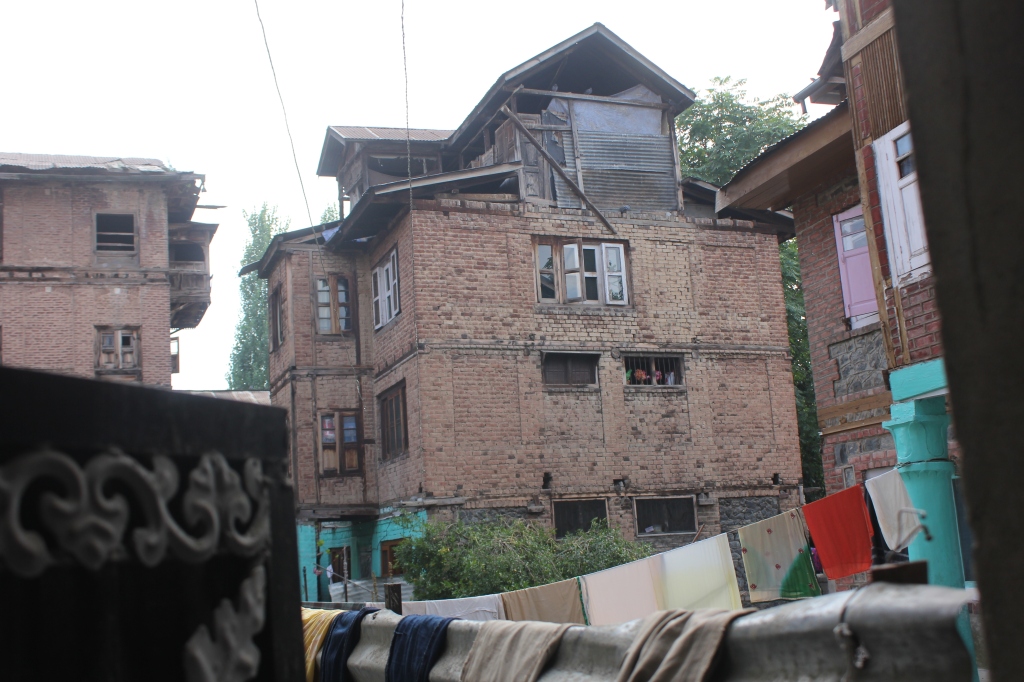
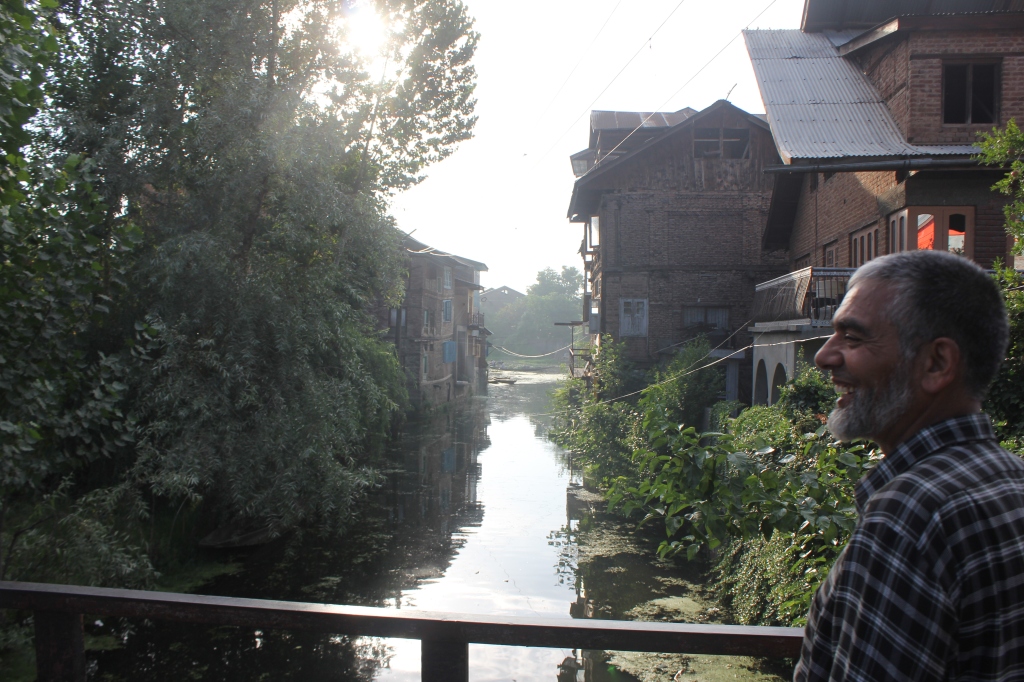
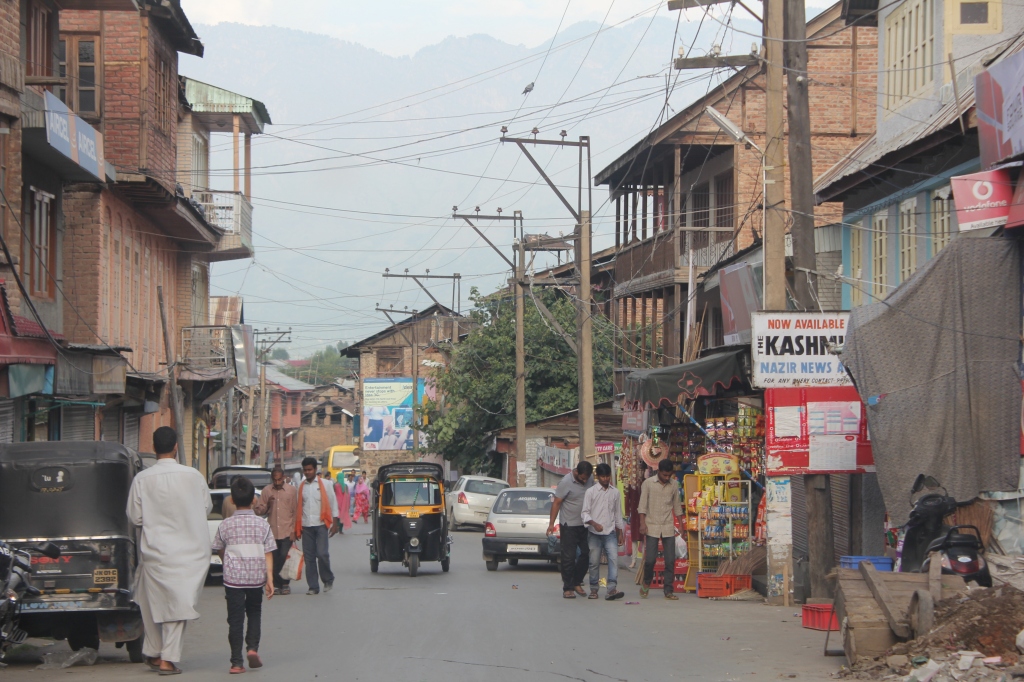
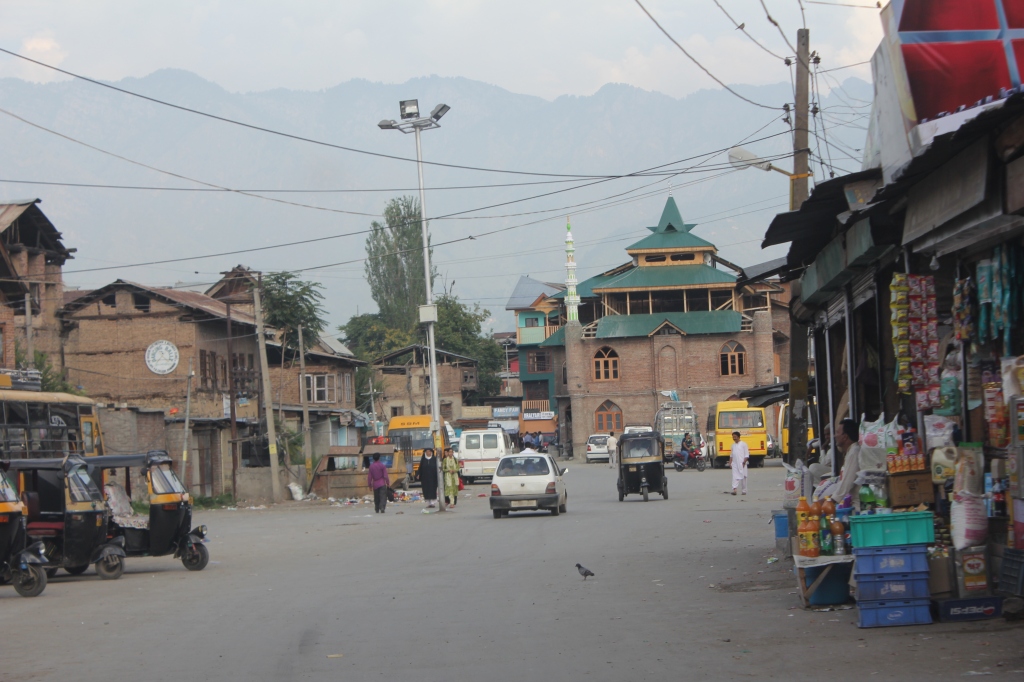
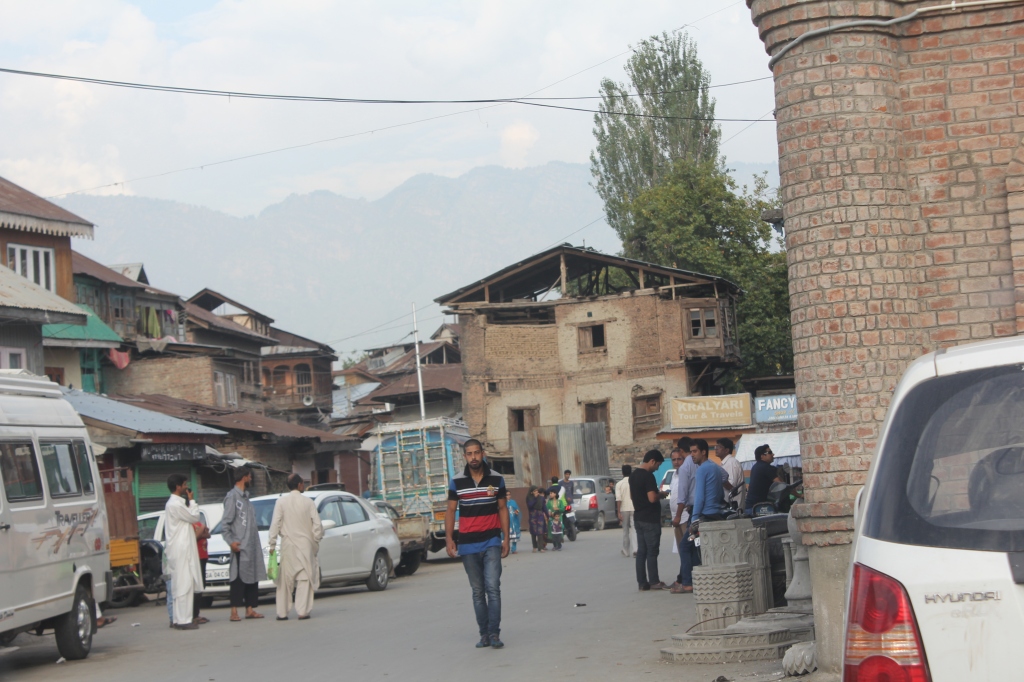
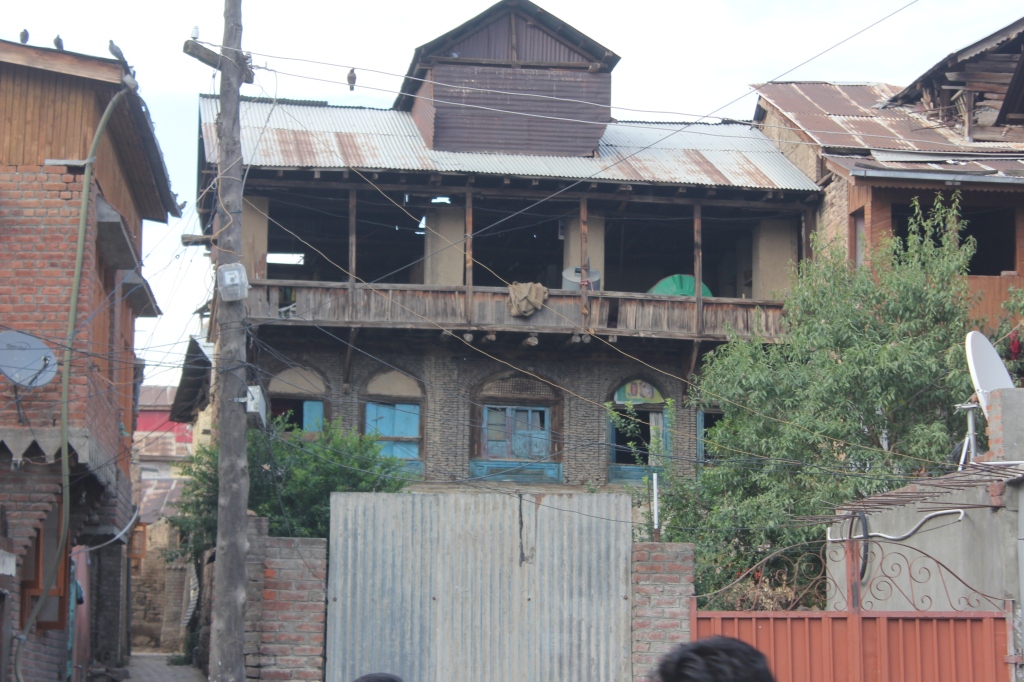
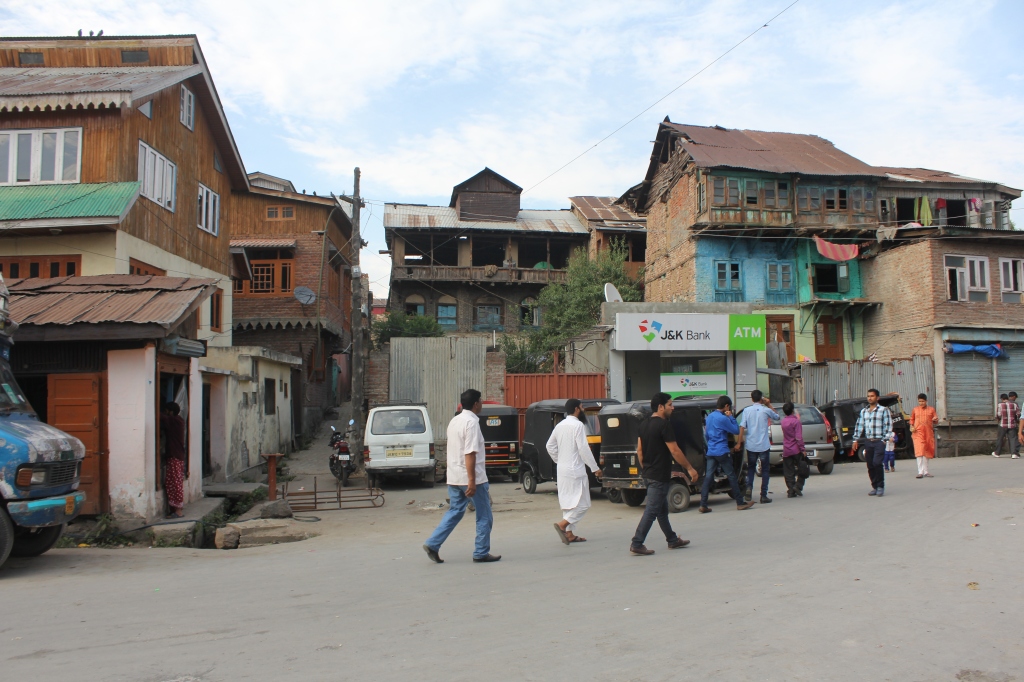

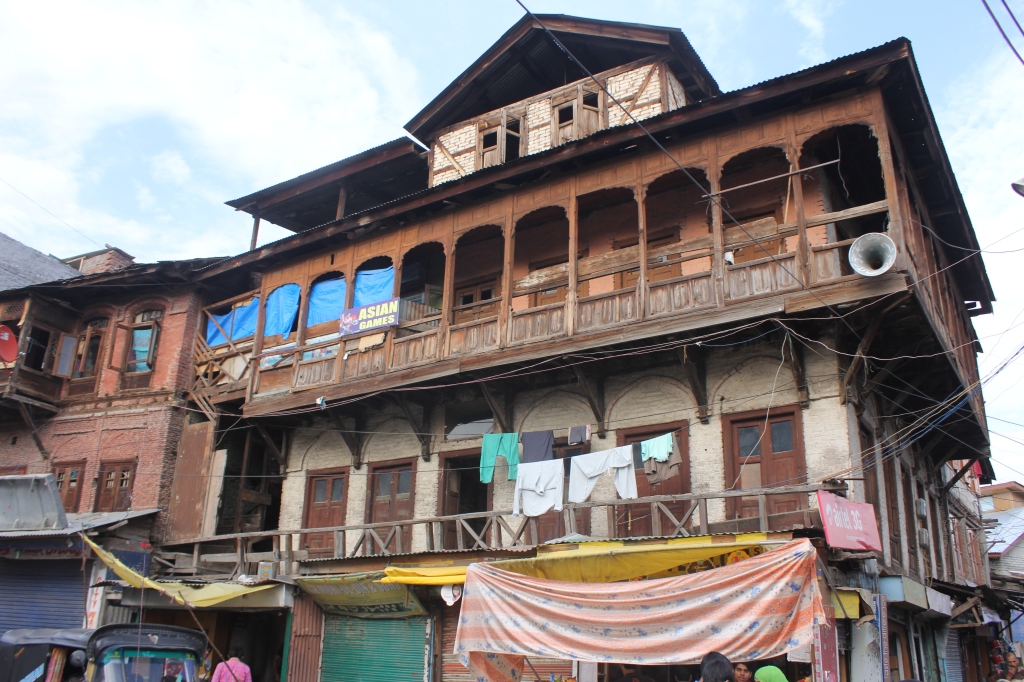
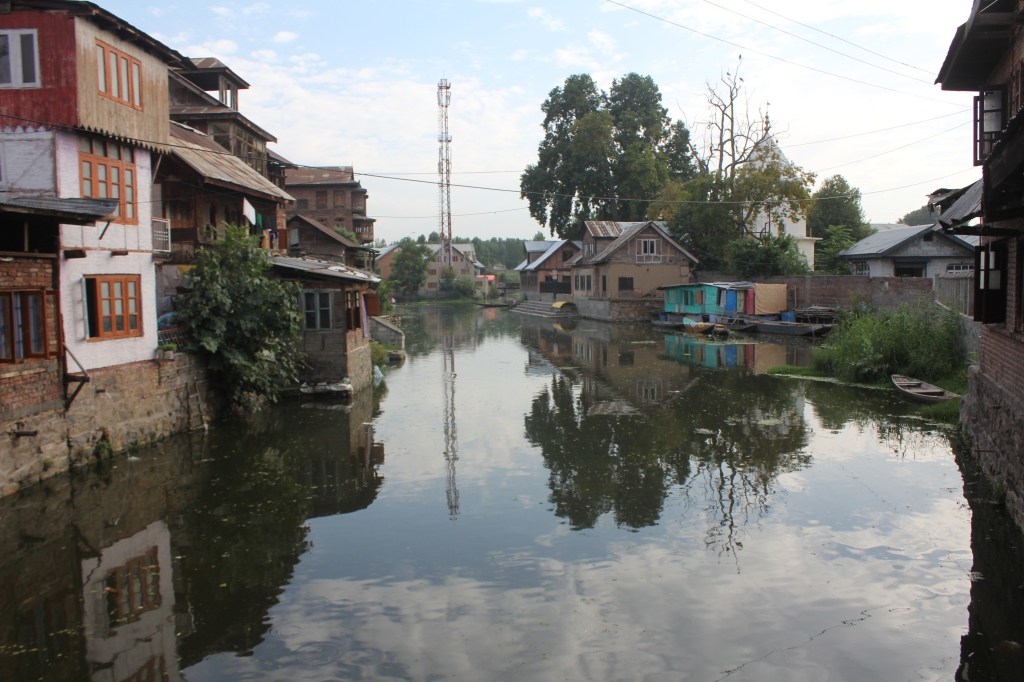

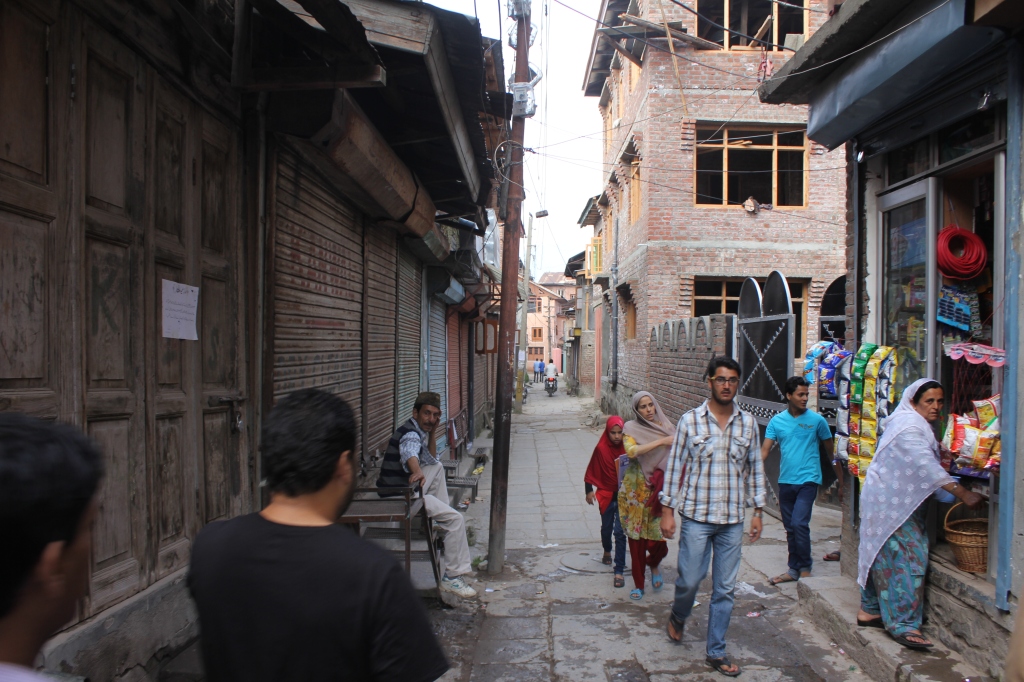

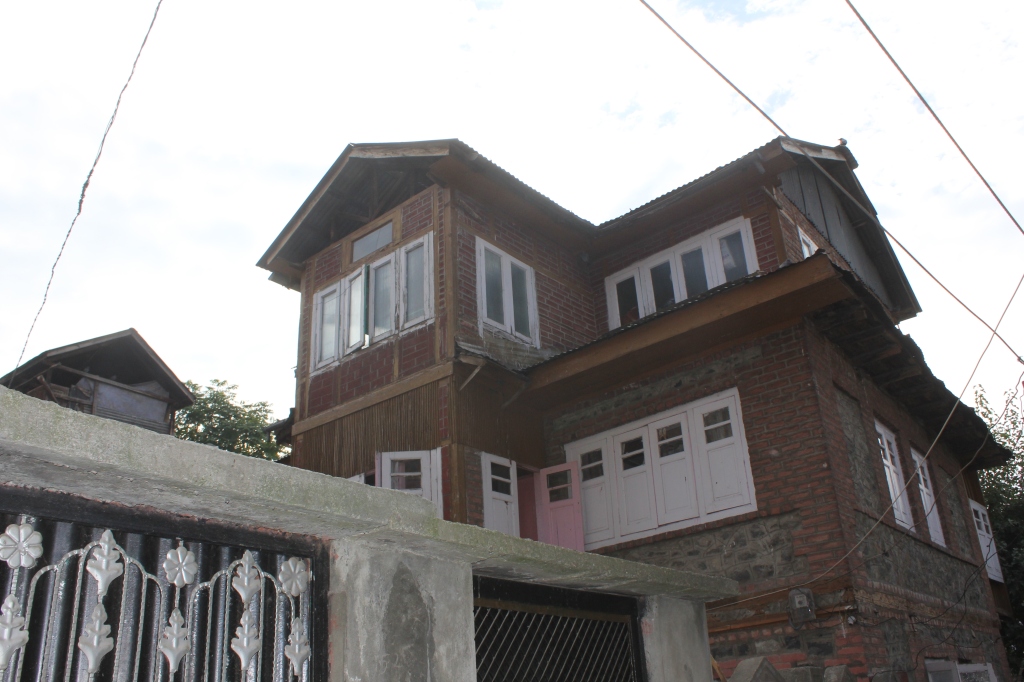
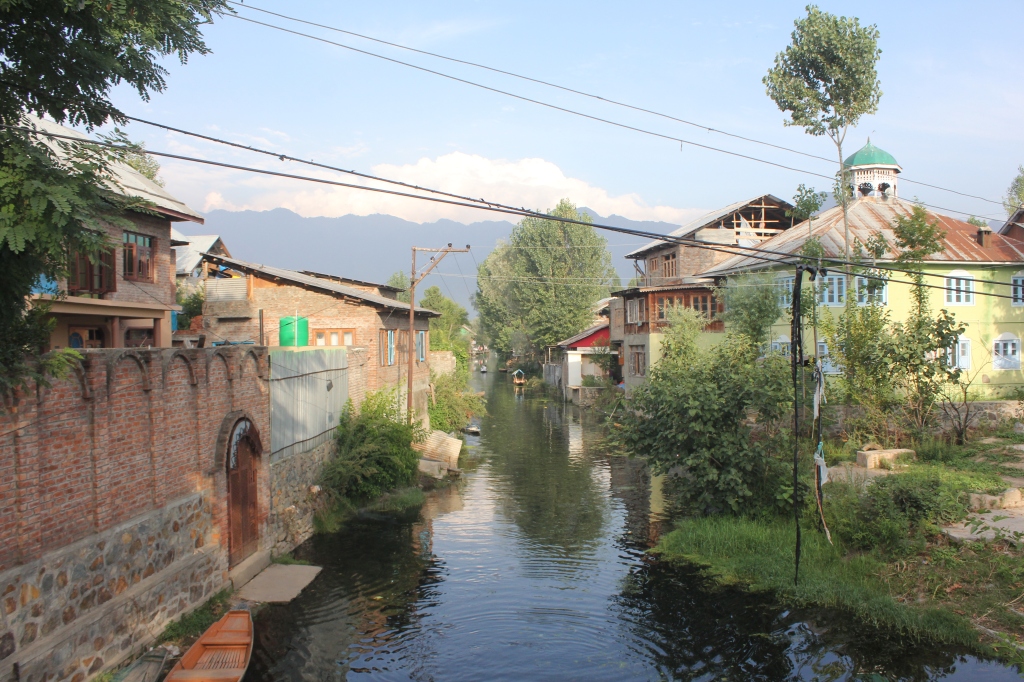
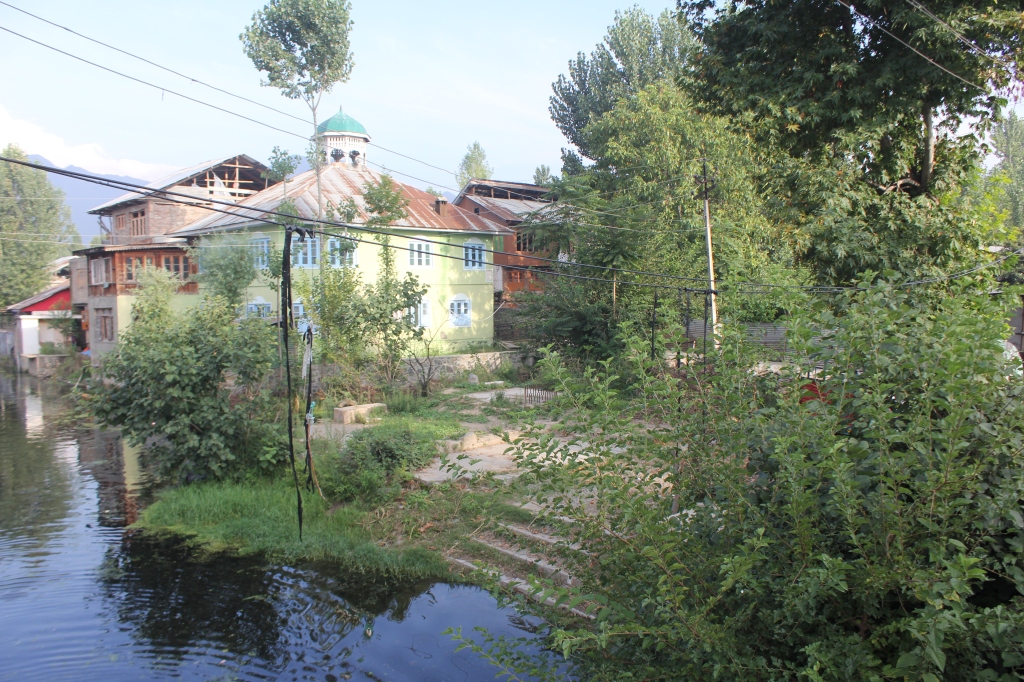
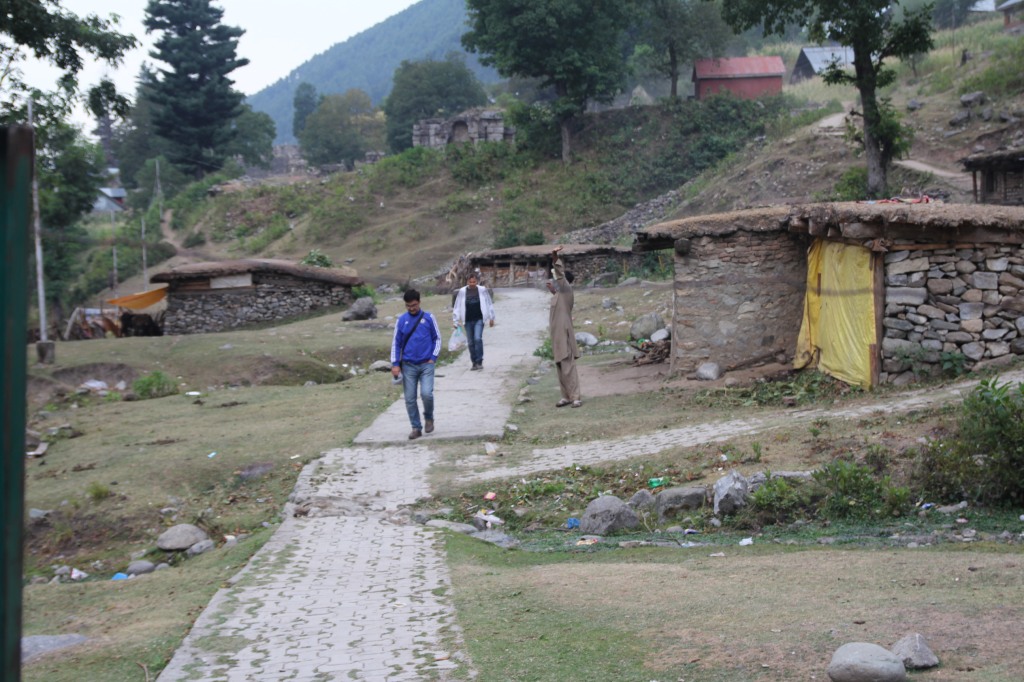
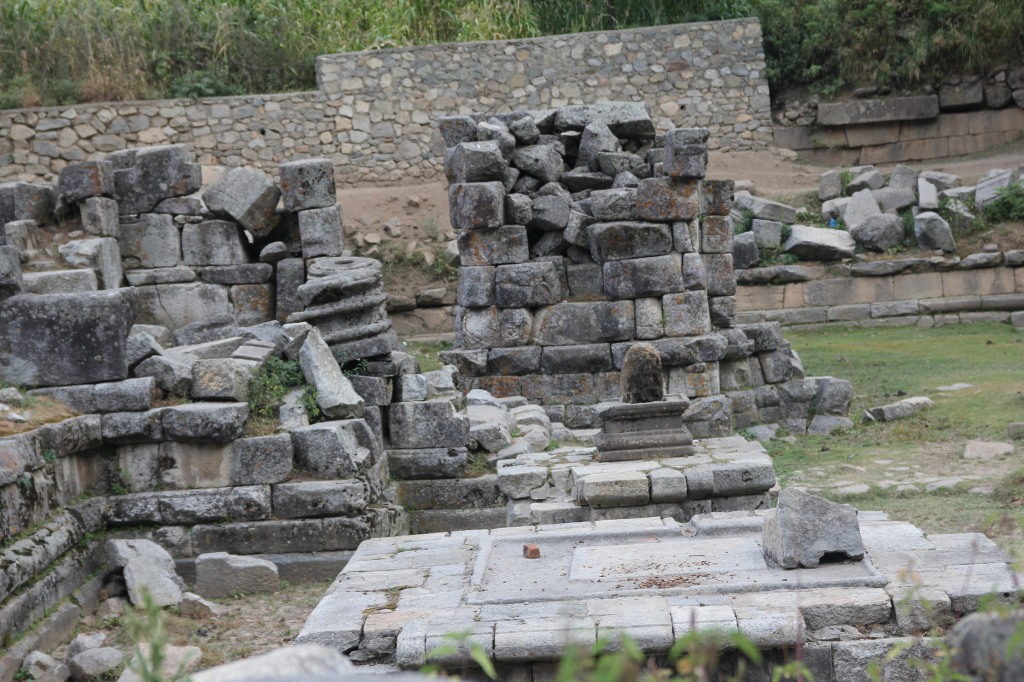
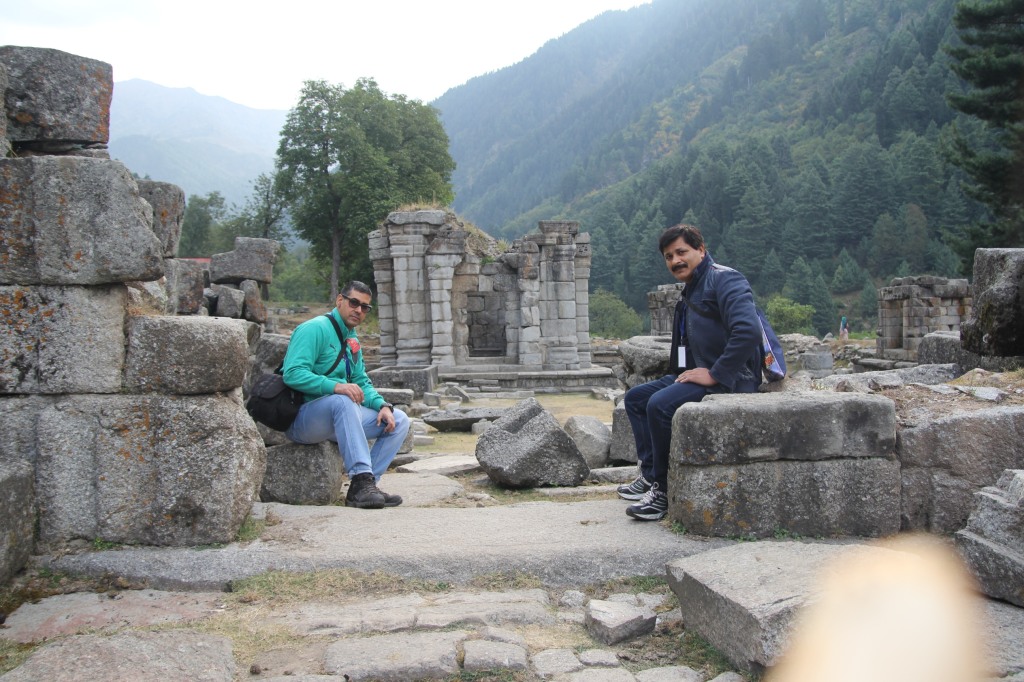
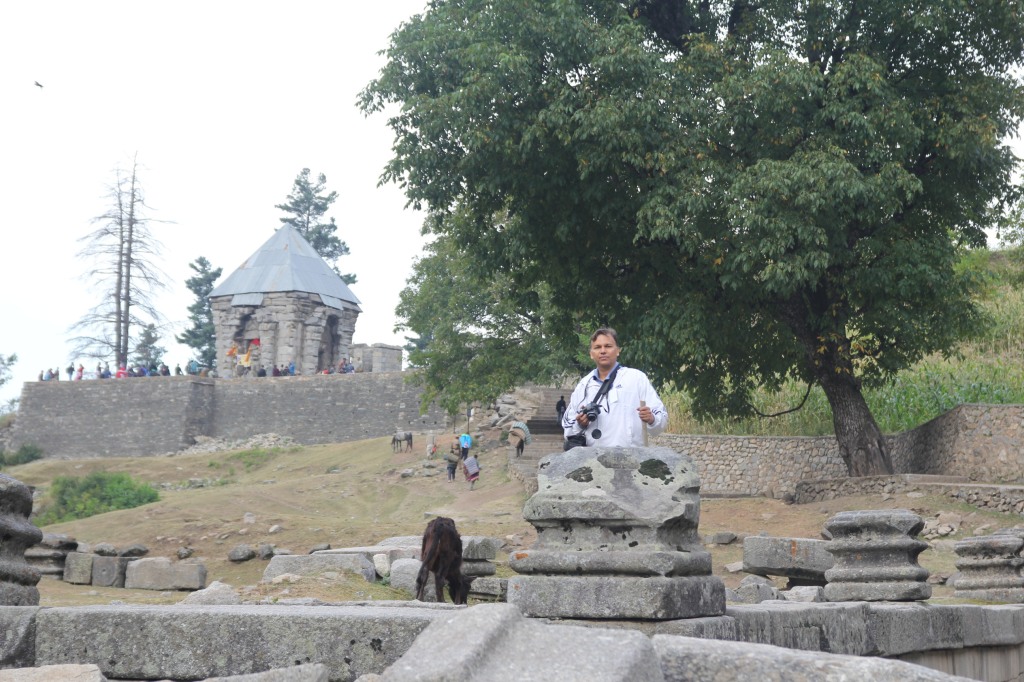
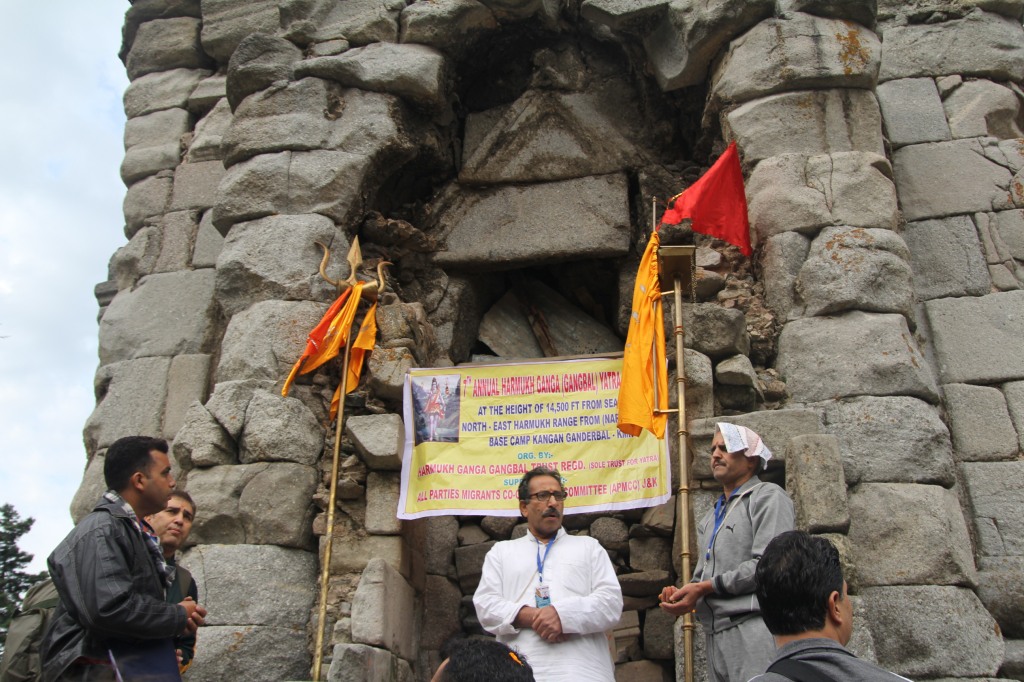
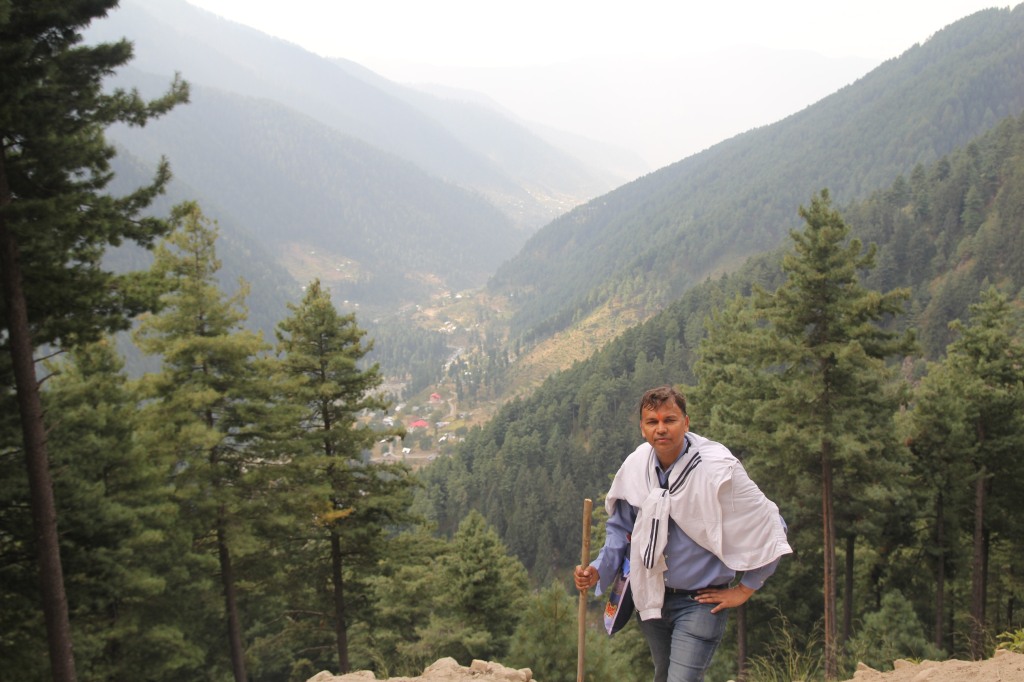
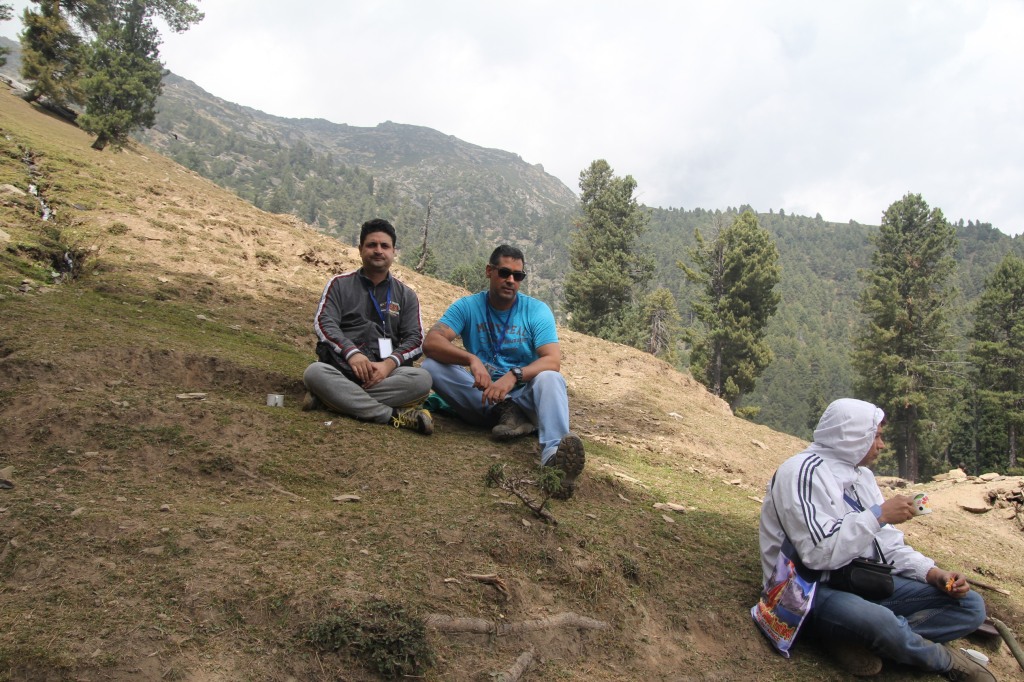
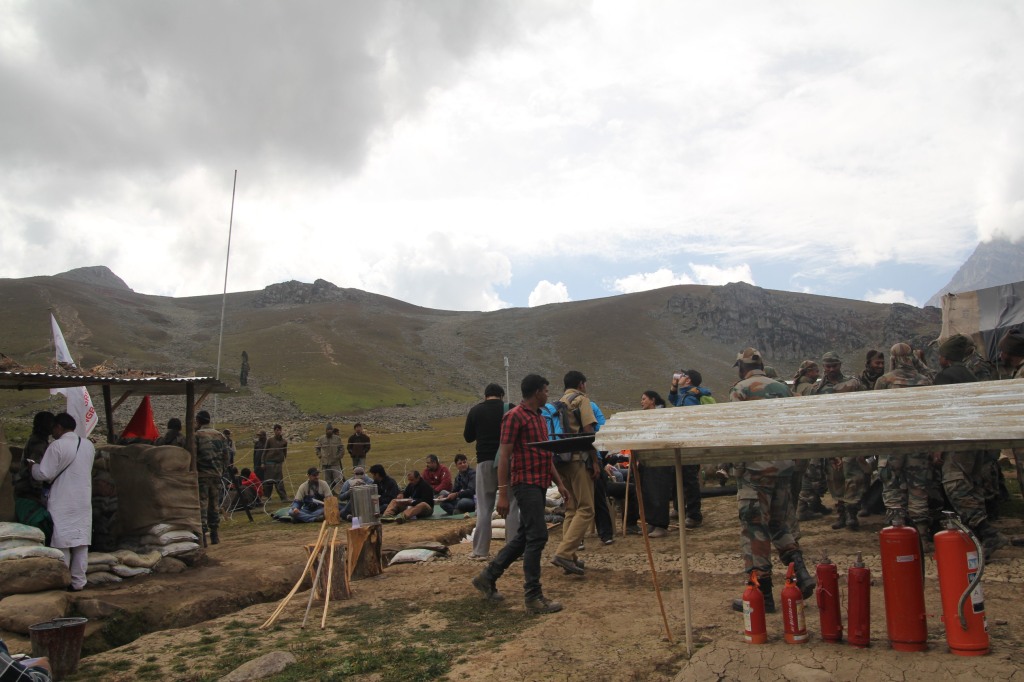
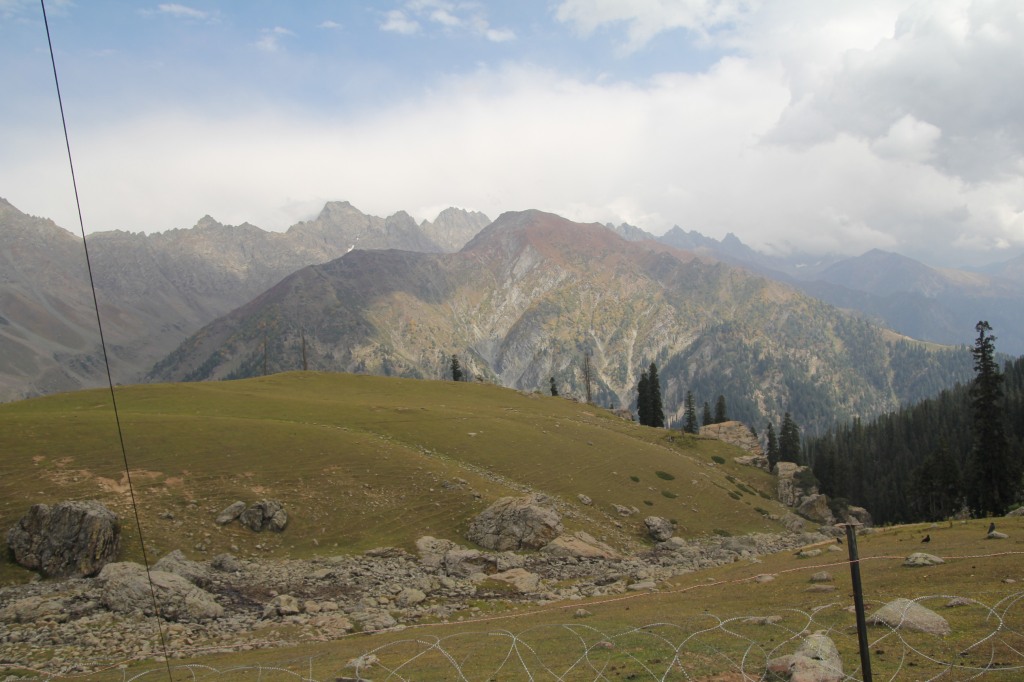
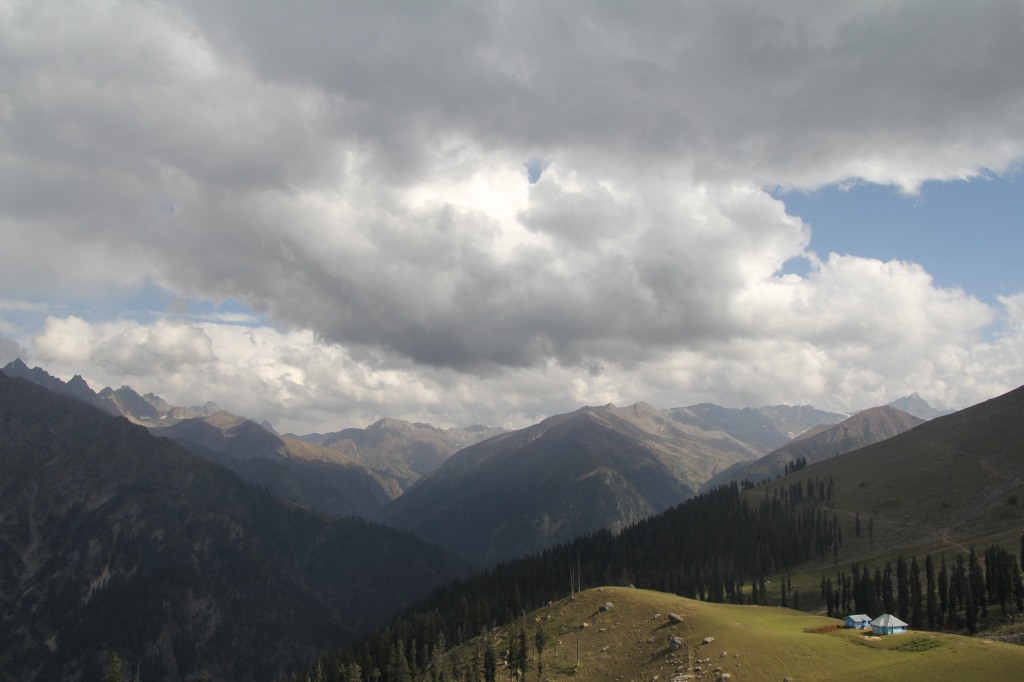
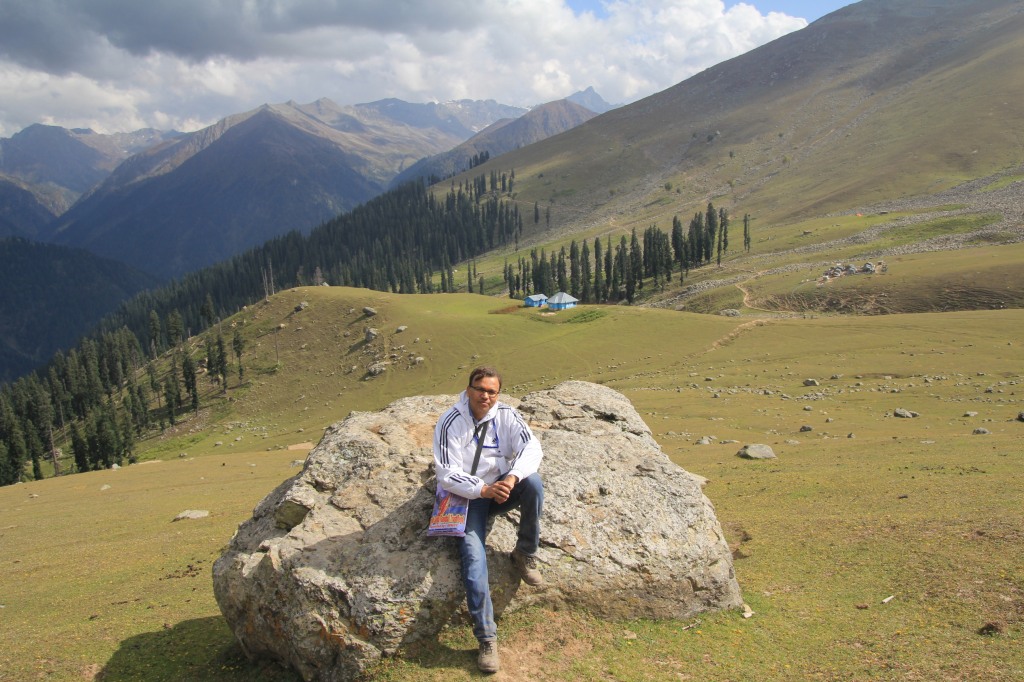
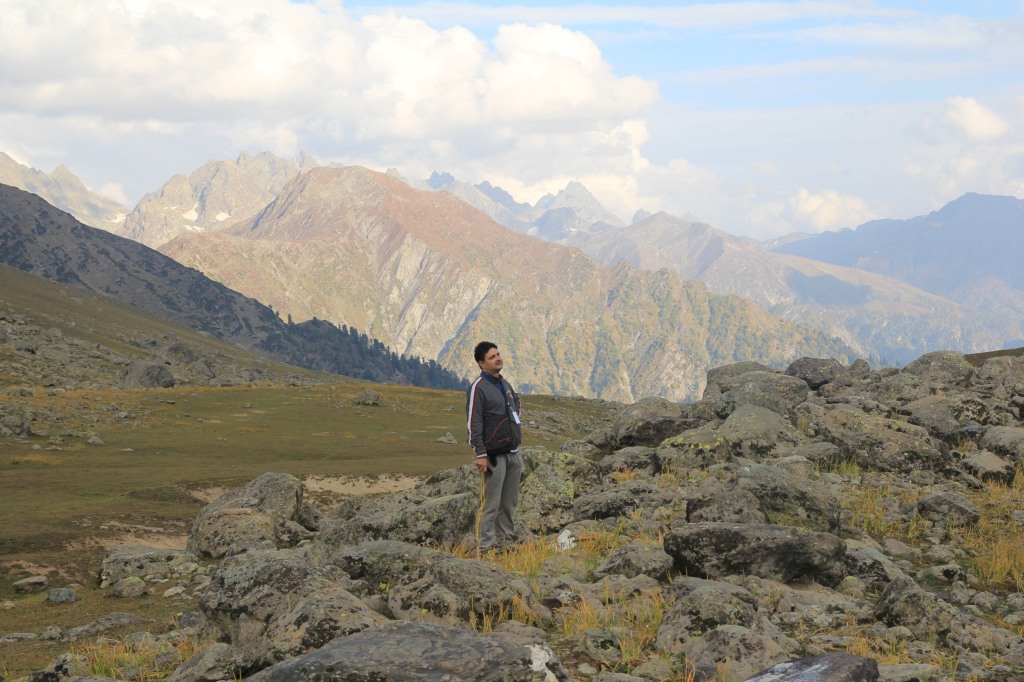
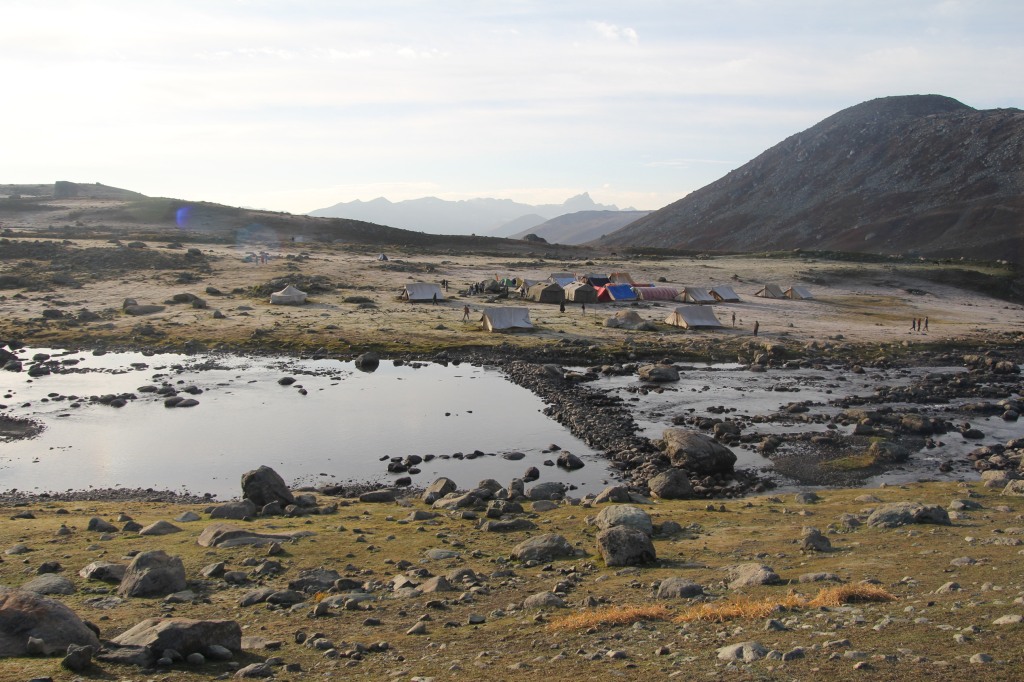
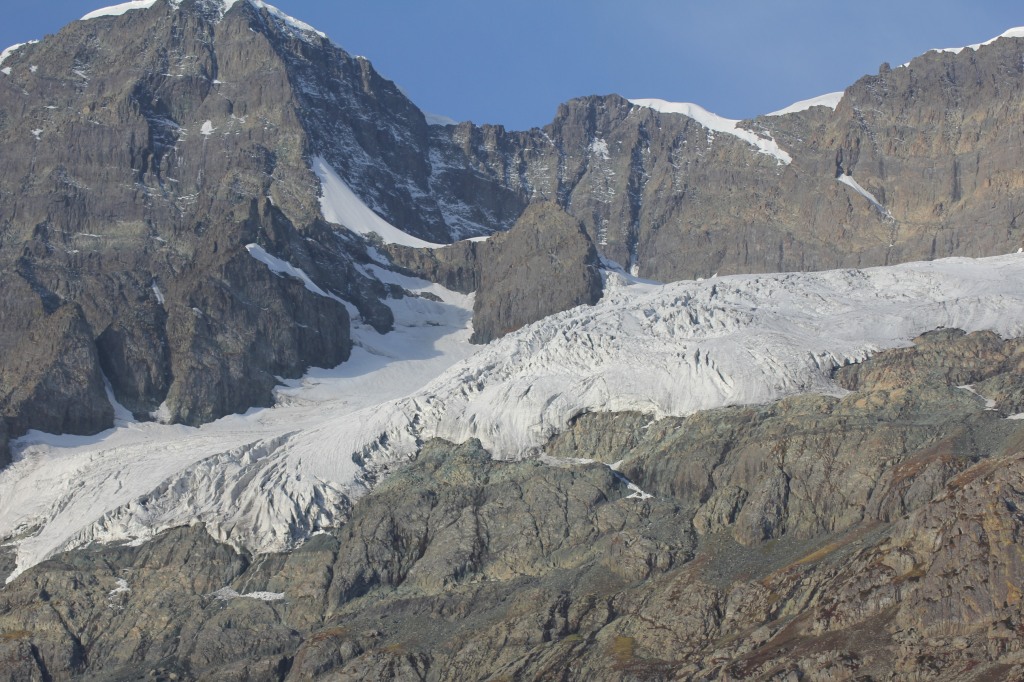
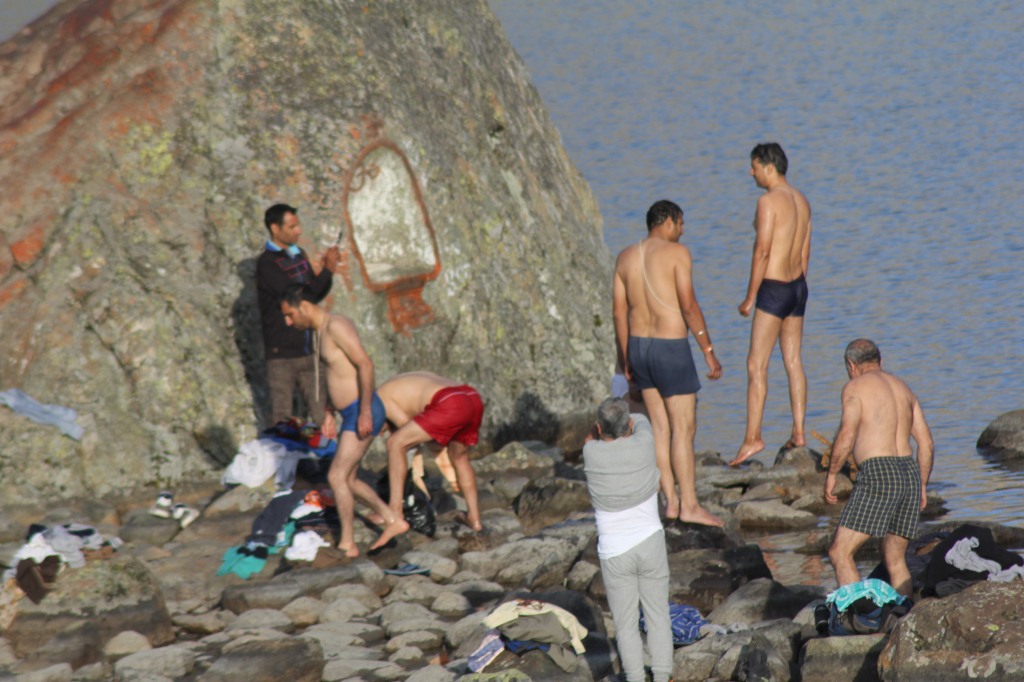
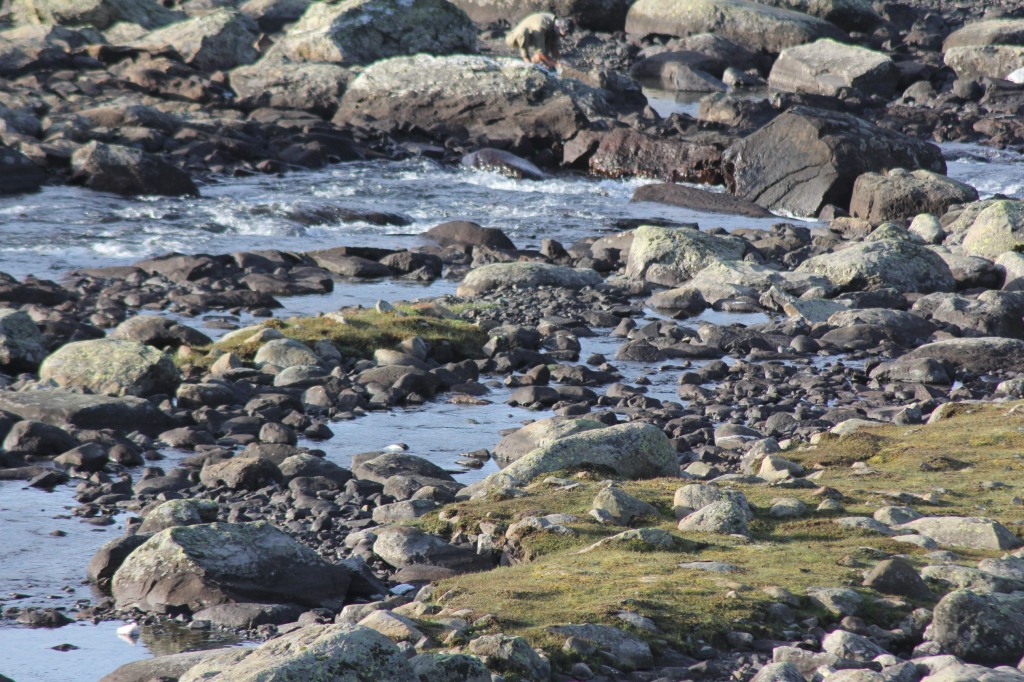
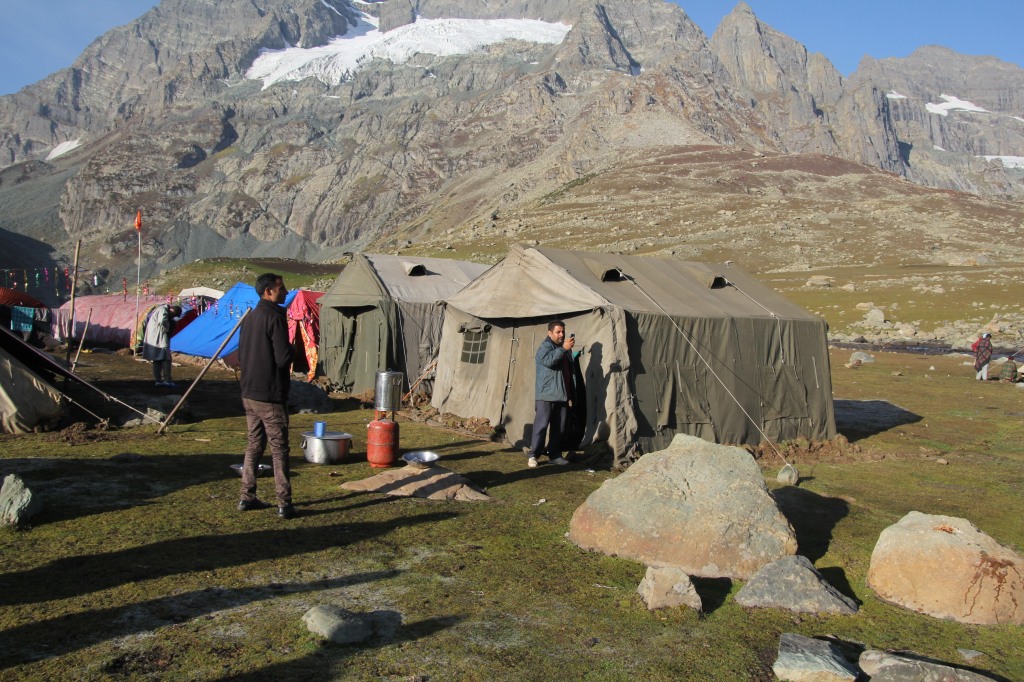
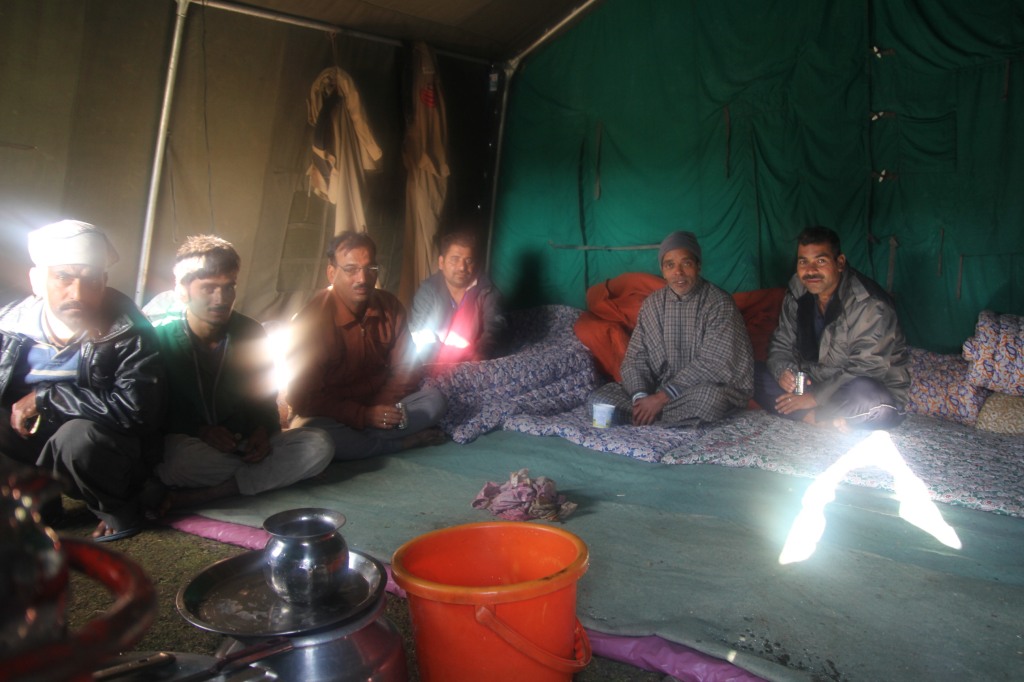
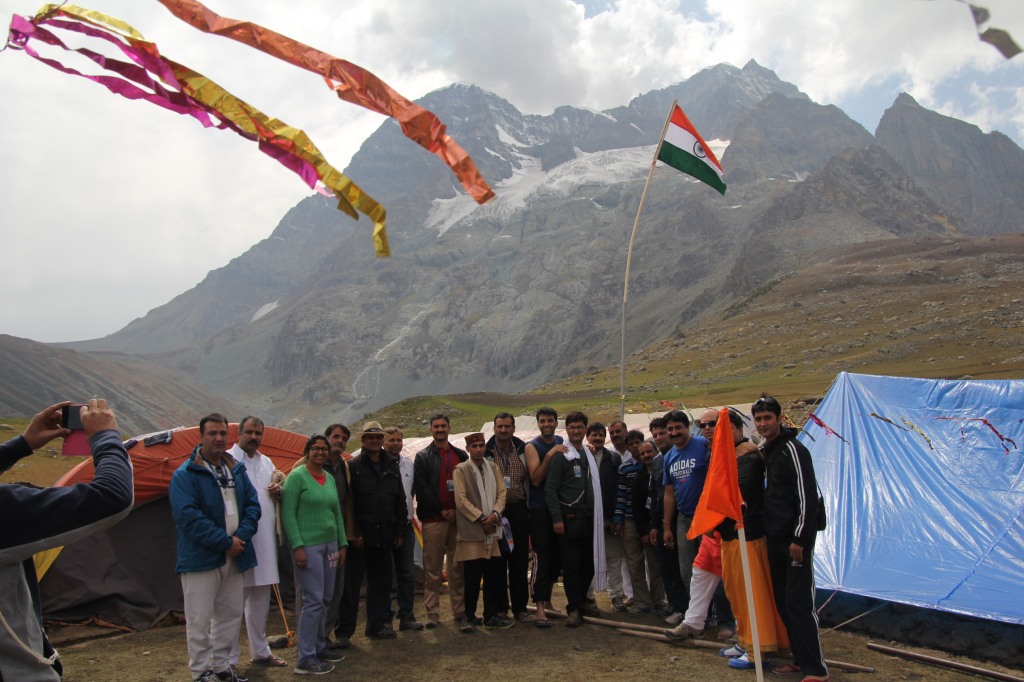
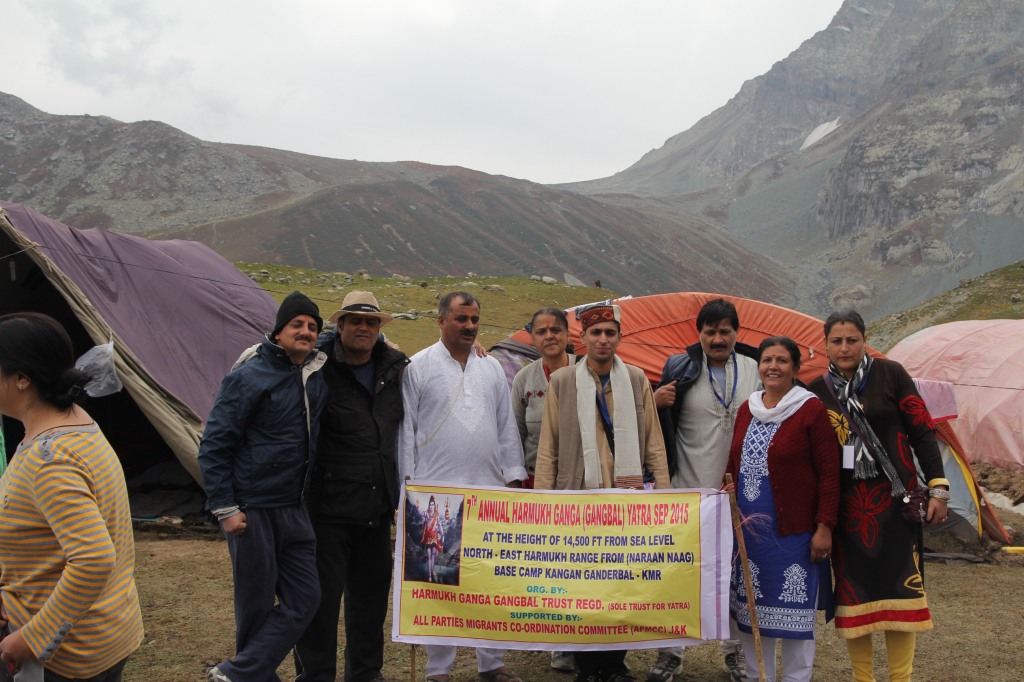
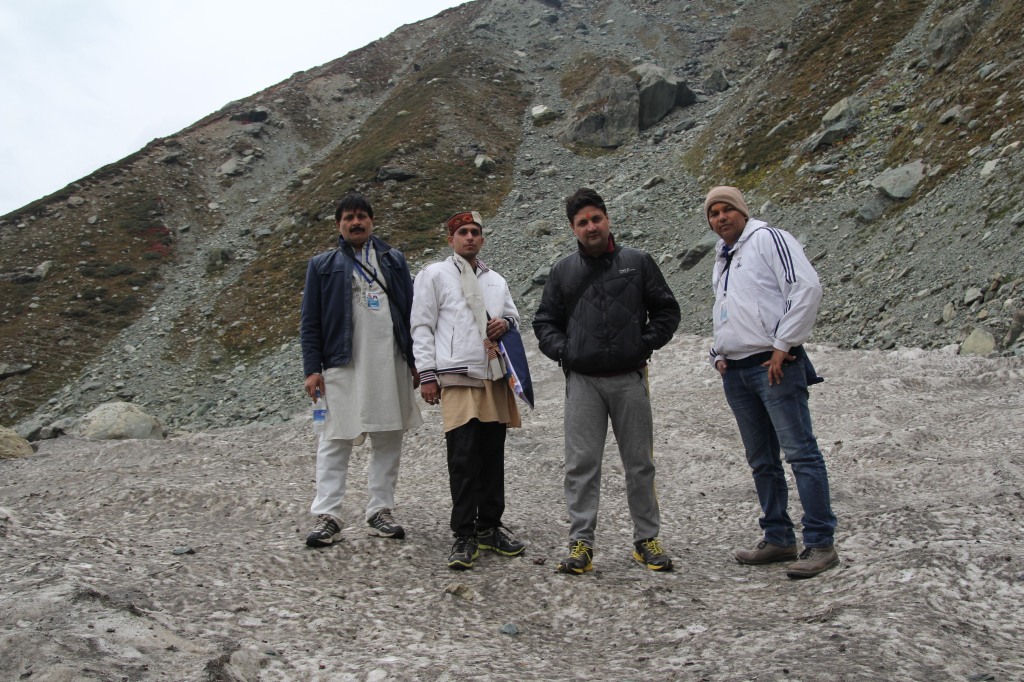
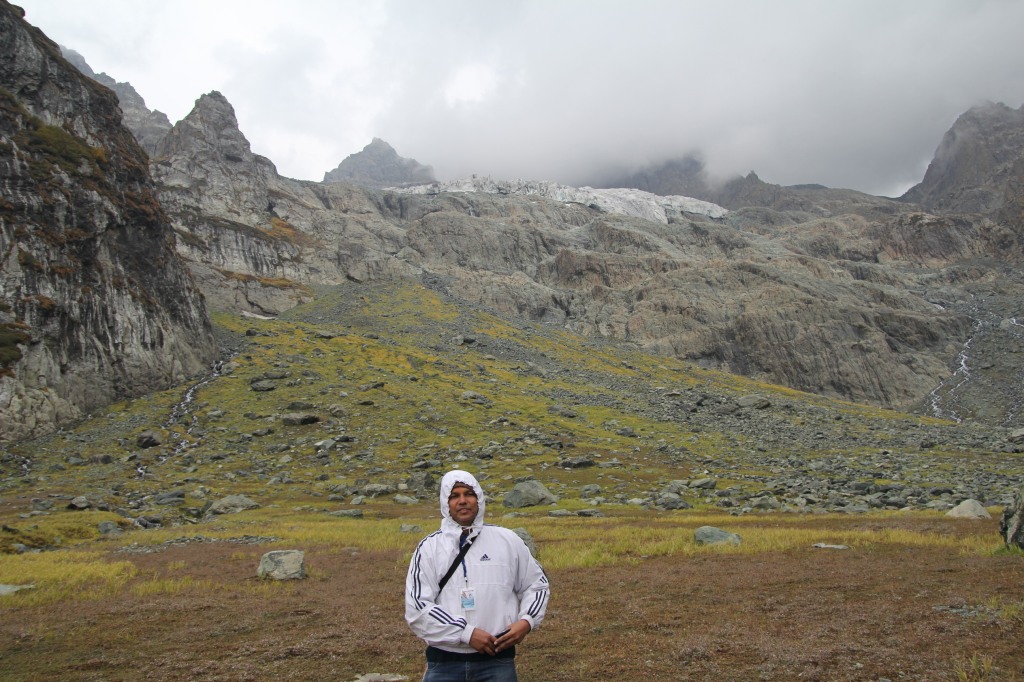
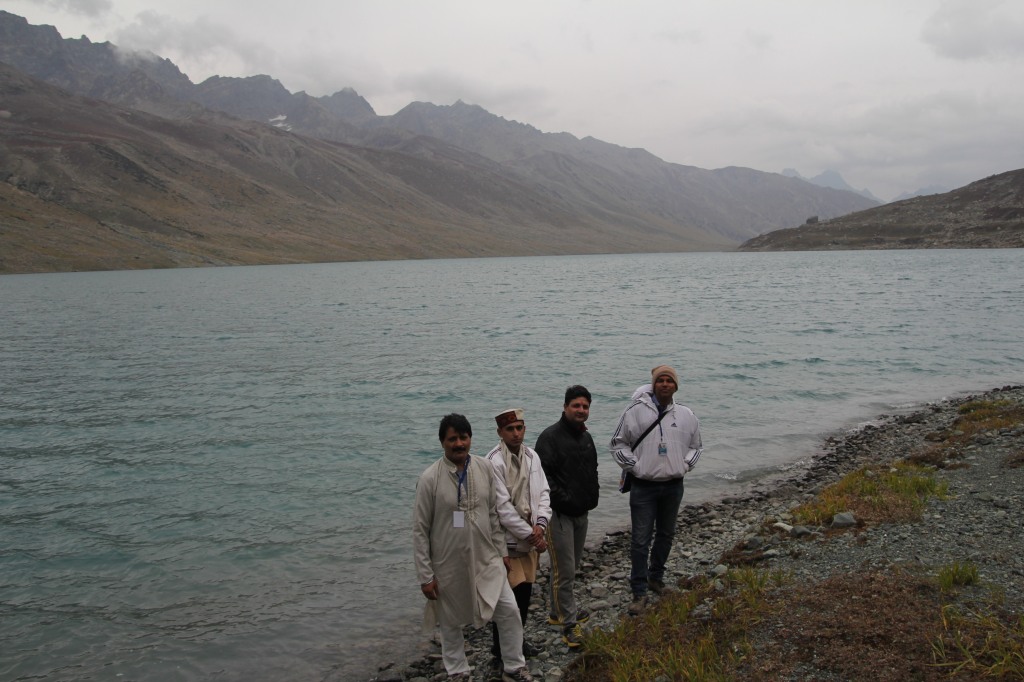
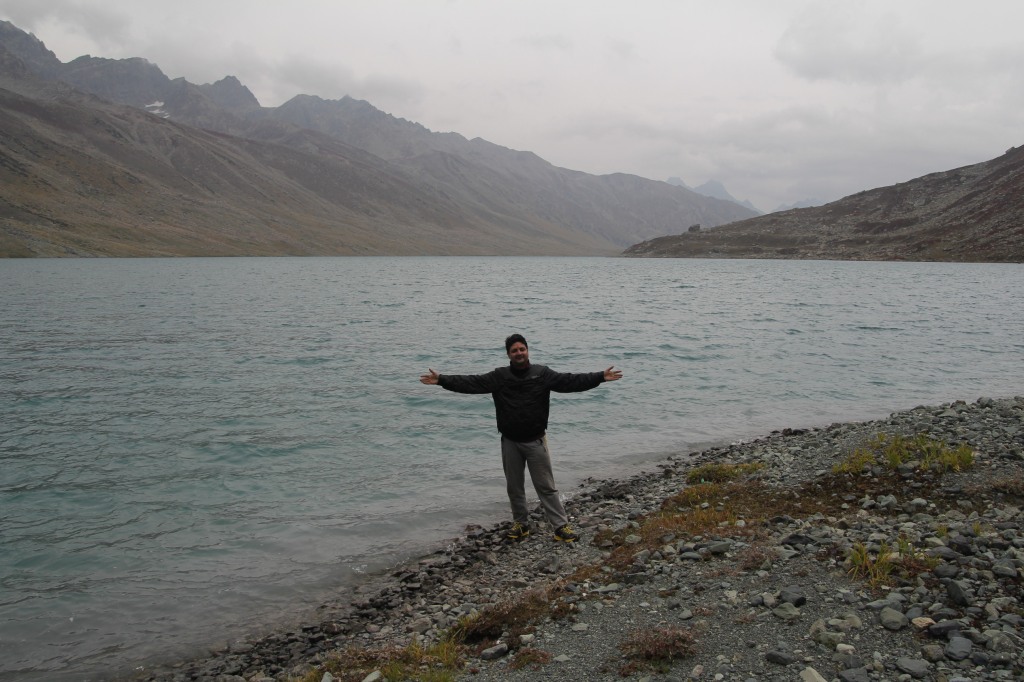
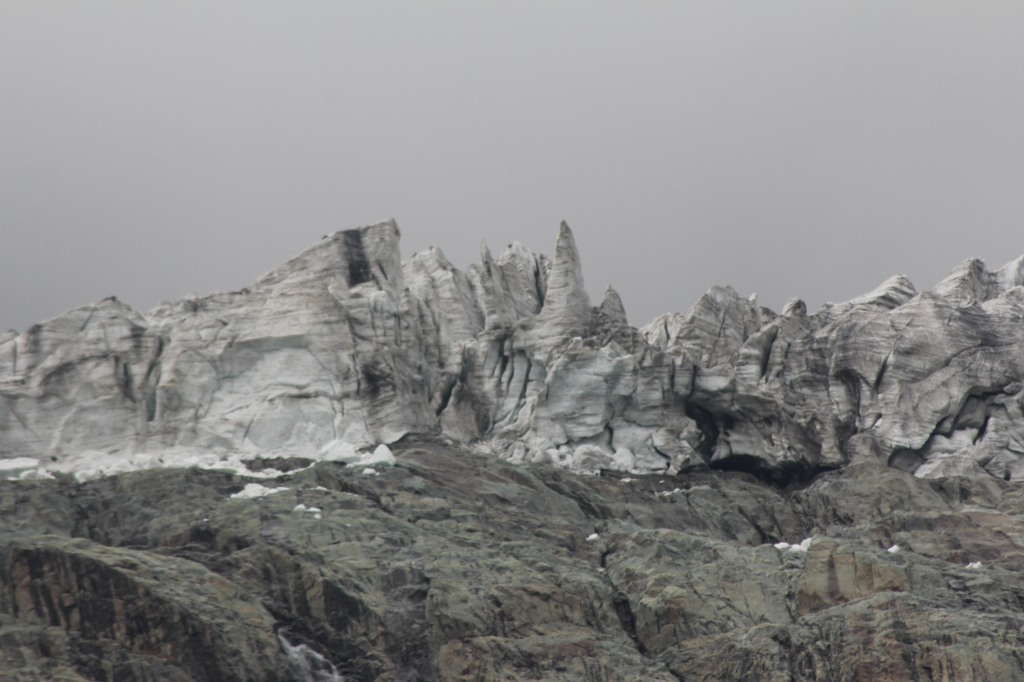
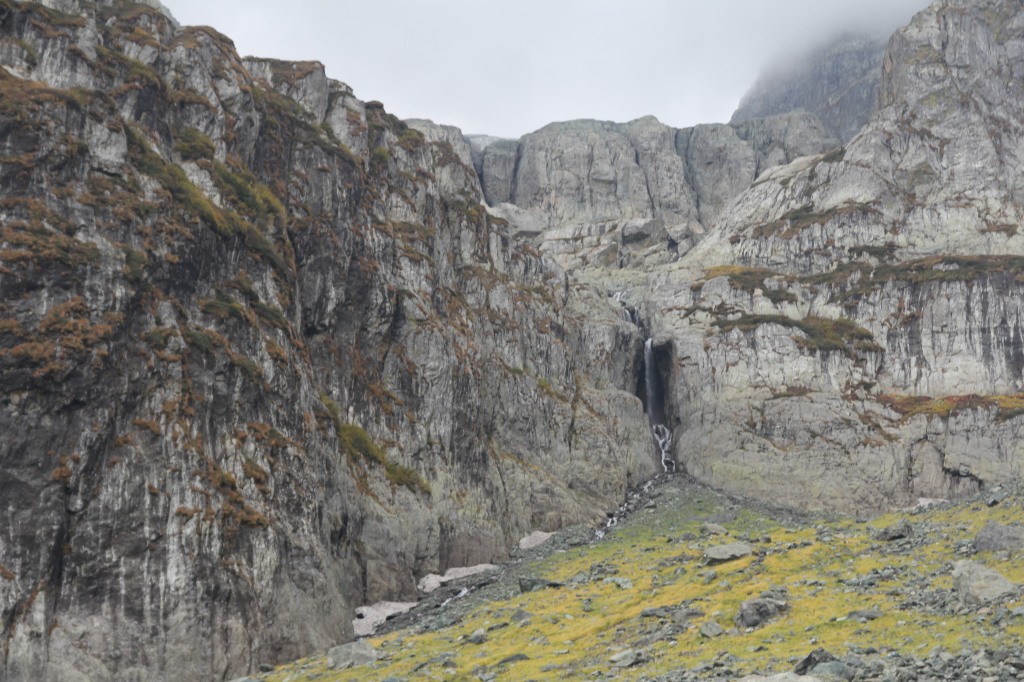
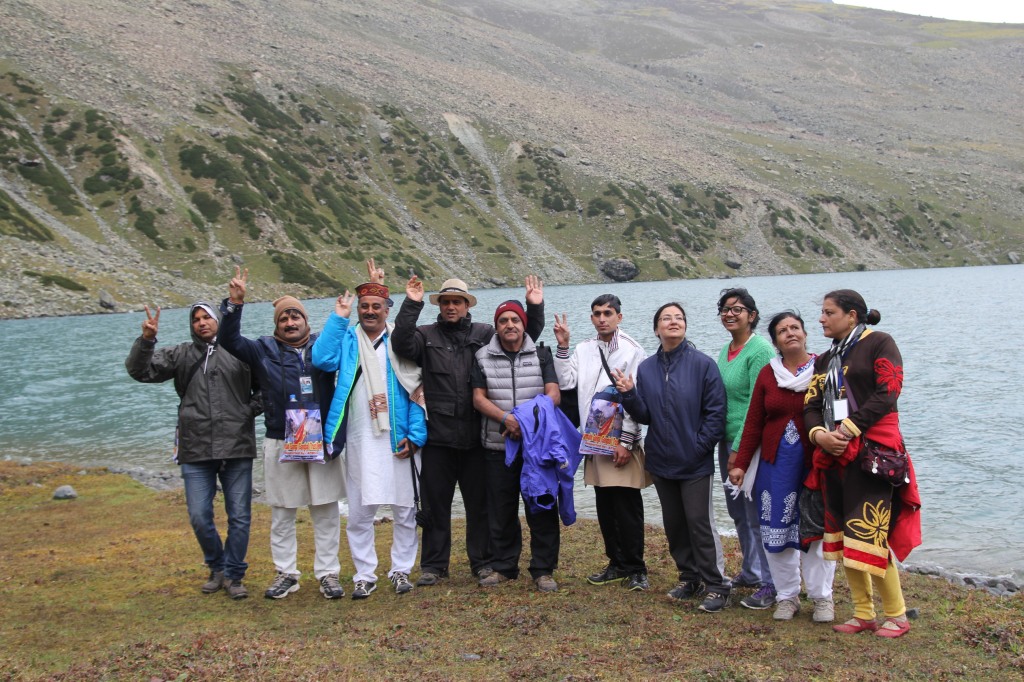
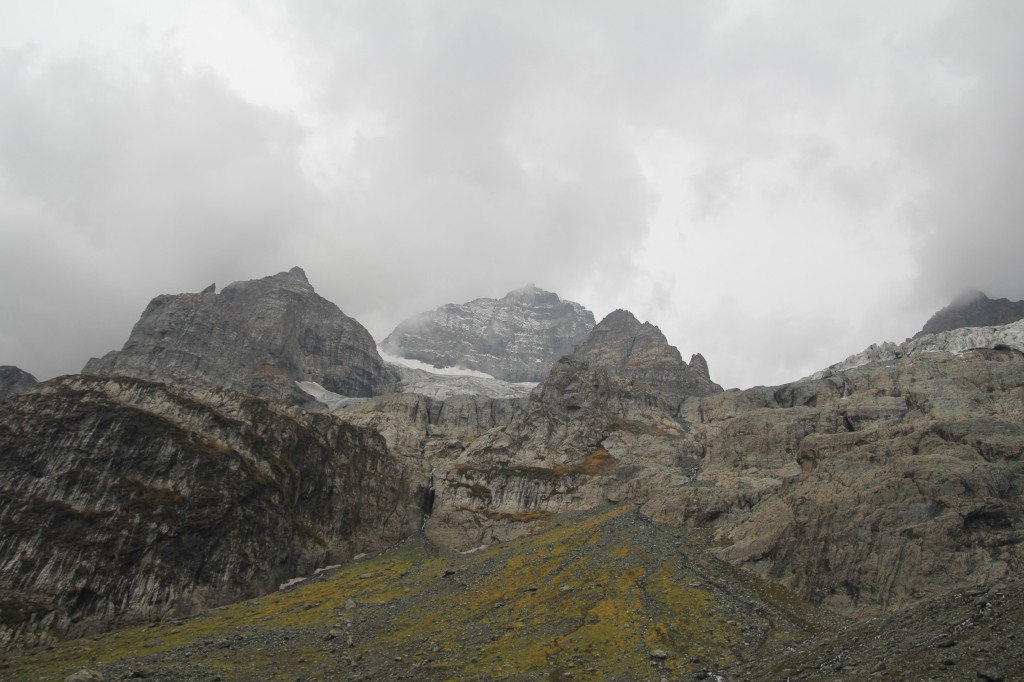
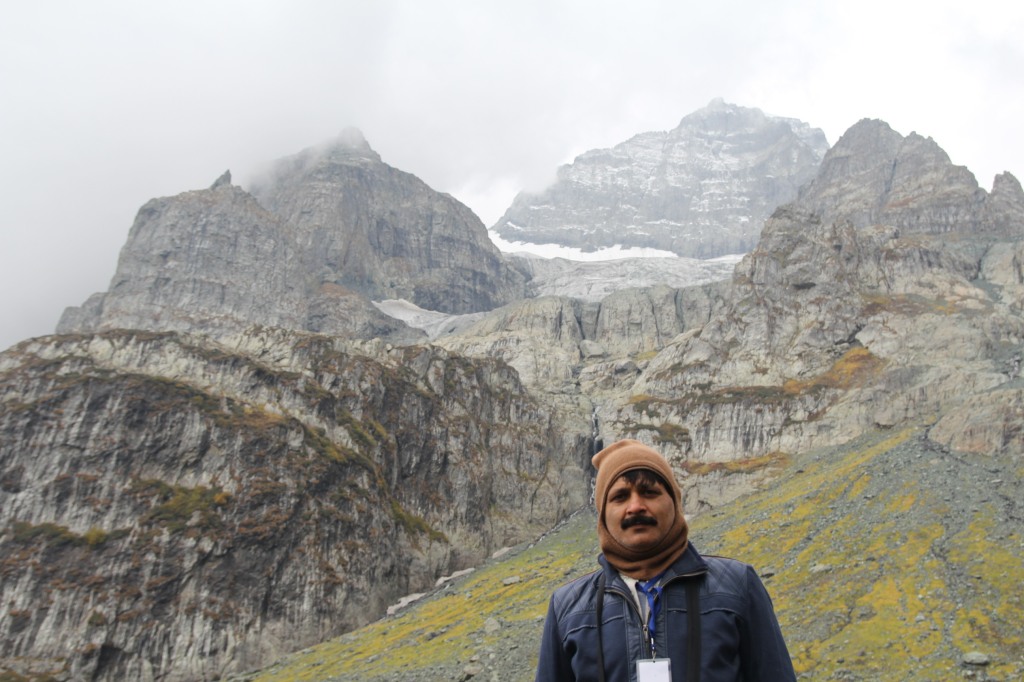
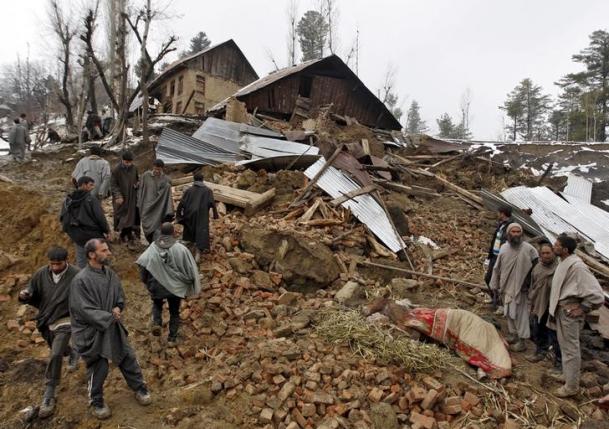
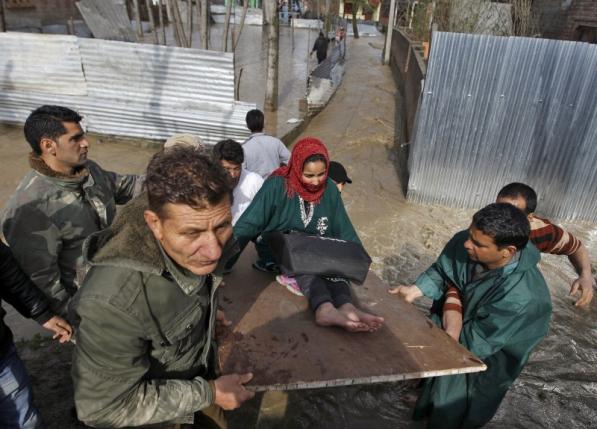
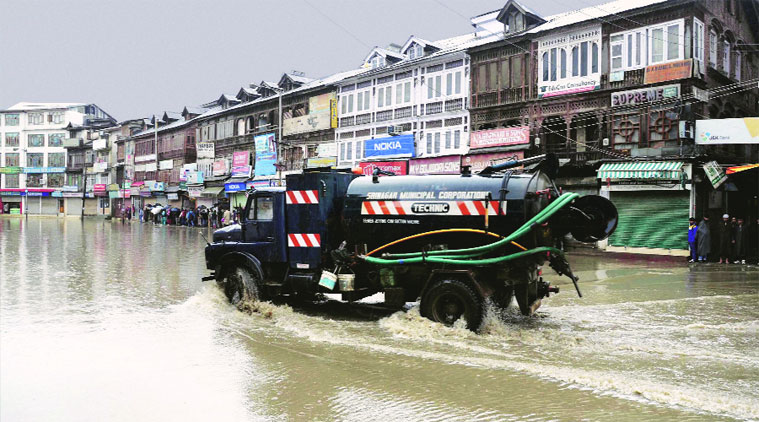
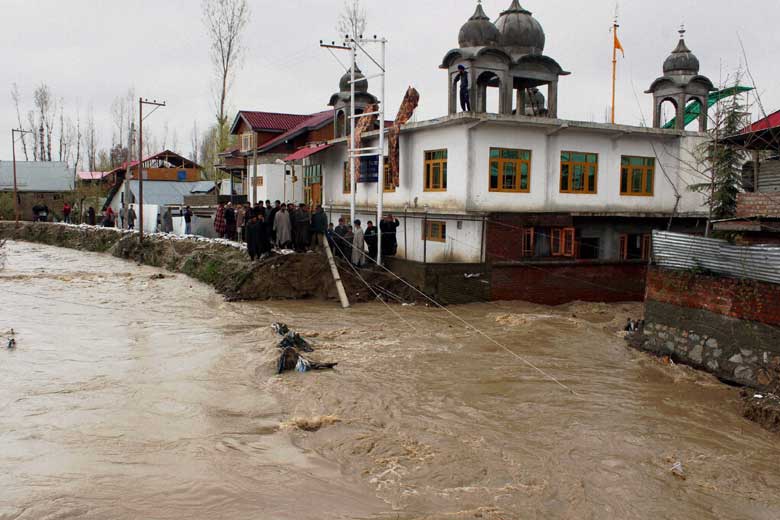
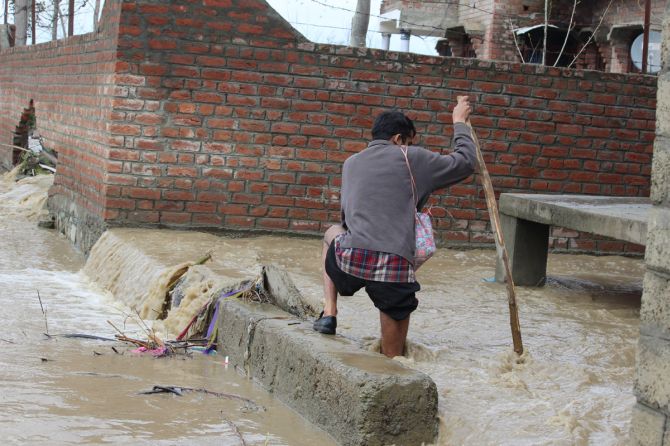
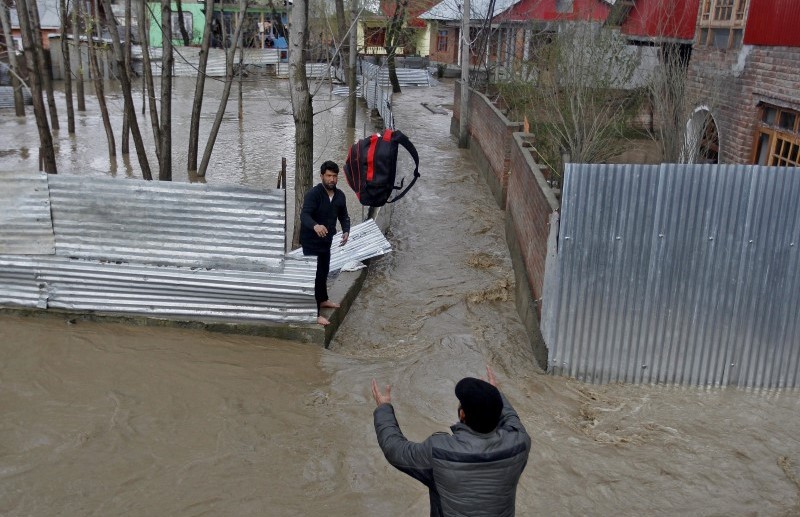
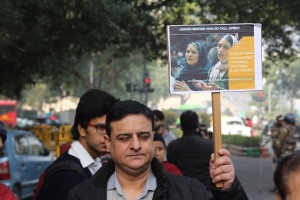
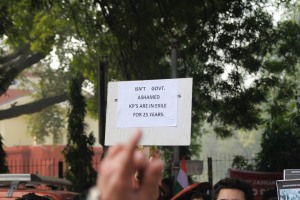
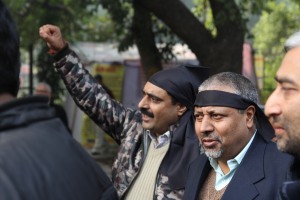
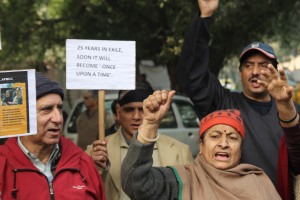
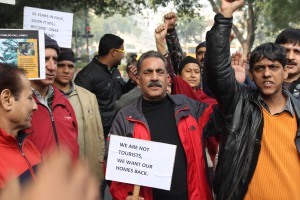
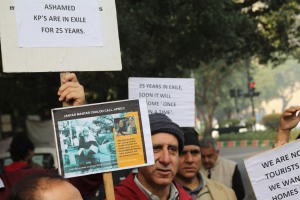
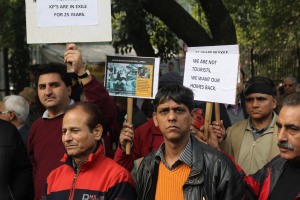
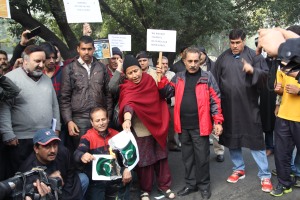
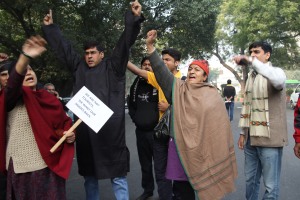
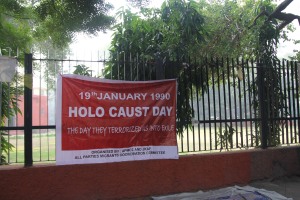
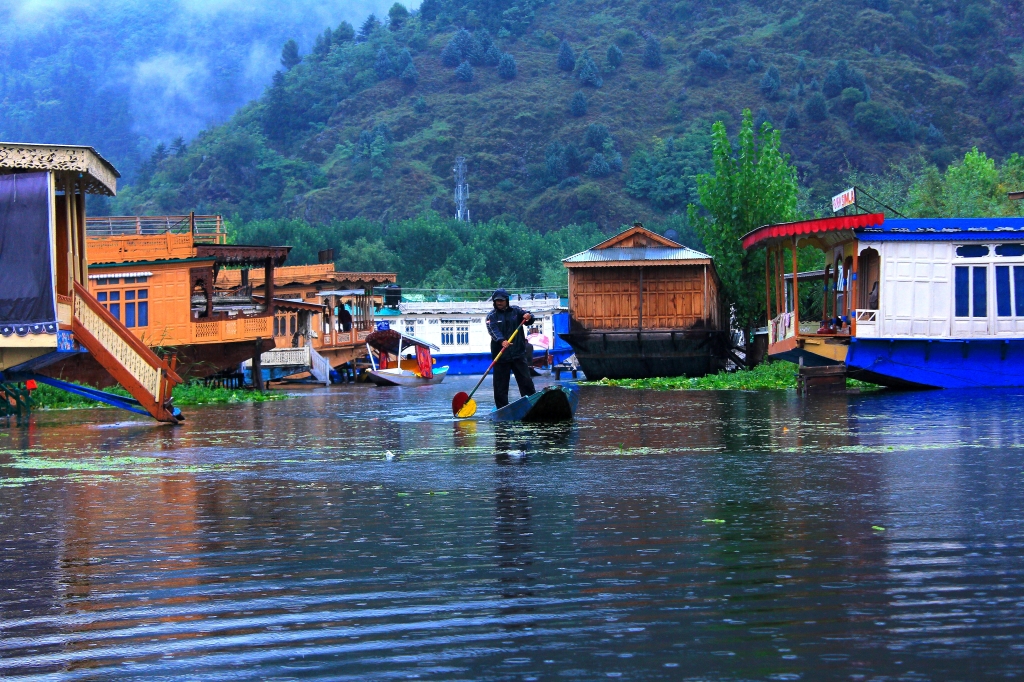
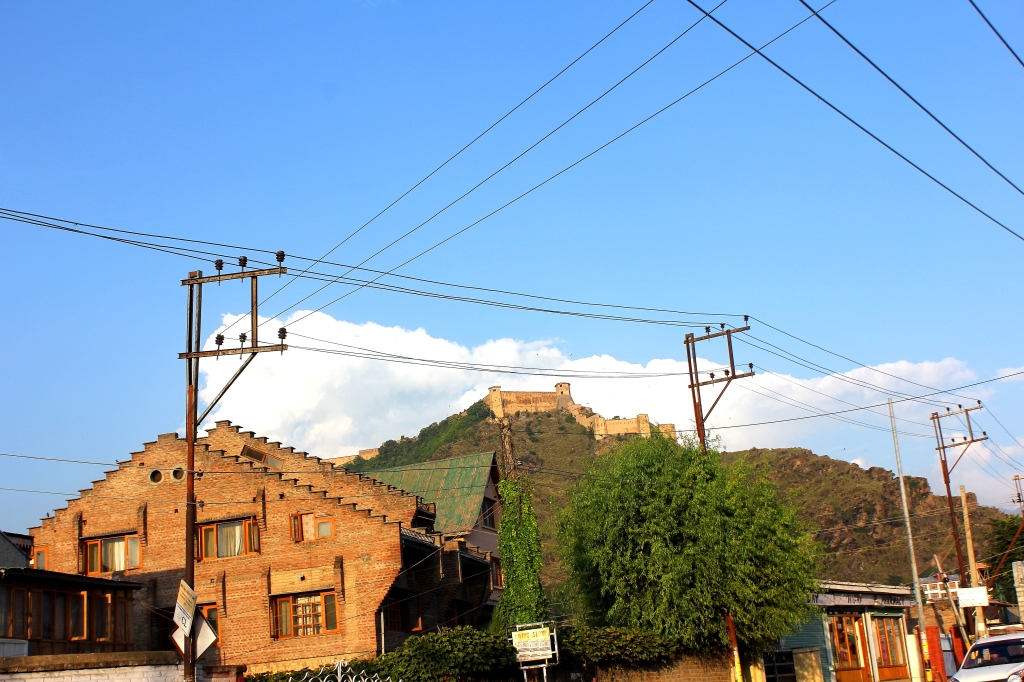
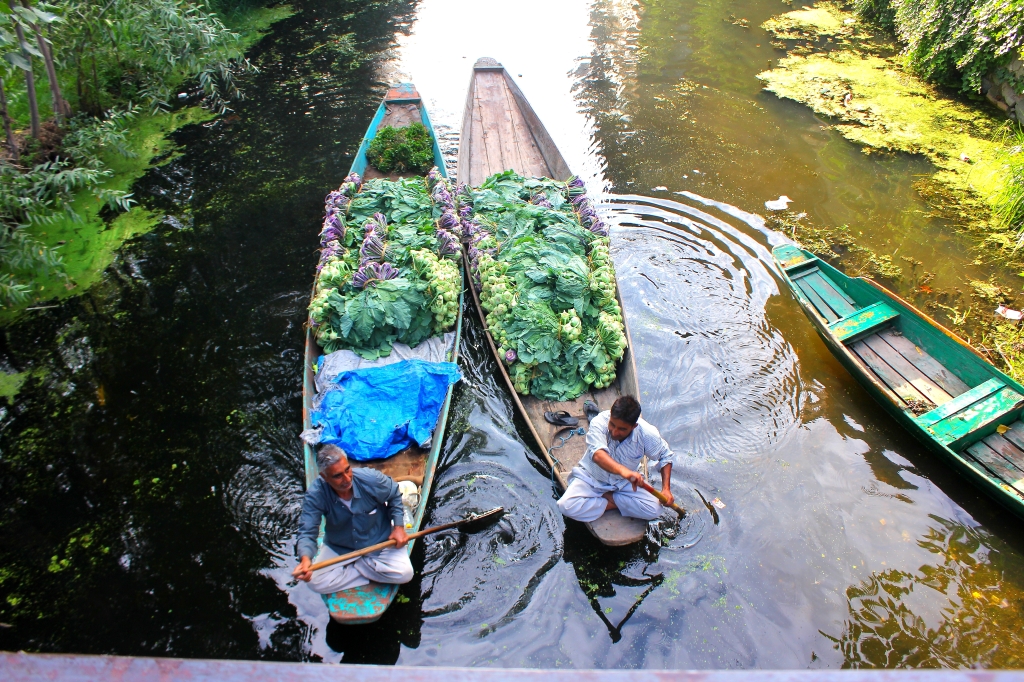
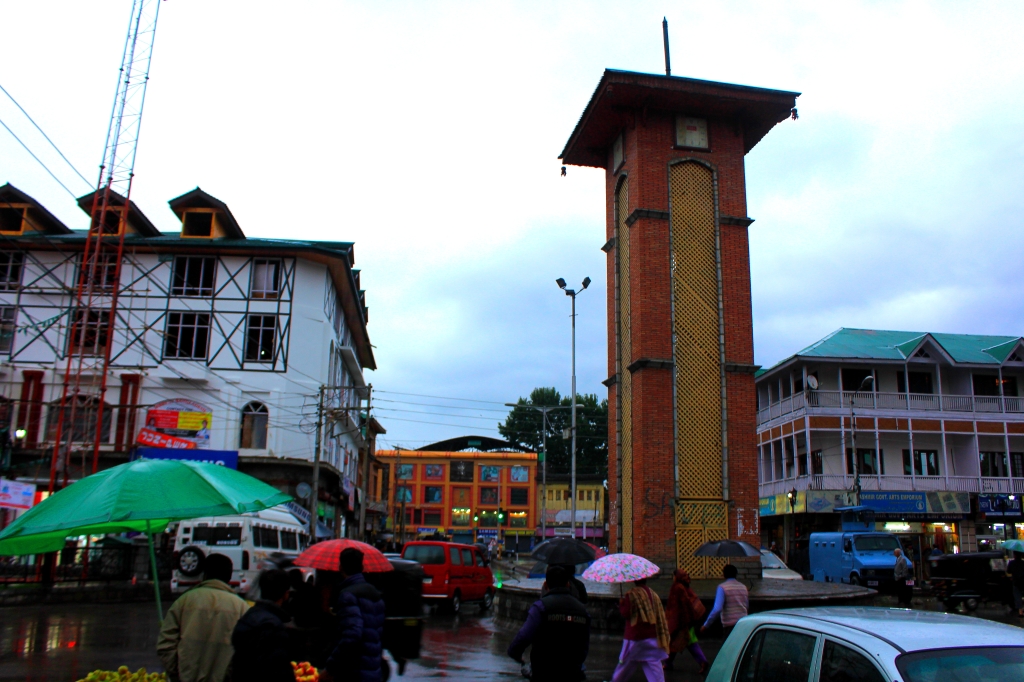
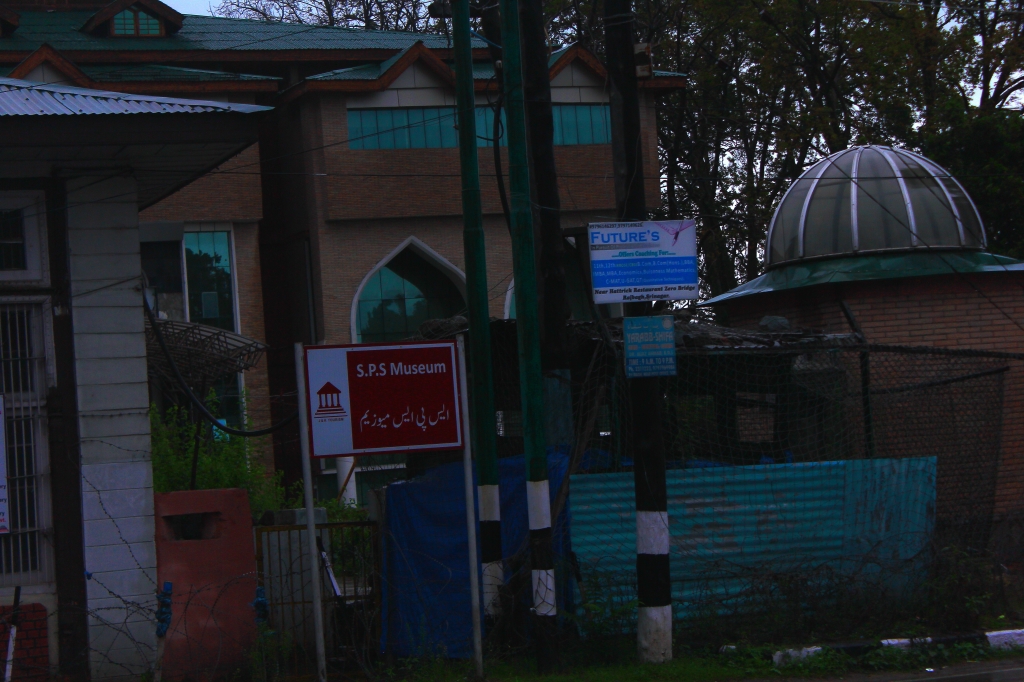
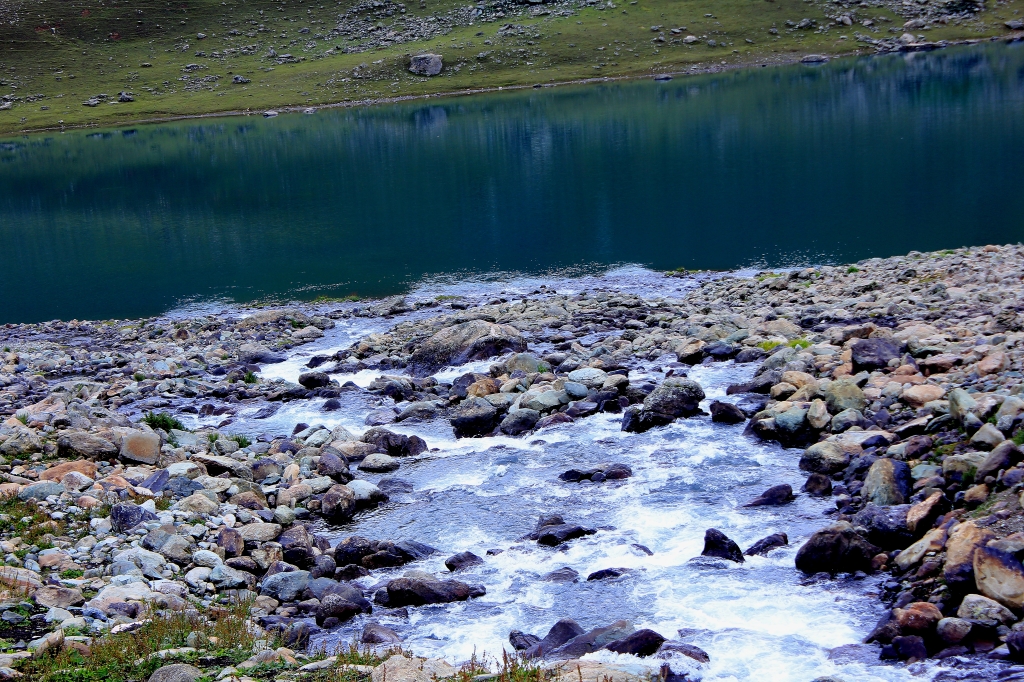

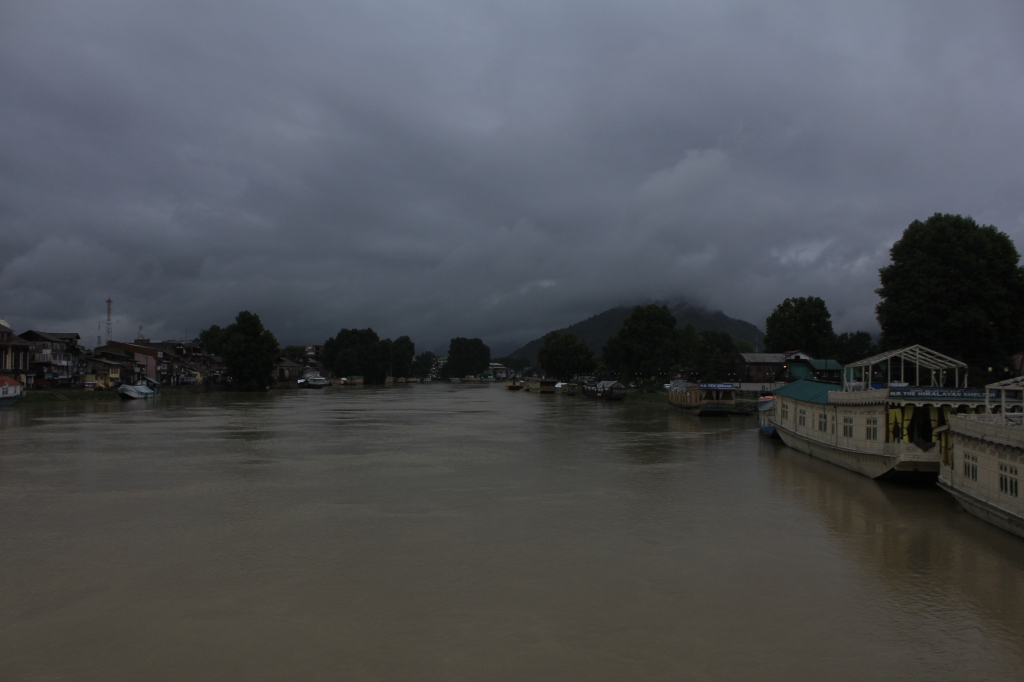
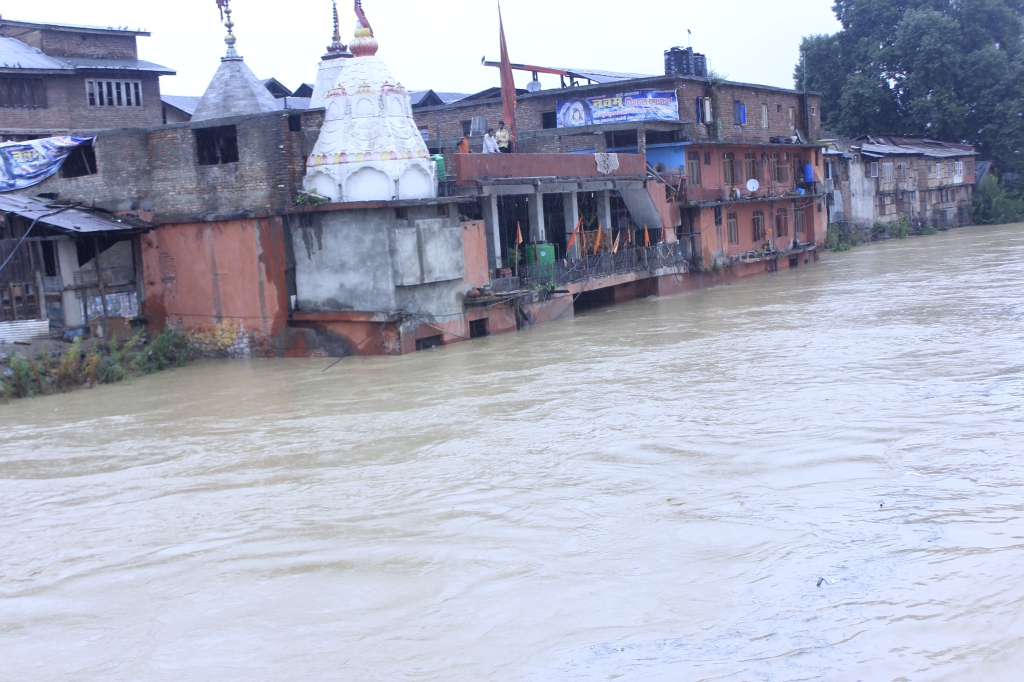
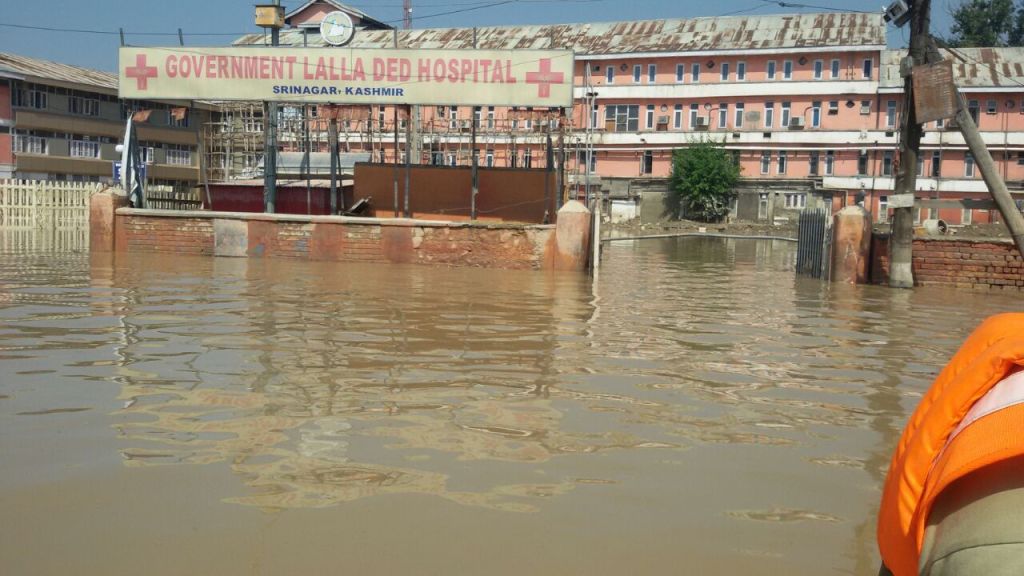
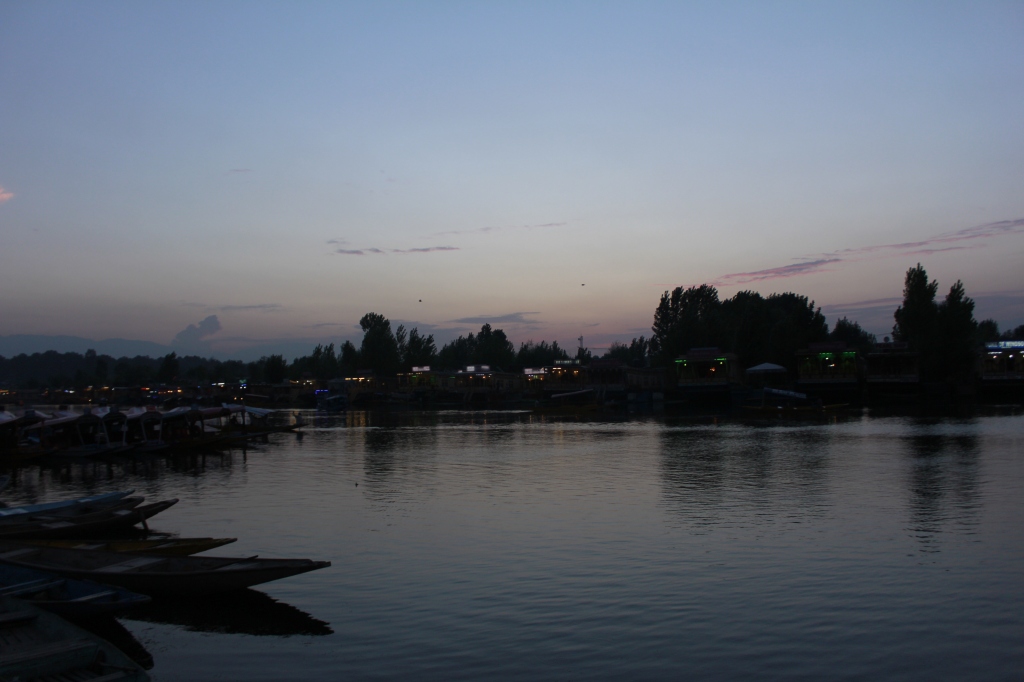
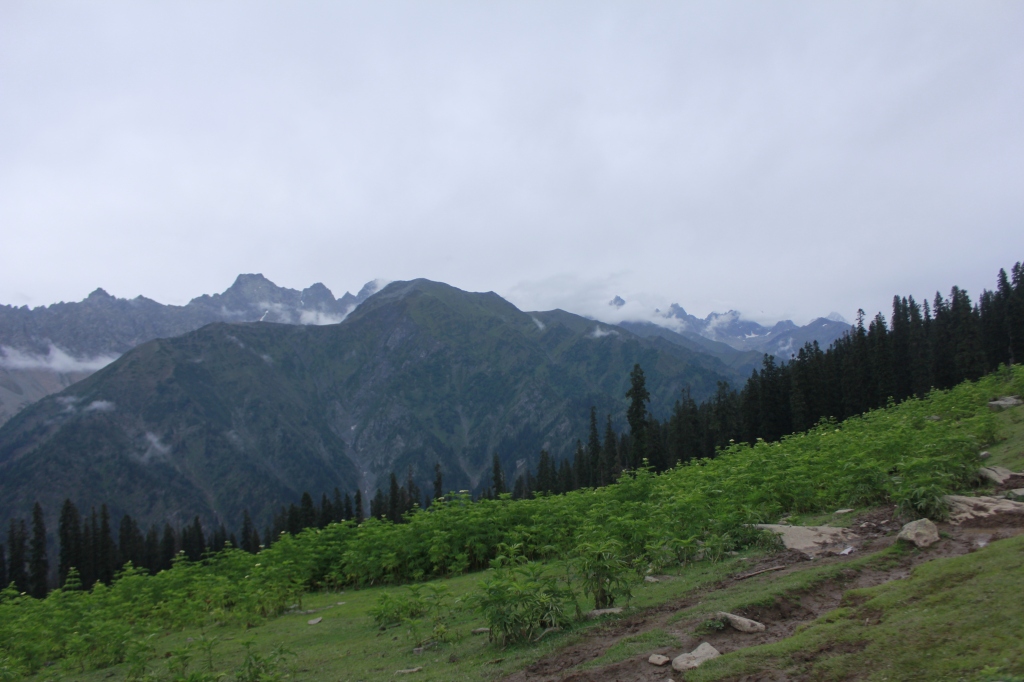
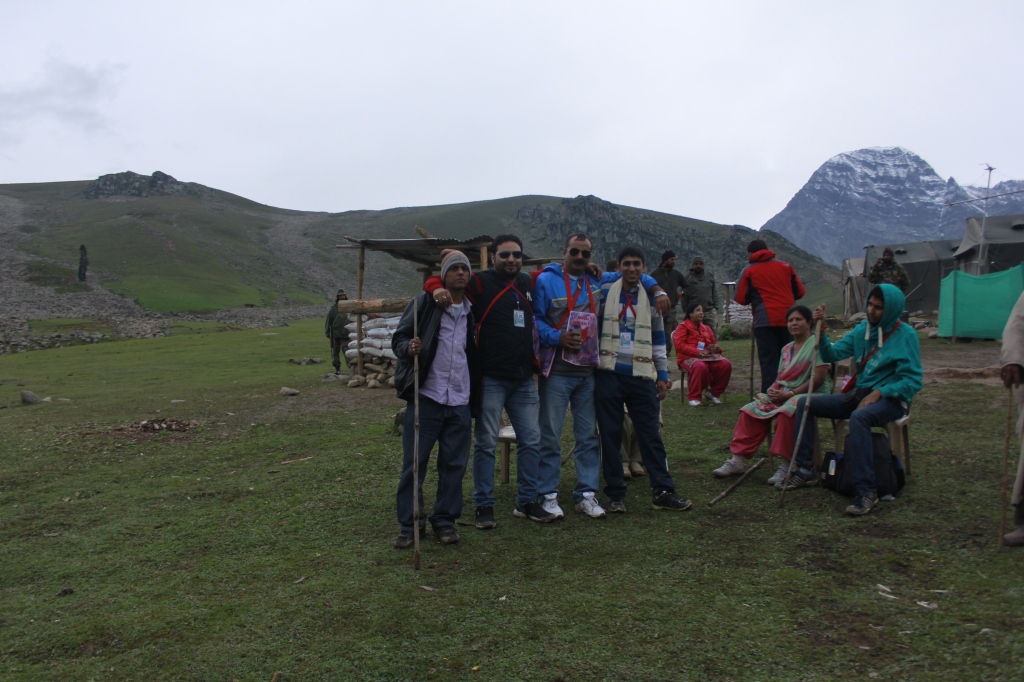
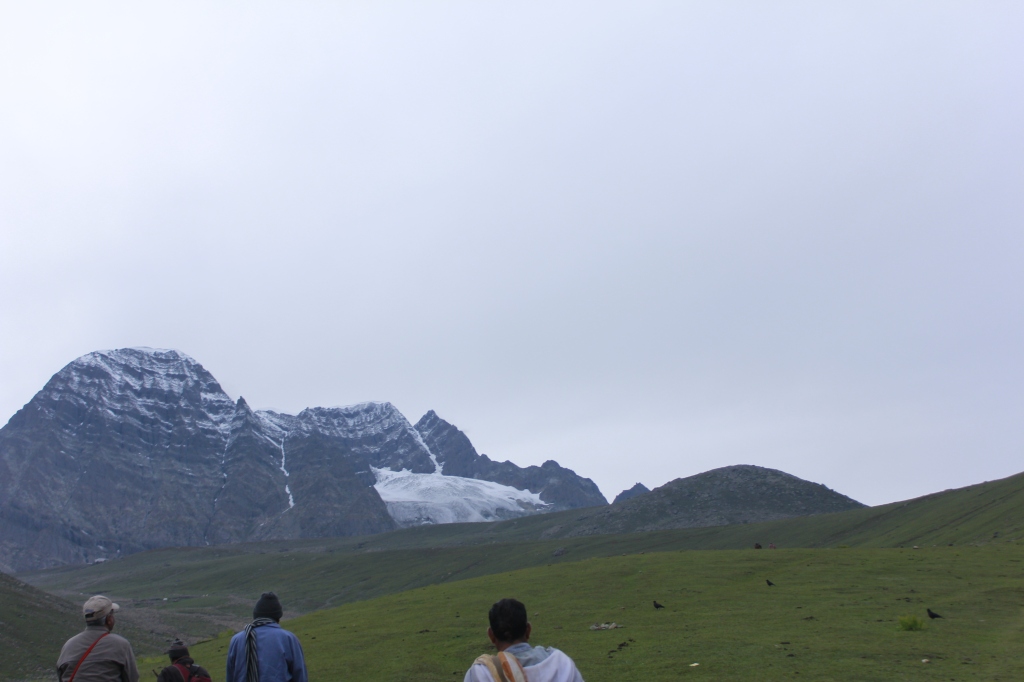
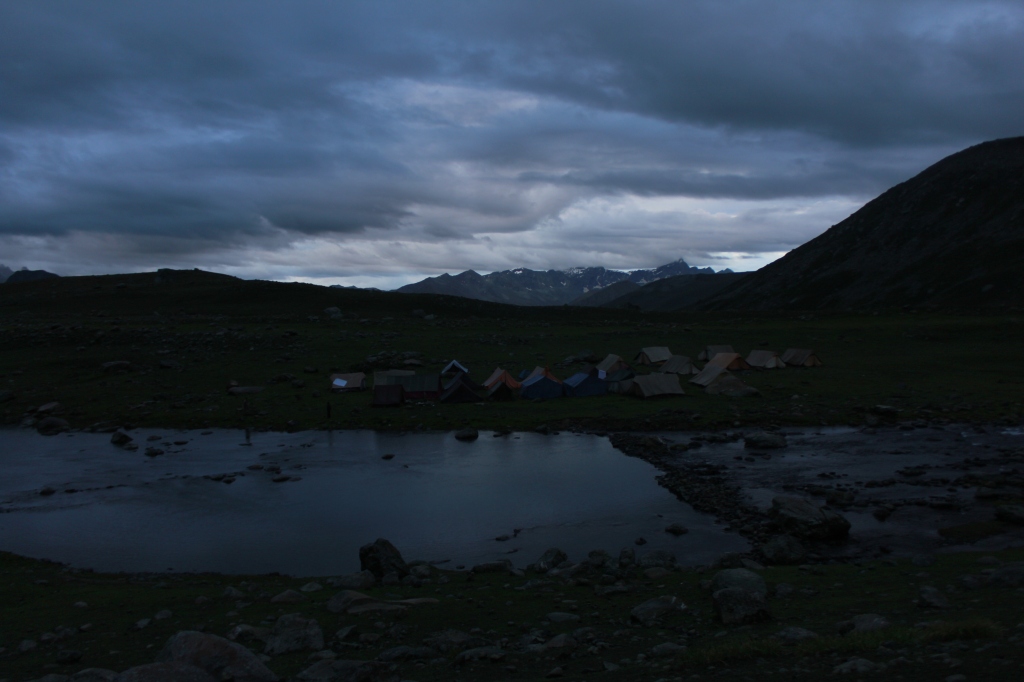
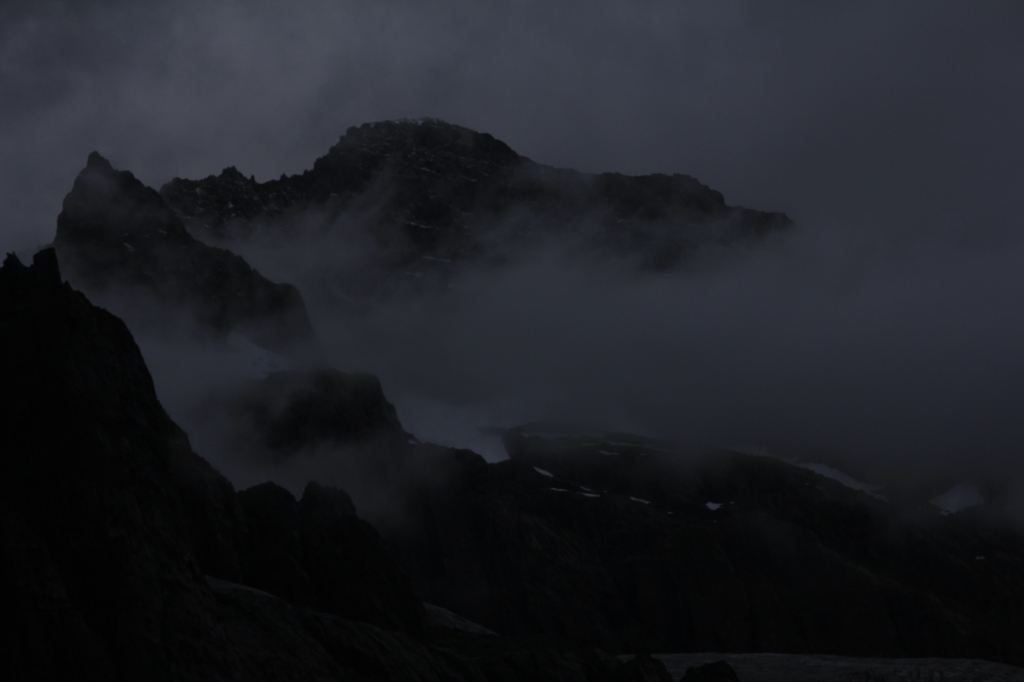
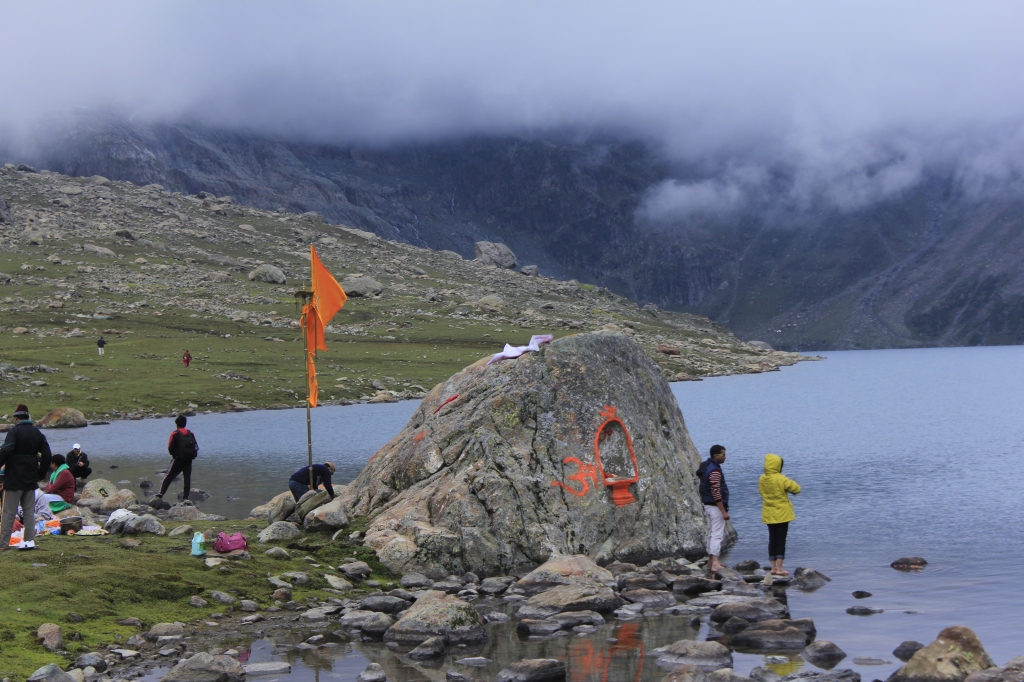
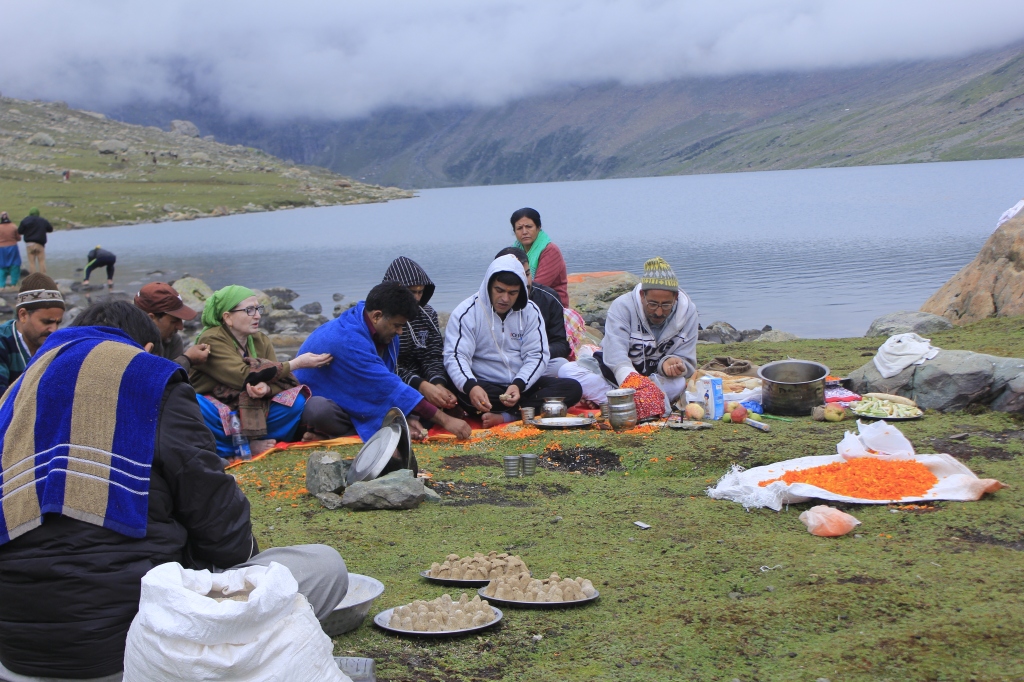

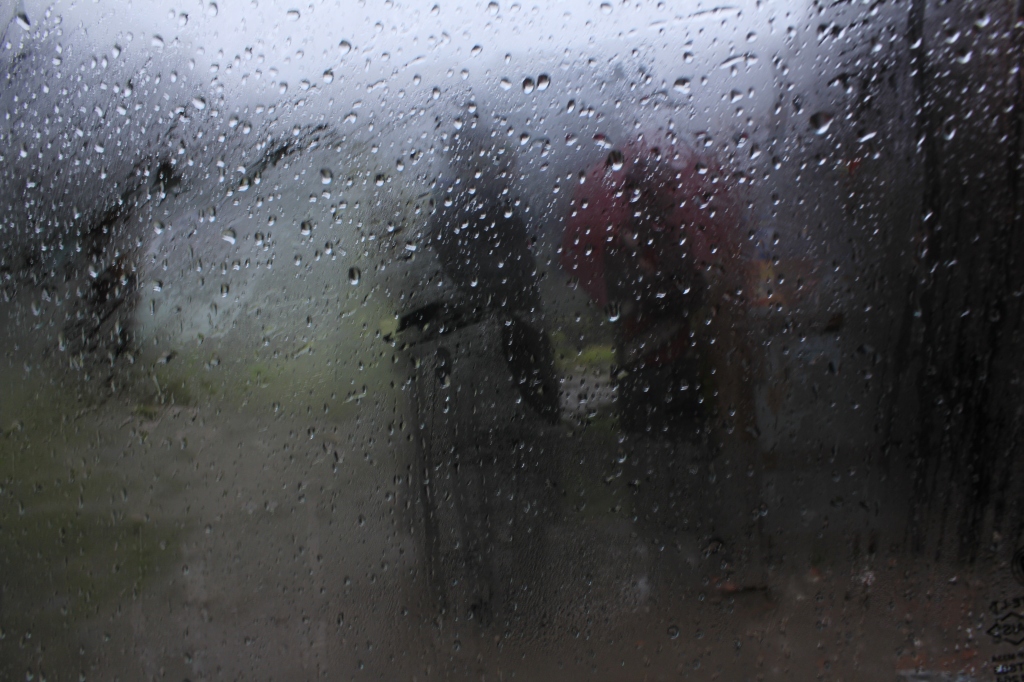
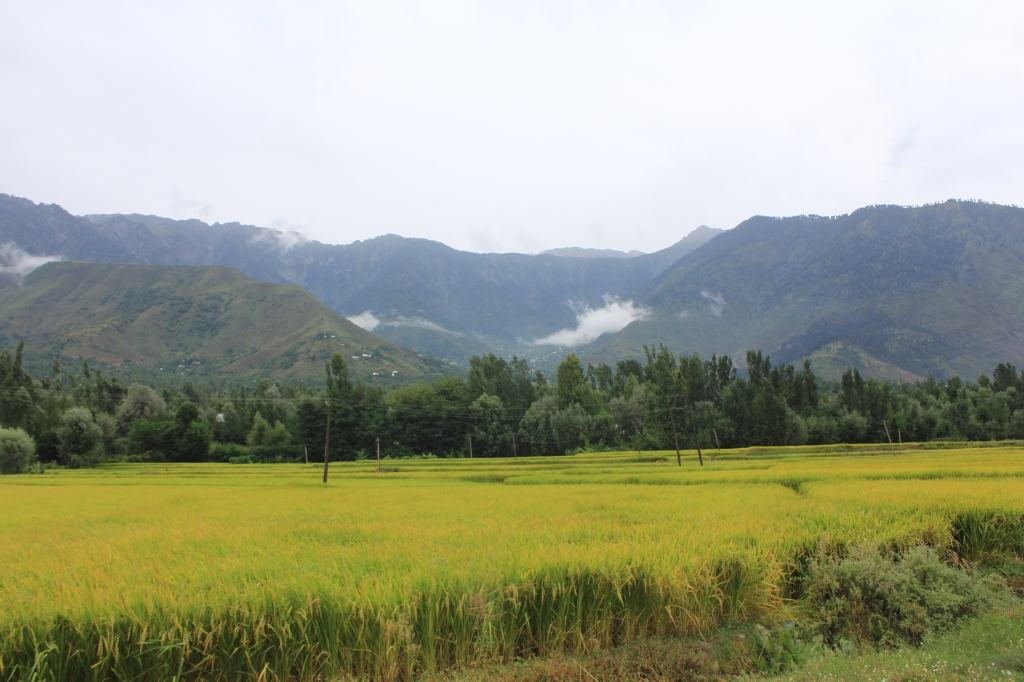
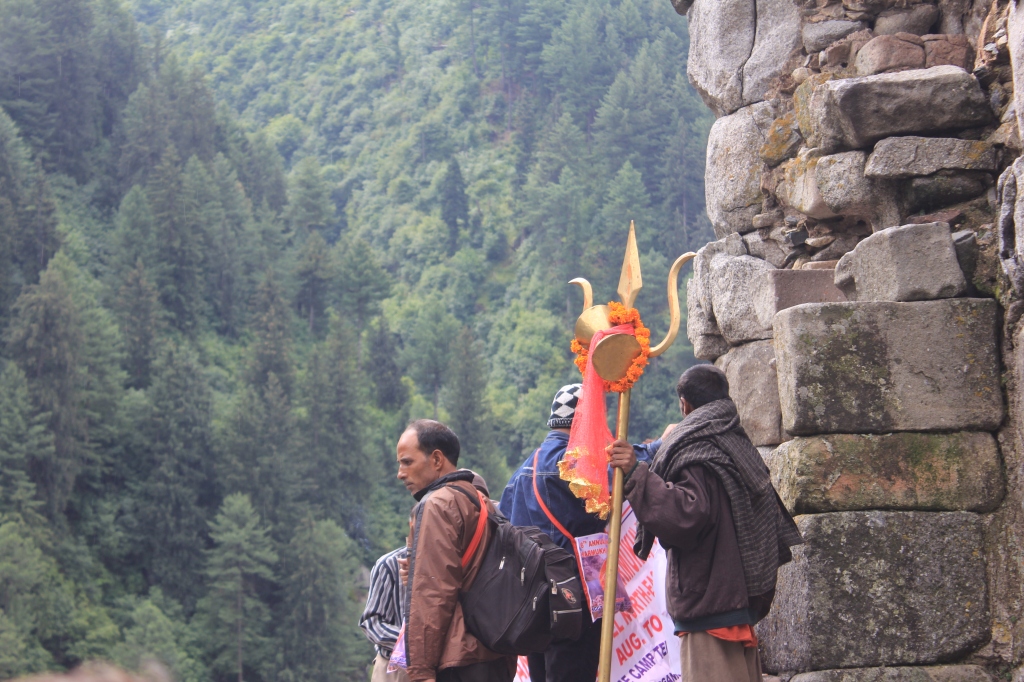

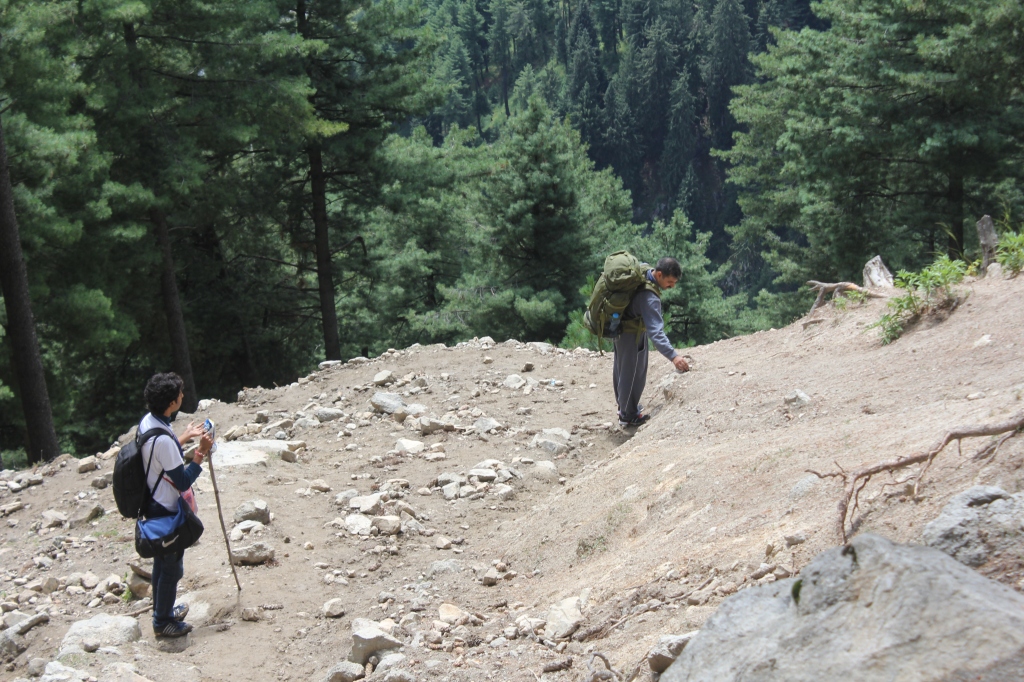
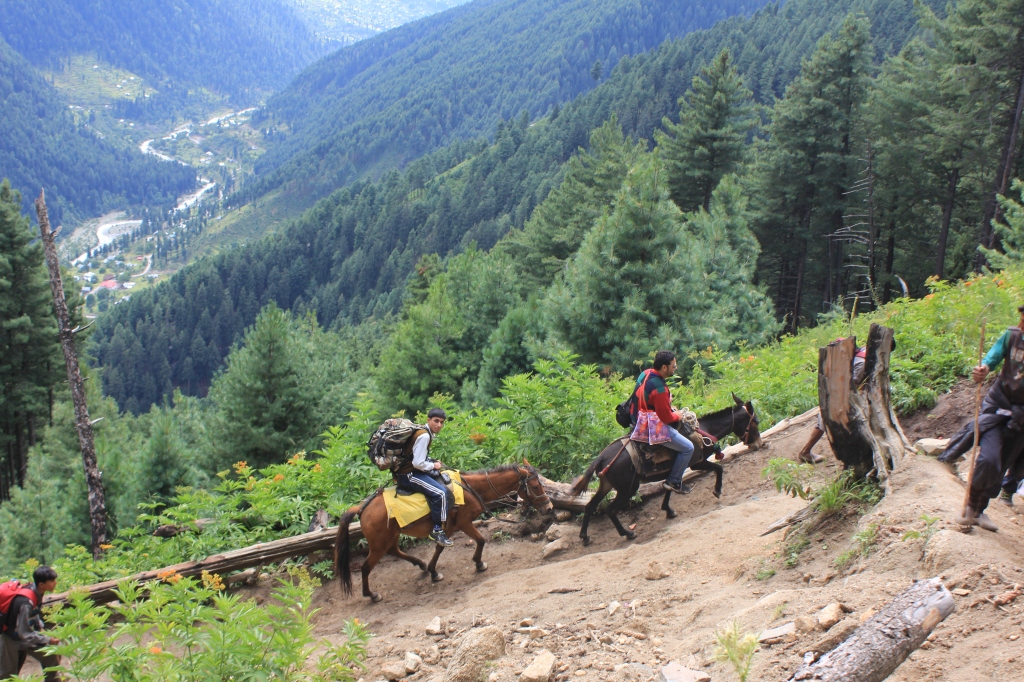
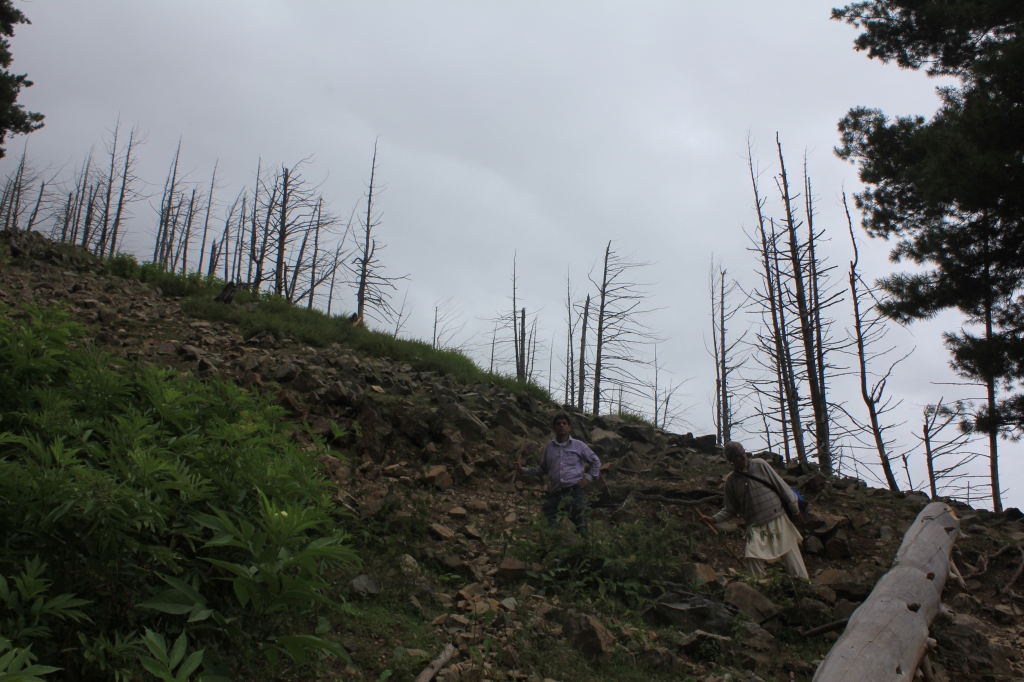

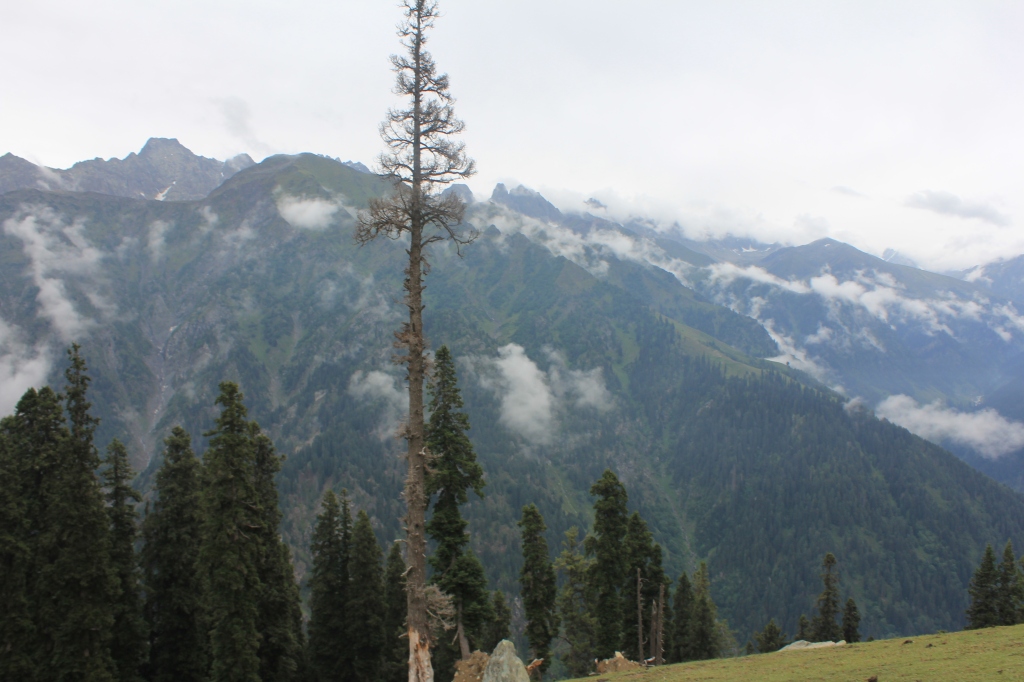
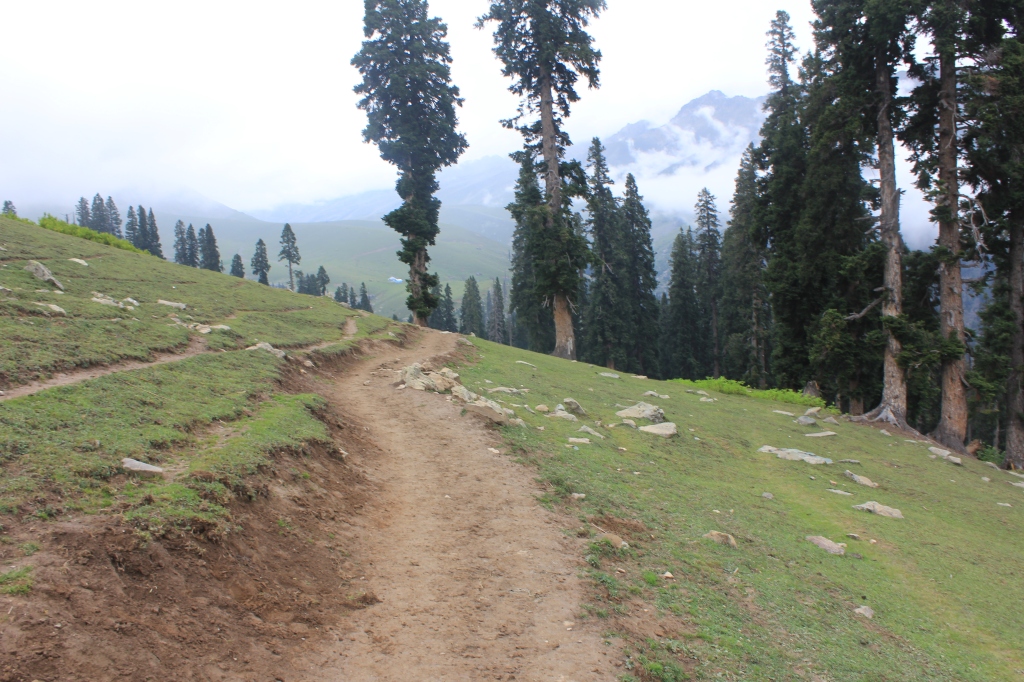
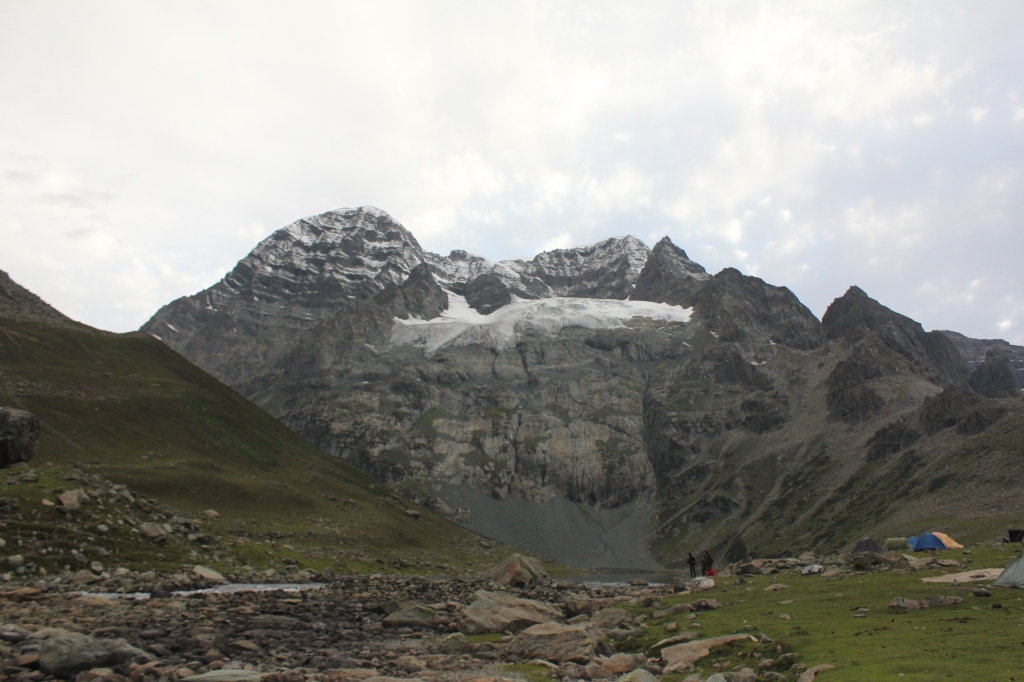

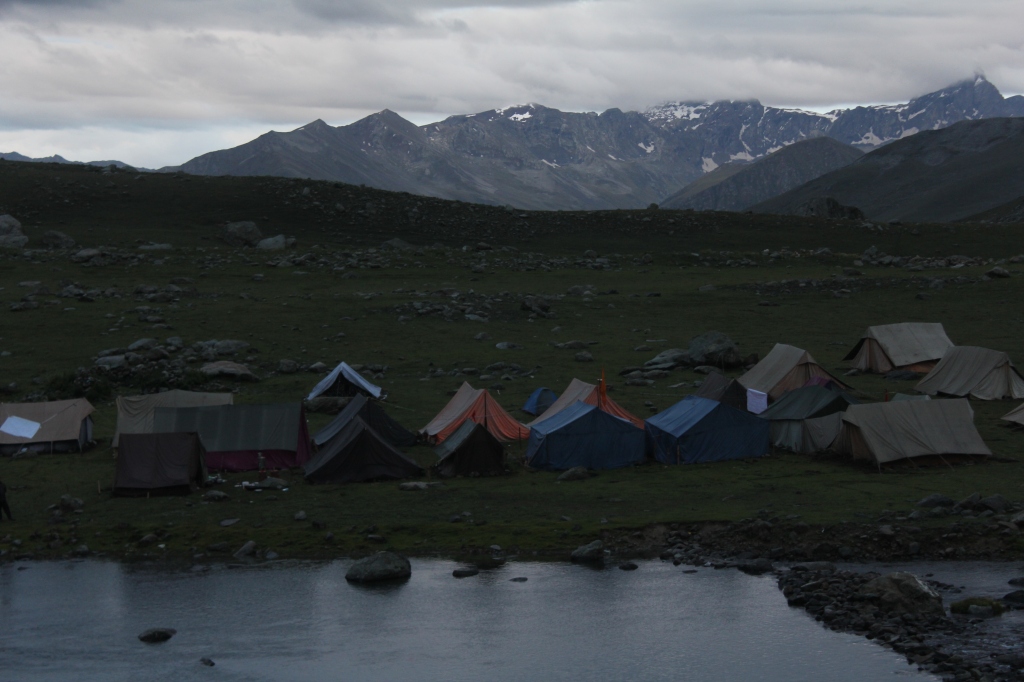
















































![Validate my RSS feed [Valid RSS]](https://kashmirblogs.wordpress.com/valid-rss.png)
really lieke the photography
ReplyDelete